SEOUL - north | SEOUL - south
Day Trips from Seoul | Busan | Best Collections
🥁 Festivals ( Seoul • Busan )

5-9 Days Trip Itinerary for First Timers to Seoul, Korea
KoreaToDo has put together a step-to-step detailed trip itinerary for first timers (or any busy travellers with little time for planning) to Seoul , Korea .
It offers ONE central page of information for all your key travel needs to Seoul . They include, where to stay , important mobile apps to use, how to get from Incheon International Airport to your hotel in Myeongdong (the most popular and central place to stay in Seoul ), day-by-day itinerary with detailed transport/walking guides on getting from one attraction to another, recommended tours, shops and restaurants .
The itinerary covers 8 out of 9 Korea's Top 100 Must-Visit Places in Korea (2023-2024) in Seoul (e.g. N Seoul Tower , Gyeongbokgung Palace , Hongdae ), as released by Korean Tourism Organization . It also covers previous attraction winners like Myeongdong .
Itinerary Highlights

🎖 Present/Past Top 100 Must-Visit Destinations in Korea
Before Departure
1. Recommended Activities, Tours & Tickets to pre-purchase before trip (optional)

N Seoul Tower Observatory Ticket
enjoy breathtaking views

Namsan Cable Car Round Trip Ticket (weekdays only & min. 2 pax)
beautiful scenery of Seoul

4G SIM Card (KR Airport Pick Up) - KT OLLEH (3/5/10/20/30 days options)
data, calls & texts/24 hrs pick up

4G Pocket WiFi (KR Airport Pick Up) - SK TELECOM (Unlimited Data)
max 3 devices / 24 hrs pick up
2. Recommended Hotel Location: anywhere near Myeongdong Station , preferably on the same side of the road as ' Nine Tree Hotel Myeongdong ' (i.e. 2 mins walk to airport limousine bus drop off/pick up bus stop , near exit 8 of Myeongdong Station )

★★★ | 8.5 Review Rating

★★★★ | 8.8 Review Rating

★★★★ | 8.6 Review Rating

★★★ | 8.4 Review Rating

★★★ | 8.8 Review Rating

★★★★ | 8.7 Review Rating
3. Download Mobile Apps
a) Korea Subway Info App - Metroid HD (/ KakaoMap/Naver Map )
b) Location/Walking Direction Map - KakaoMap or Naver Map
more travel tips ....
Day 1: Arrived Seoul / Check in / Namsan Seoul Tower / Myeongdong
At Incheon Airport - Arrival Hall (public area after collecting luggage)
Pick up pre-purchased WIFI Router & SIM Card at Incheon Airport (where applicable).
Recommend to purchase T-money Card at any convenience store at the arrival hall of Terminal 1 (T1) or Terminal 2 (T2). Card deposit is ₩4,000. Suggest to top up at least ₩20,000 to ₩30,000 as the airport limousine fare is ₩17,000.
( Th e card ca n be used on airport limousine bus to city, bus, taxi, subway and convenience stores. Top up at any downtown convenience stores or subway stations. More details ... )
💡If you can't get the card at the convenience store, you can walk a bit further to the subway station to purchase the card. Alternatively, you can get it at most convenience stores when you arrived in Myeongdong. Different stores carry different designs and you can pick your favourite too !

Take Airport Limousine Bus from Incheon Airport (T1/T2) to City (i.e. Myeongdong Station Bus Stop )
Bus #: 6015
Interval: 2-6 departures per hour
Duration: 80 mins
Fare: ₩17,000 (discount may apply when used with T-money Card)
No reservation required. Just join the queue and it is free seating on board.

Departing from T1 to Myeongdong Station :
First bus 05:40 | Last Bus 23:00
Walk outside of arrival hall (1F) at Gate 5, look for Bus #6015 to Myeongdong at bus platform 5B.

Departing from T2 to Myeongdong Station :
First bus 05:20 | Last Bus 22:40
Go to Basement 1 for platform No. 28
Tab the T-money Card on boarding.
alternatively, bus ticket can be purchased at counters/machines (recommended) outside arrival hall (T1, 1F), bus waiting area (T2, B1) or by cash to driver.

Refer to Incheon International Airport official website on the latest bus schedule and updates.
Alternative ways to get to Myeongdong from Incheon International Airport :
a) book your Private Airport Transfer by Car OR
b) take the non-stop AREX Airport Railroad express train from Incheon International Airport direct to Seoul Station (Terminal 1: 43 mins / Terminal 2: 51 mins, ₩11,000) and transfer to subway for Myeongdong Station (line 4, 3 mins, 2 stops, ₩1,400). Luggage carrying up/down the stairs might be required. There are taxi stands outside Seoul Station too.
Check into accommodation booked after alighting from Airport Limousine Bus at Myeongdong Station Bus Stop.

N Seoul Tower 남산서울타워

👉 How to get to N Seoul Tower
From N Seoul Tower, take the Shuttle Bus No. 01B to the last stop (i.e. Namsan Yejang Bus Transfer Parking Lot). 13 mins bus ride. From there, walk towards Myeongdong Station , 4 mins.
💡Myeongdong's main shopping area is right at Myeongdong Station's exit 5-8.

Food & Drinks

Street Food

Day 2: Seoul Plaza / Cheonggyecheon Stream / Gwanghwamun Square / Gyeongbokgung Palace / Tosokchon Samgyetang / Bukchon Hanok Village / Insadong
Depart 9:00 or earlier [ in time for the 10:00 changing of guard ceremony at palace]
Using KakaoMap or Naver Map , take an easy leisure walk from your accommodation to Seoul Plaza (15 mins) , located right next to City Hall Station (line 1, exit 5) and facing The Plaza Seoul (hotel). The very popular Lotte Department Store (main branch) and the established Lotte Hotel Seoul that every taxi drivers know even in English are located nearby too.
Seoul Plaza 서울광장

Walk along the straight road, Sejong-daero at the side of Seoul Plaza (passing by City Hall Station , line 1, exit 4/5) towards Gyeongbokgung Palace (20 mins) , bypassing Cheonggyecheon Stream and Gwanghwamun Square along the way . This is a nice, spacious and modern area in Seoul .

Cheonggyecheon Stream 청계천

Gwanghwamun Square 광화문광장

Gyeongbokgung Palace 경복궁
To arrive before 10:00 for the Changing of the Royal Guard Ceremony (20 mins) , followed by the optional Free English Guided Tour at 11:00 (1-1.5 hrs) . No reservation required.
The next Changing of the Royal Guard Ceremony is at 14:00.
For those who wish 'conserve' energy, you can take a taxi direct from Myeongdong to Gyeongbokgung Palace (20 mins, ₩7,200) or subway to Gyeongbokgung Station with 1 transfer (15 mins, ₩1,400). Use subway mobile app Metroid HD or KakaoMetro for the lines and transfer station.

Hanbok Experience (Hanboknam Gyeongbokgung Store)
incl. basic hairstyling & inner skirt

Hanbok Rental (& Photoshoot) Experience by Hanbok That Day
3 mins walk fr. Gyeongbokgung
Walk from Gyeongbokgung Palace to the popular Tosokchon Samgyetang (Ginseng Chicken Soup) Restaurant. 10 mins .
Tosokchon Samgyetang (Ginseng Chicken Soup) 토속촌 삼계탕 @Seochon Village

Seochon (Sejong) Village 서촌마을

Walk back to Gyeongbokgung Station (line 3).
Take the subway from Gyeongbokgung Station to the next stop, Anguk Station (line 3, exit 2). Walk to Bukchon Hanok Village ( 10 mins) .
Bukchon Hanok Village 북촌한옥마을

Walk from Bukchon Hanok Village back towards Anguk Station to Insadong . 3 mins walk from exit 6.
Insadong 인사동

Dinner at one of the quaint restaurants at Insadong .
After dinner, walk back to Anguk Station (line 3). Take the subway back to Myeongdong Station (line 4, 1 line transfer, 10 mins).
Alternatively, at any point along Insadong , you can take a taxi back to Myeongdong (11 mins, ₩5 ,600).
Day 3: Day Trip from Seoul
1. Recommended Day Tours from Seoul

DMZ 3rd Invasion Tunnel & Korea Traditional Boat Voyage Day Tour
river flowing out of North Korea

Everland Day Tour (Admission, Tour Guide & Round Trip Transfer)
Eng./Mandarin speaking guide

Nami Island, Petite France, Italian Village & The Morning Calm Day Tour

Nami Island, Alpaca World & Samaksan Mountain Lake Cable Car Day Tour
longest cable car in Korea!
2. or Pick a Day Trip from Seoul under 3 hours

Day 4: Gwangjang Market / Hongdae / Ikeongdong Hanok Village
Gwangjang Market 광장시장속박물관
Take the subway from Myeongdong Station to Euljiro 4-ga Station (line 2/5, 1 line transfer, 11 mins, exit 4). 5 mins walk to Gwangjang Market .

Take the subway from Euljiro 4-ga Station to Hongik Univ. Station (line 2, 14 mins journey, exit 9).

Hongdae / Kakao Friends Hongdae Flagship Store / Line Friends Hongdae Flagship Store

Seoul Personal Color Group Consulting Experience Using Self-Tester
Hongdae/Garosu-gil Branch

Nail Art & Hairstyling Experience at OLRANG, Hongdae
onsite English translation

Seoul Personal Color & Make-up Analysis in Hongdae
with English speaking expert

Nanta Show Seoul @Myeongdong / Hongdae
Korea's longest running show
Walk back to Hongik Univ. Station. Take the subway to Jongno 3-ga Station (line 1/3/5, 1 line transfer, 23 mins, exit 4/6).

Ikseondong Hanok Village
After visiting the hanok village, take the subway from Jongno 3-ga Station back to Myeongdong Station (line 4, 1 line transfer, 8 mins).
Day 5... : Self-explore based on your interest

Korean Folk Village, Suwon Hwaseong & Suwon Nammun Market Day Tour
Authentic cultural experience

Incheon Day Tour (Ganghwa Luge, Rail Bike, Wolmido & Fairy Tale Village)
enjoy the best of Incheon!

Alpaca World, Nami Island & The Garden of Morning Calm Day Tour
walk with adorable alpacas

Legoland Korea & Samaksan Mountain Lake Cable Car Day Tour
longest 3.61km cable car ride!
2. or Pick a Day Trip from Seoul under 3 hours

3. or Explore more on North of Han River / South of Han River (i.e. Gangnam)

Day before departure: last minute shopping / chilling out
Last Minute Shopping
or Chill Out...

Buy your favourite Korean goodies back home!

Duty free shops, food court & supermarket.

Largest underground mall in Seoul with over 600 shops (GOTO MALL).

For those who must see Gangnam & its underground shopping mall.

cluster of shopping malls that open past midnight.

12 floors of shopping, dining & entertainment experience.

Hairstyling at Franck Provost in Myeongdong
premium hair salon

O HUI & WHOO SPA Myeongdong
25% off skin care kits

Art De La Peau Massage Shop in Myeongdong
K-beauty by the professionals
Last Day: Getting to Airport...
Take the Airport Limousine Bus, #6015 (or #6001) from the same drop off stop ( Myeongdong Station ) to Incheon Airport (T1/T2)
Bus stop location: near exit 8 of Myeongdong Station and right in front of KB Bank.
Duration: 80 mins (T1) / 90 mins (T2)
Fare: ₩17,000 (discount may apply when used with T-money Card)
First bus 04:35 | Last Bus 20:15 ( refer to the information at bus stop for the latest schedule )

Alternatively, you can book on a private car transfer to Airport as well .

Private Transfer: Incheon Airport (ICN) to Seoul (1-3 or more pax/car)
Myeongdong, Hongdae, etc

🎵 SEASONAL HOT PICKS 🎶 Handpicked Experiences from Seoul

2024 KOREA Waterbomb
3 Aug - 31 Aug 2024
live performances, water shows, fun & food!

2024 Songdo Beer Festival (Foreigner VIP Ticket, 1-4 pax)
23 - 31 Aug 2024
draft beer 5,000cc & food

The 61st Suwon Hwaseong Cultural Festival Day Tour
4 - 6 Oct 2024
UNESCO World Cultural Heritage event
♔ KoreaToDo recommends Klook.com , Asia leading in-destination service provider.
Other KoreaToDo Collection that you may like:
Seoul & busan travel itinerary, cherry blossoms & spring flowers travel itinerary in seoul, autumn foliage itinerary, still looking explore koreatodo handpicked collection of:, seoul - north of han river, seoul - south of han river.
- Skip to primary navigation
- Skip to main content
- Skip to primary sidebar

South Korea Itinerary: 2 Weeks Or Less (From A Local)
Last Updated: Jul 20, 2024 by Max · This post may contain affiliate links · 52 Comments
This two weeks in South Korea itinerary is based on my three years living in Korea, discovering the country's beautiful places and the people who live there. Since I left, I've also been back to visit several times, most recently last year.
So while I could write a South Korea 10 day itinerary or 14 day itinerary centered only on Seoul and Busan , maybe even Jeju , I'm not going to do that. This country deserves so much more attention to detail, and so do you. So this guide actually covers five different cities in Korea to check out on your visit.
Even though there's no such thing as the perfect itinerary for Korea, the country is small enough that two weeks is enough time to adjust to the culture change and still have time to enjoy most everything. But if you only have 10 days in Korea (or even fewer), then I highly suggest you start in Seoul for 4 days, at least.
Starting with 4 days in Seoul, you can see the basics for tourists & build out your itinerary from there, as I mention in the South Korea sample itinerary section. So let's get to planning!
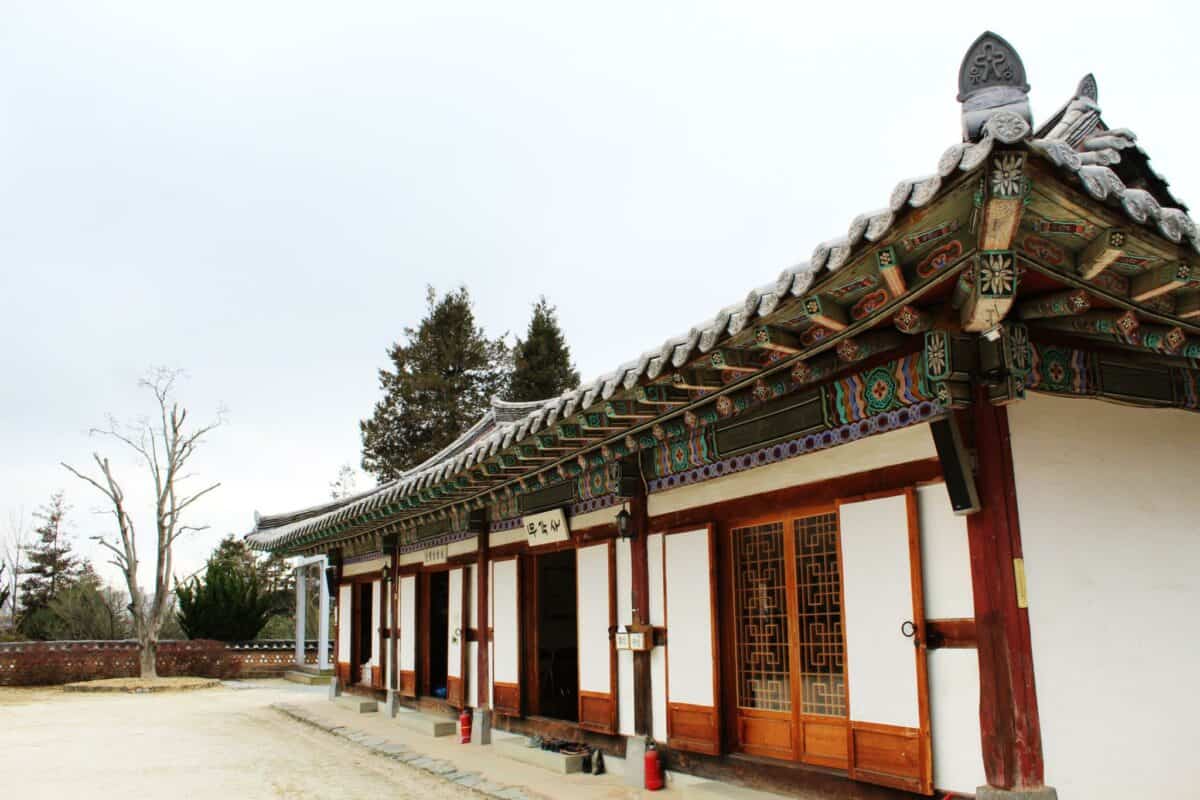
- ✈️ Basics of Travel in South Korea
- 🙋 South Korea Travel FAQ
- 🗺️ South Korea Trip Itinerary Examples
- 🚕 Where To Visit In South Korea
- 🧳 Budget For A Trip To South Korea
- 🚈 South Korea Travel Tips
- ☺️ Basic Phrases For Your Trip to Korea
✈️ Basics of Travel in South Korea
Visa: Most travelers will need a K-ETA ( Korean Electronic Travel Authorization ), applied for at least 72 hours before departure. If you needed a visa before, you'll need a K-ETA now. Note that from April 1, 2023, to December 31, 2024, passport holders from 22 countries, including the US, UK, Canada, and several EU nations, can visit visa-free – no K-ETA required!
Currency: South Korean won ( KRW or ₩ )
Arrival in Korea: all international flights arrive at Incheon Airport (ICN), one of the best-rated airports in the world. It usually takes about 1 hour to get through security & pick up checked bags.
Getting Around: Korea has an extensive & reliable public transport system. A refillable T-Money card is your ticket to buses and trains across the country; you can buy and refill yout TMoney card at any subways station or convenience store in Korea.
Internet & SIM Cards: Rent a Wi-Fi egg or purchase a prepaid Korean SIM card at the airport, available for up to one month of connection.
Travel Insurance: always recommended, though some credit card companies offers limited coverage when booking.

🙋 South Korea Travel FAQ
I've included a FAQ section including the most common questions I've been asked in the last 3 years, by friends, family, and complete strangers. Hopefully this answers the majority of your questions!
What should I wear in Korea during winter, spring, summer, and fall?
From mid-November to mid-March, it could definitely snow and you'll want a heavy winter jacket and some heat-retaining leggings for under your pants. From mid-March through early May & early October through mid-November, there's still the possibility of chilly nights. So bring pants and a jacket for the nights, and t-shirts for the days.
Pack more conservative tops to take to Korea, as showing your collarbones can be cause for staring, especially in smaller towns. Respect is very important in Korea. Early May through early October is a toss-up between extremely hot and warm with a breeze, but it will definitely be humid.
What do I need to bring to Korea?
Other than the basics you'd always pack for yourself, remember to bring higher-cut shirts, as Koreans are more conservative in their dress than most westerners. Women should be sure to bring tampons and pads, as there was recently an issue with domestic pads & tampons are extremely hard to come by.
Many readers have told me that purchasing a sim card and attraction pass (like the Discover Seoul Pass ) helped them make the most of shorter visits, and those are simple things to arrange in advance and take to Korea.

Do I need a visa to visit Korea?
While there are still 112 countries whose citizens don't need to apply for visas before visiting Korea for 30 to 90 days, as of September 2021, ALL visitors from those approved countries still need to have an approved K-ETA before arriving in Korea, even if you just have a long layover in Incheon .
K-ETA stands for Korea-Electronic Travel Authorization. You can check if yours is one of those visa-exempt, countries and how long your visa lasts for, here . Common countries: USA (up to 90 days), Canada (up to 6 months), South Africa (up to 30 days), Malaysia (up to 90 days), Singapore (up to 90 days).
But remember, even if you don't need to apply for a visa, from now on you do still need to apply for a K-ETA , which is good for two years form the date of approval. If you already need to apply for a visa, you do not need to apply for a K-ETA .
How expensive is it to travel Korea?
This depends on your style of travel, but a mid-range budget for a solo traveler spending 10 days in South Korea would be about $65USD per day. If you're willing to stay in cheap hostels, stick to more free activities in Seoul, and eat local foods, then you could get it down to maybe $40USD per day.
So I'd say that traveling Korea is really quite affordable, though you can always upgrade your trip, and the longer you stay the cheaper it will be per dium.

How can I get to & around Korea?
Since South Korea is on a peninsula off the southern coast of China, you have to fly in. Note that if you have a layover at Gimpo Airport for some reason, the airport closes each night from 12am-4:30am. Theoretically you could also arrive by boat from China or Japan, but that truly sounds awful to me.
As for actually getting around Korea, that's a much easier question. Getting between the cities is best done by bus, or train if it's a very popular route. Some people prefer to fly between Seoul, Busan, and Jeju, though you can also go via bus & boat.
Within the major cities, buses, taxis, and the Busan & Seoul metro are all reliable and safe forms of transport (just make sure your taxi uses their meter). In smaller areas, buses and the occasional taxi are the way to go; taxis are very affordable in South Korea.
How many days in South Korea is enough?
I think two weeks in Korea is ideal for getting a taste of the coast, the nature, and the overall urban lifestyle. But if you have less time on you vacation in South Korea, you can get a condensed version of all of that with just 5 days in Seoul (yes, even the beaches!).
If you have fewer than 5 days, I really do think it will be tough to get a good sense of the culture and people and cuisine.
Which apps should I download before visiting Korea?
My most used apps in Korea have been: Kakao Talk (like Korean WhatsApp), Naver Maps (Google Maps is trash here, so you'll want to download this local equivalent), Google Translate (the speaking function is a lifesaver; just remember town download Korean offline), and a Seoul Subway App (mine is in Korean, but there are plenty out there in English).

🗺️ South Korea Trip Itinerary Examples
The whole idea of this guide it to give you an idea of where to visit in Korea and how long you want to spend there. Tourism is on the rise in Korea, and having a unique experience is becoming more important than ever for visitors.
So in true DIY spirit, here are some route examples for a 2 weeks in Korea itinerary or less, for each of the following lengths.
South Korea Itinerary 14 Days
- Seoul (Days 1-4)
- Jeju (Days 5-7)
- Busan (Days 8-9)
- Suncheon area (Days 10-12)
- Jeonju (Days 13-14)
See below for more information on each city.
South Korea Itinerary 10 Days
- Suncheon area (Days 8-10)
Click to check current hotel prices in Korea.
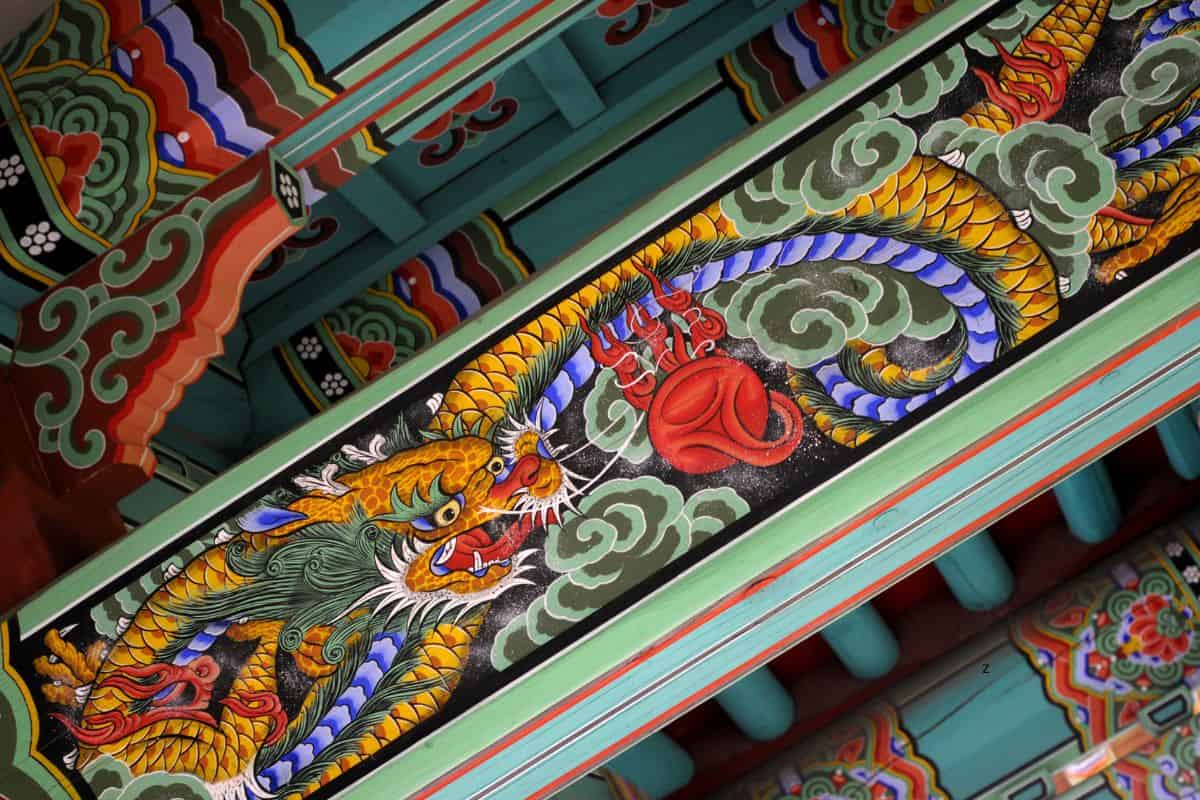
South Korea Itinerary 7 Days
- Suncheon area (Days 5-7)
South Korea Itinerary 5 Days
- Seoul (Days 1-3)
- Jeonju (Days 4-5)
South Korea Itinerary 3 Days
Seoul. Just spend 2 days exploring all you can in Seoul, and then spend your middle day doing a day trip from the city, maybe to nearby Chuncheon.

🚕 Where To Visit In South Korea
Seoul : the capitol city, the darling of K-Pop fans, and one of the most populous cities in the world. Seoul is not for the faint of heart, but for those who can handle serious crowds, Seoul can be most anything you want it to be.
Almost everyone planning South Korea vacations will end up either starting or ending here, and they're lucky to do so. It's a great base from which to travel the rest of the country, or even spend a week or so experiencing all of the different neighborhoods & their vibes.
Seoul is great for culture, food, nightlife, and just about anything else you want in a trip to Korea, except for peace and quiet.
Busan : possibly best known outside of Korea for the movie Train To Busan , this port city is thought of domestically as the seafood and cinema capitol of the country.
Even though it's incredibly urban in its own right, people also think of it as more laid back, with beach vibes and ocean views for days. Busan is perfect for seafood lovers looking to spend time at the beach and indulge in some cinematic activity.
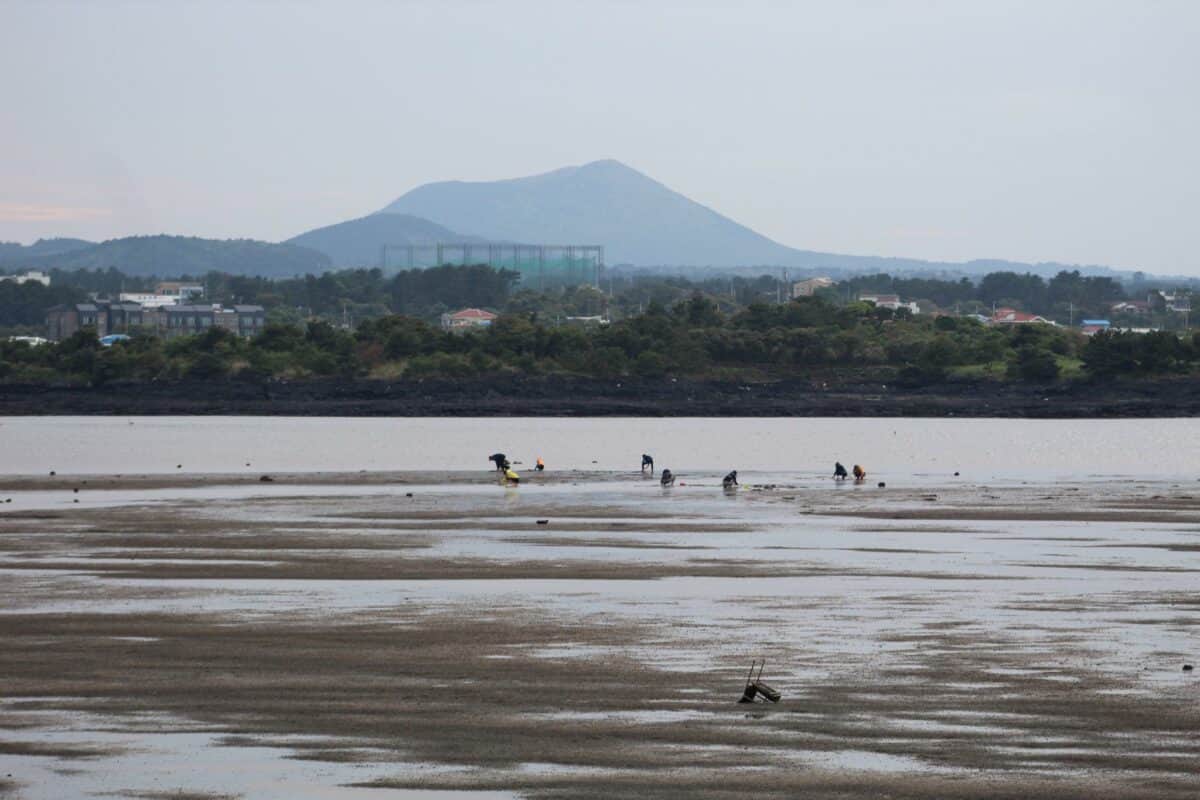
Jeju : the Hawaii of Korea, as it's often called, Jeju is known for its beaches and seafood and nature. The entire island comes from a single volcanic explosion thousands of years ago, and you can actually see the peak of that volcano from any point on the island.
Jeju is ideal for those looking to get a taste of Korean culture and cuisine, but with much more tranquility and beach vibes than you'd find anywhere on the mainland.
Jeonju : this lesser-known Korean destination is where Koreans go when they want to experience the "olden times" of Korea. Jeonju is one of the oldest cities in Korea , famous for its spicy bibimbap, traditional hanok houses, and many unique festivals.
Come to Jeonju if you want to soak in a whole city happily dedicated to maintaining traditional Korean culture, one bowl of spicy bibimbap at a time.
Suncheon : truly off-the-beaten path, Suncheon is a gorgeous region full of flowers, agriculture, and stunning natural landscapes. Domestic tourists most often visit in the springtime to see the green tea fields & cherry blossoms, but Suncheon is also a great base from which to explore a few nearby cities.
Visit Suncheon if you want to see a less-touristed side of Korea's natural beauty, with an emphasis on local agriculture.
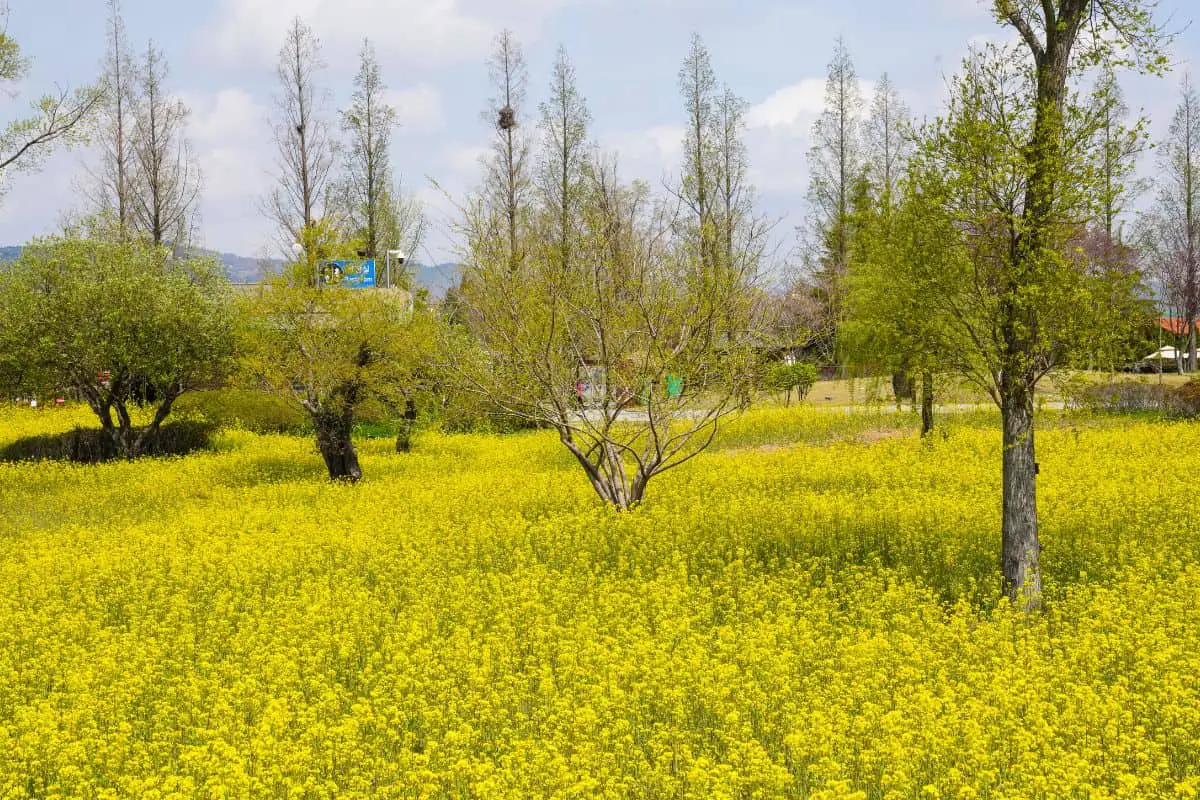
✈ Seoul
What seoul is known for.
Seoul has everything you could want in a destination. It's one of the biggest cities in the world, and despite being the center of international cultures in Korea, it's still very much culturally Korean. It's for this reason that I think Seoul is the perfect place to put at the beginning of your Korea itinerary.
You'll probably arrive here, anyway, since Incheon Airport is one of Asia's biggest transport hubs. Many people even plan a Seoul itinerary for 10 days for a taste of the Korean dishes which have become so popular around the world.
Others come for the world-class shopping and cosmetics selection, or even for medical tourism . But I think that the most worthy reasons to write Seoul into your Korean itinerary are the natural beauty , historic temples , and little cultural quirks which all add up to an ambiance that's purely Korean.
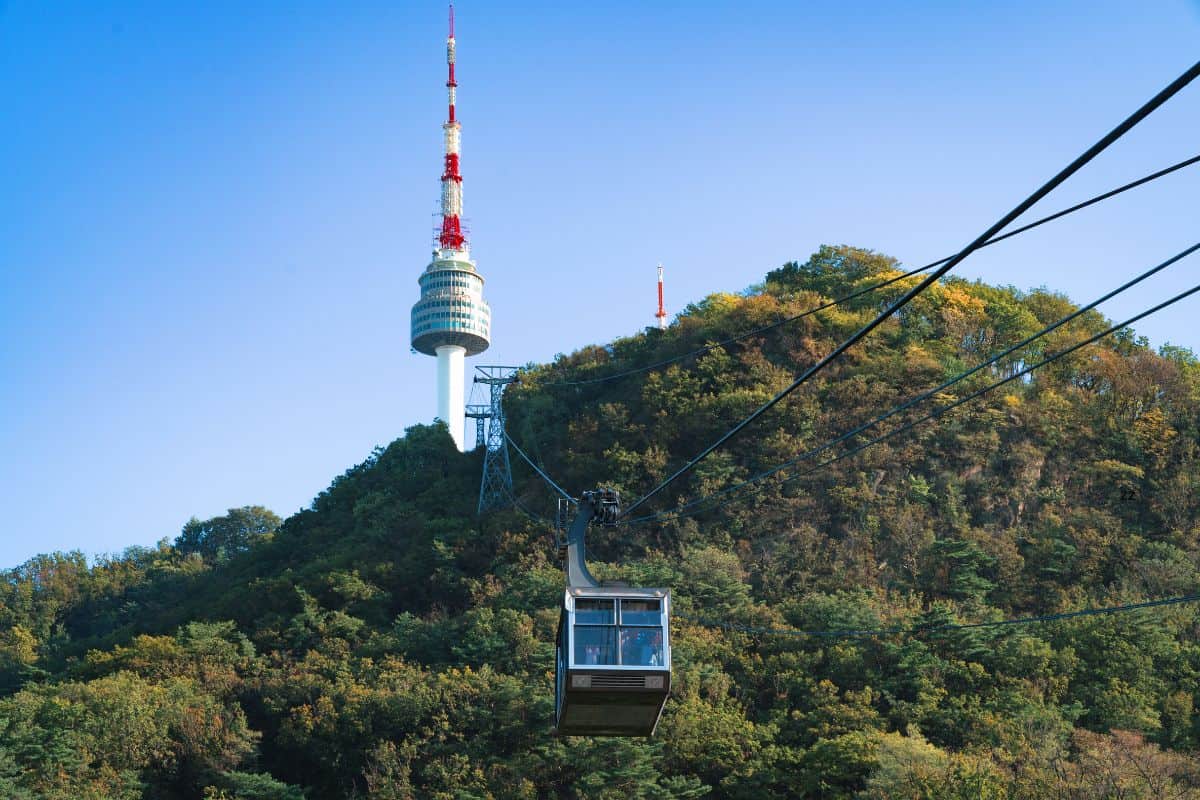
What To See In Seoul
I won't list out everything you can do or see in Seoul, since that could fill a whole book (and probably has). But here are 7 things you can't miss seeing in Seoul, since 7 is a lucky number here.
Go to the spa. The spa, or sauna, is an important pastime for Koreans of all ages, and it's most common to go on the weekends as a family. A Korean sauna, however, is divided by gender and has you completely naked.
While you could visit a sauna in most any city in Korea, Seoul is going to have the most options for different types of baths and treatments, and it's going to be the most foreigner-friendly. I highly recommend Itaewon Land Spa.
Walk to Namsan Tower. This landmark is rather characteristic of Itaewon and the whole HBC area, located in central Seoul and considered the international hub of the city. Namsan Tower is set in a very green park, and right around the tower itself is a temple and a gate with “love locks” attached to it, but the Tower is best known for having an amazing view of the city.
It’s a bit of a walk from Itaewon’s downtown area, but there’s a bus if you get tired, and a cable car to take you to the top. I think the view is just as good from the cafe right before the top floor, so I wouldn't recommend paying for the cable car.
Visit Gyungbokgung , one of the 5 royal palaces in Seoul. Of the 5, Gyeongbokgung is the most accessible by public transportation, located just outside of a subway stop. I also think it’s the most beautiful, but I’ve had the chance to visit in both fall and spring.
Those are the seasons when the colors of the palace grounds come to life; in summer and winter it's a bit less colorful. The grounds of Gyeongbongung are large, but you could spend anywhere from twenty minutes to two hours exploring each corner of the grounds.
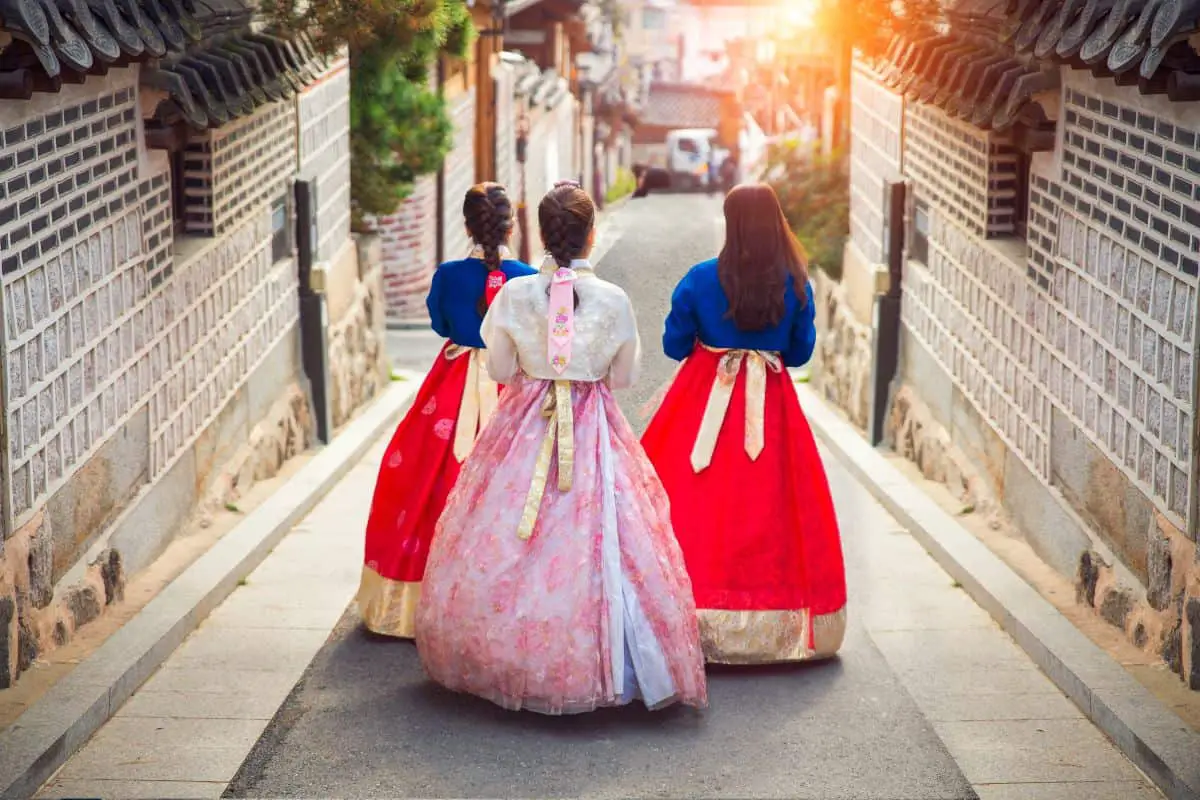
Sing in a Noraebang . Literally translated as "song room," noraebang are the quintessential nighttime activity of the Korean public. In English we usually know then by the Japanese name karaoke .
From middle school onward, on any given night you can find a noraebang full of Korean students hanging out with friends, or adults drinking with co-workers or family. In Seoul it's easy to find either coin noraebang, in which you pay per song, or regular noraebang, in which you rent a room by the hour & buy Korean snacks .
Hike Bukhansan. Just a half hour north of Seoul is one of Korea’s many national parks. Hiking is a national pastime, so every day of the week you’ll see groups of older people geared up for a trip up Bukhansan. On the weekends there are visitors of all ages, usually ending their hikes with a picnic and drinks at whichever peak they decide to stop on.
Explore Gana Art Center . Gana is known across Seoul for its beautiful think pieces. Amidst all the traditional Korean food and aesthetics of northern Seoul, walking around Gana Art Center gives you a different perspective on the current events in Korea.
Luckily, you don’t have to speak any Korean to get the gist of real art, though it may be helpful to know some about Korean culture in order to get the full impact. The permanent exhibits are free, but you may have to pay to enter the special exhibits.
Wander Bukchon Hanok Village . A hanok is a traditional Korean house, a small building with a thatched roofs and beautiful painted walls & roof. In the spring and fall the foliage creates a stunning backdrop for photos, so that’s the perfect time to enjoy the village in traditional garb.
Note that Bukchon Hanok Village doesn’t actually close, but between the hours of 11pm and 5am there’s nothing going on.
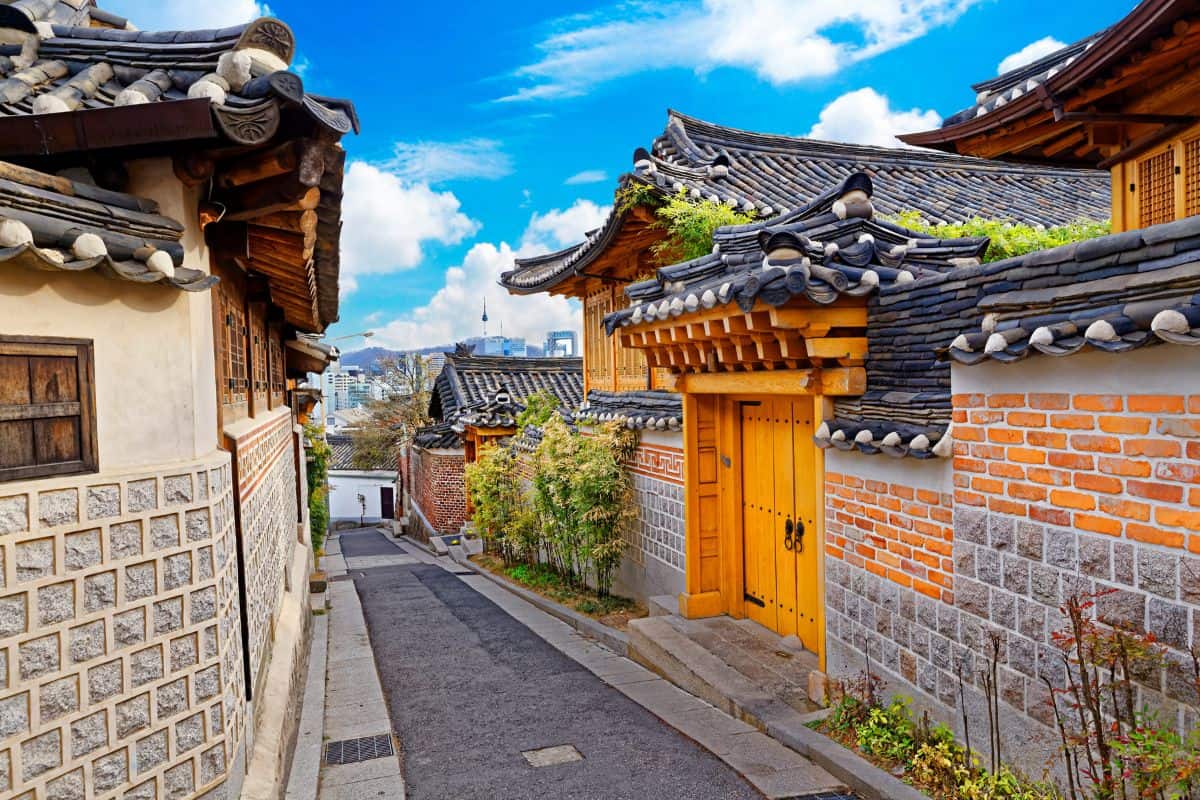
What To Eat In Seoul
In case you only have a few days in Seoul, this is where you'll get to sample a range of uniquely Korean foods. And hopefully also visit some of Seoul's dozens of delicious chocolate shops . So while you're in Seoul, be sure to look out for these top 5 Korean foods, particular to the country, but not to any specific region.
Japchae (잡채). A noodle dish containing thinly chopped vegetables, sweet potato starch noodles, and sometimes a little bit of meat. It’s great served warm as a main dish, but it’s often served as a side dish, tossed in sesame oil and soy sauce.
Hoddeok (호떡). This cinnamon sugar-filled fried rice cake is my absolute favorite treat. It's one of the few traditional sweets in Korea, but it's most easily found in the colder months, from October to April (I'd recommend you get it in the neighborhood of Insadong).
Samgyupsal (삼겹살). This is Korean pork belly, the most popular meat of choice in the country. It's just one of many types of meat you can have for Korean barbecue , which is basically a particularly communal style of cooking meat in the center of a table. If this is your only trip to Korea, you need to try this before you go!
Mul Nangmyeon (물냉면) . Translated as "water cold noodles," this chilled dish is made with buckwheat flour, and served with sliced cucumber & half a boiled egg on top. The dish is made with a meat broth and most commonly eaten right after barbecue, preferably with meat hot off the grill.
Samgyetang (삼계탕) . Quite possibly my favorite Korean meal, samgyetang is basically Korean chicken soup. The main part of the dish, thought be very healthy, is a whole chicken stuffed with rice and a bit of ginseng, jujubes, & ginko beans. You eat these with the side dishes and the meat & soup, after you dip it in the salt they serve on the side.
Buy a PDF Version of This Post!
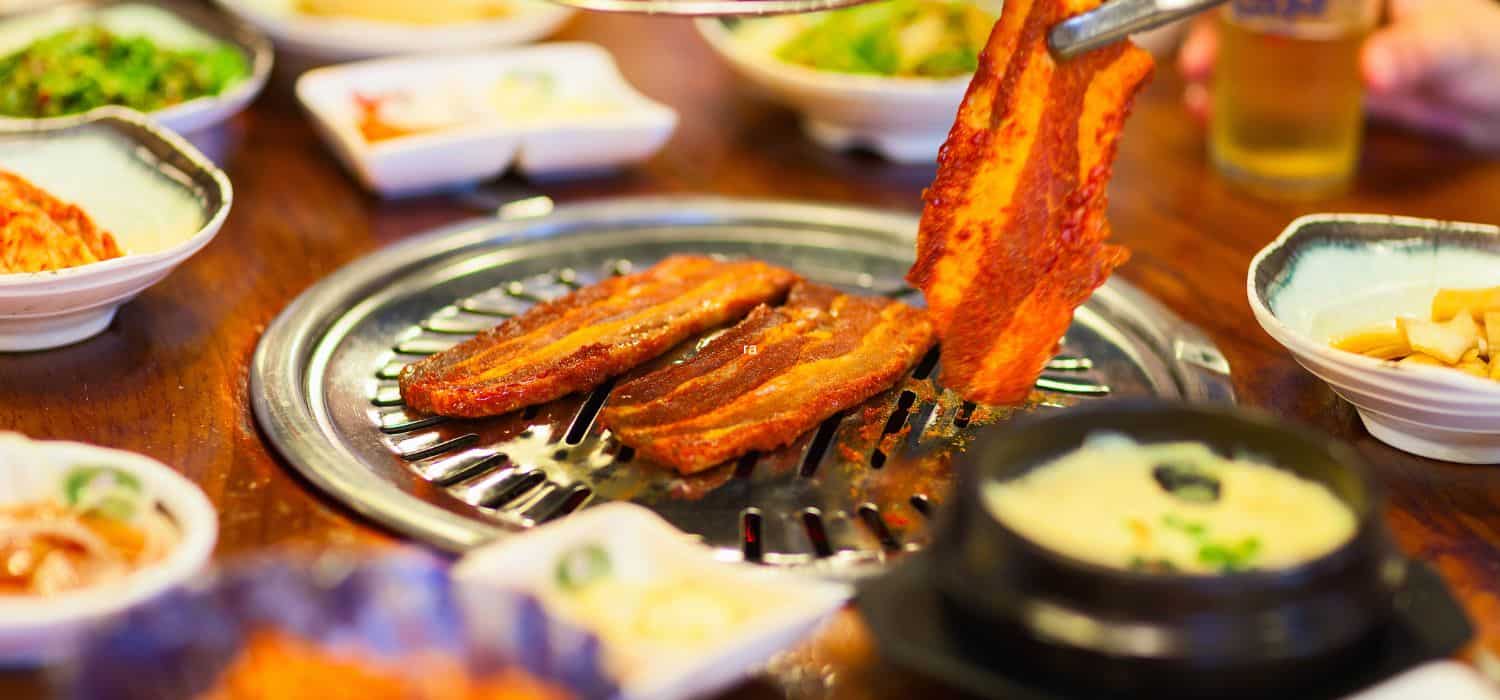
Where To Stay In Seoul
There are hundreds of lovely guesthouses and hotels throughout Seoul, and there are equally as many crappy ones. Most egregiously, some of them are both expensive and crappy. So here's my selection for the three best places to stay in Seoul . Each spot is centrally located, high quality, and foreigner-friendly. These are listed in order from least expensive to most expensive.
Budget: G Guesthouse
There's a reason this is always the recommended guesthouse in Itaewon. Not only does it always come in under budget, but the facilities are clean, the staff is helpful but unobtrusive, and the beds are comfortable. They even provide towels, a luxury not as common as you'd like.
Although you can't control what other guests do or what time they come back, my friends & I have always found that G provides a quieter environment for late-night entries than the other hostels in the area. Pro tip: the kebab place just down the street has the best kebabs in Seoul hands-down.
Mid-Range: Solaria Nishitetsu Seoul
Voted a traveler’s favorite in 2017, Solaria Nishitetsu is part of a Japanese hotel chain which combines comfort & convenience at a reasonable price. Guests love the huge rooms and large, firm beds, a real find in the heart of Myeongdong.
Because of its popular with business travelers, there are lots of harder-to-find amenities for digital nomads and other business people on-the-go, like work spaces and less-expensive single rooms.
Luxury: Signiel Seoul
Located in the top floors of Lotte Tower, Signiel is truly in a league of its own. Its sauna, gym, and pool facilities are world-class, with a staff and suites to match. Each room has a spa-style bathroom and a cozy place to rest your head, in addition to their unparalleled views of the city.
There are even free drinks and appetizers for guests in the hotel lounge, at all times of day. The Signiel is truly the place to get pampered, perfect for those looking for a honeymoon hotel .
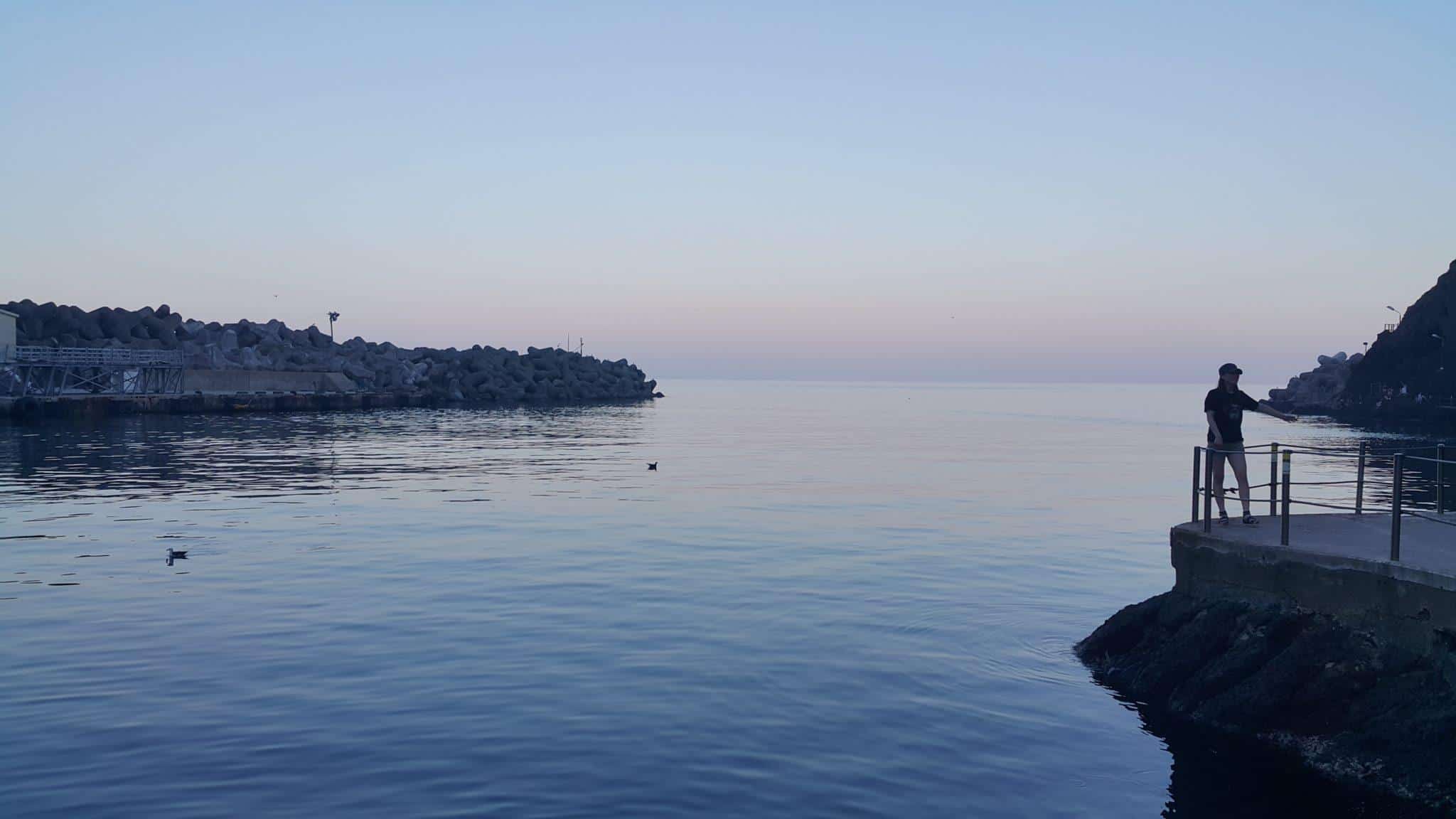
✈ Busan
What busan is known for.
Even though it's the second-largest city in Korea, and a metropolis in its own right, Busan doesn't get a lot of love from tourists. Most people think of it as a smaller version of Seoul, with a lot of the same cultural attractions but just harder to get to.
They have a point; Busan and Seoul are both massive port cities with cosmopolitan & hipster neighborhoods, alike. However, I'd argue that the feel of a place and its unique natural landscape plays a big role in your experience there.
In that regard, Seoul and Busan are more comparable to LA and San Diego. Seoul has glitz & glamour and a little of everything, while Busan has a more relaxed ocean-side vibe with lots of fresh seafood & quick flights to neighboring Japan .
As one of Korea's most popular weekend destinations, 3 days in Busan is plenty to see the city's highlights and get a feel for the ancient seaside temples , the beaches , and the local importance of cinema .
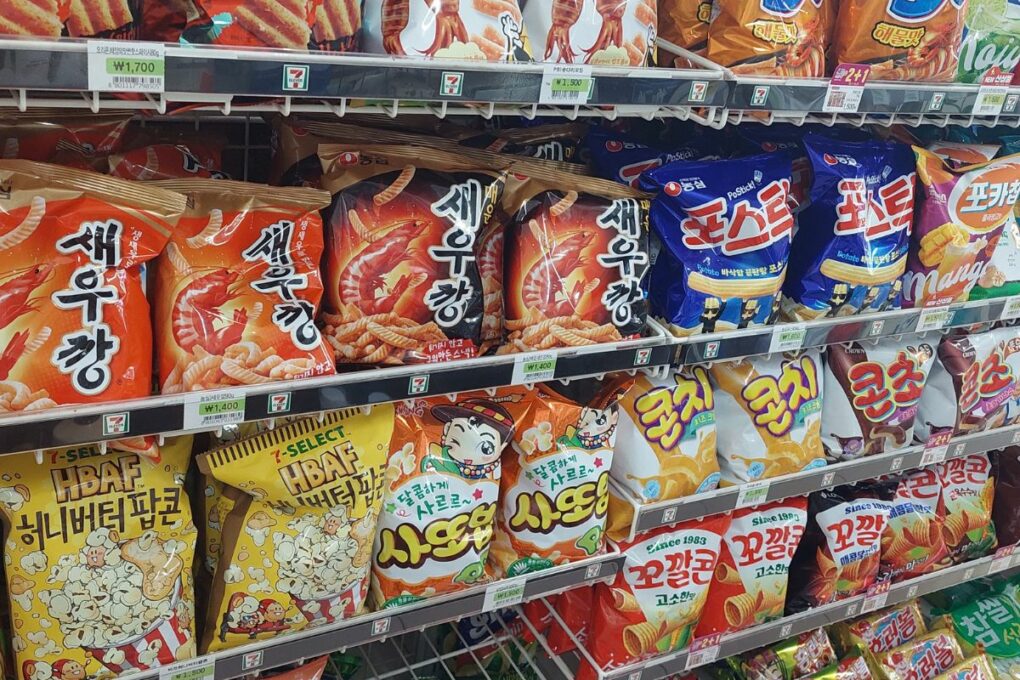
What To See In Busan
I won't write up everything you can do or see in Busan, since that'd take hours for you to pour through. So here are 7 things you can't miss seeing or doing in Busan (since 7 is a lucky number).
Lounge on Haeundae Beach. Undoubtedly the most popular beach in Korea, Haeundae is always packed in the summer, especially with families. But public schools don’t actually let out until mid-July, so if you time your visit well, you may just have a patch of sand to yourself. Note that beaches are only open for swimming from June to August.
Skip down Cheongsapo Daritdol Skywalk. This unique attraction has become quite popular over the last few years. It's basically a see-through bridge out over the ocean, perfect for showing off the ocean without you having to get in it. There’s also an observatory in the area, one of just 3 in the city. The skywalk is located a short walk from Haeundae Beach.
Explore Busan Cinema Center. As home to the Busan International Film Festival, which is held each fall, this is a great introduction to the film culture for which Busan is famous within Korea. The center has 3 buildings containing theatres of varying sizes, each offering daily tours & lectures. There are restaurants and cafes on-site.
Have a photoshoot in Gamcheon Culture Village. Probably the most popular photo backdrop in all of Busan, "GMC" has become known as a sort of Korean Cinque Terre . The calming blue houses look right out over the ocean, and are actually still people’s homes.
You'll see many an older person drying their laundry on their balconies and chatting on rooftops on sunny afternoons, so remember to stay respectful of the residents.
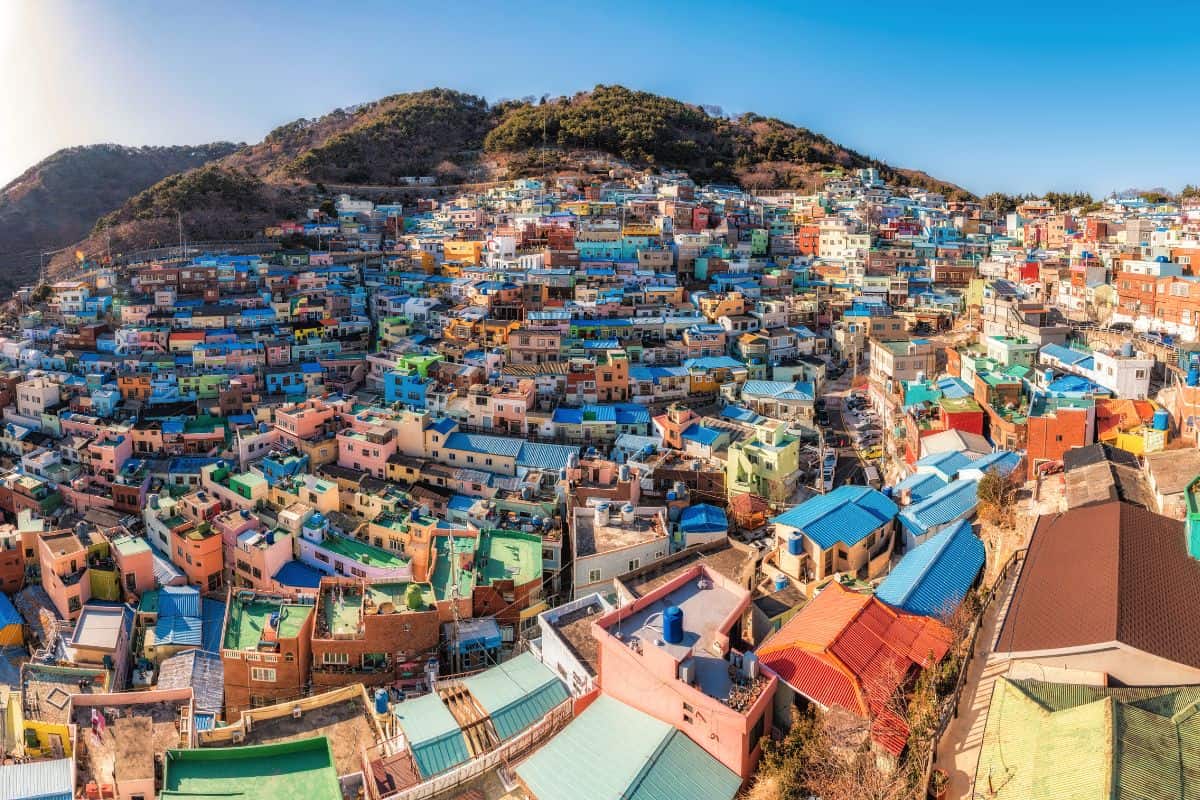
Have a meal at Jagalchi Market. This is the largest open-air seafood market in Korea, often compared to Noryangjin Market in Seoul. It’s actually become so famous that each October the city holds the Jagalchi Cultural Tourism Festival.
But even if you can’t make it on time for the festival, seafood lovers will have a blast walking through the market and exploring the diverse sea life found in Busan’s waters. The entire first floor is a wet market, while restaurants and the like are found on floors 2-7.
Wander the grounds of Taejongdae. Of all the things to do in Busan , this is by far one of my favorites. Equal parts resort & park, Taejongdae has become famous for its beautiful views and colorful tourist train.
The area's temples are accessible within an hour's walk, but even right around the entrance you can hike down and reach the shore in less than 10 minutes. Basically no matter where you go on the grounds, you’ll find a great view. Note that while it’s free to enter the grounds, this is likely to take up half of your day since it's so far south of downtown.
Watch sunrise at Haedong Yonggungsa Temple. In case you don't have the time to spare for a visit to Taejongdae, this is your alternative glimpse at Korea's ancient seaside temples. Most of Korea's temples are in the mountains, offering tranquility and spectacular views of life below.
But Haedong offers a broader view of the life going on below, focusing on the deep blue sea rather than countryside valleys. Some people come here to watch the sunrise, which is a spectacular choice considering it's on the east coast & opens at 5am!
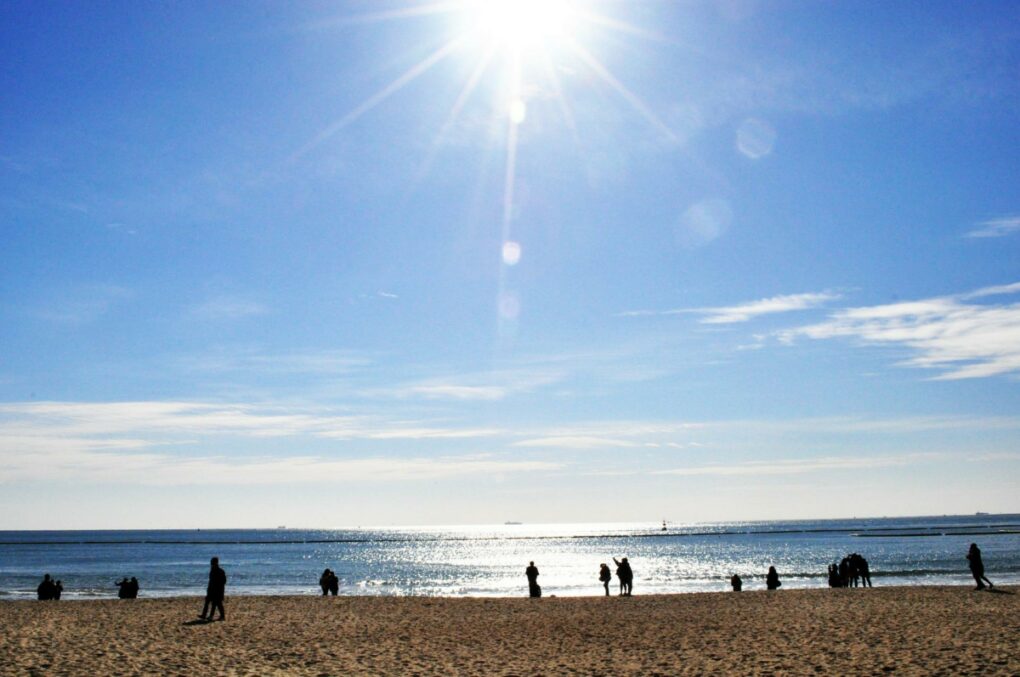
What To Eat In Busan
Busan is not a city for vegetarians or non-adventurous eaters, unless you're looking for chocolate in Busan , that is. The region's most famous foods are definitely of the sea variety, and thus, so are most of these 5 foods you should try in Busan. I have included a couple of land-based options for those who aren't into eau de ocean , however.
Sannakji : likely one of the most famous Korean foods, sannakji is often translated as “live baby octopus.” Cut & served immediately after being pulled from the water, sannakji are squirted with sesame oil & acidic fruit juices, making the tentacles continue to move around for minutes after death.
Haemul Pajeon : this is a seafood pancake, basically, but a Korean version (made with rice flour). They usually include tiny octopus, and are especially popular as a drinking snack, though many people come to Busan’s fish markets to enjoy them with family and friends.
Busan Jokbal : I don’t think I’ve ever met a Korean who didn’t like this dish. The jokbal , or pig’s feet, are cooked in a sweet cinnamon & honey mixture which reminds me of spiral-cut ham on Christmas. They're then served cut-up and ready for eating; the meat is fatty and rich, so don’t knock it ’til you try it.
Dwaeji Gukbap : this is a very hearty pork-based stew, prepared by slowly boiling pork bone into a broth & adding tender little pork bits. It’s served with rice and side dishes; you plop the rice into the stew and then eat it with side dishes of your choosing. It’s popular year-round, but is a must-try in winter.
Mulhoe : hoe literally means raw seafood, while mul means water. Mulhoe is therefore a raw fish soup, served cold & spicy with a variety of noodles and veggies. I'd only recommend it if you're eating somewhere right off the coast, like in Busan's Jagalchi market.
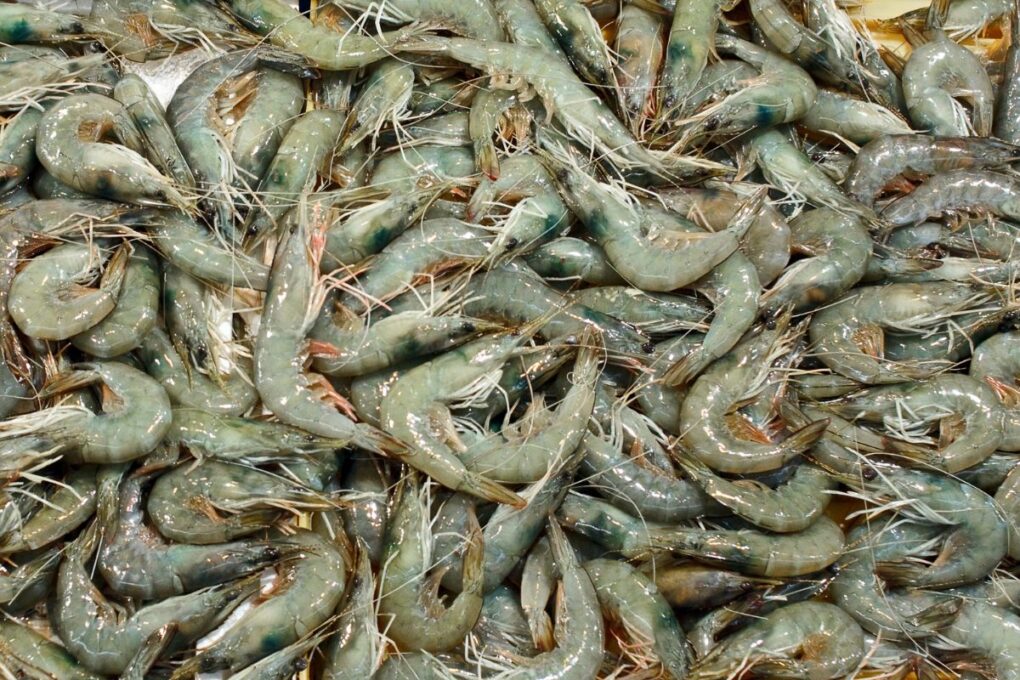
Where To Stay In Busan
Domestically, Busan is just as much of a tourist destination as Seoul is, since most of the people who travel around regularly are actually coming from Seoul. So Busan has hundreds of quality guesthouses, and probably an equal number of not-so-great ones.
So here's my selection for the 3 best places to stay in Busan , because there's no reason to suffer through a crappy, expensive hotel. Each of these spots is centrally located, high quality, and foreigner-friendly. These are listed in order from least expensive to most expensive.
Budget: The Bay Guesthouse
The Bay has become my go-to guesthouse in the warmer months, just 3 minutes from the beach & 2 minutes from the metro. It’s centrally located, the beds are large & comfortable, and the style is as a cross between a capsule hotel and a more typical hostel.
Every morning the manager even cooks breakfast for the guests, and there’s coffee brewed in the dining room.
Mid-Range: Stanford Inn Busan
Stanford Inn is a relatively new addition to Busan's "affordable luxury" lineup. But in the few years since it's opened its doors, guests have been very impressed with the high quality of the rooms & breakfast buffet.
Port-side suites garner the most praise, with guests impressed by the view and the proximity to the metro, just a few blocks in either direction.
Luxury: Lotte Hotel
Though best known internationally for department stores & perishables, domestically Lotte is known for offering a variety of luxury experiences; this includes their chain of hotels. Each suite in Lotte Hotel offers big fluffy beds and a spacious bathroom, as well as a bevy of modern furnishings.
Lotte Hotel is especially popular with families, thanks their reputable spa & restaurant facilities.
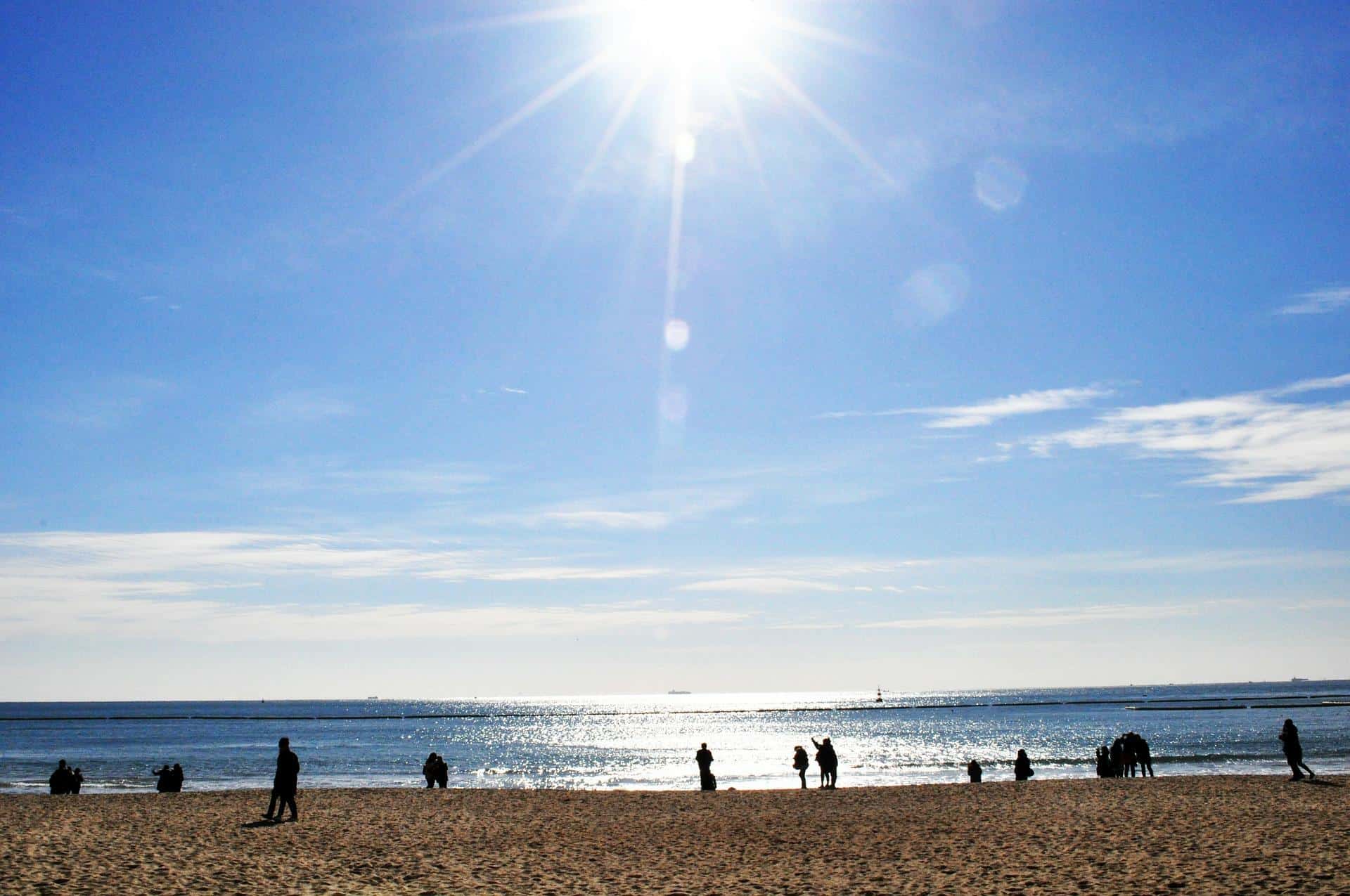
✈ Jeju
What jeju is known for.
A few days after one of my trips to Jeju, a Korean friend told me he was jealous that I went without him, because Jeju is his "stereotype of a beautiful place." Well to be honest, it's mine, too. Jeju is breathtaking in the spring & fall, and somehow a haven from the mainland's overwhelming weather in winter & summer.
The route from Seoul's Gimpo Airport to Jeju is actually the most traveled route in the world . That's how much Koreans love visiting this idyllic little island off their southern coast. But tourists? Not so much. Every time I visit Jeju, mine is one of the very few foreign faces I see.
But Jeju Island has so much to offer, from gorgeous hikes to unique local foods , that there's no reason it shouldn't be on every South Korea travel itinerary. Jeju is the place for you if you love exploring natural beauty , learning about sea life , and relaxing seaside .
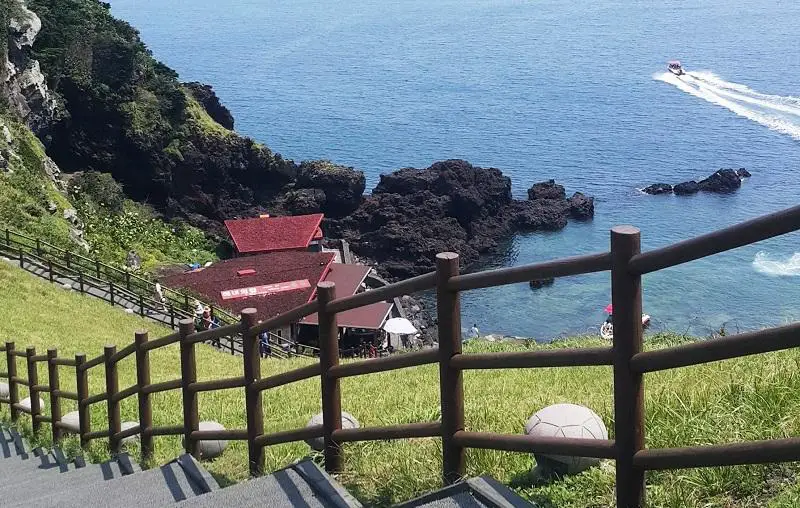
What To See On Jeju
There is such an incredible number of things to do on Jeju, in every season, that you could spend hours researching. But to give you an idea of some of the many Jeju attractions across the island, here are 7 things you should do or see on Jeju Island.
Pose in Love Land (erotic museum). This is often one of the most unexpected sites to find in Korea: a park full of penises & other various erotic sculptures. The park was opened in 2004 by a group of art students from Seoul’s prestigious Hongik University, and since then the park has been a surprising success, where selfies abound. You must be at least 18 to enter the park .
Watch sunrise at the top of Seongsan Ilchulbong. Is this in Korea or the Highlands of Ireland? The immensity of the green and the brightly colored flowers that greet you in the spring could very well distract you from ever climbing to the top of Seongsan.
From the hike to the viewpoint, horseback riding, and boating, you could easily spend half a day here. If you’re lucky, this is also where you’ll catch site of some of Jeju’s famous women divers, though you may see some on the walk over.
Hike around Seopjikoji. Just across from Seongsan Ilchulbong is Seopjikoji, an area famous for being the filming location for several dramas, and just a stunning place in general. The stairs built into & walking trails leading along the cliffs can get a bit crowded on weekends in the summer.
But if you get too hot, there's also a sea side restaurant at the top of the climb. Seopjikoji's most gorgeous scenes are in the spring, when the hills are vibrant green and dotted with bright yellow canola flowers.
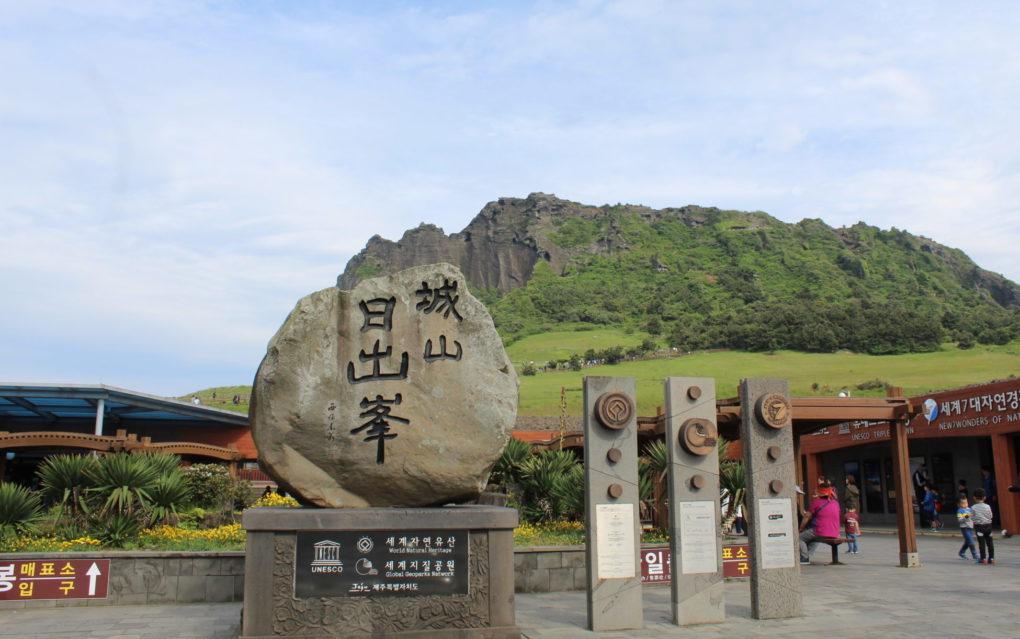
Stare in awe at Jeongbang Waterfall. Jeongbang’s claim to fame is that it's the only waterfall in Asia to fall directly into the ocean. It's honestly a cool sight to see, basically from the parking lot, making it my pick for the best waterfall in Jeju.
There’s even a tiny beach in front of it, just before the vast ocean extending way beyond. The shops just along the parking lot will also be selling souvenirs, oranges, and Jeju chocolates.
Walk the Jusangjeolli Lava Cliffs. Often compared to Giant’s Causeway in Northern Island, Jusangjeolli is another act of nature bestowed upon Jeju by the volcano from which it was forged. Less than 5 minutes from the parking lot, the cliffs are deep grey rectangular formations jutting out into the ocean.
It almost looks as if they were formed by a child slowly stacking blocks. They’re quite the popular photo spot, and certainly worth a stop, though lines for selfies can get long on weekends.
Bathe in Sanbangsan Carbonate Springs. This will be one of the strangest experiences of your life, if you’ve never been to a Korean sauna. Everybody here is separated by gender, and then strips themselves buck naked.
It takes some getting used to, but when you do, it’s glorious. These hot springs are divided by each temperature and healing properties, making for a very soothing way to spend an evening.
Sip on a cup of tea at O’Sulloc Tea Fields & Museum. The museum is tiny, but if you came to the fields for the tea products, then this is your spot. The aforementioned museum is attached to a massive cafe serving up a variety of teas from their farm, plus coffee and desserts.
The entire complex is located next to a cosmetics shop & a second cafe. But the best part for most people will be the tea plantation itself, situated across the street from the museum, and laid out with pictures in mind.
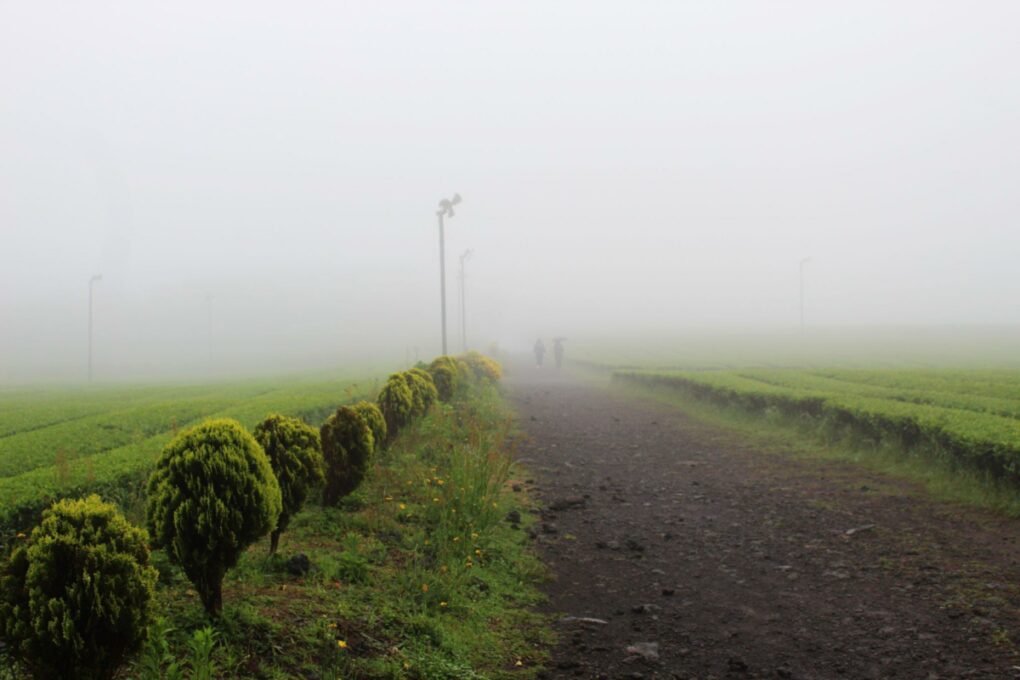
What To Eat In Jeju
Like all other provinces and cities in Korea, Jeju has a few foods it's famous for, but unlike most of those other regions, Jeju is famous for them because they're actually grown there. A few of these products have turned into a whole range of foods, all focused on that one crop. Take a look.
Abalone (Sea Snails). I know the translation doesn't sound very appetizing, but abalone are actually shellfish, more like oysters than snails (but don’t go looking for any pearls). They’re one of the many sea foods caught by the women divers of Jeju, and are caught & served fresh daily. Local favorites are abalone rice porridge and grilled abalone.
Black Pork. This is meat from a specific type of pig raised mainly on Jeju Island , and I find it to be a softer & more flavorful version of the meat found on the mainland. If you’re looking for easy pickings of a variety of black pork restaurants, check out Black Pork Street in Jeju City.
Hallabong (those big oranges grown throughout the island). The season for hallabong is actually winter time, but some of the groves manage to grow oranges year round. So you’ll see these thick-skinned beauties for sale in boxes along the side of the road, and at gift shops in most of the major tourists sites. Keep an eye out specifically for hallabong tea.
Green Tea Anything . Home to the well-known O’Sulloc tea fields, you’ll see green tea-flavored things for sale throughout Jeju. But nowhere is there a higher concentration of tea-flavored items than at the O’Sulloc tea museum, itself, which is profiled above.
Peanut Ice Cream. Depending on where you get it from, the cream flavor can be more or less intense, and the ice crystals can be very strong. But peanuts are actually grown on Udo, an island off the coast of Jeju, making it a truly local food. Though honestly, most people just buy it for the cute pictures.
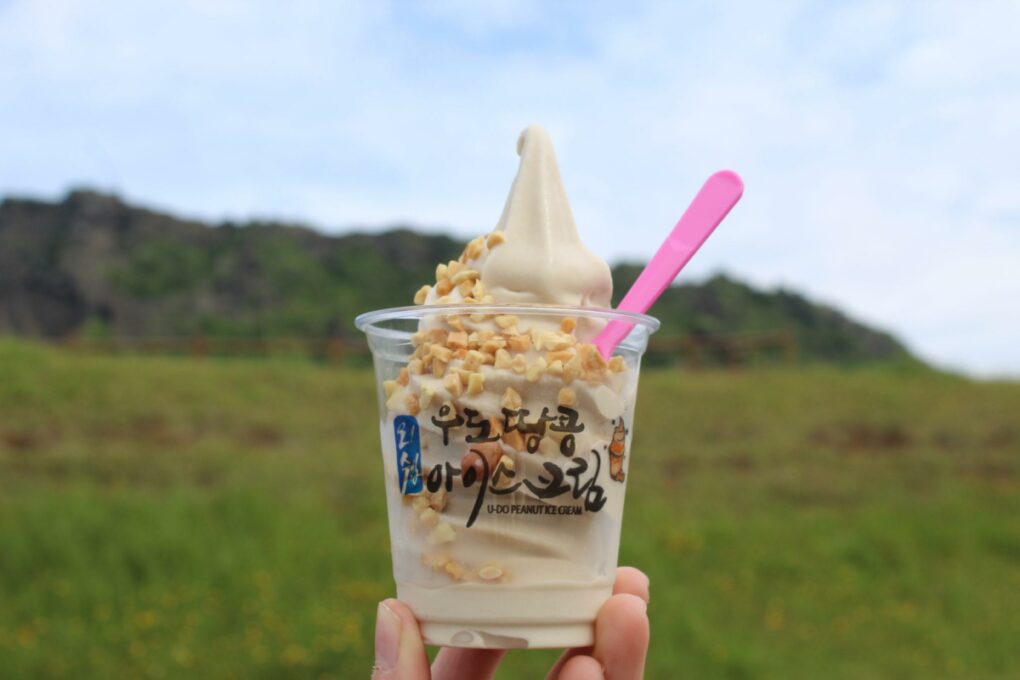
Where To Stay On Jeju
Since so much of the Island's economy depends upon tourism, you'll have your pickings of Jeju accommodation, especially in Jeju City and the southern city of Seogwipo.
But there are some hidden gems, so allow me to shine light on 3 of the best places to stay on Jeju . Each spot is centrally located, high quality, and foreigner-friendly. These are listed in order from least expensive to most expensive.
Budget: Yeha Guesthouse
Seoul is famous for their inexpensive accommodation, but Jeju City really puts up a fight. Yeha is the best choice for backpacking or budget-minded visitors, with a solid 9/10 rating for their dorm beds, and a good connection to island's public transporation.
To top it all off, they’ll happily store your luggage for you if you want to explore a bit before your flight back.
Mid-Range: Color In Jeju
If you’re looking to stay on the eastern coast and want to splurge a bit, Color In is the move. They’ve got immaculate rooms, a small outdoor pool, and the rugged surroundings typical outside of the big cities. Front desk hours are limited, but that’s easily overlooked once you get to the pool.
With just 6 guest rooms in the entire place, odds are good that yours will be poolside.
Luxury: Kensington Hotel Jeju
One of the highest-rated hotels in Jeju, the Kensington contains all the opulence one expects from a 5-star hotel, infinity pool included. If the layers of indoor & outdoor pools isn’t enough, however, consider the superb staff and various on-site restaurants; their breakfast buffet is included in your stay.
Within walking distance of the hotel are a botanical garden and the teddy bear museum.
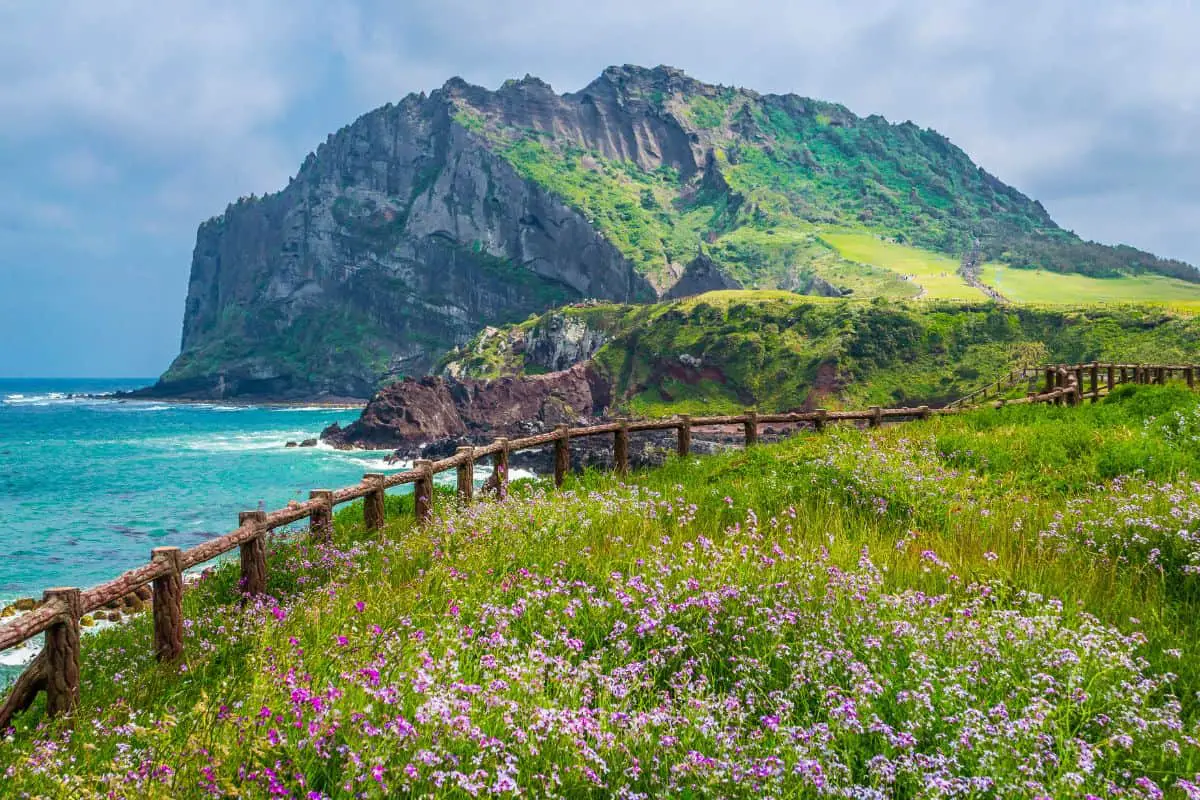
✈ Suncheon
What suncheon is known for.
Of all the cities in this Korea itinerary, Suncheon is probably the least famous internationally. The city has just a few hundred thousand residents, quite small by Korean standards, but each spring the county is flooded with domestic tourists chasing beautiful flowers and stunning natural landscapes .
But despite its size, I'd recommend Suncheon because of its great potential as a base from which to explore the rest of southern Korea. Just south of Suncheon are Boseong, where most of the country's green tea is grown, and Yeosu, a beautiful island with lots of attractions in its own right.
Northeast of Suncheon is Gurye, whose spring flower festival & fall cherry festival are famously striking. Simply put, people visit Suncheon in order to revel in the beauty of nature , get away from the big cities , and enjoy the festival culture of small Korean communities.
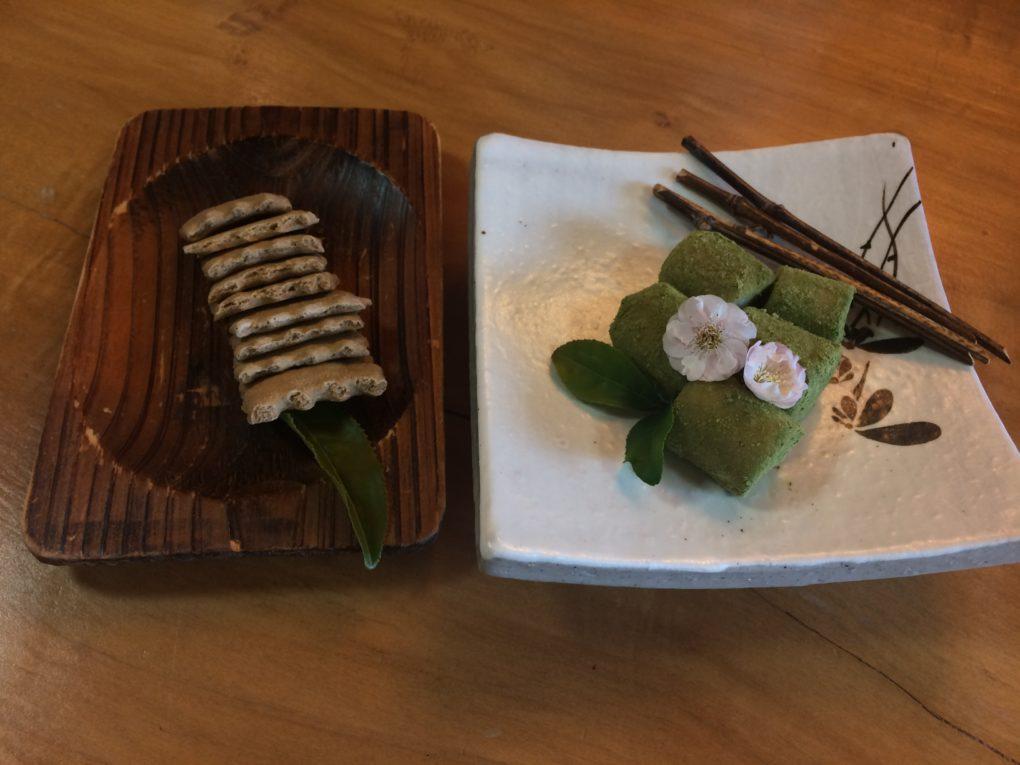
What To See Around Suncheon
As just one of four great cities to explore in southern Korea, it's difficult to distill Suncheon attractions into one post. But in order to lend an idea of some of the things you can do around Suncheon, here are 7 things you should do or see near Suncheon City.
Learn hands-on at Naganeupseong Folk Village. With remaining residents numbering in the hundreds, calling this a village is a bit of a stretch. But Naganeupseong is more like a demonstrative village, offering visitors performances and traditional experiences you couldn't find even in Seoul.
Each region of Korea has their own unique traditions that they've chosen to keep alive and highlight here. This means that for as vast & varied as Seoul is, you won't find as many ways to experience southern Korean culture up there.
This is honestly in large part because most Seoulites see Korea's southernmost areas as countryside and backwards and unworthy of a visit. However, I think that each is gorgeous (including my own countryside town), and this one in particular is worth a trip.
Hike the Suncheon Bay Gardens & Wetlands. Small crabs reach up at you from the mud, wheat whispers in the wind, and old people are probably yelling from just behind you. So go the wetlands. Starting from the parking lot and continuing on through the carefully-curated gardens, you'll reach the wetlands themselves.
From there you can cross the gardens via a long bridge. On the other side is a small mountain, which you can take about half an hour to hike up, or you could stop and turn around where you are, admiring the other side of the wetlands' natural beauty.
Picnic at Suncheon Bay National Gardens. When I think of gardens, I think of somewhere well-kept and brightly-colored, maintained within a specific small area. Suncheon's National Gardens are a vast and impressive version of that, including not just flowers but also sculptures, a bridge covered in hangeul , and a variety of cafes & eateries on site .
In peak bloom season, from around mid-March to mid-May, you could easily spend a whole day walking across the ponds and admiring the colorful fauna, wondering why you didn't come here sooner.
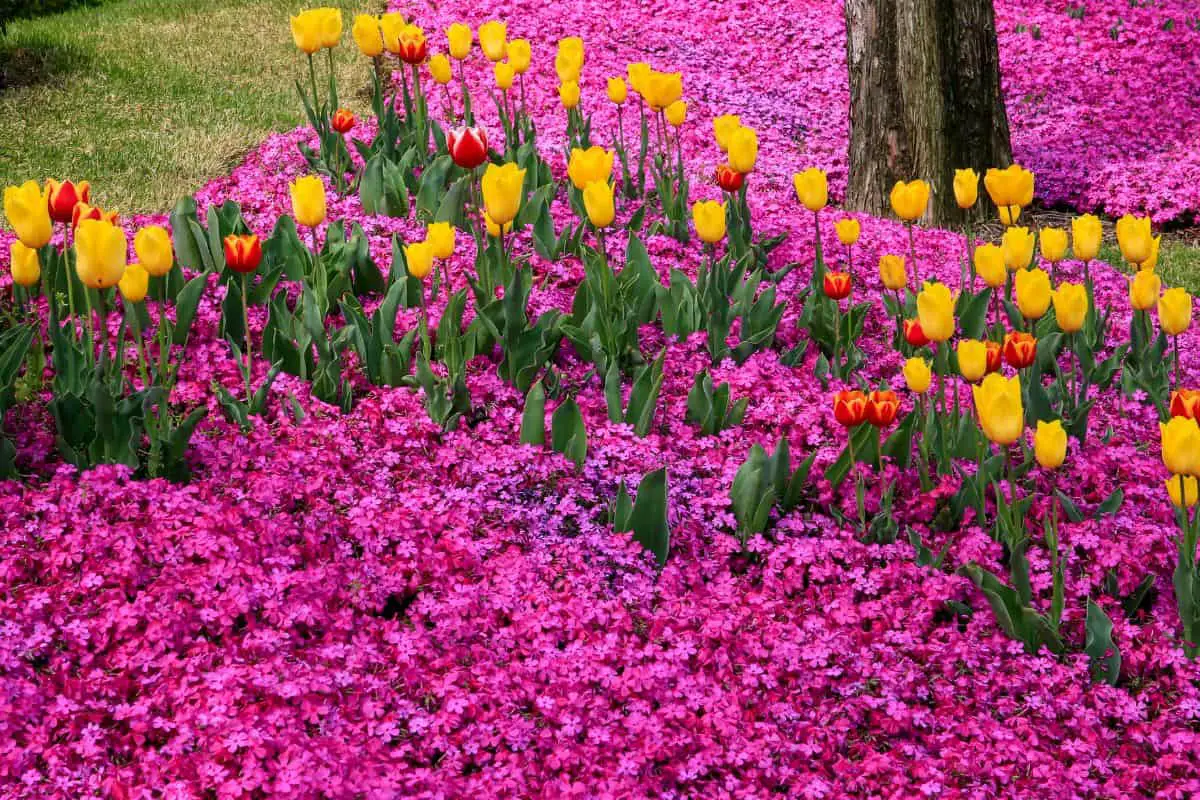
Relax at Jirisan Spa Land. If you've never been to a Korean sauna, you are missing out. Spas are a national past time here, and they're also quite affordable, and fun in a group, couple, or solo.
Jirisan is particularly well-known because it features hot springs-supplied baths. Keep in mind that like all Korean spas, the indoor regions of the spa are separated by gender and have a no-clothes policy.
Do a photo shoot amongst Gurye Cherry Trees. These bright yellow blossoms have taken up root throughout the village of Gurye, bringing hoards of people (& tourism dollars) to town every spring. In the fall, the trees' cherries cover them in color once again, this time a deep red. If you manage to visit in March (outside of festival time), you may even find this to be the perfect spot for a photo shoot.
Ride the Yeosu Cable Car. Especially beautiful around sunset, Yeosu's cable car takes you across the bridge which connects Yeosu to the mainland. From an incredible height it gives you a look at the still-active port area and many smaller surrounding islands. Not to mention it saves you a taxi ride!
Drink up at Boseong Green Tea Fields. The green tea fields of Boseong hit their peak around mid-May, but they start turning a deep green color as early as March, continuing to lighten until late September. Koreans come to visit the main green tea plantation in order to hike up to the top of the hill on which the tea trees are planted.
Most people end up taking selfies and enjoying the view of everyone walking around far below them. At the plantation, other than the tea itself, you can enjoy green tea-flavored churros, lattes, and even a few savoury dishes (though don't expect much tea to be put in those).
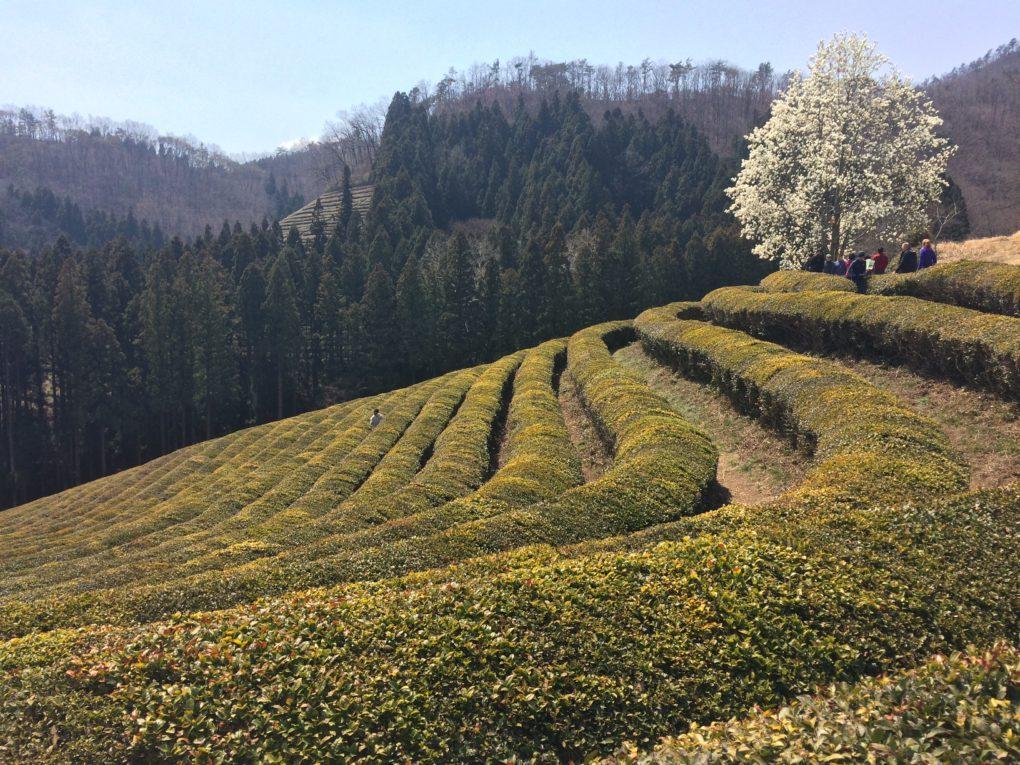
What To Eat In Suncheon
Suncheon is often hailed as the foodie capital of the southern part of Korea. Located near the coast, in Jeollanam-do, local restaurants in Suncheon will serve all the classics, but with a southern twist. Popular themes include seafood, fresh local vegetables, and abundant side dishes.
Mudskipper Soup. Arguably the most popular way to consume this local fish, the soup is prepared using boiled fish, radish leaves, and soybean paste. It's a very strong flavor, but all the side dishes it's served with temper it beautifully.
Kongnamul Gukbap . Literally "soybean soup rice," you can find gukbap all over Korea; I actually recommend trying a hearty pork or beef version in Busan.
But each region has their own special recipes for the soups and when they add the rice and where they source the ingredients. In the case of Suncheon's gukbap , the soybean sprouts add beautiful crunch to a very traditional Korean dish.
Sannakji Bibimbap. Another dish I sort of recommended in Busan, sannakji is basically the freshest form of raw octopus you could eat, served with lemon juice and seasoned with sesame oil. This iteration is less of a snack and more of a full meal, incorporating fresh vegetables and rice. Look for 산낙지비빔밥 on a menu.
Green Tea Churros. I couldn't recommend visiting the green tea fields of Boseong without also recommending the snacks! Only available on the weekends, these churros are nice when paired with a cup of green tea soft serve ice cream.
Grilled Duck. Suncheon famously raises about half the duck in Korea, meaning that finding a local duck dish is more likely than not. If you can find it, my favorite is Yangnyum Ori (양념오리).
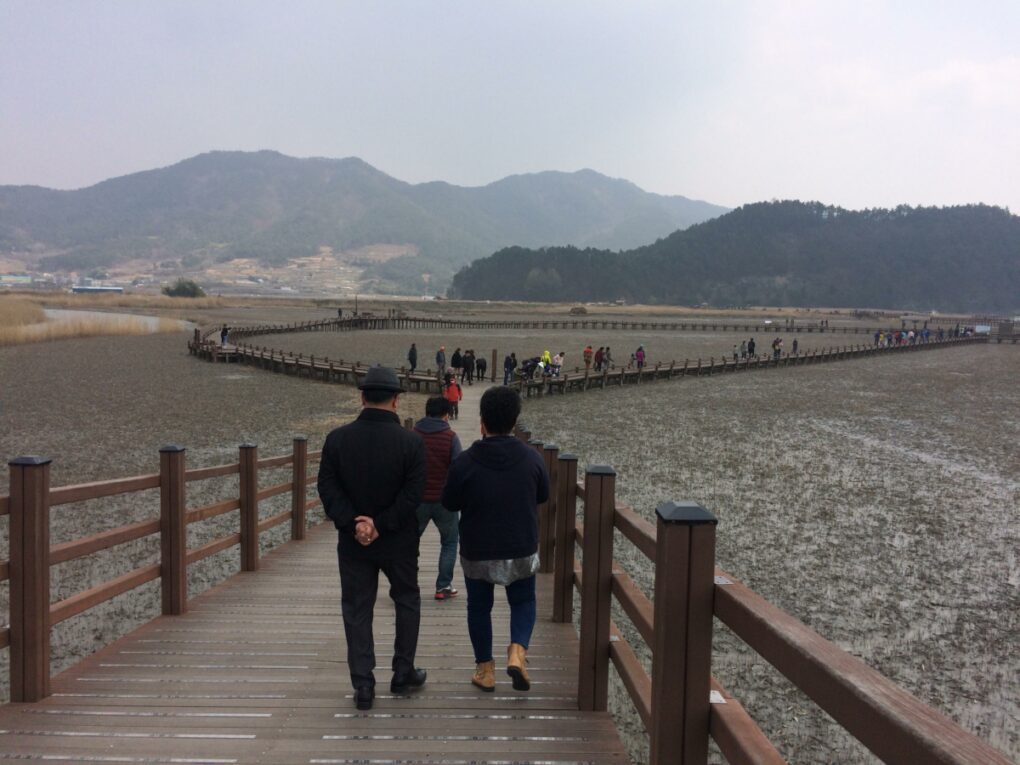
Where To Stay In Suncheon
Suncheon is quite the hot spot for domestic tourism, so most of the places to stay in Suncheon are Korean-style. This means that you sleep on the floor, and usually call to book directly. But there are some nice western-style guesthouses to choose from, three of which I've listed below. If you're visiting Suncheon between April and June, I'd recommend booking a guesthouse in advance!
Budget: Suncheon Namu Guesthouse
You can't get much closer to Suncheon bus terminal than Namu Guesthouse. No matter what time of day or night you arrive (or depart), if you stay at Namu you're just a few minutes from the city's bus terminal.
The beds are pretty standard for Korea, on the hard side, but the shared space is very homey and comfortable. At just $16USD a night for a dorm bed, it's the perfect spot for those planning to stay awhile and do a lot of day trips.
Budget: Baguni Hostel
It's rare to find a hostel with affordable dorm beds and a decent sense of privacy, but Baguni manages to strike this balance with grace. The dorm beds are each in their own little cubbies, with privacy curtains and fluffy bedding.
But the building itself makes use of lots of white and neutral tones, choosing to focus mainly upon providing a clean, comfortable, and affordable environment for guests.
The hostel is located right in the city center, a short walk from the bus terminal, making it a great choice for visitors who can't or choose not to rent a car. Single hostel beds start at $18USD a night.
Mid-Range: Hotel Iam
Every room at Iam includes an en-suite bathroom and complementary breakfast in the dining room. For those looking to upgrade their stay in Suncheon, this is an affordable hotel with comfortable beds, a nice staff, and a central location.
It's family-friendly, but more popular with couples looking to get away from hostels without breaking the bank. Double rooms start at $40USD.
Click here to check out prices for other hotels in Suncheon
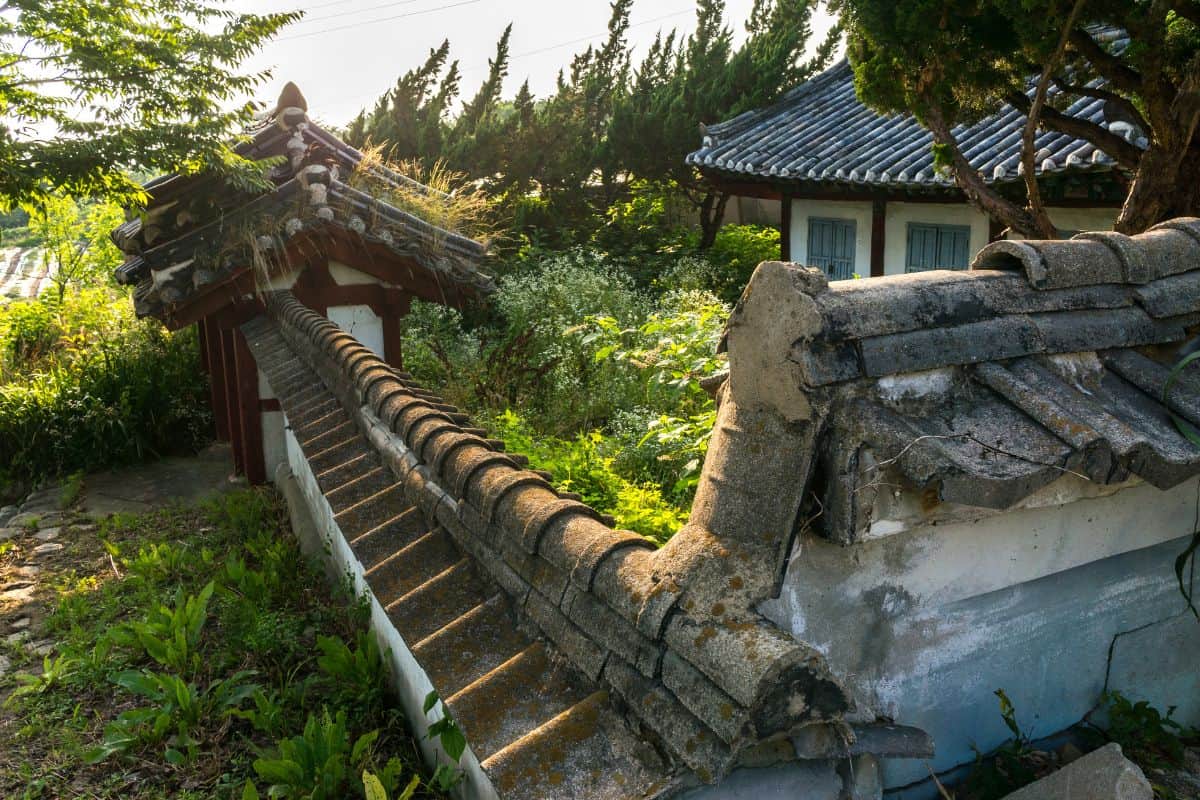
✈ Jeonju
What jeonju is known for.
Despite being just 1.5 hours from Seoul, Jeonju rarely features on a Korea itinerary, and that is a mistake. While you can easily visit Jeonju on a day trip from Seoul, I humbly recommend you spend at least two days in the city.
Preferably while staying in one of the historic houses & enjoying traditional Korean dishes in Korea's "Foodie Capital." Unlike Suncheon, most of the things to see in Jeonju are within the city itself, making it walkable and perfect for any wintertime Korea itinerary.
Seoulites tend to visit the city on the weekends, so take a couple of weekdays to discover the city whose name literally translates as "perfect region." While you're there, make the most of your time with visits to local galleries and walks around the city's many parks and green spaces.
Jeonju is seen as a very spiritual city, a place of historical importance for its maintenance of traditional foods, architecture, and those intangible parts of Korean culture we all strive to experience in a new place.
What To See Around Jeonju
Jeonju is a great place to just walk around, similar to some of the neighborhoods in central Seoul, but it's always nice to have a destination in mind. So in order to give you an idea of some of the things you can do in Jeonju, here are 7 things you should do or see in the city.
Photoshoot in Jaman Mural Village. Somewhat similar to Gamcheon Cultural Village in Busan or Rainbow Village in Taiwan , Jaman has become a symbol of revitalization for older parts of the city.
While the nearby hanok village has become well-known, just beyond the overpass is Jaman, a neighborhood painted up & beautified by local artists. The uphill scene is worth the trip, and makes for some very cute photos, especially for families and couples.
Tour a Hanok . A hanok is a type of small house, traditionally one story tall, which were the main type of dwelling in Korea for centuries. Due to Jeonju's ancient status, it was designated a UNESCO City of Gastronomy, and as a result, the rest of the city has also been well-preserved.
One thing that sticks out in Jeonju compared to Seoul or Busan is the height of the buildings. It can be hard to put your finger on at first, but you'll quickly notice how short most places are, and how it opens up the entire city.
This is due in large part to the city's hanoks . Places feel greener, even when you visit Jeonju in the winter. While you can tour a hanok (hopefully stay in one, too!) just by walking by, I'd also recommend checking out Gyeonggijeon Shrine for a more holistic look at how hanok culture shaped contemporary Korea.
Eat Street Food at Nambu Night Market. You can't recommend a visit to Jeonju without also recommending a trip to a night market. Korean night markets are notoriously boisterous affairs, with locals loudly hawking their wares from the safety of their booths, wafting any number of smells your way. The market is open every day, but Fridays and Saturdays are the busiest of all.
Some delicacies to enjoy once you've feasted your eyes are the grilled meat skewers, daepae saewoo (pork-wrapped shrimp), and hoddeok (honey cinnamon-filled rice cakes), though there are many international dishes, as well.
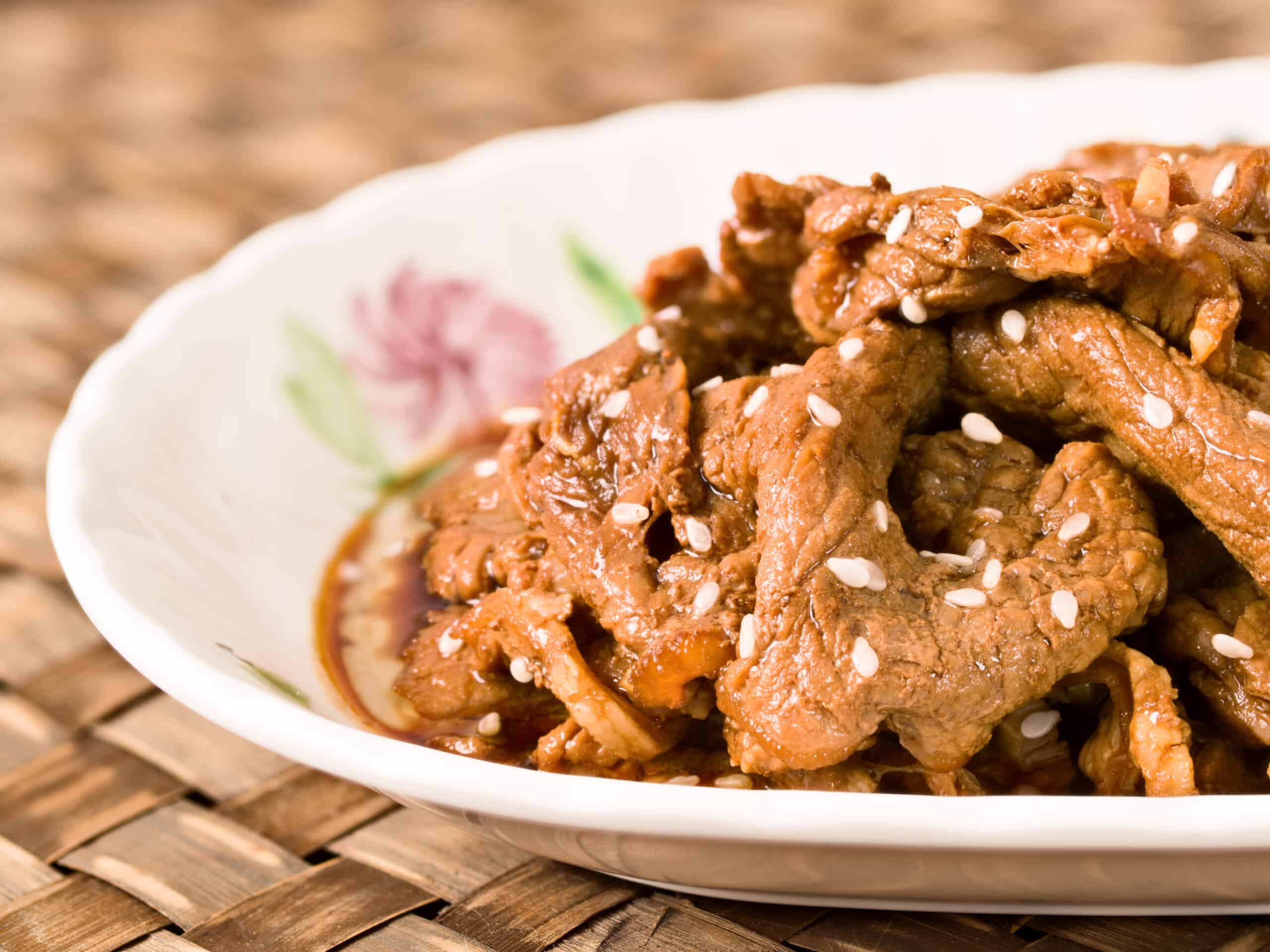
Try Dolsot Bibimbap With Makgeolli . Those little gold bowls full of translucent white liquid have become a staple in my life. Anytime staff at my job went out to dinner together, we always had makgeolli (rice wine), usually served from a big pot in the center of the table.
This is the most traditional way to consume the traditional rice liquor, and it's a great accompaniment to Jeonju's famous version of bibimbap (mixed rice). Try it almost anywhere in the ancient village, and I guarantee a smile.
Wear a Hanbok Amongst Hanok. Similar to the beautiful hanbok (traditional Korean outfits) you'll see in Seoul and Busan, it's almost a rite of passage to wear a hanbok around Jeonju. If you want a more unique experience in the city, this is the move. Rentals start from ₩8,000 (~$7USD), and range from 1-4 hours.
Have Tea in an Ancient Cafe. Or at least in a cafe that looks ancient, as many of the cafes in Jeonju's downtown area have been styled to look.
Some of the cafes are even in a hanok , which makes the tea-sipping feel all the more event-like. Some great cafes in Jeonju are Café Haengwon and Swan Park Cafe, but just remember to have a translation app on hand for the menus.
Admire the Flowers in Deokjin Park. One of the most popular gathering places in Jeonju, Deokjin Park has now become a draw for visitors, as well. In the spring there are flowers everywhere, while the summer sees the lotus blooming on the lake & fall brings changing colors to the leaves.
If you visit from July to August you'll notice crowds of locals taking pictures with the lotus flowers, as the high season coincides with kids' summer break.
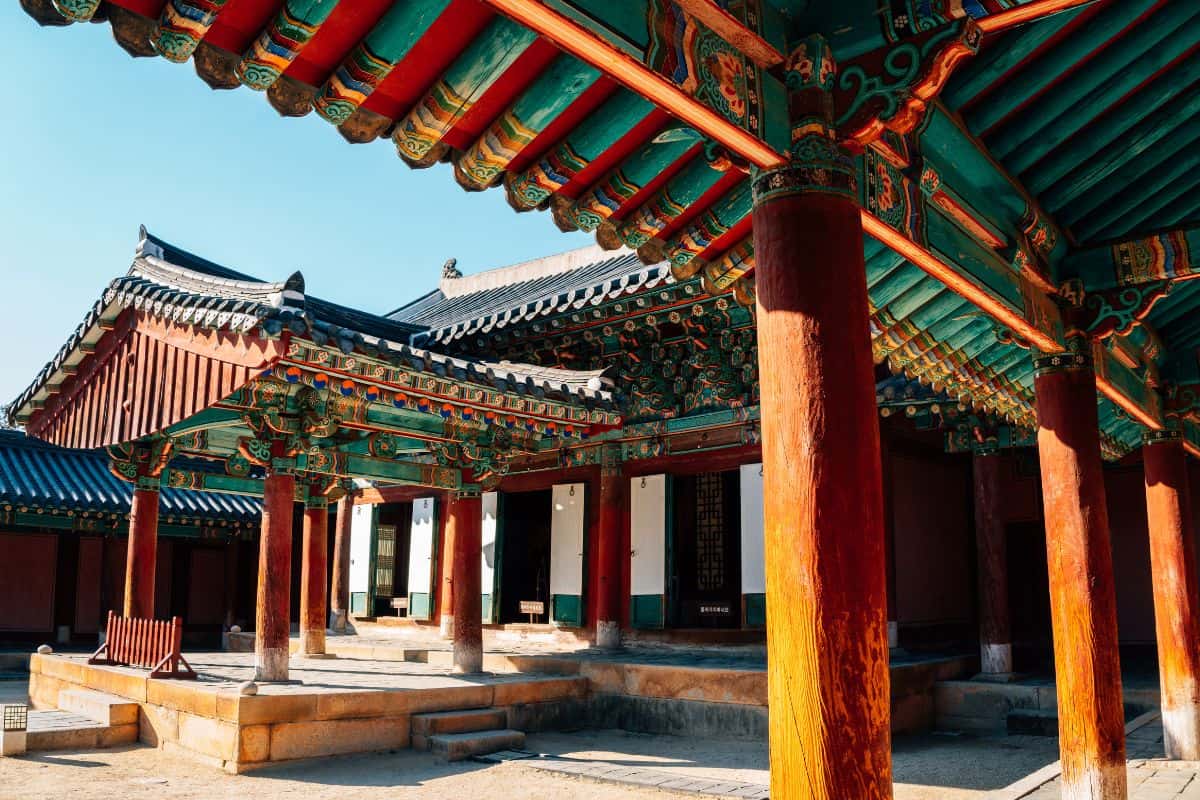
What To Eat In Jeonju
Despite the popularity of Suncheon as Korea's underground foodie capital, Jeonju is the official foodie capital of the country. In fact, in 2012 it was named a UNESCO City of Gastronomy. Domestically, Jeonju is known for its fresh vegetables and locally-grown rice, as well high levels of spice, so prepare your palate.
Legit Choco Pies. The infamous Korean treat of Choco Pies, which my students simply adore, were actually born at a bakery here in Jeonju. The bakery, PNB, has branches throughout the city, where you can find the layered chocolate and marshmallow pastry in multiple iterations.
Grilled Imsil Cheese. Korean cheese is notoriously gross. But many years ago, in a town just outside of Jeonju, one company faced this problem head-on: Imsil. In street food regions throughout the city you can find thick skewers of carefully grilled Imsil cheese, lightly sweet and crispy on the outside, halloumi-like in texture.
The brand also makes some delicious yogurt, and if you took the bus to & from Jeonju, you may even stop at an outpost where you can buy some of their cheese & yogurt. Go for the blueberry flavor; you can thank me later.
Jeonju Royal Court Cuisine. Gung hanjeongsik , as it's called in Korean, is the modern retelling of the special food eaten at the King's palace during the Joseon Dynasty. Even back then it was so intricate to prepare that it was only consumed once a month. One of my friends insisted that we try this type of meal when we went to her hometown, and it does not disappoint.
The setup is basically three tables covered in dozens of side dishes and a few main meals, all emphasizing local specialties from different parts of the country. This special meal is an investment, maybe $45USD per person. But it's seriously worth it.
Ddeok-galbi. Another local recommendation, these short rib patties will make your mouth water. They're prepared using marinated galbi , usually pork, and onion, garlic, ginger, and a umber of other spices. The meat is ground and then reformed into thin patties before being grilled on skewers or back on the bones; they're served with white rice and numerous side dishes.
Dolsot Bibimbap. While bibimbap (rice with steamed vegetables) is common throughout Korea, this version is unique because it's prepared in a piping hot stone bowl ( dol is Korean for "stone"). The rice is allowed to crisp up on the bottom, adding a delightfully different texture to the mix of ingredients.
This mix almost always includes fresh vegetables, kimchi, oak jelly, a small amount of beef, and a raw egg to stir into the steaming hot dish. Jeonju is so synonymous with bibimbap that there's now Bibimbap Festival every year. Just don't touch the bowl!
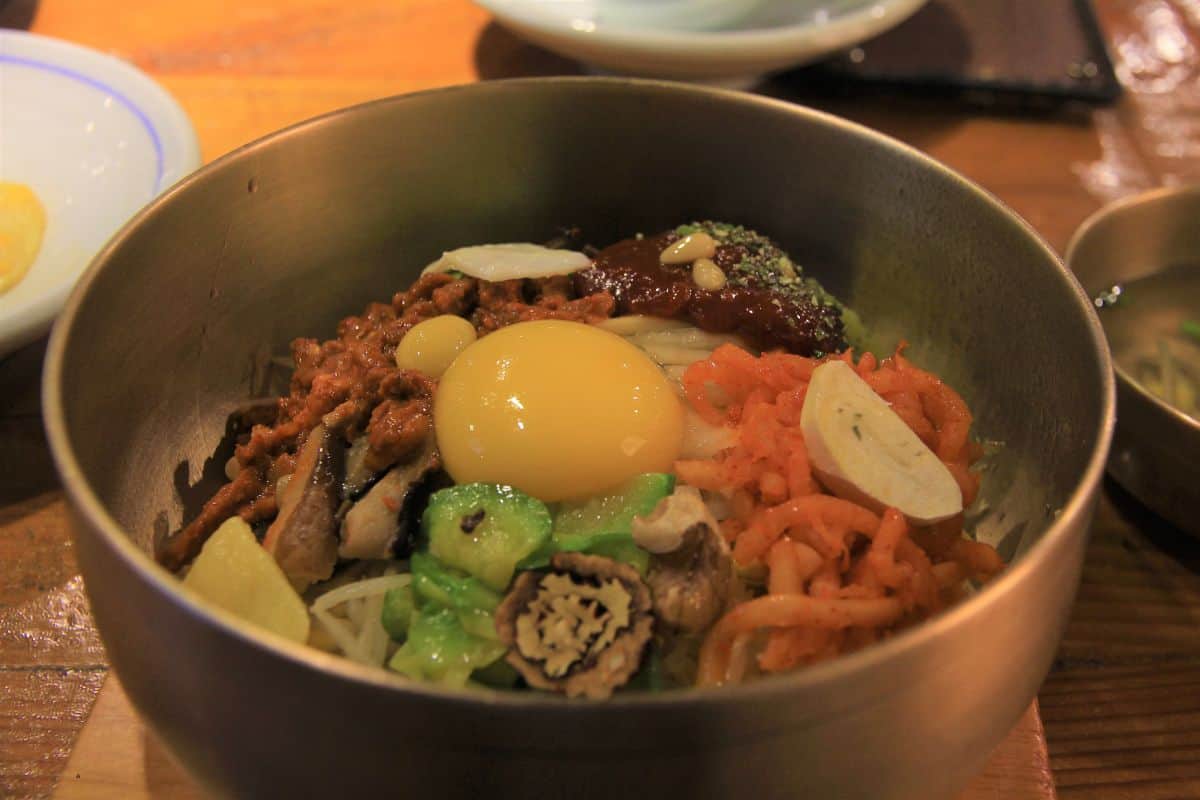
Where To Stay In Jeonju
One of the main reasons people choose to visit Jeonju over any other destination in Korea is for the hanoks (traditional Korean houses). All of them are now also equipped with ondol , the typical Korean floor heating system, making them quite comfortable even on the coldest of nights.
So most visitors do opt to spend the night in one of these beautiful guesthouses, most all of which are clustered in the famous Jeonju Hanok Village (in the southeastern part of the city).
But I'm not a huge fan of sleeping on thin blankets on a hard wooden floor, despite having done it a few dozen times. So here I've recommended just one hanok -style guesthouse, the two other being more western-style accommodations.
Budget: 24Guesthouse Jeonju
24 is a popular guesthouse chain, and I've stayed in several of their locations throughout Korea. They offer affordable double rooms with en-suite bathrooms, as well as 3- to 4-person hostel-style rooms for some of the cheapest prices around. A simple coffee & breakfast is included.
The guesthouse is a few blocks north of the Hanok Village, allowing you to be near but not right inside all of the action. At just $14USD a night per dorm bed, it's hard to beat the price if you're visiting Jeonju on a budget.
Hanok: Bu Kyung Dang Guesthouse
This is one of the most beautiful and most-loved hanoks in the whole village; no exaggeration. The entirety of the property consists of just 8 rooms, surrounded by greenery, which is found in full bloom if you visit in the spring.
On the outside is the traditional slatted doors with a paljak roof and paper lanterns around the perimeter. But heading inside you'll find a beautifully refurbished stone-tiled bathroom and wide open rooms. Grab a blanket from the stack and settle in for the night. Rooms start at just $32USD per night.
Mid-Range: N Bridge Hotel
Non- hanok accommodation in Jeonju is incredibly hard to come by; most people want to stay the night in the famous Hanok Village, and seem to have no problem sleeping on the floor. But for my fellow non-floor sleepers— at least those not on a budget— I'd recommend N Bridge.
It's got big fluffy beds, 24-hour service, and a fridge in every room. Unlike most of the hanok options, it also has multiple floors and a marble bathroom in every suite. Just be sure you don't book their futon room unless you actually do want to sleep on the floor, Korean-style. Double rooms start at $74USD.
Click here to check out prices for other hotels in Jeonju
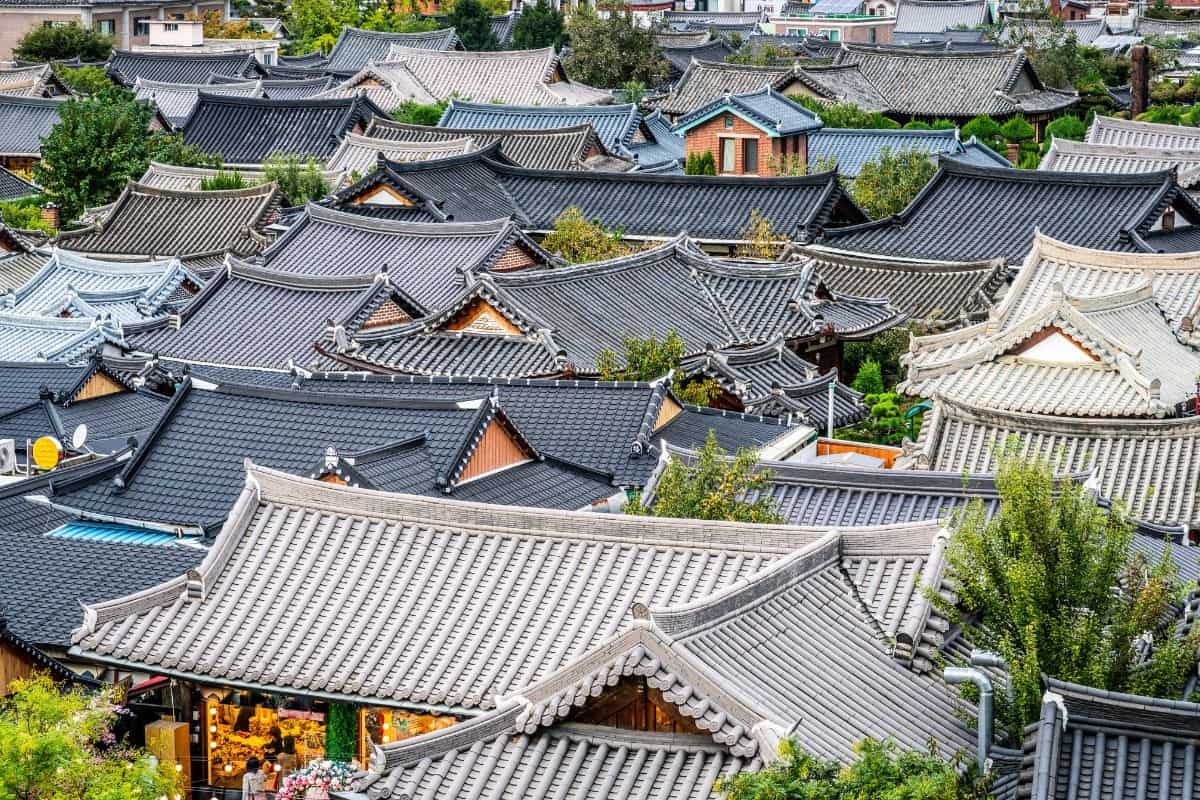
🧳 Budget For A Trip To South Korea
Of all the countries in East Asia, I'd argue that South Korea has become the most affordable to visit. There are many extremes to be found in the ROK (Republic Of Korea), a fact which extends to my daily life here over the last few years.
Visitors could stay in super cheap dorm beds booked way in advance for about ₩12000 ($10USD) a night, eat street food for another $10USD a day, and otherwise spend money only on transportation. I wouldn't recommend it, but it's doable.
On the other hand, Seoul is a massive city with plenty of hotels always ready to take your money. $500USD a night hotel rooms aren't the norm, but they're there. The key is to find a balance, and if you're looking to travel Korea on a budget, then make a list of priorities.
Do you most want a nice place to sleep? Fancy meals? Involved day trips? Budget travel in Korea is 100% possible, but it takes planning. So here's a rundown of the costs of traveling in Korea.
Note that this South Korea travel guide covers such a wide range of days that the budget below is a snapshot of how much you could spend in one day. My dad would call them "guesstimates." It also covers the cost of basic activities which most everyone would do. Remember to multiply this Korea travel budget by the number of days you'll be visiting us for!
ESTIMATED COSTS:
- Visa Fee : ₩30000 (to check if you need a visa, click here )
- Day Tours : ₩70000 (some day tours cost more, but these kids of trips include visiting the DMZ , Nami Island, and Jeju tours)
- * Each Trip To A New City : ~₩30000 (one way; this is an average)
- * Round Trip Airfare to Jeju : ₩80000 (if booked well in advance)
Decent Guesthouse : ₩25000
Meals & Snacks : ₩20000
Attractions & Activities : ₩10000
Transportation : ₩5000 (4 trips on the subway or bus)
Souvenirs & Cafes : ₩5000 (coffee or tea)
Average Cost Per Day : ₩ 65000
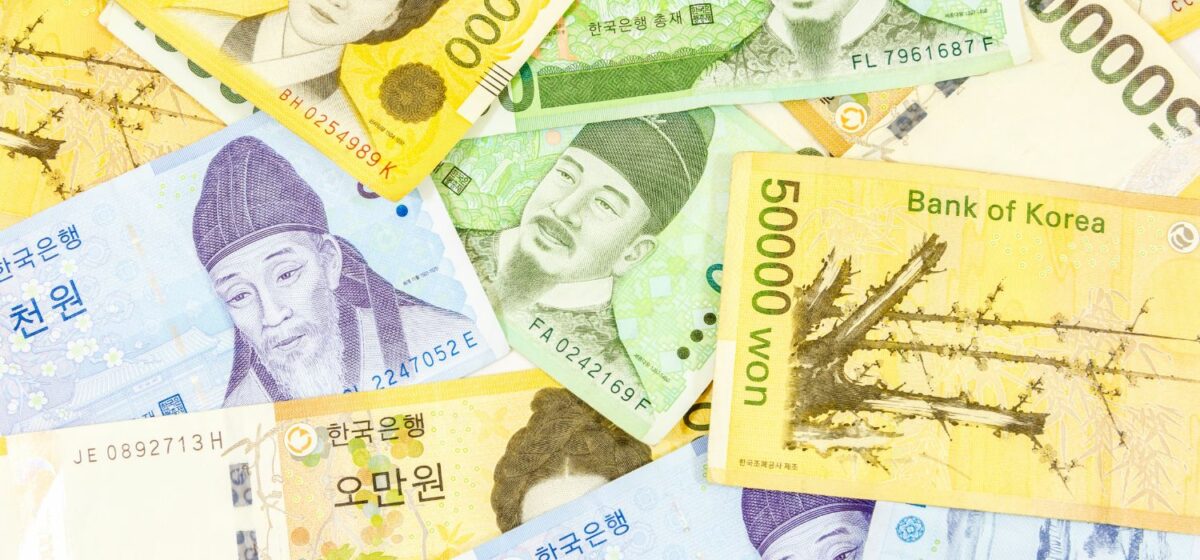
🚈 South Korea Travel Tips
- Metros aren't very accessible but the buses and taxis are. So if you're in a hurry or disabled, then you should take a taxi. They're very cheap and fast, though during rush hour they'll take as long as the metro. Most shops are clustered right around metro stations anyway, so even if your driver doesn't speak much English you can tell them the name of the metro station closest to where you're going.
- Korean winters are not for the faint of heart . My friends from Vietnam visited me last winter and spent their first day alone— they were shivering for hours after we came inside. Even my sister was not very happy with all the snow over New Year's when she visited a few years ago. It can get brutal, thanks to winds coming down from Siberia.
- Also not for the faint of heart, entitled old people . They will push you, publicly and without shame if they think you're in their way. I understand that they act this way because they don't think young people respect their elders like they should, and they don't, in my opinion. But no matter how you think, it is something to be aware of.
- Korea is basically a cashless society , except for in the markets. This means that you can use your credit card most everywhere, but international cards aren't always accepted, so still keep some cash on hand.
- Along similar lines, in Korea you should expect late nights and late mornings . Cafes, restaurants, and shops are open very late, usually between 10pm and midnight, but rarely open before 11am. If you want morning coffee if Korea you'll have to either be at the airport or grab canned coffee from a convenience store.

- Even though it's a more developed country, Korea has their share of travel scams. One of the most common is the fortune teller scam , in which a woman stops you on the street and offers to take you to have traditional experiences, only to scam you out of money. Either way, if someone stops you on the street, 95% of the time they want your money or to convert you. NYC rules apply.
- Pollution is horrible. Sometimes the skies aren't as bad, but spring 2018 and winter 2019 were particularly harsh, with many days seeing pollution levels as high in Seoul as in Beijing, China. Bring a mask, or buy one, especially if spending 2 weeks in South Korea, or longer.
- Naver Maps will tell you which door of the subway you should go to for the faster arrival at your next destination.
- If you're a bigger person , look for handicap-accessible or family bathrooms, as Korean public bathroom stalls are made for small people, especially the women's bathrooms.
- Look up . If you're looking for an office or guesthouse or restaurant, and you'd swear you're at the right address, just look up. It's probably just on a much higher floor, like the 11th or 32nd.
- However, when you do look up, don't make eye contact unless you want to start a conversation or get stared at as you walk away (though that might happen anyway, in the countryside).
- Hospitals are for everything , even if you're a visitor taking various South Korea tours and end up with a cold. The hospital is like the doctor's office, and in small towns like mine, they're open 9 to 5 like everything else.
- Always count to 5 before crossing the street , because without fail, at least once a week I watch someone go after the light turns red, be it a car or a motorbike. Better safe than sorry.
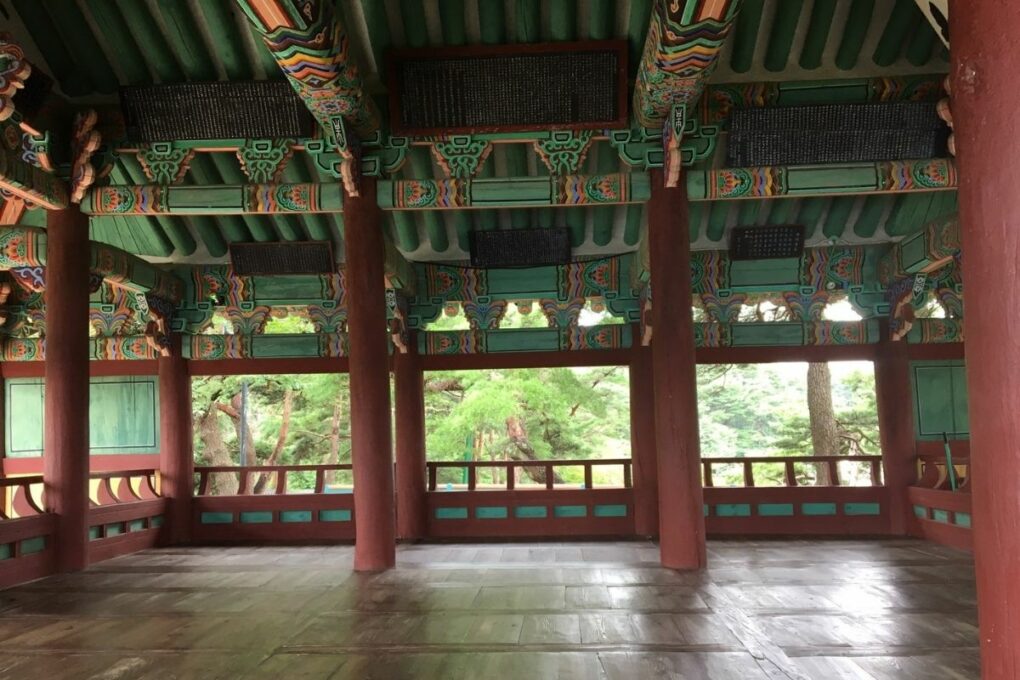
☺️ Basic Phrases For Your Trip to Korea
Hello // An-nyeong-ha-se-yo . (안녕하세요.)
Thank you // Gam-saahm-ni-da . (감사합니다.)
How much is it? // Eegaw eol-ma-yeh-yo? (이거 얼마예요?)
Do you speak English? // Yeong-aw jal-hae-yo? (영어 잘해요?)
I don’t speak any Korean. // Han-guk-aw jal-moat-hae-yo. (한국어 잘못해요.)
One of these, please. // Ee-gaw ha-na ju-say-yo. (이거 하나 주세요.)
It’s to-go/takeout. // Po-jahng ee-eh-yo or Tae-ee-kow-shi-yay-oh. (포장 이예요.)
Lesson complete! Now let’s get packing.
More All Things South Korea
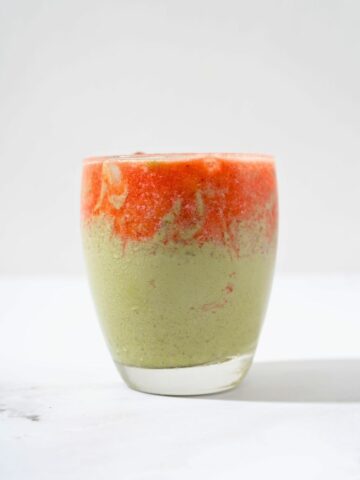
Sharing is caring!
Reader Interactions
Cherene Saradar says
June 02, 2019 at 3:58 am
Such a fabulous thorough post. Will definitely use it when I finally visit South Korea someday!
June 02, 2019 at 11:52 am
Thank you so much, Cherene! I hope you're able to visit sooner rather than later. ?
June 03, 2019 at 2:59 am
I’ve been postponing Korea because I think it deserves time. These two weeks sound fantastic! I saved your post for future references. Thanks for all the great details! ❤️
June 03, 2019 at 8:19 am
Agreed! Korea deserves some time and a return trip or two. I hope you can make it sooner rather than later. 🙂
Amanda C Bowers says
June 04, 2019 at 8:02 am
Beautiful photography and helpful advice.
June 04, 2019 at 10:02 am
Thanks, Amanda! Hope it helped you plan your visit.
June 11, 2019 at 12:14 am
South Korea is such an amazing travel destination for me. I have been there for a couple of time.
I loved your honest and resourceful travel guide, photos are mind-blowing.
June 11, 2019 at 10:53 am
Thanks, Sarah! It's been a few years in the making, so it was more a question of which photos to use & which destinations to choose. Hope you can make it to a variety of destinations on your next visit!
July 10, 2019 at 1:41 am
Hi Max, some great suggestions on Korea. A lot of good information. I would suggest spending a lot of time in Busan as it has a lot to offer. Thanks again for sharing your post.
July 10, 2019 at 9:26 am
I've been to Busan several times, and it's yet to offer me much more than a weekend of activities beyond what I could get in Seoul. I'm sure living there is a very different experience, but for visitors I'm sticking to my guns on 2 or 3 days!
jagjit singh says
July 19, 2019 at 8:24 pm
I heard a lot about south Korea tourism so me and my friends are planning our trip to South Korea for next month but as me and my friends have nothing knowledge about SK so we are a bit worried about our trip but after reading this blog I know to do their what things to keep in mind for traveling safe thanks!
July 19, 2019 at 9:40 pm
I'm so glad you're planning a visit! Be sure to bring lots of light clothes and rain jacket, as Korea is very hot this time of year!
December 08, 2019 at 3:12 pm
Its great to learn about interesting itinerary... Yhanks
December 08, 2019 at 9:45 pm
You're very welcome, Neha! 🙂
Christine says
January 10, 2020 at 5:33 am
My family and I are coming to South Korea at the end of May for 2 weeks. Do you have any advice for travelling with 3 teenagers?
January 11, 2020 at 4:34 pm
Hi, Christine. That's a lovely time to visit weather-wise, and a great amount of time to spend. I'm not sure what your teens are into, but they may enjoy doing some of the more cheesy and kitschy things in Korea, like visiting the Toilet Museum in Suwon, and seeing Cookin' With Nanta in Seoul. A road trip around Yeosu could also be fun, as it's packed with lots of natural attractions very close together. I remember not wanting to help my parents plan anything as a teen, but maybe show them some lists of interesting things to do around Korea, as ask them each to pick 3-5 things? I have such a list that I compiled over three years of traveling across the country: https://damecacao.com/expat-south-korea-bucket-list-adventures/
Each description is short, so they can glance over it really quickly and give you an idea of what they're interested in! I hope that helps, and I hope you all have a wonderful trip in Korea!
Lauren says
March 16, 2020 at 8:21 pm
Hi! My boyfriend and I are going to South Korea in the beginning of September for two weeks, so your itinerary is perfect for us! But do you have any tips for eating in South Korea as a vegetarian? I do not eat meat, fish or seafood, so I'm a bit worried about the possibilities there.
Thank you so much!
March 20, 2020 at 9:24 am
Hey, Lauren! I hope you're still able to go on your trip, come September. Korea's been doing very well at keeping coronavirus at bay. There are a fair number of vegetarian restaurants in Korea, in particular around Seoul, but I recommend you look up some food guides to vegetarian Korean dishes, keep some cards noting how to tell restaurants you're vegetarian, and take note of some particular restaurant options in bigger cities. Off the top of my head, only bibimbap without the beef is purely vegetarian; most main dishes also use some kimchi (made with tiny shrimp) in the sauce or pork bones in the broth. :/
January 12, 2021 at 9:20 am
Max, with your language lesson I am ready!
January 13, 2021 at 6:39 am
That's great, Lucy! I hope we'll all have the chance to visit again soon. 😀
Sanori says
January 29, 2021 at 12:54 am
Thank you firstly because the article is really helpful. I am planning to visit in December to see the snow. It would be great if you can help me plan. I will be about 14 day tour?
January 29, 2021 at 11:27 am
Perfect! That's exactly what this is. Good luck with the planning & enjoy your trip! ^^
Brian Fernandez says
May 22, 2021 at 9:01 pm
I have postponed my trip to S Korea in April for the second year now but it's definitely on the cards for 2022. I have read most of the write up and it's thorough ,interesting and given me through to want it even more. Now thinking about going there for a little longer than originally planned. Thank you.
May 23, 2021 at 9:13 am
You're very welcome, Brian! It's frustrating to have to keep postponing your trip, but I'm glad you'll finally be going. April is a good time to be there, and generally not too cold (but it can get chilly at night). I'm glad you'll get to spend so much time there-- a bit more could always be put to good use!
Raymond says
March 27, 2023 at 2:19 am
Useful tips, thank you.
March 27, 2023 at 10:33 am
You're very welcome, Raymond!
Su Ling says
April 16, 2023 at 6:14 am
Hi Max, I am planning a trip to Korea in 30 Sept to 10 Oct, tentively as below: 30/9-2/10-Seoul 2/10-4/10-Gyeongu 4-7-Busan 7-8-Boseng green tea plantation 8-9- Sucheon 9-10-Jeonju 10-Back to Seoul and departure in night
Do you think above days allocation in each city, are appropirate to see the main sights in each city without feeling too rush? which is why I allocate 2 nights in Gyeongu and 2 nights in Sucheon. 3 days in busan and 2 and a half days in Seoul (include last day in seoul).
Secondly, is it ok to see Boseong Green Tea planation first and spend a day there, and next day go back to Sucheon and spend a night in Sucheon? Or the other way round?
April 16, 2023 at 10:29 am
Hi, Su! You'll be doing a lot of running around and hauling luggage, so I'd pack light and wear your good walking shoes, but I'd also probably switch and go to Suncheon first, yes, as Boseong will be a slightly longer trip to arrive there from Busan, and it's relatively easy to get to Jeonju by bus from either city/area.
July 22, 2023 at 6:13 am
@Max, thanks Max
Claudia says
May 02, 2023 at 7:31 am
Hi Max! First of all, thank you for your amazing collection of information. I'm currently trying to make up my mind in terms of how I should plan my South Korea trip. Maybe you can help me out a bit: I'm thinking of either going end of this Month so around 23rd of May or wait and flight there during September. What would you suggest? Are there any advantages/disadvantages ?
And the next question is whether I should do 3 weeks in South Korea or 2 weeks and ad 1 week in Tokyo to that.
It's so hard for me to decide ...
Thanks a lot in advance!!
May 02, 2023 at 10:32 am
Hi, Claudia! It's a long trip, so I can understand the trepidation. As for timing, end of May can get quite warm, but September will be HOT. Kids will be in school both times of year, though particularly in early September there is kind of a lot of movement-- new students coming in, new English teachers, certainly tourists. I think you could have a good time no matter what, but I'd generally opt for May because I think it's also the most beautiful time to be on Jeju Island and see all of the blossoms and herbs around the country.
As for a week in Tokyo/Japan, it's a farther trip than you may expect (3 hour flight from Seoul, plus to/from both airports) and will definitely be a hit to your budget. But it will be different foods and a different array of activity options and a somewhat different vibe. While I think you could easily spend a month in Korea and be nowhere near done, it depends on how much you want to see Japan + how willing you are to spend the extra time & money for the experiences you could have in Japan vs. Korea.
Personally, I've been to Japan 4 times (each a different region) and it's cool, but I'll always enjoy going back to Korea more, and I don't believe it's just because I lived there (though that certainly plays a role!).
May 02, 2023 at 11:04 am
@Max, Thanks so much! Going to Japan/Tokyo would basically just be some sort of "teaser" for me as I've always planed to spend at least 2 month there at once. So it was me thinking "okay, if I'm already over there, might as well get a first taste" - that sort of thing 😛 (I'm travelling from Austria). I'm travelling alone, so all responsiblity of making the final decision lies with me unfortunately.
What extra places would you recommend for a 3 weeks trip? Would you add something or just extend the 2 weeks itinerary a bit?
And quick side question regarding Jeju: How much in advance did you go to the airports for the flights? Is it like any other flight (2h)?
Thanks a ton!
May 02, 2023 at 1:41 pm
Ahhh gotcha. Well that's definitely a different scenario. If I were deciding between the two, I would indeed spend the other week in Japan, and try to get a sense of which I like better. If I were spending 3 weeks in Korea, I'd extend the amount of time I spend in each place depending on which one appeals to me the most. Oh, and for Jeju 1.5-2 hours to even as little as an hour for the flights from Gimpo, but I generally err on the side of caution. Enjoy your trip, Claudia!!
June 13, 2023 at 11:05 pm
What a great post! Thanks for sharing. We are planning to come from June 29th to 9th July. What do you think about the weather? Can we come now or delay due to rain and heat? Also, in Seoul what is a good location for a family stay - Four Seasons and something in Gangham?
June 14, 2023 at 12:40 am
My pleasure, VK! And since it's monsoon season, it's honestly pretty unpredictable as to which days might be nice, but with such a long stretch of time, you're bound to get some good weather days and maybe a bit of rain. I have a post covering 100+ things to do in Seoul , so I recommend looking through that and over the map on the bottom to note some things that look interesting & rain-proof, as well as some options for stuff close to where you choose to stay.
Speaking of, the Four Seasons is lovely, but I was also incredible impressed with VOCO Hotel in Gangnam . It's an affordable IHG property a block or two from the metro, and I felt like royalty for much cheaper than the Four Seasons (like 1/3 of the price)! But it's always worth comparing the two side-by-side, as the Four Seasons would offer slightly different amenities and is in an arguably more central tourist location. Either way, summertime will be warm in Seoul, but everythng is open and tends to have longer hours due to the increase in domestic tourism.
Enjoy your trip!
June 14, 2023 at 8:34 am
@Max, Thank you so much for your kind response and the details provided. I am planning to do 4 nights in Seoul, 2 nights in Busan, and 4 nights in Jeju. Is that plan correct? Given a choice you would me to skip summer and rain and come later or it is still okay to come from 27th June - 7th July? As we don't to come and spoil the trip - I hope you understand :).
The Hotel option you gave is great. I will definitely have a look. Is it better to stay in Gangnam or the area where the Four Seasons are? I know I am asking too much but if you have any recommendations for Busan and Jeju as well - would love to take your feedback.
Thanks so much again.
Regards, VK
June 14, 2023 at 5:24 pm
That's how I'd plan it out! And honestly, you can't predict the weather well enough to say whether it will rain half the days or just one or none. It can be rainy from June to September, and it gets quite cold after that, so sometimes you just have to roll the dice. If given the option, summer would be my pick over winter, but even if I knew the other times you'd be able to go, we'd still be in the same predicament about not being able to know for sure how the weather will be.
If the price difference doesn't matter as much, the Four Seasons would be my pick for a first-time visit, because it's truly in the middle of the touristy area with a large chunk of the museums, hanok (traditional) houses, souvenir shopping, royal palaces, and a ton of restaurants with great Korean food and mostly translated menus. Voco (and Gangnam as a whole) is about a half hour metro ride from that area, and while it's great for fancy shopping, visiting Lotte Tower, and some fabulous meals (if you eat beef then definitely try hanu , or Korean domestic beef, while you're there), it has a few tourist-friendly museums and not so much else. But what you save in staying there would more than pay for taxis all throughout the city! So each has their pros, and you should pick the one that's right for your preferences.
As for the other two, I spent many hours compiling accommodation guides for both Busan and Jeju Island , and you can read about the various neighborhoods/parts of the island in each, and make the best pick for each based on what you plan to do there. Again, since I'm not sure what attractions you're most interested in, I do think it would make more sense for you to look through those for the best picks for you personally, rather than booking only based on my recommendation. And if you do still have more questions after reading through those two posts, just leave another comment and I'd be happy to answer them there.
I never mind answering questions, as frustratingly few bloggers seem to still do so. But if you've found any of the info helpful, I always appreciate it if you book through my affiliate links. I specifically work with Agoda for hotels because I've always found that they have the best prices on accommodation throughout Asia, and always throughout Korea. But if you don't, no big deal; just wanted to mention it as a free way to say 'thanks'! 🙂
June 14, 2023 at 10:02 pm
@Max, Thank you so much for your kind help and answering questions. This really helps a lot. I will definitely use the affiliate links:)
Susan Hughes says
February 25, 2024 at 11:01 am
My husband, oldest daughter, possibly a friend of hers and I will be in South Korea, leaving DFW the 9th (not getting there till the 10th at 3:15)-and returning the 20th at 5:25. Trying to come up with a tentative itinerary so we can experience the most of our time there. Seoul, Busan and Jeju Island are my top places to visit. I’m a Korean adoptee and would like to visit an orphanage. If you have information about Holt orphanage that would be wonderful. I was adopted in 1973 which the orphanage was called Livingstone but changed to Holt. Trying to determine if we should stay around Seoul when we get there or when a few days before we head back home. I’m realizing I should have booked 2 weeks which a friend who is living there for a year suggested but i compromised with 10 days. Would love to hear what advice you have to give. I’m just starting to do research so any info other than what you have said in your post would be much appreciated. Wish you were there when we are to be our travel guide😂Looking forward to hearing back from you!
February 28, 2024 at 1:14 am
Hi, Susan! That sounds like a wonderful experience you have planned. I'm sorry I don't know anything about Holt, but I also did my best to include every little detail about visiting in this post - it's over ten thousand words! However, when planning timing, I'd say to know your limits. If you're flying direct from Dallas and know you'd be up for another short domestic flight that would get you to Jeju by 7pm or 8pm, then I'd say to go directly to Jeju, because getting into Seoul formt he airport in Incheon take about 2 hours. It's a trek, and your time is better spent getting your sea legs, so to speak. From a few days in Jeju first, I'd fly from Jeju to Busan, then take the train from Busan to Seoul and leave form there. Lots of options depending on your particular interests!
Jochen says
August 04, 2023 at 5:48 am
Hi, we are going to prepare a tour with golfers to Korea and beside of golf your information are very helpful. Do you live in Korea and work as DMC?
August 04, 2023 at 1:36 pm
That sounds like a very fun tour indeed, but unfortunately I don't like in Korea anymore, nor have I ever worked as a DMC. But good luck with your search, and enjoy your trip!
August 07, 2023 at 6:14 am
Thanks for your great posts! I used this one (and a few others including the Seoul and Jeju one) to help me when I went to South Korea for two weeks. I read a few blogs on the internet, but your style and interests most closely matched me. Hope you are doing well one your new adventures 🙂
August 10, 2023 at 9:26 am
Thank you for the kind words, Kim! I'm glad you've found it all helpful. 😀
August 18, 2023 at 4:02 am
Thank you for your post. I wonder how to use 'Kakao talk' app during travel in Korea. Is there any way to use it?
August 20, 2023 at 5:55 pm
My pleasure, Kim! You can download Kakao Talk before your trip, but since it's connected to your phone number, if you need to get a local sim card in Korea, you'll just need to make a temporary new account for use in Korea. So unless you'll use your phone's regular sim card while in Korea, I recommend waiting until you're IN Korea to make your account for use during travel in Korea. Then you can use it to communicate with taxi drivers, food delivery, Air BnB hosts, local friends, etc.
Happy Travelers says
January 13, 2024 at 4:42 pm
Thanks for creating a 14 day with Jeonju! We will be in Korea feb 7-21 and obviously plan on seoul, busan, and jeju. We really wanted to hit Jeonju but was reading about doing a drive from seoul east and then south to hit Chuncheon, Sokcho, Gangneung, Samcheok, Andong, Gyeongju, Seokguram and skipping Jeonju.
I was wondering since we will be there in the Winter, which would you recommend the Jeonju plan or the east plan?
January 14, 2024 at 2:46 pm
Thank you for the kind words! At that time of year, you'd be better off giving Jeonju a visit since the warm weather that would make the east coast drive so pleasant & beautiful would be nonexistent right then. You'll also be overlapping with Seollal, or the Lunar New Year (weekend of Feb 10), with those dates, so renting a car may be a bit harder and traffic will be CRAZY heading out of the city all weekend (everyone is taking their fmailies back to the countryside to see parents/extended family). However it will be just one weekend out of two, so I recommend you just plan around that, and definitely give Jeonju a few days!
April 30, 2024 at 10:27 pm
Hi ! Thank you for this great blog post. Very instructive ! A friend and I are planning to visit South Korea in 12/13 days (not sure yet) in the beginning of November, starting in Seoul and ending in Busan (taking the ferry to Japan after). We would love to go to Jeju as well, which we will try to plan right after Seoul. Given the round trip tickets to Jeju Island are much cheaper than a multi-destination (we are mid-budget travellers), we were thinking of staying 5 days in Seoul, and then a round trip to Jeju Island in two days. But after this, we're a bit lost. We read online that spending a day and a night in Gyeongju is quite nice, as well as exploring Jirisan national park (we love nature and hiking). But, reading your blog, it seems that other destinations such as Jeonju are equally as great. What would you recommend for the second part (6 days) of our trip in November ? Thanks for your help ! Axel
May 08, 2024 at 1:54 pm
Hi, Axel! It totally depends on what you most like to do - at the beginning of November it's pretty chilly, so while hiking would be beautiful, it may be a bit tougher on the body. You're probably also best-off staying in one place for those last 6 days, or maaaaybe 2 places, doing day trips to the destinations you're interested in nearby. With 6 full days before you take the ferry to Japan, if you don't mind moving places a lot you could base yourself in Gwangju (the largest city in the southwest of the country) for 3-4 days, taking buses to do day trips to other areas in the region (Suncheon, Jeonju, Jirisan, etc.), and even fly directly there from Jeju (which I'd actually recommend at least 3 days to explore!). Then you could spend 2-3 days in Busan at the end before your ferry. That would be my inclination, but it totally depends on your interests, as every city has a distinct vibe.
Sorry for the late reply - I just returned from my honeymoon! 🙂
June 27, 2024 at 4:21 am
Hello max! Loving your blog post and very useful information I will be visiting Korea this coming Nov for 10 days My current plan would be seoul + Gangneumg/skocho. Trying to put in daegu into my itinerary but seems a bit far off and required traveling
Appreciate if you can share any ideas please . Many thanks in advance
June 28, 2024 at 2:22 pm
Thnaks, Jay! That might be a pretty chilly time for visiitng those beach towns, but I will say, you'd definitely have the coast to yourself!
As for Daegu, it would honestly be out of the way, but you may be able to take a bus from Gangneung or Sokcho directly to Daegu since they're all relatively large city centers, but there may only be 2 or 3 per week at that time of year. If you're flexible as to whether you'd be heading to Daegu from either Sokcho or from Gangneung, it may be mor elike 5 times a week, which could make it more doable. Heading back to Seoul or even directly to Incheon Airport from Daegu would be quite easy, with several buses each day. I'd check out the bus schedules using Naver Maps to get a sense of how often the buses run between Gangneung/Sokcho and Daegu.
Leave a Reply Cancel reply
Your email address will not be published. Required fields are marked *

10 Days in South Korea: Best 4 Itineraries for a First Visit 2024/2025
When visiting South Korea, 10 days is the most popular length of time for both families and couples. You could explore major highlights of Seoul and Busan without feeling rushed. You would also have the flexibility to visit Jeju Island, traditional Gyeongju and Andong, or other places that interest you.
In this article, we've handpicked four 10-day South Korea itineraries to help you plan a once-in-a-lifetime vacation and stress-free journey. We would customize any itinerary based on your preferences.
Itinerary 1: Classic South Korea
- Itinerary 2: For Family with Teenagers
Itinerary 3: Modern and Historical South Korea
Itinerary 4: south korea off-the-beaten-path.
- How Much Does a 10-Day Trip in South Korea Cost
This 10-day itinerary is excellent for a first visit to South Korea. It covers the must-see attractions in Seoul, Busan, Gyeongju, and Jeju Island, as well as a variety of authentic activities to enrich your trip.
- 3 nights in Seoul
- 1 night in Gyeongju
- 2 nights in Busan
- 2 nights on Jeju Island
- 1 night in Seoul
Begin your adventure in Seoul. Explore iconic landmarks, such as Gyeongbokgung Palace, Bukchon Hanok Village, Myeongdong, and N Seoul Tower with your private guide. Your guide would help you to understand the culture and history of Seoul in a more interesting way.
To fully immerse yourself in Korean cuisine, taste authentic Korean food at Gwangjang Market. You would also have the chance to try your hands at a cooking class in a local home.
Next, head to Gyeongju, the ancient capital with many historic sites. Don't miss experiencing a night's stay at a traditional Hanok hotel. A Hanok hotel usually has 5–15 rooms and they're easily booked up, so you're advised to make a reservation at least 3 months in advance.
Continue your adventure to the seaside city of Busan. You could quickly get a feel for the city's cultural-rich atmosphere at Haedong Yonggung Temple and Gamcheon Culture Village.
Take a short flight to end your journey on Jeju Island. Be amazed by the natural wonders of Manjanggul lava tube, Hallasan Mountain, and Seongsan Ilchulbong ('Sunrise Peak'). Watch Haenyeo divers catch seafood in a traditional way and enjoy some free time on the beaches. After that, back to Seoul to depart from the country.
Our South Korea travel expert would tailor-made a private tour for you based on your preferences and requirements.
Itinerary 2: for Families with Teenagers
This 10-day South Korea itinerary is suitable for families with teenagers and allows for a relaxing travel pace. It would satisfy your kids' love for K-pop and provides abundant family-friendly experiences. What's more, you don't need to change hotels a lot.
- 4 nights in Seoul
- 3 nights on Jeju Island
Start your trip in Seoul. For a special family experience, we could arrange many authentic activities to help you delve into Korean history, culture, and food. For example, experience a private K-pop dancing class and shoot a video, explore the DMZ tunnels with a guided tour, indulge in a cooking class, and spend a night at a traditional Hanok hotel.
Then, take a comfortable KTX (Korea Train Express) to Busan. Enjoy the natural beauty of Taejongdae by traveling effortlessly on the Danubi Train and then sample various street food at BIFF Square.
If you want to see the full view of Busan's coastal line, Songdo Skywalk is a must-visit. We suggest picking the high-end crystal cable car with a glass bottom instead of the regular one. That way, you could enjoy the beautiful sea view of Busan from every angle, feeling like you're walking on air.
Finally, you would fly to Jeju Island and be immersed in its attractive highlights: Seongeup Folk Village, the performance of Haenyeo divers catching seafood, and a sightseeing cruise to watch whales.
Our travel expert would carefully design each private tour to cater to your unique interests and requirements .
With this 10-day South Korea itinerary, you would explore the top two modern cities of Seoul and Busan, and also delve into the profound history of the ancient cities of Andong and Gyeongju.
- 1 night in Andong
- 2 nights in Seoul
Your journey through South Korea would begin in Seoul, a capital with a vibrant culture. You would take a leisurely walk in Insadong and Myeongdong, cruise on the Han River, and sample local Korean food at Gwangjang Market.
During your stay in Seoul, you could also consider taking 1–2 days for a day trip to explore nearby cities like Suwon, known for its rich traditions, and Chuncheon, a paradise for outdoor sports.
On day 4, you would head to the birthplace of Korean philosophical culture, Andong. Highlights include seeing a unique mask dance performance at the famous Hahoe Folk Village and creating your mask at Hahoe Mask Museum. With the company and guidance of a local guide, you would gain a deeper understanding of historical stories.
On day 5, travel to Gyeongju to visit the "museum without walls". There are many historical sites with thousands of years of history waiting for you to explore: Bulguksa Temple, Seokguram Grotto, and Donggung Palace and Wolji Pond. Don't forget to spend a night at a Korean-style Hanok hotel.
Then, spend 3 days in Busan, where you could wander around Haedong Yonggungsa Temple, experience the fun Songdo Skywalk, and sample the freshest seafood. After that, head back to Seoul to depart from South Korea.
You can just tell us your preferences and requirements, and we will customize a tour for you.
With this 10-day itinerary, you would visit the bustling city of Seoul and explore three off-the-beaten-path cities: Sokcho, Andong, and Suncheon. Immerse yourself in traditional villages and enjoy serene natural views.
To make the most of your time while visiting the attractions, you're recommended to travel in a private car when visiting the three hidden gems of Sokcho, Andong, and Suncheon.
- 1 night in Sokcho
- 2 nights in Suncheon
You would start in Seoul. Explore the highlights with a guided tour of Changdeok Palace, Bukchon Hanok Village, Jogyesa Temple, the DMZ, and any other attractions that you're interested in.
One of the highlights of this itinerary is the Seoraksan National Park in Sokcho. This is the highest peak near Seoul, featuring strange rocks and rare wildlife. It's a great place for travelers who love adventure and outdoor sports.
The traditional city of Andong is your next stop. Enjoy a unique mask dance performance at Hahoe Folk Village and visit the local Confucius temple and school to gain insights into the culture that has deeply affected Korean history.
Another highlight of this itinerary is Suncheon Bay Wetland Reserve in Suncheon. It's one of the world's top five coastal wetlands. You could take a sightseeing cruise to visit the rare birds with a guide and wander across the wide reeds. Finally, take a private car and return to Seoul to depart South Korea.
If you have other requirements, contact us and we can make it happen.
How Much Does 10 Days in South Korea Cost?
US$400–500 per person per day is the typical cost for a private tour with 4-star hotels, based on a family of 3–5 people. This includes a private guide, private car, full-day itinerary, tickets for attractions, all intercity transport within South Korea, and handpicked 4-star hotels.
Therefore, the total cost for 10 days in South Korea would be about US$4,000–5,000 per person (international flights not included).
Get Inspired with Some Popular Itineraries
At Asia Highlights, we create your kind of journey — your dates, your destinations, at your pace. You can have any trip tailor made for your travel.
More Travel Ideas and Inspiration
Sign up to our newsletter.
Be the first to receive exciting updates, exclusive promotions, and valuable travel tips from our team of experts.
Why Asia Highlights
Where can we take you today.
- Middle East
- African Safari
- Travel Agents
- Loyalty Program
- Privacy Policy
Address: Building 6, Chuangyi Business Park, 70 Qilidian Road, Guilin, Guangxi, 541004, China

The Ultimate 10-Day Itinerary for South Korea
South Korea is a small and densely-packed country, which makes it a delight to explore. Distances are short, transport links are widespread and reliable, and you never have to go very far for a change of scene. While there’s a lot to see and do, you don’t have to spend weeks traipsing around to make the most of your time there.
In my experience, 10 days is the perfect amount of time to get a real flavour of what South Korea has to offer, from hyperactive cities to pristine natural parks and beautiful historic towns. Whether you’re there for K-Pop or hiking, the incredible food scene or centuries of fascinating history, it’s easily accessible, and this itinerary includes it all.
After flying in, you’ll start your trip proper in delightful Gyeongju, a beautiful and relaxing historic town that ticked so many boxes for what I’d hoped to see in South Korea. From there, you’ll launch head and stomach-first into the bright lights of Seoul, with all of the endless energy that comes with this world-class capital.
Finally, you’ll get to experience a part of the country that I’m convinced will be the highlight of your time in the country. Seoraksan National Park blew me away with its incredible hiking trails, stunning mountains and rivers, and quiet, peaceful surroundings that I honestly didn’t expect to find.
If you have two weeks in South Korea, you could easily add an extra day in and around each of the places I mention if you prefer to move more slowly, or tack on an extra activity or two: I give a few options for that at the end.
This guide is long and detailed, and I know that makes it harder to use when you’re on the move. That’s why I spent a few days putting together downloadable PDF versions as well, with a printable summary and clickable map links for every point of interest, optimized for your phone. You can see several sample pages here .
Ok, let’s get into the detail!
Day 1: Arrive in South Korea
Presuming that you’re arriving at one of South Korea’s international airports, you’re likely to be pretty tired and jetlagged. Rather than throwing yourself into the chaos of a major city, then, I’d recommend heading somewhere much more chill right off the bat. Gyeongju is that place.
Once the political and cultural heart of South Korea, Gyeongju these days is a much more relaxed place to be. This small city in the south of the country is known as the “Museum Without Walls”, and even an hour or two of walking around will clearly show why, with ancient buildings, temples, and burial mounds seemingly around every corner.
Almost all long-haul flights arrive into Incheon Airport in Seoul: if you land early enough in the morning, you’ll have no problem getting to Gyeongju at a reasonable hour. Buses run there directly from the airport, taking about five hours, or you can take the metro from the airport to Seoul Station to catch the high-speed KTX train instead. Total travel time is about the same either way.
Tip: even if you don’t plan to use it straight away to get into the city, be sure to pick up a T-Money card from one of the vending machines at the airport and top it up with a useful amount of money (I spent ₩40,000 following this itinerary). Not only does it make each ride slightly cheaper, it saves a lot of time and effort versus buying individual tickets, especially on crowded buses or at busy metro stations.
If you don’t land until late in the day, just do what I did on my last visit and book a night in a hotel close to Seoul Station, then jump on an early train to Gyeongju the next morning instead. After a long flight, being able to take a shower, sleep, and start refreshed in the morning was very welcome! We spent the night at a cozy little guesthouse that was perfectly set up for exactly this kind of short stay, less than a five minute walk from Seoul Station. Check-in is open until 10pm: we arrived just after that, and there was a note on the door with our keycode. The room itself was great for a night: the shower, fridge, and air-con all worked well, and the bed was nice and comfortable. After 11 hours on a plane to get there, it may as well have been the Hilton. Except the Hilton wasn’t in such a useful location, nor did it cost just $65 USD (₩85,000) a night.
When it comes time to take the high-speed train bound for Gyeongju , it leaves Seoul Station from early morning until late evening, and costs around ₩40-50,000 from Seoul. We took the 8:11am departure, and it took almost exactly two hours to get to Singyeongju KTX station outside Gyeongju.
From there, just head out of the station and veer right to find taxis and buses to take you into the city: there’s a picture of the bus stands below. All of the following buses take you into town in about half an hour, and cost ₩1300: 50, 60, 61, 70, 203, 700.
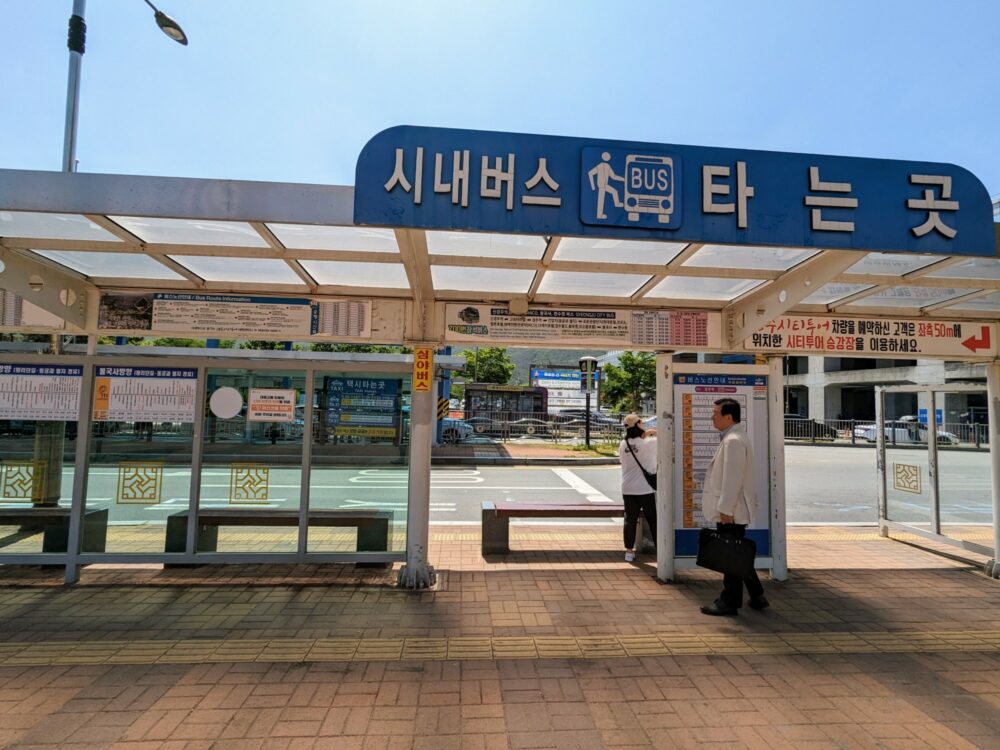
If you picked up a T-Money card in Seoul, you can use it on this bus as well, otherwise you’ll need to pay in cash. The bus runs along the main street through Gyeongju, so just make a note of where your accommodation is so you know where to get off. It’s one of the reasons we chose the hotel we did: there’s a large bridge just before the stop we needed, making for a very obvious landmark!
If you’re anything like me, you’re going to need a little recovery time after a long-haul flight! For that reason, I’ve saved most of the activities for tomorrow: for now, just freshen up, grab some dinner, and get a good night’s sleep in before diving headfirst into things in the morning.
Where to stay in Gyeongju : We loved our time at this cute mini hotel . It was very easy to find, only a couple of minutes from where the bus dropped us off near the Express Bus Station and an easy walk into the centre of town. The manager was super-friendly, and more than happy to look after our bags when we arrived well before check-in time so we could head out exploring straight away. The room itself was spotlessly clean and quite large for South Korea, and I particularly appreciated the coffee machine in the shared kitchen, complete with little takeaway cups so I could grab one on my way out the door. Paired with the good value (₩55,000/$40 USD a night), I’d absolutely stay here again next time I’m in town.
Day 2: Gorgeous Gyeongju
After breakfast, it’s time to head out and see the city’s biggest attractions: a collection of large lumps in the ground.
These aren’t just any old lumps, though: they’re royal tombs and other earthen burial mounts from the Silla dynasty, which ruled much of the Korean peninsula from the seventh to the ninth centuries. They’re part of the wider UNESCO World Heritage site that covers much of Gyeongju’s historic district, and they’re seriously impressive.
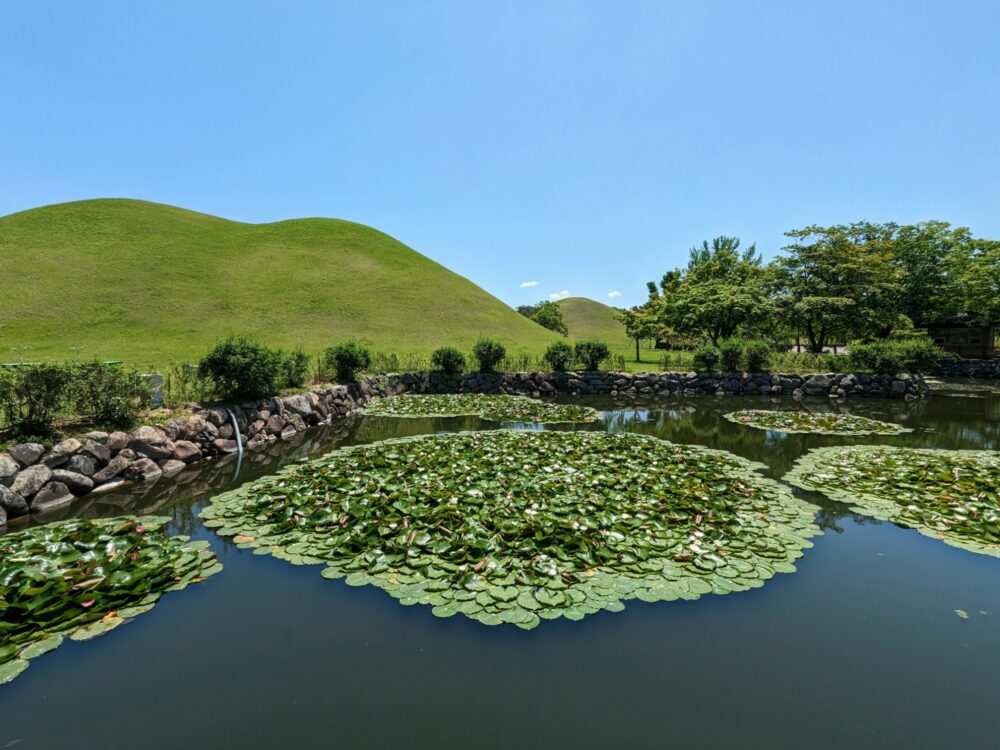
The tombs are in clusters, spread across a series of parks that you can easily walk to and between from any hotel in the city. It’s worth checking them all out, either in one go or just as you explore; they’re really not hard to find!
The most popular area ( the Daereungwon complex) is also the largest, with the most tombs. There are several designated photo spots: they’re much quieter early in the morning if you want a shot without dozens of people in. A bunch of nearby cafes and restaurants make it easy to grab a drink or snack before or after your wanderings.
It’s worth visiting the other tomb clusters that lie slightly further north as well; they’re much quieter, and there’s an interesting small museum inside the Geumgwanchong tomb about Silla history and the construction, excavation, and preservation of the tombs that’s definitely worth a visit.
The museum is free, with written and video information in English. I only ended up in there because I happened to be walking past and saw the sign, but I’m very glad I did!
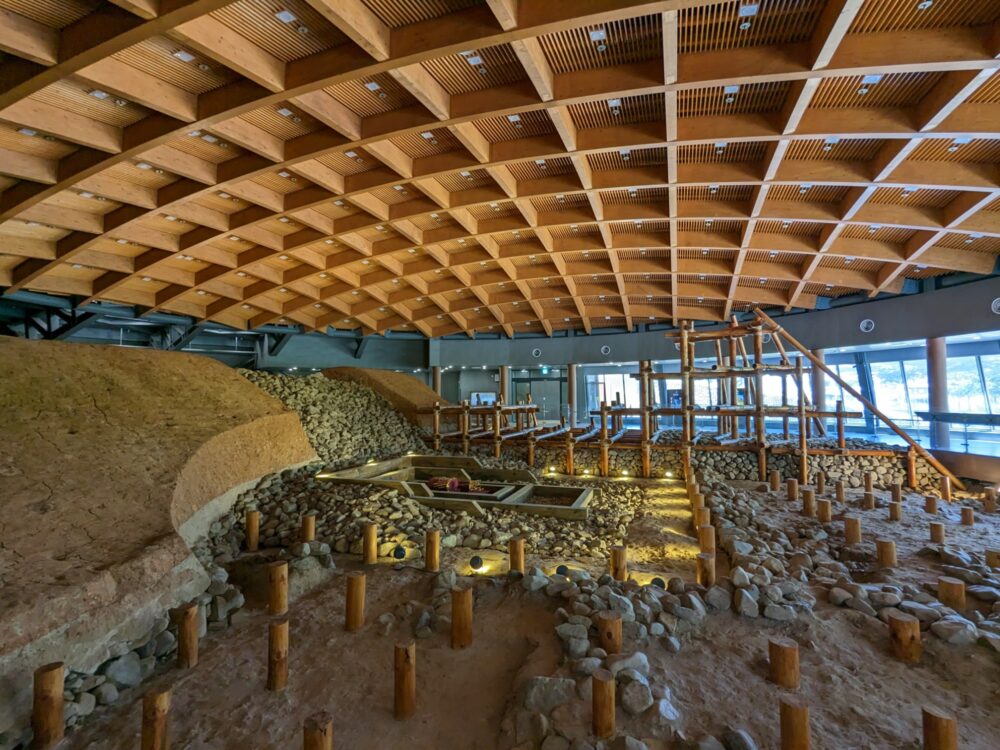
Once you’re done with the tombs, it’s time to go for a stroll down Hwangnidan Road . If you’ve ever seen photos of beautiful wooden hanok-style Korean houses in Gyeongju, chances are this is where they were taken. Most of them have been converted into cafes and shops now, but they’re no less beautiful for it: I ended up walking up and down this street probably a dozen times during my stay, and never tired of it.
Lunch: If you’re feeling peckish by this point, it’s time to stop for bibimbap . If you’re not already familiar with this classic Korean dish, you probably will be by the time you leave the country. Daewha Mandu is a great place to start. The menu at this small restaurant near the start of Hwangnidan Road is simple, and most of the staff speak enough English that you shouldn’t have translation issues! The tuna-based bibimbap was absolutely delicious, but if it doesn’t appeal, there are a few other options including dumplings and tteokbokki , another tasty Korean staple. Order and pay in advance at the counter.
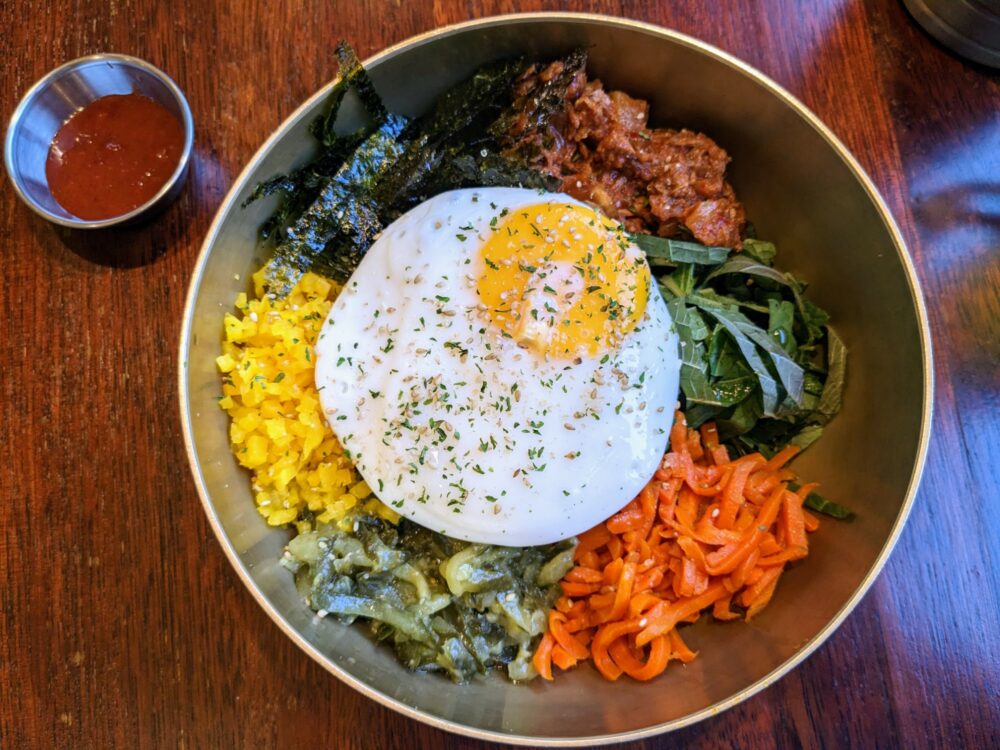
Once you’ve got to the end of Hwangnidan Road, turn left and walk for a few minutes towards the famous Cheomseongdae observatory . Just before you get to the vast park that contains it, though, keep an eye out for a Starbucks that couldn’t be any more Korean if it tried. You’ll see what I mean when you pass it!
The observatory itself dates back to the seventh century, and is the oldest surviving example in Asia or, depending on who you ask, the entire world. You can’t go inside (and not only because the entranceway is at least a dozen feet up the side of the tower), so it doesn’t take long to walk around it.
I was lucky enough to be there in spring, and as interesting as the observatory was, it was hard to focus on it due to the explosion of colour nearby. Fields of flowers lined the walking paths, carved out with convenient photo spots that were in regular use as I wandered past. It was genuinely stunning, so if you’re there at the right time of year, be sure to take advantage.
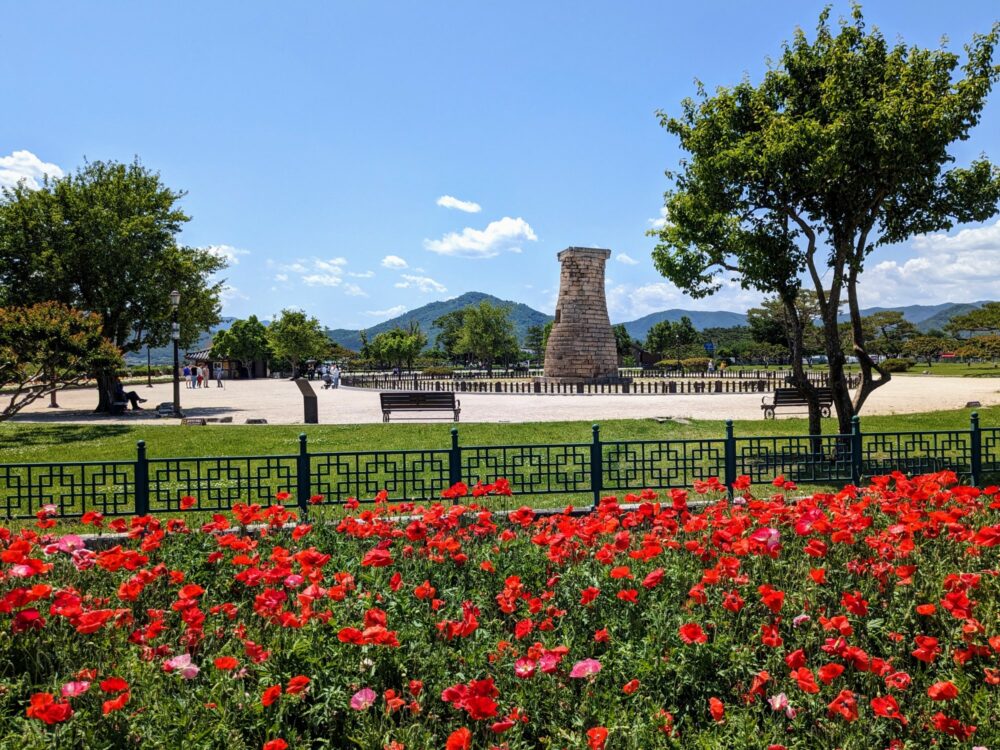
While the observatory is the most well-known historic site in the park, it’s far from the only one. To be honest, it wasn’t even the one I enjoyed the most. For that, keep following the paths south and west towards Woljeong Bridge ; you can either skirt around the edge of the woodland or (better idea) wander through it instead. It’s only a small patch of forest, so it’s basically impossible to get lost, and surprisingly tranquil.
Like many of the attractions in Gyeongju, the original version of the bridge dates back to the Silla dynasty. It’s been fully reconstructed since then, and it’s lovely to wander across, take photos, and admire the views up and down the river.
Be sure to head up to the top level as well; there’s a small gallery up there, complete with Korean comic strips about a famous Buddhist monk, and a kiosk where you can take a selfie and edit it to make yourself look like…well, something. A Silla warrior, perhaps, although it’s kinda hard to tell.
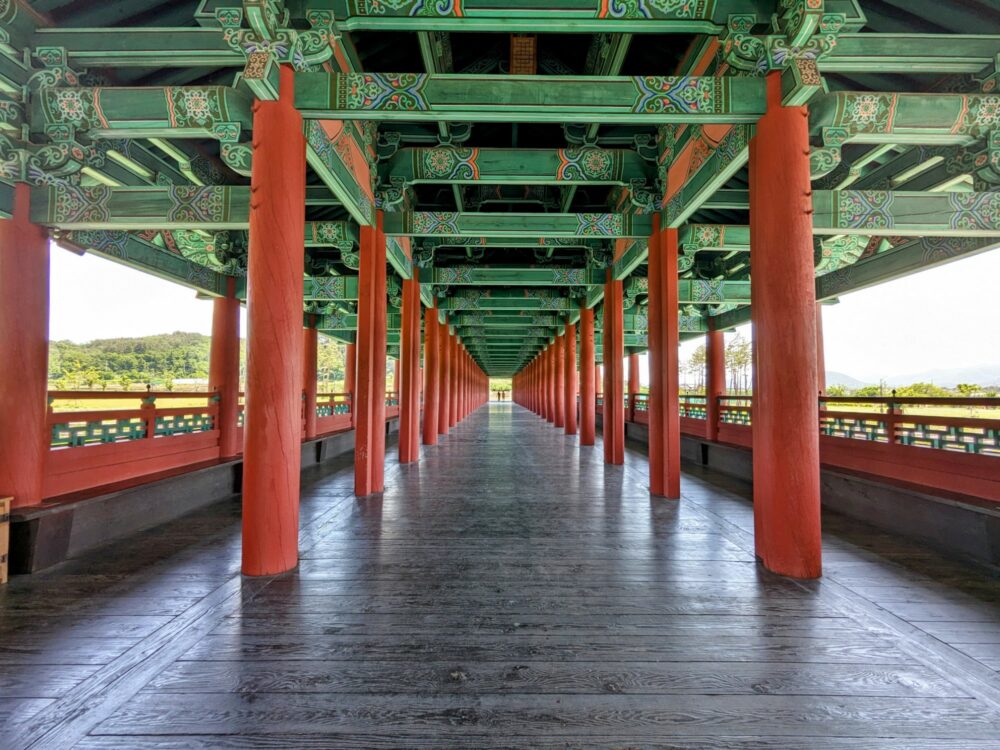
As you were crossing the bridge, you likely noticed a series of stepping stones a little further down the river off to your right. That’s the best way to get back to the other side; it has great views back towards the bridge, and flat rocks where you can stand and take photos while letting other people get past. Just watch your footing if the rocks are wet; they’re not particularly slippery, but you could still fall in if you tried hard enough.
The bridge is lit up at night, so if you happen to be in the area after sunset, it’s worth stopping past again for a different view.
For now, though, you’re very close to the entrance of the Gyochon traditional village. It’s a popular spot, with renovated hanok-style houses that people still live in to this day, and an almost equal number of cafes, restaurants, and places renting hanbok (traditional Korean dress) by the hour for photo opportunities.
It’s a relatively large area, so even if it’s crowded near the main entrance and food area, it’s not hard to find a quieter spot elsewhere. While many of the buildings are private residences, you can go inside a few of them for a better idea of how people used to live. Give yourself plenty of time to wander around here; it’s best explored at a leisurely pace.
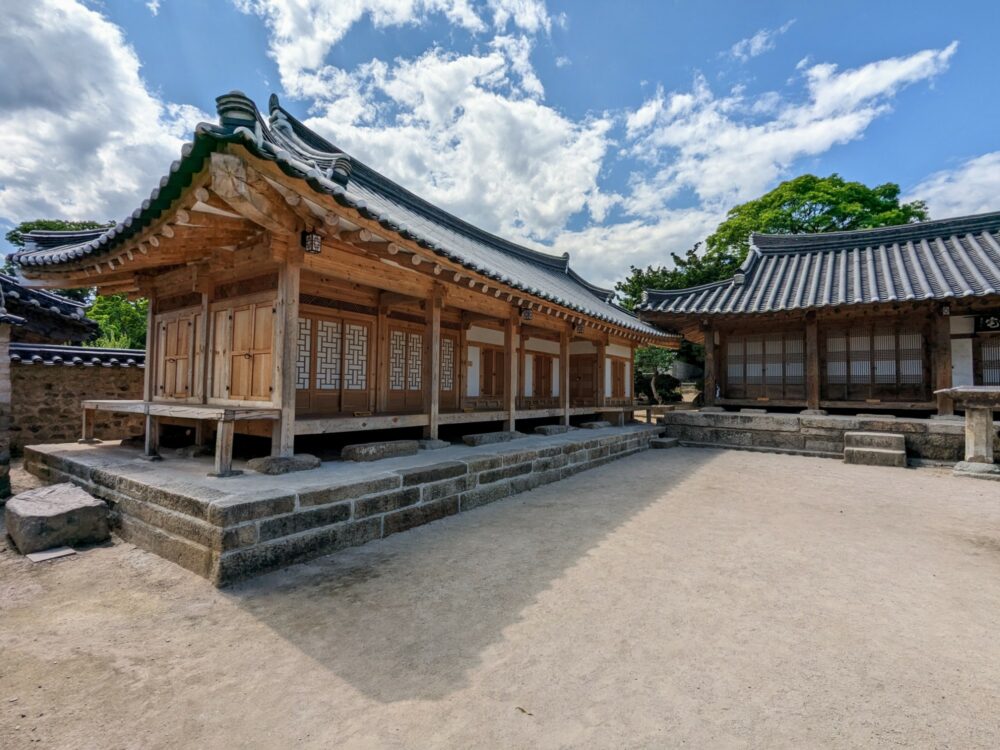
Once you’re done, exit on the eastern side near the woodland you passed by (or through) earlier, and take a stroll back through the park on some of the smaller paths. I really liked this area; if you head towards the Wolseong site, you can walk up a dirt track on (very) small hill just to the north and get a nice overview from the top.
This was once the main royal palace of the Silla rulers, but there’s almost nothing left above ground now. Extensive archaeological work continues to find artefacts at the site, many of which end up in the nearby Gyeongju National Museum . This impressive free museum is devoted entirely to Silla history: if you’ve got the energy to explore today, give yourself at least a couple of hours inside, otherwise walk on past.
Once you’re done, cross the road to another of Gyeongju’s famous attractions, Donggung Palace and Wolji Lake . You may have seen photos of this lit up at night; if the sun is going down by the time you get there, by all means wait around until dark. I think it’s equally lovely during the day, though, and there are far fewer people around. I went in the early evening, an hour or so before sunset, and the light on the buildings and pond was perfect.
The grounds are smaller than you might expect, and as with many historic sites in South Korea, the buildings are replicas of those that once stood here; the originals are long gone. Give yourself an hour or so to walk around the lake. The side closest to town is flat and manicured, while the other side of the lake has a more natural setting, with a dirt trail through the trees and benches to sit and admire the view.
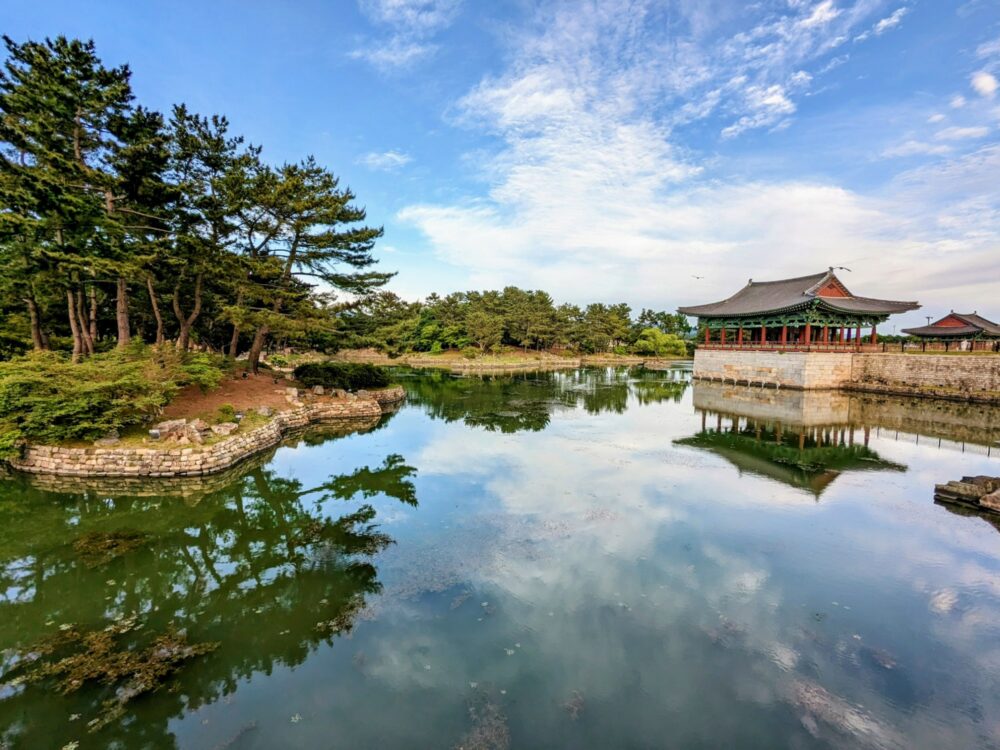
There’s also a small museum near the entrance, which is a good way to kill a bit of time if you’re waiting for sunset. The entrance fee for the grounds is ₩3000 ($2.50) per adult, and last entry is at 9:30pm. Note that there are no pass-outs: if you want to come back later, you’ll need to pay for a second ticket.
And that’s it for the sightseeing today: you’ve definitely earned a drink after all that exploration!
Ice cream: at some point today, stop by Richoya , an ice-cream store on the main (Taejong) road near the top end of Hwangnidan Road. Be sure to order the matcha flavour: it’s what they specialize in, and it’s particularly good!
This place is big on Instagram and Tiktok, thanks to the cute cookies in the shape of Cheomseongdae observatory that come with its desserts. Be prepared to line up on hot days!
Dinner : head back to Hwangnidan Road for dinner: there, or a few streets either side, is where you’ll find many of the better restaurants in town. I ended up at a Japanese place called Sasiseuseso (사시스세소), mostly because I had an unexpected hankering for spicy soup, and it was surprisingly tasty. You can’t go too far wrong with most of the well-rated places in this area, though; just expect the prices to be slightly higher than some other parts of the country, because it’s popular with both domestic and international tourists.
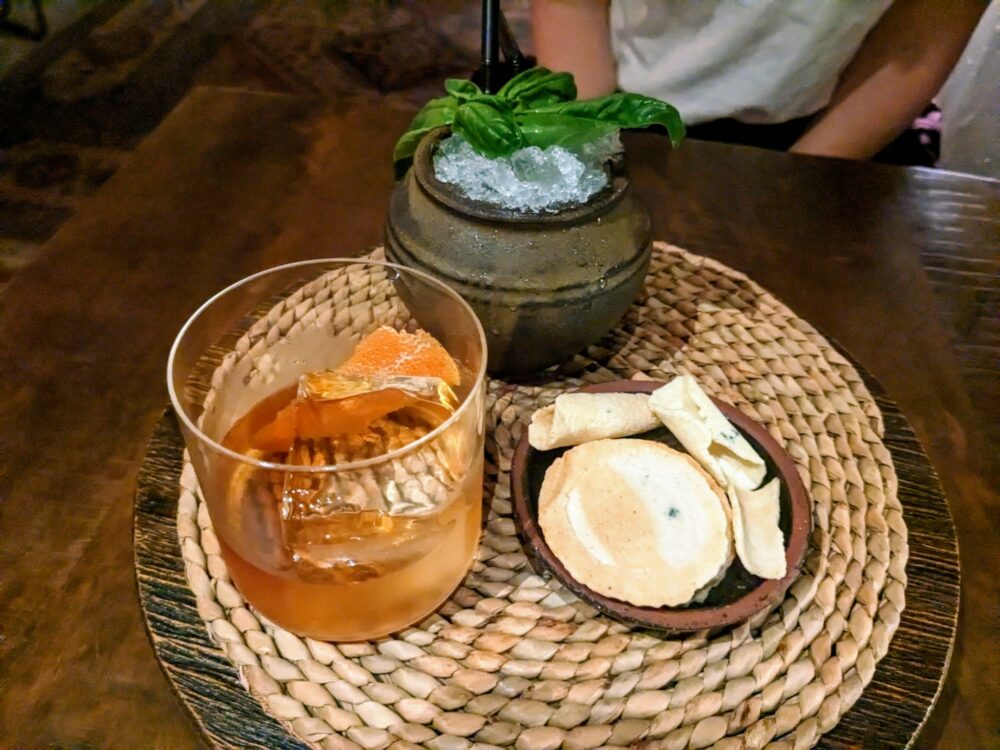
Drinks : if you’re in the mood for those drinks I mentioned, I can highly recommend the cocktails at Bar Boon . They’re not especially cheap, but they’re unusual and very high quality, made with local ingredients by fun, enthusiastic young bartenders who are only too happy to chat. Pull up a stool at the bar, or head upstairs to a lovely cosy area with tables and chairs.

Day 3: Visit Bulguksa and Seokguram Grotto
Today you’re off to Bulguksa Temple and Seokguram Grotto , two famous Buddhist sites that together form another UNESCO World Heritage Site. They’re about 15km (~10 miles) out of town, so you’ll need some kind of transport to get there.
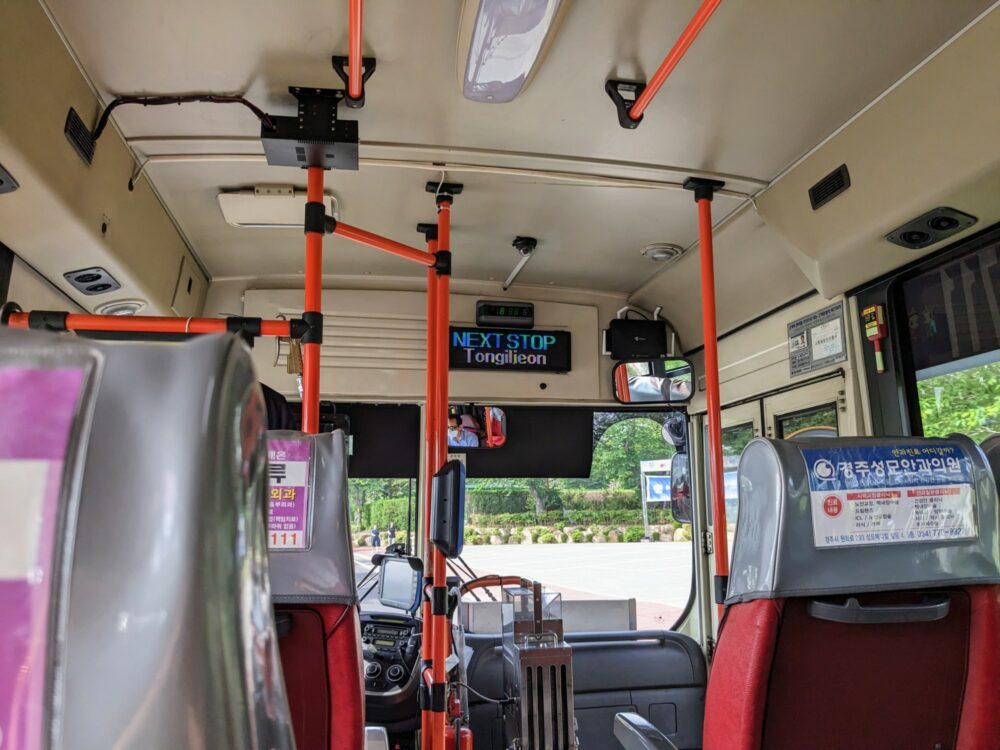
A few different buses run regularly from the Express Bus Terminal, through Gyeongju and out to Bulguksa. Just jump on the number 10, 11, or 700: you can pay with your T-Money card or cash. The buses can be quite busy as they travel through the city, but should be pretty quiet after that.
There’s an announcement and electronic signage in English as you approach Bulguksa, and the bus drops you off on the main road near a cluster of cafes and convenience stores. It’s a good place to get snacks, drinks, and anything else you might want for your time in the park. The entrance is about a five minute walk on a paved path up the hill; there’s plenty of signage around to show you the way.
If you’re pressed for time or don’t feel like dealing with public transport, you can take a taxi to get out there instead. Getting between Bulguksa and Seokguram Grotto and back to Gyeongju shouldn’t be a problem (I saw several taxis waiting in the parking lot at both sites), but your hotel may also be able to arrange for a driver who’s happy to wait.
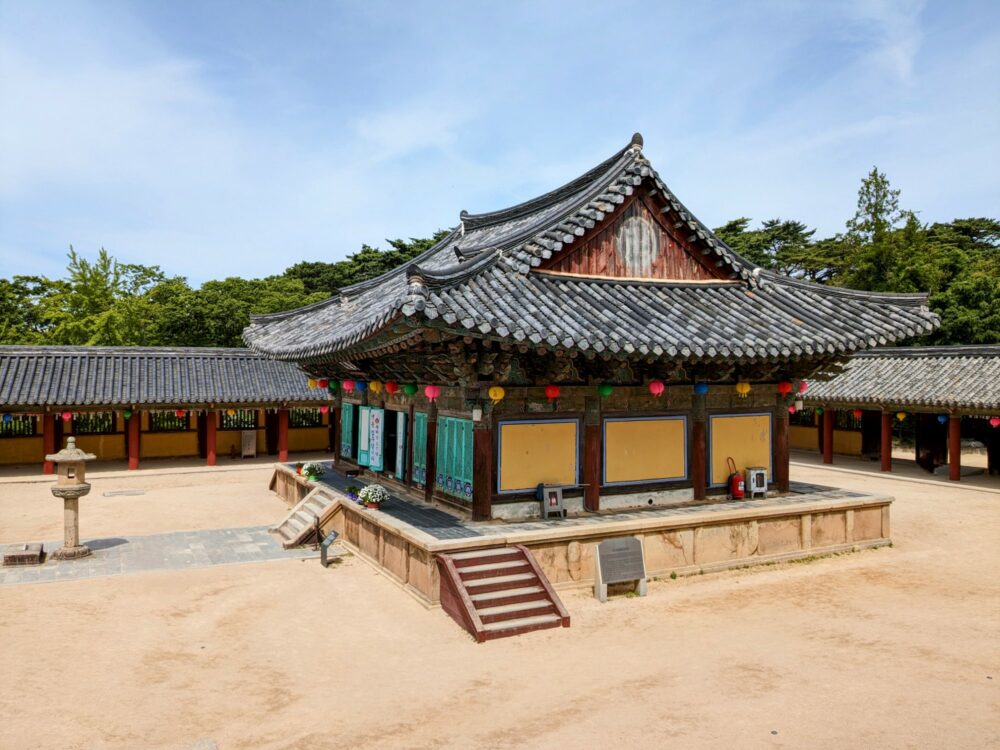
Still a working Buddhist temple, Bulguksa is a major cultural and historic site that dates back mainly to the eighth century, although a small temple is thought to have existed there up to 200 years earlier. All of the buildings in it have been rebuilt after time, fire, and pillaging took their toll, but while they may not be original, they’re far more impressive because of it.
Entrance fees were abolished last year, so although you’ll still see the ticket office to the right of the entrance gate, there’ll be nobody in it. Just walk through the entranceway like everyone else!
Hours vary throughout the year, as below: we arrived just after opening time and had the place largely to ourselves for the first hour or so, but by the time we left in the late morning, the crowds were definitely rolling in. If you don’t mind the early start, get there early to avoid the tour groups, otherwise take a more leisurely approach and just accept a few more people in your photos!
Bulguksa opening hours:
- February: 7:30am to 5:30pm
- March to September: 9:00am to 6pm weekdays, 8:00am to 6pm weekends
- October: 7:00am to 5:30pm
- November to January: 7:30am to 5pm
Before you even get to the buildings, you’ll find yourself in a peaceful natural setting, with a bridge over a small stream and lake that’s surrounded by trees. From there, you just follow the path up the gentle slope towards the main part of the site.
Colourful lanterns decorate several of the buildings and courtyards, and there’s a large collection of stone cairns that have been created by those in search of a little extra good luck over the years. Speaking of good luck, don’t forget to rub the golden pig in front of the Geungnakjeon building while you’re there!
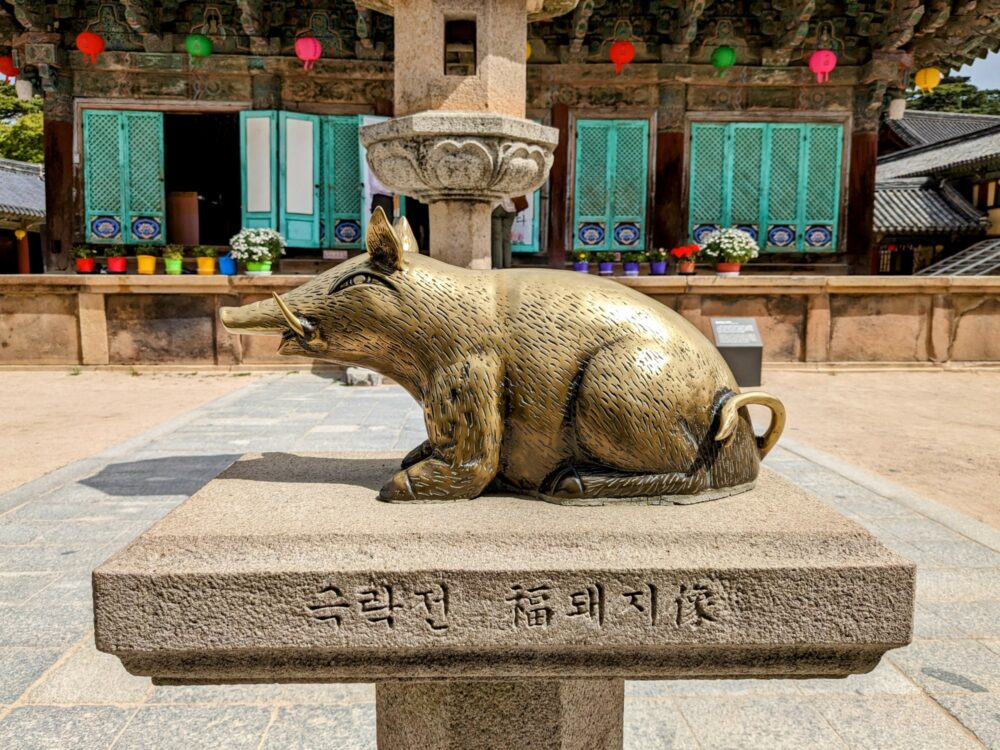
It’s not a huge area, so depending on your interest levels and how fast you walk, give yourself an hour or two to fully explore.
Once you’re done, retrace your steps through the site, taking in anything you missed along the way, until you end up back beside the ticket booths and main carpark. From here, you have a choice: you can either head back down to the main road to pick up some lunch at one of the cafes, or continue on to Seokguram Grotto.
To get between Bulguksa and Seokguram Grotto, take the number 12 bus from either the main road or parking lot. It runs once an hour, departing Bulguksa at forty minutes past the hour, and leaving Seokguram Grotto on the hour. There’s also a walking trail that runs between the two and takes about an hour, but it’s currently closed due to storm damage.
Seokguram Grotto
Part of the same UNESCO site as Bulguksa, but sitting around 3km away as the crow flies, Seokguram Grotto dates from around the same period in the eighth century as the main buildings at Bulguksa. It’s much smaller than the main temple complex, consisting of a stone grotto holding a large carved seated Buddha that’s 3.5m (11.5ft) tall. Several other, smaller religious figures are carved alongside from both Buddhist and Hindu tradition, all behind floor to ceiling glass to protect them from over-enthusiastic humans.
From the carpark where the bus or taxi drops you off, it’s a roughly 500m walk along a gently-sloping gravel path through the forest to the grotto. Before you do that, though, you really should stop at the large bell on the left as you walk from the carpark.
For only ₩1000 (~75c), you get to ring the bell, donating to the upkeep of the site while making a spectacularly loud noise that will get dozens of people to stop what they’re doing, turn around, and look confusedly at you. If that’s not worth the money, I don’t know what is.
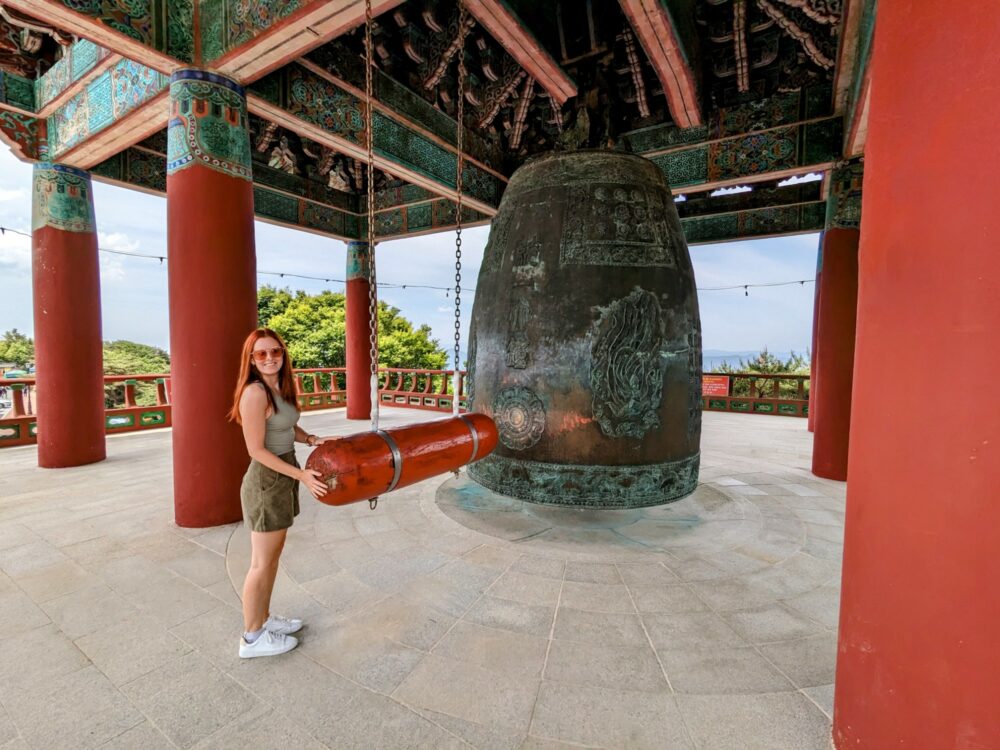
After the ringing in your ears stops, it’s time to head to the grotto. As with Bulguksa, there’s no longer an entrance fee for Seokguram, so just follow the signs towards and down the gravel path. Once you get to the other end, there are a few steps up to the grotto itself: you’re very unlikely to have the place to yourself, but depending on the time of day, the line will either be just a few other people, or…a lot more than that.
The grotto itself is small, with signs outlining expected behaviour. This includes not taking photos inside, so out of respect, I didn’t do that. You’ll likely only get a minute or less in front of the Buddha statue, but there’s nothing stopping you from re-joining the line for another look if you’d like one.
Take some time to admire the views towards the mountains in the distance, before retracing your steps along the path and back to the carpark. You’ll likely spend an hour or so in total at Seokguram, although that does depend on how long the line at the grotto is.
As I mentioned earlier, the bus from here leaves on the hour; when it drops you off at Bulguksa, check the printed timetable at the stop to see how long you’ll need to wait for a second bus back to Bulguksa. You can take a taxi from either site if the wait is too long.
Traditional Meal
Once you’re back in Gyeongju and feeling hungry, it’s time for what may well be the most impressive meal of your time in South Korea. It’s a big call, given how amazing the rest of the food in the country is, but I’m pretty confident about my pick here. It’s the ideal way to try a huge range of local dishes without having to order a lot of anything, and is remarkable value for money.
Hongsi Hanjeongsik is a traditional restaurant that’s well away from the main tourist strip around Hwangnidan Street, but still easily walkable from most parts of town, and only a few blocks from the hotel where we stayed . If it feels like you’re walking through a residential neighborhood to get there, that’s because you are!
It’s open for both lunch and dinner, from 11:30am to 3:30pm, and then again from 5:30pm to 9:30pm. The set menus are the same either way, with two different variations, so just go whenever suits your hunger levels. We didn’t book in advance on a weekday in May, and had no problem getting a table.
There’s a translation on the menu and staff speak good English as well, but this is definitely a more traditional experience than you’ll likely have elsewhere. By that I mean that you’ll be sitting on cushions on the floor at a low table, and that unless you’re already very familiar with traditional Korean food, you’re unlikely to recognize most of the 20+ dishes that show up!
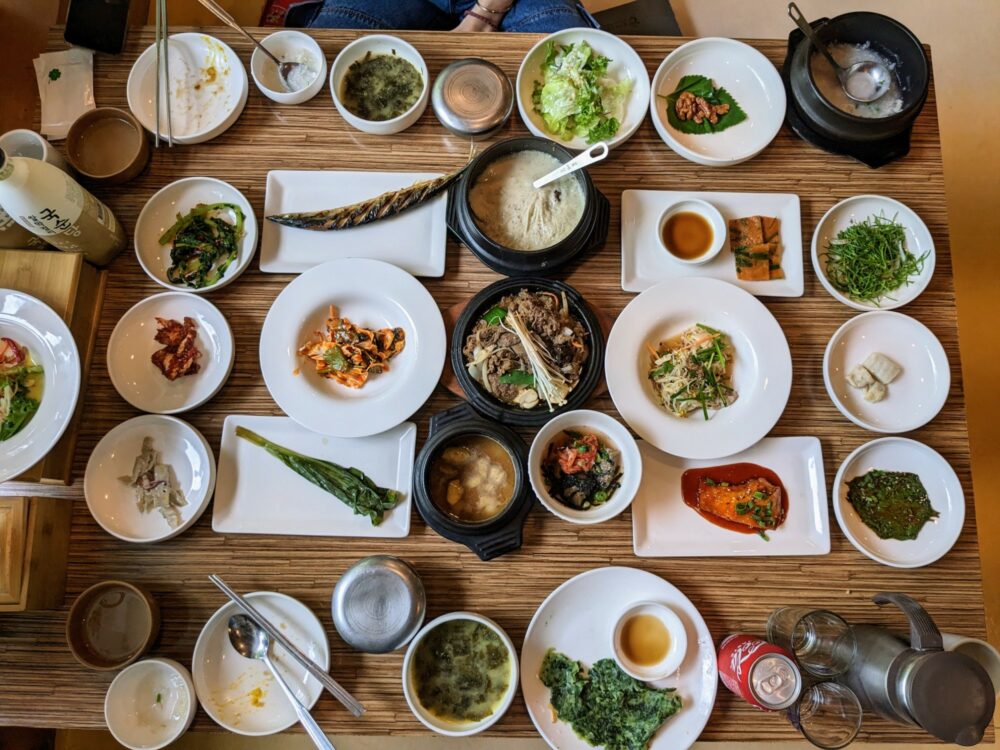
From candied walnuts and pig feet salad to acorn jelly and grilled shark, there was a lot on the menu that I’d never heard of. I didn’t enjoy everything equally, but there was nothing that I genuinely disliked, and plenty that I really loved.
Go in with a sense of adventure and a willingness to try at least a little bit of everything, and I promise you won’t be disappointed by the experience. Washed down with plenty of makgeolli (a delicious milky rice wine that’s one of my favourite alcoholic beverages anywhere in the world), it was definitely a meal to remember, for all the right reasons!
Day 4: Explore Hongdae, Seoul’s Most Vibrant Neighborhood
Check out of your hotel and retrace your steps back to the KTX station at Singyeongju: it’s time to take the train back to Seoul . I’d suggest an early to mid-morning departure, so that you’re left with a full afternoon to explore Hongdae, the most hipster of hipster neighbourhoods in the city.
This is where aspiring K-Pop stars can be found performing on the streets each night, the latest weird fashion trends come and go in the blink of an eye, and the buzz and neon glow of the city never really seems to stop. It also makes for a great base to explore the rest of Seoul, well-connected by metro and bus to anywhere you want to go.
Start your time in Hongdae by dropping your bags at the hotel (we stayed here ), then checking out some of the street culture that makes it famous. Street art is everywhere in this part of town, some of it by seriously talented artists. You’ll spot everything from small pieces in tiny alleyways to huge pictures covering the entire side of a building; I found some of the best in the small side streets around Fashion Street, but locations change all the time for obvious reasons, so don’t be afraid to wander.
If you came to Seoul for some retail therapy, you’re in for a treat. Hongdae is one of the homes of shopping in this city, with everything from cute little boutiques to enormous multistorey department stores and pretty much anything you can imagine in between.
Start out at AK Plaza, which is alongside exit 4 of the Hongdae metro station and includes a wide range of well-known brands across its five floors. I spent an hour in here one rainy afternoon, having gone in only looking for a t-shirt and walked out with three of them, having tried on about 15 different things in the MUJI store alone!
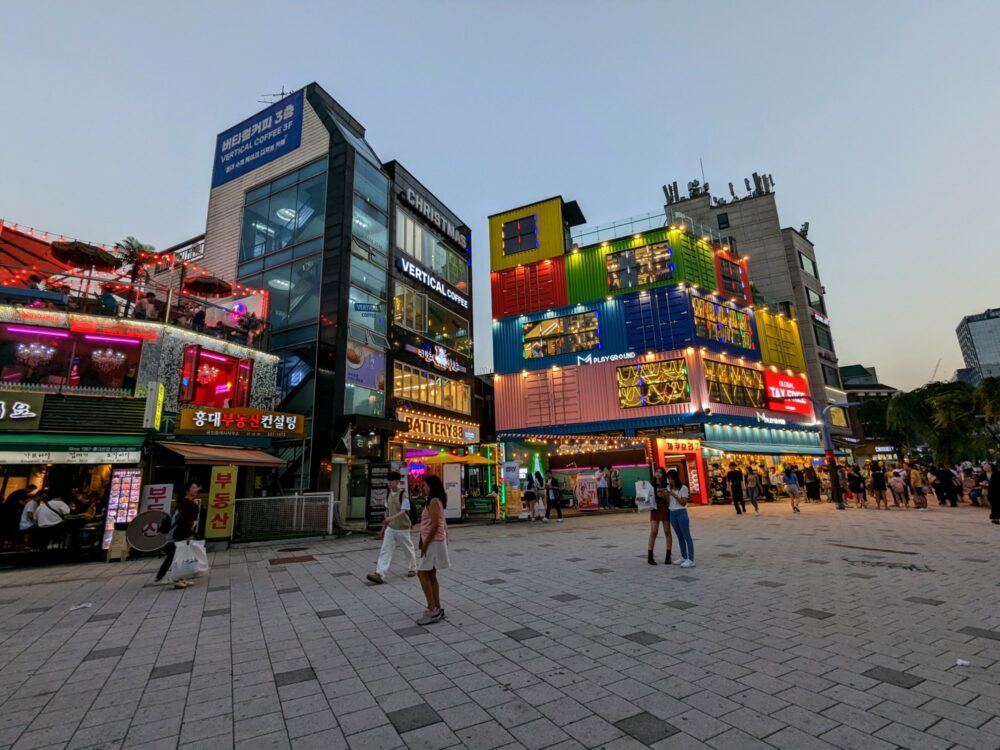
From there, it’s really up to you. Vintage threads, tacky souvenirs, discounted clothing in a store made from (fake) shipping containers, even several floors of fashion eyewear, it’s all in Hongdae, often within a few feet of each other.
Speaking of AK Plaza, it’s the ideal kicking-off point for a stroll along the Gyeongui Line Forest Park . As in many parts of the world, city leaders in Seoul decided to turn a disused railway line into a walking trail. They’ve done a great job, creating a narrow green oasis that stretches for over six km (3.7 miles) northwest to southeast, with AK Plaza roughly a third the way along.
On a nice day, you’ll see plenty of people out walking their dogs, kids, and each other along the paved paths. Keep an eye out for the Gyeongui Line Book Street , a section dedicated to the joy of reading. Sadly many of the little kiosks and book stores didn’t seem to be open any more when I walked past, but the public artwork is still there regardless.
There are endless options for cafes and restaurants along pretty much the entire length, so walk for as far as you feel like, then branch off a block or two in either direction for some refreshment.
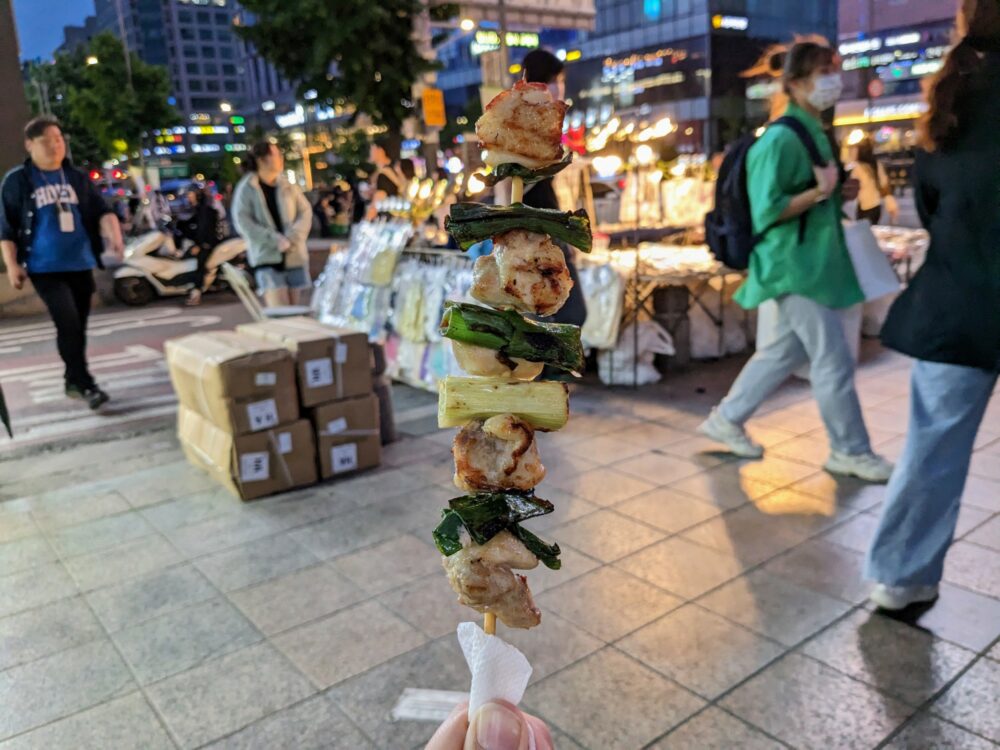
Once night falls, the already-bustling streets come even more alive. Night markets pop up, some stretching for multiple blocks, with food trucks and unidentifiable objects for sale in equal measure. Make sure you’re wandering around on Hongdae Street at this time; in some sections of this long, semi-pedestrianized thoroughfare, you literally can’t walk a block without coming across a new group of street performers performing choreographed dance moves to an ever-changing crowd.
Chicken and beer is a huge thing in Korea, so much so that there are entire streets dedicated to it. You’ll find several chicken and beer restaurants basically alongside each other on Hongdae Street, packed with patrons from late afternoon onward. They’re all pretty good, but I preferred the crispy, spicy drumsticks at Kyochon Chicken, a couple of blocks back from Hongdae Street and just off the main Yanghwa Road. They were so delicious, I went there twice!
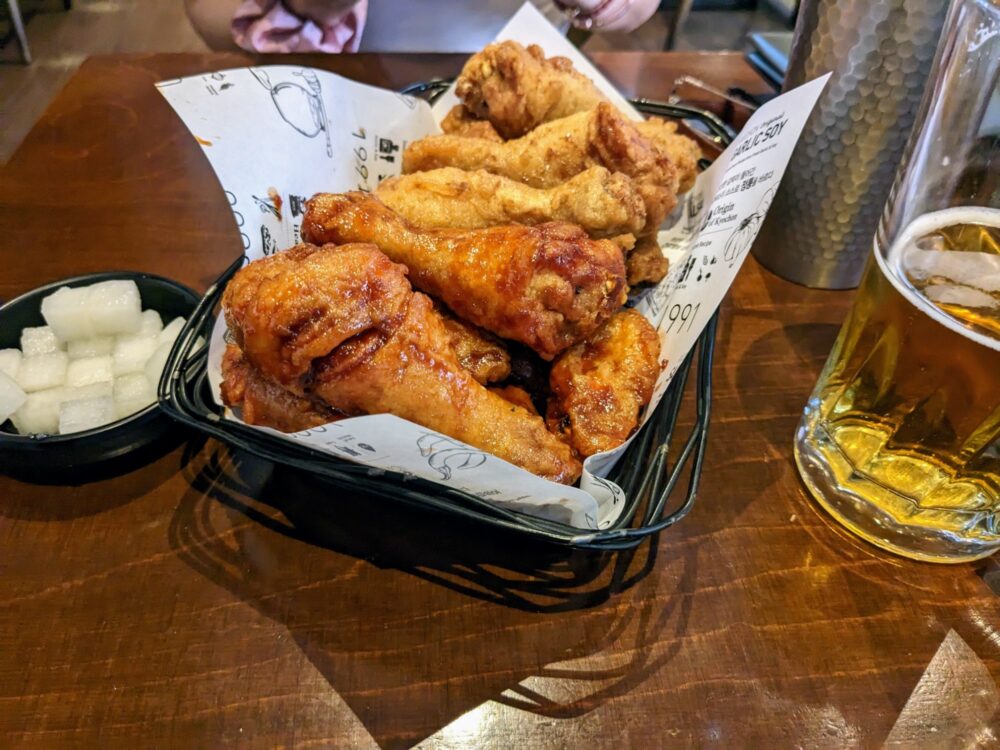
Speaking of beer, while the mass-market Terra and Cass are perfectly drinkable and pair well with sunny days and/or fried chicken, there’s a growing craft beer scene in and around Hongdae as well. Head to Brew Heim, Craft One, or Deeper to sample some of the best local and international options.
Once you’ve downed a sufficient number of those craft beers, it’s time for karaoke . This is serious business in Korea, with several 24/7 multistorey buildings devoted entirely to it on Hongdae Street alone. Just look for the signs and head inside: you’ll get your own soundproof booth, with a vast array of English songs available, plus Korean and often Japanese hits as well. You pay by the hour, with a minimum spend on food/drink as well.
After you’ve eaten, drunk, and sung your heart out, finish the night at Zzang Games . This huge arcade has pretty much everything, from dance mats and shooting games to driving simulators and a wide range of those endlessly-frustrating machines where you try to grab soft toys and other prizes using a mechanical claw. Entry is free, you just pay for each game you play.
Where to stay in Hongdae : We splurged a bit for our time in Hongdae, and this stunning hotel couldn’t have been more worth the money. It really is one of the best places to stay in the city, and considering that, is pretty good value. Our modern, stylish room had amazing views, which were bettered only by those from the rooftop bar; whether you drink there or not, you definitely have to go up to take photos at sunset! We even got a free bottle of wine, a local travel-sized game to play and keep, and a pack of fancy toiletries. Despite being right in the heart of this bustling neighbourhood, the sound insulation was so good that I couldn’t hear any outside noise at all. The hotel gym was larger and much better equipped than almost any other I’ve used, and while the in-room coffee was very good, the brews from the downstairs café were even better! I’d stay here again in a heartbeat.
Day 5: Historic Seoul
If yesterday was all about modern-day Korea, today focuses firmly on the country’s past. Despite being such a trend-setting city in many ways, Seoul’s links with its history are never far from the surface.
There are five famous royal palaces, for instance, all conveniently located quite close to each other. Unless you have a lot of stamina, though, I’d suggest not trying to visit them all in a single day: it’s a lot of walking, and there’s a good chance you won’t appreciate much of what you’re seeing by the end of the day!
Instead, I’ve selected the three must-visit palaces, leaving the other two as options if you have extra time or want to skip out on some of the other activities I mention in Seoul. This gives more time to explore each one, as well as take in all of the other things to do nearby without being too tired to enjoy them.
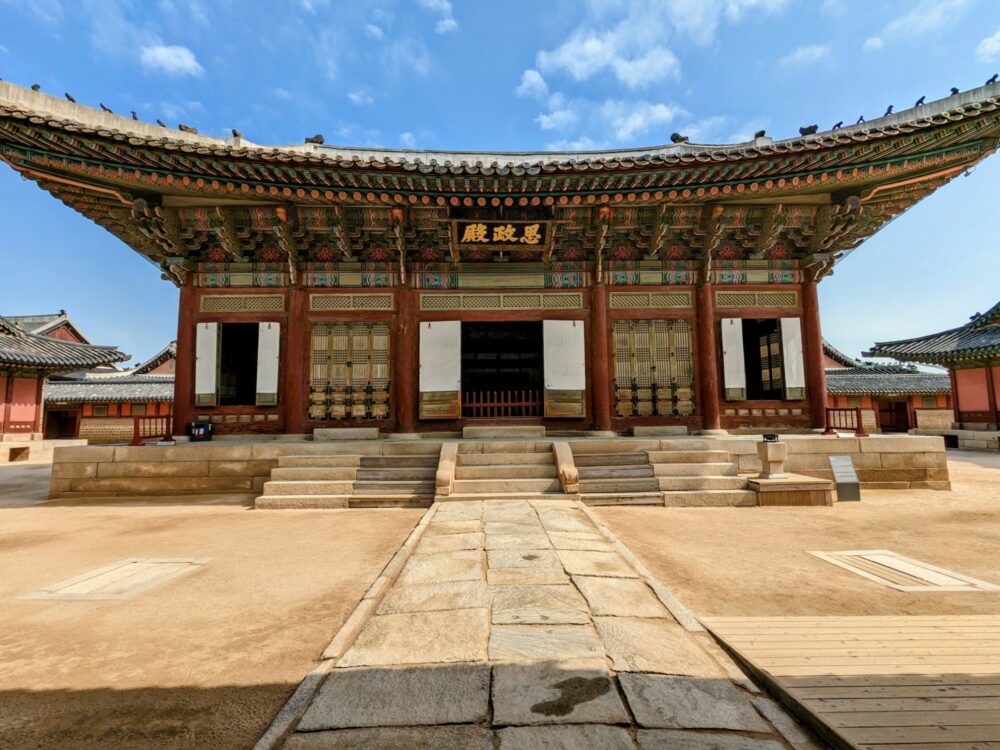
Let’s start with Gyeongbokgung Palace . It’s the biggest and most impressive of the five, first built in 1395 and stretching over an impressive 100 acres (nearly 4.5 million square feet)! To get there, take the metro to either Gyeongbokgung Palace station (exit 5) or Gwanghwamun station, exit 2. Once you emerge at street level, it’s impossible to miss. Do note, however, that it’s closed on Tuesdays.
You can either pay for an individual entry ticket (₩3000), or buy a pass that gives access to all five palaces for ₩10,000. It’s valid for three months, and assuming you’re planning to go to Changdeokgung palace (below), will save you money. Anybody wearing hanbok gets in to all of the palaces for free: it’s a popular pastime, and there are dozens of nearby shops renting this traditional Korean attire by the hour or day if that’s something you’d like to do.
A ceremonial changing of the guards takes place at 10:00am and 2:00pm each day; I’ve been to many of these around the world over the years, and this is one of the most impressive. Because of that, it definitely attracts the crowds, who tend to arrive just before the ceremony and then spend the next hour or two exploring the site.
For that reason, I’d recommend arriving around opening time at 9:00am and heading straight for the gardens and pond at the rear of the complex, so you can enjoy the peaceful surroundings without hundreds of other people around. Once you’re done there, just work your way back towards the main gate, being sure to arrive at least 15 minutes before the parade starts so you can get a good spot along the roped-off area.
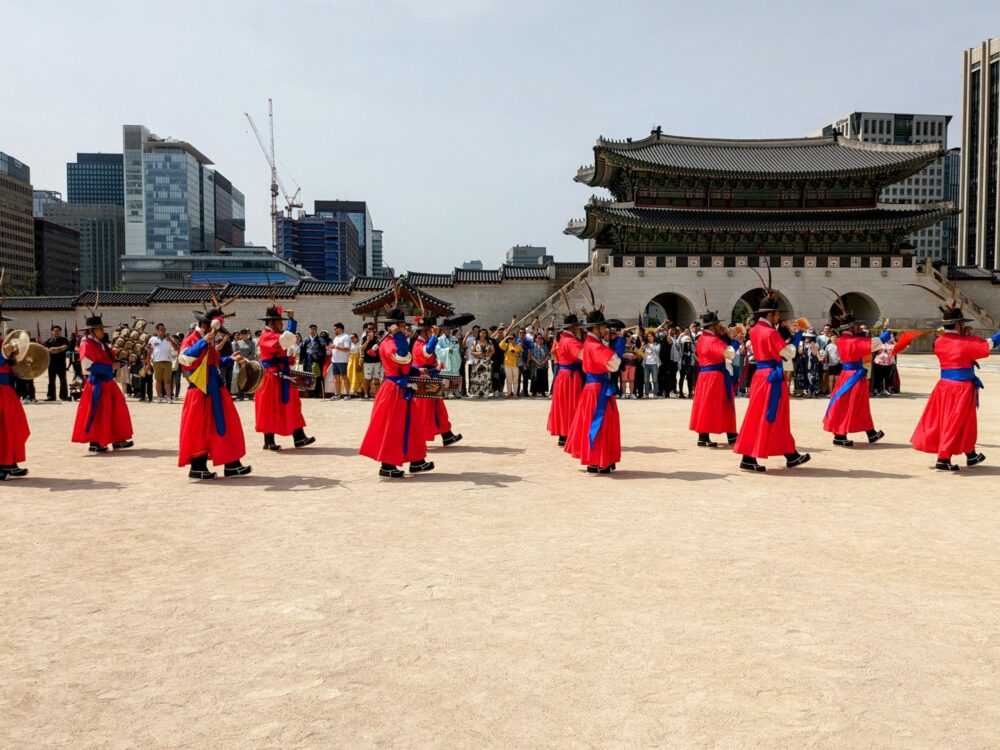
Like so many of the historic sites in Korea, nothing remains of the original buildings. They were burned to the ground during the Japanese invasions in the 1590s, and after being rebuilt in the nineteenth century, were then systematically destroyed by the colonial government during the Japanese occupation in the early 1900s. Only ten buildings survived that destruction, with everything else being rebuilt since 1989. They’re still stunning, of course; they’re just not original!
Once you’ve taken in the changing of the guard, which takes about 15 minutes, finish up looking around the front section of the palace and then head out the main gate. It’s time for some more delicious food!
Lunch: if you’re looking for an unusual place to eat with few other foreigners, head to Tosokchon Samgyetang . It’s only a short walk from Gyeongbokgung Palace, and has been serving up its famous ginseng chicken soup for the last several decades. It’s a popular spot, which is why we skipped breakfast that day and got there around 10:30am for an early lunch instead. The restaurant opens at 10am, and lines start forming outside soon afterward. We went for the black chicken, which looks unusual but doesn’t affect the taste, along with a seafood and scallion (green onion) pancake and the obligatory sides of kimchi and pickled garlic. The chicken was super-sort, falling off the bone, and the broth was delicate and delicious. There’s even a useful guide (in English) on how to tackle the meal correctly, which we definitely appreciated: we’d have had no idea otherwise! It cost a total of ₩47,000 for two ($35 USD): not the cheapest meal we had in South Korea, but absolutely worth it for the experience.
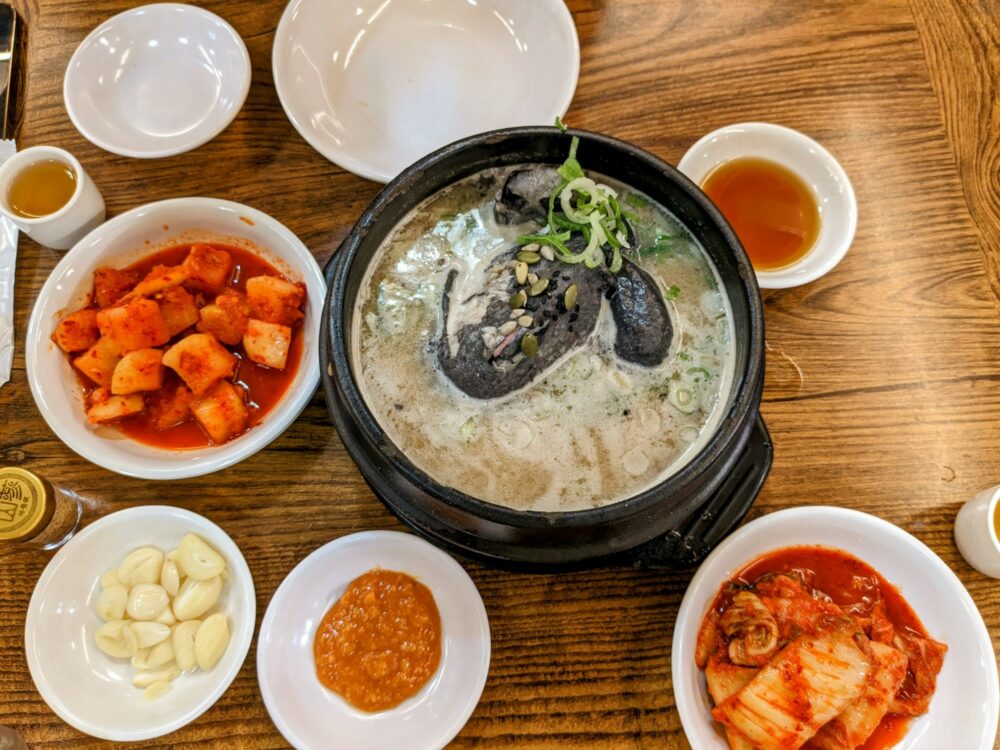
Once you’re done, it’s time to work off some of that tasty soup with a bit of a walk. Your next stop is Bukchon Hanok Village , a spot that’s become Insta-famous in recent years for its beautifully aesthetic restored houses that date back to the Joseon era, wedged tightly together on the side of a small hill. It’s about a half-hour walk away, on the other side of Gyeongbokgung Palace.
As with most great views the world over, there’s a bit of effort required to get them. In this case, it’s a fairly steep climb up the village streets to the top of the hill, so you can get those long, lovely views back down the narrow alleyways. The famous photo spot is helpfully marked on Google Maps.
You don’t need to spend a lot of time here; because people still live in most of these houses, there’s not a lot to see beyond the elaborate facades. That said, it is worth having a look around beyond that singular photo spot: things get much quieter only a short distance away, and the buildings are just as pretty.
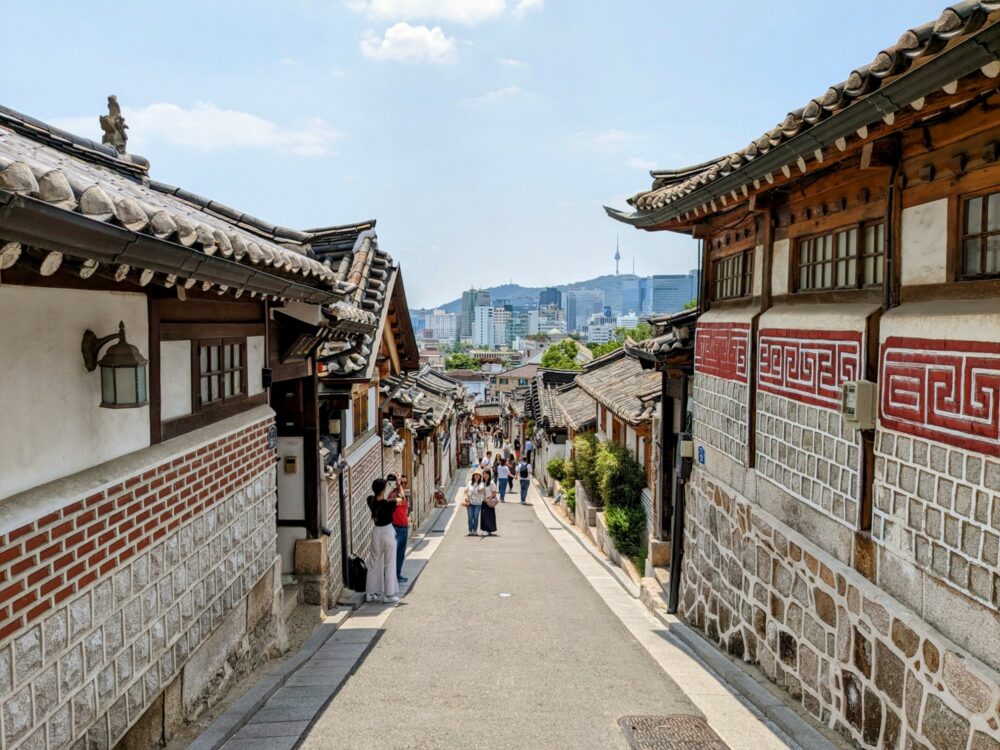
Moving on, it’s time for Changdeokgung Palace : the entrance is about a 15 minute walk from Bukchon village. If it’s a hot day and you’re in need of refreshment, stop off at Cafe Onion Anguk along the way: this popular café is famous for its cakes and other baked goods, although I had no idea of that when I popped in for a coffee and wondered why the line was so long! It moved quickly, though, and it’s such a lovely building that I didn’t mind the wait.
The palace itself is large and reasonably interesting, but for most people, it’s the Secret Garden inside that they’ve really come to see. Entry to the garden is only permitted as part of a guided tour, which is offered in Korean, English, and Japanese.
Tickets cost ₩3000 for the palace and a further ₩5000 for the secret garden: both are included in the palace multi-pass I mentioned earlier, but you do need to exchange the voucher in the booklet for a timed ticket on a guided tour. The palace and garden are closed on Mondays.
The English tours run at 10:30am, 11:30am, 2:30pm, and (other than Jan/Feb), 3:30pm, and take about 90 minutes. With that in mind, I’d suggest booking yourself on the 2:30pm tour, so you don’t have to rush to get there and have plenty of time to explore the palace grounds beforehand. There are 100 places available on each tour, with half able to be booked online up to six days in advance, and the others available on a walk-up basis.
If you didn’t manage to get yourself one of the prebooked slots, I’d suggest arriving at the palace by 1:15pm. That way, you can go straight to the ticket office for the secret garden, book yourself on the next available tour, and then explore the rest of the grounds while you wait.
The gardens themselves are quiet and peaceful, a lovely little slice of nature in the middle of a metropolis. Much of the area is quite manicured, with ponds and small buildings, but the final 15 minutes or so of the tour goes through a more natural, wooded area. This is also the steepest part of the track, although that’s really only by comparison with the dead-flat path that precedes it.
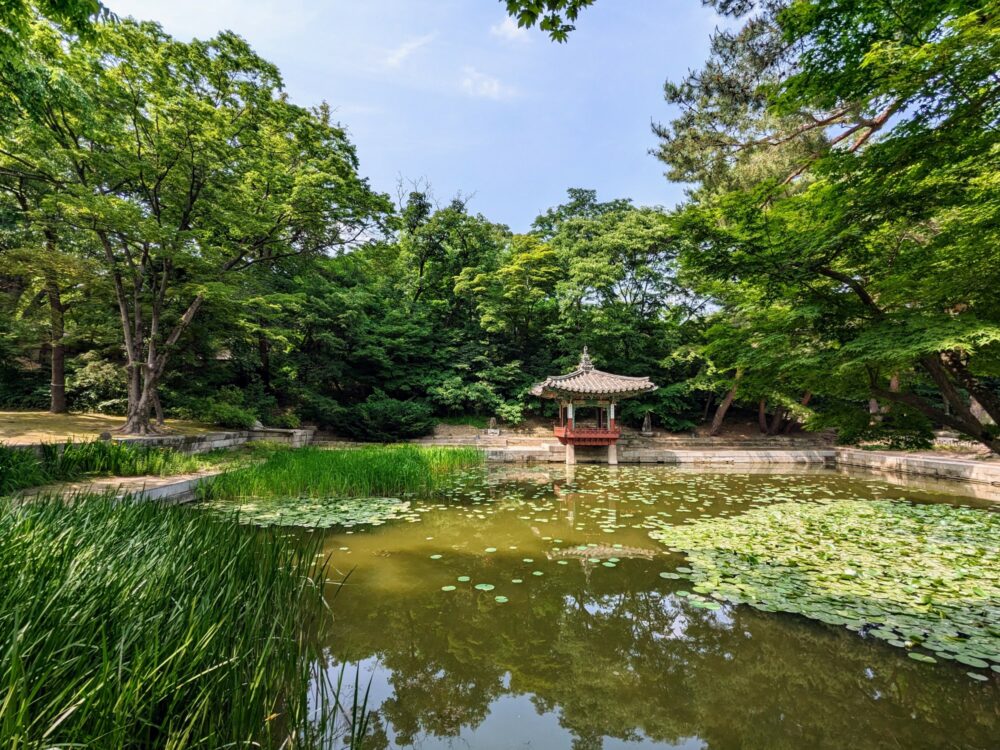
You finish the tour back close to where you started: once you’ve seen everything else of interest in the palace, it’s time for the final attraction of the day: Changgyeonggung Palace . Far less-visited than the previous two palaces, it has a much more natural, woodland feel, with several lakes and reservoirs, and trails that branch off in various directions.
Conveniently, you can access it via a small gate at the back of Changdeokgung Palace, so you don’t need to go all the way back out and around to the main entrance. It’s the cheapest palace to enter, at just ₩1000 (again, entry is included with the multi-pass), and is also closed on Mondays.
There’s a particularly photogenic spot inside this palace, one that we just happened to stumble upon as we walked past. Stone steps lead down to a large courtyard that was once a residential area for the queen and concubines, which are flanked by large trees. With the contrast of the city’s skyscrapers clearly visible in the distance, it’s one of my favourite photos from my entire time in Seoul.
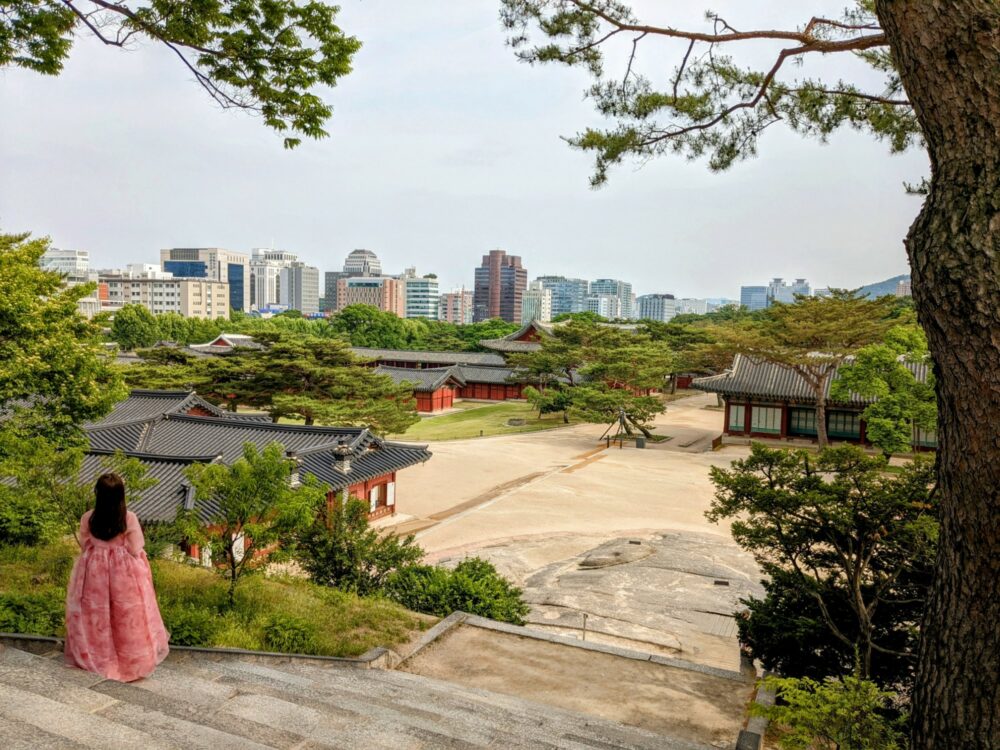
We chose to explore the palace grounds at a leisurely pace, taking about an hour to work our way around and ultimately out to the main entrance/exit gate on Changgyeonggung Road. From there, the number 7101 bus runs regularly back to Hongdae and takes about 45 minutes: it’s faster and easier than walking back to a metro station.
Day 6: Cultural Seoul (and Market Madness)
Today, you’re off to Insadong , which is Seoul’s cultural heart and easily one of my favourite neighborhoods in the city. I was surprised how much I loved it here: it’s the perfect place to go shopping for one-off souvenirs that you won’t find anywhere else, eat in little family-run restaurants, and just wander around getting lost in the cobbled alleyways that snake off the main street.
It’s not just about art and tradition, though: tucked between antique stores and tiny boutiques selling beautiful stationary, you’re just as likely to find a hipster coffee shop as an art gallery. This area is ideal for exploring on rainy days; I kept getting caught in showers during the day I spent here, which just gave the perfect excuse to duck inside a shop or spend a bit longer sipping that coffee!
The neighbourhood itself is close to where you were yesterday, a little south of Gyeongbokgung and Changdeokgung palaces. Aim for Jonggak station on the metro to start your day, making sure to check out the small “solar” garden inside the station before heading out onto the street.
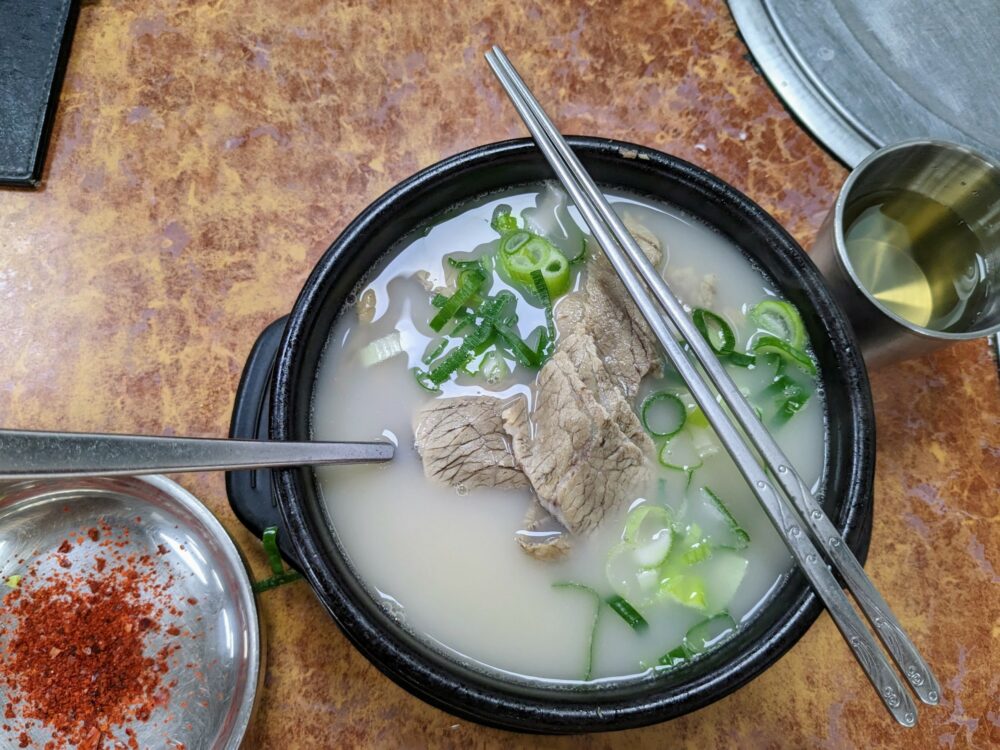
Like the day before, we decided to forgo breakfast in favour of an early lunch, this time at Imun Seolnongtang . Famous for the ox-bone soup that they’ve been turning out for over a century (so much so that they got a mention in the Michelin guide), the place is slightly tricky to find and resembles a school canteen on the inside. It really is all about the food. There are only three options on the menu, so it’s not hard to figure out what to order even though there’s not a lot of English spoken. If you go for the soup (and you should), don’t be afraid to be heavy-handed with the sides: the broth is quite bland by itself, with the idea that you mix and match to exactly your preferred flavour. We paid ₩13,000 each for our soups.
Once you’re done, the best way to experience Insadong really is just to wander without a lot of intention, both along the main street that’s lined with galleries and boutiques, and the numerous alleyways that spider off from it. I’d recommend taking a near-empty backpack with you; there’s a good chance it’ll be full by the time you leave! We filled ours with lovely ceramic mugs, both as gifts and to keep as souvenirs: I’m sipping my morning coffee from one as I write this.
One place that’s particularly worth going, though, is Ssamzie-gil , a four-storey open air shopping mall that’s crammed full of wonderful little stores that mostly seem to sell one specific type of item. You can (and we did) lose plenty of time inside here; we walked away with various unusual earrings, pens, and other random souvenirs that we hadn’t seen anywhere else, and could have bought a lot more!
When you’ve worked up an appetite from all that shopping, it’s time to head towards Gwangjang market , made famous in the west thanks to Cho Yonsoon’s starring role as the “knife-cut noodle lady” in the Seoul edition of Netflix’s Street Foods: Asia series.
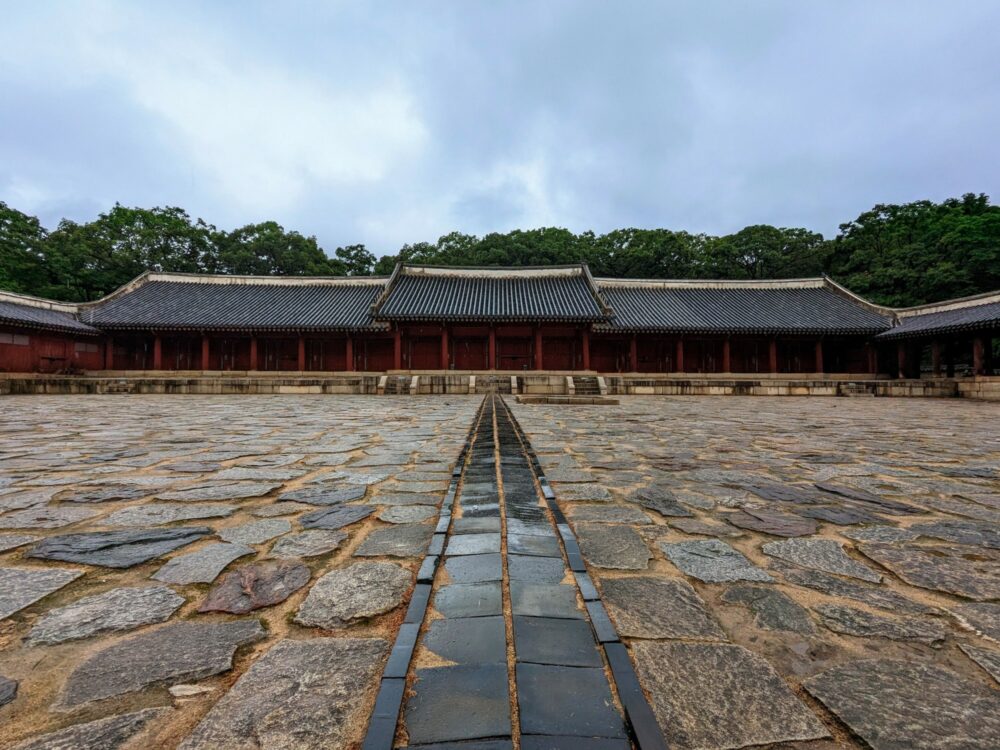
It’s about a 20-minute stroll from the southern end of Insadong Street to the market, a walk that takes you right past Jongmyo Shrine . Entry is included in the multi ticket for the royal palaces if you bought one. Much smaller than the palaces you visited yesterday, there’s scaffolding around the shrine itself at the moment, so it’s not anywhere near as attractive as usual. I was fortunate enough to visit just before it got covered up!
Still, the grounds are lovely to wander around, and since it only takes about half an hour to check out the main sights, it’s worth the small amount of effort. If you didn’t buy the multi-pass, entry is ₩1000. Note that while you can walk around by yourself at the weekend like we did, you’ll need to join a (free) tour to visit the shrine during the week.
From the tranquillity of Jongmyo to the mayhem of Gwangjang market, the difference couldn’t be more extreme. The market is seriously busy at weekends: we got there at around 2:30pm on a Sunday afternoon, and as you can see, even moving around was difficult! Early or late on a weekday would be a much better option if you’re not a fan of crowds, although note that most stalls are closed on Mondays.
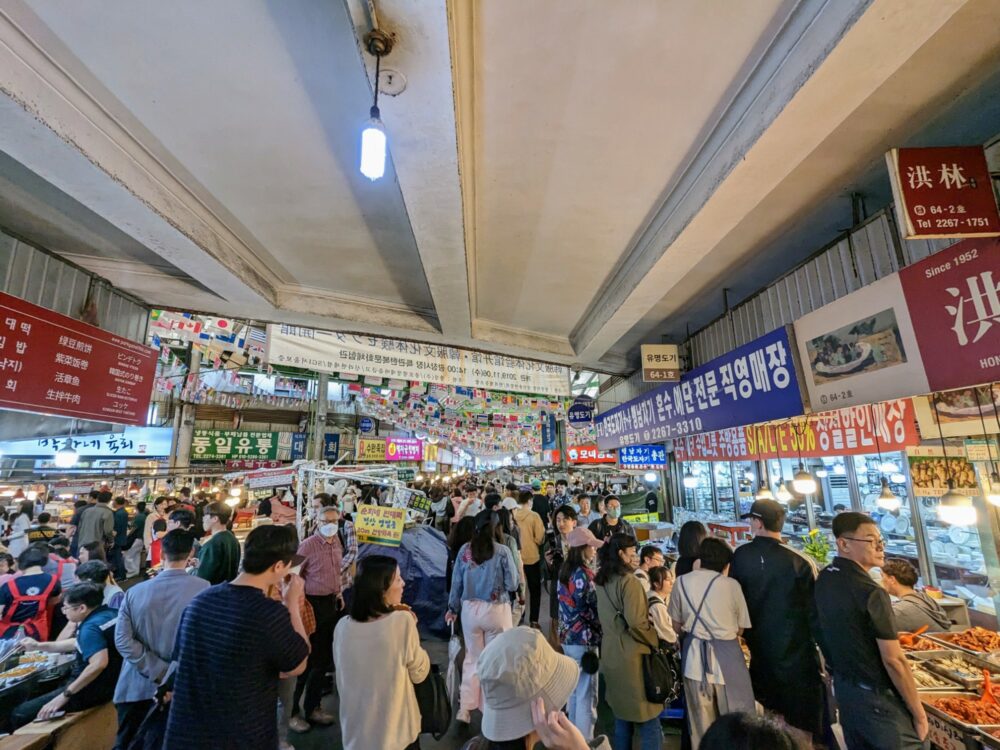
If you’re hoping to visit Cho Yonsoon’s noodle stall, keep an eye out for the Netflix signs in the middle of the market, near where the two “lanes” form a crossroads. The line was extremely long when we visited, so we skipped out on that experience, but there was an endless supply of other great food stalls to choose from.
I particularly enjoyed the mung bean pancakes, hot and delicious straight from the deep fryer: several vendors offer them. Many other local dishes are available as well, most from multiple stands in the market: just be prepared to wait for a seat during busy periods if it’s not something you can order to go.
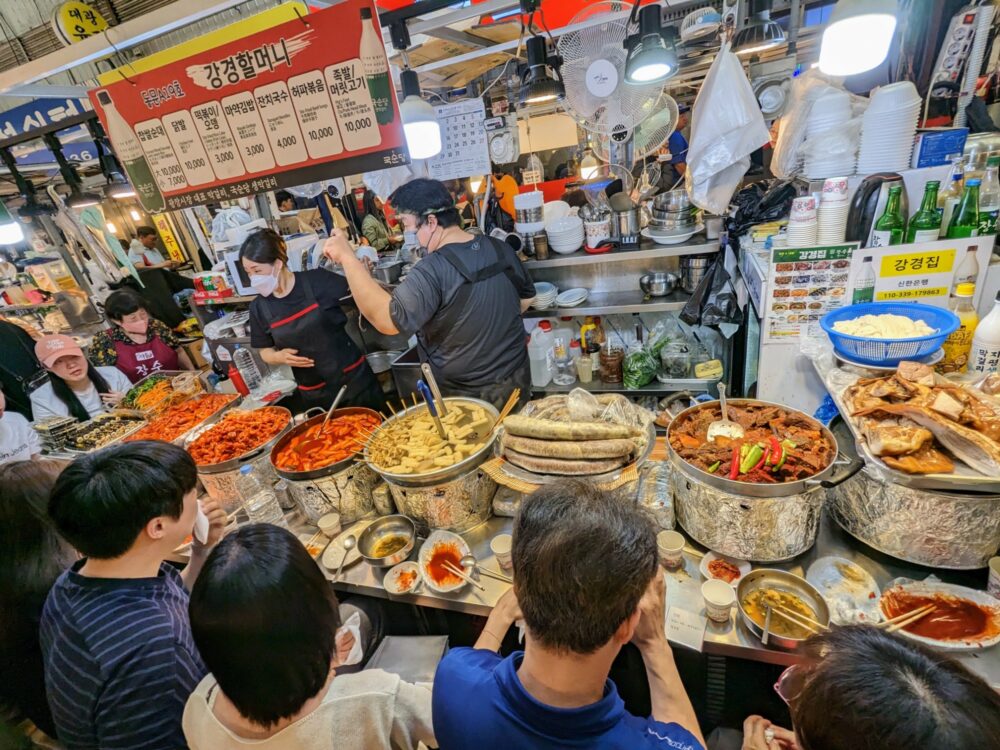
How long you spend in the market will likely depend on your appetite for both food and large groups of people. Give yourself half an hour if you only walk through from one end to the other and grab something to snack on while you’re strolling, and at least twice as long if you plan to sit down at one or more popular spots.
When you’re done, leave via the southern exit from the market and head for Euljiro 4(sa)ga metro station: it’s on the same line as the Hongik University stop for Hongdae.
Get regular travel, hiking, and tech updates from me
News, reviews, guides, and more, from here and around the web
Day 7: Gangnam Style
I try to blot out a lot of music from the early 2010s, but try as I might, Gangnam Style is an earworm that I just can’t get rid of. That song (and damn horse dance) was everywhere a decade or so ago, and its commentary on the lifestyles of the rich and famous introduced the rest of the world to both K-Pop and Seoul’s most high-end neighborhood. Today, you’re off to Gangnam.
Your first stop is Starfield COEX Mall , a vast shopping and exhibition center that’s full of everything from fast and high-end fashion to a large food court and a multistorey library that you’ve almost certainly seen on Instagram.
Getting there from Hongdae is easy: just jump on line 2 of the metro heading counter-clockwise (the “outer circle”) to Dangsan station, then switch to line nine until you get to Bongeunsa station. It takes about 35 minutes in total: leave the station via exit 7, which leads directly into the mall.
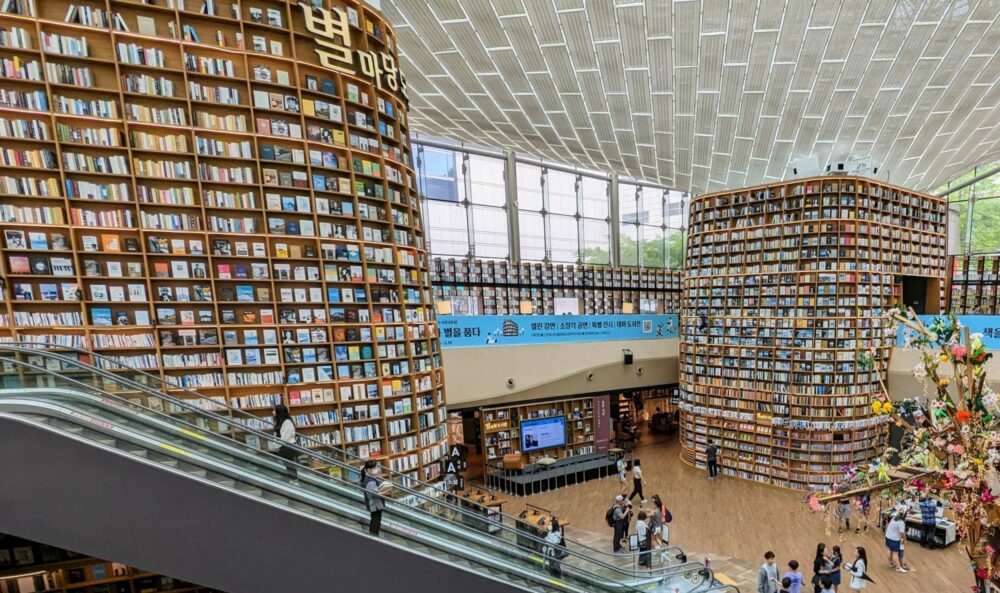
The most famous part of the mall, at least these days, is the Starfield Library that I mentioned earlier. With multistorey bookcases holding thousands of books and stretching from floor to ceiling, it’s hardly surprising that this is a popular spot with Instagrammers and Tiktokers. There isn’t a time where you’ll have the place to yourself, but going early on a weekday means that at least the visitors won’t outnumber the books.
While it’s predominantly a library (you’re welcome to take a book from a shelf to read at one of the nearby tables or sitting on the steps), there are also several tables with titles to browse and buy as well. They’re mostly in Korean, but many of the coffee-table books would make for great souvenirs even if you don’t speak the language.
Once you’re finished up there, it’s time to explore the rest of the mall. Honestly, you could spend all day inside if you wanted to: with something like 300 retail, food, and drink outlets, I suspect most visitors will run out of time before they run out of ways to spend their money.
There’s also a large aquarium attached to the mall, with around 20,000 sea creatures inside including sharks, rays, turtles, and many more. It’s a great spot to take the kids, but is worthwhile for adults as well, especially if you’ve never been to a large aquarium before. Give yourself around 60-90 minutes to look around: it’s worth booking online to save money on the walk-up price.
If all that shopping and sea life-spotting leaves you in need of sustenance, head downstairs to the sprawling food court, which has what feels like an endless range of local and foreign restaurants. I wandered around for at least fifteen minutes before finally settling on a tasty bowl of samgyeopsal from a small stand.
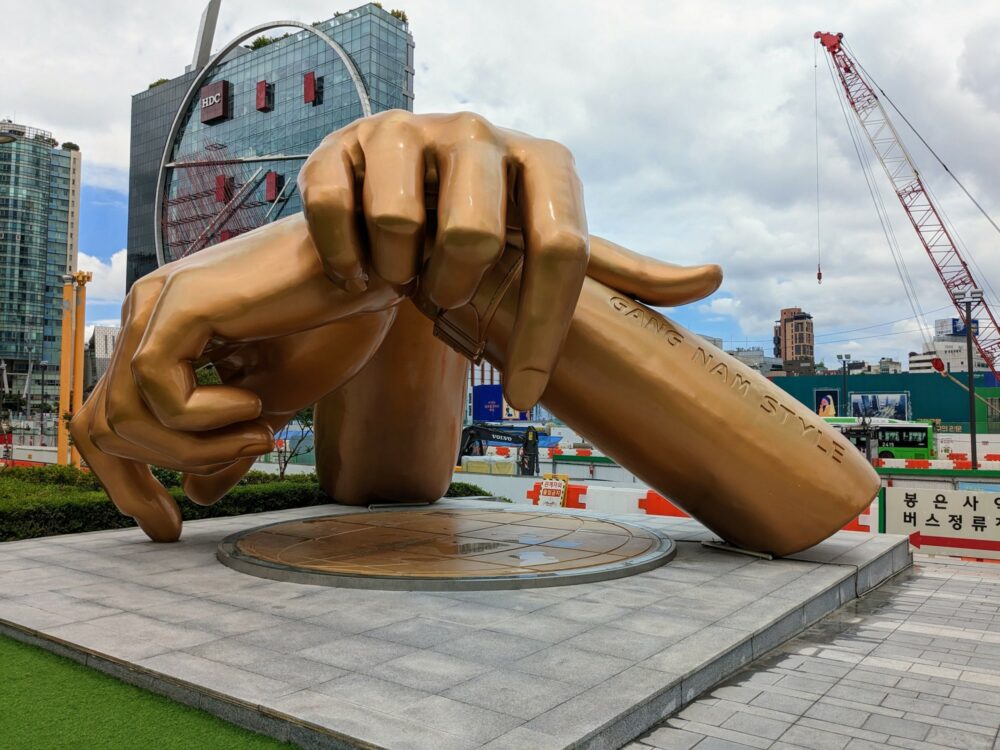
Just in case you’d forgotten where you were after the sensory overload of being inside a huge shopping center, you’ll be quickly reminded as soon as you leave. After the worldwide success of that song, it was deemed only appropriate to put up a huge sculpture of Psy’s folded hands outside COEX, complete with “Gang Nam Style” engraved on one of the forearms.
The fun doesn’t stop there, mind you: there’s a large area of (fake) grass alongside, with a video terminal that loudly plays Gangnam Style on demand so that you can dance along to your heart’s content. That’s not a hypothetical, by the way: I’d be surprised if you didn’t see someone performing in front of the statue when you’re there.
Once you’re done, it’s finally time to leave the mall precinct, but you’re not going far. Just over the road lies Bongeunsa , a Buddhist temple complex that’s a peaceful contrast to the shrine to consumerism that you’ve just left. It dates back to 794, although it now sits about a kilometre up the road from its original location, and most of the buildings are reconstructions after fire and war destroyed much of the complex in the middle of last century. Entry is free.
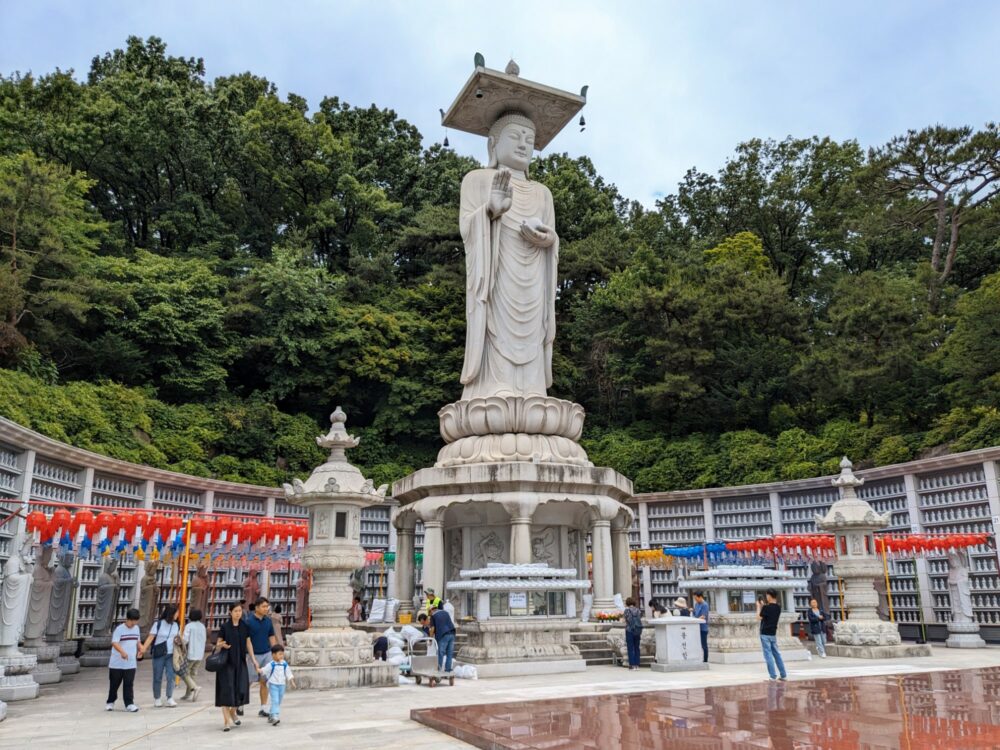
The highlight is definitely the huge stone Buddha that stands over 20m high, towards the rear of the temple complex. Be sure to check out the alcoves surrounding the statue as well: each one has dozens of small statuettes inside.
It’s not a huge area, but the wooded hillside is lovely to walk around for half an hour or so. A ceremony is held at 6:40pm each evening where monks beat drums and bang gongs for several minutes: it’s worth sticking around for if you’re visiting at that time. There’s a morning version of the ceremony as well, but since it happens just after 4am, it’s a touch less likely that you’ll be there for it!
If you happen to be there on a Thursday afternoon, it’s also worth jumping on one of the temple experiences that starts at 2pm. Costing ₩10,000 and lasting around two hours, it includes a tour, guided meditation, and a tea ceremony and conversation with temple monks.
After you’re finished at the temple, it’s time to make a choice. If it’s getting late in the day and you’re done with sightseeing, feel free to head back to your hotel: assuming you’re staying in Hongdae, I’ve got a delicious dinner recommendation for you below. If you’ve got the time, though, there’s plenty more to see and do in Gangnam, including:
- strolling along Apgujeong Rodeo Street and Cheongdam Fashion Street , where it’s easy to see the high-end style that the area is known for. If you’ve got a sudden hankering for an Armani suit or Gucci handbag, this is the place to get it.
- enjoying the colourful gingko trees (in autumn) on Garosu-gil , another popular shopping street with cute little boutiques and more mainstream brands, including a particularly large Apple store.
- getting your K-Pop on on K Star Road , where large, brightly-coloured bear statues line a roughly 1km stretch of footpath. The main attractions are the (shock) Psy and BTS bears, but there are many others.
- heading up to the top of Seoul Sky at Lotte World Tower (the highest building in Korea) for great views over the city skyline. Again, it’s cheaper to buy the tickets in advance than in person on the day.
Dinner: Back in Hongdae, head for a dinner at Shin Migyeong Hongdae Dakgalbi. If you’ve never had dakgalbi before, you’re in for a treat: it’s basically a spicy chicken stir-fry, but that simple description doesn’t come close to describing just how delicious and fun this meal is. After making a few simple menu choices (including the sides and how much chili goes into the food), the meal is cooked out the back, then tipped onto a large, heated cast-iron pan at your table to make sure it stays hot. Portion sizes are huge (we got one between two) and take a while to get through, which gives the perfect excuse to work your way through a bottle of makgeolli as you go. It’s a fun, social kind of place, and while it isn’t huge, the tables turn over reasonably quickly, so you shouldn’t have to wait long for one. We went around 6:00pm on a Monday and were seated straight away. It’s an inexpensive, super-tasty way to finish the day!
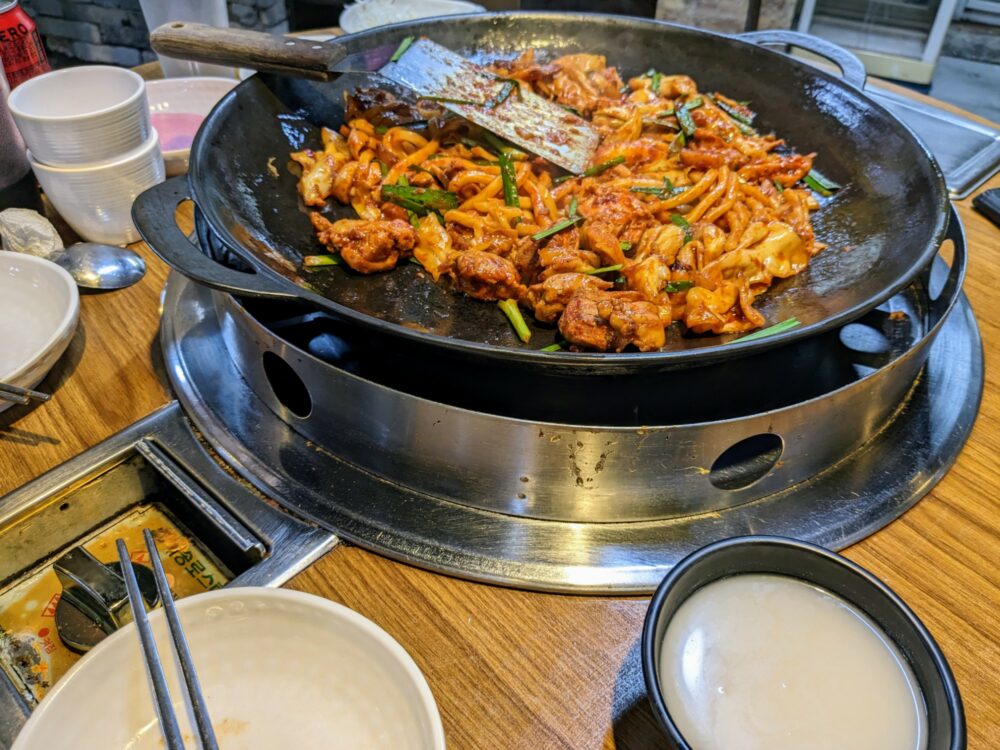
Day 8 and 9: Stunning Seoraksan National Park
You wouldn’t really know it when you’re in the middle of a huge city like Seoul, but South Korea is a seriously mountainous place: over 60% of the landmass is made up of hills and mountains. Hiking is practically the national pastime, and there are some stunning parts of the country to do it in.
For the next couple of days, you’ll be in one of the very best of those: Seoraksan National Park . I was honestly blown away by how beautiful this park was, and how good the trails were: in a couple of hours you can get to the tops of rocky mountain peaks, wander alongside beautiful tranquil streams, and stroll past delightful tumbling waterfalls. It was the highlight of my entire time in South Korea!
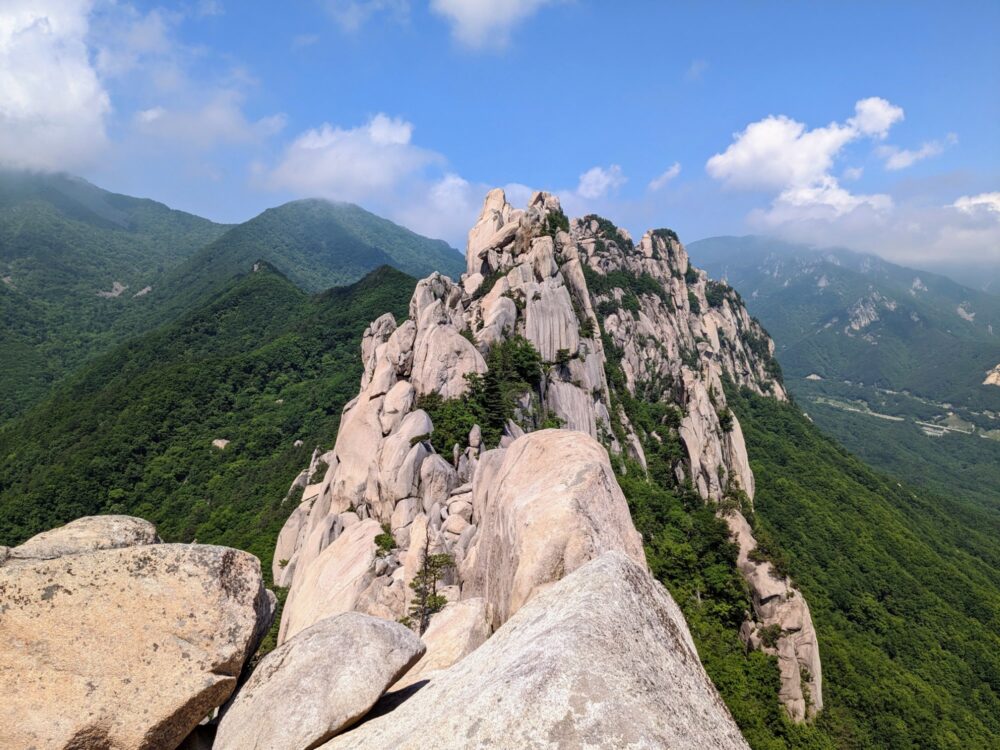
There are a few different ways to get there: I’ve written a detailed guide on how to get to Seoraksan , so feel free to read that for all of the info you need. To summarise, though, the easiest option for most people is to take a bus from Seoul Express Station to Sokcho, and then a local bus or taxi to the national park.
I’d suggest leaving Seoul reasonably early in the morning, since it takes about 2.5 hours to get to Sokcho, and another half-hour from there to the park.
You can buy the intercity bus ticket online ahead of time if you want certainty about when you’re going to leave, or just wing it and buy a ticket on the next available service when you get to the station. If that’s what you decide to do, you should be able to get a seat on a bus leaving within an hour or so, as long as you’re travelling outside weekends and peak fall colours season in September/October.
From the terminal in Sokcho, cross the street and wait for a number 7 or 7-1 local bus heading to the park entrance. You can use your T-Money card on this bus, or pay the fare in cash.
And now the fun part: all of the beautiful walks and viewpoints!
I have a complete guide to visiting Seoraksan National Park , which covers off all of the different walks worth doing, where to eat and drink, details of the cable car that goes up to Gwongeumseong Peak, and pretty much anything else I could think of. You’ll want to bookmark it before you go!
With around a day and a half in the park, you’ve got enough time to hike all of the shorter trails without being completely exhausted. Some of them are pretty flat and easy, others are definitely not. I’ve summarised the best ones below, but one of the key things to bear in mind when deciding which walk to tackle is what the weather’s doing.
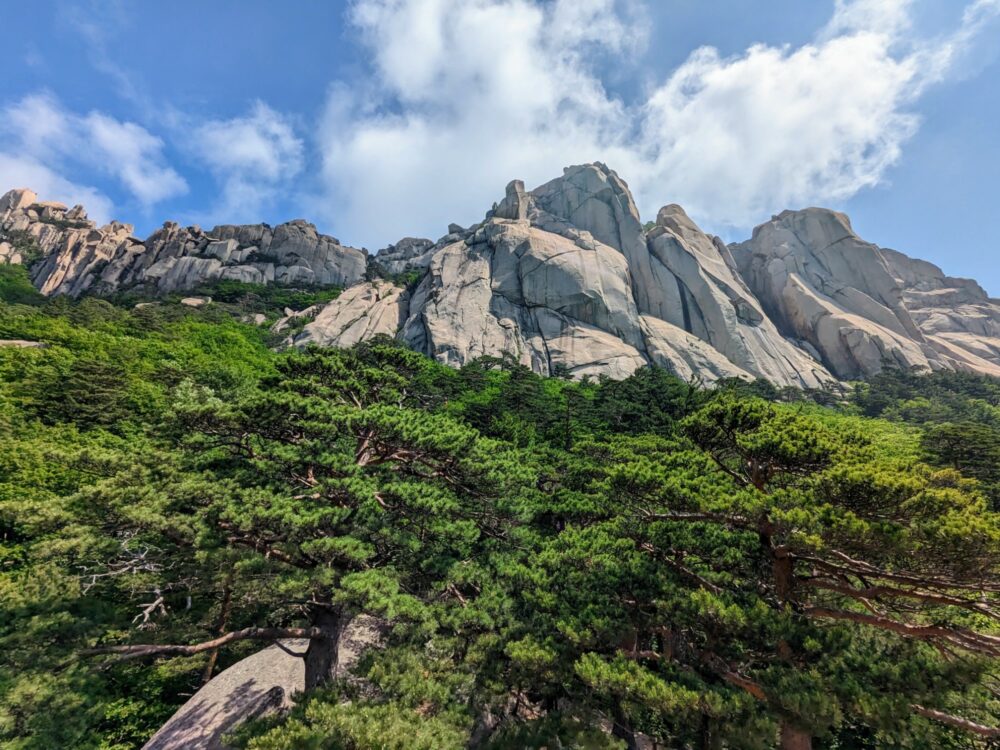
The weather in Seoraksan can be quite variable and change quickly: as a rule, I’d suggest doing the lower walks if it’s cloudy, and hope that conditions clear in time to tackle the higher trails. There’s not much point climbing all the way up to a viewpoint if you can’t see anything from the top!
Note that as of last year there are no longer any fees to enter the park, which makes it even more appealing to visit! Things like the cable car and onsite parking still cost money, though.
The Cable Car
While the highlight of Seoraksan National Park is its hiking trails, you don’t have to walk to get great views. A cable car climbs 700m from close to the park entrance up to the top of Gwongeumseong Peak, giving you most of the views with none of the sweat.
It’s believed there was once a fortress at the top of the hill, but there’s nothing left of it now: the reason to head up there these days is for the vista, not wandering around castle ruins.
If you’re taking the cable car, note that your ticket is for a specific time, and can only be bought in-person on the day. There are no advance tickets, mostly because strong winds often cause the cars to stop running at short notice.
Because the park gets busier as the day wears on, you’re best to head straight to the cable car office when you arrive, and buy the next available ticket that suits your plans. Cars leave every five minutes and hold 50 people at once: despite that, they often sell out completely at peak times.
If you buy a ticket for a few hours later and want to hike one of the trails beforehand, use the estimates in the section below to make sure you’ve got enough time. Likewise, if you can’t get on the cable car at all on the day you arrive, head back first thing the following morning and get a ticket for later that day instead.
Return ticket prices are as follows:
- Adults and teenagers: ₩15,000
- Children aged 3+: ₩11,000
- Infants under 3: Free
The car takes about five minutes to get to the top, where there’s a cafe, toilets, and viewing area. A path to the right leads uphill for 15 minutes to the “fortress” site, which is basically just a big, flat-ish rocky peak. Give yourself about half an hour to look around and take photos in all directions before heading back.
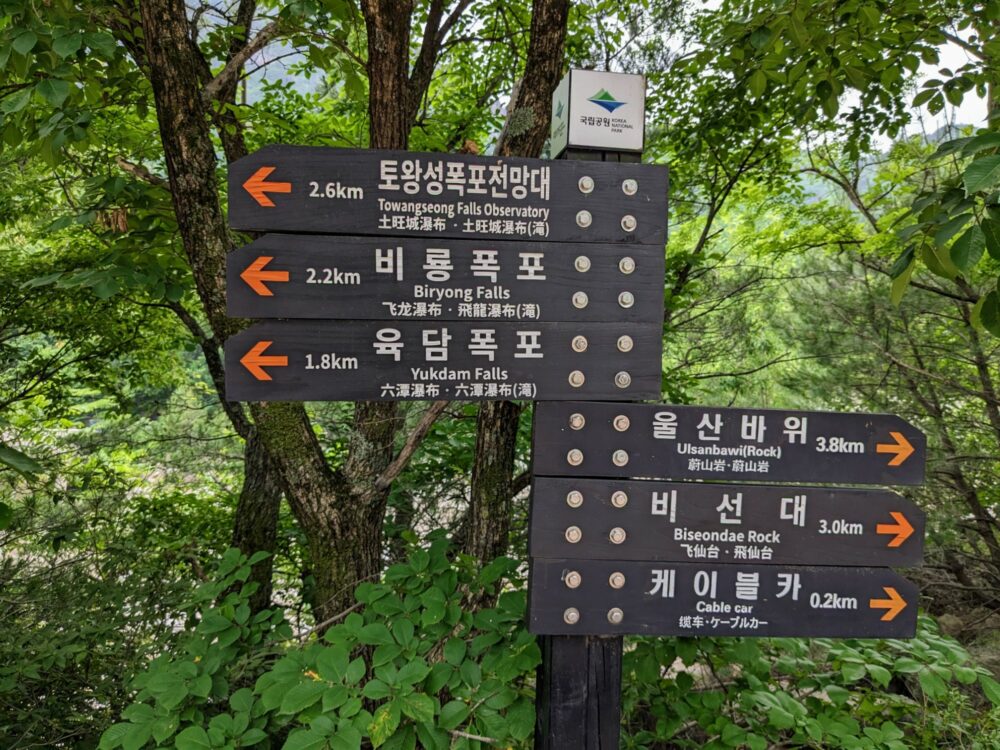
Walking Trails
These are the three trails I consider the best short-ish walks in the park. Ranging from roughly one to four hours in length, there’s something here for people of all fitness and mobility levels. Again, there’s much more detail in my full Seoraksan guide : the below is just a summary to whet your appetite!
Ulsanbawi Rock Trail : 7.6km return / 3-4 hours / Hard
Probably the biggest attraction in the park, the hike to Ulsanbawi Rock is glorious on a clear day. Along with spectacular views over the valley, you get to admire Ulsanbawi Rock itself, a distinctive jagged granite ridge that sits around 870m (2860ft) above sea level.
The first part beside the river is easy, with a concrete path to walk on and minimal climbing to do. The concrete ends once you hit the first set of stone steps, but even this section as far as Gyejoam Temple isn’t too difficult.
From there, the trail continues upwards, past a large boulder that’s worth clambering up on to for a great view of Ulsanbawi. It’s less than a kilometre from the boulder to the top, but it’s hard work: essentially one long staircase, with many hundreds of steps and no real shade once you’re above the tree line.
All that effort feels worthwhile once you get to the top, though!
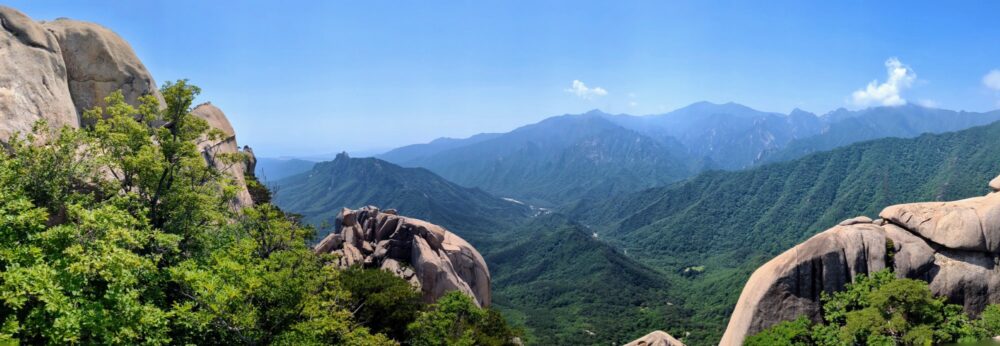
There are a few different viewing areas at the end, with different perspectives of the park and nearby countryside. Take a lunch break here, or at least have a drink and a snack: you’ve earned the rest!
While the return trip is faster and not as much of a cardio workout, it’s tough on the knees after a while. Let’s just say I was happy to see the end of the steps and get back to some flat ground again at the bottom!
Biryong Falls Trail : 4.8km return / 1-1.5 hours / Moderate
Fan of waterfalls? Look no further than the Biryong Falls trail. It’s a relatively short hike that starts out as an easy, flat nature trail through the forest, before climbing steadily alongside the river to two different waterfalls. If you don’t mind a workout, you can also extending the walk up a steep staircase to an observation platform for Towangseong Falls, the tallest in the country at 320m (1050ft).
After a gentle stroll through woodland, the path becomes steeper and rockier as it approaches Yukdam Falls. You get some lovely views as you approach and cross the suspension bridge over the falls.
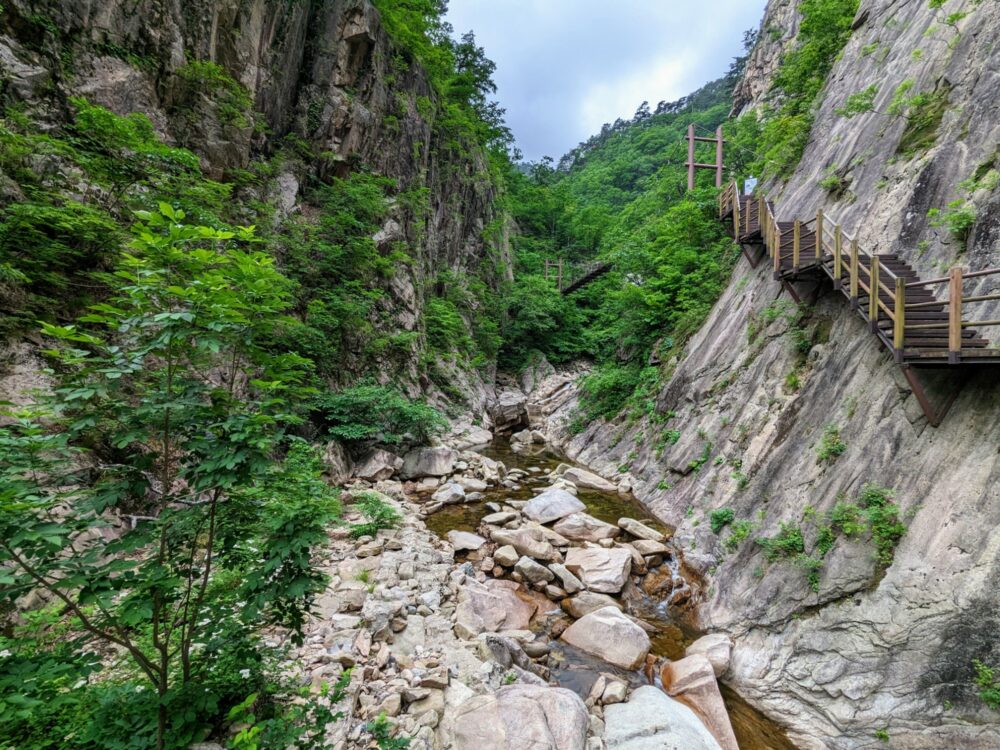
The next section is a bit steeper than the last, but still pretty straightforward as you climb up to Biryong Falls. It’s not the biggest or most exciting waterfall in the world, but it’s a good place for a snack or a drink, with plenty of seating around the pool at the base of the waterfall.
Many people turn around at this point, returning the way they came back towards the main part of the park. If you’re feeling fit, however, follow the sign pointing up to Towangseong Falls Observatory instead. It’s only an extra 400m, but you’ll feel every single one of them: it’s stairs, stairs, and more stairs the entire way.
Expect to take 15-20 minutes to get up there, and to be more than a little short of breath when you do. Once the panting subsides, you’ll find yourself on a multi-level observation deck, looking out towards a pretty significant mountain range and the tumbling Towangseong Falls in the distance.
You probably won’t spend too long up there, no more than five or ten minutes, before starting the journey down the stairs and along the main path back to where you started.
Biseondae Rock Trail : 6km return / 1.5-2 hours / Easy
The Biseondae Rock trail was the last hike I did during my time in Seoraksan, and one of the best. It’s the easiest of the three walks I mention here: you simply follow a stream up a valley the whole way, under tree cover and mostly on flat paths. It’s all very straightforward.
The trail is quite scenic on the way to the large rock that gives the path its name, but it’s when things open up right at the end that it gets seriously pretty. I was lucky enough to have the place to myself, and it was super-peaceful, with just the sound of buzzing insects and rushing water for company.
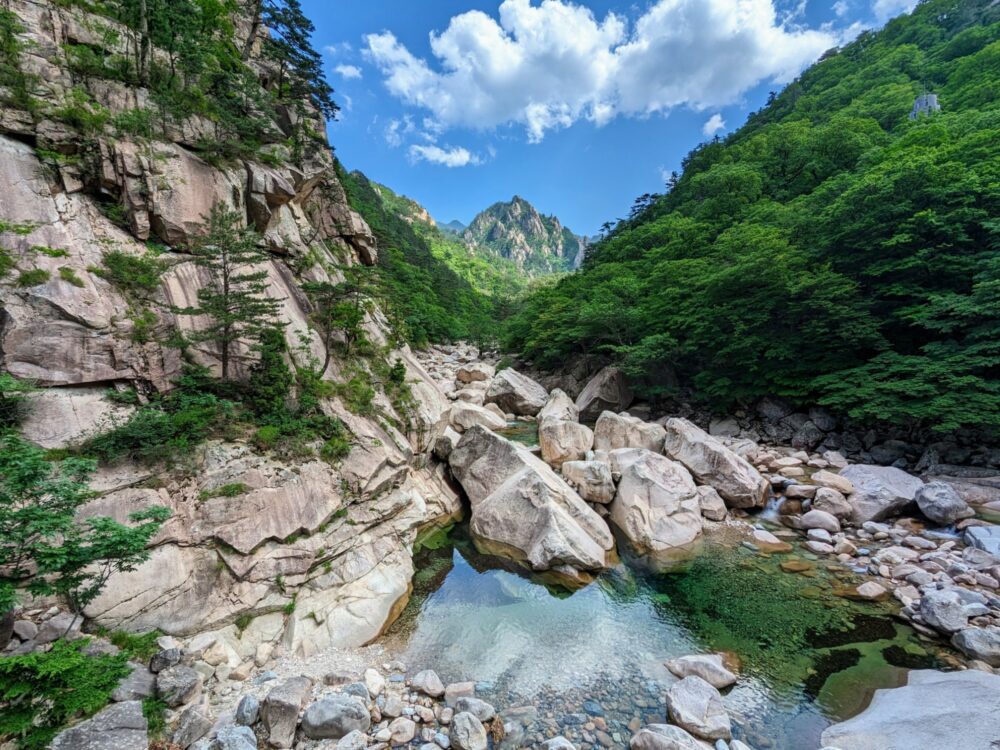
To find myself in such lovely scenery after less than an hour of easy walking made me very happy, and I lingered for a while before finally heading back to the start. It was the perfect trail to end my time in the park, after giving my calves and knees a major workout the rest of the time!
In terms of what you get out of it for what you put into it, I’d probably have to put this trail at the top of my list. Sure, the views from the top of Ulsanbawi Peak are far more dramatic and expansive, but they take a lot more effort to get to as well.
Where to stay for Seoraksan National Park: You’ve got two choices about which area to stay in for Seoraksan National Park: Sokcho, which is the nearest city a half-hour bus ride away, or somewhere along the road that leads into the park. We opted for the latter, staying at a great family-run guesthouse about 3km (five minutes on the bus) from the park entrance. It was the best-rated place in the area and lived up to its reputation: with friendly owners, comfortable rooms, a simple but tasty breakfast, and reasonable prices, we were very happy with our decision. Staying in Sokcho gives a much wider range of accommodation and food options; it just means a half-hour ride to and from the park each day. Next time I’d probably stay there to mix things up, most likely at Urbanstay Sockho Beach . It has clean, modern rooms, and is only a five minute walk from the bus terminal. It’s also very close to the beach, with great views over the water, and plenty of restaurants within easy walking distance.
Day 10: The Food and Shopping Mecca of Myeongdong
With your time in Korea drawing towards a close, it’s time to head back to Seoul. Check out of your accommodation after breakfast and head back to the bus station in Sokcho to retrace your steps from a couple of days ago. Again, if you’re travelling on a weekday outside peak times, you can probably just buy a ticket on the next service when you get to the station. At other times, book it in advance .
Note that I’m assuming your flight out of Korea is from Incheon or Gimpo airports in Seoul: if it’s one of the few that leave from Busan instead, there are a couple of direct buses per day that run there from Sokcho.
This time around, I’d suggest staying in Myeongdong. It’s one of the most popular restaurant and shopping areas in the city, has a huge street food market that springs into life each evening, and is convenient for getting to the airport the next day. What’s not to like?
This is definitely one part of town that’s set up for aimless wandering. Myeongdong’s main walking street has so much going on that I was very glad I didn’t have to keep an eye out for cars: there were far too many other interesting things to look at! Restaurants, bars, tiny boutiques and huge department stores, it’s a busy, bustling, neon-lit temple to the gods of retail.
If you’re looking for a temple of a different kind, the oldest Catholic cathedral in South Korea is also in Myeongdong, on top of a small hill a short but steep walk from the eastern end of the walking street. Be sure to visit the crypt and museum while you’re there; both are small but interesting.
If you’re on the hunt for Korean skincare products , you’ve come to the right place. Dozens of stores in Myeongdong specialise in them, including flagship outlets of major brands like Olive Young and Laneige. If you need a second suitcase just to carry all your new products home with you, never fear: there are plenty of luggage stores nearby as well!
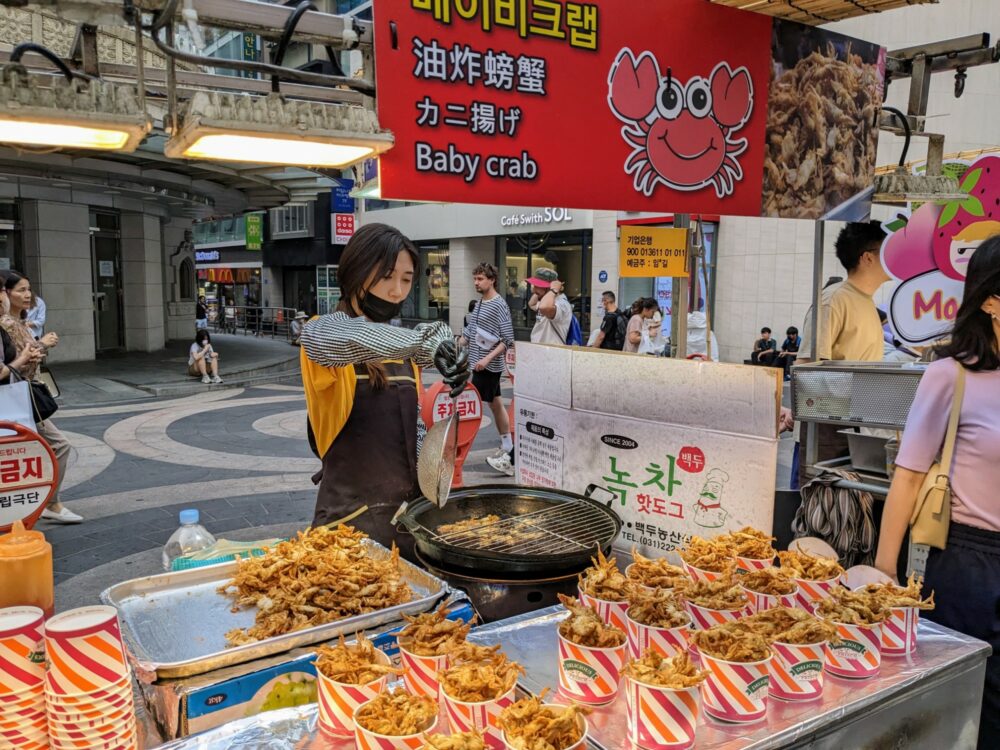
Street vendors start setting up the night food market along the walking street and surrounding roads from mid-afternoon: there are usually around 200 vendors on any given day, most dedicated to cooking up all kinds of delicious street food, but with many selling souvenirs and other random bits and pieces as well. The souvenirs weren’t anything you can’t find elsewhere in the city, but the street food stalls were a delight.
Definitely start out with an empty stomach, so you can try as many of the different options as possible. I particularly enjoyed the deep-fried crab and a few of the different beef and chicken skewers, but just wander around and see what grabs you (or what has the longest line). We spent well over an hour just strolling past the different vendors, choosing random things as we went. Most of the dishes are snack-sized rather than being a full meal, so they’re ideal for grazing.
Now that you’re full of delicious street food, it’s time for a short walk to work some of it off. As you’ve been exploring Seoul, you’ve probably noticed a large hill that’s visible from Myeongdong and much of the busy downtown area, complete with a prominent broadcast tower at the top. That’s Namsan Hill and N Seoul Tower , the latter of which sits around 500m (1650ft) above sea level and has commanding sunset views over the city.
Getting to the top couldn’t be quicker or easier: a cable car zips between the base of the hill near Myeongdong and the tower in about three minutes. Once you get there, the four different levels have a range of restaurants, multimedia displays, and other attractions to check out beyond just the spectacular vista.
You can buy the cable car and tower entry tickets separately, but it’s cheaper and more convenient to just get them as a package instead. The lower cable car station is only a 10 minute walk from Myeongdong metro station.
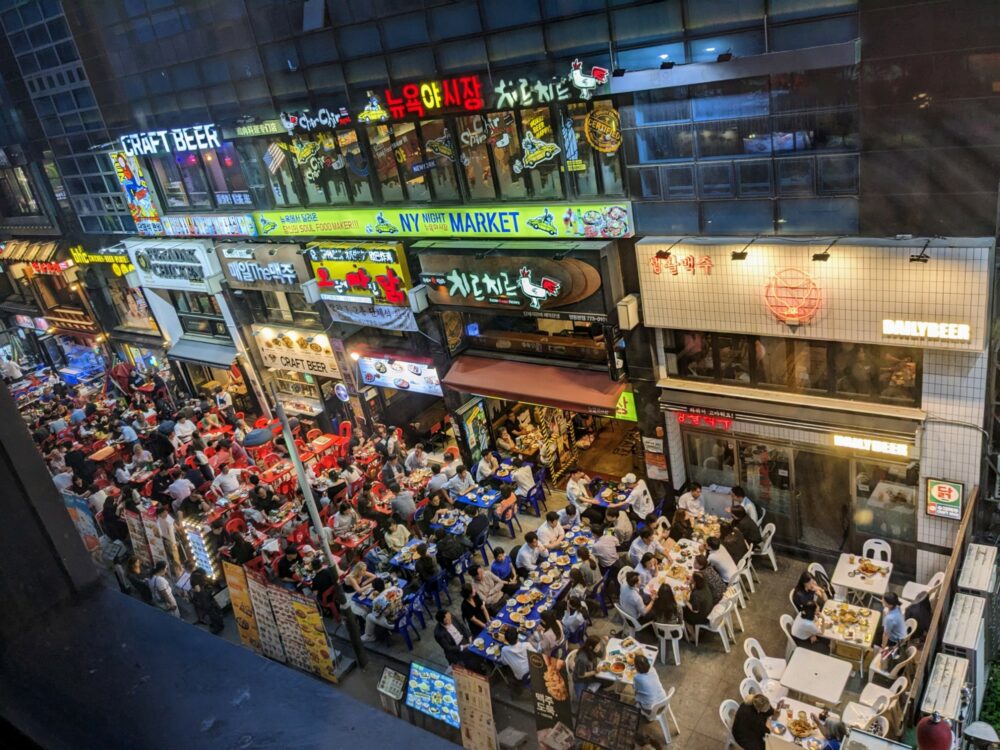
If you’ve worked up an appetite again by the time you get back, or at least a thirst, the chicken and beer street I mention below is well worth a visit. With so many restaurants crammed alongside each other, competition is fierce and quality is high, so you can’t really go too wrong with any of them. The hardest part will be finding somewhere with a spare table: it’s a popular spot as the night wears on!
Where to stay in Myeongdong: We stayed at a delightful cinema-themed hotel right in the heart of Myeongdong, and only a block or two from the night market. Our room was stylish and spacious, with a great bathtub, and the staff were lovely: we even got a free bag of popcorn when we arrived! There was no problem with storing our bags when we arrived before check-in time, either. The hotel sits alongside a busy strip of chicken and beer restaurants, which is very convenient when you’re hungry!
Sadly it’s arrived: your final day in South Korea! If you’ve got an early flight, then all you have left to do is head to the airport. That’s easy enough to do: either take the 6015 bus from beside Myeongdong station, or the metro to Seoul station and switch to the airport line. It takes about 75 minutes to get there.
If you’ve got a few hours to spare, though, there are plenty of ways to spend your time beyond just sitting in your hotel room! I’ve included a couple of specific suggestions below that are easily accessible from Myeongdong; if your flight isn’t until sometime after dinner, you could also do any of the longer activities I suggest in the next section instead. The place we stayed at was more than happy to look after our bags all day if needed!
Take in the Tranquility of Cheonggyecheon Stream
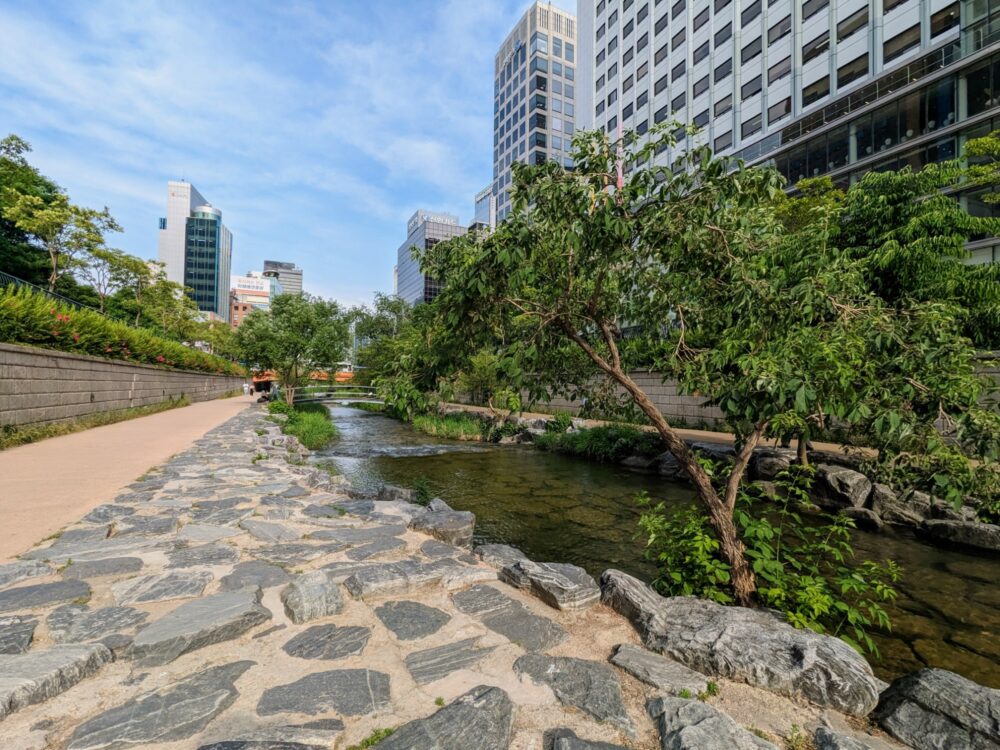
If you want to see an example of urban revitalisation done right, you need to look no further than Cheonggyecheon Stream. The highways that once covered this little waterway were ripped up in 2005, and a once-ugly thoroughfare was turned into a lovely place to stroll and relax.
Sunk below street level, the 8km (5 mile) path is surprisingly peaceful, with plenty of places to sit and relax. We spent a wonderful hour or so walking the first half, from the entrance near Gwanghwamun station in the west to Dongdaemun. The first section is definitely the busiest: after that, the surroundings start to become less manicured, with narrower paths and fewer people.
Just walk as far as you feel like: you can easily get back up to street level at any point if you only have a short amount of time, and then take the metro or a taxi back to collect your bags.
Relax in Seoul Forest
If even the tranquil surrounds of an urban stream aren’t relaxing enough for you, how does a vast park in the middle of the city sound? Seoul Forest is actually where the Cheonggyecheon Stream path ends, but if that’s where you’re headed, it’s easier to take the metro instead: line 4 goes directly there.
Across the five separate parks you’ll find everything from botanic gardens to playgrounds, restaurants, and even a stage where concerts are held during summer, but with close to half a million trees spread over 300 acres, there’s plenty of nature (and space) for everyone.
If you’re more interested in wildlife and woodland, the “Eco Forest” is the place to go. It’s home to a population of elk and deer in a series of enclosures, along with chipmunks and other smaller animals roaming free.
If you have an extra day or two in South Korea, never fear: I have a few more suggestions for how to spend them! As well as the three Seoul-based options I talk about below, you could easily add another day in Gyeongju so you can explore it at a more leisurely place, or work in a full day in Sokcho to chill out on the beach and explore the city. They’re all good choices!
Optional: Day trip to the DMZ
Many first-time visitors to South Korea want to visit the DMZ, the infamous 4km (2.5 mile)-wide no-man’s-land that forms the border between South and North Korea. The two countries are still technically at war despite the 70-year armistice, and access to the area close to the border is heavily restricted. The only way to get there is on an organised tour , and numbers are limited even then.
In the past, I would have included a DMZ tour as an absolute must-do, but for now at least, it’s only optional as far as I’m concerned. Why? Well, mostly because the Joint Security Area (JSA)—the famous blue barracks where North and South Korean soldiers stand face-to-face—is currently out of bounds. Since the pandemic, tours to the JSA have been on and (mostly) off, and as I’m writing this now, there simply isn’t a way to get there.
As a result, the closest you’ll get to North Korea is standing on a hill and looking into the country from afar with binoculars. The upside is that these trips are much cheaper than the JSA tours when they’re running, the downside is that it’s probably not really the DMZ experience that you were envisaging.
Even these non-JSA tours are very popular, mind you, so if you are thinking about going, don’t leave it until the last minute to decide. It’s not uncommon for spots to be sold out a week or more in advance during busy periods.
On these tours, you typically get to visit one of the “infiltration” tunnels dug by North Korea in a failed attempt to set up a surprise attack, along with the DMZ observatory point and freedom bridge. It’s still an interesting and thought-provoking trip; just be aware of what it does and doesn’t contain in 2024!
Optional: Day spent hiking in Bukhansan
While Seoraksan National Park offers wonderful trails and incredible scenery, and is absolutely worth the visit, it does take a bit of time and effort to get there from Seoul. There are no such concerns with Bukhansan National Park, though: you can literally take the metro there from downtown Seoul!
Named after the three-peaked Bukhan mountain that forms the centrepiece of the park, it takes under an hour to get there from pretty much anywhere you’re likely to be in Seoul. There are three entrances, each of which is accessible by public transport, but the easiest is probably the eastern gate. Be sure to visit the (Jeongneung) visitor information centre just inside it when you arrive.
That’s for two reasons: to get trail maps and general information about the walks on offer, and also to find out which paths are currently closed. All of the popular trails (which given the proximity to Seoul, is basically all of them) are closed on a rotating basis to help protect them from overuse. Make sure the trail(s) you plan to walk are open on that particular day!
I’ve included a couple of good trail options below to get you started, but there are many others. The Alltrails app has them all marked out, or as I say, pick up paper maps from the visitor centre before you start. Admission to the park, fortress, and temples are all free.
- Obong Course : this 7.6km loop trail is moderately difficult but worth the effort, winding past Dobongsan mountain with great views on its way to the lovely Songchu falls. It takes 2-3 hours.
- Baegundae Peak : this is a challenging one-way trail that runs east-west across the park and climbs to its highest point, at 835m (2744ft). It gets trickier towards the top, with metal cables set into the rocks to help pull yourself up. Don’t tackle it unprepared, but if you’re capable, expect stunning views from the top. It takes 4-5 hours to complete.
Optional: Visit to Lotte World
For an adventure of a completely different kind, head to the sprawling expanse of Lotte World. This enormous indoor theme park in Sincheon is the largest of its kind in the world, covering four stories and covered by a vast glass dome. There’s also an outdoor section, dubbed Magic Island: a man-made island that sits in middle of Seokchon Lake that contains most of the rides, along with cinemas, restaurants, and more.
It’s hard to even summarise everything on offer here at South Korea’s version of Disneyland: from the amusement park and ice-skating rink to a museum, department store, aquarium, shooting range, roller coaster, huge spinning gyro swing, laser and music shows, VR roller coasters and arcade games, and who knows what else, there’s more than enough to keep adults and kids alike amused for the entire day.
There’s even a monorail that whisks you around the complex, which I think gives some idea of the scale of what’s on offer here. To get there, jump on the metro and head for Jamsil station (exit 4). As is often the case in Korea, it’s cheaper to buy tickets in advance than to show up and buy them on the day.

Summary and Checklist
Given how long this itinerary ended up being, I figured it’d be worth putting together a checklist of all things that you’ll want to do in advance of your trip, just to have them together in one place. I hope it’s useful!
Further Reading
- Tech Guide to South Korea for all the little (and not so little) differences about things like making payments, how taxis and T-Money work, why Google Maps is so bad in South Korea and what to do about it, plus the best ways of staying connected and whether a local phone number is as important as everyone says
- How to Get to Seoraksan National Park for the nitty-gritty about transport to and from the park
- Guide to Seoraksan National Park for trail information, where to eat and drink in the park, cable car details, other things to see and do, and so on
- a physical SIM or eSIM so you’re connected before leaving the airport. Note that the plastic card that contains the physical SIM also works as a T-Money card, so you don’t need to buy a separate one!
- First night near Seoul Station (if necessary)
- Two nights in Gyeongju
- Five nights in Hongdae
- Two nights in Sokcho or Seoraksan
- Last night in Myeongdong
- High-speed train to and from Gyeongju
- Express bus to and from Sokcho
- Discounted entry tickets for the aquarium , N Seoul Tower , and Seoul Sky
- Tour of the Secret Garden at Changdeokgung Palace (no more than six days in advance)
- Optional: DMZ Tour , Lotte World tickets
- Naver Maps – iOS | Android
- Kakao Maps – iOS | Android
- Papago – iOS | Android
- Uber/UT – iOS and Android
- Kakao T – iOS | Android
- XE – iOS | Android
- Airvisual – iOS | Android
And there we have it: my complete guide on how to spend 10 days (or more) in South Korea! I think I’ve covered everything you might need to know, but if you’ve got any questions, feel free to leave them in the comments and I’ll do my best to help. Most of all, enjoy your time in this delightful country!
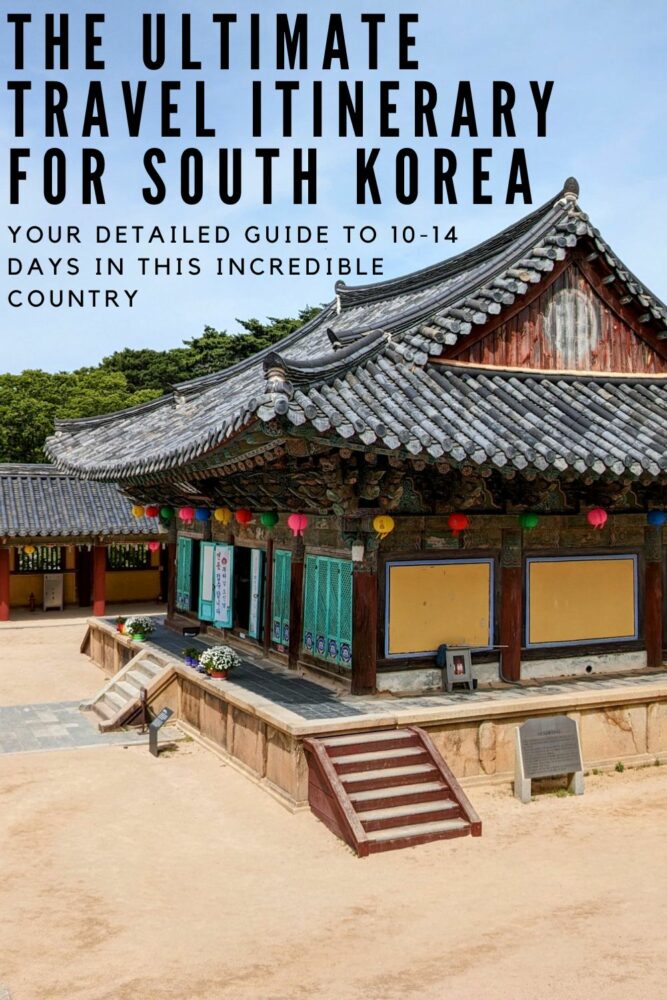
Similar Posts
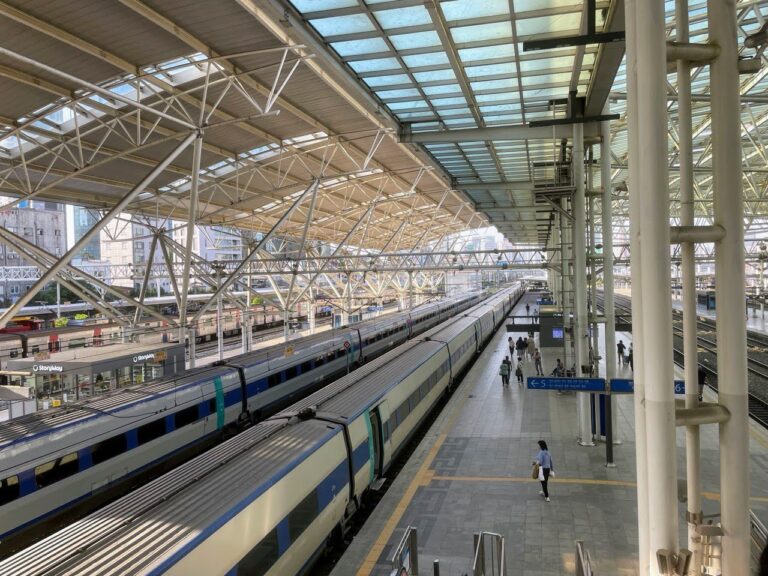
How to Get From Incheon Airport to Seoul
What to know about getting from Incheon Airport into Seoul: trains, buses, taxis, and how to pay for them all.
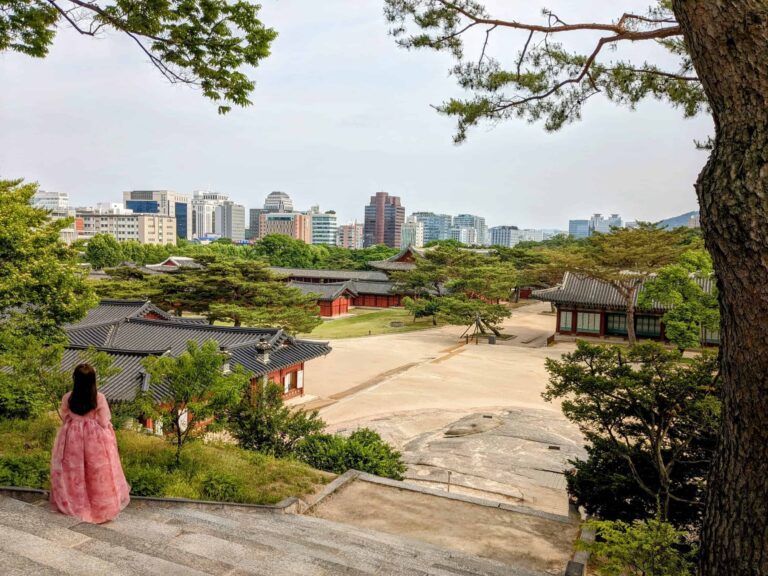
Buying a SIM Card or eSIM in South Korea
Everything you need to know about buying an eSIM or local SIM card in South Korea.
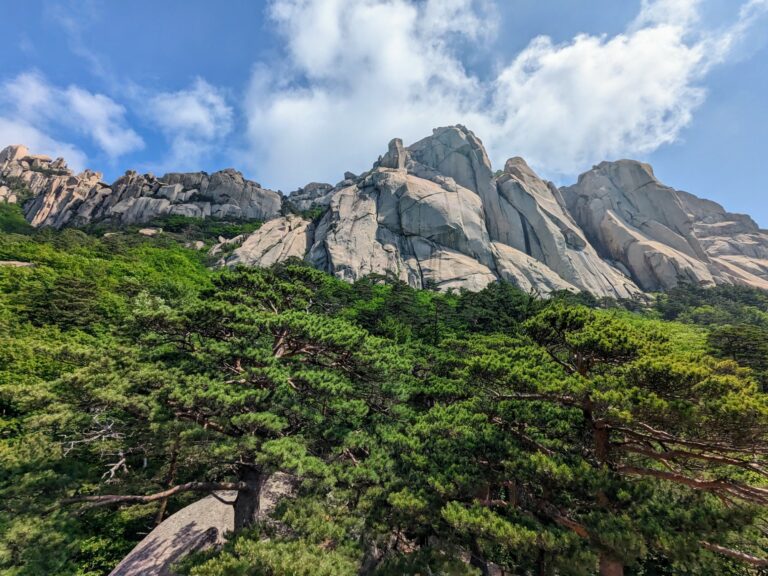
How to Get to Seoraksan National Park: Everything You Need to Know
Heading to South Korea’s Seoraksan National Park? Great decision! Here’s everything you need to know about getting there.
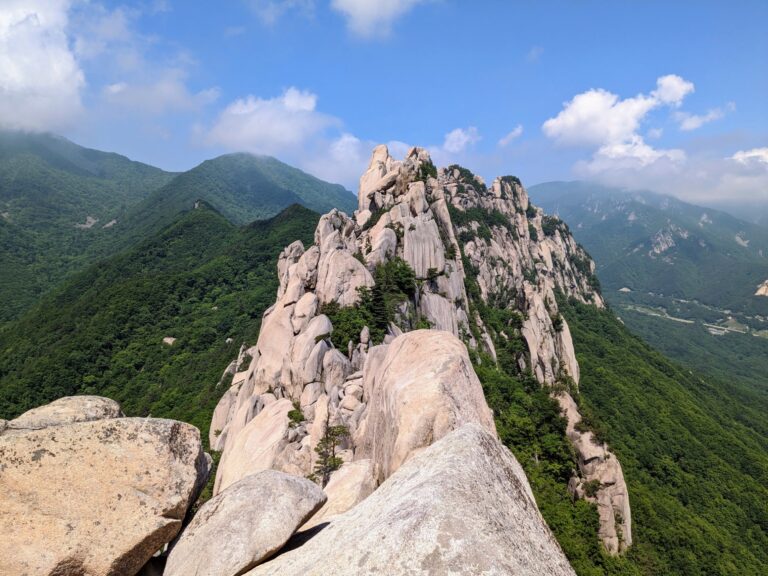
The Ultimate Guide to Visiting Seoraksan National Park
A detailed guide to visiting one of my favourite places in South Korea, Seoraksan National Park.
Leave a Reply Cancel reply
Your email address will not be published. Required fields are marked *
Save my name, email, and website in this browser for the next time I comment.
This site uses Akismet to reduce spam. Learn how your comment data is processed .
We Are Travel Girls
A Community Created To Inspire, Connect, Educate & Empower Female Travelers
ASIA , SEOUL , SOUTH KOREA · March 5, 2019 Last Updated on July 25, 2024
SOUTH KOREA ONE WEEK ITINERARY
This post may contain affiliate links. As an Amazon Associate I earn from qualifying purchases. We may receive a small commission when you make a purchase using our link.

I never thought that my full-time travel journey around the world will take me to South Korea but I am so glad it did. I discovered a fascinating country, a country that I was about to fall in love with forever.
In this one week itinerary I’m excited to share with you what makes South Korea such an amazing destination!

Exploring South Korea: 7 Day Itinerary
South Korea is an organized and intriguing country that has many incredible tourist attractions, and it will surprise you at every step.
From live K-pop performances to jaw-dropping temples and beautiful palaces, South Korea has it all.
It’s a country where the old and new are intertwined. It’s a country of contrasts but this is what makes it so captivating.
If you are planning to spend one week in South Korea, you are in the right place.
This country has a lot to offer in terms of tourist attractions and it might be hard to choose but I am here to help you.
After traveling across the country from north to south, I know which places are worth visiting and which are not.]
In this South Korea one week itinerary I’m including only the best places, the ones that will leave you in a state of awe.

Is One Week In South Korea Enough?
One week is always too little to explore an entire country, but you can definitely see the highlights.
Our first stop on our itinerary will be in Seoul . Although most of it was destroyed by the Korean War, a few historical buildings still remain.
Be prepared to see historical buildings surrounded by skyscrapers, cool tourist attractions and experience the incredible nightlife. This fashion and the technology-forward city has something for everyone.
After four days in Seoul, we will continue our itinerary and we’ll stop in Busan for another three days.
Busan is more laid-back, everything happens at a slower pace here.
After experiencing the hustle & bustle of Seoul, you’ll feel more relaxed in Busan. With a colorful village, an incredible fish market and beautiful temples, Busan will reveal to you the other side of South Korea.
Let’s begin our journey!
South Korea Itinerary: Seoul – 4 Days
Below are the most important tourist attractions in Seoul, the ones I recommend visiting. From breathtaking panoramic views, shopping opportunities, history and culture, this itinerary covers it all.
Take A Trip To The North Korean Border
One of the most famous borders in the world is the one between South Korea and North Korea, and the good news is that it can be visited! Apart from being a valuable history lesson, a trip to this border will get you pretty close to North Korea.
From the Dora Observatory , you can actually see a North Korean village. For those who have no plans of visiting North Korea (which is most of us), this is an incredible opportunity to see a glimpse of one of the most secretive countries in the world!
There are two kinds of trips to the demilitarized zone, commonly known as the DMZ. One trip takes half of the day and the other takes a full day.
Depending on how much time you want to spend at this famous border, you can choose either of them but if you want to visit the place where the North and South Korean soldiers stand face to face, you will have to choose the full-day trip.
- South Korea Demilitarized Zone Half & Full Day Tour
- From Seoul: Half-Day Demilitarized Zone (DMZ) Tour
- DMZ Half- or Full-Day Trip
Good to know: Make sure to book your tickets well in advance. They sell out quickly.

Namsan Seoul Tower Views
The Namsan Seoul Tower is the place that offers some of the best views over Seoul. It has several free viewing platforms, restaurants and a few museums, but the best view you can get is from the observatory on top of the tower.
The best time to visit is at sunset or during the night. Seeing how the night takes over the city is a truly unique experience.

Subscribe to get our FREE eBook with tips on saving money when you travel!
Hongdae Neighborhood
Hongdae is the heart and soul of Seoul. Hundreds of cafes, clubs, gaming centers and live performances are waiting for you. This hip place is full of youngsters in search of fun.
Make sure to try the 34-cm tall ice cream, go karaoke, admire the K-pop performers and eat some local Korean street food .
Hongdae is the perfect place to spend the evening. If you want to unleash your party animal, try one of the clubs. There are plenty to choose from!

Visit A Royal Palace
There are five royal palaces in Seoul but visiting all of them would take a lot of time. This is why in this itinerary I recommend visiting the Gyeongbokgung Palace , the biggest and most impressive out of all the palaces.
Get your camera ready and explore the courtyards and admire its beautiful architecture. While at the palace, you’ll notice that some of the locals and tourists alike are dressed in beautiful traditional Korean dresses which takes me to my next point.
For more information on the best palaces and things to do, be sure to read our Ultimate City Guide to Seoul !
Palace Tours
Gyeongbokgung Palace History Walk

Wear A Hanbok
There is no better way to immerse yourself in the local culture than renting a hanbok for a few hours. Apart from being stunningly beautiful, renting a hanbok is an unforgettable experience.
A lady will help you choose the design and get dressed and after that, she will accessorize your hair with traditional headbands and floral pieces. After you’re ready, head outside and take some photos. You’ll notice that both locals and foreigners love wearing hanboks.
Good to know: The entrance to the palaces is free if you are wearing a hanbok.
Our Top Places To Stay In Seoul, South Korea:
- Airbnbs in Seoul
- Lotte Hotel Seoul
- JW Marriott Hotel Seoul
Explore Bukchon Hanok Village
One of the most visited tourist attractions in Seoul and the preferred location for photo shoots is the Bukchon Hanok Village . This traditional village with traditional homes is a glimpse into Seoul’s past.
There is no entrance fee to this village so you can wander around and admire it as long as you want. Keep in mind that locals live here so don’t make too much noise!

Step Into The Future At Seoullo 7017
This former highway transformed into a pedestrian walkway feels like you’re stepping into the future. Made out of glass and hosting more than 24,000 plants and trees, Seoullo 7017 is perfect for a short walk.
You can admire the skyline or sit for a few minutes and watch the traffic below you. Either way, Seoullo 7017 is one of those places that you have to visit in Seoul.

Admire Jogyesa Temple
Be prepared for a splash of color at Jogyesa Temple in Seoul. Full of flowers and with incredible architecture, this temple is my favorite from entire South Korea.
While walking around the temple, stop for a few minutes to admire the intricate paintings and sculptures covering the temple. It is truly a unique sight!
Visiting a Korean temple is always a good idea if you want to learn more about the local culture and be closer to locals’ daily life.

Explore Gangnam Neighborhood
Does “Oppa Gangnam Style” sound familiar to you? Well, the song is about one of the neighborhoods of Seoul – Gangnam.
Gangnam is an area full of trendy shops, cool cafes and shopping opportunities. It’s the place where the youth meets and has fun. Here you’ll really feel Seoul’s vibe.
While you’re in the area, don’t forget to visit the Gangnam Style Horse Dance Stage right at the exit of Gangnam metro station. You can take a funny photo here while doing the famous dance.

Visit A Local Market – Namdaemun Market
Namdaemun Market is the biggest traditional market in South Korea and it was opened in 1964. Whatever you’re searching for, you’ll find it here.
There are over 10,000 shops selling souvenirs, clothes, electronics, fruits & vegetables and street food at affordable prices. Be prepared to leave a few bucks behind. I ended up buying souvenirs for the entire family and some delicious street food.

Go Shopping On Insadong Street
Another popular place for shopping on our itinerary is Insadong Street. The prices here are a little bit higher but you’ll find some unique items.
If you’re passionate about art, here you will find paintings, sculptures and local handicrafts. Also, there are many restaurants to choose from both local and international cuisine.

Get Artistic At Dongdaemun Design Plaza (DDP)
If you’re truly passionate about modern and contemporary architecture and art, you must visit the Dongdaemun Design Plaza (DDP) in Seoul.
This building is a wonder of architecture. With its round shapes and metal look, this place houses fashion shows, exhibitions, live performances and almost anything related to art.
Dongdaemun Design Plaza attracts quite a fashionable crowd, in search of the latest trends around the world.

South Korea Itinerary: Busan – 3 Days
After so much visiting and traffic in Seoul, it’s time to take a break and relax in a beautiful city by the sea.
Take the train for a few hours and make your way through dense forest, breathtaking mountains and thousands of greenhouses to Busan .
It is the perfect choice for a few days of unwinding. Eat some fish delicacies, explore the colorful Gamcheon or visit its beautiful temples.
Eat At Busan Fish Market
Nothing can prepare you for a visit to the Busan Fish Market . Walking through the stalls feels like a visit to the aquarium.
You will see almost every species of edible sea creatures displayed on thousands of stalls, waiting to find their customers. Some small, some wide, some colorful, the fish sit beautifully displayed alongside vegetables.
If you want, you can even go to one of the restaurants and try the seafood. There is so much to choose from and everything is delicious.
The Busan Fish Market is the biggest in South Korea and I can swear that the fish there could feed an entire city.

Explore The Colorful Gamcheon Culture Village
Thousands of colorful houses, built on terraces wait for you at Gamcheon Culture Village , Busan. This village is full of street art and art pieces, scattered along the streets and alleys.
It is a delight to discover it and uncover its secrets. If you want, you can buy a map from the Tourist Information Center, collect all the stamps while exploring Gamcheon and, as a reward, you’ll receive some beautiful postcards.
Also, if you’re in the area, don’t forget to try the raindrop cake. It looks like a drop of water and it’s delicious!

Visit Haedong Yonggungsa Temple
One of the only temples situated by the sea in South Korea is the Haedong Yonggungsa Temple . Its beauty cannot pass unnoticed.
This scenic spot is one of the main attractions of Busan and is visited by both locals and foreigners. With dozens of shrines, statues and stupas, this temple offers some incredible views towards the sea.

Shopping On Gwangbokro Cultural & Fashion Street
With well-known international brands and local brands alike, this shopping street is perfect for those in search of cool clothing and shoes.
You will find pretty much anything here but the prices aren’t the most affordable. Be prepared to splurge a bit but let me say something – You deserve it!

Go To The Beach
Busan is famous for its beautiful beaches and for good reason. The beaches are wide, super-clean, the water is perfect for swimming and the nearby skyscrapers make Busan look like a movie scene from Miami.
Take your beach towel, sunglasses and slippers and enjoy the sun for a few hours.

Admire The View From Yeongdodaegyo Bridge
Probably one of the best spots to admire the city is the Yeongdodaegyo Bridge. Stop for a few minutes and see how the fishing boats return to the Fish Market or how big ships pass underneath the bridge.
If you look towards the hills you’ll even notice the colorful houses of Gamcheon Culture Village. The view is truly spectacular!
South Korea In One Week Wrap Up
Both Seoul and Busan are beautiful, intriguing cities with a lot to offer in terms of tourist attractions.
Spending one week in South Korea is enough to uncover the secrets of both of these cities by following this itinerary. While visiting them, you’ll discover the fast-paced life of Seoul and the laid-back vibe of Busan. Enjoy!
We hope that this article has inspired you to take a trip to South Korea. If you have any questions about the destination or have your own travel tips to share please leave these in the comments below.
Want to share your own travel tips by guest writing for We Are Travel Girls? Go to our Contribute page for guidelines and to submit your article.
Pay Less, Travel More
Subscribe to get access to our FREE eBook with tips for saving money when you travel!
- Airbnbs in Seoul, South Korea
- Find the best price on hotels in Seoul, South Korea
- Sign up to AirBnB with this link and receive a US $35 off your first booking
Read More About South Korea
- The Ultimate Seoul City Guide
- Vegetarian Food To Try In South Korea
- 7 Incredible Places To Photograph Busan, South Korea
- 6 Free Things To Do In Seoul
- 8 Reasons To Visit Jeju-Do On A Budget
We Are Travel Girls Contributor Aurelia Teslaru of DailyTravelPill.com Connect with Aurelia Instagram | Pinterest | Facebook | YouTube
Pin For Later

This website is a free resource and to keep it free for our readers we may use affiliate links in our articles. If you make a purchase via the links on our site you will pay the same price, but we may receive a small percentage which helps us to keep bringing you new and informative travel content every day! Any products we endorse we personally use and love. Please see our Disclosures for more information.
You’ll Also Love

March 5, 2019 at 6:36 am
I’m headed to South Korea next month so this was a very informative and helpful read! Made me get even more excited and I definitely added some of these suggestions to my list. Thank you for sharing!
Brian Bailey says
March 11, 2019 at 4:35 pm
Heading to South Korea from China in a couple of weeks. Will start in Seoul but can not decide between Busan and Jeju Island – only have 6 days – might try to squeeze them all in. This page was very useful in planning my trip – thanks!
Travelling Tam says
March 22, 2019 at 4:07 pm
I have read this about 3 times. So useful. Heading there in June, cant wait!
Debbie says
December 8, 2019 at 10:46 am
How was your trip ? I’m planning to gon next year
Cecilia says
November 17, 2021 at 2:06 pm
Hello, can we go together in group.. I’m planning to go next year tooo… let me know what you think?
April 8, 2019 at 8:55 am
My daughter and I are going to South Korea next month and we are so excited. This article and itinerary are very informative and helpful. We are visiting Seoul, Busan and Jeju.
June 10, 2019 at 8:13 am
South Korea is such an amazing travel destination for me. I have been there for a couple of time.
I loved your honest and resourceful travel guide, photos are mind-blowing.
oshin lawrence says
October 19, 2023 at 5:34 pm
Leave a Reply Cancel reply
Your email address will not be published. Required fields are marked *
Notify me of follow-up comments by email.
Notify me of new posts by email.
- Travel Girls Getaways
- DESTINATIONS
- TYPE OF TRAVEL
- TRAVEL RESOURCES
- AMBASSADOR PROGRAM
- TRAVEL GIRLS GIVING
Get Access To The Travel Resources Library
Subscribe to receive free access!
- Work With Us
- TESTIMONIALS
- DISCLOSURES
- TERMS OF SERVICE
- PRIVACY POLICY
- ACCESSIBILITY
COPYRIGHT © 2023 WE ARE TRAVEL GIRLS
Exclusive Member of Mediavine Travel

EPIC 7 days Korea itinerary for first-timers
By: Author Kris
Posted on Last updated: April 30, 2024
Are you heading to Korea and looking for the perfect 7-day Korea itinerary? You came to the right place. Here we share what to do and where to go when you have 7 days in South Korea.
South Korea is a fascinating country. It has a rich history and offers its visitors everything from the ultra-modern capital city of Seoul to villages like Andong where it seems that time has stood still.
The country has countless National Parks, one of them even adjacent to Seoul, where we did some impressive but exhausting hikes. The park is very mountainous…
So, there’s a lot to explore in South Korea and the hospitable Koreans made our stay impeccable.
In this Korea trip blog post, we share our complete day-by-day South Korea itinerary for 7 days. We end with some travel tips for South Korea.
Perfect for your first time in Korea.
There is a really good chance that this post contains affiliate links. If you click one of them, we may receive a small commission (for which we are deeply grateful) at no extra cost to you.
In a hurry? Here we share our South Korea itinerary overview
If you don’t have time to read through the full 7-day Korea itinerary, use this overview to get an idea of the things to do each day and save it for later.
- Day 1-2 Seoul: Palaces, Insadong, traditional Hanok houses, Gwangjang market, Myeongdong, DMZ
- Day 3-4 Gyeongju: Andong Hahoe Folk Village, Royal tombs, Bulgasaka temple
- Day 5-6 Busan: Haeundae beach, Gwangandaegyo bridge, Taejongdae Resort Park, Jagalchi Fish Market, Busan Tower, Water Temple, Gamcheon cultural village
- Day 7 Seoul: Seoul tower, Bukhansan National Park
Table of Contents
How to travel around South Korea
We rented a car and went on a road trip in South Korea.
You won’t need your car in Seoul so our advice would be to pick up your car from one of the many downtown locations when you leave for Gyeongju.
You can rent a car from Rentalcars.com , QEEQ , or Klook.
Here is all the information you need about renting a car and driving in Korea.
If you prefer not to drive you can use the train. Both Gyeongju and Busan have good train connections. If you travel this itinerary by train you will save with the Korea Rail Pass .
1 week in South Korea: Our South Korea itinerary
Most international flights arrive in Seoul. This makes it the logical city to start our tour.
Day 1 -2: Seoul
Seoul represents the futuristic race the country has run over the past years. The pace at which this city has been undergoing development is similar to that of Chinese cities.
Seoul expanded enormously over the years and now houses almost 12 million people. It borders Incheon in the West and Bukhansan National Park in the North.
The highlights can be visited in a few days but you will need weeks to discover all areas of this stretched-out megapolis.

Seoul city walk
Depending on what time you arrive in Seoul you can do (part of this) walk to get a good first impression of this fantastic city.
The city counts 5 palaces. We visited Gyeongbokgung Palace, the most popular one, to watch the changing of the guards. Later on, we also went to Unhyeoungung Palace and Deosugung Palace. Those palaces are not as popular which makes them ideal for a complete and tranquil visit.
From Unhyeoungung you can continue to Bukchon Hanok Village, one of the most beautiful places in South Korea to stroll between the traditional Hanok houses.
From Bukchon it’s not far to Insadong , one of the most traditional and cultural districts in Seoul and a great place for lunch.
Make sure to drop by the beautifully decorated Jogyesa temple.
A little bit further out, but worth the detour, is Gwangjang market.
This is a traditional street market where you can mingle with the Koreans to taste some of the local street-food delicacies.
Have a look at the stalls that sell San-nakji which is raw octopus that is killed by cutting it into pieces on your plate so that the tentacles are still moving while it is served.
I can assure you that we did not try this either but there’s a lot more you can enjoy like the Soonday (blood sausage), different kinds of rice rolls, and bindaetteok, a kind of pancake.

Coming back from Gwangjang take a left at the futuristic Jongno tower towards Myeongdong .
Where you cross the Cheonggyecheon River, you will find several food trucks.
After you have discovered the Myeongdong shopping district you can make your way to the modern city hall and walk along the wide Sejong-daero boulevard back towards Gyeongbokgung palace.
Seoul Itinerary
Now that you’ve already got the first impression of this thriving capital it’s time to explore it further.
You can easily spend a day exploring the city’s palaces and Bukchon Hanok Village. A second day can be spent going to Namsan Park where you can go up the Seoul Tower. Afterward, you can visit Myeongdong and Hongdae.
If you ask us, the DMZ is also something not to be missed.
As you can see there is more than enough to do for 2 days.
We won’t go into more detail here. Instead, have a look at our detailed 3-7 day Seoul Itinerary . Our recommendation would be to focus on the first 2 days of this itinerary, but of course, you are free to create your own itinerary based on the different activities that we describe.
The ultimate Seoul itinerary for 3-7 days, 39 of the best things to do in Seoul and the 4 day Seoul itinerary.
Take our Seoul E-guide with you

For the price of a single cup of coffee, you can get our 3-7 days Seoul itinerary as a nicely formatted PDF document.
You can print it or store it on your phone so you can access it anytime during your visit to Seoul.
Have a look here for more information and a preview.
Organized Tours in Seoul
Here is an overview of the best-organized tours in Seoul. An organized tour saves you time and, moreover, the tour guide will enlighten you about the different sights you visit.
We partnered up with GetYourGuide and Klook for these activities.
We love GetYourGuide because they’re flexible. Sometimes your plans change last minute and then you want to be able to cancel your tickets and get your money back. It’s also good to know that GetYourGuide has your back when the local tour operator doesn’t show up or cancels your trip.
Klook is a trustworthy travel company headquartered in Hong Kong that teams up with local operators to offer all kinds of travel experiences.
We selected 3 excellent tours in Seoul just for you.
Visit the DMZ

Visiting the DMZ is a must-do when you are in Seoul. The DMZ area is located around 60 km up north of Seoul and can only be visited with a guided tour.
Make sure to book your tours well in advance as they often sell-out. Trips to the DMZ run Tuesday to Friday.
Book a full-day tour that includes the JSA , the Joint Security Area, the place where the 2 countries meet, and where you can step across the border and be in North Korea for a few minutes.
You can read more about the DMZ in day 3 of this itinerary and we have a full article online that compares the different tours that you can book to visit the DMZ.
Join a Seoul City Bus Tour

If you want to discover the highlights of Seoul but you are short on time, this bus tour is for you. Hop on the bus and discover the top city attractions with ease.
Perfect for first-time visitors.
Check prices and availability: Seoul City Bus Tour
Experience a Nanta show in Myeongdong or Hongdae

If you are looking for a fun night out in Seoul this nonverbal Nanta show is perfect for you. The narrative centers around 3 charismatic chefs and integrates the traditional rhythms of Samulnori with comedy and drama.
Lots of fun and perfect for the whole family.
For this activity, we decided to partner up with Klook because they often have the cheapest tickets for the Nanta show.
Check prices and availability: Nanta show
Where to stay in Seoul?
Seoul is a large city with lots of districts each with its own styles and attractions.
Here we share the best places to stay for tourists and first-timers based on our own experience.
Myeongdong – City Center
Myeongdong is right in the heart of Seoul’s city center.
This is one of the most popular places to stay.
The district does draw large crowds of tourists as well as shoppers and once the sun settles people flock to the streets to stroll along the pop-up food stalls and enjoy some of the best street food that Seoul has to offer.
You will also find plenty of restaurant options, we had some of the best dakgalbi in this district.
By staying in Myeongdong you are close to the Namsan Seoul Tower and the Namdaemun Sungnyemun gate.
Metro hotel

The Metro hotel is within walking distance of shopping areas, street food, and public transportation.
The rooms are small but clean and all have complimentary water, tea, and coffee facilities.
The hotel offers a complimentary smartphone which you can use to make local calls and take out when exploring.
The hotel offers a free massage chair to use in the main lobby which is nice after a tiring day sightseeing.
Check prices and availability:
Booking.com
Insa-Dong – Palace Quarter
Insa-dong is one of the most traditional and cultural districts in Seoul and a very touristy district. The streets are lined with souvenir shops, restaurants, and tea houses.
You are within walking distance of most palaces, the Jogyesa Buddhist Temple, Bukchon Hanok village, and Gwanghwamum square.
This is probably the best location if you’re short on time and want to visit the highlights on foot.
Sunbee hotel

The Sunbee hotel is close to 2 subway stations, the Bukchon Hanok Village, and Seoul’s city center.
There are many nice restaurants, tea houses, and cafes near the hotel.
This is an excellent location for sightseeing. The rooms are large and have good beds.
The hotel staff is always friendly and willing to help and most of them speak English.
We stayed in Gangnam the commercial district of Seoul that attracts the rich and young crowds who come here to spend their hard-earned money in the many exclusive bars, restaurants, and nightlife venues.
Its huge boulevards are lined with skyscrapers and are best enjoyed after dark when Gangnam comes alive and the huge billboards lighten up the neighborhood.
Gangnam is a little outside of the traditional tourist spots and might not be ideal if this is your first visit to Seoul.
Seoul has one of the world’s largest subway networks and the trains run frequently. Still, it took us 45 minutes to get from Gangnam to Anguk, one of the major stations in InsaDong, the Palace District.
The advantage of staying in Gangnam is that the hotel rooms tend to be a tad larger here compared to the city center.
Aloft Seoul Gangnam

Aloft Seoul Gangnam is about 5 mins walk to Cheongdam station (line 7). The subway system takes you relatively easy and fast to all the places of interest.
The hotel is very easy to reach from Incheon airport (Airport Bus 6006 literally stops in front of the entrance) and is in the nice Cheongdam Area with a bunch of good food options and coffee shops.
Nice rooms with great service. Friendly and helpful staff.
If you aren’t convinced of the above-mentioned hotels have a look at our other Seoul accommodations posts.
- Where to stay in Seoul: our post on the best areas and hotels to stay in Seoul
- Coolest hotels in Seoul: an overview of cool hotels in Seoul
- Best Airbnbs in Seoul: for those who prefer staying in an Airbnb in Seoul

How to get from Incheon or Gimpo airport to Seoul
There are 2 international airports in Seoul, Incheon International Airport and Gimpo airport.
How to get from Gimpo Airport to Seoul
Gimpo airport is Seoul’s smallest airport and lies about 50 minutes from downtown Seoul.
It is often used for domestic flights and offers a shuttle service to Tokyo.
Gimpo Airport can be easily reached by subway Line 5 and with the all-stop A’REX Airport Express.
How to get from Incheon airport to Seoul
Most international passengers will arrive at Incheon International Airport.
South Korea’s largest airport is 47km from Seoul Station , which is considered to be the center of Seoul. The airport is well-connected to this station.
Some hotels have courtesy shuttles to Seoul station but if they don’t you could continue your journey with the subway, the train, the limousine bus, or organize a private transfer.
The fastest and cheapest way
The fastest and cheapest way to get from Incheon International Airport to Seoul Station is using the A’REX Airport Express.
Check prices and availability: A’rex Incheon Airport Express Train Tickets
The limousine bus
Another option is taking the limousine bus. There are 4 lines that stop at various places in Seoul.
- 6701 Airport: Seoul City Hall
- 6702 Airport: Dongdaemun/Namsan
- 6703 Airport: Gangnam/COEX
- 6705 Airport: Jamsil/East Seoul Bus Terminal
The buses run from early in the morning until the evening.
Note that the schedule for all buses is different, so definitely check the bus hours before booking a ticket.
Check prices and availability: Seoul K lImousine Bus
Take a private and direct transfer
Depending on the location of your hotel and the length of your flight (and the amount of sleep you could get) you might not be looking forward to train and subway rides in your first hours in Seoul.
After a long flight, a private and direct transfer from the airport to your hotel will be a lot more comfortable.
Check prices and availability: Incheon Private Transfer

How to get around Seoul?
The easiest way to travel around Seoul is to use the subway.
Seoul’s subway is well-connected and quite cheap.
Single-ride cards can be purchased on vending machines with coins and bills, credit cards are not accepted.
T-money recharge card
To avoid the hassle of buying tickets for each and every ride you can opt for the T-money recharge card .
Korea tour card
If you are visiting more places in South Korea, we advise you to buy a Korea Tour Card. This is a T-money card that can be used in the whole of Korea.
In addition to the comfort of just having to tap the card whenever you use public transportation, you also get discounts at a number of popular attractions, including Lotte World, Everland, and several more.
If you have an Android phone, you can even use a digital version of the T-money card.
This card is a great deal as it is even cheaper than a regular T-money card. It costs ₩6000 and has a ₩5000 value that can be used towards rides.
Check prices and availability: Digital T-Money Tour Card for Android
Korail railPlus transport card
In addition to the subway and busses, this card can also be used on Korail’s intercity trains, including the fast KTX trains.
Some taxis also accept the Rail+ card and you can also pay your highway toll fees with this card.
Check prices and availability: RailPlus card

M-pass card
This is a transportation card exclusively for international tourists traveling in the Seoul metropolitan area.
M-PASS comes in five different durations: 1-day, 2-day, 3-day, 5-day, and 7-day passes.
You can buy your M-pass card on weekdays at the Seoul City Tower. (close to exit 10 of Seoul Station) Cash only.
Discover Seoul Pass
If you plan to visit a lot of Seoul’s tourist attractions then the above-described Discover Seoul Pass is your ideal travel companion.
The pass has a 1-day, 2-day, and 3-day variant and gives you discounted or free access to many top tourist destinations.
It also has a T-money function that will save you ₩2,500 from buying a separate T-Money card. As an extra benefit, you get one free one-way A’rex Express train ride.
Note that The Discover Seoul Pass is not always available.
If it isn’t, you can see if they have the BTS edition. It’s a 24hr edition of the Discover Seoul Pass without the T-money option.
Instead, you get a Korea Tour T-money Card as a bonus.
The BTS edition covers the same attractions as the regular Discover Seoul Pass.
Discover Seoul Pass BTS (24h+Korea Tour Card)

Day 3 -4: Gyeongju
The next stop on our 1-week Korea itinerary is Gyeongju.
As soon as you leave Seoul you will find yourself surrounded by high mountains and idyllic countryside. A stark contrast with the urban jungle of Seoul.
For the next 2 to 6 hours you will see endless green landscapes that occasionally have to make way for rugged mountain tops.
Gyeongju used to be the capital of Korea during the Silla dynasty and today it is still recognized as the cultural capital of the country.
This makes Gyeongju a must-visit on your 7-day Korea itinerary.
How to get to Gyeongju from Seoul
The fastest and easiest way is by KTX train . KTX trains travel between Seoul station and Singyeongju Station. The journey takes around 2 hours. From Singyeongju you can take a bus to Gyeongju. The bus ride adds another 30 minutes.
Don’t forget to buy a Korea Rail Pass . If you do the round trip between Seoul and Singyeongju, with a stopover in Busan, you will save with a Korea Rail Pass .
Having a rental car offers more freedom but you won’t be able to beat the time it takes for the train to reach the city. Using turnpikes the journey takes 4 hours, if you want to avoid tolls it will take somewhere between 5 and 6 hours.
The advantage of self-driving is that you can enjoy the beautiful landscape at your own pace, and make a stopover in the Andong Hahoe Folk village.

The Andong Hahoe Folk Village
On your way from Seoul to Gyeongju, you will pass the Andong Hahoe Folk Village.
Allow 2 hours for a visit to this folkloristic village. We had mixed feelings about our visit. This well-preserved village forms a valuable part of Korean culture and is recognized by UNESCO as a World Heritage site. But it is not an open-air museum.
All houses are inhabited and most are hidden behind high ramparts and closed gates. Therefore you cannot visit the houses, you can only stroll through the streets or drive through them with a golf cart as many Asian tourists do.
It feels strange to pay an entrance fee just to walk through the streets of an inhabited village.
I hope our entrance fee helps the inhabitants to conserve their village but as a visitor, I would have loved to see the inside of some of these houses and some more historical context like you get in most folk villages.
That’s why I would recommend taking a guide who can give you some context about the things you see. He or she can teach you all kinds of things about Korean culture, architecture, and religion. I’m sure we would have appreciated our visit more with a guide.
If you want to visit the Andong Hahoe Folk Village but don’t want to drive there yourself you can join an organized day tour from Seoul. If you’re a party of 3 or more you can arrange your own private group trip.
Individual tour
Private group tour

Things to do in Gyeongju
Gyeongju is a relatively small town and most sights are within walking distance.
You can see most of the highlights of Gyeongju by walking from the city center past the Royal Tombs (often compared to Teletubbies houses) and the observation tower to the Donggung Palace with the Wolji Pond.
The most charming moment to visit the Palace is after dark when the reflection of the palace in the water turns your visit into a fairytale story.
Still, it is a good idea to buy your tickets during the day so that when you come back in the evening you can walk straight in and skip the huge lines at the ticket machines.
Bulgaksa is a popular temple near Gyeongju. Recognized as Unesco World heritage it houses 7 of South Korea’s national treasures.
From the temple, you can hike to the nearby Seokguram Grotto which is part of the temple and also recognized as Unesco World heritage.
It’s a scenic 45-minute uphill walk. It is a small but peaceful temple with a stone-carved Buddha in the cave.
No photographing is allowed and a glass wall has been put up to protect the interior of the cave.
Where to stay in Gyeongju
Gyeongju gg tourist hotel.

We stayed at the Gyeongju GG Tourist Hotel. The hotel lies in a good location right in the city center near the bus terminal.
It’s easy to walk to the Royal tombs as well as the other UNESCO World Heritage sites in the ancient tomb complex.
The hotel has spacious and comfortable rooms with a big bathroom.
The only negative that we can say is that the walls of the room are quite thin. We had a lot of noise from our neighbors who were arguing until late at night. But I suppose we were just unlucky with our neighbors this night.
If you have a car you can also opt for a hotel near Bomun lake where you can take long walks around the lake.
Hotel Lahan Select Gyeongju

Hotel Lahan Select Gyeongju offers comfortable rooms with a balcony.
The hotel is in a great location next to the lake, a stroll around the lake is lovely, certainly during the cherry blossom season.
The hotel has a buffet restaurant, Chinese restaurant, coffee shop, bakery & wine shop, kids’ play area, and video gaming room.
The professional hotel staff speaks English.

Day 5 – 6: Busan
Next on our list is Busan , South Korea’s fastest-growing city. A fishing village bursting at the seams.
Getting to Busan
If you travel by train, the journey from Gyeongju to Busan takes about 1 hour.
You will first need to jump on the bus to Singyeongju station where you can board a KTX train for Busan.
If you drive yourself it will take 2 hours if you use the toll roads or 30 minutes more if you avoid them.
Things to do in Busan
Busan is located along South Korea’s southeastern coast. It has some wonderful beaches and draws huge crowds during the summer months.
Haeundae beach is a nice place to stay if you fancy a romantic stroll on the beach before you retire to your hotel room.
The nearby Dongbaek park offers splendid nocturnal views on the 7-km long Gwangandaegyo bridge, better known as the Diamond bridge.

On hot days you can cool down in the Shinsegae Centum city shopping center.
Holding the record of the world’s largest shopping complex you will be able to tie on your ice skates and practice some rounds on the ice rink or relax in Spa Land.
An enormous spa complex with 22 different spas and a mixture of 13 different Korean traditional ‘Jjimjil-bang’ saunas and saunas from all over the world.
Busan’s Sea Life Aquarium is also in Haeundae. It’s highly regarded, certainly by couples with kids. If you visit the aquarium you can save a lot of money by buying discount tickets online here.
There are over 3500 islands to discover in South Korea. One of the most famous and beautiful is Jeju island.
In the center of Busan, you will find the Busan tower and the Nampodong & Jagalchi markets.
A little outside of the city is Taejongdae Resort Park, a peninsula that offers breathtaking views, and the Instagram-worthy Haedong Yonggungsa temple.
Also worth mentioning is the colorful cultural village of Gamcheon. Due to the photogenic stacked houses, this place is very popular with tourists.
Busan has loads more to offer. We recommend that you follow our 2-day Busan itinerary .
- We wrote a complete article about what to do in Busan, you can find it here.
- If you are looking for a Busan 2 day itinerary, click here.
- Wondering what to do in Busan at night, click here.
- If you have still some time left in Busan, you could consider making a day trip. Here is an overview of the best day trips from Busan.
Organized Tours in Busan
Busan lacks the efficient public transportation network of Seoul. There is a metro network but many of the tourist sights are far from the subway stops and will require a ride by bus. A car is therefore still useful in this city.
For those who do not have a rental car, we share some organized tours below. With these organized tours, you can efficiently visit the different sights.
You will not need to plot out your own itinerary and you won’t lose time waiting for the bus.
Busan Private Tour with a Local

If you are like us and you don’t like group tours, this private tour might be something for you.
With this tour, you will have the chance to explore Busan with a local guide who will customize your tour in line with your personal interests.
Perfect if you want to learn more about Busan but you don’t like group tours.
Check prices and availability: Private customizable Busan Tour
Busan Night City Tour

Busan is well known for its amazing night views. This tour is for you if you want to discover the city at night and take awesome night pictures.
Check prices and availability: Busan night tour
If you didn’t find what you were looking for, take a look at our overview with the best Busan day tours.
Where to stay in Busan
Here’s a complete list of excellent places to stay in Busan .
Below is the hotel where we stayed during our last visit to Busan.
Shilla Stay Haeundae

We stayed in the brand new Shilla Stay Haeundae hotel, located right in front of Haeundae beach.
The hotel has soberly decorated modern and comfortable rooms.
They have a rooftop bar which is a great place to hang out. The hotel is within walking distance of many restaurants.
- Here’s our complete guide about where to stay in Busan.
- If you prefer Airbnbs, have a look at our post in which we share the best Airbnbs in Busan.

Day 7: Seoul
The last day of your 7-day South Korea travel itinerary takes us back to Seoul to spend more time in this huge metropolis.

Several viewpoints offer dramatic views of the vastness of Seoul.
The Seoul tower and Seoul sky (in the Lotte world center) are perhaps the 2 most known and most accessible while the vistas from Bukhansan National Park are not as widely known.
The views from the park are at least as good and we absolutely recommend that nature lovers reserve some time to visit the park.
The trail that leads up to the Bogungmun gate of the old fort is tiring but once you reach the top you are rewarded with a beautiful view of the park and the vast city.
From here you can follow the ramparts of the old fort to the Daeseongmun gate where you can go back down via another path.
You can also use your last day for a great day trip (or weekend trip) from Seoul.
Here is an overview of more fun things to do in Korea.
If you have 2 weeks in South Korea, check out this post.
South Korea travel tips
Let’s end this Korea itinerary blog with some Korean travel tips.
What’s the best time to visit South Korea?
May, September, and October are the best months to visit South Korea.
June, July, and August are rainier and hotter with temperatures reaching 25 to 30 degrees. Moreover, the risk of typhoons is also greater.
In May everything starts to bloom and in September and October, the autumn colors make the landscapes very photogenic.
We visited South Korea in April and had 2 rainy days over the course of 2 weeks and a half.
Here is a step-by-step guide to planning your trip to Korea.
Going independent or joining an organized tour
We found it easy and straightforward to create our own travel itinerary for South Korea. Korea is a very modern country, we could book and arrange everything online.
We also found it pretty easy to travel around the country independently.
But if you don’t want to travel independently you could join an organized tour. TourRadar is a trustworthy company where you can book an organized tour.
If you prefer an organized tour, have a look at our overview of the best Korea package tours.
Cheap flights to South Korea
If you want to score cheap flights to Korea we advise you to have a look at Momondo and Skyscanner .
Both are flight aggregators that compare several hundreds of booking sites and give you an overview of the best flights and the cheapest sites to book them.
Momondo and Skyscanner are both very good at finding good deals, of the two, Momondo is probably the one with the most intuitive user interface.
Wondering how to find a cheap flight? Have a look at this post.
Do I need travel insurance for Korea?
Travel Insurance is something that can be overlooked when you prepare for your vacation.
Certainly when you’re traveling to a safe and civilized country. We didn’t get travel insurance for our first vacation.
A few years later we both took out new credit cards that came with travel insurance and relied on those. We know better now…
Overall, chances are slim that you will encounter any problems while traveling through a civilized country such as Korea. But when things go wrong in civilized countries, the medical costs can be high.
We learned it the hard way when we once had to visit a hospital in the United States. The medical care was excellent but we had high out-of-pocket expenses as it turned out the insurance that came without credit cards didn’t cover these costs. It turned out we were underinsured.
Drawing up a travel insurance policy may seem expensive at first but it can potentially save you a significant sum, significantly more than the small insurance fee.
Good travel insurance, such as the one from SafetyWing and HeyMondo , covers things like medical expenses, trip cancellation, overseas medical costs, evacuation, baggage damage or loss, and theft.
Exploring South Korea by car
We would encourage you to explore South Korea by car. There’s nothing wrong with the public transit system in cities like Seoul. But there’s nothing that can beat the freedom of having your own car.
You’re the master of your own schedule and you just need to load your bags in your trunk.
Taking the train often means that you will be dragging your bags up and down several flights of stairs.
Yes, there’re elevators but they’re not always very easy to find.
So here we will share what you need to know to do the perfect South Korean road trip.
Money in South Korea
Cash is king for visitors. Koreans can swipe their cards everywhere but foreign cards are not always accepted.
There were many ATMs at Incheon airport and it took us at least an hour to find one where we could withdraw cash. Most tourists were helping each other by pointing out other ATMs to their fellow tourists. It seems all foreigners were having the same problems.
Once we had left the airport things didn’t get better. It was always a hit or miss with the ATMs we tried.
Most wouldn’t accept our cards, but some did. Usually, we never suggest bringing cash but it looks like it may be a good idea to bring some cash to South Korea.
And once you have found an ATM that gives you cash make sure to withdraw enough! We couldn’t use our credit cards for toll fees. We had better luck in restaurants and gas stations where our cards were usually accepted.

Safety in South Korea
We didn’t encounter any problems whatsoever (except getting cash :-)) during our week in Korea but if you would you can call the travel hotline in 4 languages (Korean, English, Japanese and Chinese) 24/7.
Internet in South Korea
South Korea has the fastest internet in the world. A lot of places offer free WiFi. We don’t know why, but we didn’t always manage to get on the wifi.
Because we used quite a few apps to help us to travel around Seoul and to check for the best places to eat we bought a local sim card.
This way we were certain that we always had internet.
You can purchase your SIM card here or read our full post about what’s the best SIM card for tourists.
We used our own Pocket WIFI device to share the 4G connection but if you don’t have a device of your own you can also rent one online and pick it up at the airport.
Rent your Pocket WIFI device or read our full post about the best Pocket WIFI device.
Handy South Korean apps
Mangoplate is the app to check for restaurant reviews and the best places to eat.
Naver Maps is your GPS companion for your road trip.
Google Maps navigation is not working in South Korea and despite some people reporting that Waze was working for them, it was not for us.
The Naver Maps app is available in English (their website is only in Korean) and the app’s look and feel is very intuitive and very much similar to any other GPS app.
Available on: Google Play – Apple (This app is not getting much love for its Apple version. We used the Android version which worked like a charm)
Korea Seoul Metro Navi
Korea Seoul Metro Navi will guide you quickly and efficiently through Seoul’s extended subway system. The app calculates the fastest route to your destination.
Available on: Google Play – Apple
If you plan on taking taxis, we recommend that you use the Kakao Taxi app.
Available on: Google Play , – Apple
Here is a list of more travel tips for Korea.
Did you ever visit Korea? What do you think is the best itinerary for South Korea?
Let us know in the comments.
If you like this article, pin it

Tuesday 12th of November 2019
Great guide, thanks very much. I've been looking for a good week-long itinerary to recommend to people visiting Korea.
We do our best to provide in-depth information.
Monday 29th of April 2019
Very well written and it helped me a lot! I am planning a 1-week trip to South Korea this September.
Thanks Margaux, glad you love it. Enjoy your time in South Korea!
Thanks, we do our best to provide in-depth information.

Seoul Itinerary: Ultimate DIY Travel Guide for South Korea for 5 Days (More or Less)
by Aileen Adalid Itineraries , South Korea 134 comments
- Antarctica FAQ (Frequently Asked Questions): About Cruise Expeditions, Animals & More
- Spanish Food: Top 20 Must-Eat Authentic Local Dishes in Spain (+ Drinks)
- Cat S40 Rugged Smartphone: Built for a Travel Lifestyle
How to Start a Travel Blog in 2024: Your Ultimate Guide with Easy Step-by-Step Instructions
- Things to Do on Bastille Day in Paris, France (Celebration Tips & Travel Guide)
- Keio Plaza Hotel Tokyo, Japan: Luxury in the Heart of Shinjuku
- 10 Best Travel Shows on Netflix to Watch Now That Will Inspire Wanderlust
- Iceland Itinerary for 10 Days (More or Less): The Ultimate Ring Road Trip Travel Guide
- Top Things to Do in Dinant (Belgium Travel Guide & Tips)
- How to Overcome Fear of Flying: Top Essential Tips to Cope
One of my recent adventures was to the dynamic metropolis of Seoul in South Korea — a bustling city that not only holds a strong presence in Asia but also in the rest of the world. To date, this influence is largely due to Seoul’s cutting-edge technology, a strong economy, and vibrant culture (I’m sure that a majority of you have encountered K-pop , K-dramas, Korean cosmetics, and Korean food among many others at least once in your life!) (Seoul Itinerary)
TRIVIA : Seoul has 25 districts ( gu ) that are further subdivided into 522 sub-districts ( dong ), and with the Han River that runs through the middle of the city, there are distinct 2 sections: Gangbuk (the northern area that’s more traditional) and Gangnam (southern area that’s more modern). But… asking for the “center” of this whole metropolitan area is a difficult thing to answer because Seoul’s districts can somehow each function like a city center itself.
It actually baffles me that I didn’t go to Seoul sooner; nevertheless, the important thing is, I’ve finally seen this city for myself, and well… I just LOVED it! I am totally smitten about how it is constantly brimming with incredible things-to-do of sorts — all of which are enough to satisfy any kind of traveler out there.
Where to Stay in Seoul?
Come and check out my list of the ‘ Best Hotels in Seoul ‘ which features the top recommended choices for cheap to luxurious accommodation choices PER district.
Clearly, the days I spent there were not enough and I would have absolutely loved to stay longer. And now, as I recall the vast array of activities and sights that could be done and seen, I’ve decided to whip up this comprehensive Seoul itinerary travel guide that spans 5 days/nights to help travelers (like you) to plan a trip with ease and speed.
Rest assured, the Seoul itinerary below is totally customizable to fit any number of days that you might be spending — but first, here are some important tips for your travel to South Korea!
Table of Contents
South Korea Travel Guide
» quick travel planning.
- Top tours & experiences
- Find flights to Korea
- Visa requirements
- Best hotels & hostels
- Travel insurance (5% discount)
- Stay connected
– – –
» Best Time to Visit
I suggest coming during autumn to see the amazing fall foliage , but of course, if you want to witness cherry blossom season then spring is a considerable option too.
- Spring : The city becomes a hit with all the flora that start to bloom and bud. And of course, much like Japan, the city has cherry blossoms which tourists often seek. Given this demand, there tends to be a slight increase in costs, but the weather and season are quite desirable.
- Summer : This is arguably the peak season in the city so things get busier and costlier. It doesn’t help either that this is the vacation month of schools and Korean companies so everyone is out and about. That’s why if I were you, you should avoid these months — also because the weather can get quite humid with occasional downpours.
- ★ Autumn : (This is the best time to visit Seoul because the weather is pleasant, prices are more affordable, and crowds are thinner. Not to mention the number of great destination must-sees for viewing vibrant leaves of autumn in South Korea . However, do take note to avoid Chuseok or Korea’s autumn harvest festival.
- Winter : As the temperatures drop, prices and airfare also drop. Take note though that it can get very chilly; but, supposing you’re not that sensitive to the cold, this can be a fun time given all the amazing ski resorts and festive atmosphere.
Other South Korean blooms to watch out for?
See this list of the most popular spring flowers in Korea — when to see them and where to go!
ADDITIONAL TIP: Arrive and start your Seoul itinerary before the weekend. For example, if you’re visiting for 5 nights, make sure to come from Wednesday to Sunday. I say this because most places, museums, and shops close on Mondays and Tuesdays. Moreover, a lot of cosmetic stores hold sales starting on Thursdays and up to the weekend .
- WINTER: Dec to Feb
- SPRING: March to May
- SUMMER: June to Aug
- AUTUMN: Sept to Nov
» Getting in to South Korea
International visitors typically arrive at the main airport called Incheon International Airport (ICN) . To get here, I recommend browsing through Skyscanner to find the best flight deals from your point of origin. If you’re from the Philippines like me, Skyscanner also scans through budget airlines such as Air Asia and Cebu Pacific in order to find which of the 2 has the cheapest rate on the dates you choose.
From ICN, below are the following modes of transportation to get to Seoul…
By train. AREX (Airport Railroad Express) or ‘airport train’ connects ICN to Seoul station and Gimpo Airport, operating from 5:20AM to 12:00AM (midnight). There are 2 types of AREX, namely ‘express’ and ‘all-stop’. As the name suggests, ‘express’ is fast as it goes directly to Seoul Station (43 minutes) whereas ‘all-stop’ will arrive at 12 stations before finally arriving at Seoul Station (53 minutes). ‘Express’ tickets typically cost ₩8,000 but if you purchase online , you can get it at a discount for about ₩6,500~ only — and if you use code AILEENKLOOK , you’ll get an additional 5% off! Contrarily, in case you hold a Discover Seoul Pass , you can avail of one (1) FREE one-way ride.
By private transfers . If you want the utmost convenience and ease, especially without having to drag your luggage around, I recommend booking a private transfer to your hotel for only $63~ (or Php 3,300~ / ₩67,000~). This works best if you’re coming together with other people so that you can share the cost and save more. Otherwise, there are taxis at the airport that charge around ₩60,000 to ₩90,000 depending on your destination (take note that if the taxi passes by a road toll, you’ll have to pay for it).
By airport limousine/bus or shared transfers. There are limousine buses that travel directly to major areas and big hotels in Seoul and are a great option when you’re traveling with a lot of luggage. To get a discounted rate on this at about ₩14,000~ only, book with KAL or via shared transfer .
» Visa for South Korea
If you’re NOT a citizen of any of South Korea’s exempted countries , you are then required to avail of a visa beforehand. (If you’re from the Philippines, you can read my guide on how to get a South Korea visa in Manila here .)
- Check full visa requirements here as per your nationality.
» Where to Stay (South Korea Accommodations)
To search for the best hotel accommodation in South Korea at the best prices, I suggest cross-checking hotel prices between Agoda and Booking.com . But if you’re rather interested in renting comfortable houses or apartments, you should search through AirBnB .
Otherwise, if you’re interested in seeing the top picks per district in Seoul, see here .
» South Korea Currency
South Korean Won (KRW / ₩) wherein KRW 1,000 is equal to about USD $0.9~, €0.7~ or Php 49.00~ (this is as of May 2021). In the event that you want to exchange your money for KRW, I highly advise that you do NOT exchange your money at the airport since the rates there are not competitive.
- How to best exchange your currency? Either exchange your money at a bank or at a money exchanger in your home country or in Seoul’s city center. Better yet, just withdraw from an ATM with your debit/credit card (do one big withdrawal to minimize fees with your bank) . Speaking of cards, a lot of Seoul’s establishments accept credit cards but it’s always advisable to have cash on hand.
» Cost of Travel in Korea
While the cost of living in South Korea is far from being cheap, your trip doesn’t have to break the bank! To give you an idea, you should expect to travel in South Korea with an average daily cost of about USD $35~ per person on a budget, or at least $100~ if you want to experience more comfort on activities, tours, hotels, and more. (Values below show low budget to medium budget ranges).
- Hotels: $20 to $100 USD / day
- Food: $10 to $30 USD / day
- Fun: $10 to $25 USD / day
- Transport: About US$1 per subway ride*
*Buy a T-Money card that saves you ₩100 on all trips.
» How to Get Around Seoul
I would recommend using Naver Map ( iOs / Android ) for researching your day-to-day route on your Seoul itinerary because it will show in detail the fastest connections you can do (by walking, by car, by bus, and by subway). To make this work, get your own pocket WiFi or SIM Card .
You might be wondering why I am not recommending Google Maps which is the app that I typically use in my travels. Well… this is because Google Maps’ driving and walking directions don’t work in South Korea. This is mainly due to the country’s old security laws that were set after the Korean War (I guess, as a way to protect their detailed topography from North Korea).
By subway . Seoul’s metro is impressive, well-connected, and cheap. To save time and make the most of the fares during your stay, it’s best to buy a T-Money card which is basically a stored value smart card that you can recharge and use between buses, trains, and subways while saving you ₩100 on all trips. You can buy this online beforehand at a cheaper rate — otherwise, it can be purchased at most of Seoul’s subway stations, newspaper kiosks, and convenience stores.
Take note that a T-money card is applicable to other locations as well in South Korea such as Gyeonggi-do, Incheon, Busan , Daegu, Daejeon, and Gwangju buses — plus Incheon, Busan, Daegu, Daejeon, and Gwangju Metropolitan Subway networks.
However, if I may give you a tip, you can actually avoid paying the cost of acquiring this card (₩3,000) if you have a Discover Seoul Pass (which I will discuss in the next section below).
NOTE : Single-ride cards cost about ₩1,200~ and they can be purchased on vending machines which accept coins and bills only. Reloading your T-Money Card can also only be done with cash. Meanwhile, remember that the last train usually departs by midnight (the subway does NOT operate for 24 hours).
By bus. The city also has an extensive and well-connected bus service that similarly makes use of the T-Money card. Just always remember to tap your card before exiting the bus or else you’ll be charged the maximum fare possible on that bus’ route. If you’re rather looking for an unlimited hop-on-hop-off bus to the city’s major spots, you can check this out.
By foot . Seoul technically isn’t too huge of a place and most of the city highlights can be reached by foot.
By taxi. There are various taxi types in Seoul and in order to learn more about them and their corresponding fares, read here . (It’s also possible to book an Uber car) .
» Money-Saving Tips in Seoul
I advise that you purchase a Discover Seoul Pass for your Seoul itinerary because it is an amazing cost-effective card that is offered only to foreigners. To illustrate, below are the range of benefits that you can get from this pass:
- Gyeongbokgung Palace
- Deoksugung Palace
- Changgyeonggung Palace
- Changdeokgung Palace
- Jongmyo (Royal Shrine)
- N Seoul Tower Observatory
- Seoul City Tour Double-Decker Bus
- COEX Aquarium
- TrickEye & Ice Museum
- Hello Kitty Island in N Seoul Tower
- PooPoo Land
- Lotte World Adventure
- Eland Cruise
- LOTTE Duty Free
- NO WORRIES! Using your Discover Seoul Pass as a T-Money card for public transportation does NOT activate it. The Discover Seoul Pass will only activate when you first use it on its listed attraction s.
To get the best rate for a Discover Seoul Pass, you can purchase it online (it’s available in 24H and 48H options), and then pick it up either at Incheon International Airport or at Myeongdong’s Tourist Information Center.
- TIP : The last Wednesday of each month has been designated as a “Culture Day” in Korea since 2014. During this day, participating museums, galleries, and other cultural facilities will offer FREE or discounted admissions. Examples are the royal palaces, Jongmyo Shrine, National Museum of Korea, Korean National Ballet etc.
» Staying Connected in South Korea
South Korea is said to have the fastest internet in the world (and yep, it’s true!) so you’ll be assured of great connection wherever you go. To add, most places even offer FREE WiFi — but in order to consistently stay connected online during your Seoul trip, I recommend getting your own pocket WiFi or SIM Card ; otherwise, consider getting an eSIM for a hassle-free experience.
» Safety in South Korea
The Republic of Korea or South Korea remains to be one of the safest countries in the world — and also one of the safest countries for solo female travelers . Petty theft may happen but they are quite rare; so, just practice common sense at all times and you’ll be fine!
- HOW TO: Find the right travel insurance for you
» Helpful Korean Phrases
English is not widely spoken in South Korea even if it is taught in a lot of schools, but you’ll have better luck in the capital of Seoul where a lot of people put time, effort and money in learning English. Nevertheless, it doesn’t hurt to learn a bit of the local language!
- RELATED READ: Best translation apps for travel
Hello (formal): Annyeong haseyo Hello (informal): Annyeong Thank you: Gamsahamnida You’re welcome: Cheonmanyeyo Yes: Ye/Ne No: Aniyo Goodbye (to person leaving): Annyeonghi gaseyo Goodbye (to person staying): Annyeonghi gyeseyo Goodbye (informal): Annyeong
Excuse me (getting attention): Sillyehamnida I’m sorry: Joesonghamnida Is there someone here who speaks English?: Yeogi-e yeong-eoreul hasineun bun gyesimnikka? Help!: Dowajusipsio! Cheers!: Geonbae!
Other F.A.Q.
It is not customary in South Korea to tip, and sometimes, much like in Japan, they consider it as an insult so tipping is not recommended at all. In hotels and some restaurants though, you will sometimes see a 10% service charge on your bill.
South Korea typically uses type F (two round pins). The country operates on a 220V voltage and a frequency of 60Hz.
Please check their latest travel advisories page for more details.
All visitors to South Korea must have a passport that is valid for at least 6 months after the period of their intended stay (as well as have 2 blank pages).
There is and you can easily claim a tax refund for being a tourist; simply read this page for more info.
It is legal to fly a drone in the country but one of the top restrictions is to NOT fly above 150 meters and if your drone is more than 250 grams, it needs to be registered. For more info, see here .
Seoul Itinerary Guide
Take note that the 5-day Seoul itinerary below does not take into account your arrival day in Seoul — at any rate, if you’re staying longer in the city, you can make use of the last tab called ‘ Extra Days ‘ to see the other activities or trips you can do for filling up the rest of your vacation days.
TIP: It’s best to arrive and start your Seoul itinerary trip before the weekend. So for example, if you have 5 whole days, make sure to arrive on Tuesday and then start your whole tour from Wednesday to Sunday . I say this because most places, museums, and shops close on Mondays and Tuesdays. Moreover, a lot of cosmetic stores hold sales starting on Thursdays and up to the weekend so it would be a good idea to take advantage of that.
NOTE: The following section is in a tabbed format; so, in order to see the next day’s contents, just click the headings below.
DAY 1: Explore and enjoy Korean culture in a hanbok!

Photo by: Shutterstock
◘◘ Rent a hanbok and explore some of Seoul’s cultural highlights
(Nearest subway station: Gyeongbokgung Station, Exit #4) You must never leave the city without trying on the elegant Korean traditional clothing called ‘ hanbok’! Much like how Japan has kimono rental shops, South Korea has hanbok rental shops for tourists. Through these places, you can borrow and wear hanbok for a day (or more ) whilst you venture out to the cultural spots in Seoul to snap wonderful photos.
This is certainly a MUST-do activity in your Seoul itinerary because aside from the fact that you can have the chance to feel as though you’ve been transported back to the Joseon period or to a set of an old K-drama, the experience itself is also supported by the Koreans as a part of promoting their history (so yes, it’s one way of immersing yourself with their vibrant culture too). And if those reasons are not enough, wearing a hanbok grants you FREE entry to the palaces in the city!
TRIVIA : The term ‘hanbok’ literally means “Korean clothing” but it just basically refers to the traditional clothing for both men and women from the Joseon period.
There are a LOT of hanbok rental shops in Seoul but if you want the best, I highly recommend renting with Seohwa Hanbok . Apart from its prime location, it has more intricately-designed hanbok garments that are set at an affordable price! For a more comprehensive guide on this, read my ‘ Hanbok Rental ‘ post here .
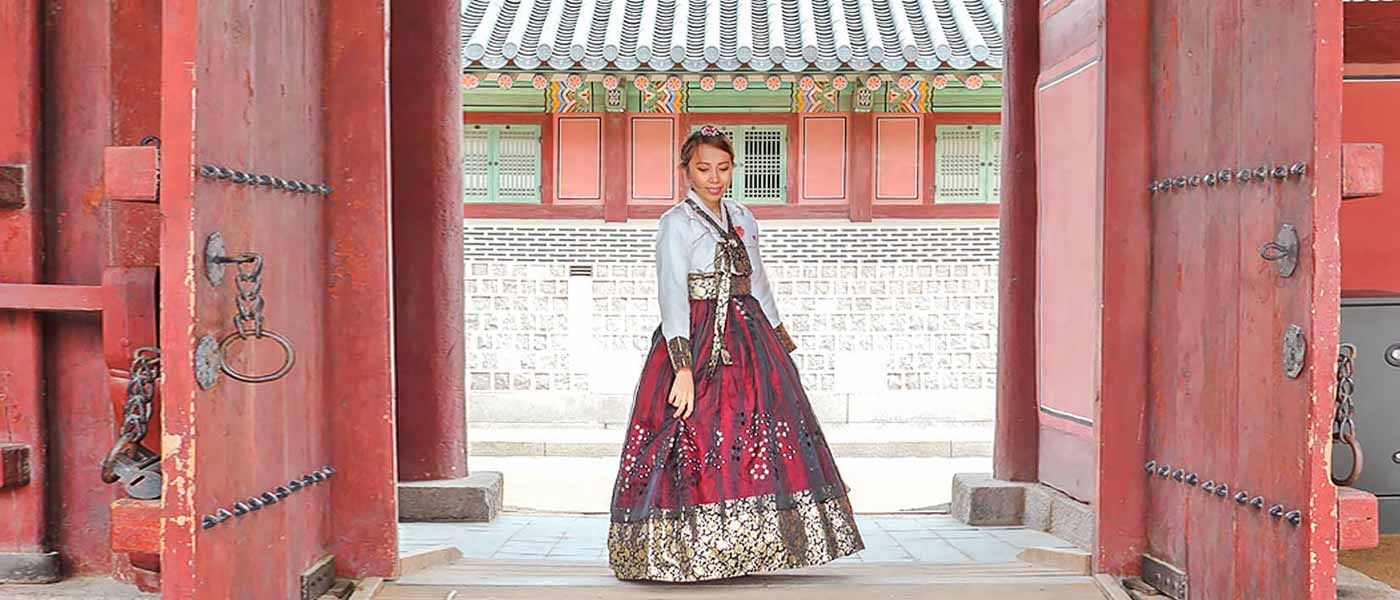
As you would see on the online booking platform , Seohwa Hanbok has 3 rental options: 4 hours, 1 day, or 2 days .
NOTE: If you have purchased the Discover Seoul Pass (no matter if it’s the 24H or 48H option), it’s preferable that you do NOT activate it on this day because you’ll already be given FREE entry to 4 of the ‘Five Grand Palaces’ if you’re wearing a hanbok. Not to mention that this whole hanbok activity will already likely fill up your whole day, so it’s best to activate the pass the next day. . Unless of course, you plan to avail the FREE hanbok rental use instead that’s under the Discover Seoul Pass’ perks. Personally, I think it’s best that you avail a hanbok rental separately for longer hours because the free hanbok rental under the pass is only for 90 minutes).
Once you are clad in a hanbok of your own choosing, I recommend doing the following route:
- The Changing of the Royal Guard ( Sumunjang ) ceremony is held for FREE daily, except Tuesdays, at 10:00AM and 2:00PM in front of Gwanghwamun or the main gate of Gyeongbokgung. If you can’t make it to these time slots, you can also witness a Guard-on-Duty Performance at Gwanghwamun gate at 11:00AM and 1:00PM or a Sumungun (Gatekeeper) Military Training in Hyeopsaengmun Gate at 09:35AM and 1:35PM.
- If you’ve got time, you can check out the huge golden King Sejong Statue at the nearby Gwanghwamun Square. (King Sejong is best remembered as the inventor of ‘Hangeul’ or the Korean alphabet.)
- ★ Changdeokgung: This was the 2nd palace that was built after Gyeongbokgung and it has since been recognized as a World Cultural Heritage site by UNESCO in 1997. An interesting feature of this place is its ‘Secret Garden’ because there are only a limited number of admission slots per day that are given out. If you’re lucky, you can get the chance to go in if you want to!
- Deoksugung: This palace is famous for its picturesque stone-walled road (which is often featured in K-dramas like Goblin). And much like Gyeongbokgung, Deoksugung Palace has a Changing of the Royal Guards Ceremony and it is held at 11:00AM, 2:00PM, and 3:30PM daily, except on Mondays.
- Changgyeonggung: This used to be the residential quarters for queens and concubines of the king, and it later became a park with a zoo and a botanical garden during the Japanese colonial rule (today though, the zoo and garden are relocated to Seoul Land ).
- Gyeonghuigung: Located near Deoksugung Palace, this site served as the secondary palace for the king in the latter half of the Joseon period. For a time, Gyeonghuigung was of considerable size but most of its major structures have long been disassembled and moved to other parts of Seoul. .
- To get here, look for Bukchon-ro street. It will be hard to miss because the tourism board had recently appointed staff there in red clothing to help tourists and distribute maps. Basically, there are 8 major viewpoints to see in Bukchon Hanok Village and those that you must NOT miss are the Gaehoe-dong areas that are typically appointed as Views #3 to #7. If you’re coming with elderly companions, take note that there are a few uphill climbs in this area.
- Unlike other hanok villages (like Namsangol Hanok Village), Bukchon was not built for tourists as it is rather a residential village inhabited by Seoulites. Therefore, make sure to keep quiet so as not to disturb the locals.
- As you leave Bukchon, drop by the nearby neighborhood of Ikseon-dong . Much like Bukchon, it’s one of the oldest hanok villages in Seoul; but in case you want to escape the crowds, it would be a great idea to explore this hidden gem! .
- Lunch: You can either have it at Bukchon Hanok Village or at Insa-dong. There are a lot of cafes and restaurants in these areas so you won’t have a difficult time picking a place; though if I may put in my two cents, do check out Jokagbo at Bukchon (across the street near the entrance to the village) or Gogung at Insa-dong for their bibimbap (mixed rice bowl). For other food or restaurant options, click the “Extra Days” tab on top of this section — or go to this link to see a list of restaurants that you can book online at special deals. .
- Drop by Insa-dong: (Nearest subway station: Anguk Station, Exit #6) As you make your way to the last stop of this route, you must not skip on the neighborhood of Insa-dong in the Jongno-gu district of Seoul. After all, its streets are one of the best places in Seoul when it comes to culture and crafts (perfect for souvenirs!). If I may also share another tip, try to stop by Ssamziegil which is a unique building wherein each of its levels is connected in the form of a spiraling walkway! .
- (OPTIONAL) Visit Namsangol Hanok Village: (Nearest subway station: Chungmuro Station, Exit #3) Located at the foot of Namsan, this village was built to feature 5 traditional houses of different social classes from the Joseon era, all relocated to this spot from different locations in Seoul in order for guests to understand the daily lives of its past people. Of all these 5 houses or hanok, only one is open to the public which is the house of Yoon-ssi of Okin-dong. It has been transformed into ‘Yoon’s Tearoom’ where visitors can learn about Korea’s tea culture. If you’re interested, you could join the tea ceremony program for only ₩7,000. (For a list of other activities in this village, see this link ).
Is it possible to just try on a hanbok for FREE? Yes. If you hold a Discover Seoul Pass , you can wear a hanbok of your choice outdoors for 90 minutes via HANBOKNAM, or take photos with a hanbok in the indoor studio of Namsan Seoul Tower Hanbok Experience Center . However, if you do not have a Discover Seoul Pass, Korea Tourism Office’s Main HQ allows you to wear simple hanbok and take shots of yourself in it indoors. . Is there a service where I can just rent a hanbok indoors and have a professional photographer take photos of me? Of course! You can book this kind of experience online for just ₩15,000~ (or USD$14~ / Php 730~). It even has the option of doing outdoor shots.
◘◘ Visit the awe-inspiring structure of Dongdaemun Design Plaza
(Nearest subway station: Dongdaemun History & Culture Park Station, Exit #2)
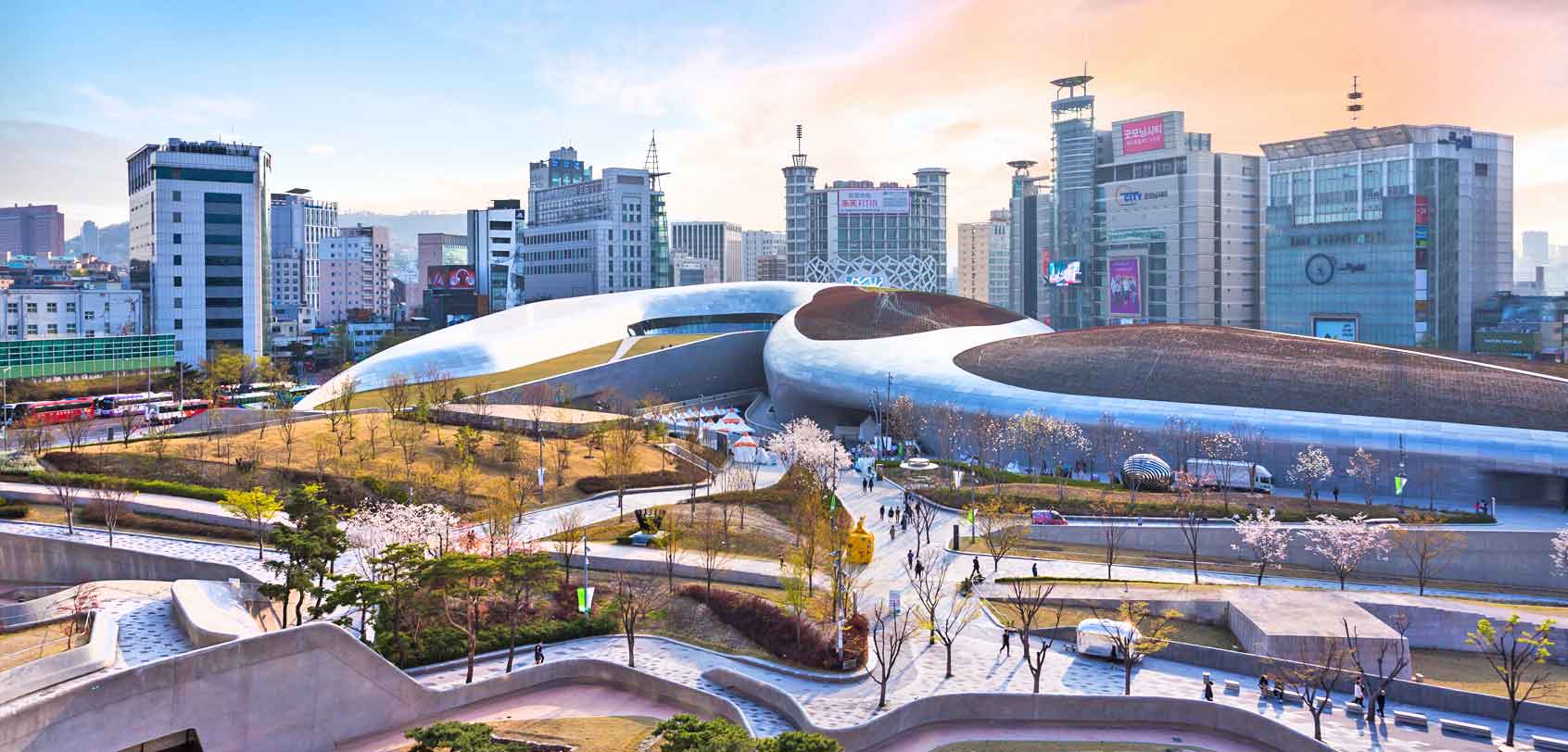
Also called “DDP”, this structure is a new major urban landmark in the heart of Seoul which has a distinctly futuristic design made by world-renowned architect, Zaha Hadid. As such, it’s not strange that it is one of the most Instagrammed locations in Korea.
Other than enjoying its grand outer architecture for your Seoul itinerary, you can also stroll through DDP’s huge 5 halls namely, Art Hall, Museum, Design Lab, Design Market, and Dongdaemun History and Culture Park — places where you can shop and watch various exhibitions, fashion shows, and performances among many others.
- From late May to late October every year, Seoul Bamdokkaebi (Goblin) Night Market will open in DDP from 6:00PM to 11:00PM, so don’t forget to make a stop here to not only buy a variety of food and goods but to also enjoy the various performances made available during this event.
- TRIVIA : This display was first put up on National Liberation Day in 2015 which is in celebration of Korea’s 70th year of independence. Hence, the number of 25,550 comes from 365 days multiplied by 70.
BONUS: If you still have some time, drop by Ihwa Mural Village, a picturesque neighborhood in Seoul that is famous for its amazing murals — as well as for its fascinating cafes and shops. It’s no wonder that a lot of K-dramas and movies have started to do their filming here. You can basically find this near Naksan Park (which also yet another hidden gem that provides great views of the cityscape).
◘◘ Eat and shop through any of Seoul’s night markets
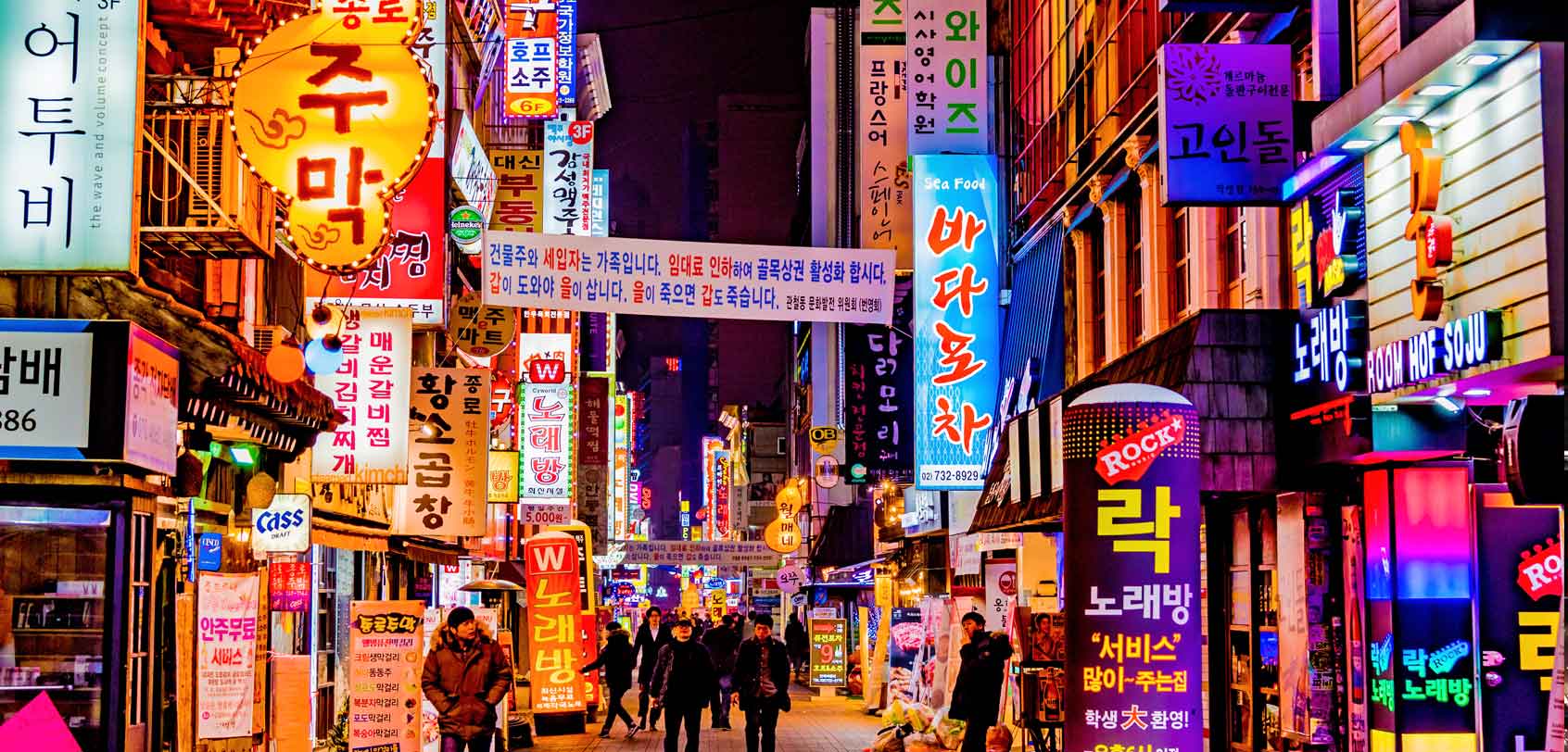
Like the rest of Asia, Seoul has no shortage of vibrant night markets, so for dinner, go and drop by any of the following spots ( it’s best to choose only one! )
- Bamdokkaebi (Goblin) Night Market: (Nearest subway station: *various spots*) Like I’ve written above, this night market opens from May to October. It originally opened in Yeouido (Yeouinaru Station, Exit #3) but has since expanded to several locations such as DDP. The other remaining places would be Cheonggyecheon Stream (Jongno5(0)ga Station, Exit #7) and Banpo Hangang Park (Express Bus Terminal Station). .
- Dongdaemun Night Market: (Nearest subway station: Dongdaemun History & Culture Park Station, Exit #4) Take note that this is different from the night market found in DDP. Apart from the retail haven found in this vicinity, you will also find the ‘Open market’ with its bright yellow tents, all selling various apparel, souvenirs, and items at affordable prices starting from 10:00PM up to 5:00AM. If you’re rather looking for delicious Korean eats during your Seoul itinerary, drop by Mukja Golmok (“Let’s Eat Alley” at exit #8 of Dongdaemun Station) to feast on snacks like tteokbokki (rice rolls). .
- ★ Myeongdong Night Market: (Nearest subway station: Myeongdong Station, Exit #7) Even if this is not one of those ‘traditional’ night markets, it remains to be a popular destination for travelers as it is set in the bustling shopping district of Myeongdong that holds some of the biggest stores like Lotte and Shinsegae as well as cosmetic brands of all kinds. Starting from 5:00PM and onwards, you will start to see food stalls filling up the main street with fares like gyerangbbang (Korean egg bread), dak-galbi (spicy stir-fried chicken), etc. .
- ★ Namdaemun Night Market: (Nearest subway station: Hoehyeon Station, Exit #5) Open from 11:00PM till 4:00AM, this traditional night market is the largest in Seoul and it holds every possible thing that you can think of — from food to clothing, they have it all! .
- Gwangjang Market: (Nearest subway station: Jongno 5(o)-ga Station, Exit #8) If Namdaemun is the largest, then Gwangjang would be the oldest in Seoul, making it a common go-to place for many Korean shoppers. You can actually find this close by Dongdaemun and DDP so it’s possible to check off several of those night markets in the same night if you will it so! (TIP: This place is best if you’re looking to buy a hanbok for yourself). .
- ★ Noryangjin Fish Market: (Nearest subway station: Noryangjin Station, Exit #1) Operating 24 hours a day, this place is more than just a night market. If you come in the early morning, you can witness a bustling fish auction (reminiscent of Japan’s Tsukiji Fish Market). Anyhow, the fun part about this place is that you can buy some fresh seafood and then have it cooked by a restaurant located on the 2nd floor — and if you’re brave enough, maybe you can try the infamous Korean activity of eating a LIVE octopus?
TIP : Want a hassle-free foodie experience? With the help of a local guide, you can join a Korean Food Walking Tour or a Korean Night Dining Tour .
◘◘ Watch the famous Nanta Show
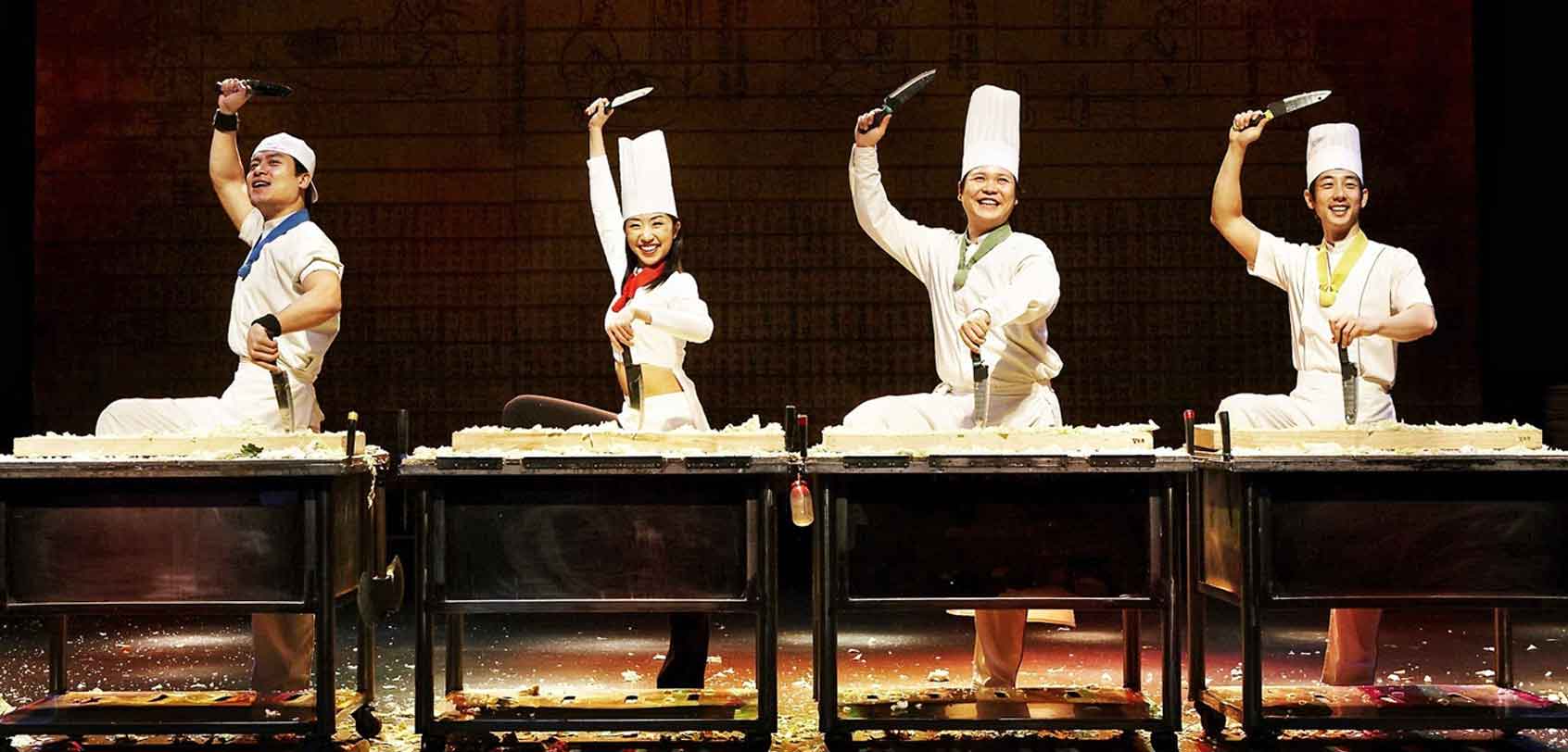
If there’s one show that you should NOT miss for your Seoul itinerary, it will be witnessing the award-winning long-running NANTA Show at Myeongdong Theatre. This is basically a non-verbal comedy show (so it’s fine even if you don’t know Korean) that incorporates traditional ‘ samul nori ‘ rhythm (which is a genre of percussion music distinct to Korea) as they do a slapstick play that mimes the story of cooks who are preparing for a wedding.
I’ve seen this show myself and it was quite entertaining as I saw knives fly and fire blasting from pots — but don’t worry, it’s all safe! But I must say that it did have a distinct sense of humor that may or may not work for you. Either way, it’s an energetic performance that has garnered distinctions and awards from Edinburg Fringe Festival and on New York’s Broadway, so I say: give it a try!
NEAREST SUBWAY: Myeongdong Station, Exit #7 BOOK: Online to get 30% off on tickets
DAY 2: “Discover” more of Seoul!
NOTE: If you have purchased the Discover Seoul Pass (no matter if it’s the 24H or 48H option), this would be a good day to start its activation.
◘◘ Explore and shop in Myeongdong and Hongdae

Myeongdong: (Nearest subway station: Myeongdong Station) This is is arguably the shopping mecca of Seoul and its 2 main streets meet in the center — the first spanning from Myeongdong Subway Station and the second from Lotte Department Store at Euljiro.
For the shopaholics, there is a wide range of branded shops and department stores that line Myeongdong’s streets and alleys (e.g. Lotte Department Store, Shinsegae Department Store, Noon Square, etc.), and they are often set relatively cheaper than the other shopping areas in the city like Cheongdam-dong.
Of course, let’s not forget that Myeongdong is a beauty lover’s dream too given the number of Korean cosmetic stores that regularly hold insane sales for their high-quality products.
As an example, I went here to shop for face masks and one piece averaged at only USD$0.40~ or Php 20~! Some of the top stores you need to check are: Innisfree, Nature Republic, Holika Holika, Tony Moly, Nature Republic, and Laneige. (If you have heard of the Instagram-famous place called as Style Nanda Pink Hotel , you can find it here in this neighborhood or ‘dong’).
TIP : Try to NOT buy from the first shop that you set foot into because most of the time, they will hand out free samples and masks, which could be quite a treat! In fact, I know that some people would hop from store to store just to collect samples, haha. Anyhow, in case you want to check out other places because you’ve got some time, shops in Hyehwa and Sincheon neighborhoods can have cheaper cosmetic products too. And oh, of course, do NOT ever forget claiming your tax refund!
Hongdae: (Nearest subway station: Hongik University Station, Exit #9) It’s no surprise that this area is often compared to Japan’s Harajuku because of its hip and youthful ambiance — with a dash of unique cafes and indie fashion shops here and there. Aside from strolling through ‘ Hongdae Walking Street’, ‘ Picasso’s Street ‘ and ‘ Club Street’ , below are some of the places in and around Hongdae that you should consider stopping by for your Seoul itinerary:
- Hongdae Free Market: Open on Saturdays from March to November at Hongik Children’s Park. You will find here an array of local artist works.
- Trickeye and Ice Museum: TrickEye museum is an interactive 3D space that gives off impressive optical illusions; whereas Ice Museum, as the name implies, is a space where you can enjoy a cool icy environment (e.g. a living room with a TV and couch made of ice and more). Entering these places is free if you hold a Discover Seoul Pass , but if you don’t have the pass, you can reserve your tickets online .
- If you’re looking to spend some time in cute cafes, go to ‘ Chuu ‘ or ‘ Zapangi’ .
BONUS: Ewha Woman’s University is an educational institute with picturesque grounds, but more than this, it’s actually smacked in a shopping area that sells a variety of affordable and stylish clothes for young people; therefore, this is also a good place to shop.
◘◘ Get lunch
It’s time to feast on a delicious Korean BBQ meal! While you’re already in Hongdae, try out either of these places: Gogigo or Old House Charcoal Meat Restaurant .
For other food or restaurant options, click the “Extra Days” tab on top of this section — or go to this link to see a list of restaurants that you can book online at special deals.
◘◘ Make full use of your Discover Seoul Pass
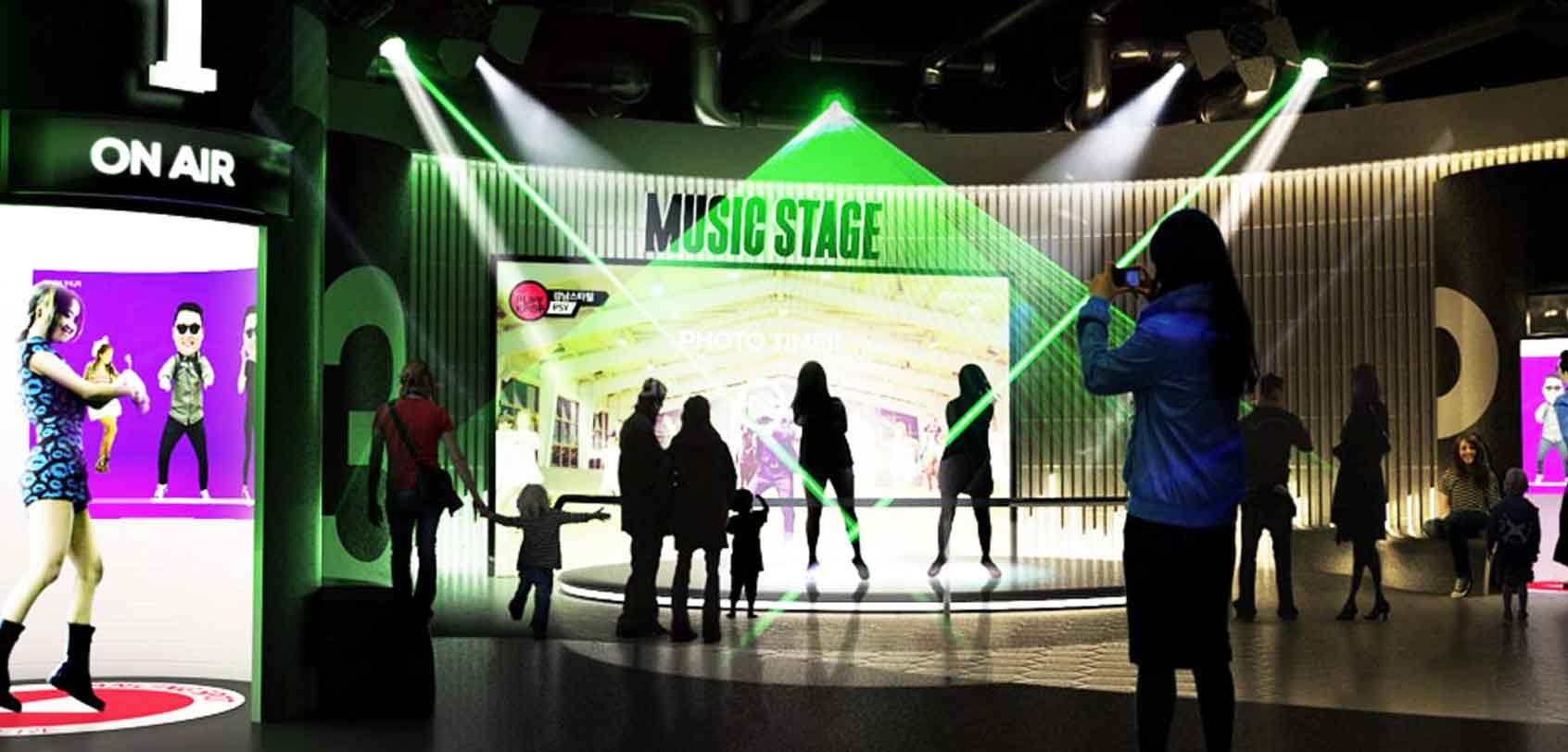
If you’ve followed my advice and got yourself a Discover Seoul Pass , you can enter any of the establishments below for FREE during your Seoul itinerary! Take your pick from any of the following to fill up the rest of your day ( best to pick 2 at most ).
For a complete list of FREE admissions under the Discover Seoul Pass, you can also visit this page .
- MBC World: (Nearest subway station: Digital Media City Station, Exit #9) Are you a fan of K-pop, K-dramas, or Korean stars — or just ‘ hallyu ‘ (Korean Wave) in general? Then MBC World is a great destination for your Seoul itinerary, as it will give you the chance to experience hologram K-pop concerts, virtual reality drama sets, and more. (If you don’t have the Discover Seoul Pass and want to separately book a ticket, go here ) . .
- SM Town Museum: (Nearest subway station: Samseong Station, Exit #6) Still in line with the ‘hallyu’ fever, this place is dedicated to famous K-pop artists under the powerhouse of SM Entertainment in South Korea. Avid fans can tour through their training rooms, recording rooms, and so much more. (If you don’t have the pass and want to separately book a ticket for this, go here ) . .
- Grévin Museum: (Nearest subway station: Euljiro 1-ga Station, Exit #1) This is like Korea’s version of Madam Tussauds. You can find about 80 wax figures of Korean and international celebrities, as well as several thematic interactive experiences. (If you don’t have the pass and want to separately book a ticket, go here ) . .
- 63 Square: (Nearest subway station: Yeouinaru Station, Exit #4) Other than gaining access to panoramic views of Seoul, you can also enter in 63 Square the first aquarium in Korea called Aqua Planet 63. If you’re a K-drama fan, this is actually the aquarium used in ‘Legend of the Blue Sea’ and where a Mermaid Show is regularly held. (If you don’t have the pass and want to separately book a ticket, go here for combination tickets or here for the aquarium only. .
- COEX Aquarium: (Nearest subway station: Bongeunsa Station, Exit #7) This place has the largest collection of marine life in Korea and you can watch feeding shows and interactive exhibits here too. (If you don’t have the pass and want to separately book a ticket, go here ). .
- Seoul City Tour Double-Decker Bus: Go on a hop-on-hop-off bus tour through the center of Seoul to get a glimpse of all of its past and present glory. (If you don’t have the pass and want to separately book a ticket, go here ). .
- Alive Museum: (Nearest subway station: Euljiro 3(sam) Station, Exit #1) This place is similar to TrickEye Museum but it is arguably larger with several other exhibits such as the ‘Dynamic Maze’ (where participants must work together to overcome challenges) and the ‘Black Wonderland’ (where fairy tales like Alice in Wonderland, Frozen, Cinderella and Aladdin can be experienced in the dark ). If you don’t have the pass and want to separately book a ticket, go here . .
- Seoul Zoo and Skylift: (Nearest subway station: Seoul Grand Park Station, Exit #2) Seoul Zoo is South Korea’s largest zoo with over 330 species of animals, inclusive of a botanical garden and a forest park. The icing on the cake? You can even ride the Sky Lift which can transport you to several places such as the Seoul Land theme park and more. (If you don’t have the pass and want to separately book a ticket for your Seoul itinerary, go here ). .
- Running Man: (Nearest subway station: Euljiro 1-ga Station, Exit #3) Do you want to be a part of Korea’s popular variety show, Running Man? Well with this thematic experience, you can do so! This will surely be a hilarious and fun adventure for you and your travel companions as you make your way through 6 zones, including Maze Battle. (If you don’t have the pass and want to separately book a ticket, go here ). .
◘◘ Visit Namsan Park and N Seoul Tower
(Take Namsan Shuttle Bus, Circulation Bus No. 2, 3, or 5)

Mt. Namsan’s Namsan Park is a symbolic place in the center of Seoul. To get up here, you can ride a cable car, a bus, or just simply walk up its stairway path. Most visitors come to this place to enjoy nature, to see the city skyline, or to do some of the hiking trails — but a majority makes a stop at the famous N Seoul Tower which is the first tower-type tourism spot in South Korea.
Rising at almost 480m above sea level, it is certainly one of the tallest towers in Asia. Once you set foot on its premises during your Seoul itinerary, you can explore its other attractions such as the LED tunnel, Hello Kitty Island, Ssentoy Museum & Showroom, and more.
- BOOK: Online to get a discounted ticket to the tower’s observatory as well as grab great combo deals.
- TIP : Other than N Seoul Tower, you can also find Palgakjeong Pavillion (octagonal hall) and Bonghwadae (beacon mounds that were used to signal incoming enemy invasions in the past).
◘◘ Grab dinner
I have two options for you, depending on what you fancy:
- A traditional royal Korean cuisine dinner: Feast on fresh and high-quality Korean cuisine set in a traditionally-styled restaurant called Myongdongjeong . What’s more? You can also rent their hanbok for free while eating to really feel as though you’ve been transported to a royal palace. .
- A cruise buffet dinner through Hangang River: Hangang or Han River is a major river in South Korea, and it is best enjoyed during the night with Eland Cruise as you glide through the waters and taste a delectable food buffet. Before the end of your cruise, you can even witness a firework show and a front-row view on the colorful Banpo Bridge Rainbow Fountain Show. To reserve your spot, go here .
For other food or restaurant options, click the “Extra Days” tab on top of this section — or go to this link to see a list of restaurants that you can book online at special deals for your Seoul itinerary.
◘◘ Walk through Cheonggyecheon Stream
(Nearest subway station: Jongno5(0)ga Station, Exit #7 )
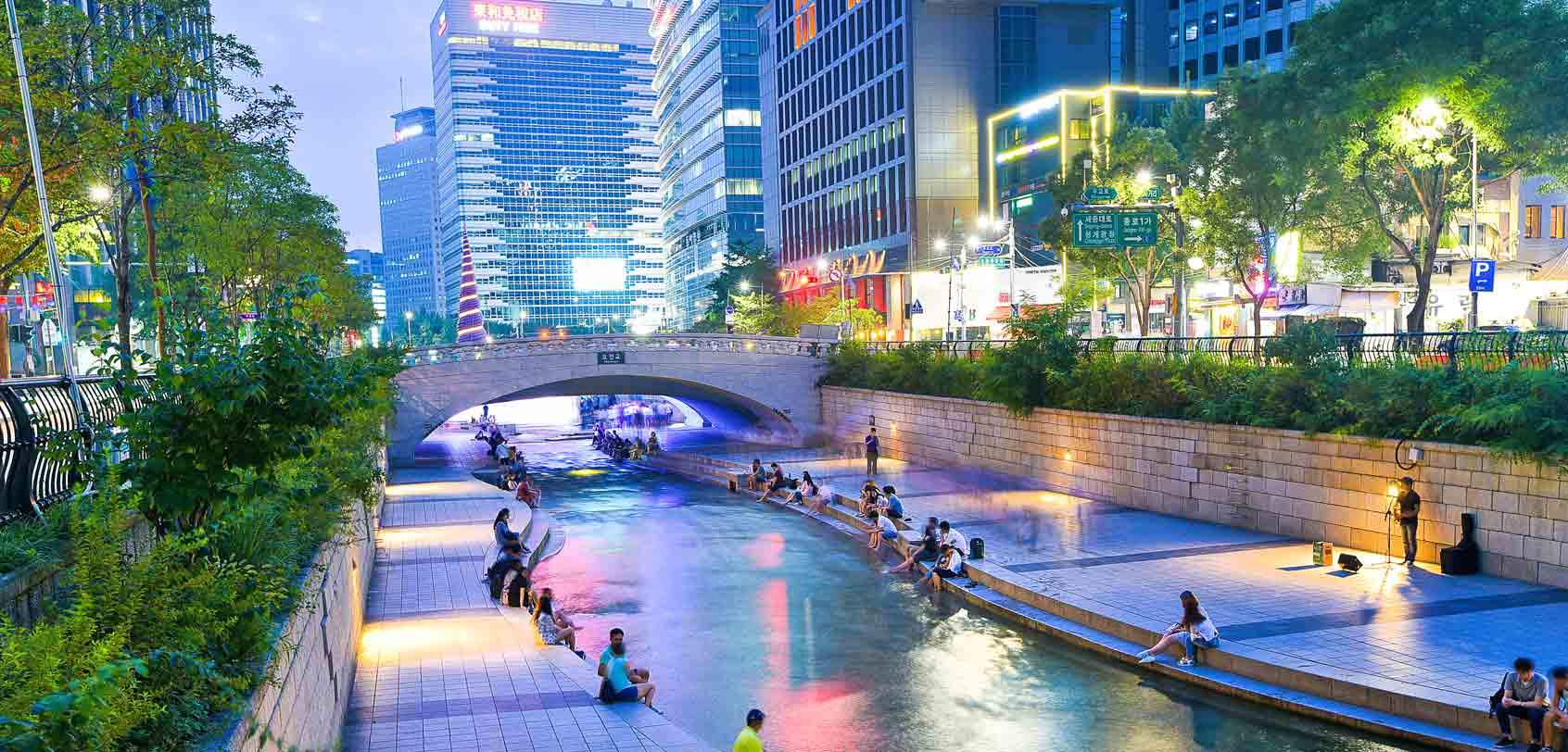
Cheonggyecheon is a picturesque 11 km-long modern stream that runs through a total of 22 bridges before flowing into the Hangang or Han River. Some examples of the beautiful bridges that it has are the Narae Bridge (which represents a butterfly) and Gwanggyo Bridge (depicting the harmony of the past and the future).
A lot of Seoulites wind down to this spot to chill and bask under the city lights, the lush ambiance, and the surrounding man-made waterfalls, if not partake in the Bamdokkaebi (Goblin) Night Market from May to October — so why not do the same during your Seoul itinerary?
DAY 3: A chill kind of day
◘◘ Do a “ Discover Seoul Pass ” or “Extra Days” activity
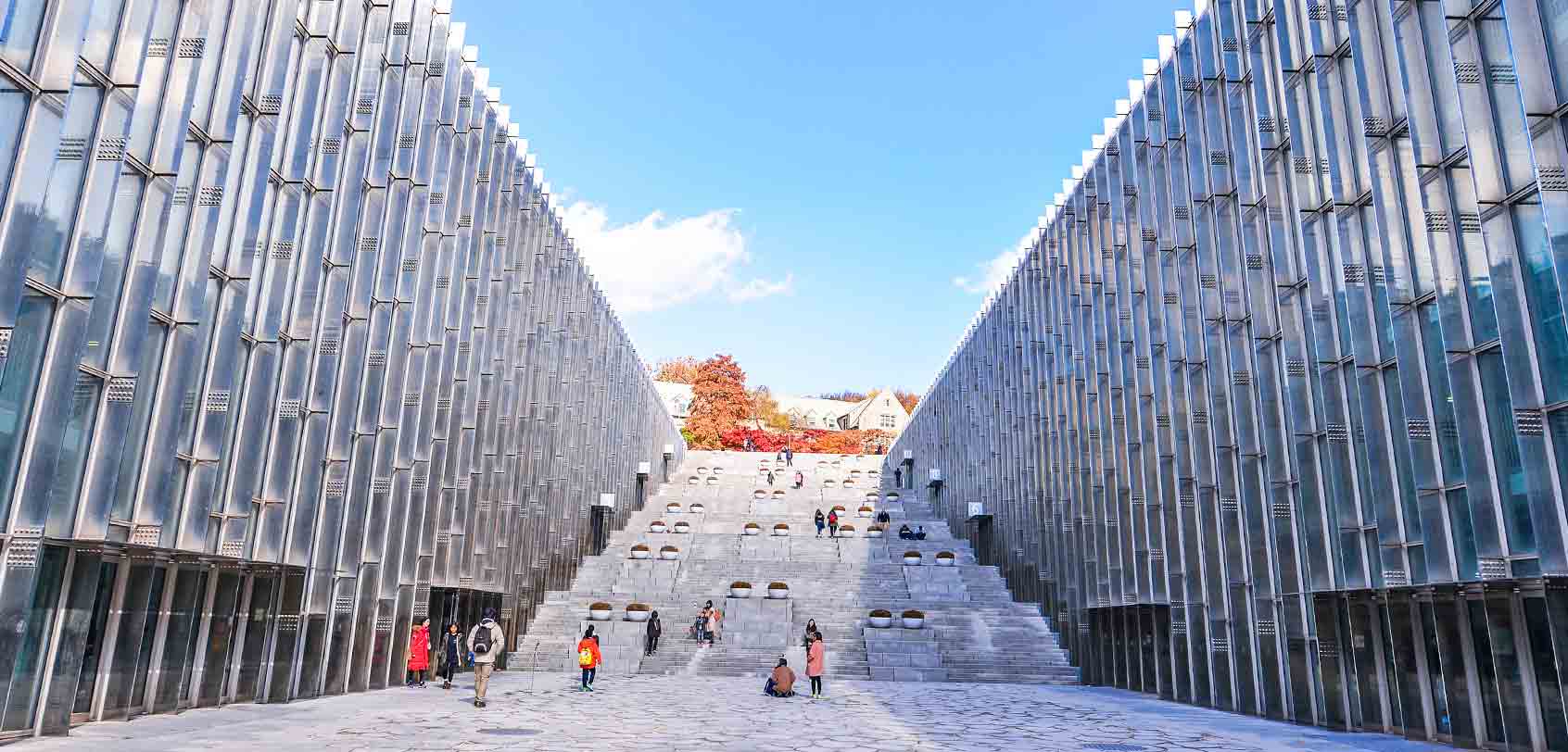
I recommend that you pick up an activity that you prefer from any of the previously listed things to do that I’ve written under Day #2’s ‘Discover Seoul Pass’ options of this Seoul itinerary. If not, you can also browse through the “Extra Days” tab above.
If you ask me, doing a cooking class , a kimchi class or a K-pop dance class will be a LOT of fun! (Read more about my Kpop dance class experience here ).
Did you ever want to try spending a day with a Korean ‘oppa’ (older brother)? Join this walking tour that’s led by a local guide!
◘◘ Grab lunch
- Hangaram: (Nearest subway station: Express Bus Terminal Station) Hangaram is a great choice if you want to taste some of the beloved Korean staples like bibimbap (mixed rice bowl), bulgogi (stir-fried beef), japchae (stir-fried glass noodles), kimchi (fermented vegetables) , etc. .
- Tosokchon Samgyetang: (Nearest subway station: Gyeongbokgung Station, Exit #2) Another Korean dish that you need to taste is samgyetang or ginseng chicken soup, and this restaurant is often lauded as the BEST place to eat in.
For other food or restaurant options, click the “Extra Days” tab on top of this section — or go to this link to see a list of restaurants that you can book online at special deals for your Seoul itinerary .
◘◘ Shop for highly discounted Korean food and snacks at Lotte Mart!
(Nearest subway station: Seoul Station, Exit #4 ). Naturally, going through any of the night markets I’ve listed under Day #1 will already grant you access to the cheapest food and snacks possible. However, other than those, I think that you should also go on a crazy chow shopping spree at Lotte Mart’s Seoul Station Branch! Why so? Well… as one of the leading discount store chains in South Korea, they sell ridiculously low-priced goods.
I swear to you, I bought only USD$20-worth of snacks here, yet it was enough to gift them to more than 20 people! (On top of the discounted items, you can get at most an 8% tax refund, and more to that, they also provide a free self-packing station so that you can pack all your purchased items in sealed boxes).
- For the must-buy snacks? It would be tteokbokki junk food, Binggrae banana-flavored milk, choco pies, yogurt jelly, honey butter chips, fire noodles (called also Buldak Bokkeum Myeon ), Lotte stick biscuits, and honey butter almond among many others!
- TIP: While you’re here, don’t miss dropping by the nearby newly-opened sky garden walkway called Seoullo 7017!
◘◘ Walk around Gangnam
(Nearest subway station: Gangnam Station)

There’s probably not a soul in this world who hasn’t heard of ‘Gangnam’ (and we have PSY to thank for that) .
For your info, Gangnam is Seoul’s upscale modern center that is home to high skyscrapers, designer brands, high-end restaurants, and pulsating nightclubs — so yes, it’s the home to many wealthy Koreans. In fact, you can think of it as the ‘Beverly Hills’ of Seoul. To make the most of your visit here during your Seoul itinerary, stop by the following ( it’s best to pick 3 at most ).
- Gangnam Terminal Underground Shopping Centre: You’ll find this from the moment that you step foot in Gangnam Station’s subway. With an array of accessories, clothing, cosmetics, and shoes, I have found a lot of sweet bargains here myself! .
- Gangnam Square: Right outside Gangnam Station’s Exit #5 is the spacious Gangnam Square which has a small section built as a tribute to PSY’s ‘Gangnam Style’ hit song, as well as the Gangnam-daero Road that’s speckled with various shops. .
- Apgujeong Rodeo Street and Cheongdam Fashion Street: (Nearest subway station: Apgujeong Rodeo Station, Exit #1 and Exit #3 respectively.) If you haven’t had enough of shopping but are looking for more upmarket shops. .
- Hallyu K-Star Road: K-pop fans must not skip this! Found between Apgujeong Rodeo Station and Cheongdam Station are adorable GangnamDols that are each autographed by K-pop groups like EXO, BTS, Super Junior, and more. For a detailed list, you can check here . .
- Garosu-gil Road: (Nearest subway station: Sinsa Station, Exit #8) This Gingko tree-lined street is a popular, trendy street in the city of Seoul and it is even often called an ‘artists street’ due to the number of quaint cafes and designer stores. Some charming cafes that you can choose from are Gingko Avenue, Line Friends Cafe, Cafe de Paris, and IKOVOX . .
- Starfield COEX Mall: (Nearest subway station: Bongeunsa Station, Exit #7) This mall is a shopping mecca, but more than this, it has interesting amenities too that are not limited to the COEX Aquarium and the Starfield Library. The latter is the newest built facility on the premises and it features 50,000 books and magazines in a grand yet relaxed setting. .
- SM Town Museum: (Nearest subway station: Samseong Station, Exit #6) This place is dedicated to famous K-pop artists under the powerhouse of SM Entertainment in South Korea. Avid fans can tour through their training rooms, recording rooms, and so much more. (If you don’t have the pass and want to separately book a ticket, go here ) . .
- Lotte World: (Nearest subway station: Jamsil Station) As Seoul’s largest indoor and outdoor amusement theme park, you will actually need a full day to enjoy this place — but I still felt like including this here, just so you know that it’s located in this Gangnam area. So if you have a spare day in your Seoul itinerary, it would be great to visit Lotte World. Another theme park choice would be Everland , but if you want other options, check the “Extra Days” tab above.
◘◘ Go up to Lotte World Tower
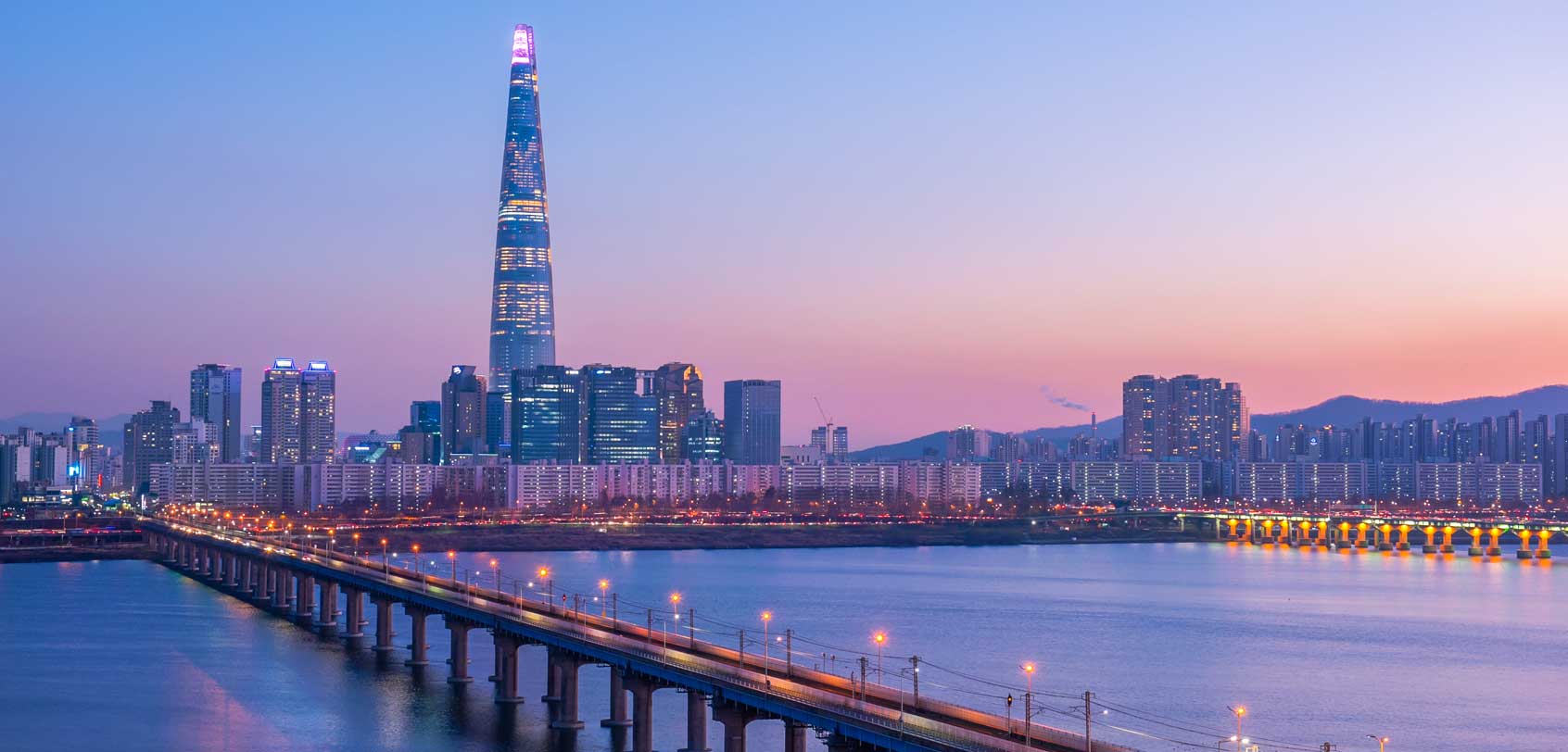
Towering at 554 meters, this new 123-floor skyscraper just opened last 2017 and it is currently the tallest building in Seoul and the 5th tallest in the world. It contains several cafes, galleries, a luxury hotel, a skywalk, and an observation deck.
Obviously, this is the best place for viewing panoramic views of the cityscape and I highly suggest that you go up to the observatory not only to enjoy the view with a cup of coffee but to also experience its glass floors! Though it was nerve-wracking at first, it was really cool to feel as though I was floating up in the air like that! (Another thing you can enjoy nearby is Lotte World Mall).
NEAREST SUBWAY: Jamsil Station, Exit #2 BOOK: ₩27,000 for adults and ₩24,000 for children (Pay less if you book online ).
BONUS : From April to October, head over to the Han River’s Banpodaegyo Bridge by 8PM (plays every 20 minutes until 9PM) to watch their famous Moonlight Rainbow Fountain show.
I think it’s time to have a meal with the guidance of a local during your Seoul itinerary, so why not try a Seoul street food tour for instance? If you’re not game for that, you can find other food or restaurant options under the “Extra Days” tab on top of this section — or go to this link to see a list of restaurants that you can book online at special deals for your Seoul itinerary.
DAY 4: All About JSA
◘◘ Visit the Korean Demilitarized Zone (DMZ)
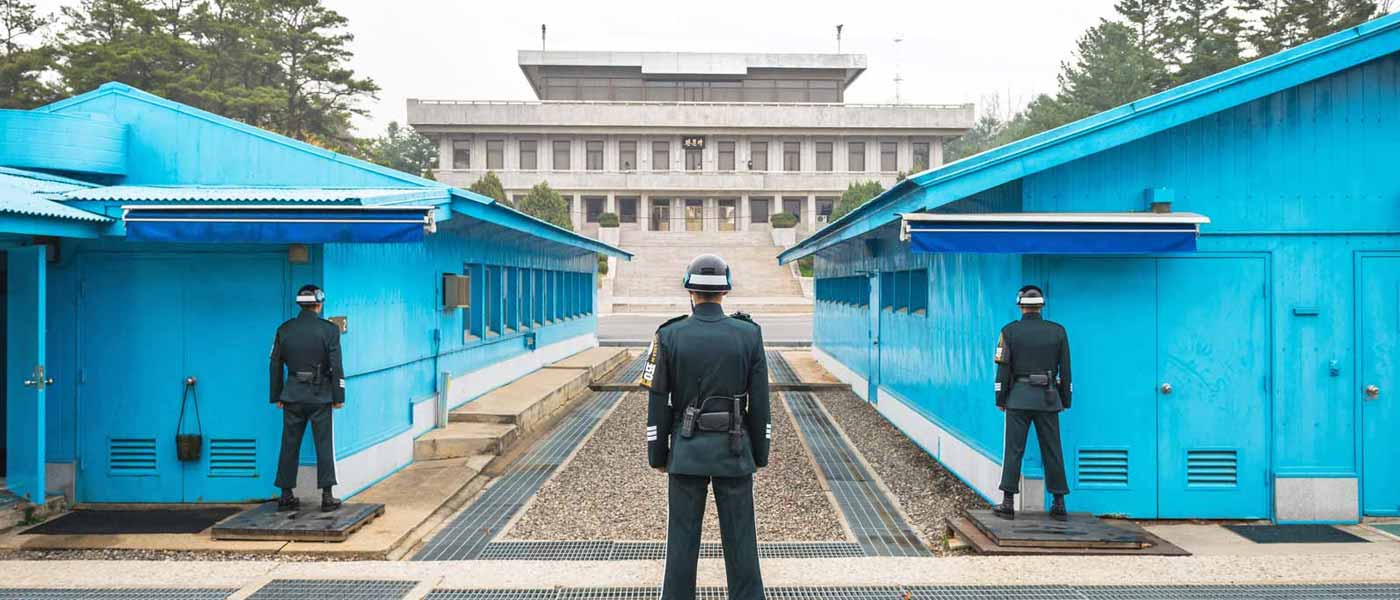
It’s no news that the Korean peninsula has long been divided into two countries: North Korea and South Korea. Unfortunately, it was not at all a peaceful separation given the infamous 250km-long buffer zone of the Demilitarized Zone ( DMZ ) that separates the two since 1953.
Today, it is referred to as the most heavily guarded area in the world with battle-ready armies, fences, landmines, and fences on both sides — it’s absolutely one of the scariest places in the world! …And yet, it continues to be a popular major tourist attraction in South Korea that attracts a lot of history buffs and curious folks worldwide who are seeking to witness this surreal land for themselves (people like me).
The available tours currently being held are as follows:
- Panmunjom Joint Security Area (JSA) Tour: This is the most sought-after tour by travelers to South Korea’s DMZ because this is the closest place to North Korean soil that anyone can step into without getting arrested or shot. A tour to JSA will only be possible through an organized tour that is approved by the government and it will basically take the guests to the iconic blue UN building that is smacked on the border — with both North and South Korean soldiers facing one another (as if they’re on a staring showdown). .
- North Korea Center of Unification Board: Shows over a hundred photos and documents showing the stark reality of North Korea.
- Mangbaedan Alter: The spot where Koreans separated from their families in the North. Koreans typically visit this place on New Year’s Day and Chuseok (Korean Thanksgiving) to perform ancestral rites to their home and relatives in the North.
- Bridge of Freedom: Where South Koreans crossed when they were released from North Korea. You will witness a lot of ribbons tied to the fences that each contain messages of hope, peace, and love.
- Dora Observatory: From here, visitors can look closer into North Korea with binoculars as they witness things like the North Korean propaganda village, Kaesong city, and others.
- Dorasan Station: This is the northernmost train stop on South Korea’s railway line and locals hope that it would one day connect North and South Korea when peace finally prevails.
It is possible to combine the two tours above for a whole-day experience during your Seoul itinerary (see here ).
BOOKING LINKS (use promo code AILEENKLOOK to get a 5% discount ) :
- Panmunjom Joint Security Area Tour (JSA) only = ₩85,000~
- Third Tunnel of Aggression only = ₩63,800~
- Panmunjom Joint Security Area Tour (JSA) & Third Tunnel of Aggression combo = ₩130,000~
◘◘ Visit a spa or a jjimjilbang
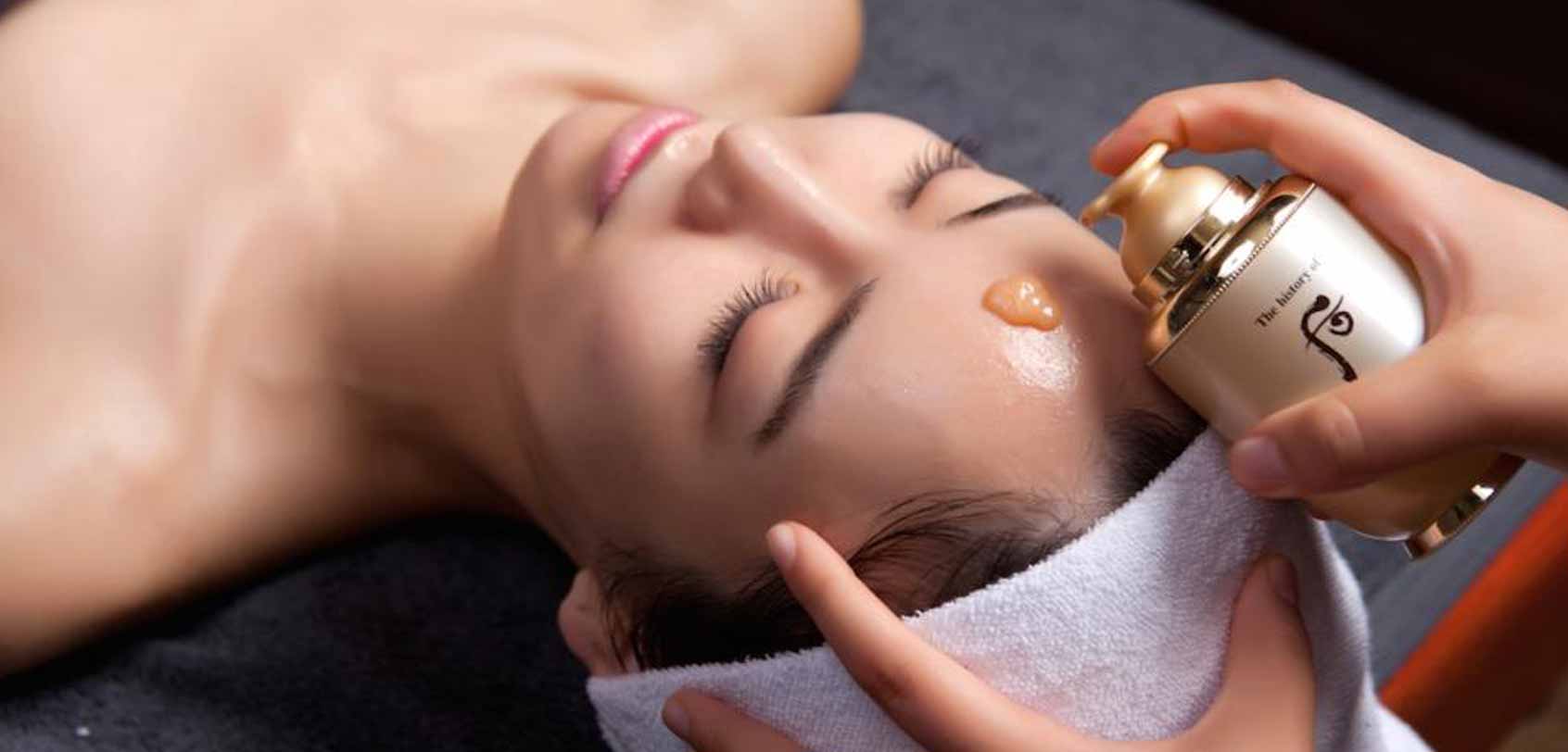
After your tense morning tour to DMZ, how about you relax and pamper yourself with Korea’s well-liked spa services? Apart from getting a Korean massage , I urge you to experience jjimjilbang or a large gender-segregated public bathhouse complete with hot tubs, showers, traditional Korean kiln saunas, and massage tables.
If you’re a fan of K-dramas, you will probably be familiar with this because it’s a common place that Koreans frequent for spa services. For this, you can visit Dragon Hill Spa (or if you hold a Discover Seoul Pass , it gives you free admission to Sealala jjimjilbang).
NEAREST SUBWAY STATION: Itaewon Station, Exit #3 BOOK: Go to this link to get a discounted rate
ALTERNATIVE : If you rather want to relax in nature during your Seoul itinerary, go over to the World Cup Park, a humongous space that used to be a landfill but has now been turned into a park with 5 different sections: Pyeonghwa (Peace) Park, Haneul (Sky) Park, Noeul (Sunset) Park, Nanjicheon Park, and Nanji Hangang Park. A crowd favorite would be Haneul Park as it’s the highest elevation of the five parks.
I have two options for you for your Seoul itinerary, depending on what you prefer:
- Buffet: Taste all kinds of gourmet food at Tavolo 24 .
- Korean gopchang: Taste the popular stir-fried Korean dish made up of small intestines from cattle or pork (often best paired with soju ) at Aunt’s Grilled Intestines Restaurant .
TIP : You can also check this link to see a list of restaurants that you can book online at special deals.
DAY 5: Day tour to Gapyeong County
◘◘ Explore Gapyeong County’s wonders

It’s time to venture out of Seoul’s busy metropolis to get some fresh air and tranquility. For this, a day trip to Gapyeong County’s top attractions is recommended for your Seoul itinerary!
READ: My detailed guide on this tour by clicking [ here ].
- Petite France: This is a charming place that serves as both a cultural village and a youth training facility with over 16 French-styled buildings. Petite France is also recognized as a top filming location for Korean dramas like ‘Secret Garden’ and ‘My Love from the Star’. With its European ambiance, it is also somewhat of a tribute to Saint-Exupery, the author of the famous French Novel: ‘Le Petit France’. ~Entrance fee: ₩10,000 adults / ₩5,000 children .
- Nami Island: A half-moon-shaped island nestling inside an artificial lake known for being the filming grounds of the well-known K-drama ‘Winter Sonata’. Nami Island is home to rows of majestic trees, roaming animals, and art exhibits, making it a sought-after destination in every season! I highly recommend that you rent a bike when you’re here; otherwise, there are other activities you can do such as water sports, trying on the roller skating rink, going to the shooting range, and more. ~Entrance fee: ₩13,000 .
- Garden of Morning Calm: This grand 30,000 sqm garden is open all year round and it is regarded as the oldest private garden in Korea with an artistic space that’s sure to leave anyone in awe. The Garden of Morning Calm becomes even more magical during winter (December to March) when they set up hundreds of multi-colored lights to create themed gardens, so make sure that this is on your Seoul itinerary! ~Entrance fee: ₩9,500 adults / ₩6,000 children .
- Gangchon Rail Bike: Built on a discontinued trail line, Gangchon Rail Bike is a fun attraction where you can pedal through old railroad tracks while taking in the amazing Bukhangang River scenery. Rest assured, it doesn’t require much effort to pedal the makeshift carts because the rail lines are slightly sloping downhill. ~Entrance fee: ₩30,000 for a two-seater .
- Edelweiss Park: Edelweiss Park is similar to Petite France, but instead, it focuses more on being a Swiss-based cultural village, so it’s filled with Swiss architecture, establishments, and sceneries. ~Entrance fee: ₩10,000 .
For a hassle-free experience on your Seoul itinerary, it would be advisable to go on a guided tour. Nowadays, there are different packages so feel free to take your pick from any of the combinations below (they often already include a delectable dak-galbi lunch, but there is also a halal option ; don’t forget to use promo code AILEENKLOOK to get a 5% discount ):
- (2 stops) Nami Island + Alpaca World
- (2 stops) Nami Island + Petite France
- (2 stops) Nami Island + The Garden of Morning Calm
- (3 stops) Nami Island + Alpaca World + The Garden of Morning Calm
- (3 stops) Nami Island + The Garden of Morning Calm + Gangchon Rail Bike
- (3 stops) Nami Island + Petite France + The Garden of Morning Calm
- (3 stops) Nami Island + Petite France + Gangchon Rail Bike
- (3 stops) PRIVATE TOUR: Nami Island + Petite France + Gangchon Rail Bike
- (4 stops) Nami Island + Petite France + The Garden of Morning Calm + Gangchon Rail Bike
If not, you can take the ‘Gapyeong Tourist Bus’ which can bring you to all of these locations for only ₩6,000 — the downside though is that the buses run only once every hour, and with the crowds that go to all of these places, it’s likely that the spots get filled quickly. (This is why I suggest going on a guided tour instead.)
I have two options for you, depending on what you prefer:
- Samgyeopsal : Taste this hearty grilled pork belly dish at Palsaik which is very popular with locals.
- Jokbal: Try this Korean dish consisting of soft pig’s trotters cooked in soy sauce and spices at Manjok Ohyang Jokbal .
TIP : You can also check this link to see a list of restaurants that you can book online at special deals for your Seoul itinerary. (Use promo code AILEEN5OFF to get a 5% discount).
Explore other TOP destinations in South Korea
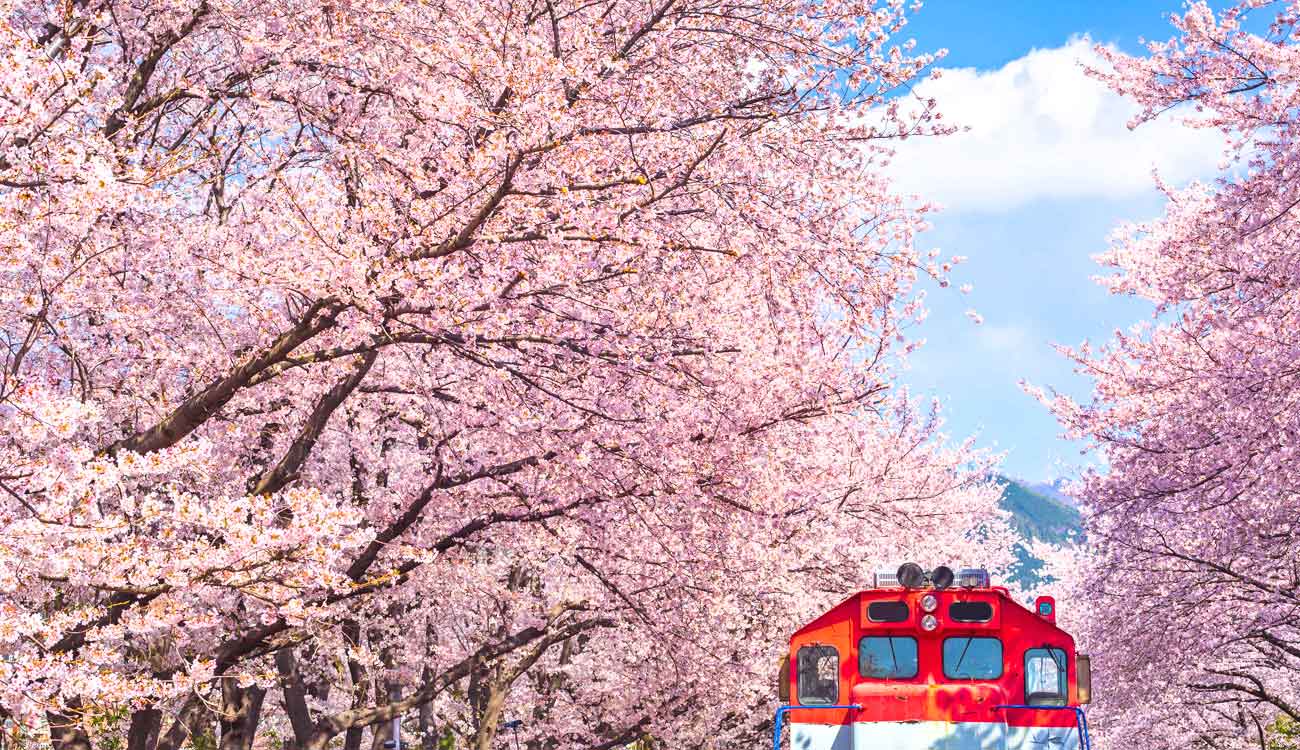
BUSAN Known for its colorful houses, mountains, and the largest fish market in Korea!
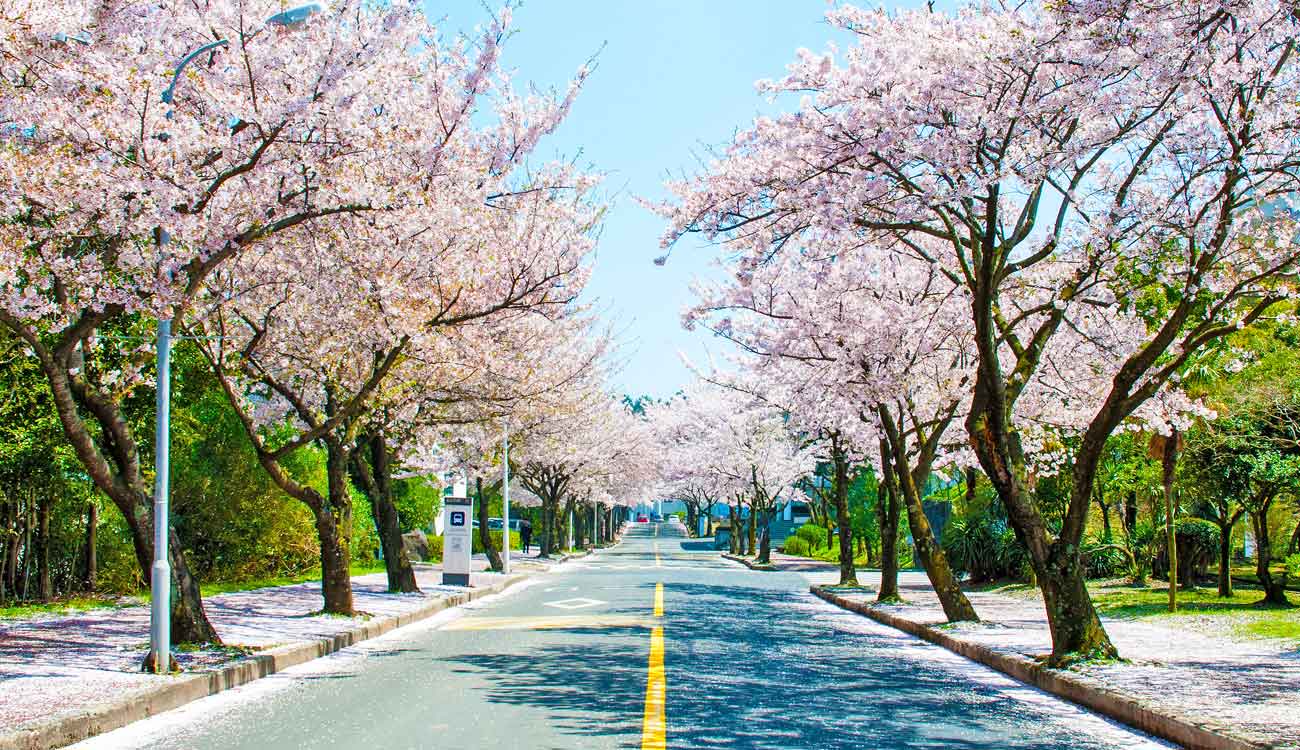
JEJU ISLAND South Korea’s top island destination beloved by tourists and locals alike.
TIP : Check out all of the top Instagram spots in Busan to fill up your feed and Seoul itinerary!
◘◘ Family Fun ◘◘
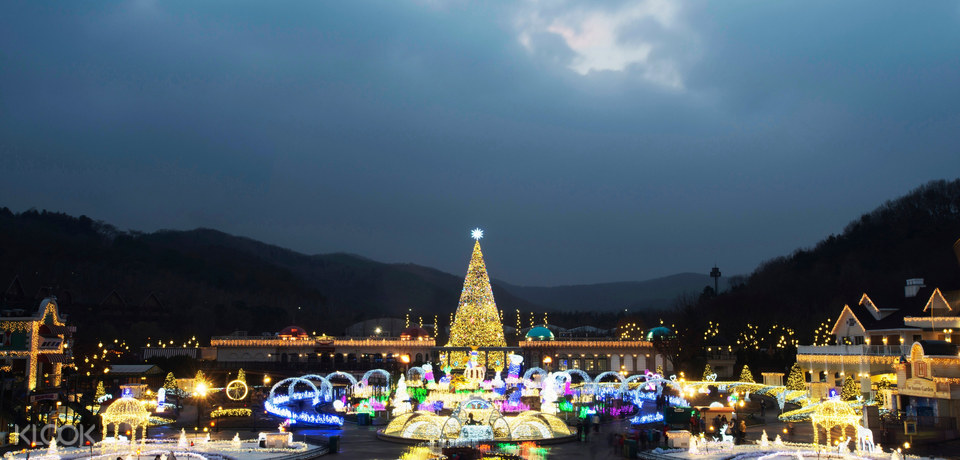
Everland Park South Korea’s largest attraction park.
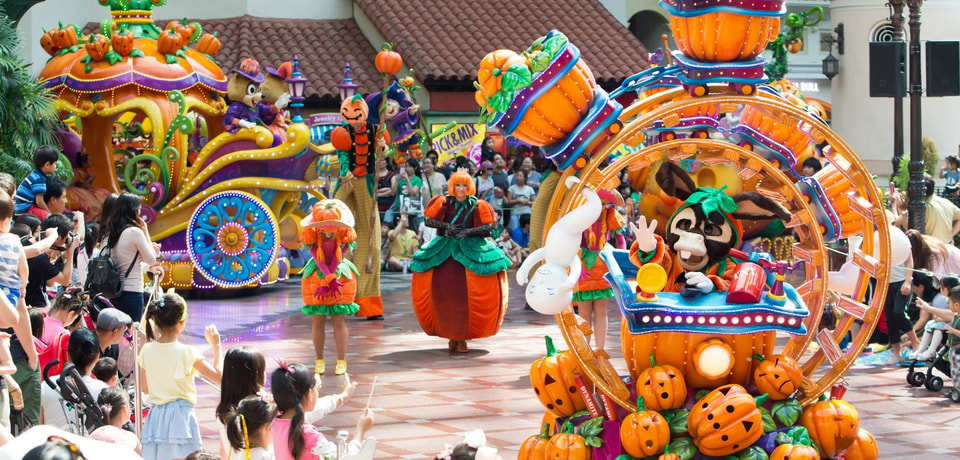
Lotte World Large indoor and outdoor theme park.
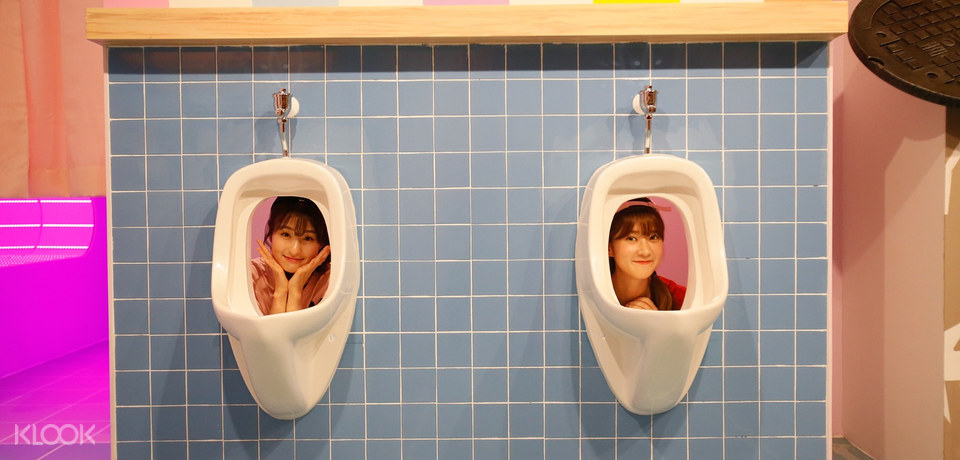
Poo Poo Land Unique and fun place for photo-ops and learning.
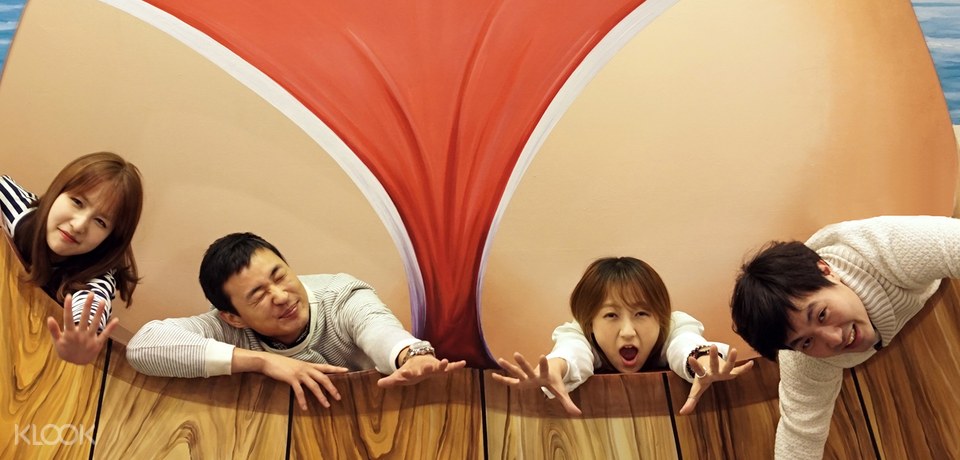
Love Museum Seoul’s first and only museum for adults!
◘◘ K-Drama & K-Pop ◘◘
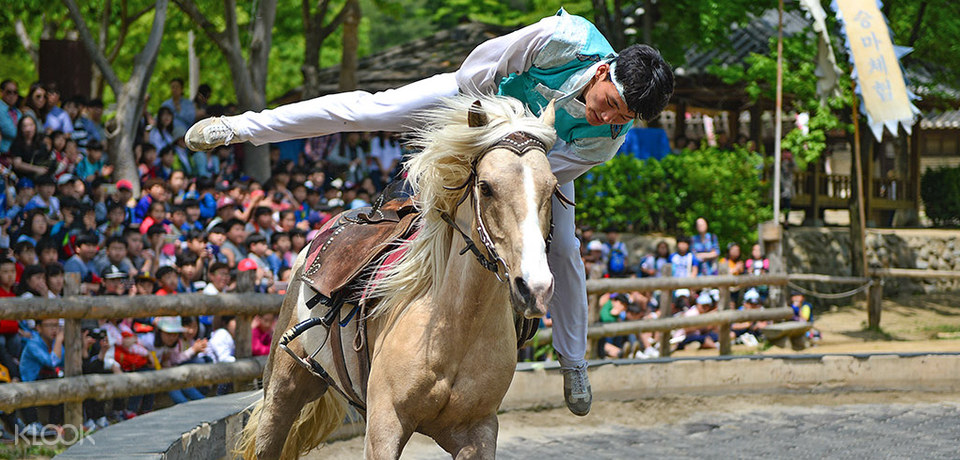
MBC Dae Jang Geum Park Tour Largest historical drama open set in Korea.
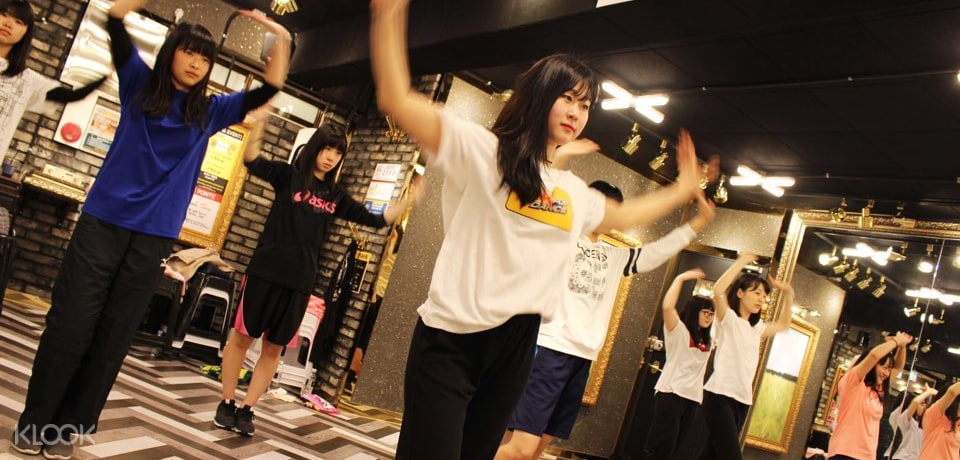
K-pop Dance Studio Class Learn popular K-pop dances and choreography.
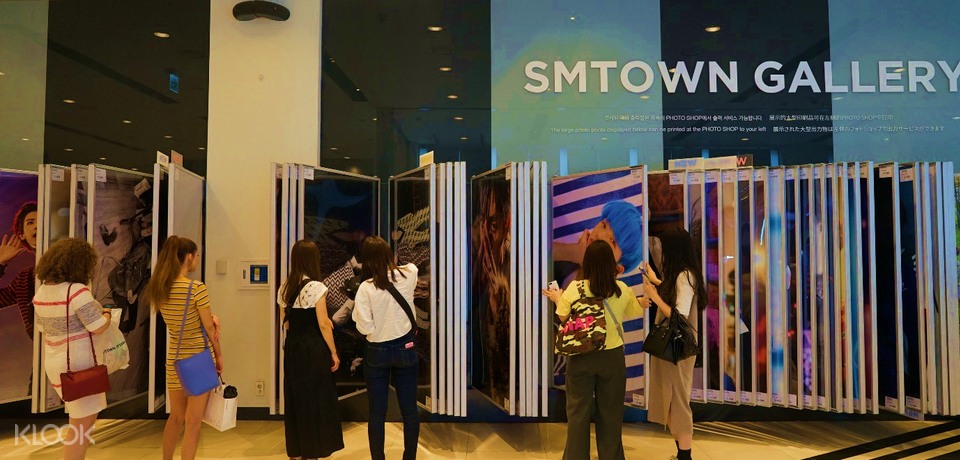
Seoul Hallyu Kpop Tour Ultimate KPop experience for your Seoul itinerary!
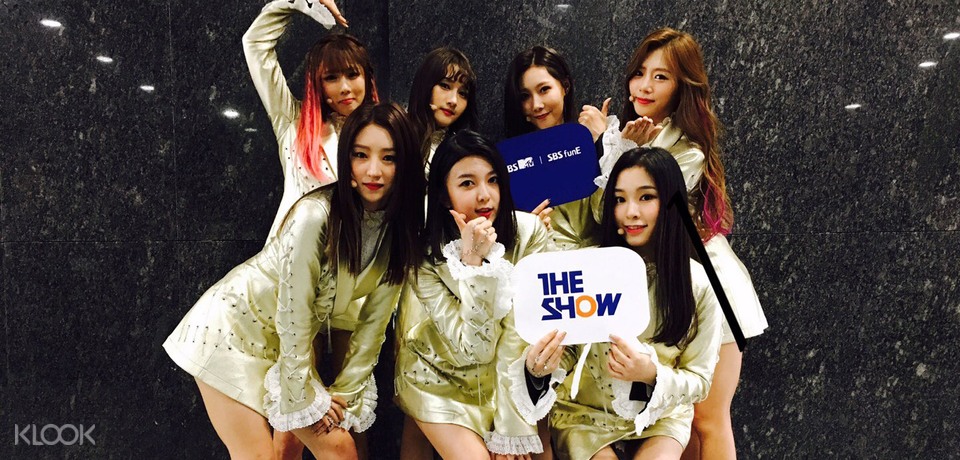
SBS MTV “The Show” Package Backstage access to live sets and broadcasts.
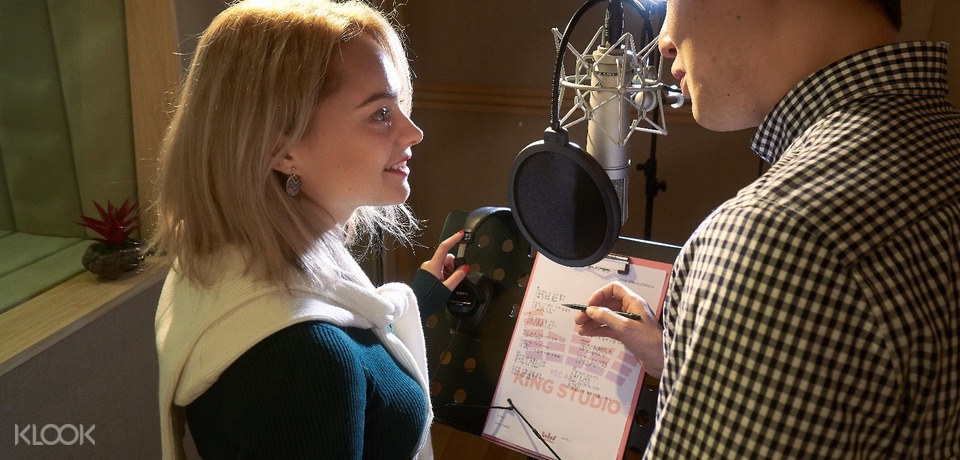
Everland Park Record your own K-Pop song at King Studio.
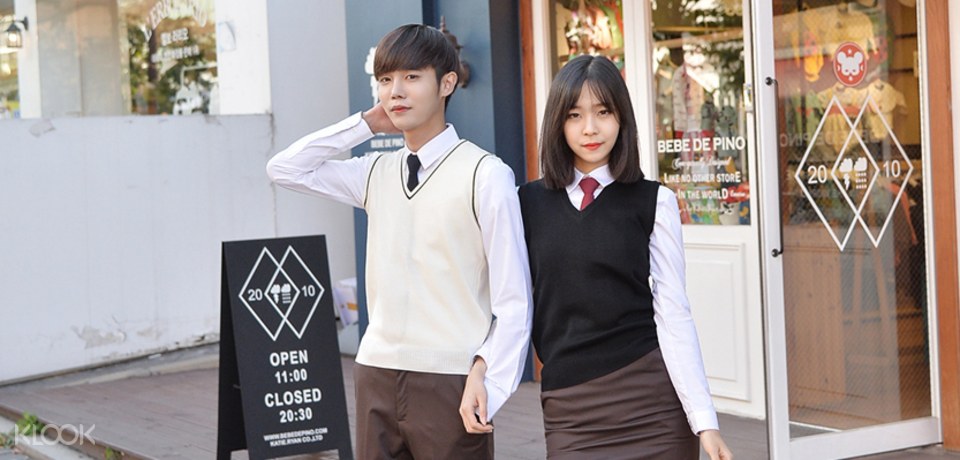
Korean School Uniform Rental Day rental of a Korean school uniform.

“Oppa” Tour Tour Seoul with an attractive “oppa”!
◘◘ Korean Performances ◘◘
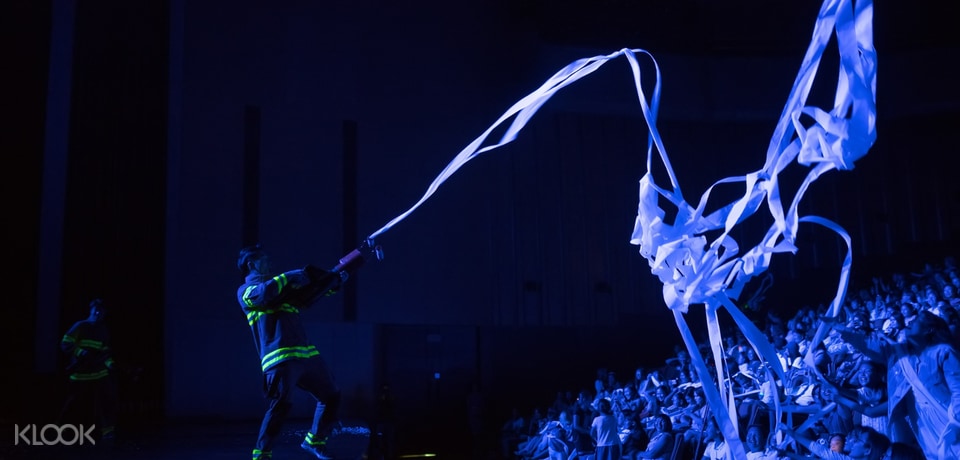
Fireman Show Action-comedy show full of stunts.
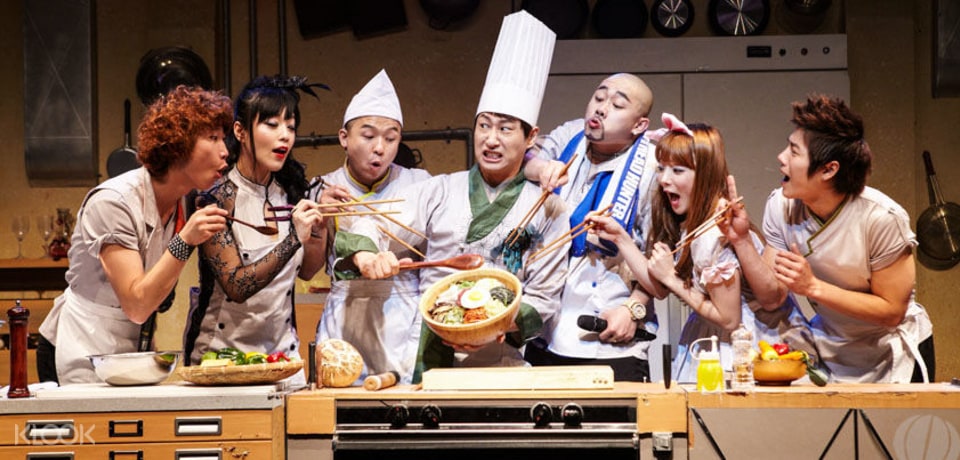
CHEF: Bibap Show One of the best Korean musical shows..
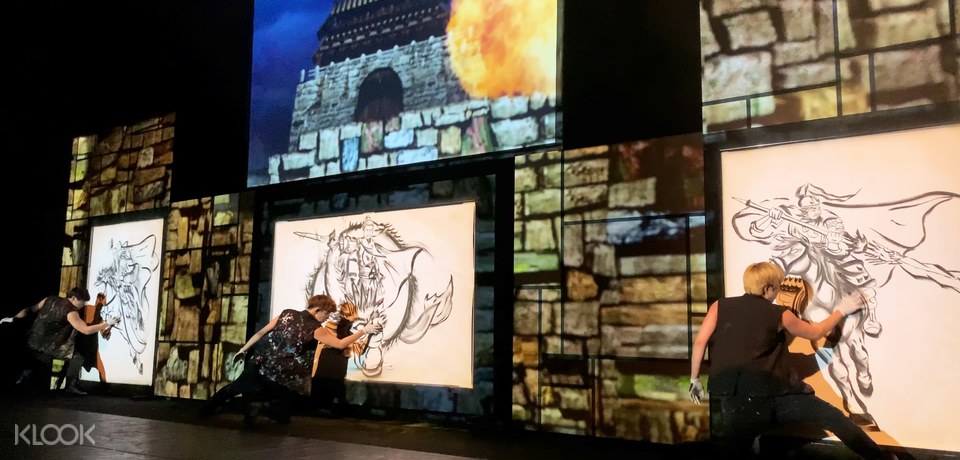
The Painters HERO Famous live painting non-verbal performance.
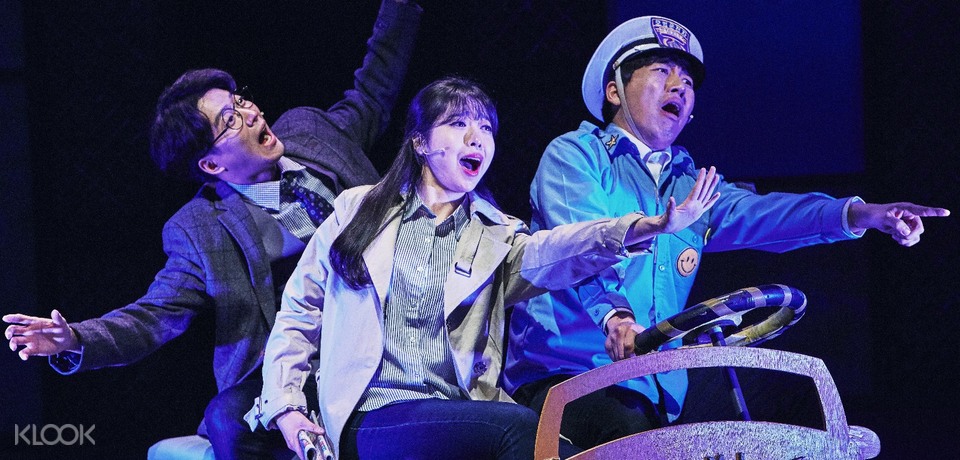
Finding Mr. Destiny Korean musical with subtitles.
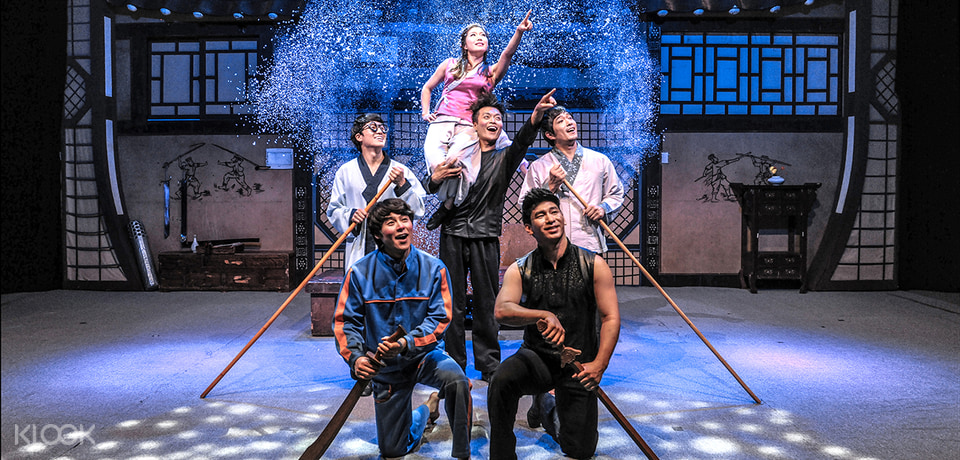
Jump – Martial Arts Show Seoul’s favorite martial arts theatre show.
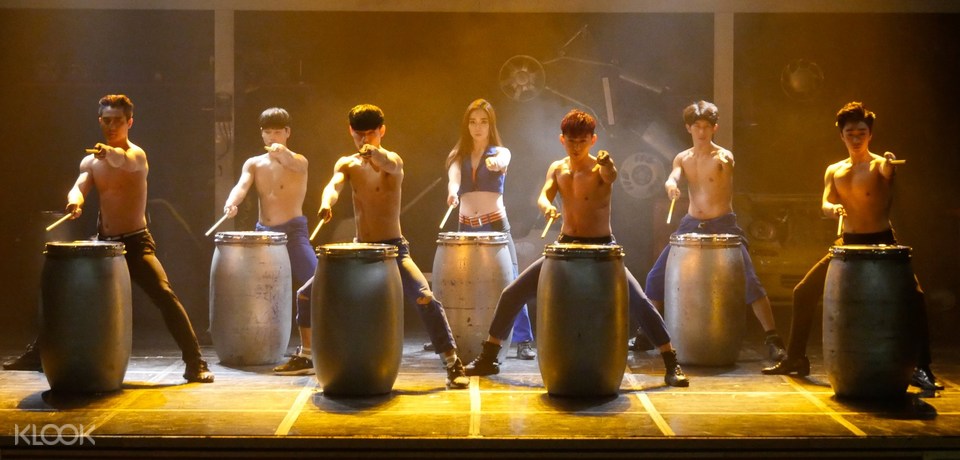
Fanta Stick Show Powerful percussion show.
◘◘ Beauty ◘◘

KPop Shoot & Makeover Full makeover at a famous studio.

Pre-nup Photoshoot Pre-nup shoot with makeup, hair, and clothes.

Korean ID Shoot ID shoot in Korean style makeup and hairstyle.
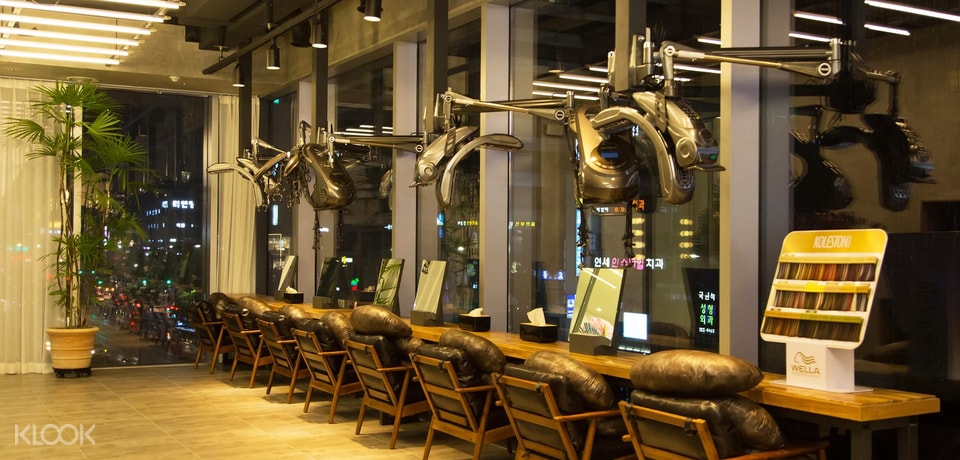
Korean Salon Service Style your hair in Gangnam’s top salon.
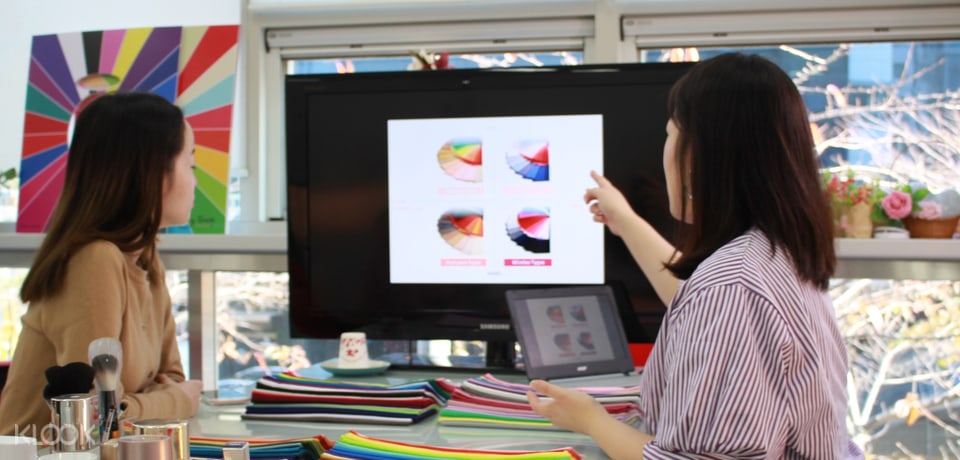
Professional Korean-Style Beauty Consultation Learn about your own personal color based on your skin, etc.
◘◘ Workshops ◘◘
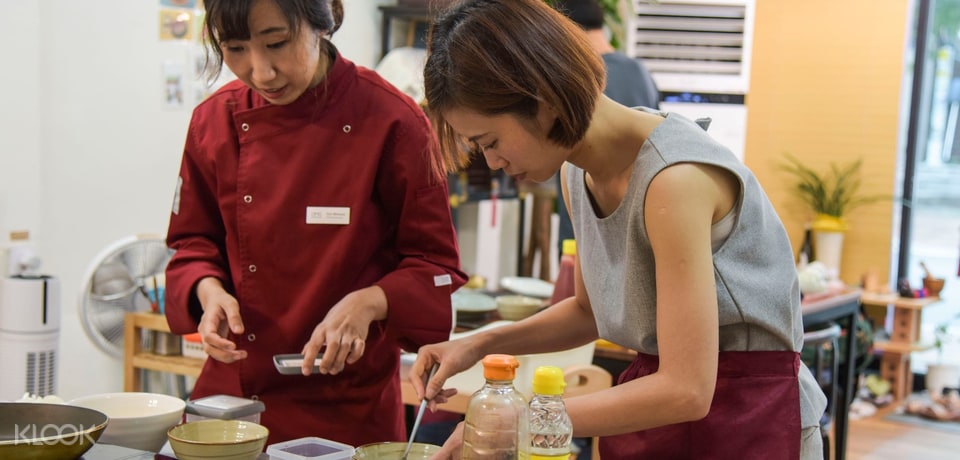
Cooking Class Cook authentic Korean dishes with a local.
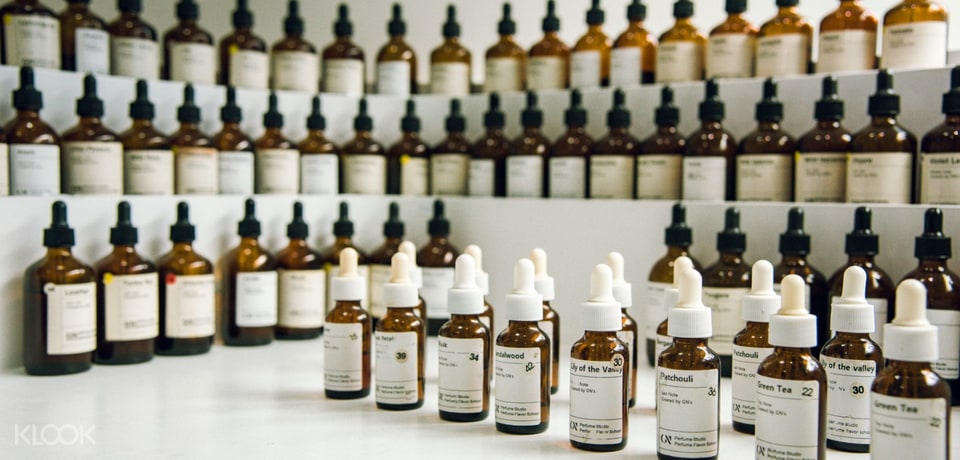
Perfume-Making Class Create your own signature scent.
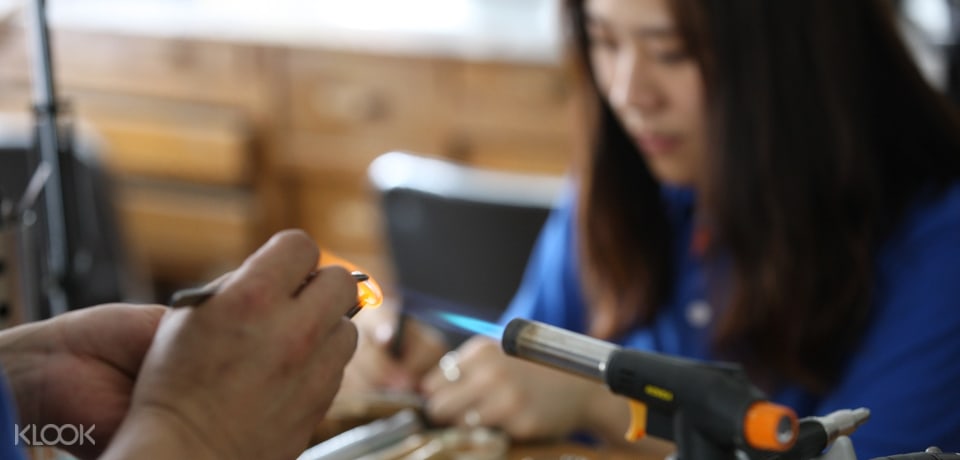
Ring-making Workshop Create your own unique accessories!
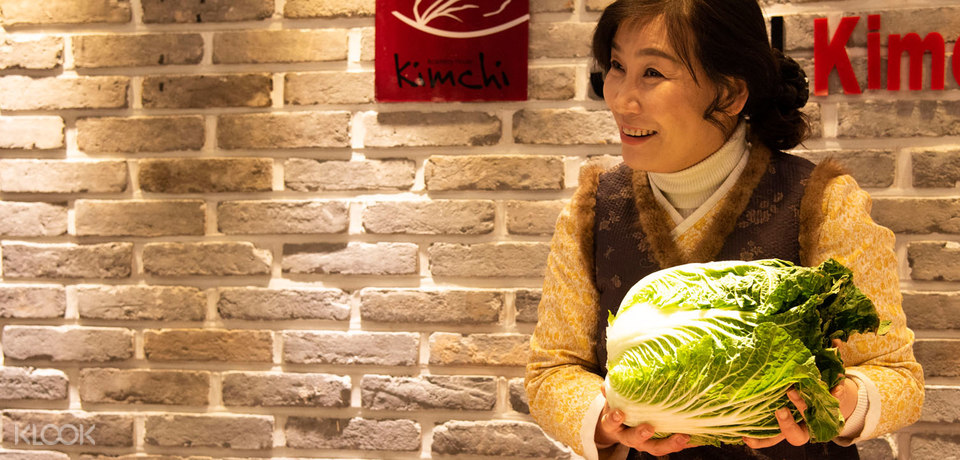
Kimchi Class Learn how to make kimchi and topokki!
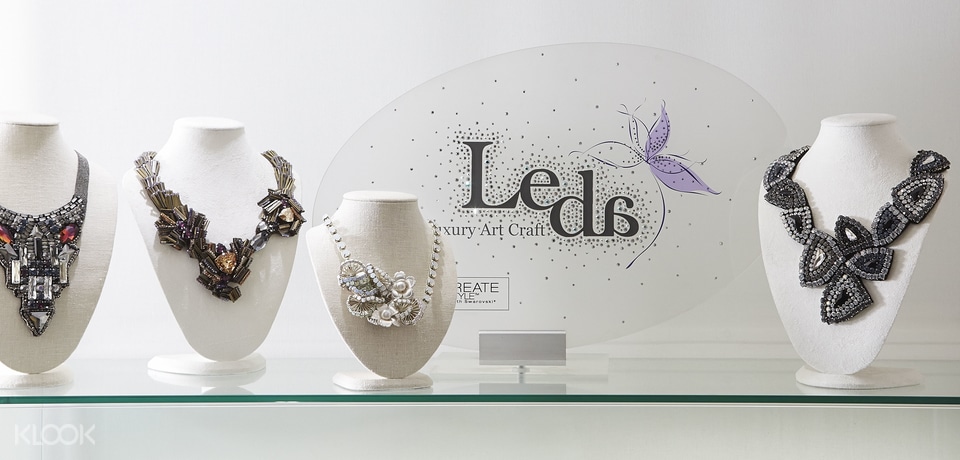
Handmade Jewelry Experience Learn hands-on exquisite art of jewelry making.
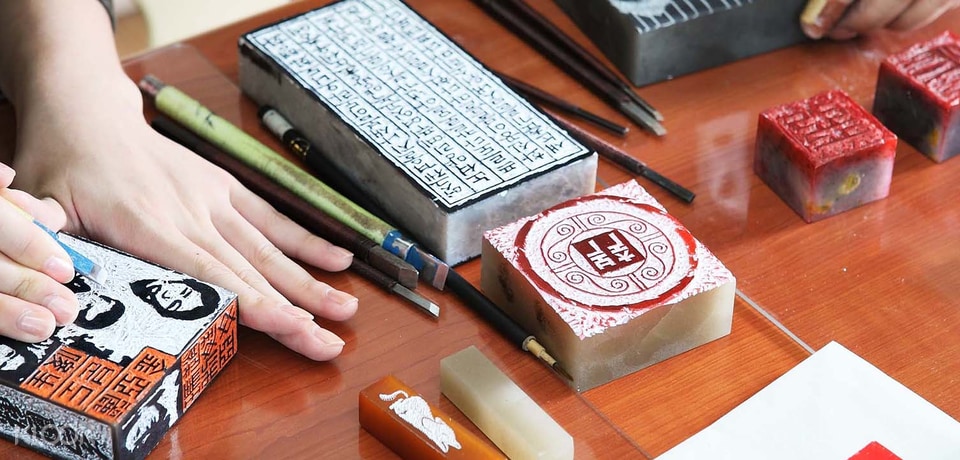
Handmade Stamp Engraving Create your own Korean-style hand engraved seal.
◘◘ Food & Restaurants ◘◘
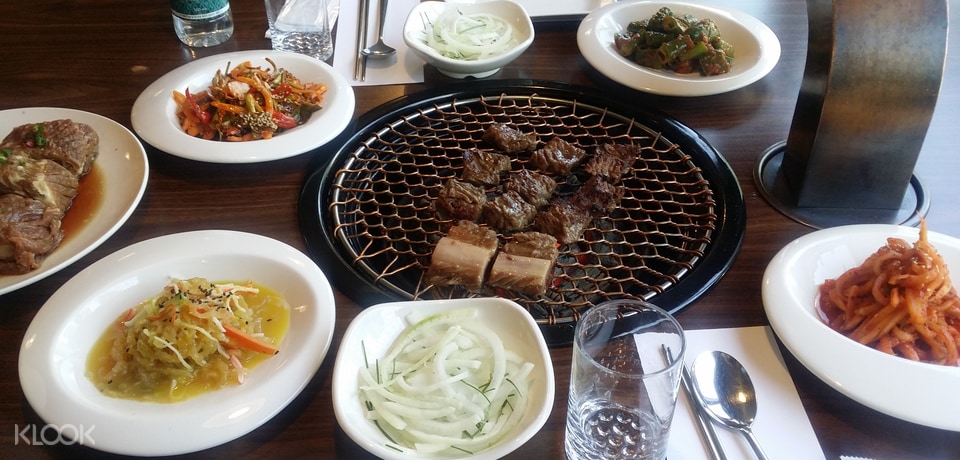
Assorted Grilled Beef Enjoy a Korean BBQ meal
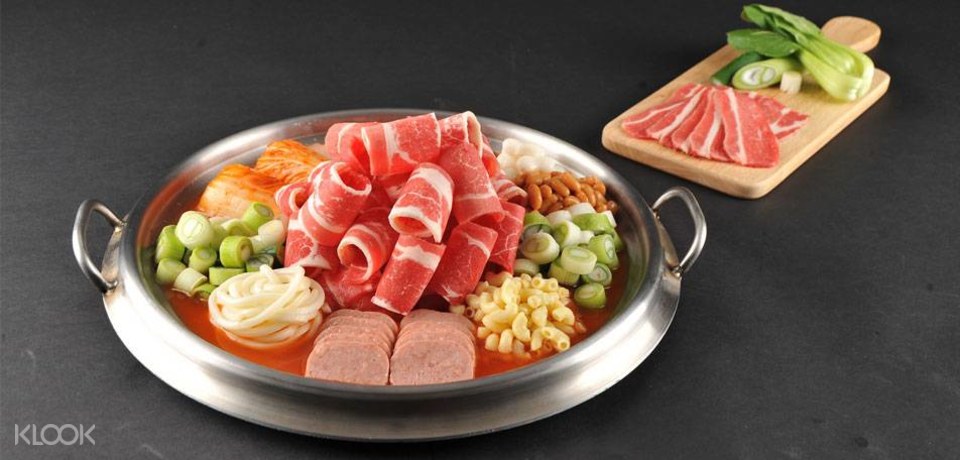
Budae Jjigae Try budae jjigae, the iconic Korean ‘Army Stew’.
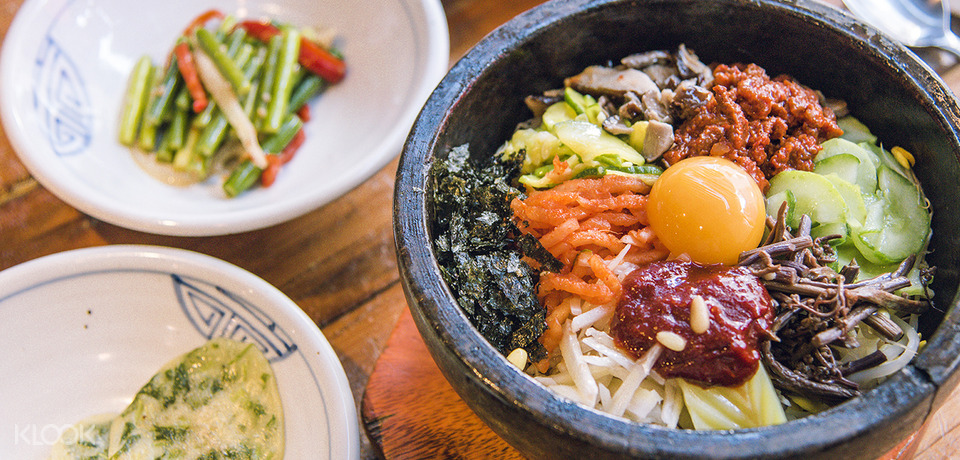
Gogung Bibimbap Specializes in authentic Bibimbap dishes!
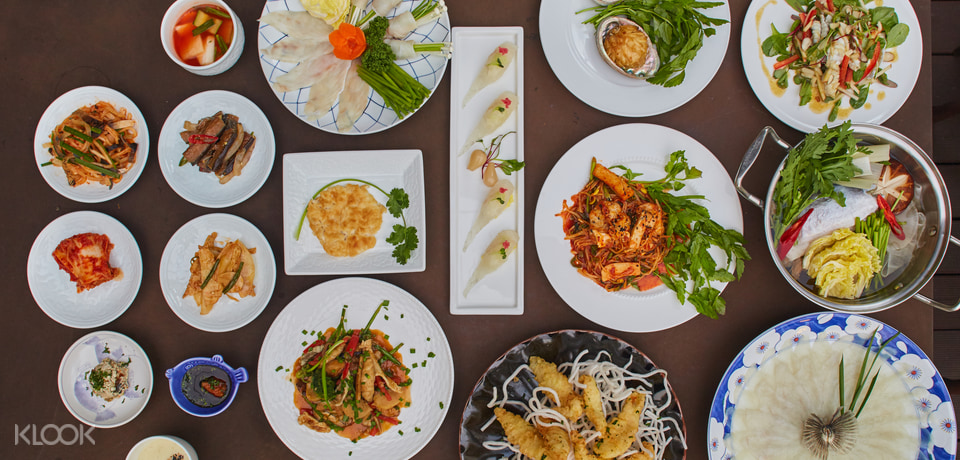
Puffer Fish Set The first puffer fish restaurant in Seoul.
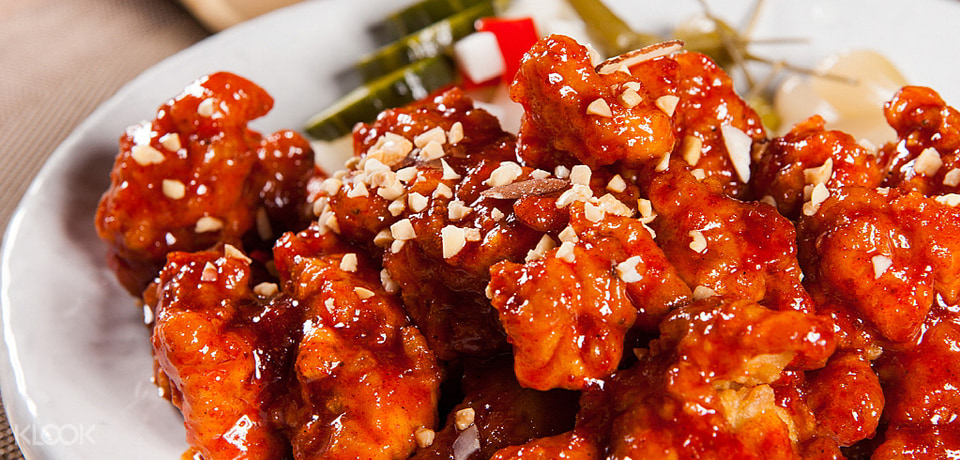
Korean Street Food Experience Korean eating and drinking culture!
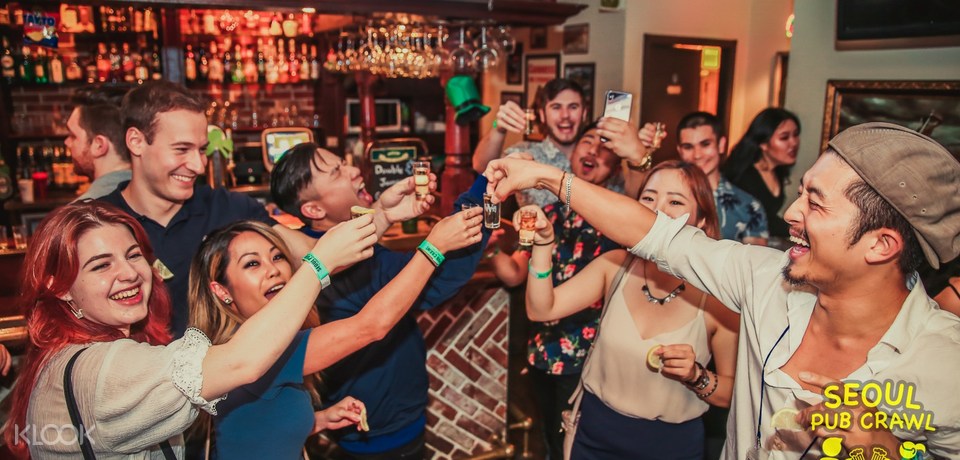
VIP Seoul Pub Crawl Experience Seoul’s vibrant nightlife!
◘◘ Day Trips from Seoul ◘◘
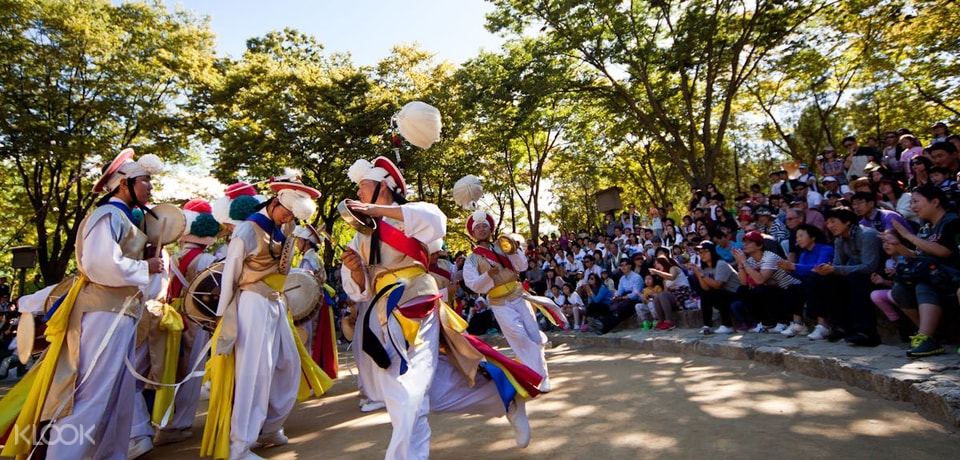
Minsok Korean Folk Village + Gwangmyeong Cave & Uiwang Rail Bike Day Trip.
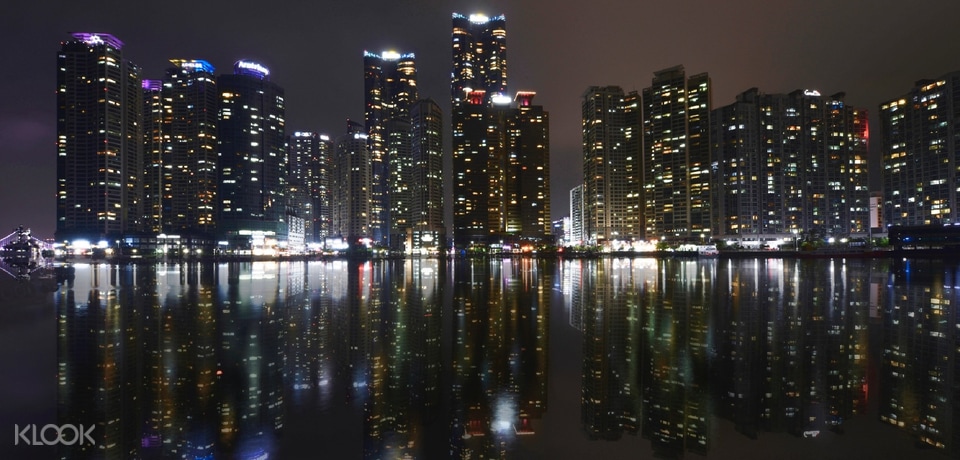
Busan Experience the best of Busan.
Booking Essentials

TIP: It’s a good idea to crosscheck the prices with other popular travel insurance providers like World Nomads and HeyMondo (as my reader, you get 5% off)! . However, take note that a travel insurance’s affordability typically means lesser coverage; so please always ensure that you read the fine print in order to decipher which travel insurance company is the right fit for you and your trip!
The Best Tours in South Korea?
Come and check out this list of the top things to do in South Korea which features the best activities and tours to do in Seoul, Busan, Jeju and more!
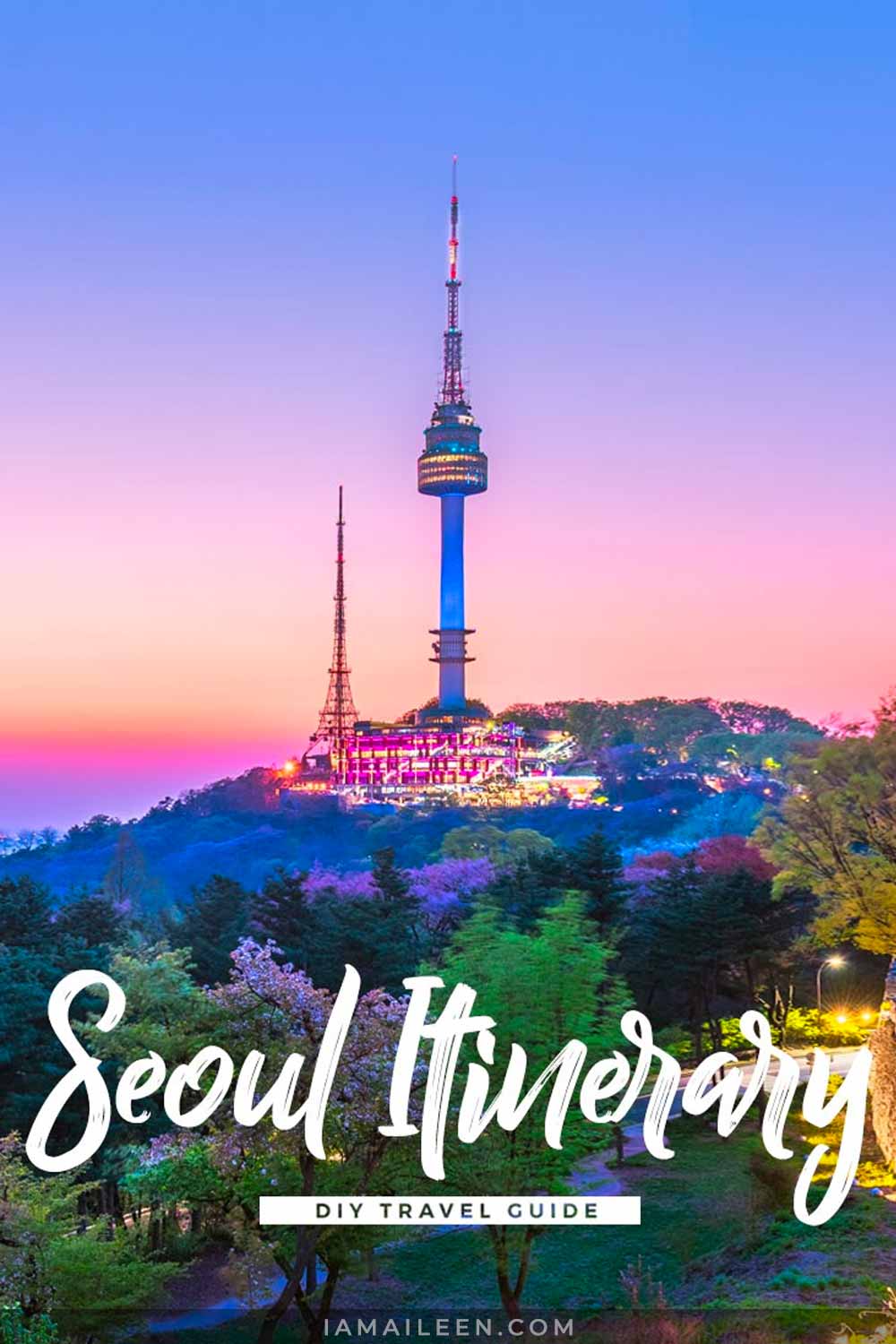
There’s still so much to see in Seoul! …But I believe that my Seoul itinerary travel guide here is already a good start.
Please feel free to tweak this itinerary and make full use of my extra activity suggestions in order to make your trip shorter or longer and better fitting for your travel style. Enjoy and do let me know how your trip goes!
Have you seen my latest vlog?

Hey there! I am Aileen Adalid. At 21, I quit my corporate job in the Philippines to pursue my dreams. Today, I am a successful digital nomad (online entrepreneur, travel writer, & vlogger) living a sustainable travel lifestyle.
My mission? To show you how it is absolutely possible to create a life of travel no matter the odds — and I will help you achieve that through my detailed travel hacks, guides, resources, tips, and MORE!
Follow Along
CURRENTLY BASED IN: The Philippines
- 100k Followers
- 51k Followers
- 80k Followers
- 10k Followers
- 23.1k Followers
Join over 1 million readers worldwide and get my FREE packing checklist, gain exclusive access to travel giveaways and more!
Success! Next, please check your email to confirm your subscription.
GET FREE PRINTABLE NOW!
Trending Now
Best hotels in cebu: from cheap to luxury accommodations and places to stay.
Explore the best hotels in Cebu — from luxurious five-star resorts, cozy boutique stays, to budget-friendly hostels!
EU261 Compensation: Your Essential Guide on European Flight Delays or Cancellations
Learn to claim EU261 compensation for flight disruptions like delays, cancellations, downgrades, or denied boarding!
20 Safest Countries for Solo Female Travelers: The Best Trip Destinations in the World (& The 5 Worst!)
Find out the BEST and safest countries for solo female travelers to go on adventures to — as well as the 5 most dangerous destinations!
So you want to know how to start a travel blog? Here’s a comprehensive and easy to follow step-by-step guide to help you start successfully!
Top 20 Philippine Online Shopping Sites for Gift Ideas & More
Running out of gift ideas? Not enough time to go shopping? Here are the top 20 online shopping sites in the Philippines to help you out!
Latest Posts
Learn Today
How to start a successful blog, 134 comments.
Your Seoul itinerary guide is a dream come true for wanderers like me! Planning a trip can be overwhelming, but your detailed 5-day plan simplifies everything. From activities to sights, you’ve covered it all. Seoul, here I come—thanks to your fantastic guide! ❤❤❤❤
Going to Paju would be another great option for a day trip from Seoul, especially during the week. It is close, easily reached by bus, and offers amazing landscapes no matter the season.
Seoul is one of my favorite cities in the world! I’m dying to return and explore it more.
If I was given a chance, I would love to go to Seoul. Seoul is one of my dream places to go in the near future and your blog really helps and encourages me to never stop dreaming. Thank you for this :))
Submit a Comment Cancel reply
Your email address will not be published. Required fields are marked *
Be notified of follow-up comments by email
Submit Comment
Pin It on Pinterest

Zen Moments in Korea
7-day South Korea itinerary: what to do and where to go in 2024
Last Updated on June 2, 2024 by Alex
Planning a 7-day South Korea itinerary can be challenging, especially if you are visiting for the first time.
With only seven days at your disposal, there is so much you can do and see. However, with a good itinerary, you will make the most of your time in the country and tick as many places as possible off your bucket list .
We lived in South Korea for a year and explored as much as possible. Draw on our experience so you have a holiday to remember.
This post contains affiliate links. This means if you click on the link and purchase the item, I will receive an affiliate commission at no additional cost to you. Read more about it on our disclosure page here .
Table of Contents
Where to stay in seoul, gyeongbokgung palace, changdeokgung palace, bukchon hanok village, namdaemun market, namdaemun park and namsan mountain, where to stay in busan, gamcheon cultural village, jagalchi fish market, yeongdo island.
- Yongdusan Park and climb Busan Tower (부산타워)
Haedong Yonggungsa Temple
- Take the Blue Train or Sky Capsule from Cheongsapo Station (청사포정거장)
Haeundae Beach
Gwangalli beach, day 6 – gangnam (lotte world), day 7: day trip outside of seoul (dmz, suwon, etc), other things to know when planning for one week in south korea, 7-day south korea itinerary for first timers – seoul and busan.
Any first-time traveler should visit at least the two most important cities in South Korea: Seoul and Busan .
We lived in Seoul and traveled to Busan as often as we could. The ocean-side city is much more colorful than South Korea’s capital.
Having this in mind, we prepared to following itinerary:
The South Korean capital is a huge metropolis home to millions of people. So, choosing where to stay can affect the commuting time between the different things to see.
If you want to be relatively near most attractions, I suggest you stay in either the Myeongdong or Hongdae areas. They are central areas with great connections and various restaurants and entertainment options.
For a detailed overview, please check our comprehensive guide to the best areas to stay in Seoul here .
Click here to book your hotel .
Day 1 – Seoul: Palaces, Bukchon Hanok, Insadong, Hongdae

Start your first day in Seoul by visiting one or two of the famous 5 Palaces .
If you also want to do something else, you won’t have the time to see all of them. Worry not; if you see one or two, that’s just enough.
Gyeongbokgung Palace and Changdeokgung Palace are within walking distance, and the famous Bukchon Hanok Village is between them.
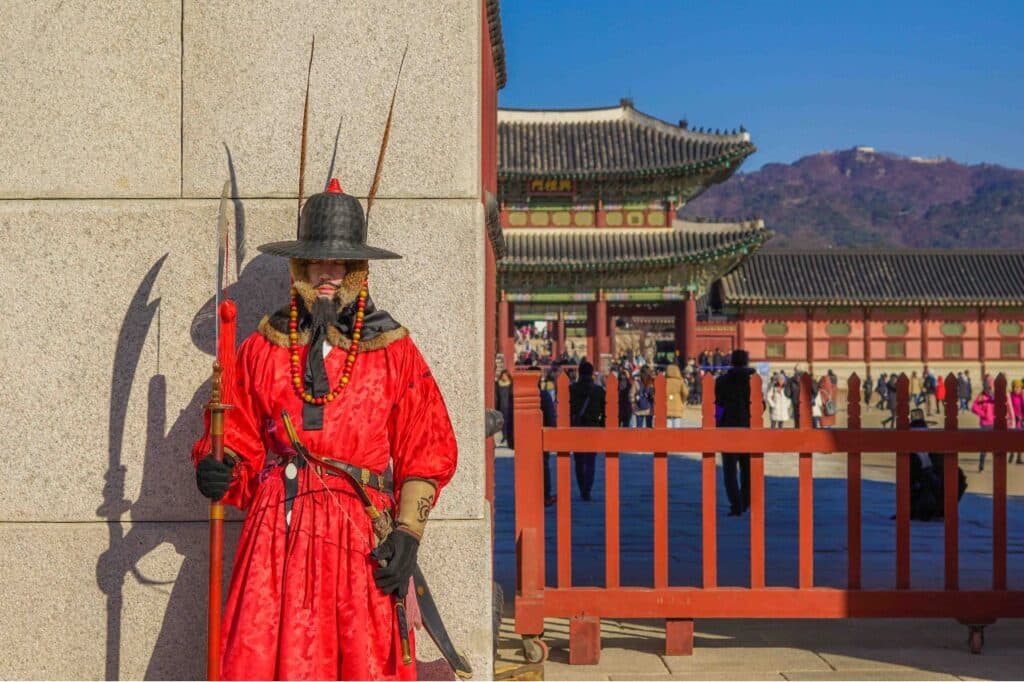
Constructed in 1395 AD by the first Joseon king, Taejo, its name was devised by an influential minister named Jeong Dojeon. The kingdom’s main palace complex housed the royal household and most of the government.
Stepping through the grand gates, you’re immediately transported back to the Joseon dynasty, as the palace’s intricate architecture and sprawling grounds evoke a sense of awe and wonder.
The imposing presence of Gyeongbokgung, with its vibrant hues and traditional designs, offers a glimpse into the luxury of Korea’s royal past.

Walking along the meticulously manicured gardens and serene ponds, you can almost hear the echoes of history whispering through the air.
Exploring the palace’s various halls, pavilions, and courtyards reveals a treasure trove of artifacts and stories, each corner brimming with centuries of tradition and significance.
Address : 161, Sajik-ro, Jongno-gu, Seoul
Subway : Gyeongbokgung Station (Seoul Subway Line 3) and Exit 5. Anguk Station (Seoul Subway Line 3) and Exit 1.
Official website

Move forward to the Changdeokgung Palace, a UNESCO World Heritage Site.
Its seamless integration with the surrounding landscape, particularly the majestic Huwon Secret Garden , showcases the meticulous harmony between nature and human ingenuity.
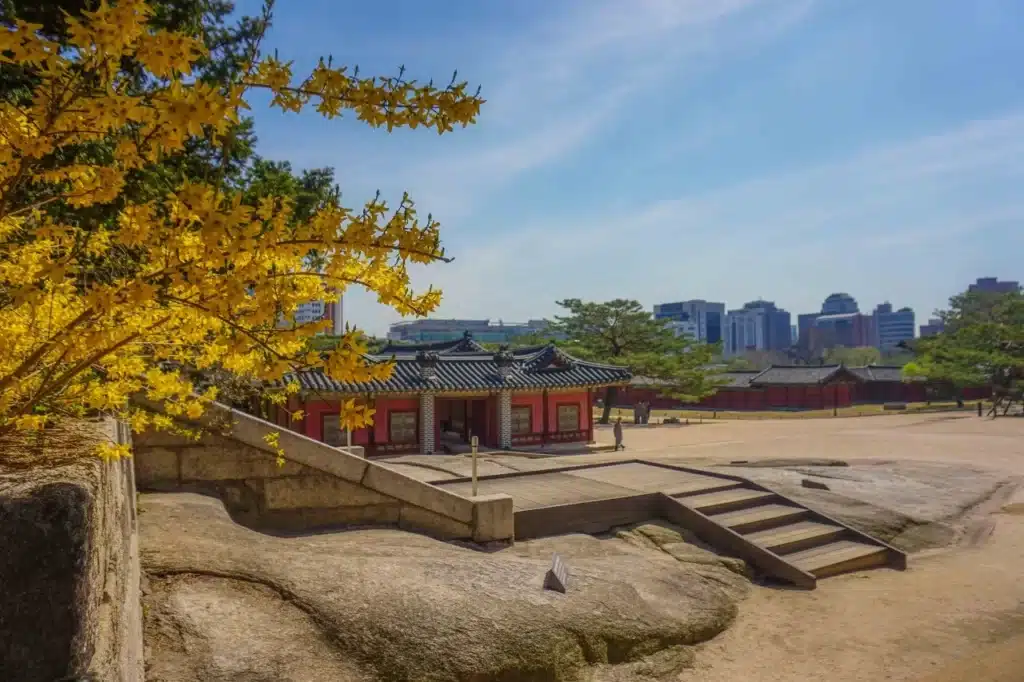
Walking through the palace’s ornate halls, pavilions, and courtyards, visitors are transported to an era of royal splendor, where every detail reflects the grace and elegance of Korean aesthetics.
From the iconic Injeongjeon Hall to the garden’s tranquil ponds and winding paths, each corner of Changdeokgung Palace invites exploration and contemplation.
Address : 99, Yulgok-ro, Jongno-gu, Seoul
Subway : Anguk Station (Seoul Subway Line 3), Exit 3.

One of our favorite areas in town, the Bukchon Hanok Village, is packed with pretty cafes, art museums, and local traditional restaurants.
The neighborhood boasts a labyrinth of narrow alleyways lined with beautifully preserved hanok houses, showcasing the elegance of traditional Korean architecture.
The perfect area to explore during spring or fall that’s when Seoul transforms itself and becomes incredibly photogenic.
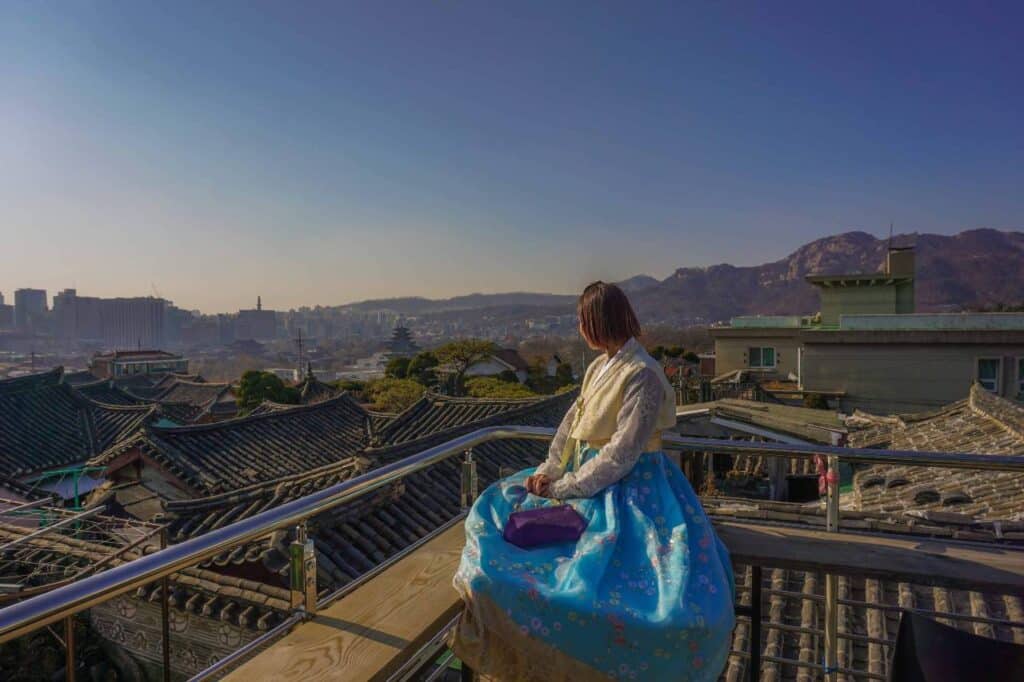
Rent a premium hanbok and stroll through the quaint streets. By doing so, you will be transported back in time, immersed in the tranquil ambiance of centuries-old courtyards, tiled roofs, and graceful eaves.
The village’s timeless charm is further enhanced by its panoramic views of the city skyline and nearby historic landmarks, including Gyeongbokgung Palace and Jongmyo Shrine.
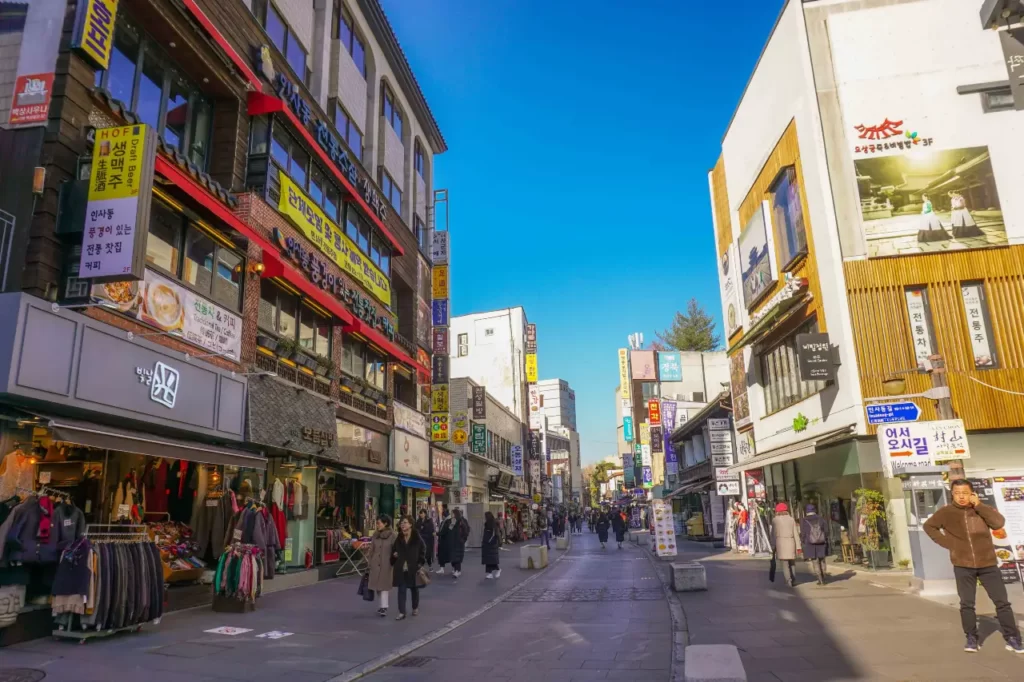
Across the street from the Bukchon Hanok Village lays the famous Insadong area.
Renowned as a hub for traditional Korean arts and crafts, Insadong’s bustling streets are adorned with galleries, teahouses, and shops showcasing a diverse array of handmade pottery, paintings, calligraphy, and other cultural treasures.
Eat at one of the local restaurants and try some traditional pastries – hotteok (sweet pancakes) and bindaetteok (mung bean pancakes).
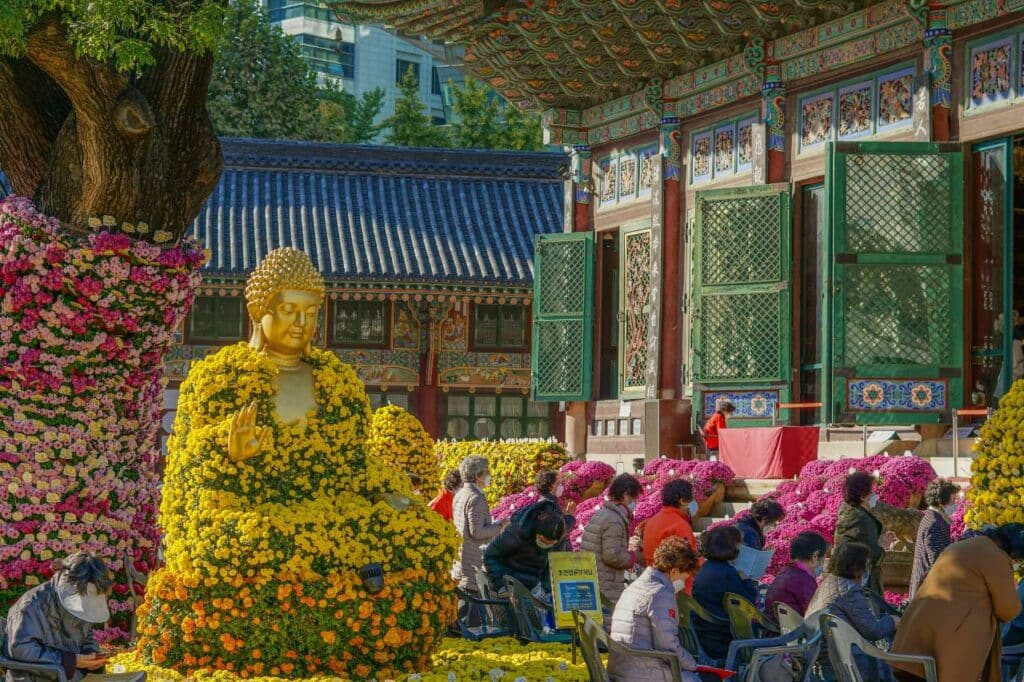
Don’t miss a visit to Jogyesa Temple . The temple’s main hall, Daeungjeon, is a masterpiece of traditional architecture, housing exquisite Buddhist relics and statues, including a majestic golden Buddha.
Moreover, the temple is decorated with colorful lanterns or flowers on special occasions.

End your day in Hongdae, one of the most vibrant areas in town.
You can quickly get there by subway (on line number 3, green) or by bus. However, we always preferred to go by bus because that’s the best way to see the city.
Lined with trendy cafes, indie boutiques, and street performers, Hongdae exudes an atmosphere of constant excitement and innovation.
By day, the streets teem with shoppers browsing unique fashion finds and enjoying quirky coffee shops. At the same time, by night, the area transforms into a lively hub of music, dance, and revelry, with numerous clubs and bars hosting live performances and DJ sets.
Read also: Things to do in Hongdae | Where to stay in Hongdae, best hotels
Day 2: Namdaemun Market, Namdaemun Park, NSeoul Tower, Itaewon , Myeongdong
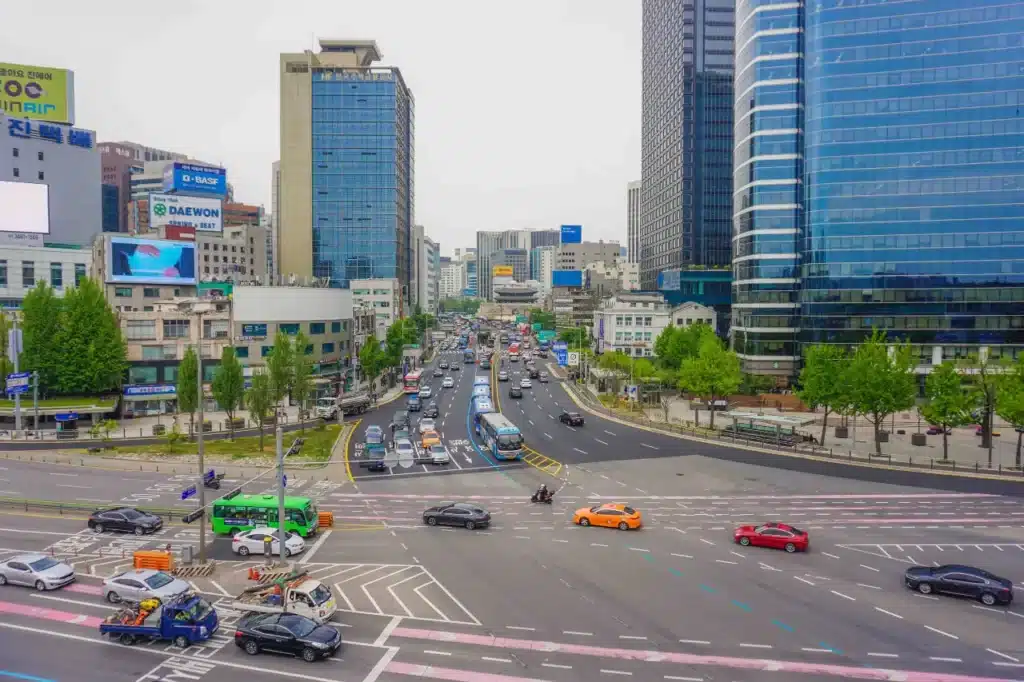
Start your day with a visit to the Namdaemun Market in the city’s heart.
As one of Seoul’s premier shopping destinations, Namdaemun Market exudes a vibrant and chaotic energy, with the lively calls of vendors mingling with the chatter of shoppers.

Cross the street from the market, enter the beautiful park, and climb Namsan Mountain toward N Seoul Tower. As you move forward, you will be welcomed by stunning city views.
Otherwise, if you don’t feel like walking, there are plenty of other ways to get to Namsan Tower . For example, you can take the bus, the cable car, or a taxi if you want to get there quickly and easily.

As one of the city’s most recognizable symbols, the tower, at 236 meters, provides visitors with an unparalleled vantage point from which to admire the beauty of the South Korean capital.
Whether by day or night, the observation decks offer stunning vistas, with distant mountains, skyscrapers, and the winding Han River stretching as far as the eye can see.
Beyond its panoramic allure, N Seoul Tower is also a cultural hub, featuring attractions like the Teddy Bear Museum and numerous restaurants, cafes, and souvenir shops.

Crossing on the other side of Namsan Mountain, you will get to the famous Itaewon district.
As a melting pot of cultures, Itaewon attracts visitors from all around the globe, offering a kaleidoscope of experiences catering to every taste and interest.
Its bustling streets are lined with an eclectic mix of trendy boutiques, art galleries, vintage shops, and an array of international restaurants, cafes, and bars.
You can spend the evening at one of the many restaurants or bars here or head to the next stop.
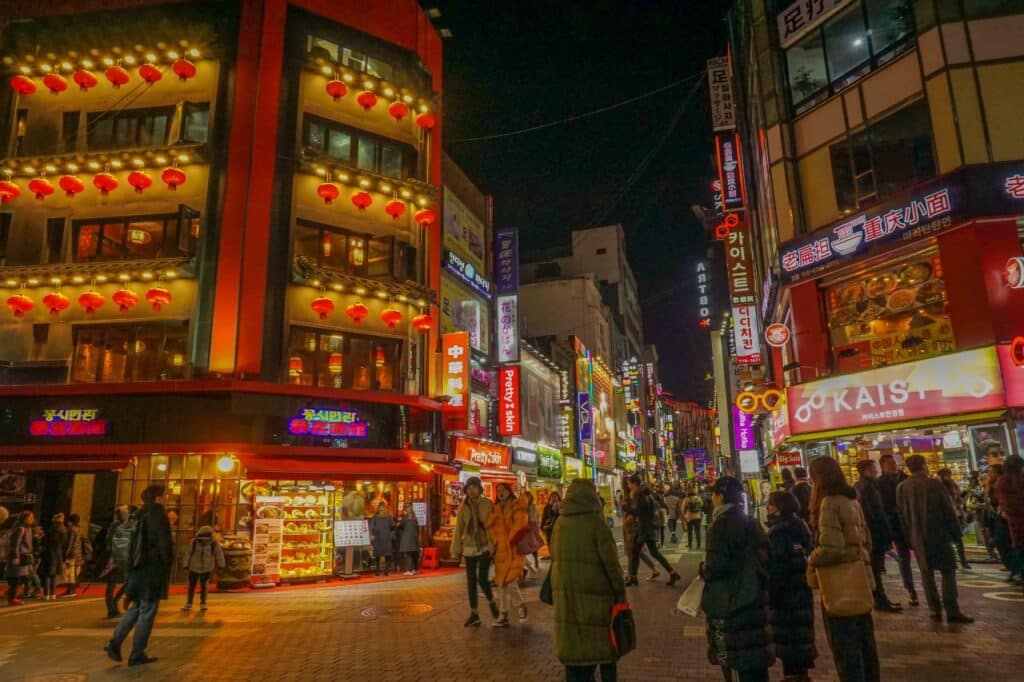
A popular neighborhood packed with cosmetics stores , restaurants, cafes, and street food vendors. You can shop till you drop, have dinner at one of the local places, see a show at Nanta , or visit a cat cafe.
There are countless options for what you can do in Myeongdong .
Read also: Where to stay in Myeongdong
Day 3-5 of your one week in South Korea itinerary: Busan
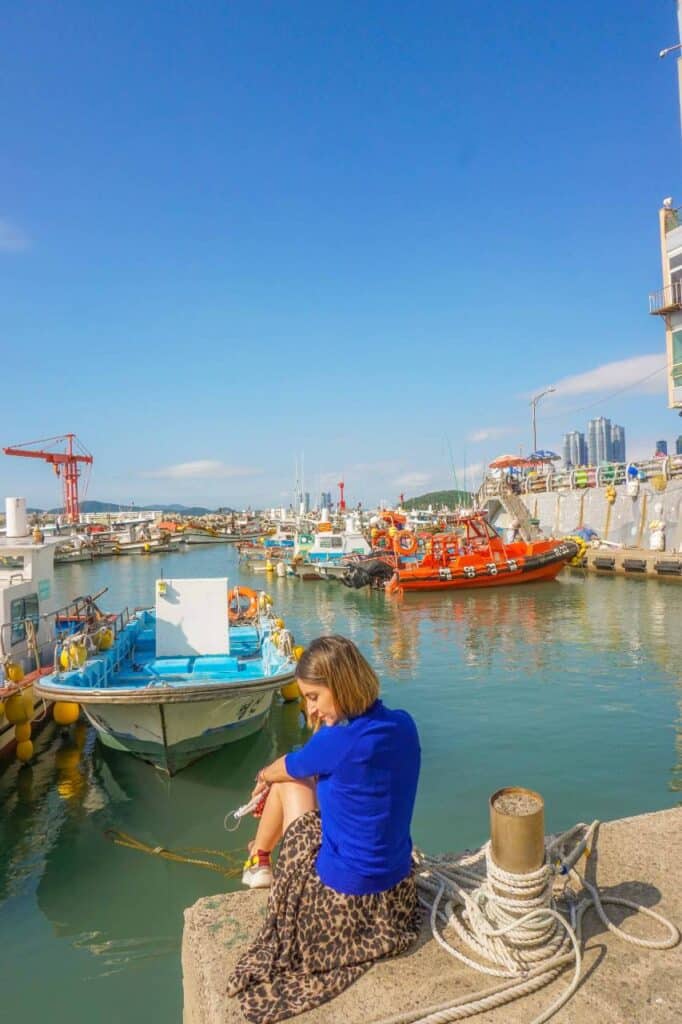
Getting from Seoul to Busan is easy and relatively fast when traveling by high-speed train (KTX) or plane.
If you ask us, we always travel by KTX—it is fast, convenient, and comfortable. The train station is close to the city center in both cities. As a result, you don’t waste any more time on the commute. Book your Korea Rail Pass here!
We love Busan and have repeatedly returned to the ocean-side city. Perhaps there was also a bit of nostalgia involved since it reminded us of Hong Kong, our previous place of residence, before relocating to Seoul.
It has sandy beaches, busy waterfronts, and hillside neighborhoods. Given the size of the port city, though, visiting them all in just two days might be tricky.
In our experience, Seomyeon is the best area to stay in Busan. It is centrally located, and both the eastern and western sides of the city are within reach.
Lotte Hotel Busan and Browndot Business Seomyeon are good options for your stay.
Day 1 – Gamcheon Cultural Village , Jagalchi Fish Market , Yeongdo Island, Jeoryeong Coastal Walk, Yongdusan Park and Busan Tower

One of the most popular attractions in town, the Gamcheon Cultural Village attracts many tourists daily.
Nestled on the hillside, the colorful village offers stunning views.
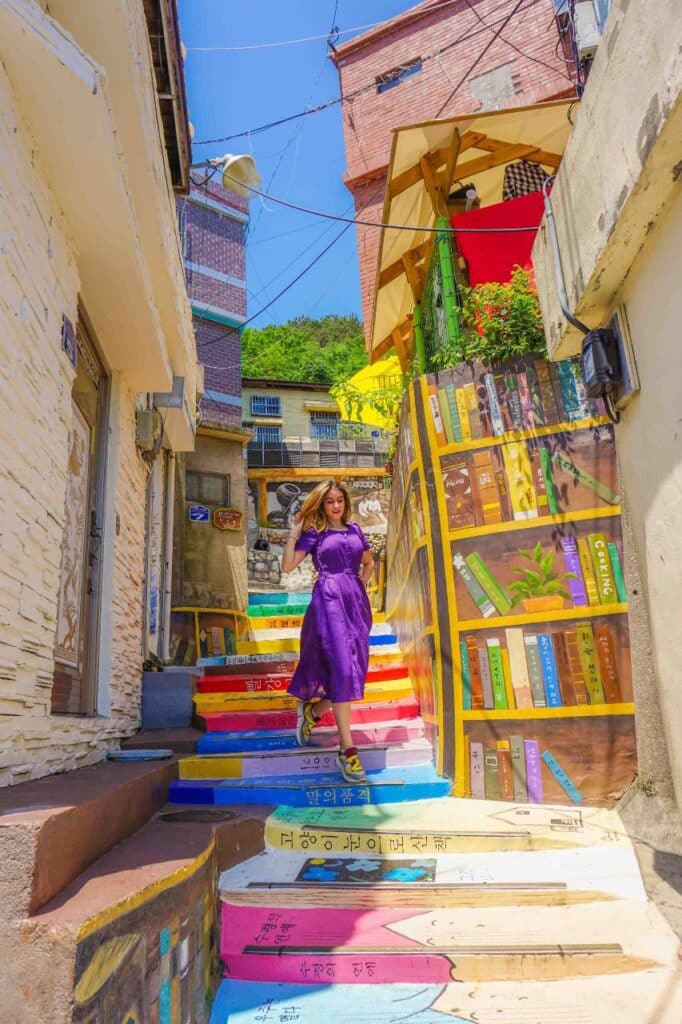
Once a humble settlement for refugees during the Korean War, the village became a lively cultural hub. It is adorned with vibrant murals, sculptures, and installations by local artists.
From quaint cafes and art galleries to cozy boutiques and handicraft workshops, Gamcheon exudes a palpable sense of community and artistic expression.
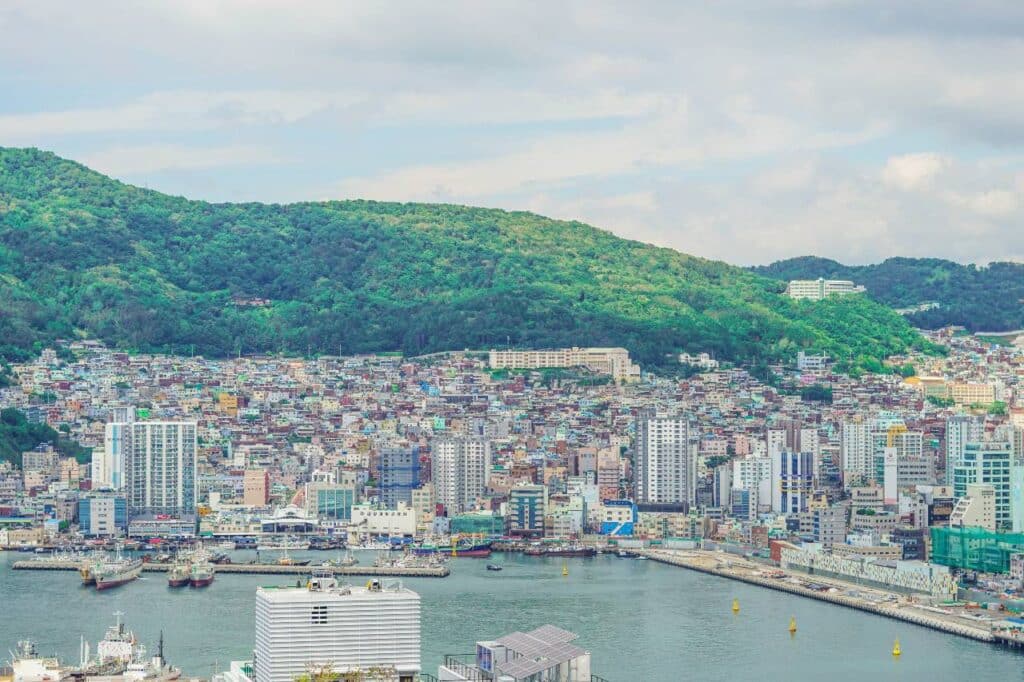
Take the bus and head to one of the most famous local fish markets: Jagalchi Fish Market.
As one of the largest fish markets in Korea, Jagalchi is a sensory feast. Rows upon rows of stalls brim with an astonishing variety of fresh seafood. They range from familiar favorites like octopus and shrimp to more exotic offerings such as sea squirts and sea cucumbers.
The market’s vibrant atmosphere is heightened by the lively calls of vendors hawking their wares and the frenetic energy of shoppers bargaining for the best catch of the day.
Book a Jagalchi Fish Market & Korean Food Market Tour

Cross the bridge and head to Yeongdo Island.
The island is home to several historic sites, including the towering Yeongdo Lighthouse and the historic Taejongdae Park, which boasts dramatic cliffs, dense forests, and sweeping coastline vistas.
However, the most popular attraction is the Jeoryeong Coastal Walk. It has colorful streets, cafes with scenic views, and a perfect walk along the ocean.

Yongdusan Park and climb Busan Tower (부산타워)
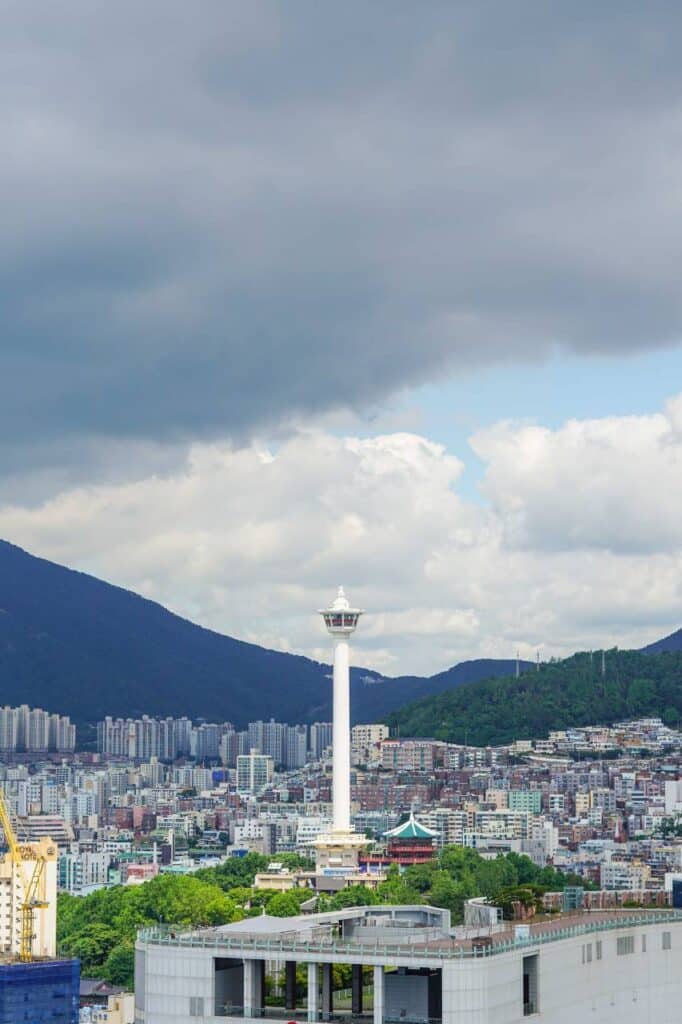
Standing 118 meters tall atop Yongdusan Park, this observation tower has symbolized Busan’s modernity and progress since its construction in 1973.
You can ascend to the tower’s observation deck via a high-speed elevator. From here, you are treated to breathtaking views of the city’s sprawling metropolis, picturesque coastline, and surrounding mountains.
Beyond its scenic allure, Busan Tower also houses a cultural exhibition hall showcasing the city’s history and achievements.
As an important side note, the Busan Pass might save you some money on different entrance fees. Before getting it, check out the list of covered attractions here .
Day 2 – Haedong Yonggungsa Temple , The Blue Line Park Sky Capsule & Train, Haeundae Beach, Gwangalli Beach

Start your day at the temple and make your way back towards the city.
Unlike many other temples nestled in the mountains, Haedong Yonggungsa’s oceanfront location imbues a unique and tranquil ambiance. This makes it a popular destination for both spiritual seekers and tourists.
The temple, believed to have been first built in the 14th century, boasts a rich history steeped in legend and devotion.
Adorned with colorful lanterns, intricate pagodas, and ornate statues, the temple’s architecture harmonizes beautifully with its natural surroundings. It offers breathtaking views of the sea and surrounding cliffs.
Take the Blue Train or Sky Capsule from Cheongsapo Station (청사포정거장)
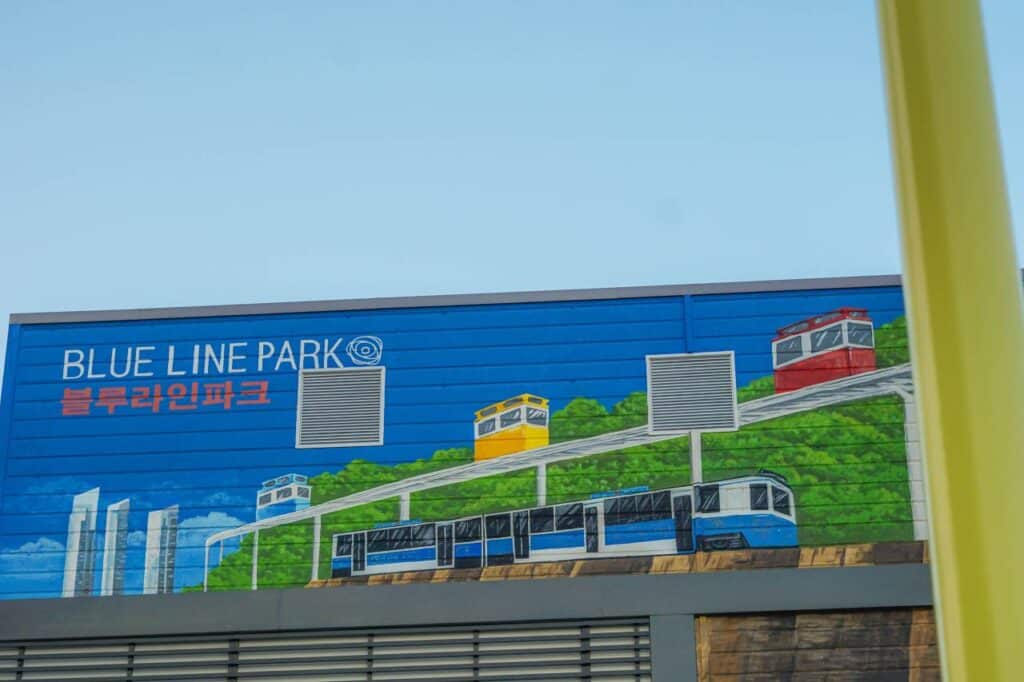
From the temple, take the bus to Cheongsapo Station, the end of the Blue Train line.
One of the most popular attractions in town, the train links Cheongsapo to Mipo Station, and it rides along the ocean, offering breathtaking scenic views.
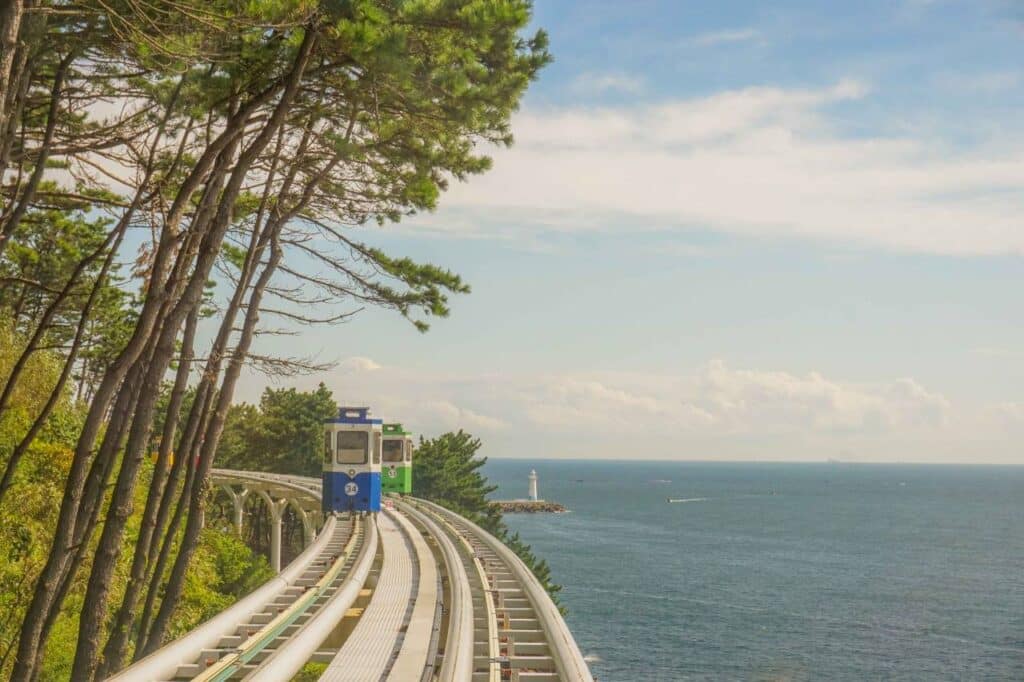
For the rest of the trip, choose to go on the Sky Capsule because it is a unique experience.
If you want to know more, read our complete Sky Capsule and Blue Line Train Guide.

Mipo Station is minutes from Korea’s most famous beach – Haeundae Beach .
Haeundae stretches for approximately 1.5 kilometers, offering ample space for relaxation and recreation against the sparkling East Sea.
With its soft sands, crystal-clear waters, and panoramic views of nearby islands and mountains, Haeundae Beach provides the perfect setting for sunbathing, swimming, or simply unwinding by the shore.

The beachfront promenade is lined with restaurants, cafes, and shops. They offer diverse local delicacies, refreshing beverages, and souvenirs.
During the summer, the beach comes alive with vibrant energy as locals and tourists flock to enjoy festivals, fireworks displays, and cultural performances.
Go for a SPA treatment with Korean beauty products at the famous SPA 1899 near the Haeundae beach. Book your treatment here!
Don’t miss the Sea Life Busan Aquarium – an impressive immersion into sea life. You will learn about hundreds of species of fish and marine animals. Moreover, you can also feed sharks. Book your ticket here!

End your day with dinner and a sunset view at Gwangalli Beach.
Unlike its more crowded counterpart, Haeundae Beach, Gwangalli is known for its laid-back vibe and picturesque setting, making it a favorite among locals and tourists seeking a more relaxed seaside experience.
In the evenings, the beach transforms into a dazzling spectacle as the Gwangan Bridge illuminates the night sky with its vibrant lights, casting a magical glow over the waterfront.
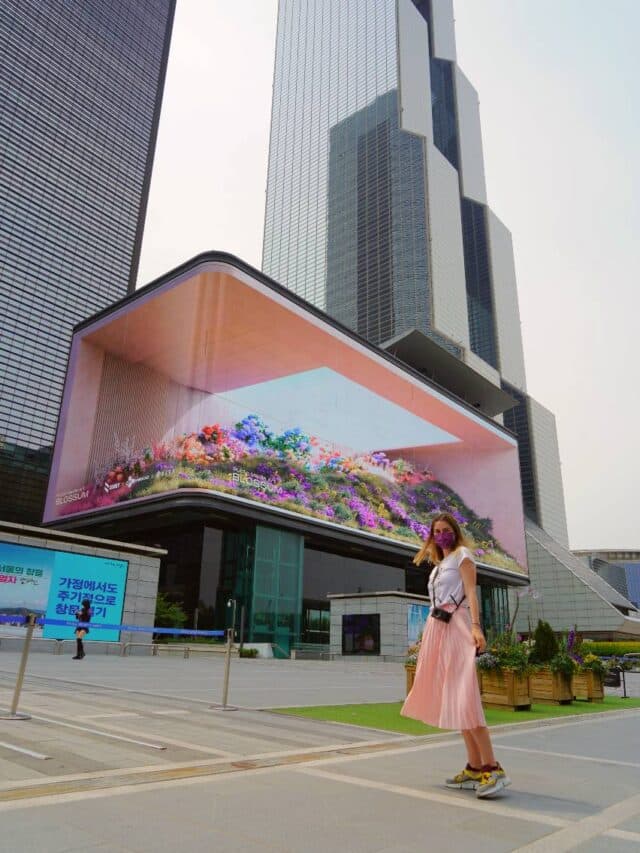
The district, made famous by the global hit song “ Gangnam Style ,” has become synonymous with luxury, fashion, and entertainment.
Its towering skyscrapers, glitzy shopping centers, and chic boutiques cater to a sophisticated clientele, offering a wide array of designer brands, trendy cafes, and gourmet restaurants.

You can explore Gangnam by having tea at Bongeunsa Temple, taking a picture with the famous COEX Mall Library, seeing the Samsung Display, shopping for luxury brands in Garosu-gil, or doing any one of these cool things to do in Gangnam .
You can also spend almost all day at the famous Lotte World – the most popular adventure park in South Korea.
As the day ends, climb Lotte Sky Tower , South Korea’s tallest building.
There are so many things you can fit into one day in Gangnam.
The options for day trips outside of Seoul are endless. However, visiting the DMZ should be on any new visitor’s list.
As one of the most heavily fortified borders in the world, the DMZ serves as a stark reminder of the ongoing conflict and the enduring hope for reunification.
Tours to the DMZ typically include stops at key landmarks such as the Joint Security Area (JSA), where visitors can observe soldiers from both sides standing face-to-face, and the Dora Observatory provides panoramic views of the border and glimpses into North Korea’s countryside.
Visitors also have the opportunity to explore the 3rd Infiltration Tunnel, dug by North Korea in an attempt to infiltrate the South, and the DMZ Exhibition Hall, which offers insightful exhibits on the area’s history and significance.
If that is not of interest to you, don’t worry! We have a comprehensive list covering many options for day trips outside of Seoul .
Incheon, The Garden of Morning Calm, Suwon, and Hwaseong Fortress are only a few of the amazing places you should see in South Korea that are also easily reached from Seoul.
I hope that our post was helpful and you are already planning your 7-day South Korea itinerary.
If you are about to embark on a 7-day South Korea itinerary, here are some travel resources you will find useful.
Book your SIM Card & T-Money Card and pick it up at the airport when you arrive.
Travel by train and get the best ticket price with a Korea Rail Pass .
To save some money, book your tours ahead of time on Klook , Viator , or GetYourGuide .
By Ingrid & Alex
Ingrid A former financial professional, I have been passionate about photography since an early age. My fascination with Korean culture was one of the reasons Alex accepted a business role in Seoul. Alex A former corporate business executive, I am a historical fiction writer. My business career allowed us to live in Seoul and explore South Korea for one year. We fell in love with the country, its culture, food, and people, and we strongly believe you will love it too! Because we know how difficult planning a trip can be, especially to South Korea, we are here to help you out and ensure you have an awesome time there.
- Pingback: 3 week Sri Lanka Itinerary: A Complete Guide
Leave a comment Cancel reply
Your email address will not be published. Required fields are marked *
Save my name, email, and website in this browser for the next time I comment.

A Very Efficient Korea Itinerary for 7 Days
Okay guys, I’ve done a few itinerary guides now, but I haven’t done the most classic one of them all — a Korea itinerary for 7 days or one week.
Just know, this isn’t my favorite length of time because it’s so fast. Minimum, I recommend spending 2 weeks in Korea and for the most complete trip, I recommend my one month itinerary . Of course, the absolute best length of time is teaching here for at least a year or more ;).
However, I’ve realized that a lot of people I know in real life usually schedule out exactly one week in Korea, and, of course, most people I know don’t get more than a week or two for vacation at a time. So, with that in mind, I thought I’d outline the perfect Korea itinerary for 7 days, including flying in and flying out! It’s a little hectic, and you won’t get to see everything, but you will get a nice taste of the country and see some of the big landmarks.
Quick Korea Travel Guide
- Getting in: Assuming you’re flying into Incheon, expect it to take around an hour to get to where you’re staying in Seoul. DON’T spend a ton of money on a taxi! The subway is very user-friendly and easy to use. If you do need a private transfer, just book ahead .
- Stay in Touch: Korea has the best thing ever – eSIMs! No need to worry about losing your physical SIM card anymore. Just buy here and you’ll be emailed a QR code which will set you up!
- Download New Apps: When it comes to Korea, the app game here is a little different than anywhere else I’ve been. At minimum download KakaoMap for navigation, Kakao T for taxis, and Papago for more accurate translations. Check here for my full app guide.
- Where to Book Activities: I always like checking Klook or Trazy for the best deals on anything related to tours and day trips in Korea.
- Getting Around: All major cities have some sort of subway system and there’s a pretty robust bus system all around the country even in more rural areas. Download KakaoMap for the most up to date information. In between cities, you can take the train or bus. For trains, I always use Let’s Korail to buy tickets ahead of time as they can sell out. For buses, I usually just show up to the terminal and buy tickets, but my friend told me you could use TxBus , Kobus , or Bustago to order online.
- Travel Insurance: Korea can be expensive if you wind up in the hospital! I recommend getting either World Nomads or SafetyWing . I personally have an annual plan with Allianz.
For more in-depth planning: Read these 50 South Korea travel tips as well as this trip planner guide for the random logistics!
Fly Into: Incheon International Airport
Your best bet is to get into Seoul early in the morning so you don’t lose a day just for travel. It’s probably going to be a struggle, but fight against the jet lag!
Incheon is the main international airport for Seoul and the rest of Korea. It’s honestly one of the best airports I’ve ever flown into or out of, and very tourist-friendly. They even have arrows on the ground to point you to the subway!
Transport: Get into the city via the subway or a shuttle bus. If you need to, book a private transfer ahead of time . Taxis are the most expensive option!

Day 1: Historic Seoul
Stay Overnight: Seoul. To be near the sightseeing stops, look around Insadong . Here are some quick options:
- SeoulStory Hanok $$ – Great option to try a hanok stay. Right between Gyeongbokgung and Changdeokgung.
- Four Seasons $$$ – Ultimate in luxury; right by Gwanghwamun Square.
- Grid Inn Hotel $ – Walking distance to Gwangjang Market and near Jongno-3ga Station, Exit 15. Great mid-range option; stayed here my last visit.
- Mini Hotel Insa $ – Super cute budget stay in Insadong.
Your first day in Seoul is going to be dedicated to everything historic! Much of the historic architecture you can find in the city, including its five grand palaces , are from the Joseon era. Spanning from 1392 to 1897, it was Korea’s last real royal dynasty and has played a huge part in establishing the country’s identity and modern culture.
Also, on a simpler note, it’s left some really beautiful buildings and landmarks.
Check-in & Eat Something
Drop your bags off at your hotel and then head to any restaurants nearby to grab something to eat and down a coffee. If you’re on the go, you can just pop into Paris Baguette, Tours Le Jours, or any of the Korean bakery chains to get a quick sandwich and coffee. No, it’s not the most delicious first meal, but it’ll do in a pinch. I honestly wouldn’t judge you if you just grabbed Starbucks – they reliably have milk alternatives and are still the only place I’ve found in Korea with good iced chai lattes.
Now… get reading for a lot of sightseeing in one go!
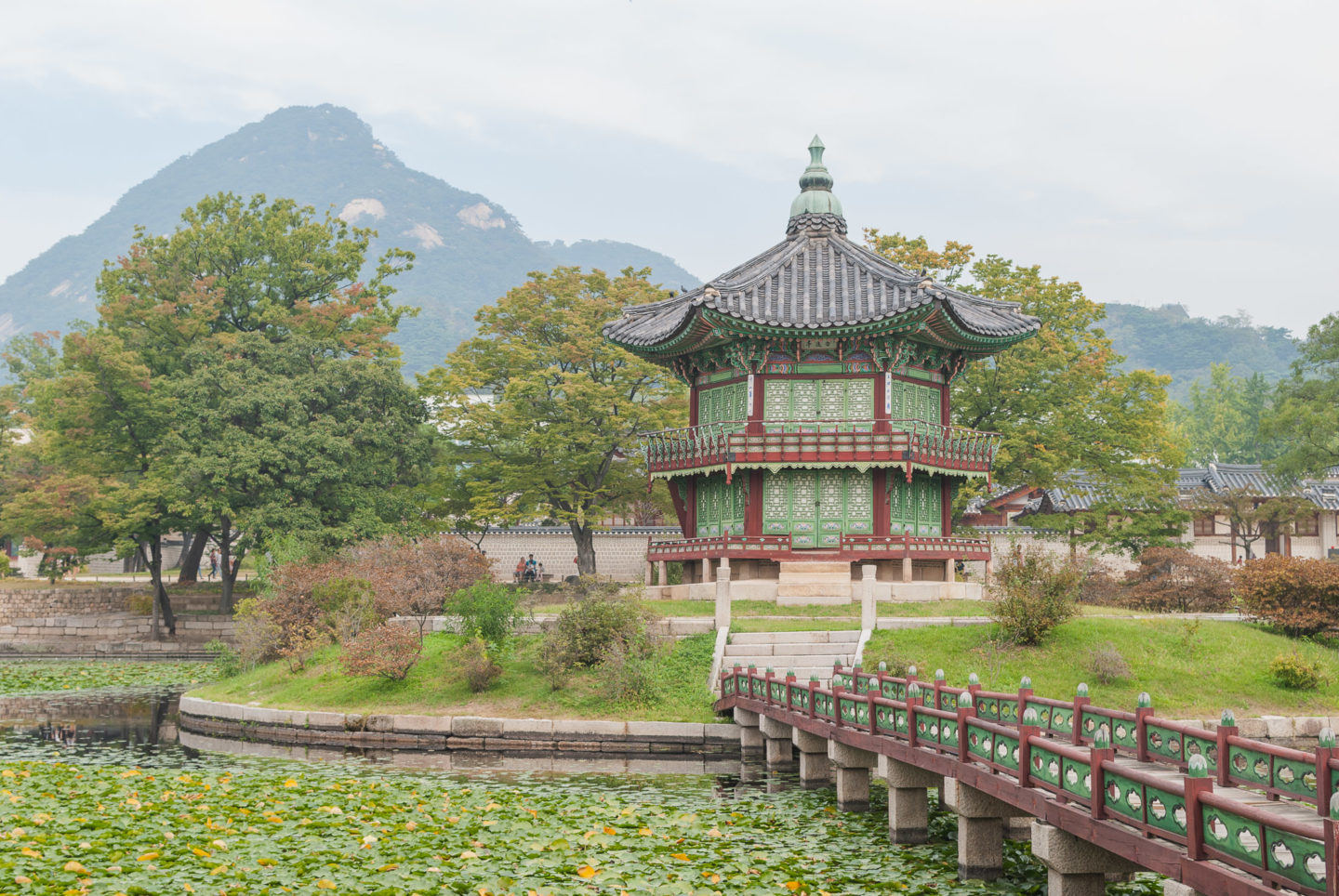
Stop 1: Gyeongbokgung
- Get There: Depending on where you’re staying you can either walk over or get a subway. The closest stops are Gyeongbokgung Station, Exit 5 or Gwanghwamun Station, Exit 2.
Gyeongbokgung opens at 9:00 AM year-round, so by the time you get into Seoul, drop your bags off, and eat something, it should be open. This is the main palace of Korea and also the largest. First built in 1395, it’s undergone a ton of renovation (thanks, Imperial Japan), and is just incredible.
Give yourself at least 2 hours – the palace grounds are huge. I’m pretty sure I spent 3 hours wandering around. If you also visit the National Palace Museum and National Folk Museum as well, it’ll be even longer. While you can do a tour ( this one starts at 9:00 am ), you can also pick up a map and do a self-guided tour as well.
I also recommend trying to time your visit with a changing of the guards at 10:00 AM; it’s a pretty cool sight to see.
Feeling extra? Rent a hanbok and do a whole photoshoot ! Don’t worry, if there’s one country where selfies and photoshoots are encouraged, it’s Korea. Before selfie was even a word , there was selca.
KEEP IN MIND: Gyeongbokgung is closed on Tuesdays. If your itinerary starts on a Tuesday, swap Day 6 and 1. (This will also mean Changdeokgung is open since it’s closed on Mondays, which would be your Day 7).

Stop 2: Bukchon Hanok Village
- Get There: On foot
From Gyeongbokgung, walk over to to Bukchon Hanok Village. This is an example of traditional housing in Korea and just a charming area to walk around. I love popping into the shops and boutiques and just doing a little people watching. Stop into Green Mile Coffee to grab a drink and check out the views from their roof.
Also if you see signs for the observatory, go and pay! It’s run cute ajumma who owns the house, and she was so sweet both times I went. Most people are cheap and only want to see the main pathway in Bukchon, so it’s never been overly crowded in the observatory, and on a clear day you’ll get a view straight to Namsan Tower like above.
Also – stop into the Granhand shop! It has the best essential oils and fragrances; I pick up the same scent each time.
Stop 3: Insadong for Lunch
- Get there: On foot
If you’re hungry, this is a good time to stop for lunch. Go over to Insadong to find a restaurant and try some Korean food . I haven’t eaten too much around here, but I do have Imun Seolnongtang on my list as it’s the oldest restaurant in Korea. For vegetarians, try Oh Sae Gyae Hyang .

Stop 4: Changdeokgung
Once you’re fueled up, time for palace #2! Now, I know what you’re thinking, “Really two palaces in a day?” But I promise, Changdeokgung is worth it. The palace grounds are cool but the real jewel is the palace’s “secret garden,” also called Huwon.
Here’s the kicker, though, you need a tour to see Huwon, aka the secret garden. If you want an English tour, aim for either 2:30 PM or 3:30 PM (available March – November) and book ahead or you run the risk of it selling out, especially around fall foliage season .
Check their website for all the info. It’s kind of complicated but not really. And give yourself time to get to Huwon’s entrance from the main gate.

Stop 5: Deoksugung from above
- Get There: From Changdeokgung, the easiest way is via bus. Get Bus 172 from the Changdeokgung,Seoul Donhwamun, Korean Traditional Music Hall Stop (창덕궁.서울돈화문국악당 정류장) and get off at Seosomun Stop (서소문 정류장)
By the time you finish, it should be close to golden hour. You’re going to see your 3rd palace but this time from a different angle! From Jeongdong Observatory, there’s a great aerial view of Deoksugung and Seoul City Hall. It’s really more of a cafe, and you’ll be joined by plenty of other observers, but it’s so worth it for the views, especially in autumn.

Stop 6: Dinner at Gwangjang Market (광장시장)
- Get There: Walk 6min to City Hall Station (시청역) and use Line 2. Get off at Euljiro-4ga Station (을지로4가). Then walk about 10 mins to the market entrance.
For your final stop of the day, get some dinner at Gwangjang Market . I finally visited on my last trip, and I actually really loved it! it’s bustling and fun but the food is actually quite good, and you’ll get to try a bunch of different dishes in one go.
If the name sounds familiar, it’s been featured on Netflix’s “Street Food” and the stands featured are still there with signs to let you know who they are.
Once you’re full, head back to your hotel, and collapse in exhaustion because this itinerary is not slowin’ down!

Day 2: Through Jeollabuk Province
Get breakfast and checkout fairly early, then head over to Seoul Station or Yongsan Station to get the KTX down south. I say KTX and not the other trains because it’s much faster, and at least for this stretch, it’s better to cut your travel time down by an hour.
If you leave from Seoul Station, aim to get the KTX that leaves at 9:46 am. If you leave from Yongsan, you can aim for 8:40 am, 9:55 am, or, at worst, 10:55 am. Check here for exact times , in case they change a bit. You can also book your tickets here too.

Stop 1: Jeonju
First stop is in Jeonju , the capital of the Jeollabuk province. The city was also the capital of the Hubaekje Kingdom (892-936) and the spiritual capital of the Joseon Dynasty (Korea’s most definitive era).
You’re now in foodie country because, in my not so humble opinion, Korean food is leaps and bounds better here than anywhere else! It’s the country’s main agricultural center, and I was thoroughly spoiled getting to live in first Jeollabuk and then Jeollanam for three years. It’s to the point that I really don’t like eating Korean food in Seoul because it’s not as good, and all my friends and students agree.
ANYWAY, the two big things you want here are eat bibimbap and explore Jeonju’s Hanok Village . Store your luggage at the train station and then grab a taxi to the Hanok Village, which is where you can grab a lunch of bibimbap. I personally liked the bibimbap at Jongno Hwegwan 종로회관 .
Walk off lunch by wandering around the village! It’s such a cute area, and I actually like it better than Bukchon because it’s more enclosed. The best view is if you climb up the small mountain nearby and look over the hanoks.

Stop 2: Namwon
You don’t have to do this if you’re exhausted, but I love Namwon , and it has the best food in the whole country (again, not so humble opinion), so I always recommend stopping here.
Grab a taxi back to Jeonju’s train station and then catch any of the trains down to Namwon. It’s fine to take the slower, cheaper trains now because the time difference isn’t that big!
You should get in around golden hour, so head over to Gwanghallu to see Namwon’s biggest attraction and learn about Chunhyangga , which is Korea’s Romeo + Juliet but much happier and more focused on the female lead, Chunhyang.
For dinner, you have a few options, and you really can’t go wrong with any of them:
- Go to 25시 (25-shi) for my favorite dish EVER — 뼈다귀탕 (bbyeo-da-gwi-tang). I honestly still think about how much I love this dish. If 25시 is too crowded, walk along that street as there are other restaurants that serve it too.
- Head across the river to get naengmyun at 봉가면옥 ( bong-ga-myeon-ok). It’s seriously the BEST naengmyun I’ve ever had, and I dream about that broth even now.
- If you didn’t get BBQ in Seoul, go across the river for all you can eat BBQ at 미가 (mi-ga).
If you stay overnight in Namwon, I know of a few options. The Kensington Hotel is the main one and they opened up a fancy hanok stay before I left, but I don’t know anyone who’s stayed there. Namwon also has a hanok stay area , and Mua Guesthouse is run by a lovely couple who’s friends with some of my friends.
Or you can push on and get the train to Suncheon. Again, any train is fine because they all take under an hour. If you stay the night in Suncheon, then stay in the same area as the train station or bus terminal.

Day 3: Boseong & Suncheon Bay
Exhausted yet? Haha I told you this was fast! Obviously, if you’re dying by now, take it easier, but if you’re still energized, today’s another double down day.
If you stayed overnight in Namwon, you can do two things:
- Get the train to Suncheon super early to drop your things off at your accommodation and then head to Boseong from Suncheon’s bus terminal.
- Go straight to Boseong by bus – first you’ll have to go to Gwangju bus terminal and then transfer from there
Both will take about 2 hours (Namwon – Suncheon – Boseong or Namwon – Gwangju – Boseong), but one of them means you’ll have your luggage with you.

Stop 1: Boseong Green Tea Fields
Time for Boseong’s famous green tea fields! They’re about an hour from Suncheon, and one of the most beautiful places in Korea. If you go at the right time, you can get the bus to the tea fields or just take a taxi.
You can read my guide on visiting here . It should take you a few hours to visit the area. Just a warning, if you wind up wanting to up to see the sea from the fields, it’s a steep hike! Get lunch at the restaurant right near the entrance and try the green tea pajeon!

Stop 2: Suncheon Bay
After lunch, head back to Suncheon. From the bus terminal, get a local bus over to Suncheon Bay . This is another small hike, just warning you! Ideally, you’ll get to the top right around golden hour, so you can enjoy the bay at its prettiest!
From there, head back to the area with your accommodation. There are a few places to eat in Suncheon, and the closest is a Korean-Chinese restaurant near the bus terminal.
If you want, though, venture over to Jorye-dong and find 순천양꼬치 (Suncheon Lamb Restaurant). It’s SO good. I used to live less than a 5-minute walk from it, and I was a bit addicted. Get the eggplant dish too. Most of the expats in Suncheon love this place, so they have a whole English menu with photos and are used to foreigners. For more on Suncheon, see my full guide
Stay Overnight
Stay the night in Suncheon .
Day 4: Busan

Get up early and head to the bus terminal to grab a bus over to Busan! The earliest one leaves around 7:00 am and takes around 3 hours to get to Busan Seobu Sasang Terminal . If you didn’t grab breakfast before you left, there are a ton of restaurants in this terminal, so you can always get something to eat here.
Now I recommend staying the night in Haeundae (hotel options below). This is on Line 2 and kind of all the way at the other end of the subway line. You could go over and drop your things off at your hotel, but if you want to maximize your time, do this instead:
Take the subway from Sasang Station to Seomyeon Station. You can leave your things in a locker there, and then you’ll want to switch over to Line 1.
While there’s a lot to do in Busan , I say head right over to Gamcheon Culture Village (Toseong Station, Line 1). It’s pictured above and one of my favorite places in all of Korea. The colorful houses and cute, artsy vibe make for a fun few hours of walking around. Plus it’s seaside, so when you get to the top, you’ll get a beautiful view out to the ocean.

Once you’ve seen Gamcheon, head back two stops over the subway (Nampo Station, Line 1) and walk around the markets and alleyways. Get lunch here! Ddeokbbeokki and pajeon are especially delicious if you’re getting elbowed by the shopping crowds haha. You could also go over to the famous Jalgachi Fish Market and eat there.
(Alternatively – you can do this tour which goes around Gamcheon and Jalgachi. They meet at Jalgachi Station which is right in between Toseong and Nampo. If you have time, you can still walk around Nampo’s alleys after)
For sunset, head back to Haeundae or go all the way over to the seaside temple. If you’re here in hot weather, enjoy the beach at Haeundae or Gwanghalli!
Stay the night in Haeundae Beach . There are quite a few options:
- Signiel Busan – luxury option (a little farther)
- Park Hyatt Busan – another popular luxury option in opposite direction
- Hound Garden & Terrace Hotel – nice room decor, close to beach
- MAMA Guesthouse – cute budget pick
Day 5: Gyeongju

Day trip from Busan! So, you could DIY this and go yourself, but everything was super spread out when I visited. It was way more spread out than we were ready for, and the local bus system wasn’t the most reliable. We essentially spent a ton of money renting a taxi for the day to drive us around. It’s been a few years, so maybe they updated the buses by now!
Gyeongju is such a cool city to visit because it has everything from the Silla Dynasty. Silla pre-dates the Joseon era (which is what you see represented all over Seoul and Jeonju) and lasted from 57 BC – 935 AD. Back then it was part of the Three Kingdoms of Korea with Goguryeo and Baekje. It’s kind of crazy how many landmarks you can still see today.
The most efficient way to visit Gyeongju is booking this day tour from Busan . It’ll pick you up from a few different places in Busan and take you to Daereungwon, Hwangridan-gil, Bulguksa, Gyochon Village, and Donggung before bringing you back.
Stay the night again in Haeundae . If you want, go out and experience the nightlife in the area! I’d offer suggestions but… I have none. I usually go to Busan for day trips and when I have stayed over, I only went out once to a random bar.
Day 6: Back to Seoul
Okay for today, I have two options and then two sub options if that makes ANY sense.

Option 1: Busan & Seoul
Experience one of the biggest jimjilbangs in Korea. Of all my jimjilbang experiences in Korea, SPA Land Centum City is by far the fanciest. ( Get discount tickets here ). Basically – you’ll split up by gender into various baths (prepared to get naked). Enjoy soaking in all sorts of tubs before showering off, donning your jimjilbang set (seen above) and enjoying the mixed gender area. Besides the common area and food options, this also has various rooms to decompress and get zen.
It’s only 3 stops from Haeundae at Centum City Station (Line 2), so you can leave your things at your hotel or bring them with and put them in lockers at Centum City.
Once you’ve fully relaxed, grab some lunch, and then head back to Seoul! The most efficient way to do this is to grab the KTX as it takes under 3 hours. You could also fly, which’ll take an hour, but the KTX is easier much easier. There are so many trains that go between Busan and Seoul, so you don’t really have to worry about getting a specific one. Again, check Korail for times.
In Seoul, you’ll want to check into Hongdae this time. This is because Hongdae Station is right on the airport line, so it’ll be easy to get to Incheon from here. Plus, Hongdae is a fun, trendy neighborhood since it has three big universities nearby. I wrote a post on my favorite Hongdae hotels , but here are a few I particularly love:
- RYSE – the ultimate chic hotel to stay in Hongdae – don’t miss the “secret” bar. I stayed here on my last visit and loved it.
- TwoTwo House – has that fun, hipster decor
- L7 Hongdae – nice, clean design with a pool!
By the time you get to Seoul, transfer over to Hongdae, and check in to your hotel, it’ll be close to dinner time. I would say get dinner and just walk around to experience Hongdae night life. It’s such a fun vibe – even if you’re over 30 like I am now and seeing all the college students out and about makes you feel ancient !
Off the top of my head, I don’t have any specific restaurants to recommend but you’re in a great spot for just about every type of dish under the sun. (I once went here for buffalo mac and cheese lol). Ask your hotel for recommendations based on what you’re craving!

Option 2A: Fun Things to See in Seoul
Another big thing to do is to head over to Namsan Tower and go up ( get ticket here for the observatory). It’s a cool area and you get a ton of views of Seoul from above.
Stop over in Dongdaemun if you want to do some shopping and see Dongdaemun Design Plaza . Eat lunch in this area.
Now, time for a little relaxing! If you didn’t go to Spaland in Busan, go to Siloam Sauna off Seoul Station. It’s so nice here.
Sightseeing Option 2B: A DMZ Tour
If seeing the DMZ is on the top of your list, then I’d suggest booking a day tour for that instead. They typically take the full day, so you won’t have room for much else! However, it’s a pretty interesting, ongoing part of history, and it’s the only way of “visiting” North Korea that I recommend for now.
Like before, grab dinner in Hongdae.

Day 7: Sightseeing & Souvenir Shopping
There are honestly so many ways to enjoy your last day in Seoul before heading to the airport. It really depends on how much time you have. At the very least I’d hit up one or two of Seoul’s trendiest cafes and checkout Olive Young (specifically in Hongdae) for an absolute mecca of smaller K-beauty brands!
And there you have it! The absolute PERFECT itinerary for 7 days in Korea. There are three big things I cut out — Jeju, any sort of real hiking, and Gangwon-do.
With Jeju, I feel you need a slower mindset to really enjoy it, so I don’t want to rush you through in a day or two, especially as it involves flying. With hiking , you’re going to basically be hiking a bit when you visit Boseong, Suncheon Bay, and Gamcheon. And, as for Gangwon-do, I don’t have a ton of experience in the area as it was so far from where I lived, so the main things I know to do involve hiking.
Of course, depending on the seasons, you can always mix and match your trip. After all, this whole itinerary is going to look different if you’re chasing cherry blossoms or fall foliage! Check these seasonal guides if you want to change it up:
- Autumn in Korea
- Winter in Korea
- Spring in Korea (and cherry blossom guide )
- Summer in Korea
Want to stay longer? Check out my two week itinerary (with four different options) or my ultimate one month itinerary .
FAQ for this Korea Itinerary
You can never spend too many days! Seriously, I lived here for three years and visit frequently, and my bucket list is never ending. Seriously, though, I’d say at least a week to get an introduction. If you can do two weeks, that’d be great and if you can do a month, you can fit a lot of the country in.
Frankly, no! But as you can see above, I tried to fit a lot in so you could get a taste of its two major cities as well as one of its prettiest provinces.
I mean, I have a ton of posts that explain just this. But I would start with these questions: – Why do I want to visit Korea? – What are the main things I want to do? – How much is my budget? – How much time do I have? And then you can start planning from there. Check my main Korea travel guide for all my posts in one place.
And there you have it! Anything you’d want to add to this Korea itinerary for 7 days?
SHARE THIS ON PINTEREST

want to support?
I’m always grateful when friends and readereach out wanting to support There She Goes Again . Truthfully, I’m just happy my posts are helping people travel! If you’d like to support the blog, here are some companies and brands I’m affiliated with. Simply click the links, and I receive a small commission at no extra cost to you!
- Booking (Hotels)
- Sixt (Car Rental)
- Klook (Tours)
- Viator (Tours)
- Get Your Guide (Tours)
- Trazy (Korea Tours)
- Tiqets (Entrance Tickets)
BLOGGING / SOCIAL MEDIA
- WPX Hosting (Advanced)
- Bluehost (Beginners)
- Lezé the Label (Clothing)
- Printfresh (Pajamas, etc)
- Promptly Journals
- Encircled (Clothing)
- Girlfriend Collective (Athleisure)
- Birkenstock (Sandals)
- Bookshop (For Local)
- Amazon Books
Thank you for this! Such a nice read :)
Thank for reading and commenting!
Thank you for sharing this itinerary. Very helpful.
Very much excited to visit after looking these scenarios.
I’m glad! Hope you enjoy!
Leave a Reply Cancel reply
Your email address will not be published. Required fields are marked *
This site uses Akismet to reduce spam. Learn how your comment data is processed .

Seoul Itinerary: The Perfect 7 Day Guide for a Fun Trip
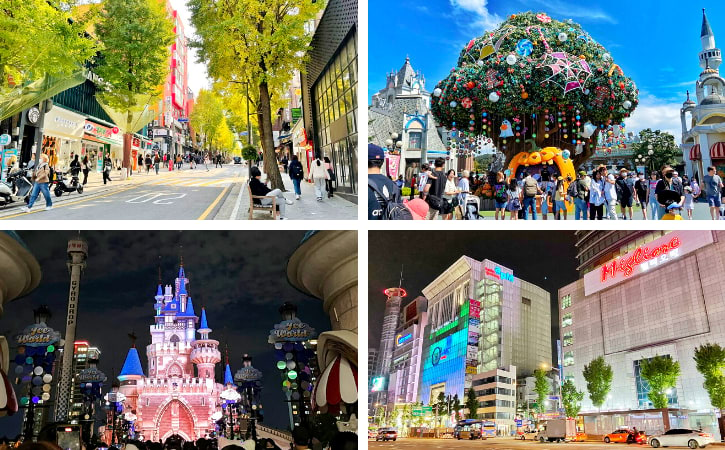
Here’s the latest Seoul itinerary and Korea travel guide to help you plan a fantastic 7-day trip at a relaxed pace .
I’ll share with you the top shopping streets and must-visit places in Seoul , including the best routes for a smooth tour around the city.
Believe me, the detailed 7-day itinerary for Seoul that I’ve outlined below will not only simplify your planning process but also ensure a wonderful trip .
Plus, you’ll get very clear, step-by-step guidance to the city’s top attractions , which will save you time on research . Let’s dive in! 🙂
Seoul’s Best Itinerary: Your Guide to an Unforgettable Trip in Korea’s Capital!
Day 1: myeongdong and namsan seoul tower, day 2: gyeongbokgung palace, ewha and hongdae street, day 3: everland or lotte world seoul, day 4: day trip to nami island – full day, day 5: explore beyond seoul – full day, day 6: bukchon hanok village, insadong, and dongdaemun, day 7: deoksugung seoul, gwangjang market and cheonggyecheon stream, seoul itinerary 7 days map, the best area to stay in seoul, internet access, how to get around seoul, more days to spend in korea, airport transfers, related posts.

A quick overview of the Seoul itinerary for day 1:
- 11:00 AM: Myeongdong Cathedral
- 12:00 PM: Lunch at Wangbijib or Isaac Toast
- 1:00 PM: Namsan Seoul Tower
- 4:30 PM: Myeongdong Shopping Street
- 7:00 PM: Dinner at BHC Chicken or Jogabi Seafood
- 8:00 PM: Watch the Exciting Nanta Show
1. Myeongdong Cathedral – 1 hour (11:00 AM to 12:00 PM)
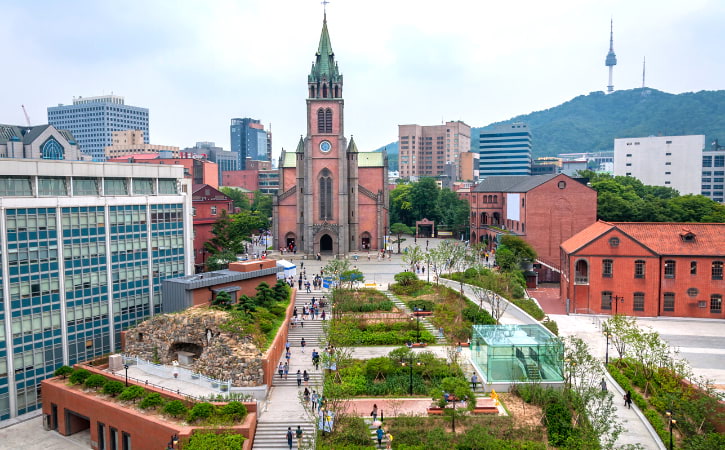
Kick off your morning in Seoul with a visit to Myeongdong Cathedral , a place that holds special significance for Korean Catholics .
This unique church was built back in the 1700s . It stands out because it’s made of bricks, unlike most churches that are built with stone.
When you go inside, take in the calm feeling. Look at the colorful windows and the tall ceilings, which are all part of the beautiful brick design .
Enjoy the peacefulness and feel the history that surrounds you.
2. Lunch at Wangbijib or Isaac Toast – 1 hour (12:00 PM to 1:00 PM)
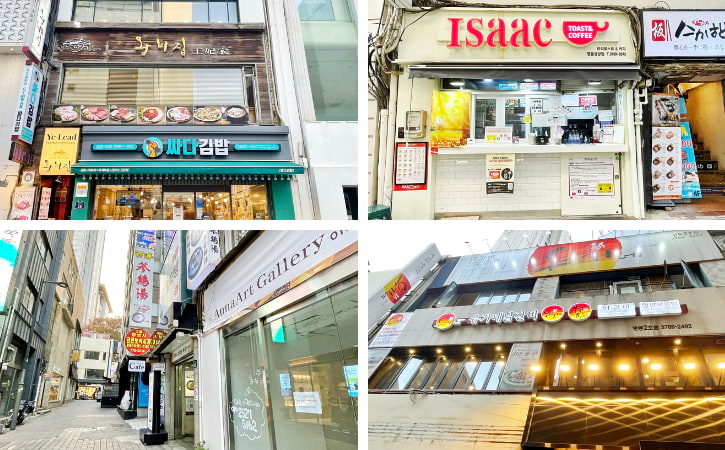
Enjoy Delicious Lunch Options Near Myeongdong Cathedral
- Wangbijib: For a traditional Korean barbecue, visit this spot and savor a platter of tender meat. They also serve soup, noodles, and side dishes to satisfy your hungry appetite.
- Isaac Toast & Coffee: For sandwich lovers, this is the best site in the area. Try their variety of local sandwiches, from bacon to spicy pork cutlets and more. And, pair your meal with a cup of coffee!
- Baekje Samgyetang: Enjoy a bowl of chicken ginseng soup inside this famous restaurant. The authentic and delectable taste of their food makes them very popular in the city.
- Yoogane: When it comes to spicy stir-fried chicken, you won’t go wrong with this local dining area. Don’t forget to order additional fried rice so you can personally combine the rice and chicken according to your liking.

3. Namsan Seoul Tower – 3.5 hours (1:00 PM to 4:30 PM)
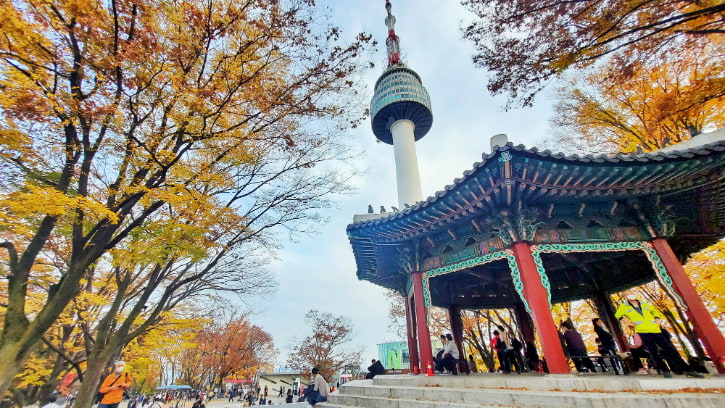
In the afternoon, head to Seoul’s iconic Namsan Tower to enjoy panoramic views with your family and friends .
Find out the full details in this complete guide to Namsan Seoul Tower so you can plot your schedule ahead. This also provides you with information on how to get to the tower and the top things to do there.
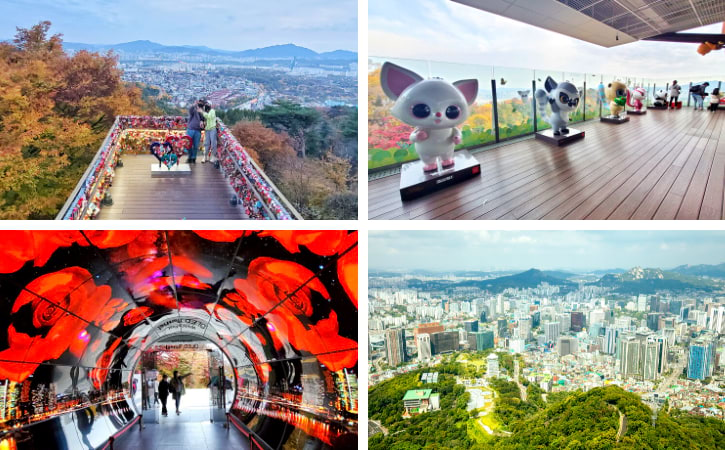
Must-visit Spots in Namsan Tower:
- Proposal Staircase: Trek your way to the scenic stairway and marvel at the gorgeous nature views. This is where you’ll find a railing full of locks that commemorate the love and affection of lovers all over the world.
- Yoohoo Land & Linlin Land: Meet some adorable animal statues and enjoy their charming presence. From lemurs to fennec foxes, these oversized characters are actually some of the world’s endangered animals.
- Bridge of Love: Another romantic area for lovers is this unique bridge filled with LED lights. Share some dreamy moments with your loved one as you relish the views.
- OLED Displays: Find more breathtaking panels scattered around different floor levels. These mesmerizing displays are surely worth the capture.
- Observation Decks: Relax at one of the comfy chairs from the observation deck. This is definitely a mesmerizing way to see the beautiful skyline of Seoul from the floor-to-ceiling windows. And, don’t forget to get the entrance tickets here and obtain up to 55% OFF!

4. Myeongdong Shopping Street – 2.5 hours (4:30 PM to 7:00 PM)
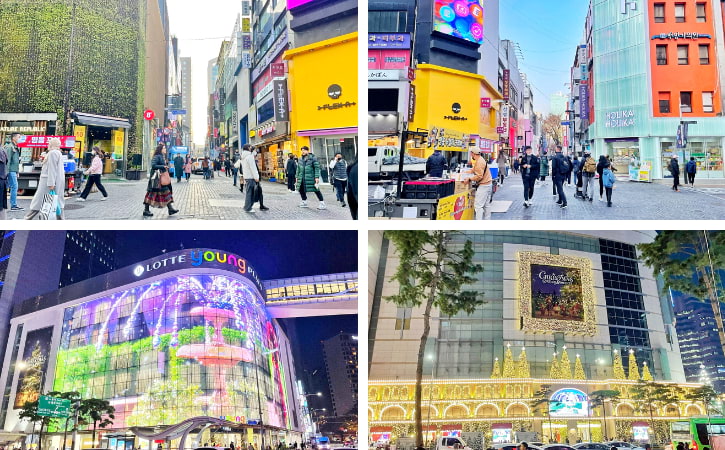
Cap off your first day trip in Seoul by wandering Myeongdong Shopping Street . This is a very famous shopping street not only in Seoul but also in Korea .
Thus, you should explore this vibrant street and have fun until the evening.
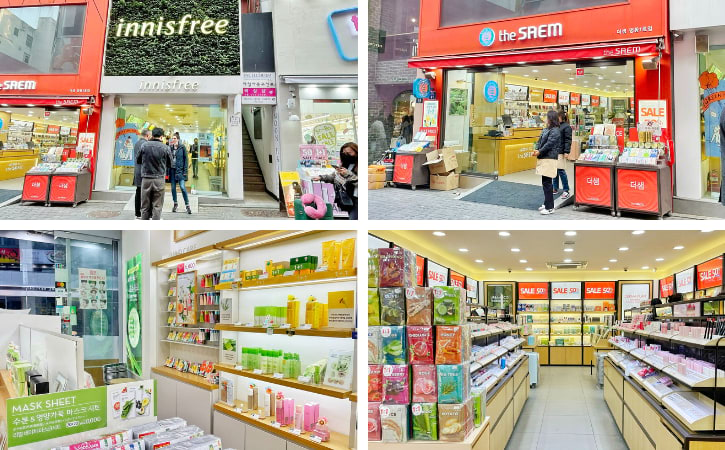
Packed with popular Korean cosmetic brands , this is the best destination for your skincare needs.
Check out a variety of brands like Innisfree , It’s skin , Holika Holika , Missha , Etude House , and Nature Republic .
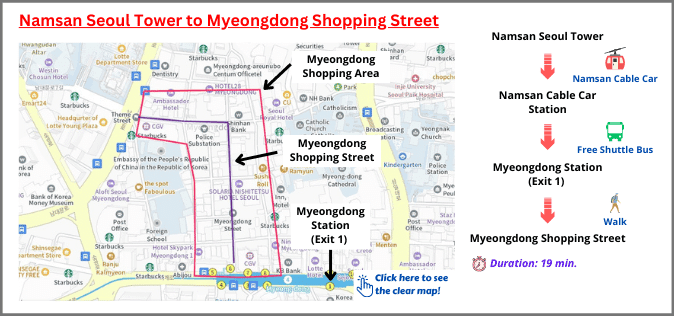
5. Dinner at BHC Chicken or Jogabi Seafood – 1 hour (7:00 PM to 8:00 PM)
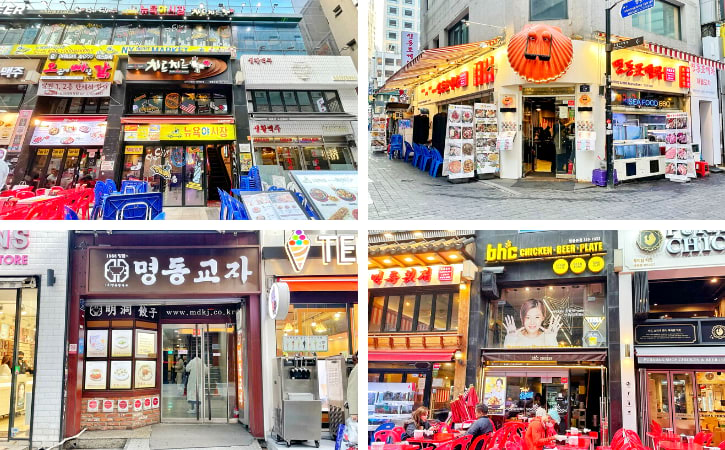
Dive into Dinner at Myeongdong’s Top Restaurants
- Chir Chir Fusion Chicken Factory: Savor a platter of chicken goodness with your pals. This restaurant is truly a top-notch choice when it to comes tasty chicken meals.
- Jogabi Seafood Restaurant: If you are on the hunt for some seafood dishes, this is the place to be. Go over their menu of seafood dishes, from ramen to fried rice and steamed meals.
- Myeongdong Kyoja: Reenergize your senses as you devour an entire bowl of dumpling soup. As a Michelin-recognized restaurant in the city, they provide an excellent menu focused on dumplings and noodles.
- BHC Chicken: Take delight in their collection of fried chicken that would surely make you happy. Plus, they have more food options like cheesy balls, mozzarella sticks, and lots of garnishes.

6. Watch the Exciting Nanta Show – 1.5 hours (8:00 PM to 9:30 PM)
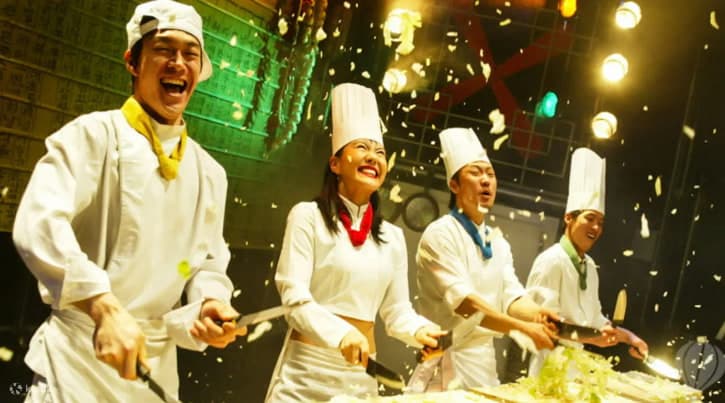
Lastly, make your way to Nanta Show . This is the best way to cap off your visit to Myeongdong .
Share laughter with the audience as the actors do all sorts of amazing acts, from amusing antics to mesmerizing tricks.
So, go check the Nanta Show admission tickets ahead and get up to a 35% discount !

Seoul itinerary for day 2 will involve visiting the following places:
- 9:00 AM: Gyeongbokgung Palace
- 12:00 PM: Lunch at Tosokchon Samgyetang or Sambaek Jip
- 1:00 PM: Ewha Street
- 3:30 PM: Ewha Womans University
- 5:00 PM: Hongdae Street
- 8:00 PM: Dine at Hongdae Dakgalbi or Saemaul

1. Gyeongbokgung Palace – 3 hours (9:00 AM to 12:00 PM)
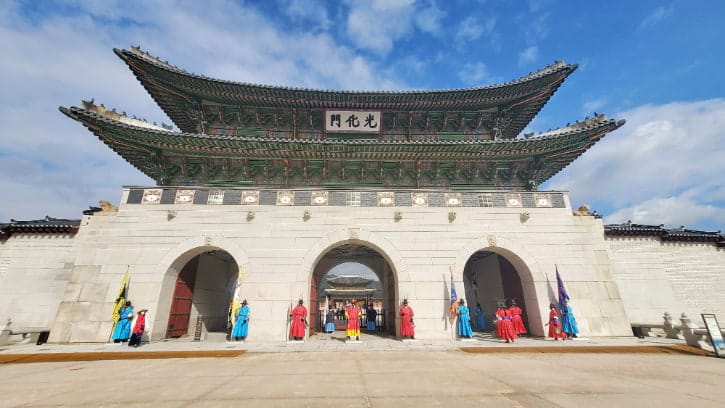
When you visit Seoul, make sure to go to Gyeongbokgung Palace . It’s a famous palace that’s full of history.
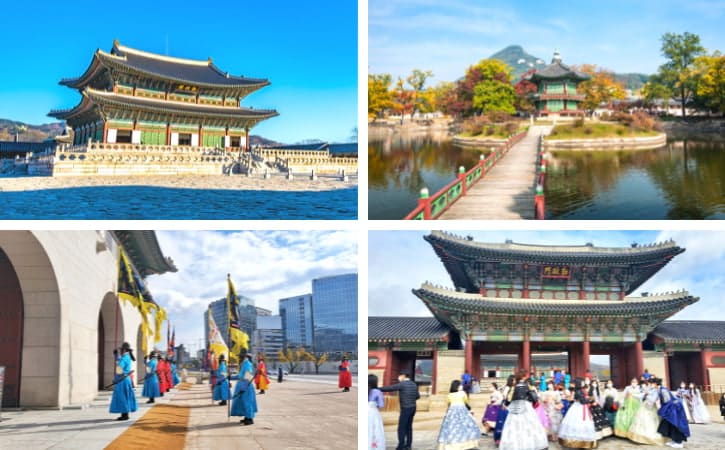
Must Do and See Things in Gyeongbokgung:
- Geunjeongjeon Hall: Enter the main hall and pay homage to this historical site. Created during the Joseon dynasty, this area is decorated with ornaments and stone platforms.
- Hyangwonjeong Pavilion: Explore the surroundings of the pavilion where you’ll find a beautiful pond. There’s also a garden that is very pleasing to the eye.
- Gyeonghoeru Pavilion: As the largest elevated pavilion in Korea, this is truly remarkable. Take a closer look at the impressive architecture that is bounded by sculptures and ornaments.
- Changing of the Guard: This traditional rite is one of the highlights of the complex. Catch the historic event that starts at 10:00 AM.
- Wear Hanbok: I truly recommend to check out this shop if you want to feel what it’s like to wear a hanbok. In this store, you can rent cheap traditional costumes. Plus, the staff provides superb service.
2. Lunch at Tosokchon Samgyetang or Sambaek Jip – 1 hour (12:00 PM to 1:00 PM)
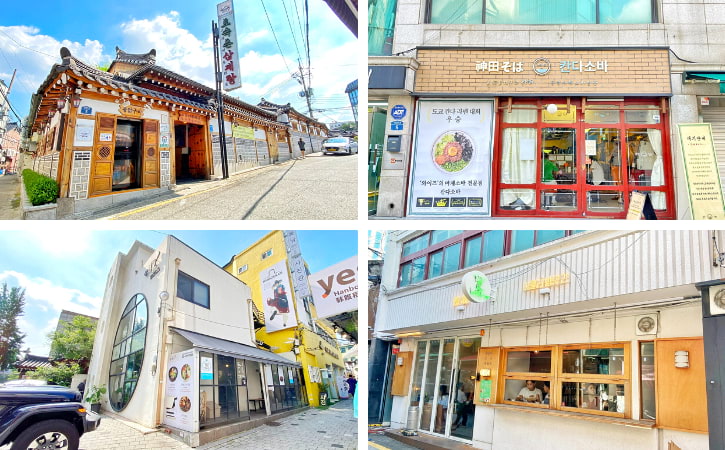
Discover Delectable Lunch Spots Near Gyeongbokgung
- Tosokchon Samgyetang: Get some tasty and nutritious food from this local store. Serving healthy ginseng soup and dishes, this is highly recommended for a hearty lunch.
- Kandasoba: For some yummy soba noodles, drop by the restaurant and check out their Japanese menu. Don’t miss to order a bowl of rice to complement the delectable soup!
- Sambaek Jip: From bibimbap to teppanyaki pork, they got a variety of Korean cuisines for you to try. They also serve food sets that come with local side dishes. And, order their bean sprout soup, which is a crowd favorite!
- Beezza: Grab a bite of their mouthwatering pizza and slurp a glass of beer! This pizza shop is such a cozy and affordable dining spot that you wouldn’t want to miss out.

3. Ewha Street – 2.5 hours (1:00 PM to 3:30 PM)
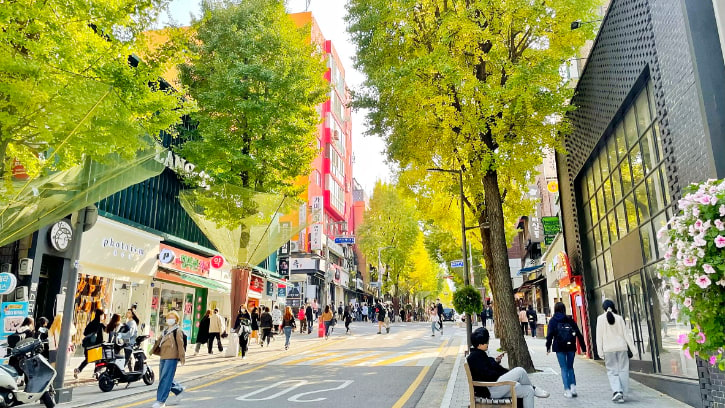
After lunch, spend your afternoon at Ewha Shopping Street with your loved ones.
As one of the vibrant streets in Seoul , for sure you’ll never run out of things to explore here.
Shop for some trendy pieces along this busy street. There are lots of local shops that sell stylish clothing and accessories .
So, grab this opportunity and elevate your wardrobe with new stuff.

4. Ewha Womans University – 1.5 hours (3:30 PM to 5:00 PM)

Next, visit Ewha Womans University . Stroll around the campus complex and explore various historical sites.
Below is a list of activities and attractions you can enjoy during your visit.
- Ewha Campus Complex: As you enter the campus, you’d be caught off-guard by the gorgeous beauty of the underpass. Strike a pose in front of the architectural wonder before you kick off the exploration.
- Welch-Ryang Auditorium: A great spot to take pictures of Ewha University’s beauty, with the changing seasons as a backdrop.
- University’s Garden: You’d be surprised how this beautiful garden perfectly fits into the campus expanse. Go around the scenic trails and get mesmerized by the well-maintained bushes.
- Pfeiffer Hall: Considered the first-ever building on the campus, the hall is brimming with history. Walk into its pathways and take a glimpse of the noteworthy architecture.

5. Hongdae Street – 3 hours (5:00 PM to 8:00 PM)
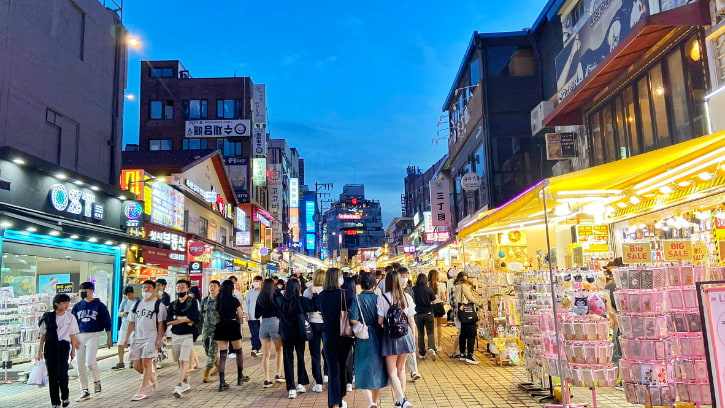
As evening falls in Seoul, head over to the lively Hongdae Shopping Street , where international travelers love to go . You’ll find stalls filled with all kinds of interesting things .
This neighborhood is definitely a fun destination to visit, especially at night.
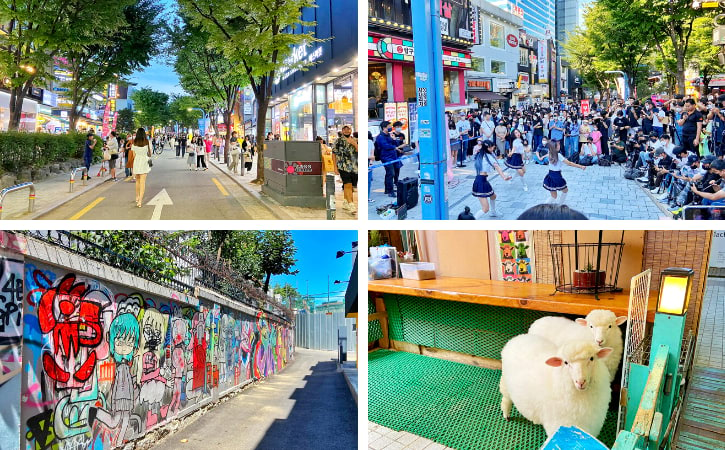
For guidance, below are some of the activities you can do while strolling around the Hongdae street .
- Shopping: Shop ‘til you drop by the hundreds of local stalls in the area. They sell many fashion pieces, accessories, and souvenirs. So, take your time and check out their impressive displays.
- Street Performances: While exploring the street, you might come across some local acts. Watch them showcase their talents, from singing to dancing and more!
- Mural Street: Walk by this famous street and marvel at the colorful art along the walls. You may use the mesmerizing murals as your photo background.
- Try Some Street Foods: All the shopping and walking would definitely make you hungry. But don’t worry because there are plenty of street food stalls scattered around.
- Thanks Nature Cafe: Relax and sip a cup of coffee from this unique café. Unlike typical shops, there are two sheep inside the store to welcome you.

6. Dine at Hongdae Dakgalbi or Saemaul – 1 hour (8:00 PM to 9:00 PM)
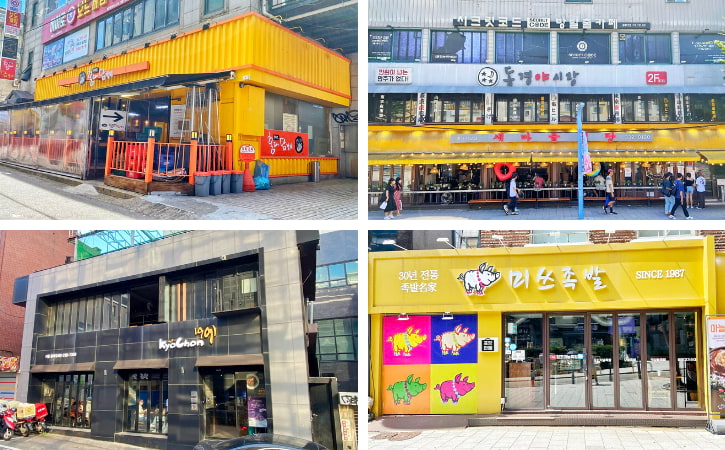
Experience Vibrant Dinner Options in Hongdae
- Saemaul Restaurant: Try the famous Korean BBQ in the neighborhood. This restaurant also serves kimchi stew, cold noodles, and other local dishes.
- Myth Jokbal: Known for its pig trotters, this is another classic favorite among locals and travellers. Fascinatingly, they offer a complimentary soup for every table!
- Kyochon Chicken: Satisfy your chicken cravings by dropping by this local food store. From crispy fried chicken to flavored ones, there’s something that would surely catch your attention.
- Hongdae Dakgalbi: For an authentic dak-galbi in Hongdae, head to this place. You have the option to add cheese to your dak-galbi platter. They also provide different levels of spiciness to make your dining experience more remarkable.

For day 3 , you would be spending it either at Everland or Lotte World Seoul .
And for a seamless trip, I created a very detailed comparison between these two parks to help with your decision-making .
Option 1: Everland
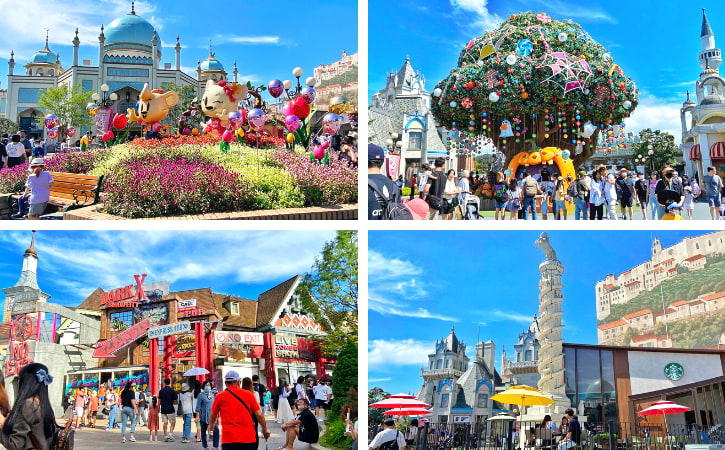
A visit to Everland theme park is a must for all travellers to Seoul, especially those with kids.
As the largest theme park in South Korea , it is filled with exciting roller coasters and fantastic shows . You’d also love the thrilling and non-thrilling games that are suitable for all ages.
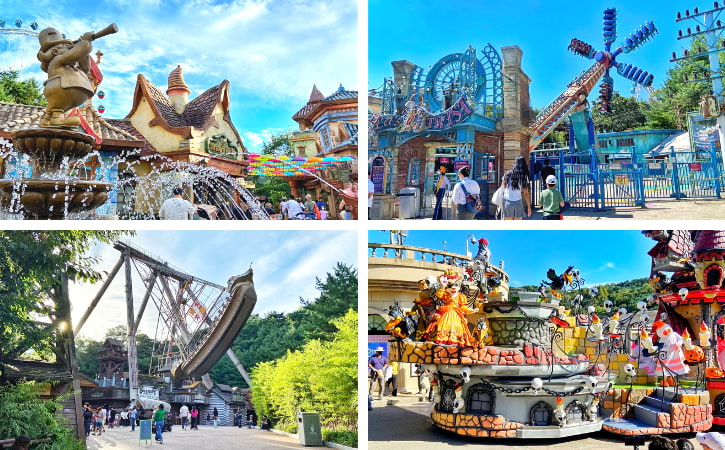
My family personally likes the park because of its beautiful sights and colourful landscapes. Not only that but there are also lush gardens, giving you plenty of photo opportunities .
So, don’t miss out on the attractions below when you visit this amazing theme park .
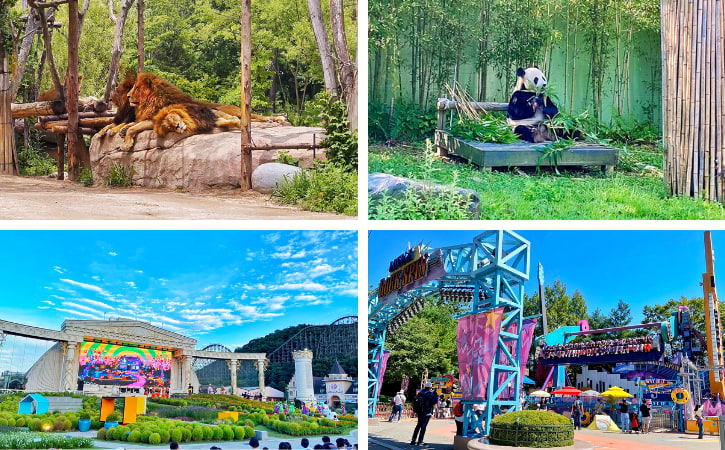
- Safari World: Get on the wild tram and have a fun outdoor trip with the wild animals. This offers you a closer look at the top predators of the animal food chain. Meet some white tigers, lions, bears, and more!
- Panda World: See the ever-adorable pandas in this special place. This is the sanctuary of the gentle giants who love to feed on bamboo.
- Lost Valley: Experience the thrill as you ride this convertible amphibian vehicle. It moves from water to land, allowing you to see at least 150 unique animal species. These include camels, elephants, and zebras. You can also feed giraffes during your visit.
- Four Seasons Garden: Get dazzled by the long stretches of beautiful landscapes. The place is filled with manicured shrubs and flowers. This is a nice spot to relax and enjoy the gorgeous views.
- Double Rock Spin: This is definitely the most in-demand ride in the park, especially for thrill-seekers. Hop aboard the rollercoaster that gives you a full 360-degree spin.
Tip: Remember to check out Everland tickets here , which can help you save around 44% compared to purchasing the tickets on-site !
Seamless Travels: Your Go-To Guide for Reaching Everland
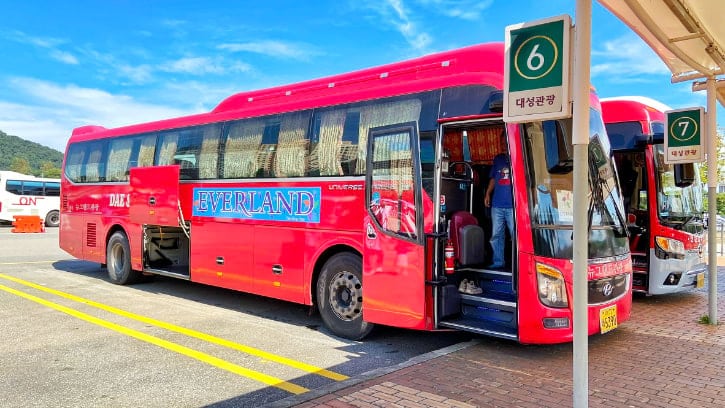
Reserve this shuttle bus online for a convenient trip to Everland . Compared to taking the public bus and subway, this transportation is recommended in terms of saving time . The pick-up locations are at Myeongdong Station and Hongdae Station .
Everland Dining Delights: From Lunch to Dinner
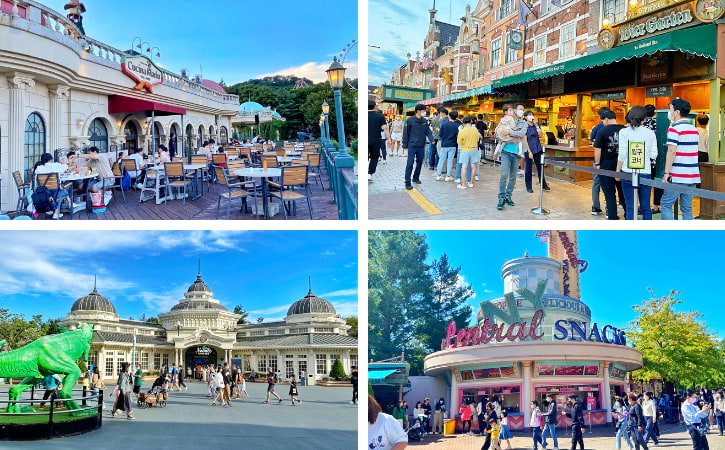
You won’t have a hard time with the food choices in the park. It’s because there are many restaurants in Everland that cater to different tastebuds. So, you can conveniently take your lunch and dinner here.
Option 2: Lotte World
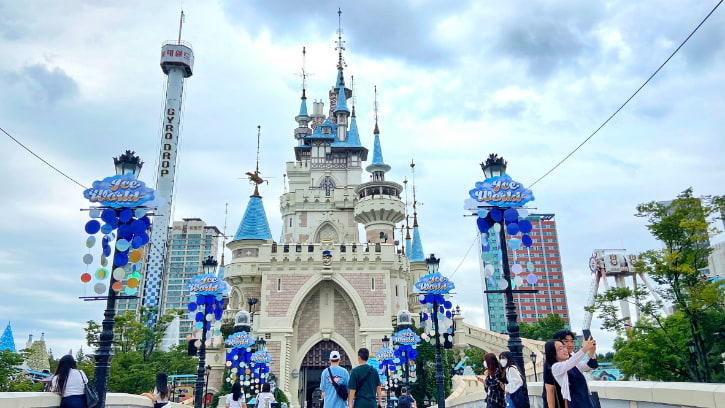
Spend time in Lotte World Seoul , which is the world’s biggest indoor amusement park .
Known for their iconic Disney-like castle, it continues to fascinate visitors of all ages.
And of course, you’d love the variety of outdoor and indoor roller coasters as well as fun shows here .
So, below are some of the spots you shouldn’t miss when you go to Lotte World .
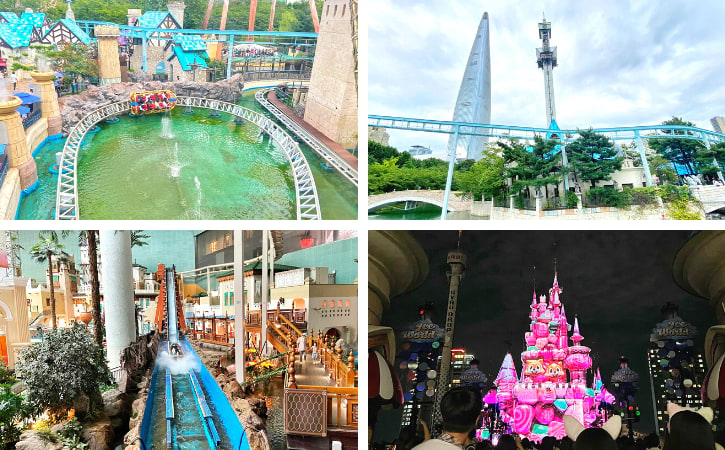
- Atlantis: Ready yourself for this fast-paced ride that goes through a cave-like landscape. While onboard, catch a glimpse of the park’s landscape.
- Bungee Drop: Experience getting propelled up and down with this fun attraction. You will definitely feel the rush as you elevate 34 meters from the ground. Of course, the thrill does not end there as the structure takes a quick dip.
- Flume Ride: Be impressed by this water ride that is set in the Jurassic era. During the journey, be prepared for some water splashes.
- Magic Castle Lights Up: Cap off the adventure by watching this fantastic light show. Filled with elegant and colorful LED lights, this is truly a memorable experience for everyone.
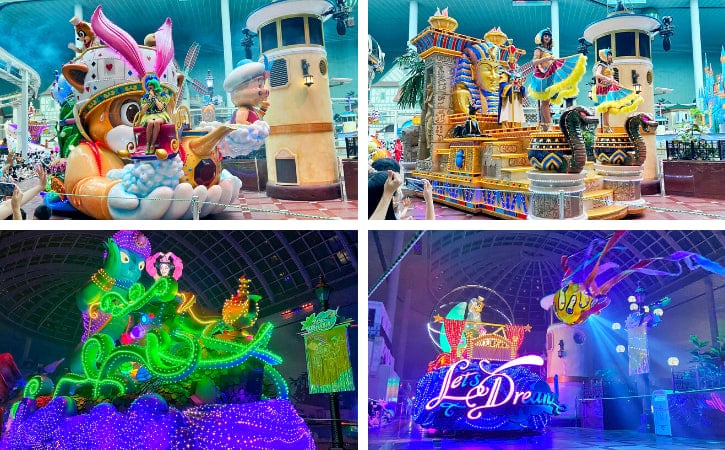
Tip : Before I forget, make sure to book Lotte World tickets here . Purchasing your ticket online gives you an additional 40% OFF on your entrance ticket ! So, make use of this chance and get great savings!
Getting There
You may take the subway to Jamsil Station, either by line 2 or line 8. From there, go out of Exit 4, which will then give you direct access to the Lotte World.
Lunch and Dinner
You can take your lunch and dinner in the theme park. There are plenty of restaurants inside to satisfy your hunger. These include Korean, Western, Chinese, and other dining options.
Everland vs. Lotte World
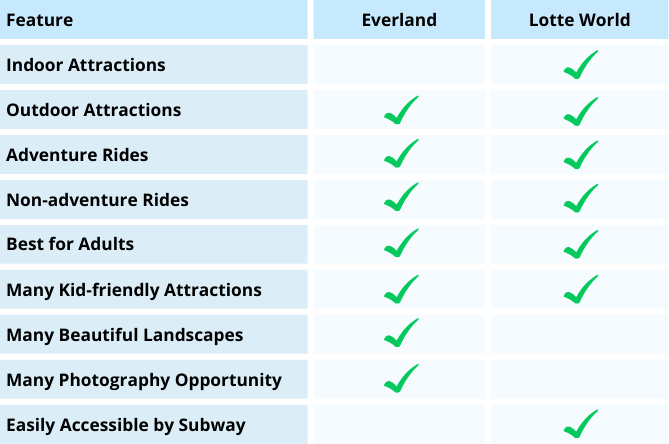
- Everland is an outdoor theme park while Lotte World Seoul offers both indoor and outdoor parks .
- Both theme parks are very attractive, providing fun rides for visitors. If you have more time in Seoul, it’s best that you include the two parks in your itinerary.
- Everland is quite known for its breathtaking surroundings with very beautiful landscapes. Plus, it has unique attractions like Safari World, Lost Valley, and Panda World. I believe kids will love this place.
- Lotte World Seoul, on the other hand, is more accessible by subway compared to Everland .
- But don’t worry as you can book a roundtrip shuttle to Everland here . The assembly locations are found at Myeongdong and Hongdae , which are pretty convenient for travellers.
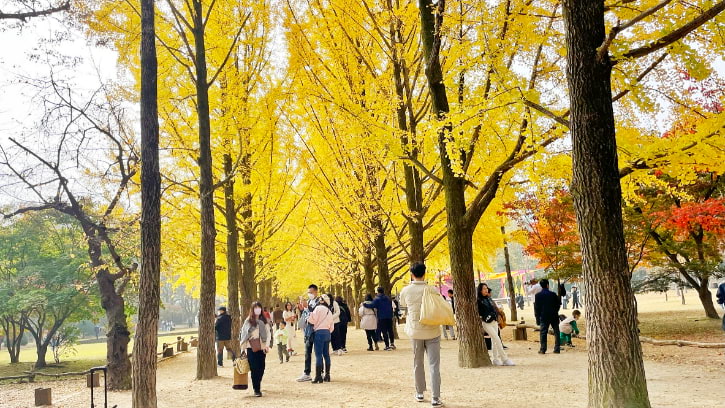
To make a perfect Seoul itinerary, Nami Island should be included in the list. This top-rated attraction in Korea is visited by thousands of people around the world.
Marvel at the gorgeous sceneries that are very relaxing . Without a doubt, it’s a perfect place to capture beautiful photos .
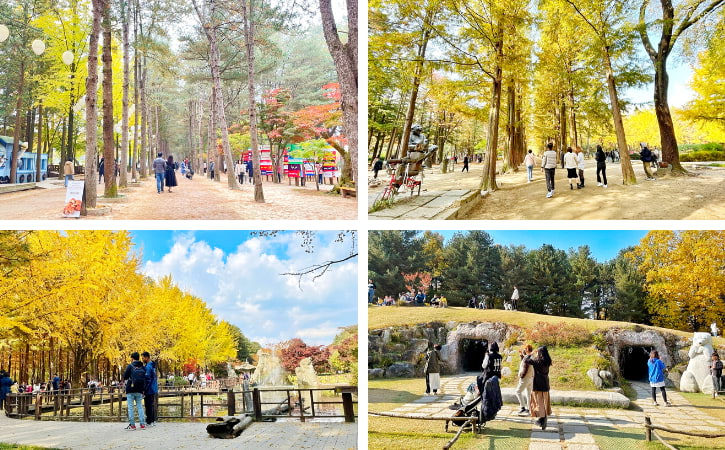
The spectacular tree lanes are one of the highlights of the area . Stroll around the colourful garden and meet some cute animals.
Another remarkable feature here is that you can explore it in whatever season you want .
For more suggestions of what to do there, just check out my best things to do in Nami Island page. This will guide you with the preparations as well as planning your budget in advance.
Make sure to visit this amazing island. You’ll have a great time and won’t regret it.
Exploring Nami Island and Surrounding Sights
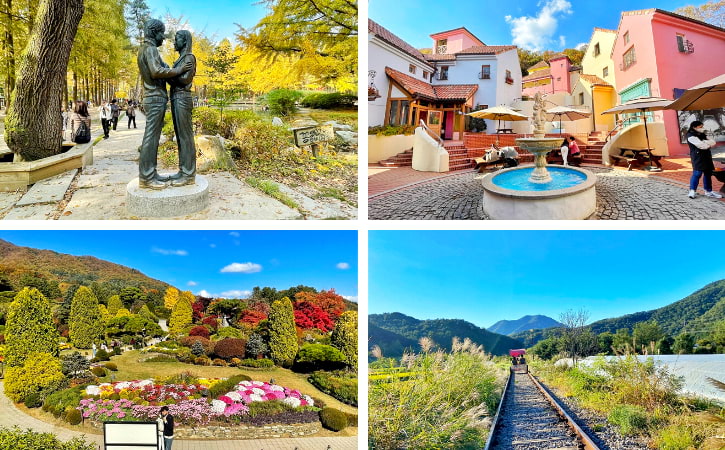
Did you know that besides going to Nami Island , you can explore nearby attractions like Petite France, Garden of Morning Calm, and Gangchon Rail Park? These spots are great to visit.
However, using public transport to see them all in one day can be very tough and take a lot of time .
So, it’s best to book either bus tour 1 or bus tour 2 , which will take you to all these places in one day . Just remember to book your seats ahead of time .
You can easily get on these buses either from Myeongdong or Hongdae , making it less stressful.
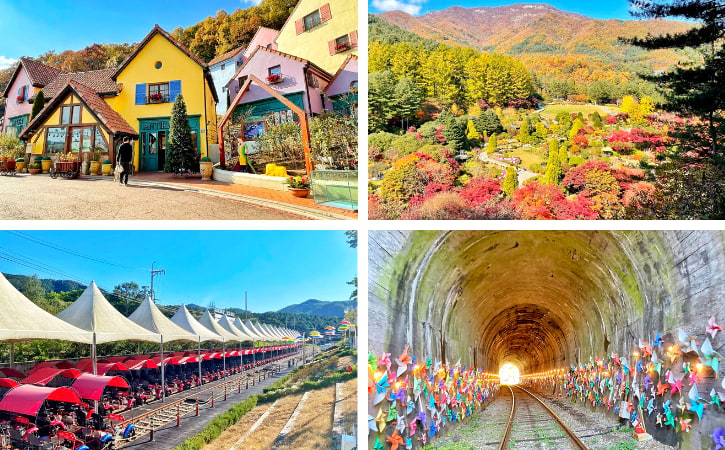
For more information about these famous sites, you can see my Nami Island post . These will cover Nami Island, Petite France, Garden of Morning Calm, and Gangchon Rail Park.
Allocate your day 5 by spending it outside of Seoul. There are 4 options for you to choose from , and each has its own set of unique features to help you decide.
1. Alpaca World
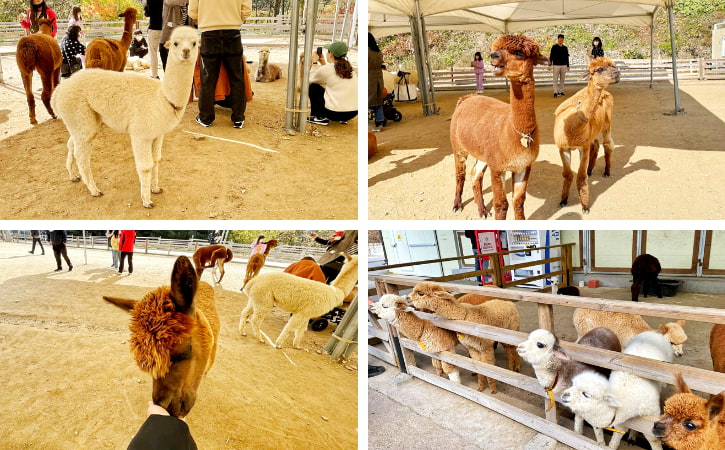
Head to Alpaca World and meet some adorable mammals . Getting to the farm, however, may be a challenge. It’s because the area is not easily accessible by public transport .
Thus, I highly recommend that you book this best shuttle bus for a more convenient trip . This will bring you directly to visit the Alpaca World , either from Myeongdong or Hongdae.
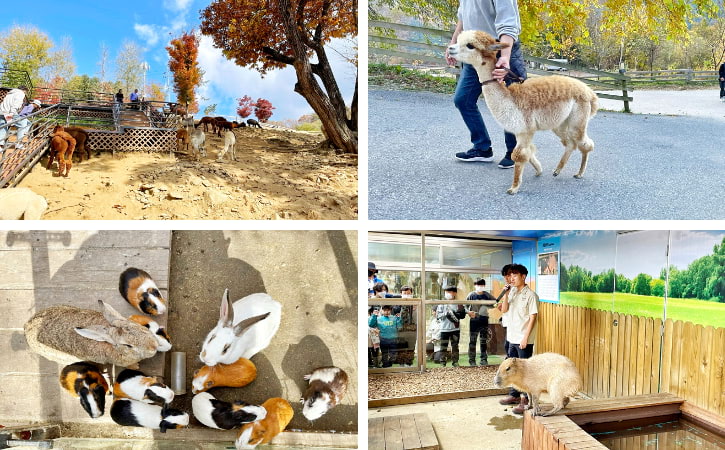
I’ve written a separate post, sharing more information on what animals you can see at the attraction.
It also includes the process of how to make it easy for travellers to get there. All of these can be found in my detailed Alpaca World Korea post here.
2. Legoland Korea
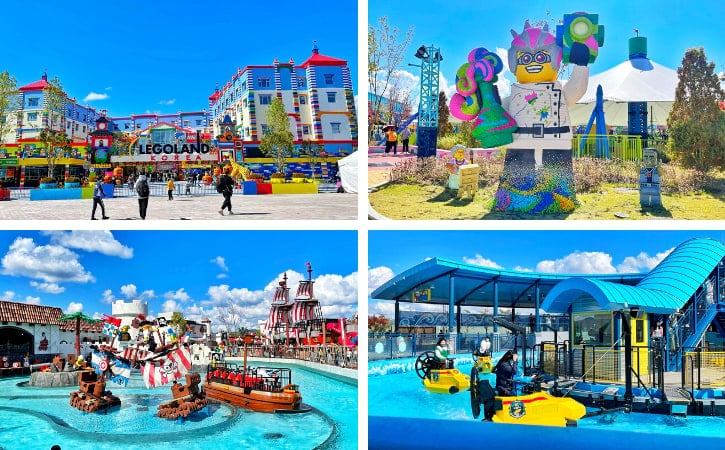
Legoland Korea Resort is a new attraction that’s perfect for families .
It is actually the largest theme park in Asia, offering different kinds of activities .
Not only that but it is also the world’s second largest Legoland theme park after Legoland New York .
If you’re interested, you can take either shuttle bus 1 or shuttle bus 2 from Seoul.
3. Demilitarized Zone
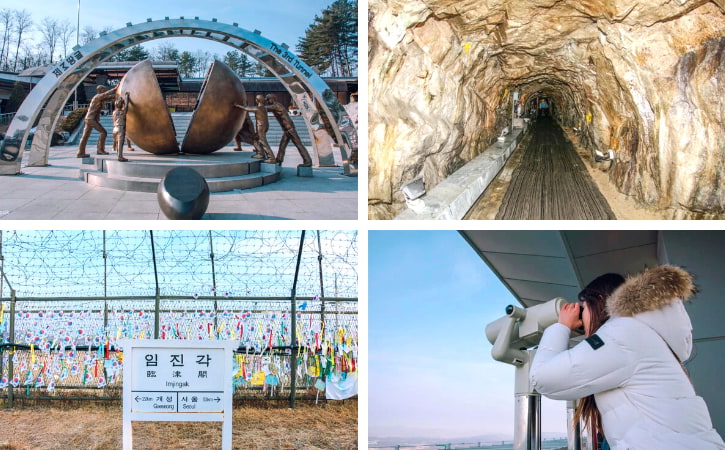
If you are a history buff, then the Demilitarized Zone (DMZ) is a remarkable choice.
This tourist site is considered a peaceful zone between South Korea and North Korea. There are no military personnel or activities around the premises.
Because of its importance to the country, you should get a licensed tour to enter the area.
If interested, you can check out the DMZ tour here . This would give you an idea of the latest rates and itinerary, including the departure time from Seoul .
4. Vivaldi Park Snowy Land (Only Best in Winter)
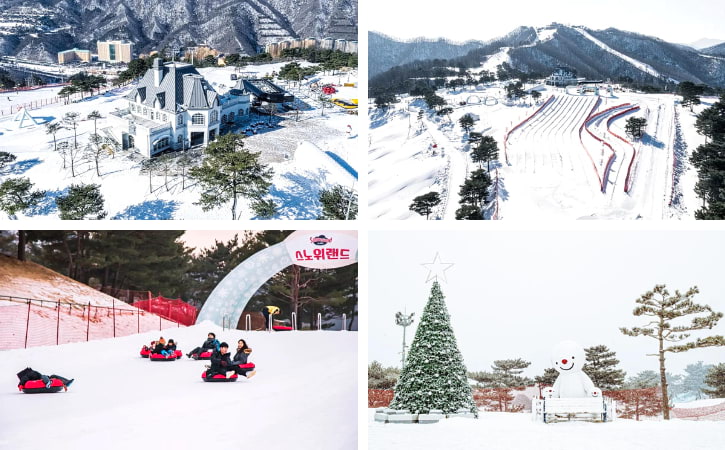
Have a fun day trip in the scenic Vivaldi Park Snowy Land. It’s the best destination if you’re visiting the place during winter .
There are lots of outdoor activities for everyone, from ice sledding to snowboarding .
You can also go skiing along the splendid hills or visit the igloo village with your family . Another highlight in the area is the snowflake tunnels. You may book here for the round-trip shuttle bus from Seoul .

Itinerary for day 6 features a journey through a historic village, a cultural district, and a renowned shopping area.
- 10:00 AM: Bukchon Hanok Village
- 12:30 PM: Lunch at Cafe Onion or Downtowner
- 1:30 PM: Insadong
- 3:30 PM: Jogyesa Buddhist Temple
- 4:30 PM: Dongdaemun
- 8:00 PM: Dinner at Jinokhwa Halmae or Kyochon
1. Bukchon Hanok Village – 2.5 hours (10:00 AM to 12:30 PM)
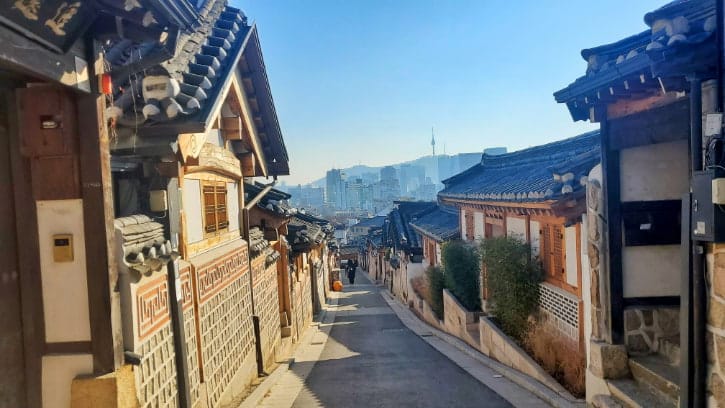
Get on with your morning adventure at Bukchon Hanok Village . This is a must-visit destination in Seoul , especially for those who want to stroll around.
See some traces of history along the alleyways and be amazed at how the people have preserved the beauty of this village.
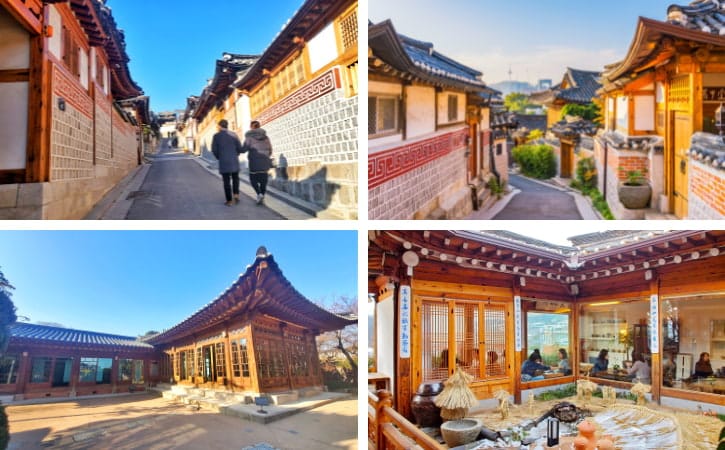
Must-do Things in Bukchon:
- Traditional Houses: Navigate around and catch these ancient houses that are centuries old. You’d be surprised how intact and unique these traditional homes are even after many years.
- Serene Alleyway : These alleyways are part of the history of the village. So, take a walk down memory lane and experience old Seoul through the pathways.
- Uniquely Tiled Roofs: One of the distinct features of the structures here is the tiled roof. If you take a closer look, you’d see the intricate designs adorned on the roof.
- Baek In-je’s House: Drop by this cultural structure filled with Japanese elements. Currently a museum, the house also has a beautiful garden that welcomes visitors.
- Cha Teul Tea House: Try a traditional tea with your loved ones. While enjoying your drink, capture the lovely views around the area.
2. Lunch at Cafe Onion or Downtowner – 1 hour (12:30 PM to 1:30 PM)
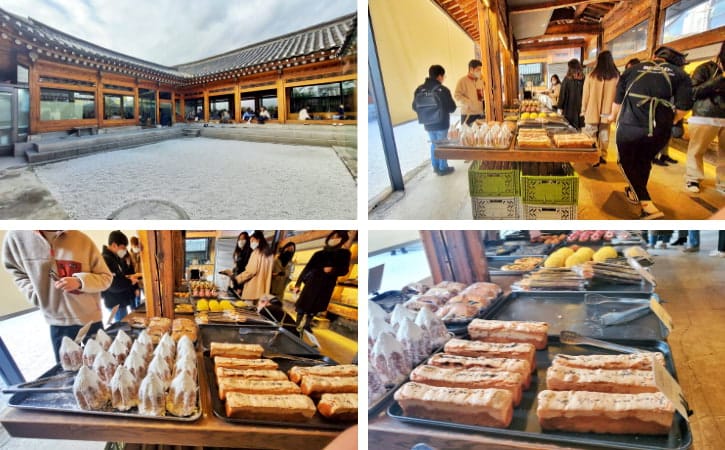
Famous Lunch Spots Close to Bukchon Hanok Village
- Cafe Onion Anguk: This cosy, Hanok-style café serves fresh pastries that you should try at least once. And before I forget, their coffee is also incredible!
- Downtowner Anguk: If you want to relish some hamburger goodness, then this is the spot. Plus, they have some fries to pair with your main snack.

3. Insadong – 2 hours (1:30 PM to 3:30 PM)
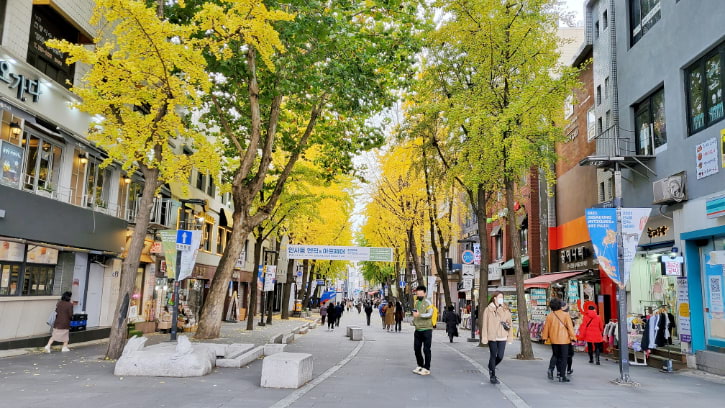
Your next stop would be at Insadong Street .
It’s a lovely place filled with Korean culture. You can walk around, try on traditional Korean clothes called hanbok, eat yummy local food like bibimbap, and look at cool art.
There are also cool stuff like pottery and special brushes to buy.
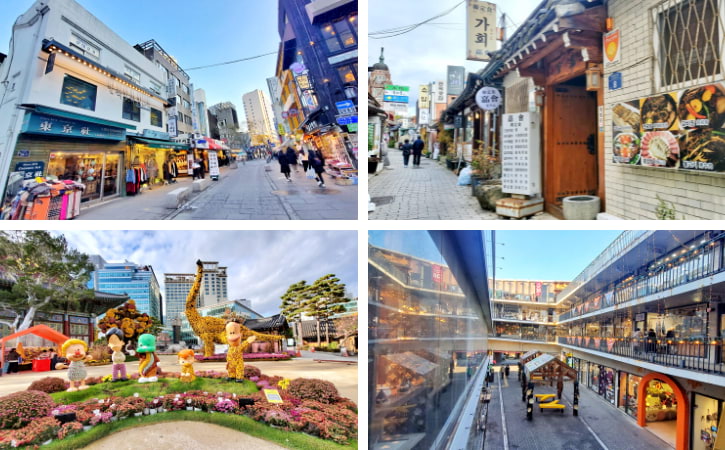
Must-go Places in Insadong:
- Strolling Along the Street: Walking around this famous street is one of the highlights of your visit. You’d be amazed how the calm and busy vibes blend perfectly.
- Insadong’s Alleys: Step into one of the many alleys and catch some old-style establishments. There are plenty of antique shops where you can also enjoy traditional Korean rice wine around.
- Ssamziegil Shopping Complex: You can browse and shop for a wide range of products, including traditional Korean crafts, fashion items, accessories, and souvenirs.
- Alive Museum : Play like there’s no tomorrow inside this interactive museum filled with optical illusions. Use this opportunity to showcase your creativity and pose like a pro.

4. Jogyesa Buddhist Temple – 1 hour (3:30 PM to 4:30 PM)

Pay a visit to Jogyesa , one of South Korea’s renowned Buddhist temples . It’s a peaceful place right in the city center.
As soon as you step in, you’ll feel calm. Walk around to see pretty gardens and impressive buildings.
During Buddhist festivals, colorful lantern displays illuminate the temple, creating a mesmerizing sight.
Whether you’re seeking a peaceful escape, cultural immersion, or both, Jogyesa is a fantastic destination to explore in the city.

5. Dongdaemun – 3.5 hours (4:30 PM to 8:00 PM)
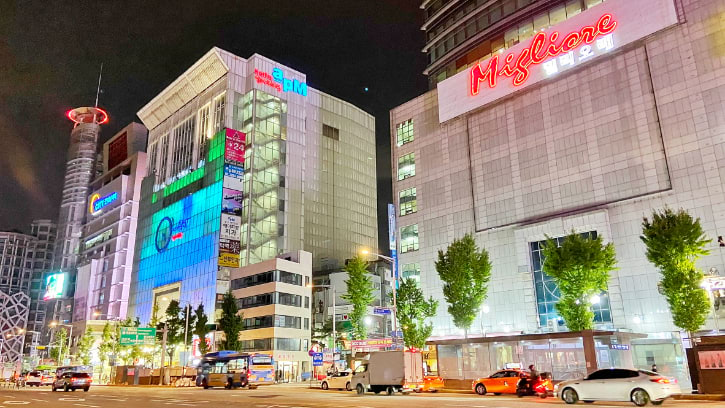
In Seoul, Dongdaemun is the place to go for shopping, where you’ll find plenty of stalls with trendy fashion and unique souvenirs at cheap prices .
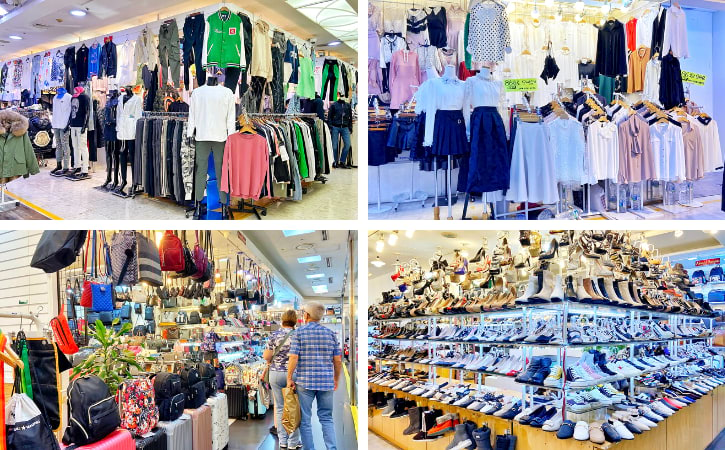
For first-time visitors, don’t miss these 2 shopping malls ― Migliore and Hello apM . Both offer a lot of beautiful clothes at low prices .
You may see here for my comprehensive guide to Dongdaemun Market and learn more about the place. This will also cover the best shopping malls for wholesale and non-wholesale buyers.
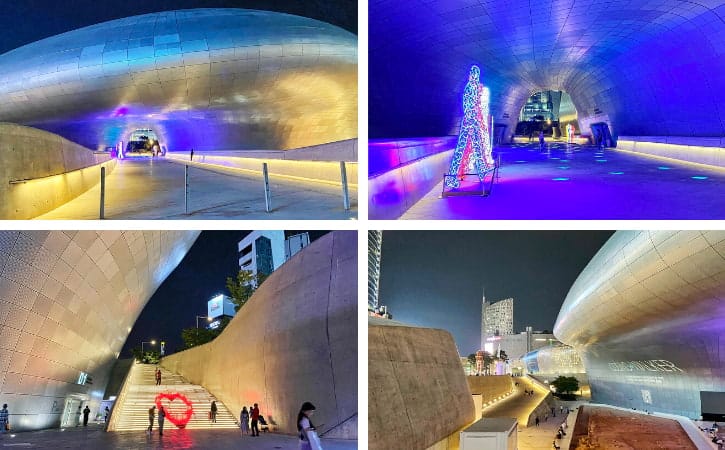
You shouldn’t forget to visit Dongdaemun Design Plaza . The exterior design is very gorgeous, especially at night . So, be sure to capture some nice photos there before leaving .

6. Dinner at Jinokhwa Halmae or Kyochon – 1 hour (8:00 PM to 9:00 PM)
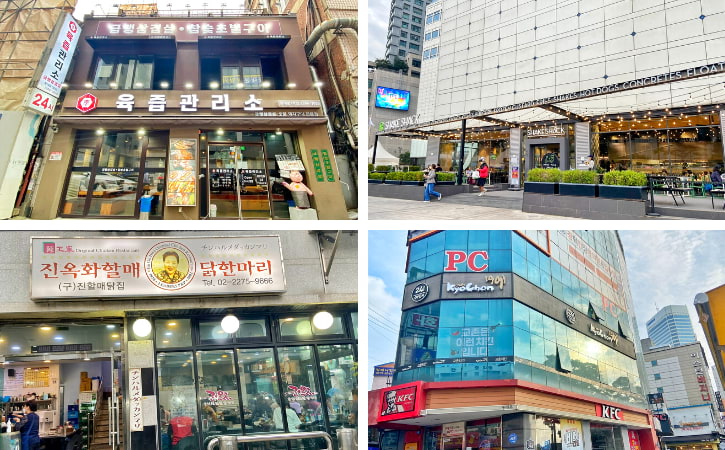
Discover the Popular Dinner Spots Near Dongdaemun
- Yukjeup Gwallis: Enjoy a platter of delicious grilled meat in this restaurant. Munch their side dishes as well to complete your dining experience.
- Shake Shack Doota: When it comes to fast-food snacks, you’d get your money’s worth here. Try one of their burgers or hotdogs. If you want a heavier meal, they also serve chicken dishes.
- Jinokhwa Halmae Wonjo Dakhanmari: Satisfy your appetite with a tasty chicken soup from this local store. Their classic dish is the signature chicken infused with garlic.
- Kyochon Chicken: After your exploration, savor some delectable fried chicken. Choose from a variety of flavors or you can go for the plain ones.

On day 7, our itinerary starts with a visit to Seoul royal palace, followed by market exploration and a streamside stroll.
- 11:00 AM: Deoksugung Seoul
- 1:00 PM: Gwangjang Market + Lunch
- 5:00 PM: Cheonggyecheon Stream
- 7:00 PM: Dinner at Wangbijib or Jongno Samgyetang
1. Deoksugung Seoul – 2 hours (11:00 AM to 1:00 PM)
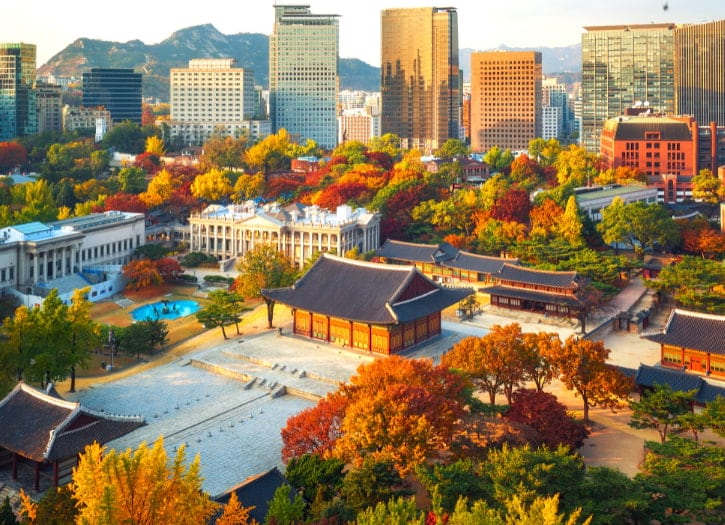
The first stop of the last day’s trip is none other than Deoksugung . Swing by the smallest palace in Seoul, Korea , and see its sophisticated interior .
This walled complex is such a nice location to know more about the royal history .
Step into the palace complex and walk around the large expanses bounded by stunning trees . Because of the scenic views, this is also a remarkable area to relax.
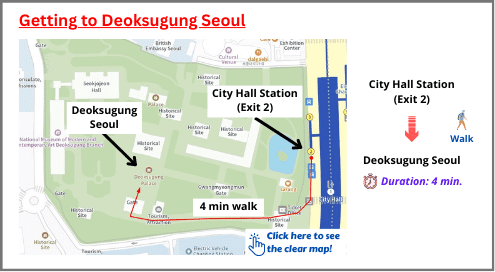
2. Gwangjang Market – 4 hours (1:00 PM to 5:00 PM)

Take your lunch at Gwangjang Market and enjoy the impressive selection of traditional Korean street food . The market is filled with all kinds of local foods, from dumplings to rice cakes and more!
For the best food choices, head to the street that is connected to East Gate, North Gate 2, and South Gate 1 . This is the most popular section in the market where you’ll find abundant food choices.
Some of the must-try foods here are twisted Korean doughnuts, Bindaetteok, Tteokbokki, and Mandu . So, fill up your stomach and enjoy!
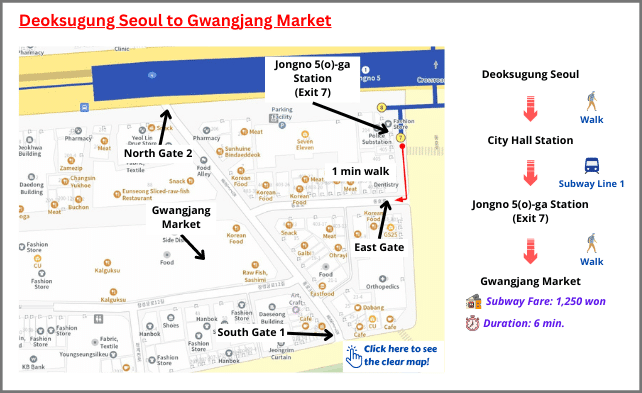
3. Cheonggyecheon Stream – 2 hours (5:00 PM to 7:00 PM)
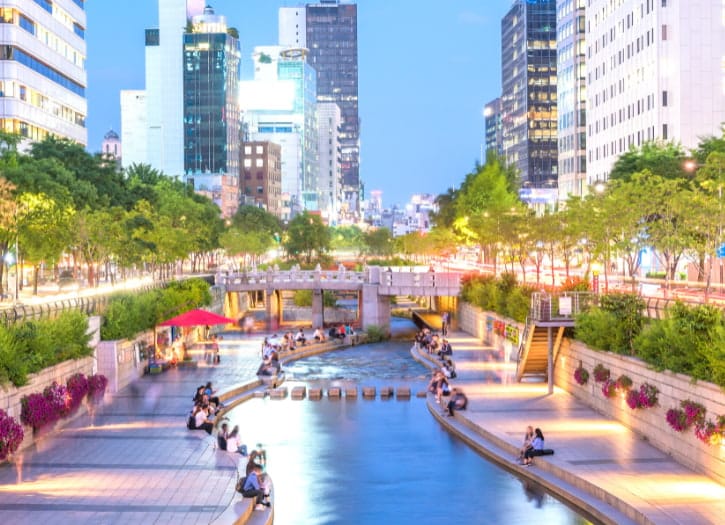
Take a break and head to Cheonggyecheon Stream . This is such a peaceful section of the city , where you can dip your feet and simply relish the views .
The promenade is quite popular among all walks of life, from locals to international travellers. So, if you just want to relax with the running water on your feet, be sure to check this out.
4. Dinner at Wangbijib or Jongno Samgyetang – 1 hour (7:00 PM to 8:00 PM)
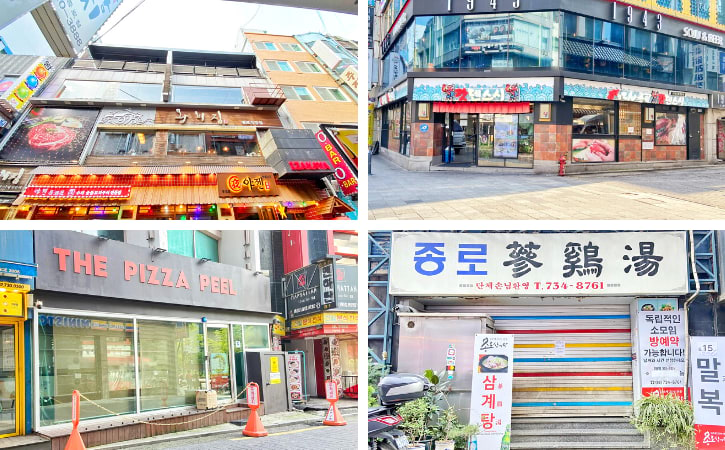
Savor Unforgettable Dinner Delights Near Cheonggyecheon Stream
- Wangbijib Jongno: Dine in this local restaurant and enjoy their grilled pork and beef. They also have other Korean dishes like Jeon, Naengmyeon, and more!
- Gadden Sushi: How about a sushi platter? Offering a selection of fresh and delicious sushi, this store is a must-visit for those who crave Japanese dishes. You’d also love their sashimi, tempura, and seafood delicacies.
- The Pizza Peel: Order a large, yummy pizza for you and your friends. You may add some pasta and sides to complement your experience.
- Jongno Samgyetang: Savor a bowl of delectable chicken soup inside this restaurant. And of course, you can’t miss their homemade kimchi!

To help you visualize and understand this Seoul 1-week itinerary , I have marked all the must-visit spots in the above map .
Tips for Finding a Location : You may use the KakaoMap and Naver Map apps to assist you in navigating around Seoul. So, download the apps from your smartphone. And don’t worry because these apps have the English language option.
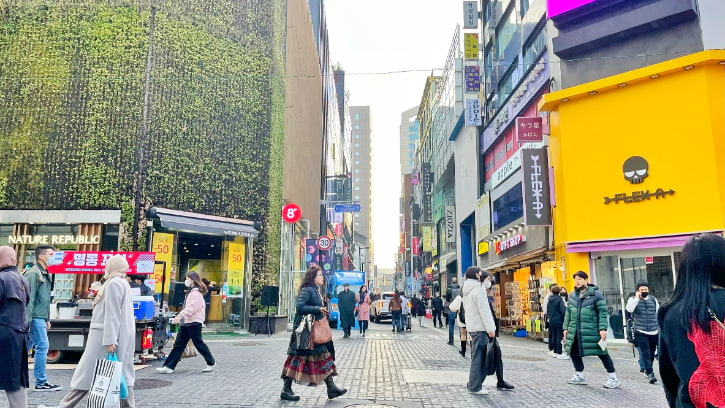
I highly suggest that you stay in Myeongdong. This is located in heart of Seoul, where the most famous Seoul attractions are found.
Staying here will surely save you time from commuting. Apart from that, it is very accessible to many subway stations , including Myeongdong Station and Euljiro 1(il)-ga Station.
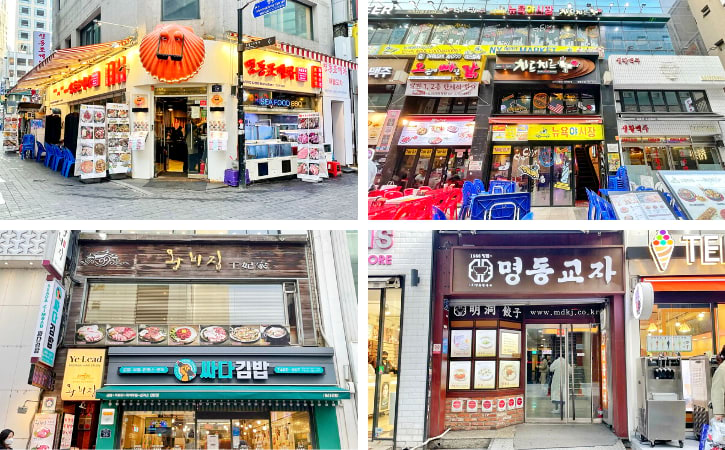
Another remarkable feature of the area is the abundance of restaurants. You won’t be disappointed with the food choices around.
To guide you, below are my most recommended hotels within the district . All these hotels are situated in the shopping street of Myeongdong, making it easy for shopping and dining.
Also, don’t forget to book your hotel in advance . It’s because most hotels here sold out faster compared to other locations in the city.
Recommended Hotels in Myeongdong

- Nine Tree : This is just a 1-minute walk to Myeongdong street and a few steps away from Myeongdong Station’s Exit 7 (with escalator). Plus, it is surrounded by many eateries.
- L7 Myeongdong : If you are looking for a hotel that is a few seconds to Exit 9 of Myeongdong Station, this is recommended.
- Myeongdong Skypark 3 : Located next to L7 Myeongdong hotel, you may choose this one in case the above hotel is already fully booked.
- Hotel Skypark Central : This one is close to Euljiro 1(il)-ga Station’s Exit 5 and 6. There are also many restaurants around. Likewise, it has easy access to Myeongdong street, Lotte Department Store, and Lotte Young Plaza.
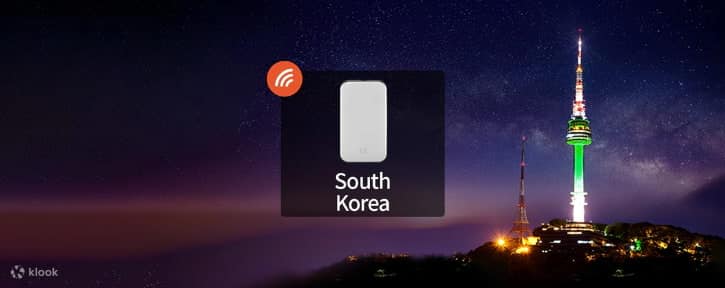
I also recommend that you rent at least one portable Wi-Fi device when travelling to Seoul .
This is important so you can check the subway route anytime you need . Plus, this helps you navigate around the city easily .
You may book this Korea Pocket Wi-Fi online , which already comes with a stable and high-speed internet connection . It also includes unlimited data .
Because of its convenience, it is used by many travellers around the world. If you book it online, you can just pick up the device from Incheon airport.
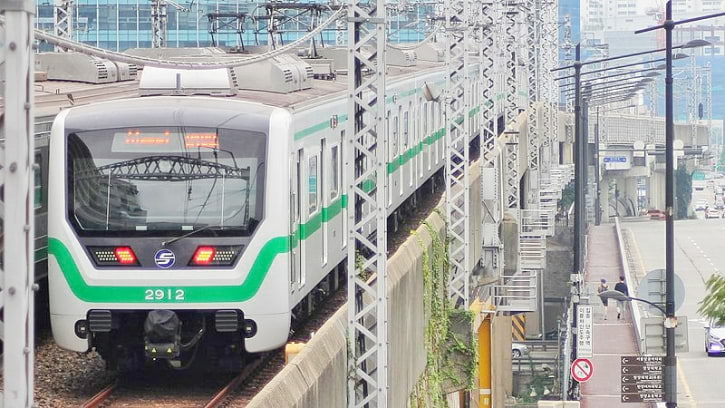
For your Seoul trip, I suggest that you use the subway . This is a cheap and convenient way to get around the city . In addition, most of the attractions are easily accessible by subway.
You can download the “KakaoMetro” or “Korea Subway Info: Metroid” app on your smartphone.
These 2 apps provide the best and shortest route from one subway station to another. Additionally, it covers the travel time and subway fare for your convenience.
Also, I highly encourage you to buy a T-Money Transportation Card . This is the main payment method when using subways and buses in the city. To better understand this, here’s why:
Why want to use T-Money Card?
- Time-Saving: With this card, there’s no need to buy individual tickets for every ride. You just tap your card at a specific panel and take the subways and buses with ease.
- Convenient Stores: Use the card to pay purchases in convenience stores like 7-Eleven, CU, GS25, Ministop, and emart24.
Where to top-up a T-Money Card?
You can easily reload the card from convenience stores. Another way to reload is through the ticket vending machines that are located inside the subway stations.
Where can you buy a T-Money Card?
You may also purchase the card from convenience stores such as CU, GS25, and 7-Eleven. These are located inside the airport or in the city center.
2. Hop-on Hop-off Bus Tour
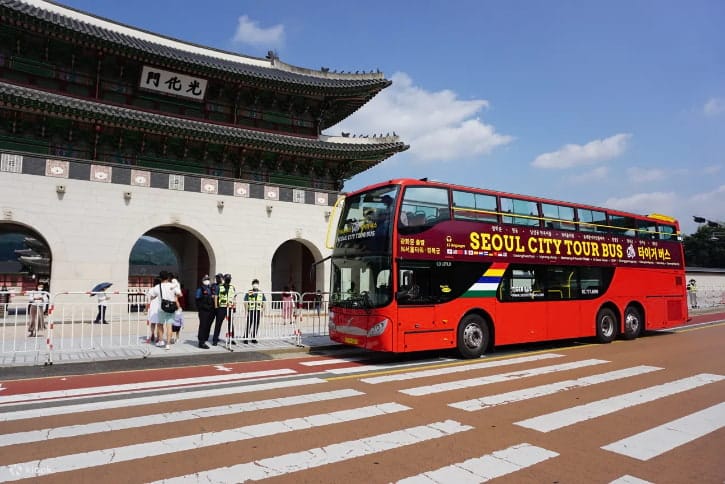
The sightseeing bus tour is a great alternative option when touring around Seoul.
This is a commendable choice if you don’t like to use the subway . Because of the setup of the bus, it’s also a good way to see an aerial view of the city.
On top of that, the bus covers some of Seoul’s major sights. These include N Seoul Tower, Gyeongbokgung Palace, Insadong, Myeongdong, and Dongdaemun.
3. Private Car Charter
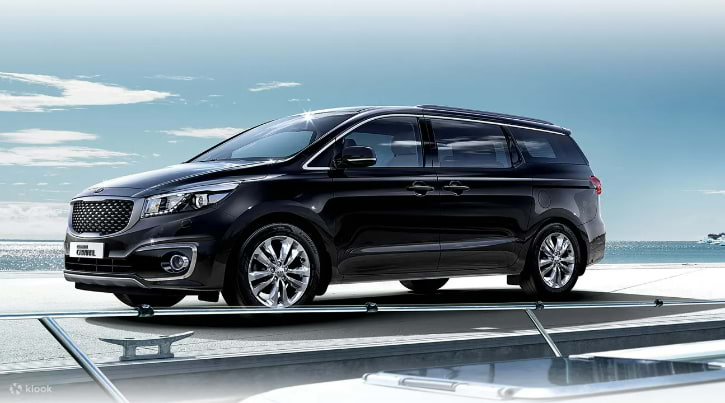
If you want something more personalized, then the private car charter is the best choice.
This is definitely the easiest way of exploring different Seoul landmarks at your preferred time . Not only that but it comes with a professional English-speaking driver .
You just make your request to the driver and he/she will take you to your destination. Because of these features, it’s recommended for families and friends without budget constraints , who just want a relaxing trip.
Try to visit the private charter service website to find out more about their services and pricing .
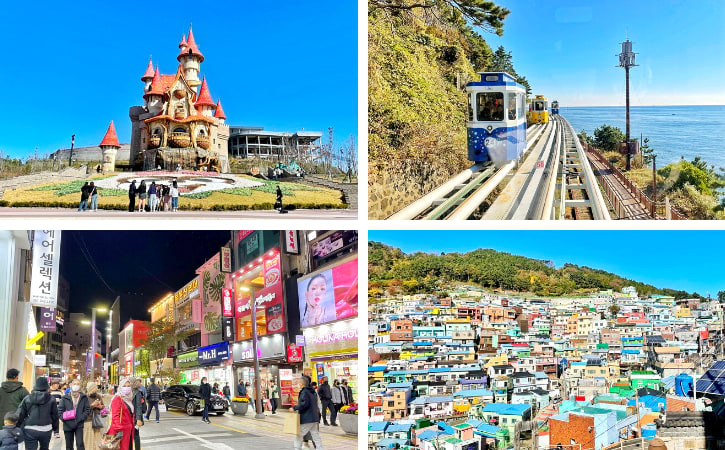
If you’ve got more time to spend in South Korea , then it’s best that you spend it in Busan . This city is packed with traditional markets as well as beautiful seaside beaches that will surely charm you.
Not only that but there is a mural village and a historical temple within the area . So, take your time to read my 3 days in Busan itinerary and make sure you add this to your trip.
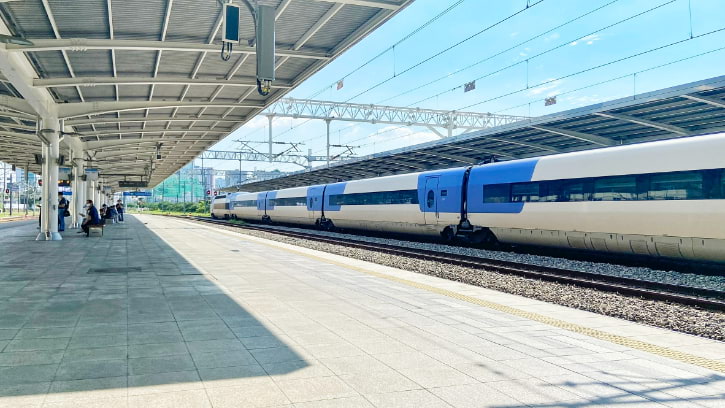
I highly recommend that you take the high-speed rail going to Busan for your convenience .
This transportation is quite popular because of the surrounding views from the comfort of your seat. While onboard, you get to see some beautiful views through the big windows.
For guidance, see here to find out how to go to Busan from Seoul by KTX train and make your preparations in advance. And also from this guide, I’ll show how to take the KTX train to Busan .
Accordingly, the travel time would take around 2 hours and 40 minutes . Hence, you need to plan your schedule ahead of time.
And if you’re done with Korea, don’t hesitate to fill yourself with more adventures. So, is Tokyo your next destination to visit? If yes, don’t forget to see my Tokyo itinerary to give you some idea how to plan your trip!
1. AREX Express Train
Taking the AREX Express Train is the cheapest way to go from Incheon Airport to Seoul Station . It is a non-stop train that travels for about 50 minutes to reach Seoul Station .
The original ticket price is 9,500 won, but you can actually buy the tickets online to get an extra 20% discount . Plus, you can choose to take the train at Basement 1 of Terminal 1 or Terminal 2.
- The first and last trains depart from Terminal 1 at 5:23 AM and 10:48 PM respectively
- The first and last trains depart from Terminal 2 at 5:15 AM and 10:40 PM respectively
- Trains depart from the airport every 20 to 40 minutes
2. Bus 6015
If you’re staying in Myeongdong , you may ride Bus 6015 .
The travel time is about 1 hour and 20 minutes while the bus fare is 17,000 won for an adult and 11,000 won for a child . You can pay the fees using the T-Money Card.
As for the bus stop , it is located at Gate 5 , which is within level 1 of terminal 1 (arrival hall) .
There is another boarding location found at Bus Stop No. 28 of basement 1 of terminal 2 (arrival hall) .
For more details, simply refer to my guide on traveling from Incheon to Myeongdong .
The bus will drop you at Myeongdong Station.
- The first bus is at 5:40 AM
- The last bus is at 11:10PM
- The bus interval is 20 to 30 minutes
3. Private Car
A great option if you’re looking for a 24-hour airport transfer service is through a private car. With this, you can travel comfortably between the airports and the capital city.
This also means you won’t have to stress about very late or early morning airport arrivals . It’s because this comfy transportation is available 24/7.
On top of that, you get to enjoy a door-to-door pickup service that will take you directly to your hotel .
If you’re interested, check out private car here to see the prices and reviews made by previous travellers .
My Seoul travel itinerary has now brought you to the conclusion of this article. I hope this guide helps you plan a great trip to the capital of Korea.

Seoul Lotte World: 15 Best Rides & How to Go Guide

17 Best Things to Do in Nami Island Korea You Can’t Miss

Alpaca World Korea: How to Go Guide & Must-See Animals
Leave a comment cancel reply.
Send me an email when the author replied my comment. (Please take note your comment only will show on this blog post after approved by me to prevent spam comments.)

5 Day Seoul Itinerary: Best Things To Do (2024)
Planning a 5 day Seoul Itinerary? We’ve got you covered! In this guide, you’ll find out the best places to visit in Seoul for 5 days or more. You can explore the beautiful hanok villages, enjoy tasty bibimbap and wander through amazing royal palaces all in the capital city of South Korea.
Read on to find out what to do in Seoul and how to plan your trip (where to stay in Seoul & best places to eat)!
Seoul is South Korea’s highrise capital city nestled between the mountains . It’s the perfect place to explore for any type of traveller with many great things to do in Seoul and see around the city.
Home to well-preserved palaces and Buddhist temples , it’s also a very cultural city with many museums to learn more about South Korea’s history. Other than the beautiful palaces, Seoul is extremely modern with great public transport!
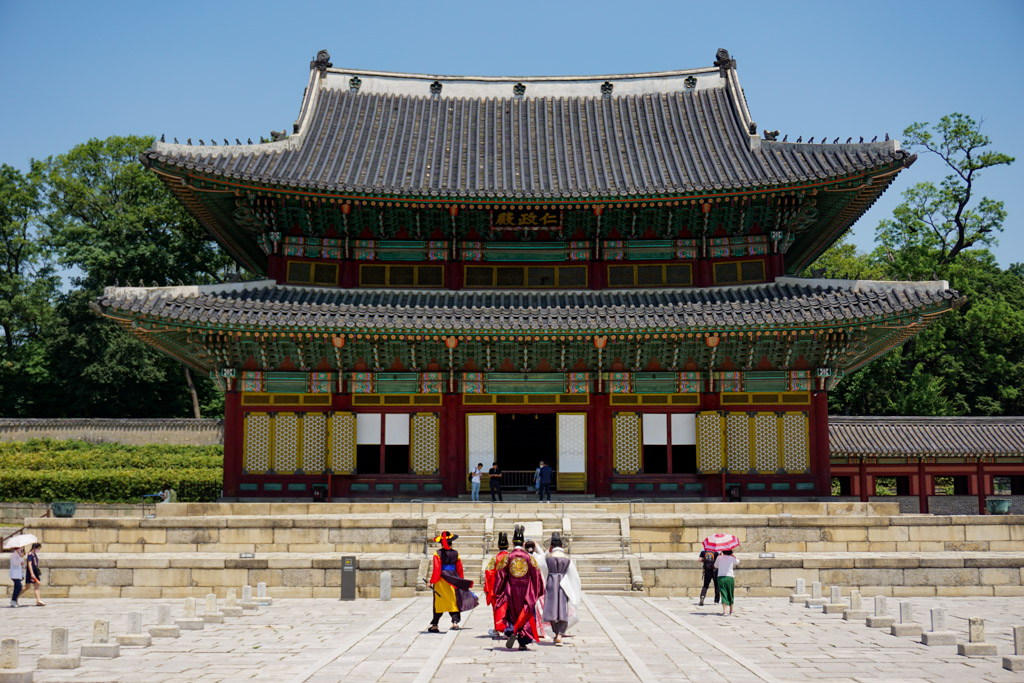
Don’t forget the amazing food options all throughout the city. Have you ever tried Korean cuisine before? It’s so good! You won’t have trouble eating here if you enjoy Korean food. Find out how to plan your Seoul 5 day itinerary!
This post may contain affiliate links. We will receive a small commission if you make a purchase using these links, at no additional cost to you .
What to do in Seoul (5 Day Seoul Itinerary)
Table of Contents (Skip to a section!)
- Hiking – There are mountains surrounding Seoul, if you’re into hiking you’ll find amazing options! There’s even Namsan Park to explore for non-hikers!
- Royal Palaces – Some of the most beautiful palaces in South Korea are right in Seoul and right in the heart of the city.
- Shopping – Seoul is home to some big malls and shopping can be done everywhere.
- Eating – Discover Korean Cuisine in style and try some of the best restaurants, street food and even convenience store snacks!
- Day Trips – Day Trips are easy from Seoul with great public transport. Explore places such as Nami Island, Sokcho and Jeonju or try out Seoul’s theme parks for a day.
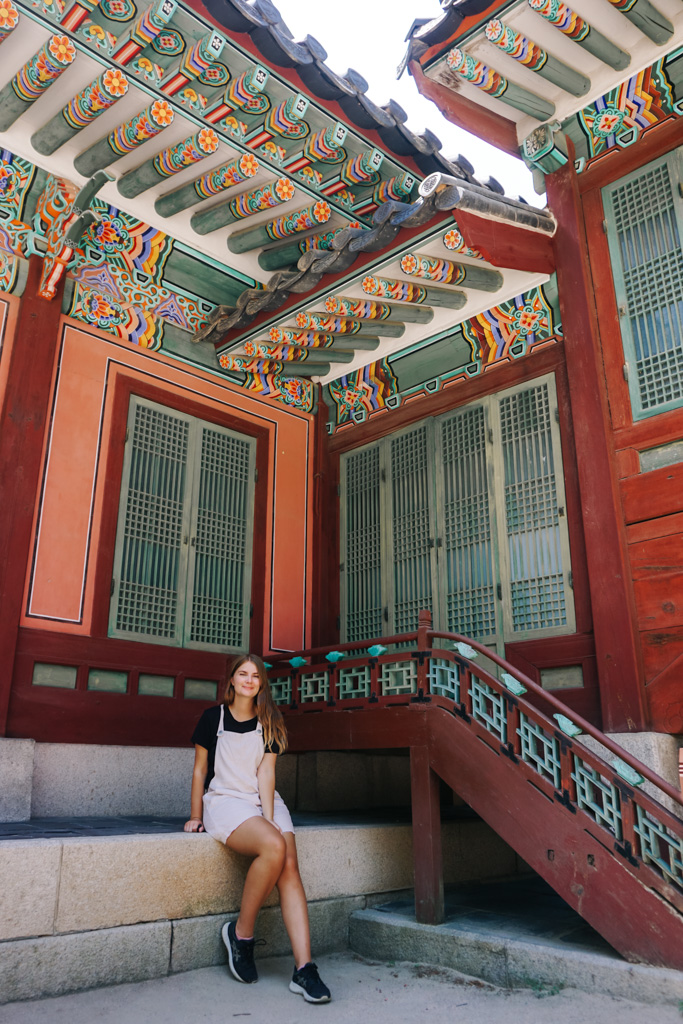
How to get around Seoul
Seoul has an amazing public transport system . It’s easy to use for foreigners and you can use the Naver Maps app to guide you to your next location. There are metros or buses running almost everywhere in Seoul, so there’s never a worry about how to get to your next destination. You can also use taxi’s on the street.
If you’re travelling to other destinations in South Korea, check if a Korea Rail Pass can save you money on your transport!
T-Money Card – This card is your easy way to get around all of South Korea, especially Seoul. You can buy them and top them up in convenience stores and you just swipe them whenever you use transport. For both buses and metros, you have to swipe when you enter and exit !
TIP : Our biggest tip is to definitely bring some Korean Won with you to South Korea, even if it’s a small amount. Within your 5 day Seoul itinerary, you’ll need cash to buy a ticket on any public transport in Seoul including to top up your T-Money card.
If you don’t have time to get any, you can use the ATMs at the airport although they will charge a small fee for an international card.
How to get from Incheon Airport to Seoul
Once you’ve arrived at the airport, head for the signs to the Airport Rail Road to catch the AREX line. You’ll need to either buy a ticket or a T-money card with credit before getting on the train to Seoul. All the machines have an English option, so it’s very easy to purchase your ticket.
You can buy T-Money cards at the convenience stores at the airport or vending machines next to the train station. Make sure to top up your card, 10,000 won should be good for the first couple of days in Seoul.
Alternatively, you can buy your AREX Incheon Airport Express Train tickets in advance with Klook and this will take you direct to Seoul Station . Buy your tickets in advance on Klook !
Once arrived at Seoul Station, you can head to your accommodation using the metro or buses. Use Naver Maps to guide you there!
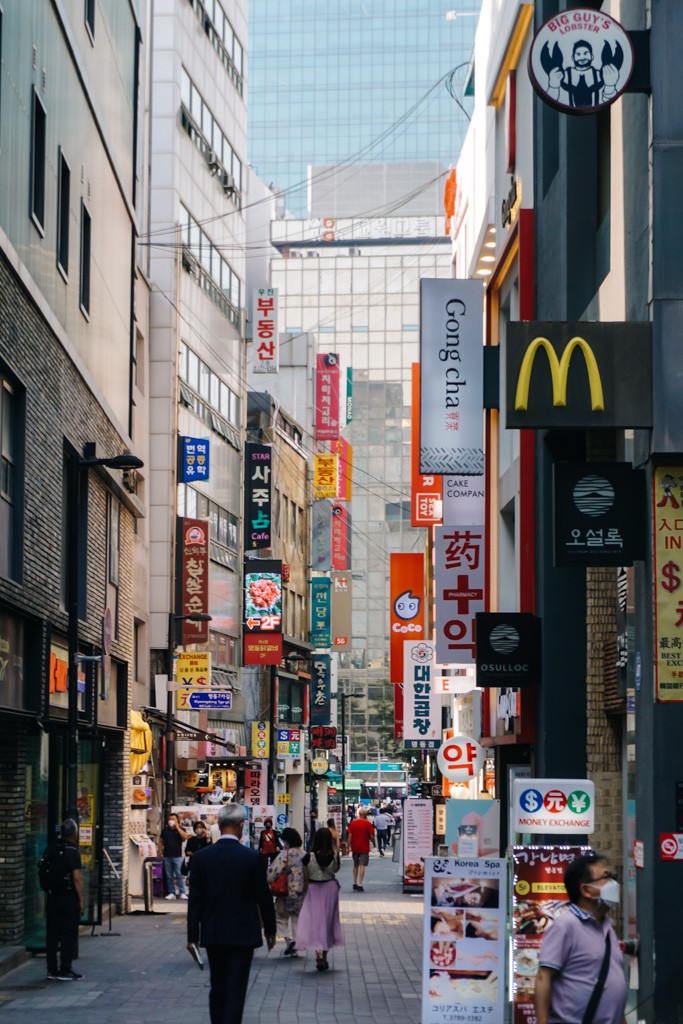
Where to stay in Seoul
Seoul is a massive city – really big! You’ll be exploring different areas each day but it’s good to have a well-located base. Here are some of the best neighbourhoods to stay in for first-time visits to Seoul:
Best area to stay in Seoul: Insadong, Myeongdong, Hongdae, Itaewon & Gangnam
We highly recommend staying in the Insadong area on your 5 day Seoul itinerary as it’s close to main attractions and great transport to other neighbourhoods.
Hostel Tommy $-$$ – The perfect location in Seoul for a first-time visit. It’s close to the royal palaces, hanok villages, great cafes, restaurants and places to shop. Located minutes away from a metro station to take you anywhere in the city. Find the link to Booking.com here – Hostel Tommy Booking.com
Tommy is one of the nicest hosts we’ve ever had whilst travelling, he’s so friendly and welcoming and it really feels like he cares about his guests. We cannot recommend staying here enough for 5 days in Seoul!
There are dorm rooms and private rooms for anyone travelling on a budget. The rooms also come with free Netflix which is a bonus in the evenings! Also, check out our 10 Best South Korea Budget Tips + Travel Costs (2024) .
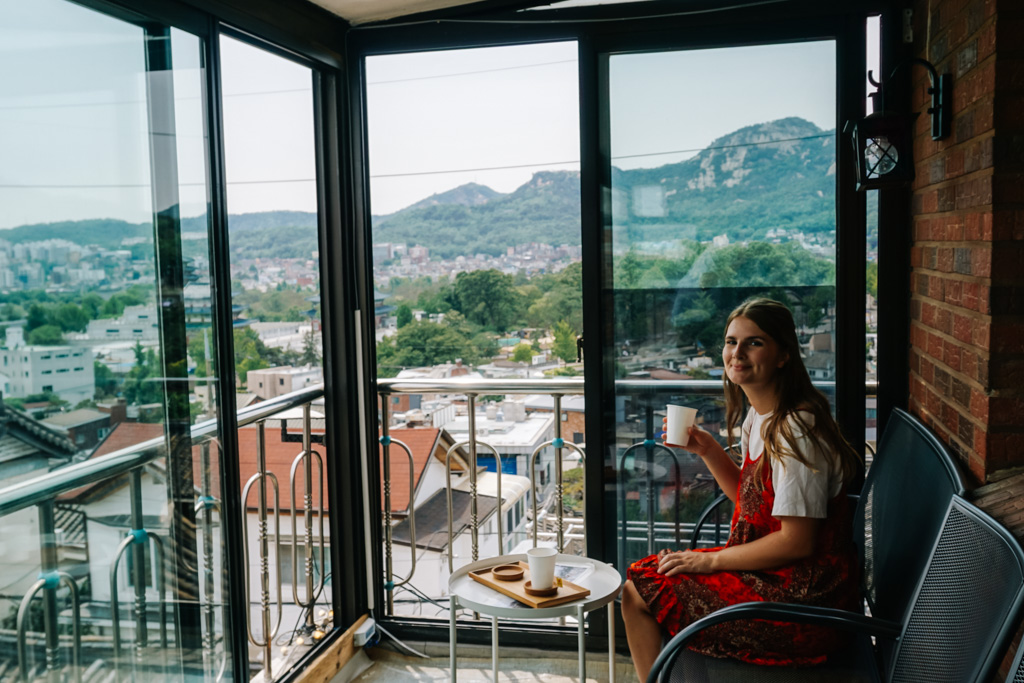
Quick Tips for 5 Days in Seoul
- Currency – Korean Won (compare the currency here )
- Cuisine – Korean Cusine (Kimchi, Bibimbap, Fried Chicken, Bulgogi & Rice Cakes)
- Wifi/Sim Cards – Buy prepaid sim, Esim or portable Wifi
- Apps – Naver Maps (GoogleMaps) & KakaoTalk (or GoogleTranslate)
- Korea Power Voltage – Plugs C & F (220 V)
- Airport Transfer – AREX Incheon Airport Express Train tickets
- Seoul Activity Pass – Klook Pass Seoul – Find out more here !
- Transport – Check to see if you’ll save money using a Korea Rail Pass !
Simcard options for South Korea
E-Sim – Very easy to purchase online, install using your phone settings and then you are good to go! Here’s a 12 Day E-Sim . (£9.50 for 12 days)
Prepaid Sim -This may be preferred if you also want a Korean number as well as data. Price changes depending on the length you want the sim. Find a sim card on Klook here ! (£15 for 10 days) Pick up at the airport.
Portable Wifi – A wifi to carry around with you, great for laptops too! Find a portable Wifi on Klook here ! (£20 for 10 days) Pick up at the airport.
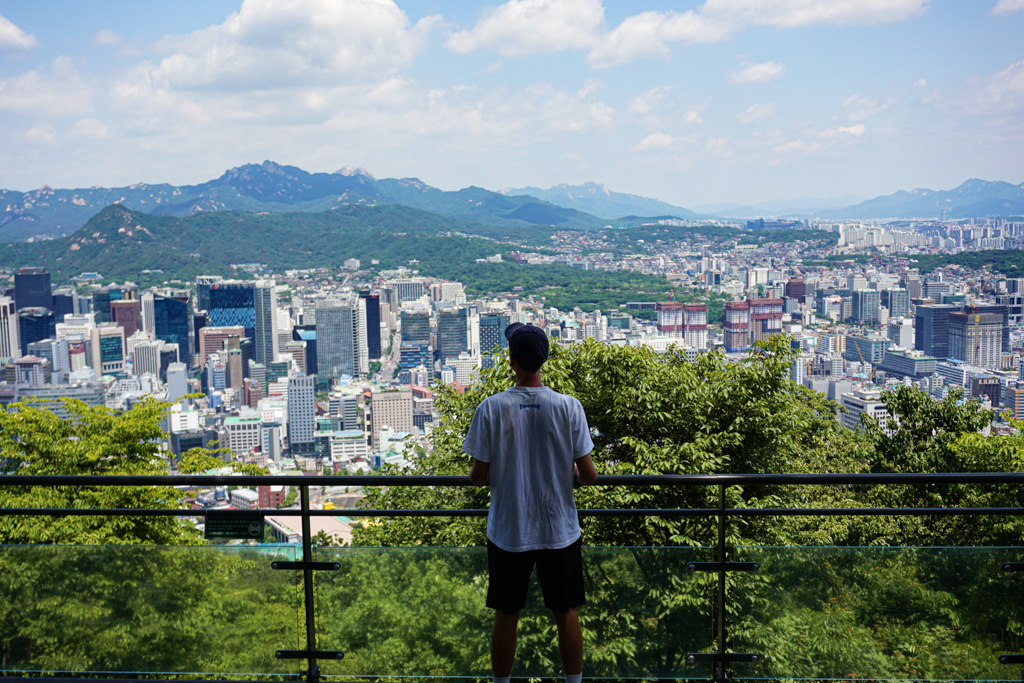
5 Day Seoul Itinerary – Best Places to Visit
You may be starting your 5 days in Seoul at any point on your first day depending on when you arrive. We’ve prepared a full but slower day of things to do to kickstart your first day in Seoul.
Day 1 – Insadong, Ikseon-dong & Myeong Dong
Have a look at our ‘How to get from Incheon Airport to Seoul’ section above! Most accommodations won’t let you check in till at least 3 pm, so first head to your accommodation to drop your bags off.
Explore Insadong
Insasong should definitely be on your 5 days in Seoul itinerary. It’s a great area to visit on your first day as it shows off so much of Seoul on one street.
Have lunch or dinner at Osegye Hyang ( location ), a traditional Korean restaurant or Maru ( location ), a smaller street-food style restaurant as they’re both in the beautiful streets of Insadong.
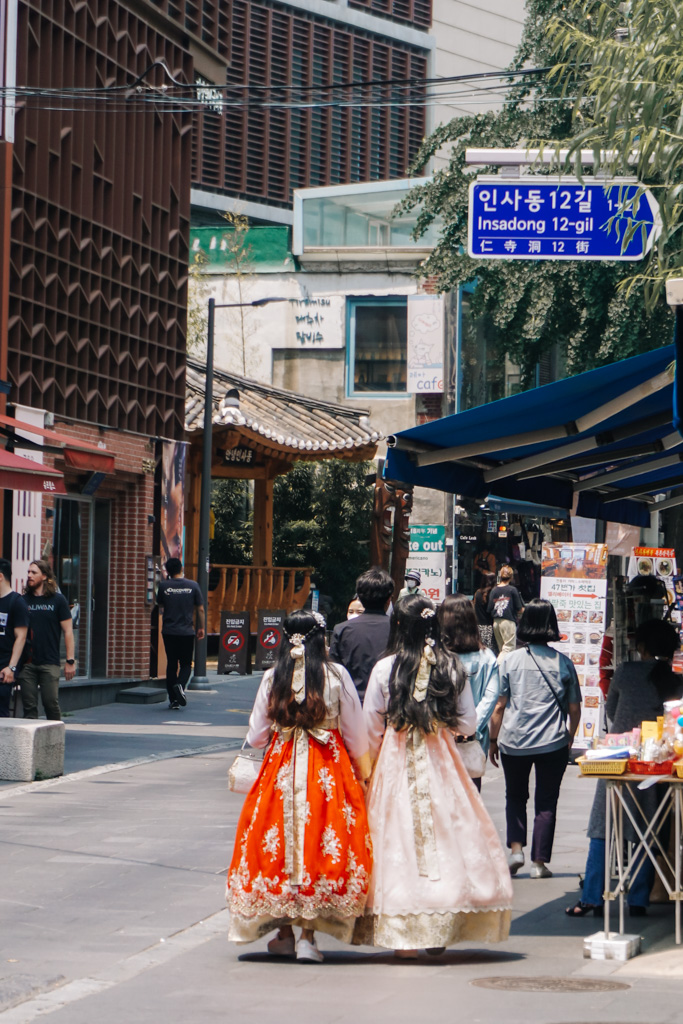
Wander through Ikseon-dong
Ikseon-dong is also a must-visit area on your 5 days in Seoul. This hanok village is full of trendy cafes, cute shops and photo booths everywhere! It’s a beautiful area to explore on your first day in Seoul.

Head to Myeong Dong for shopping & nightlife
On your way to Myeong Dong, pass by Cheonggyecheon. It’s a stream in the middle of the city with nature around, it’s a very peaceful walk that you can do at any time of day! Find the location here – Cheonggyecheon Location !
There are many things to do in Myeong Dong, but the main things are shopping and dining! The Myeong Dong Walking Street ( location ) is the main strip and you’ll find street vendors around this area too! It’s a great option for dinner or you can find one of the many restaurants in the area.
Love theme parks? Take a visit to Lotte World in Seoul ! We haven’t included it in this 5 day Seoul itinerary, but you can make time on Day 5 if you want to feel the adrenaline! Buy tickets in advance on Klook .
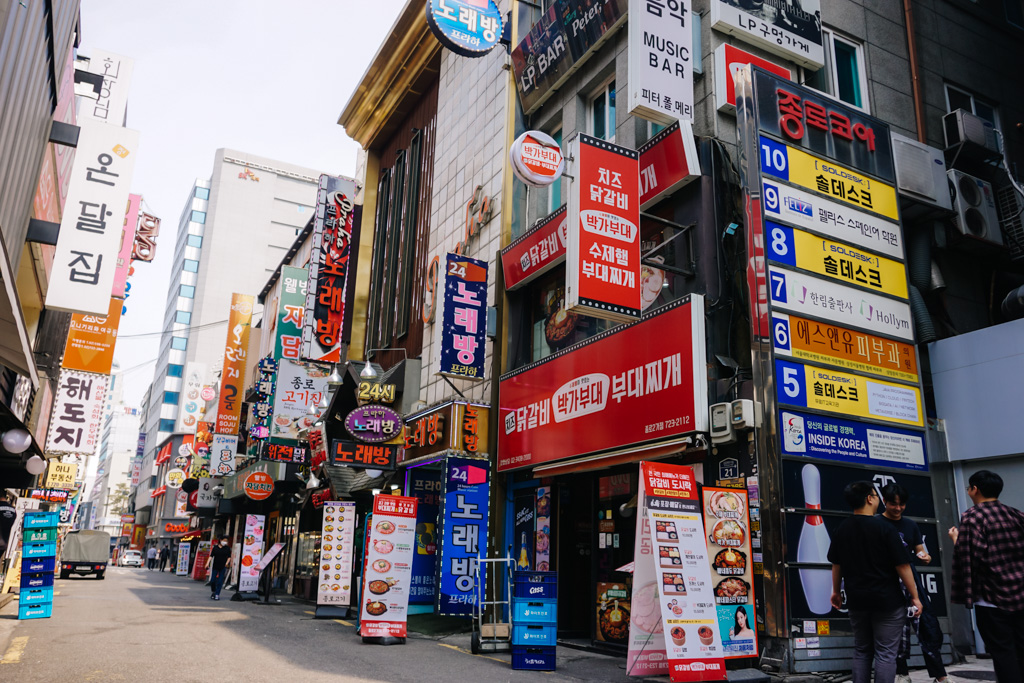
Day 2 – Palaces, Hanok Villages & Hongdae
If you’re looking for breakfast, Seoul has many amazing cafes that serve coffee, tea and bakery items. But if you’d like to eat in Korean style, try one of the many ramens from a convenience store! Our hostel ( Hostel Tommy ) offered free breakfast, and it was literally a noodle pot!
There are five Royal Palaces in Seoul – Gyeongbokgung Palace, Changdeokgung Palace, Changgyeonggung Palace, Deoksugung Palace and Gyeonghuigung Palace. On Day 2 of your Seoul 5 day itinerary, you’re going to visit two of these beautiful palaces.
Visit Changdeokgung
If you’re wondering what to do in Seoul in 5 days, the palaces are a great option! Changdeokgung served as the principal palace of multiple Joseon kings for over 250 years. It’s also the most-preserved palace out of the five
The entry for Changdeokgung is 3000 won, which is extremely affordable. You can spend over an hour here browsing the gardens and architecture of the buildings. Find the location here – Changdeokgung Location .

Check out these 25+ Best South Korea Travel Tips whilst planning your Seoul 5 day itinerary!
Wander through Secret Garden
At the back of Changdeokgung Palace is the Secret Garden . It’s an extremely pretty area full of nature and was used by members of the royal family. The entry fee for Secret Garden is 3000 won. There are also free guided tours you can take here.
Take a look at Changgyeonggung
Changgyeonggung Palace was built in 1483 by King Seongjong. During the war, parts of the palace were destroyed so was rebuilt in 1987 back to its original form. It’s still an amazing palace to explore and the grounds are lovely to walk around. The entry fee for Changgyeonggung is 1000 won.
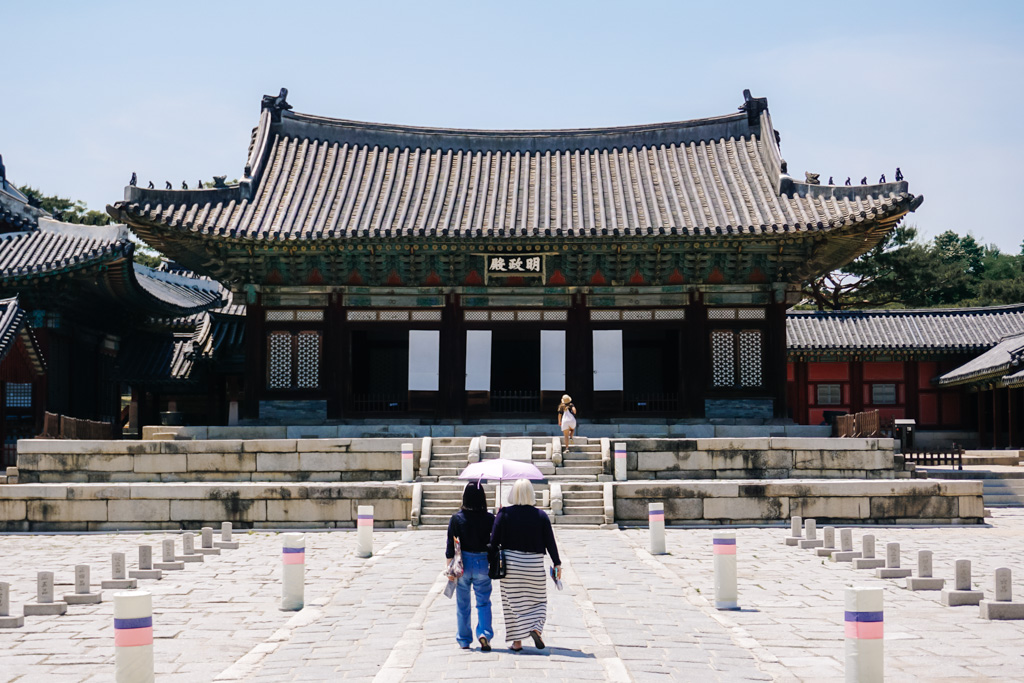
Check out Cafe Onion Anguk or London Bagel Museum if you’re feeling hungry. Or if you’re feeling like a hotpot experience, check out Onmaeul to enjoy a full lunch!
Get lost in Bukchon Village
Visiting Bukchon Hanok Village is a must on your Seoul itinerary 5 days. It’s a Korean traditional village filled with cosy alleys and over 900 preserved homes. It’s the perfect setting to enjoy South Korean culture. Here’s the location for the area – Bukchon Village Location
Inside the village, there are cultural centres, museums and viewpoints. It’s a unique way to share the history of the village and the hosts in the cultural centres are extremely friendly!
If you’d like a view from above the traditional houses in the village you can check out the Bukchon Observatory. It’s 3000 won to enter and you get a complimentary drink included in the price. Here’s the location for the Observatory !
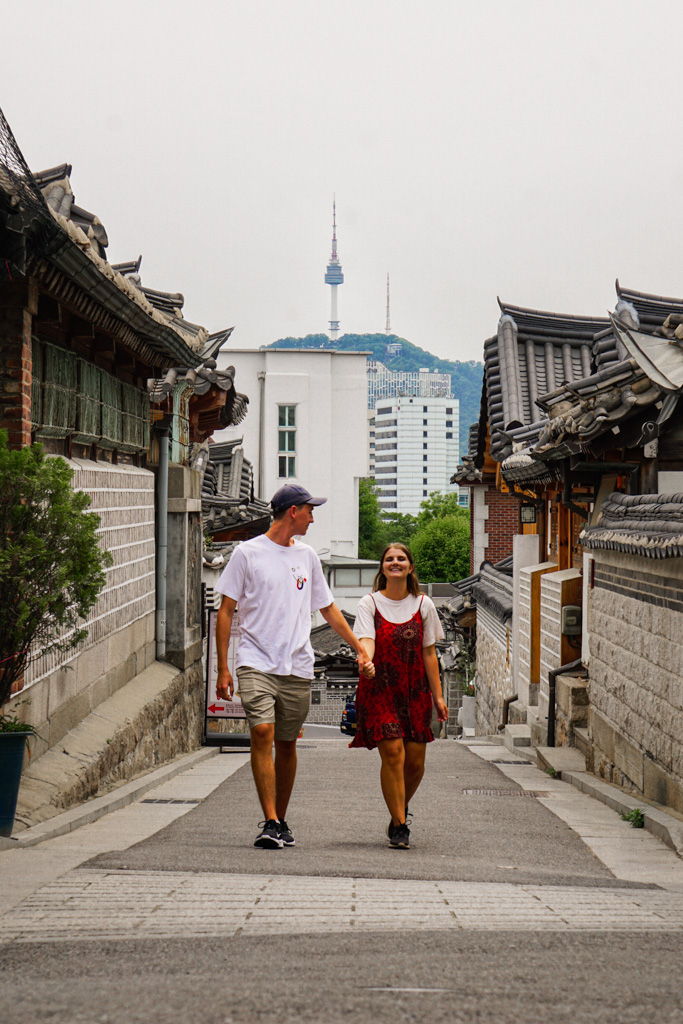
We use our Joby GorillaPod to take great photos of ourselves when there’s no one else around. It’s so lightweight and can fit in your day bag. There’s also a Joby Phone Tripod to capture beautiful videos of your 5 days in Seoul itinerary!
Browse around Hongdae & enjoy the nightlife
Hongdae is a very cool area in Seoul, you’ll find themed cafes such as Harry Potter ( location )and many trendy clothes shops. It’s a great place to be in the evening on your 5 day Seoul itinerary and you’ll find some good restaurants here too. It’s a popular spot for nightlife too if you want to stay out later!
If you arrive in the late afternoon check out Sinchon, the neighbourhood just next to Hongdae. We really love Bread Blue (a vegan bakery – location ) nearby.
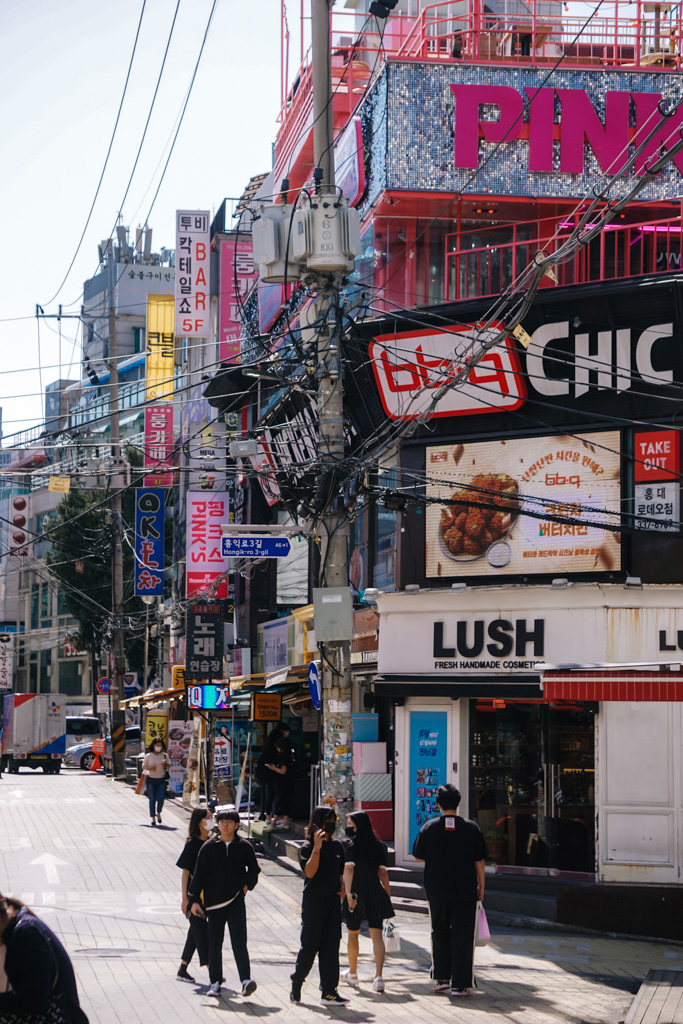
In the evening head out on a Seoul Eland Hangang River Cruise -it’s absolutely incredible seeing Seoul lit up from the water. Find tickets on Klook here !
Day 3 – N Seoul Tower & Itaewon
Admire the views from namsan park.
You may have seen the famous Seoul Tower from around Seoul already. Well, today you’re going to the top of the mountain and the tower! It’s a must on your 5 day Seoul itinerary.
There are a few ways you can start your hike up to the top, but we started on the north side – here’s the location ! It takes around 30 minutes, but will definitely take longer if you stop at all the viewpoints.
Once you’re at the top the view is amazing! There are also restaurants, shops and loads of locks! You can’t miss them!
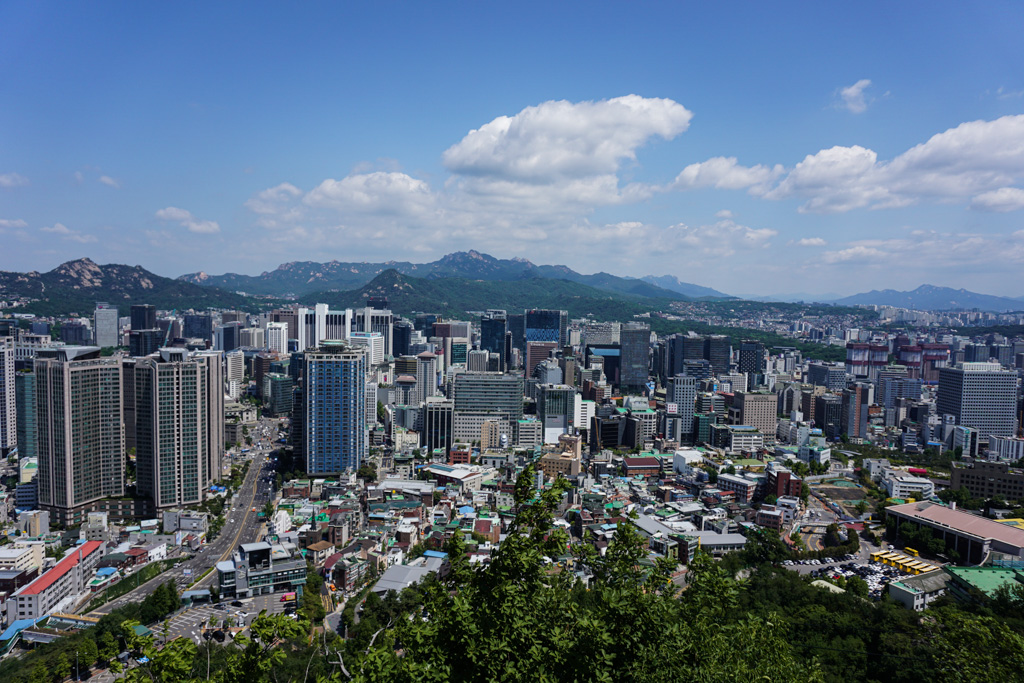
Go up Seoul Tower
Even though you already have great views from the mountain, it’s really interesting to see Seoul from even higher above. Tickets are really affordable on Klook – so make sure you buy your ticket in advance for Seoul Tower! They don’t sell out and it’s an open ticket.
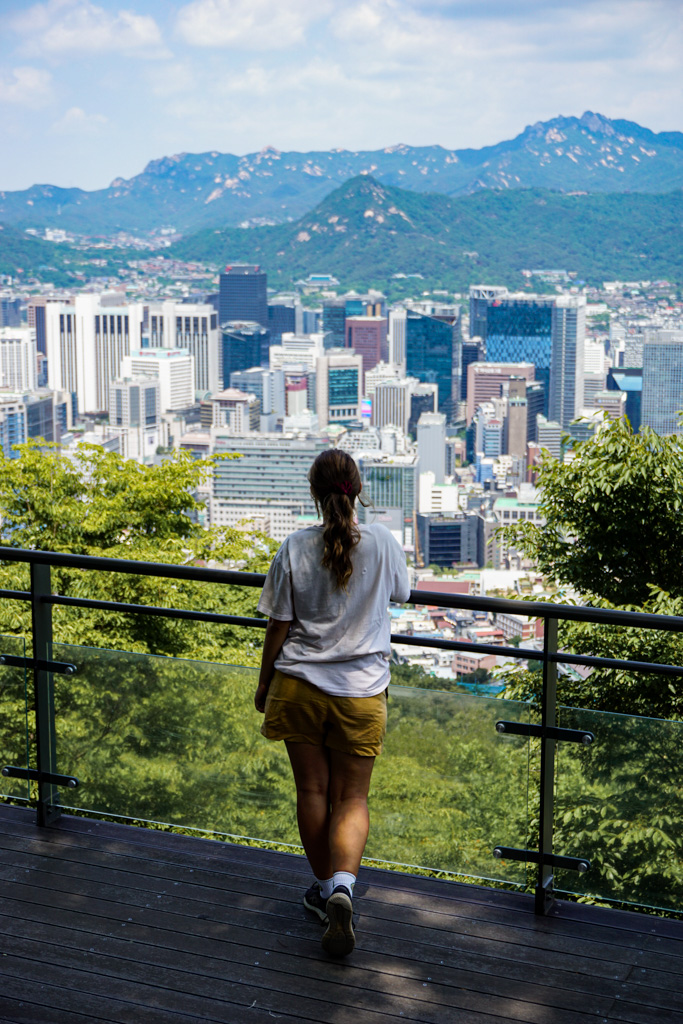
Browse the streets of Itaewon
Itaewon is known to be a ‘foreigner’ area in Seoul with many international restaurants, indie shops, bookstores and hair salons! If you’re missing home comforts it could be a great place to be and you don’t miss out on the Seoul vibe here too. We recommend Plant Cafe Seoul ( location ) for lunch or an afternoon chill.
There are so many lovely vegan spots in the Itaewon area. Check out our Vegan in South Korea Guide – Best Restaurants & Snacks (2024) !
Some of the best nightlife in Seoul is right in Itaweson, with casual beer bars and dance clubs around the area you’ll find a spot anywhere to spend the night. It’s another reason why locals love living here.
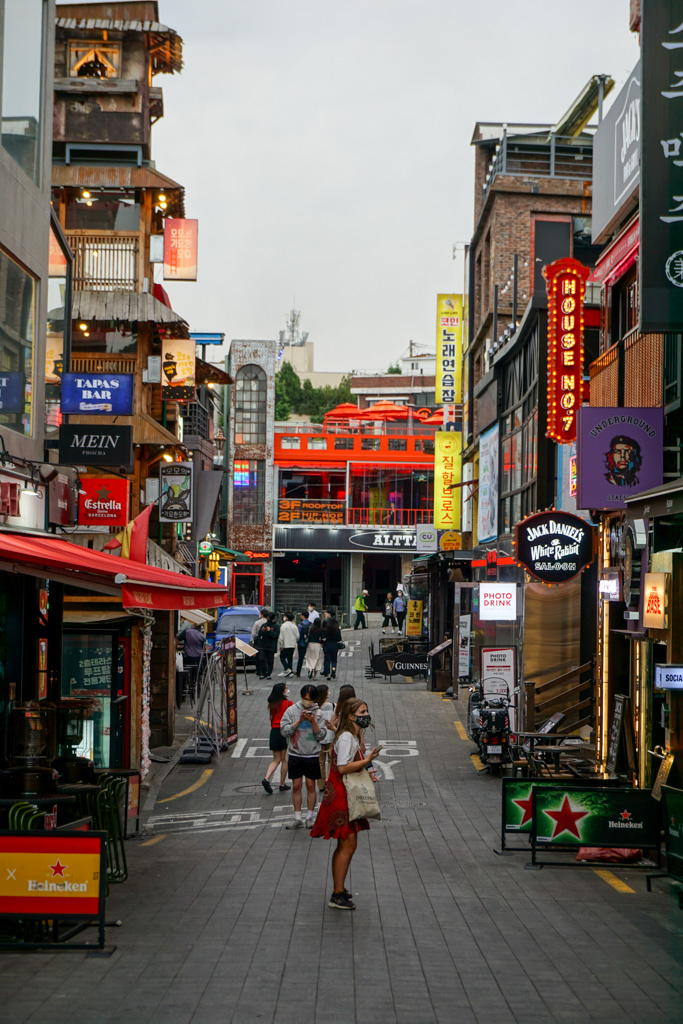
The War Memorial of Korea museum is right around the corner and here you can learn a lot about the history and war of Korea (location). The entry is free, and you can find more information here on their website!
Day 4 – Palace & Hanbok Rental, Market & Naksan Park
Rent a hanbok & visit gyeongbokgung.
Gyeongbokgung is one of the most beautiful palaces in Seoul. It was the main royal palace of the Joseon dynasty and was built in 1395. To make your visit even more special, you can rent and wear hanbok for a few hours. There are many rental shops around the area of the palace. We found a great rental shop on Klook and it worked out more affordable than in the shop.
What is a hanbok? – The term “hanbok” literally means “Korean clothing”

Our experience renting a Hanbok in Seoul
Before visiting Seoul, we heard that this was a popular thing to do. We booked our rental on Klook with Hanboknam Gyeongbokgung Store and there was so much choice! We arrived at 9:30 am and were the first ones of the day to wear hanbok.
There were a few other people in the palace wearing hanboks and taking photos so we didn’t stand out too much anyway. Koreans are really welcoming to foreigners wearing hanbok and a woman even helped me tie my bow again when it came undone.
Find the link on Klook here – Hanbok Rental Klook

Eat the best street food at Gwangjang Market
Visiting the Gwangjang Market has to be on your 5 days in Seoul itinerary! It was one of our favourite spots to eat and we came back three times. It’s one of the oldest and largest traditional markets in South Korea with over 20,000 employees and 5000 shops. Find the location here – Gwangjang Market !
Best foods to try: Mungbean Pancake, Bibimbap, Kimchi Dumplings & Tteok-bokki
Have you ever seen the Netflix programme Street Food: Asia? The Seoul episode was filmed right here at Gwangjang Market. You can find the vendors by looking out the Netflix signs on their stalls! It’s open both day and night.

Explore Naksan Park & the Mural Village
Naksan Park doesn’t usually make it onto a 5 day Seoul itinerary, however, we think it’s a lovely local park with more great views of the city. The views are beautiful day or night, so depending on your energy you can take a rest and come back later! Gwangjang Market is also good at night.
Ihwa Mural Village
Ihwa Mural Village is a lovely way to spend an afternoon. It’s nestled in a residential area just next to Naksan Park and of course, you can find many types of artwork. The murals were created here to make the area bright and attractive again. It’s important to lower your voice in these areas to avoid disrupting the locals that live here.

If you have some time left at the end of your day, stop by Namdaemun Market ( location ) and Overte ( location ) for some shopping and doughnut snacks! It’s in the Myeong Dong area and you may want to find some dinner there too!
Day 5 – Seoul Forest and Gangnam or Day Trip
We’re using this day to relax a little after a busy few days in Seoul already. Check the section below if you want any alternative ideas for your last day in Seoul (Such as theme parks, tours or day trips).
Here’s a few Seoul day trip tickets to book in advance:
- Nami Island – Visit Nami Island’s world-famous tree-lined landscape – Find tickets here !
- DMZ Tour – Book tickets with Klook here !
- Lotte World – Find tickets on Klook here !
Relax in Seoul Forest
Head to a local convenience store, and grab some snacks for a picnic at Seoul Forest. On your 5 day Seoul itinerary, maybe you’d like to feel like a local for a morning! Find the location to Seoul Forest here !
The park is big and you can spend a while here admiring the flowers and nature. Taking a fresh breath away from the city for a busy afternoon of exploring.

On a budget in South Korea? Here’s 10 Best South Korea Budget Tips + Travel Costs (2024) !
Wander through Gangnam
You must have heard the famous song Gangnam Style ! Did you know it’s actually a real place, right here in Seoul!? Gangnam means south of the river, which is exactly where it’s located in the city. It’s known as one of the richest and wealthiest districts in South Korea . Definitely worth a visit on your Seoul 5 day itinerary.
Gangnam Shopping Street
When visiting the shopping street in Gangnam you’ll find many kinds of trendy shops including the flagship store of Kakao Friends (very popular in South Korea) . You’ll also find 8 Seconds, Uniqlo, Zara and many cosmetics shops too! Here’s the location of the main street in Gangnam – Gangnam Shopping Street Location
COEX Mall & Starfield Library
A short bus ride away is COEX Mall, home to Starfield library and the Gangnam Style statue. You may have seen photos of this beautiful library in Seoul! Here’s the location – Starfield Library Location . The mall itself is filled with restaurants, cafes and more trendy shops.
It’s also another amazing place to visit at night to watch all the signs brighten up the streets. It’s kind of the same everywhere in Seoul, as it’s all so beautiful!

5 Day Seoul Itinerary Breakdown
Day 1 – Insadong, Ikseon-dong & Myeong Dong / Day 2 – Changdeokgung, Changgyeonggung, Bukchon Village & Hongdae / Day 3 – N Seoul Tower & Itaewon / Day 4 – Gyeongbokgung, Hanbok, Naksan Park & Gwangjang Market / Day 5 – Seoul Forest & Gangnam
Where to stay in Seoul : Hostel Tommy – Find on Booking.com here !
Alternative Ideas for 5 days in Seoul
If you would rather have an extra day to do a day trip from Seoul, then cut out Seoul Forest and add Gangnam to Day 3. You will then have Day 5 completely free to do another activity of your choosing!
- DMZ Tour – This is highly recommended when spending 5 days in Seoul – learn about the history of the Korean war and visit the Demilitarized Zone of Korea with a view of North Korea. You can Book tickets with Klook here !
- Lotte World – Take a day to visit the Disneyland of Korea. Tickets are quite affordable and there’s something for everyone at this theme park! Find tickets on Klook here !
- Nami Island – A short ferry away from Seoul, is the beautiful Nami Island. It’s a great way to escape the city and you can even take a zip line onto the island – Find out more here !
- Deoksugung (one of the five Royal Palaces) Find the location here – Deoksugung Palace Location !
- Something unique to do in Seoul – Handmade Stamp Engraving !
- Seoul Eland Hangang River Cruise – Find tickets on Klook here !
If you’re ever buying tickets in Seoul, South Korea or a lot of places in Asia – Klook is one of the best websites to find discounts . We’ve used it several times, including the Seoul Tower and Disneyland tickets in Japan. It’s super easy and you can save so much!

Best Restaurants in Seoul
We have great recommendations of places to eat for 5 days in Seoul, however, we eat plant-based. You can find Korean food everywhere in Seoul, so it’s not too hard if you don’t eat meat. If you’re vegan travellers like us, there’s a bit more research that needs to be done. Here are our favourite spots in Seoul:
- Osegye Hyang – Traditional Korean vegan restaurant ( location )
- Maru – Vegan street food ( location )
- Gwangjang Market (Stall A11) – Vegan options at the famous market ( location )
- Plant Cafe Seoul – International vegan cuisine in Seoul ( location ) ( website )
- By Tofu – International vegan cuisine, sandwiches! ( location )
Are you looking for vegan food & restaurants in Seoul? Here’s our Vegan in South Korea Guide – Best Restaurants & Snacks (2024) !

Best Time to Visit Seoul
Ultimately you can visit Seoul all year round. South Korea experiences all 4 seasons which means you can see different sides of Seoul if you come in different months.
However, the best time to visit Seoul is March to May and September to November when the weather isn’t too hot or too cold. These months may also be off-peak apart from the famous cherry blossom season in April.
For your Seoul 5 day itinerary, we recommend visiting in these months to enjoy a variety of what the city has to offer!
Korean Phrases to Know in Seoul
- An-nyeong-ha-se-yo – Hello
- Kam-sa-ham-ni-da – Thank you
- Ju-se-yo – Please
Dong – neighbourhood (You may notice a lot of places to visit end with dong).
Budget for 5 days in Seoul
When planning our 5 day Seoul itinerary, we wanted to stick to a budget. We kept track of our expenses and have shared a full guide here on The Sunrise Dreamers .
For 5 days in Seoul estimate at least £70 a day per person, not including flights. Public transport around Seoul is very affordable!
Here are a few examples of our costs in Seoul:
- Accommodation – 52,000₩ (£34.20) per night / 26,000₩ (£17.10) per person
- Hanbok Rental – 24,000₩ (£15.80)
- Bukchon Observatory with free drinks – 6,000₩ (£4)
- Lunch at a Traditional Korean Restaurant – 27,000₩ (£17.80)
- Lunch at a Hot Pot Restaurant – 26,000₩ (£17.15)
- Lunch at 7-Eleven – 83,00₩ (£5.50)
- KTX (Fast Train) Seoul to Gyeongju – 2 hours – 49,000₩ (£32)
Also, check out our in-depth 10 Best South Korea Budget Tips + Travel Costs (2024) with a breakdown of all our travel costs in Seoul and more South Korea.
What to pack for 5 days in Seoul
- Joby GorillaPod 3K Pro Kit – The best lightweight tripod to catch amazing photos if there’s no one around you. We use a camera on our Joby GorillaPod and there’s also a Joby Phone Tripod to capture beautiful videos of your 5 day Seoul itinerary.
- Sony A6400 + Sony 18-135mm Lens – The perfect compact combo for great on-the-go photography. Seoul is a beautiful city to capture behind a lens.
- GoPro Hero 12 with all of the essentials – We use a GoPro to capture action shots on our travels.
- Stainless Steel Water Bottle – Always carry a reusable water bottle with you in South Korea.
- Amazon Basics Packing Cubes – Packing cubes are one of our favourite travel essentials, they make life easier!
- Anker Power Bank – A portable charger is another great must-have travel essential.
- Rain Mac in a Bag – A lightweight raincoat to help with any rain on your 5 days in Seoul.
- Osprey Farpoint 40l Backpack – A great backpack is always essential. Ranging from weekend getaways to months of backpacking, the Farpoint 40l is perfect.
Portable Wifi – A great option if you want to connect your phone and laptop! Find a portable Wifi on Klook here ! (£2 a day) Pick up from Seoul or Busan airport.
Where to visit after Seoul
Are you spending more time in South Korea after your 5 Day Seoul Itinerary? If so we have some suggestions!
- Gyeongju – Wander around the tombs of South Korea and admire the nature Gyeongju has to offer.
- Busan – Catch a train to Busan and explore the second-biggest city in South Korea.
- Jeonju – Home to the bibimbap is, Jeonju. Spend a night in a Hanok home and explore the traditional village.
- Seoraksan National Park – only a 2-3 hour bus ride away from Seoul is a beautiful national park to hike, camp and enjoy.
More South Korea guides:
- Ultimate 2 week South Korea Itinerary: Best Places (2024)
- Staying in Golgulsa Temple: The Best Templestay in Korea (2024)
- 3 day Busan Itinerary: What to do in Busan (2024)
- 11 Best Things to do in Gyeongju: Itinerary (2024)
- 25+ Best South Korea Travel Tips: What to Know
- Ultimate South Korea Bucket List: 20 Best Things To Do
- Vegan in South Korea Guide – Best Restaurants & Snacks (2024)
- 10 Best South Korea Budget Tips + Travel Costs (2024)
- All our South Korea posts!
That’s the end of our 5 Day Seoul Itinerary – Best Things To Do (2024) ! Have an amazing time in Seoul exploring the capital of South Korea and if you need any more help planning – send us a message on Instagram (@thesunrisedreamers) or leave a comment below!
LIKE THIS POST? PIN IT FOR LATER & SHARE IT WITH OTHERS!

Don’t forget about Travel Insurance! – SafetyWing Nomad Insurance
SafetyWing is a totally flexible monthly-rolling travel insurance to help you stay safe on your trip anywhere in the world. Find out more here!
Amy & Dan are the founders of The Sunrise Dreamers. They are travellers from the UK who have been on the road since 2017 whilst living in places like England, Canada, Thailand and the Canary Islands. They share their knowledge of travelling the world with detailed travel guides and tips. They're experts in vegan travel and show their audience how to travel on a budget.
Similar Posts

3 Day Koh Lanta Itinerary: Best Things To Do (2024)
Planning the perfect Koh Lanta itinerary? Here’s our in-depth travel guide to help you plan your trip to this beautiful…

The Best Krabi Itinerary: 3 Days in Krabi, Thailand
Thinking of spending 3 days in Krabi? Welcome! Here’s our in-depth travel guide with all the information you need to…

The Best 2 Day Melaka Itinerary: Things To Do (Malacca)
Melaka is a historically rich city in Malaysia with old heritage buildings, modern cafes and fascinating street art all spread…

3 day Ella Itinerary: What to do in Ella, Sri Lanka
Ella is Sri Lanka’s amazing mountain town, located between Kandy and the south coast. There are many great things to do…

3 Day Koh Tao Itinerary: Best Things To Do (2024)
Looking for a 3 day Koh Tao itinerary? Here’s our in-depth travel guide on the best things to do in…

The Best El Nido Itinerary: 3 Days in El Nido
Are you planning a 3 Day El Nido itinerary? Here’s our in-depth travel guide to help you plan your trip…
Love your hair 💕 those phrases are long. The temples look amazing and I spy McD and LUSH.
Thank you!! 😀 There’s lots of amazing temples and palaces in Seoul!
I really love your travel guide! We are traveling to south Korea this Summer (so excited). do you happen to have a guide explaining where to get off on these subway station?
Hi Katy! Thank you for reading, you’ll have a great time! At Incheon airport, go to Seoul Station and from there you can get anywhere around Seoul by public transport. Unfortunately, we don’t have a specific guide on how to get around Seoul yet, but we have a small section on this travel guide. Feel free to reach out to us on Instagram if you have any more questions 🙂
Great blog! Thanks for the tips
Thanks so much! 🙂
Leave a Reply Cancel reply
Your email address will not be published. Required fields are marked *
Save my name, email, and website in this browser for the next time I comment.
- Work with me
- Privacy policy

- Years in review
- United Kingdom
- Bosnia & Herzegovina
- North Macedonia
- Philippines
- South Korea
- South Africa
- Central America
- South America
- New Zealand
- Solo Travel
- Budget travel
- Travel tips
- Travel itineraries
- Hidden gems
- Bucket list
- Travel resources
- Digital nomadism
- Blogging tips
- Start a travel blog
Perfect South Korea Itinerary For 2 Weeks: Best Stops + Tips!
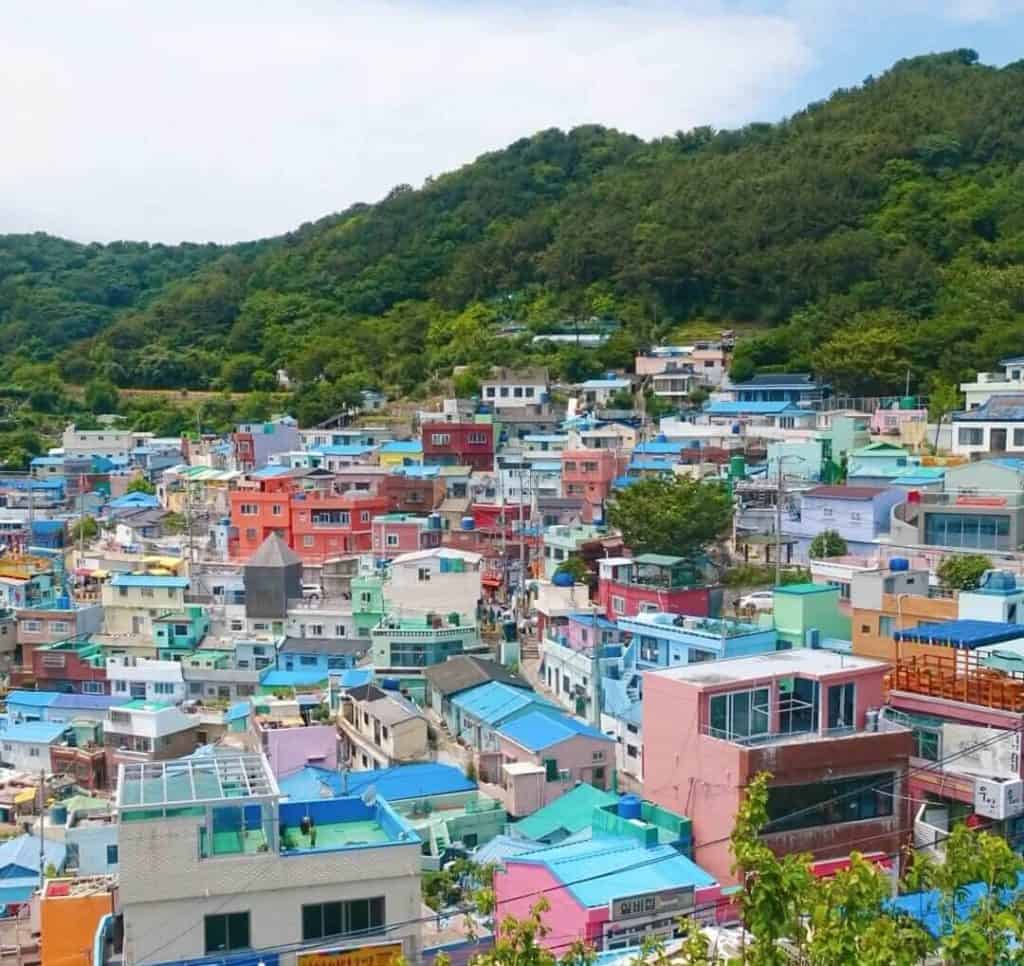
Table of Contents
This post may contain affiliate links to things like tours, hotels, Amazon associates and products. These help me earn a small commission at no additional charge to you.
Hey, stranger! Planning to spend 2 weeks in South Korea? I got you! This South Korea itinerary lets you soak up the culture, see the sights, do some hiking and relax on the beach.
Psst – don’t miss a thing during your trip thanks to my 40 South Korea bucket list items!
I recently followed the below South Korea travel itinerary so you can rest assured it’s tried and tested. I made all the travel mistakes so you don’t have to. What else are blogs for, right?
SOUTH KOREA ESSENTIALS Accommodation: Booking.com / Hostelworld Activities: GetYourGuide Getting there: air ( Skyscanner ) Getting around: Train ( Trip.com ) / bus Pre-book a Tmoney transport card Pre-book private airport to hotel transfer Stay connected: SIM card / portable WI-Fi Travel insurance: True Traveller (European travellers) / Hey Mundo (other nationalities) / Safety Wing (digital nomads)
What kind of South Korea itinerary is this?
The itineraries below are relatively fast-paced . You’ll see 4 places during 2 weeks in South Korea or 7 places during 3 weeks in South Korea. But you’ll still have a good few days in each place to soak up the culture (and devour copious bowls of bibimbap, naturally). If you want to see a new place each day and whiz around fast, this might not be the 2 week South Korea itinerary for you. I’m an advocate of slow travel but I appreciate you want to see a lot during 2 or 3 weeks in South Korea so I’ve aimed for a middle ground.
Check out my other 2 week Asia itineraries to Taiwan , Malaysia , Bali and Vietnam .
How long do you need in South Korea?
I believe 14 days in South Korea is enough to see it properly, providing you pick just a few places of interest. This will allow you to explore two major cities, Jeju Island and another destination of your choosing. Of course, the more time, the better!
Read next: 30 Korea travel tips
Internet & SIM cards in South Korea
There’s good Wi-Fi in South Korea, from hotels to cafes and even in the subway stations. However, when you’re out and about, you may want to stay connected by using a SIM card. I found out the hard way that tourists can only purchase SIM cards at the airport. Shops and market stands rarely sell them to travellers without a Korean residency card. I’d recommend being organised and ordering one in advance. Book your UNLIMITED 4g SIM to collect at Seoul airport or upgrade to include a Tmoney transport card . Alternatively, rent a pocket Wi-Fi device and return it at the airport when you leave. If you’re taking a big trip, it might be worth buying your own mobile Wi-Fi hotspot to bring with you.
Read next: 101 Asia backpacking tips
How to get around South Korea
The train and bus are both quick and efficient which saves valuable time during a South Korea itinerary. Trains can be booked on Trip.com , partner of Korail (the official railway network of Korea). Click the three stripes in the top right corner then the flag to change it to English. Buses are notoriously hard to book online for foreigners so it’s recommended to just turn up. I did this and always got a seat.
It’s also possible to fly between Korean cities although I chose not to for environmental reasons. However, you’ll need to fly when visiting Jeju Island. I use Skyscanner to find the best deals on flights.
Read next: all my South Korea travel tips
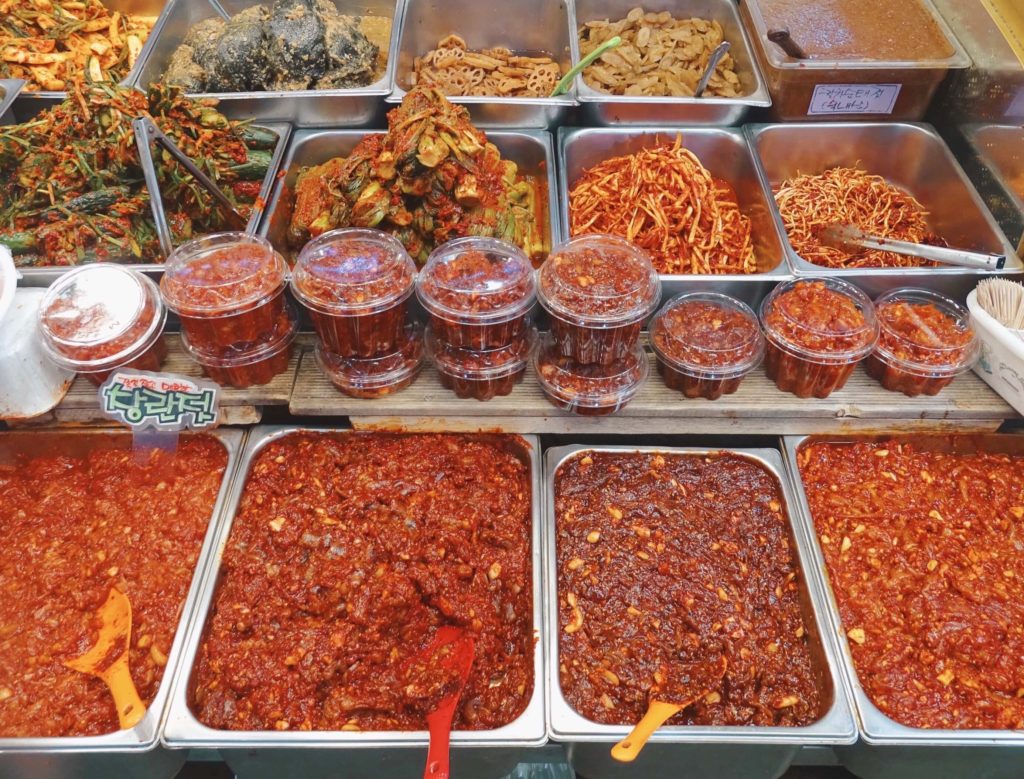
Getting from Seoul airports to the city
Getting from Incheon International Airport to Seoul: the international airport where you’ll probably be arriving is connected to Seoul Station by the AREX Express train (from T1 and T2 direct to Seoul Station), the All Stop Train (from T2, making 13 subway stops to Seoul Station). Finally, the Incheon Airport Bus costs 15,000 won and taxis start from 3,800 won. Getting from Gimpo Airport (domestic flights) to Seoul: a taxi on the metre should cost 15,000 won; the AREX All Stop train takes 20 minutes and costs 1,450 won, and the 6021 bus costs 7,000 won and takes 45 minutes.
From either airport, you can pre-book private airport to hotel transfer . The AREX Express train from Incheon Airport is included in the Discover Seoul Pass .
Budget for 2 weeks in South Korea
Korea is much more expensive than countries like Vietnam and Thailand but still cheaper than most Western countries. It’s a similar price to Japan. Here’s a quick summary of how much you can expect to spend during two weeks in South Korea:
Transport: A couple of my shorter journeys (i.e. Busan to Gyeongju and Daegu to Jeonju) cost just 5,000 KWR ($4 /£3.30) but the fast train between Jeonju and Seoul was more expensive at 30,000 KRW ($25 / £20). I could have saved money and caught a lengthy bus but for the most part, trains and buses are similar prices. Make sure to budget for flights to Jeju and back. They start at around 30,000 KRW each way. I use Skyscanner for flight booking. Accommodation: Beds in hostel dorms start at 22,000 KRW ($19 / £15) and private rooms cost around 32,000 KRW ($30 / £22). Hotels start at 45,000 KRW per night ($40 / £30). I suggest Hostelworld for finding hostels and Booking.com for hotels, homestays and apartments.
Read next: complete budget guide to South Korea
Street food: The good news is that you can eat during your South Korea trip for as little as 2,000 KRW ($1.50). It won’t be nutritious but it WILL be tasty. It’s worth noting most of the best street food markets are in Seoul and Busan; markets in smaller cities are more like wet markets selling fresh produce (which you can buy to make a healthy dinner if your accommodation has a kitchen). Restaurants: You’ll find meals from 5,000 KRW in modest restaurants. Bibimbap can be cheap as chips (and nicer). For more upmarket restaurants (and those in cool areas of Seoul), expect to pay up to 20,000 KRW a meal.
In total, 2 weeks in South Korea cost me 1,000,000 KRW ($830 / £620). This is a hostel & street food budget!
2 week South Korea itinerary overview
Days 1-5: Seoul . Explore Bukchon Hanok Village, Bukhansan National Park, Ihwa Mural Village, Gwangjang Market (amongst others), Insa-dong, Myeongdong, the DMZ, museums, Hongdae and Gangnam. Days 6-7: Sokcho for hiking in Seoraksan National Park (option for nature lovers and hikers) OR Jeonju (option for culture vultures and foodies). Days 8-10: Busan. Visit the Temple by the Sea (Haedong Yonggung), Haeundae Beach, Gamcheon Culture Village, Nampo district, Seomyeon district and hike Igidae Coastal Walk or Taejongdae Park. Days 11-14: Jeju Island. Discover the East, West and South coasts during different days. Got an extra week? Keep reading for my 3 week South Korea itinerary.
Days 1-5: Seoul
I’m assuming you’re starting your 2 weeks in South Korea in Seoul. If you’re beginning in Busan like I did, just reverse this route.
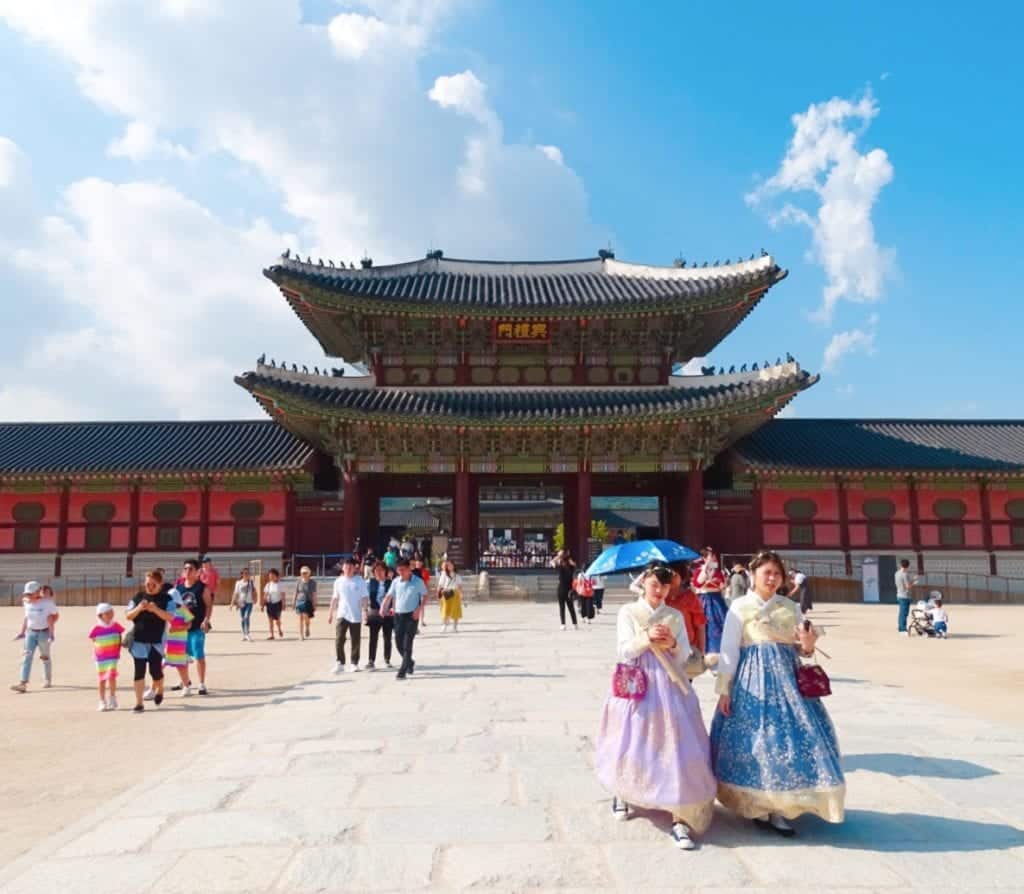
Seoul, South Korea travel tips:
- Collect your 4g SIM card or pocket Wi-Fi device at the airport
- Get a Tmoney transport card to save money and skip queues. Buy yours now or get it with a SIM card combo .
- Download an app like Navar since Google Maps doesn’t work properly
- Prebook your airport pick-up
Where to start with Seoul? After 2 years travelling around Asia , I felt at home in Seoul. Within days I’d decided it was my joint-favourite Asian city (tied with Hanoi ). It has everything: traditional palaces, informative museums, nature hikes, street art villages, quirky cafes, street food, fine dining, boutique shopping, crazy nightlife… The list goes on and on!
Read next: The ultimate 5 day Seoul itinerary
Is the Discover Seoul Pass worth it? From $37, you’ll get free entry to over 50 attractions and discounted entry to over 100 attractions AND a transport pass. I would say it’s worth it should you plan your time tactically and visit as many of the included attractions in the validity period. Research what’s included in the Discover Seoul Pass .
How to get around Seoul
For a huge city, Seoul is easy to navigate. The expansive Seoul subway has 20 lines with a map displayed in each station, but you can also download a Seoul subway mobile app (there are several to choose from). I also enjoyed travelling by bus because it’s nice to be above ground and see the city as you go. Although navigating a bus network in a city where you don’t speak the language may seem overwhelming, it’s not so bad: the journeys even show on Google Maps. You just need to pop your money in the box by the driver (so make sure you have the right change). The buses are priced according to colour so use this guide to bus travel in Seoul to work out what you need to pay.
Make sure to get a Tmoney transport card or a Discover Seoul Pass which acts like a travel card when valid!
Fun transport: the Yellow Bus Tour Seoul and the Seoul City Tour Bus are sightseeing buses for tourists, both included in the Discover Seoul Pass .
Day 1 – Bukchon Hanok Village OR Bukhansan National Park
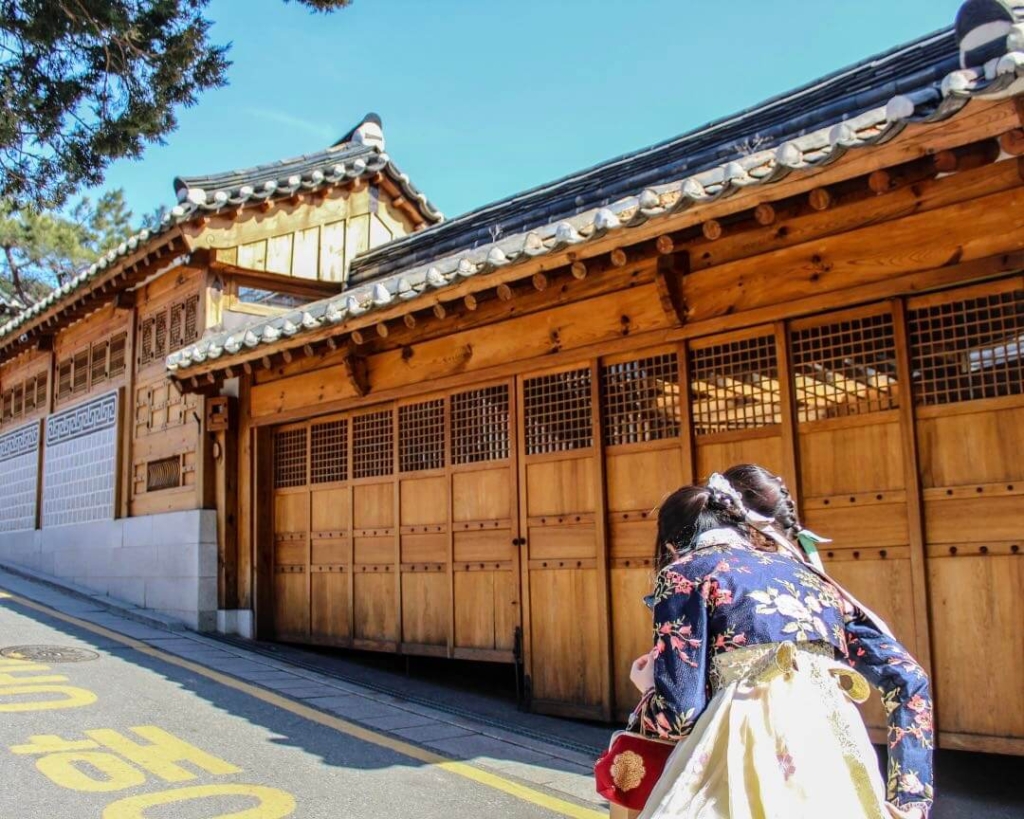
OPTION 1 – tour traditional architecture at Bukchon Hanok Village, preserved to reflect the architectural styles of the Joseon period (14th century-1897). Bukchon comprises a few hundred houses built, as all traditional hanoks were, facing north with water in front and a mountain behind. Bukchon retains all the charm of an ancient hanok village while offering visitors the chance to get immersed at cultural centres, cafes and tea houses. You can even stay overnight as many hanoks are now guesthouses. Take a 3-hour self-guided walk around Bukchon . Note that most attractions are closed Sundays . Getting to Bukchon Hanok Village: Take the subway to Anguk Station (Line 3), take Exit 3 and follow signs. Afternoon: After your morning culture dose, why not try walking Seoul City Walls? Hike along sections of this 18km wall constructed during the Joseon Dynasty overlooking spectacular city views. Better yet, it’s free! Naksan Mountain Trail is the easier trail (2km) and Baegak Mountain Trail is slightly longer (4.7km). The other great thing about Naksan Park is the wonderful sunset views from the top. DAY 1 , OPTION 2 – If you’re feeling energetic, a hike in Bukhansan National Park will certainly be a memorable addition to your trip. My favourite thing about Korea is how easy it is to jump on a city bus and arrive in nature.
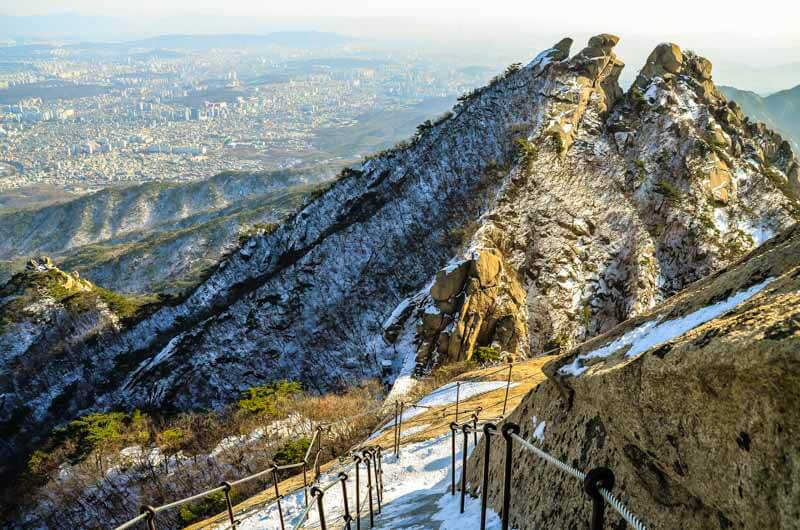
The Bukhansan Peak hike takes 4-5 hours (but you may wish to set aside 5-6 if you like to stop and take photos) but there are also other, more leisurely, trails in the park. If you’re a fan of the great outdoors, I have no doubt this will be a highlight of your South Korea trip itinerary. Getting to Bukhansan: Take subway Line 3 to Daehwa Station and board the 704 bus outside Exit 1. Get off at Bukhansanseong Fortress Entrance. Tips for Bukhansan : Hiking boots are preferable but comfy trainers will do. Make sure you have enough suncream, water and a hat in the summer, and rain gear in cooler months.
Related tour: since Bukhansan Peak can be a challenging climb, you may want to go with an expert guide who will provide you lunch, water and hotel pick-up. Book a day hiking tour .
DAY 1, OPTION 3: More about theme park adrenaline than the great outdoors? Spend the day at Lotte World instead. This theme park with water flumes, aquariums and the famous Lotte Tower observatory is a popular, modern attraction where you could easily spend a whole day, especially if travelling with kids.
Day 2 – Ihwa Mural Village, Gwangjang Market, Insa-dong & Myeongdong
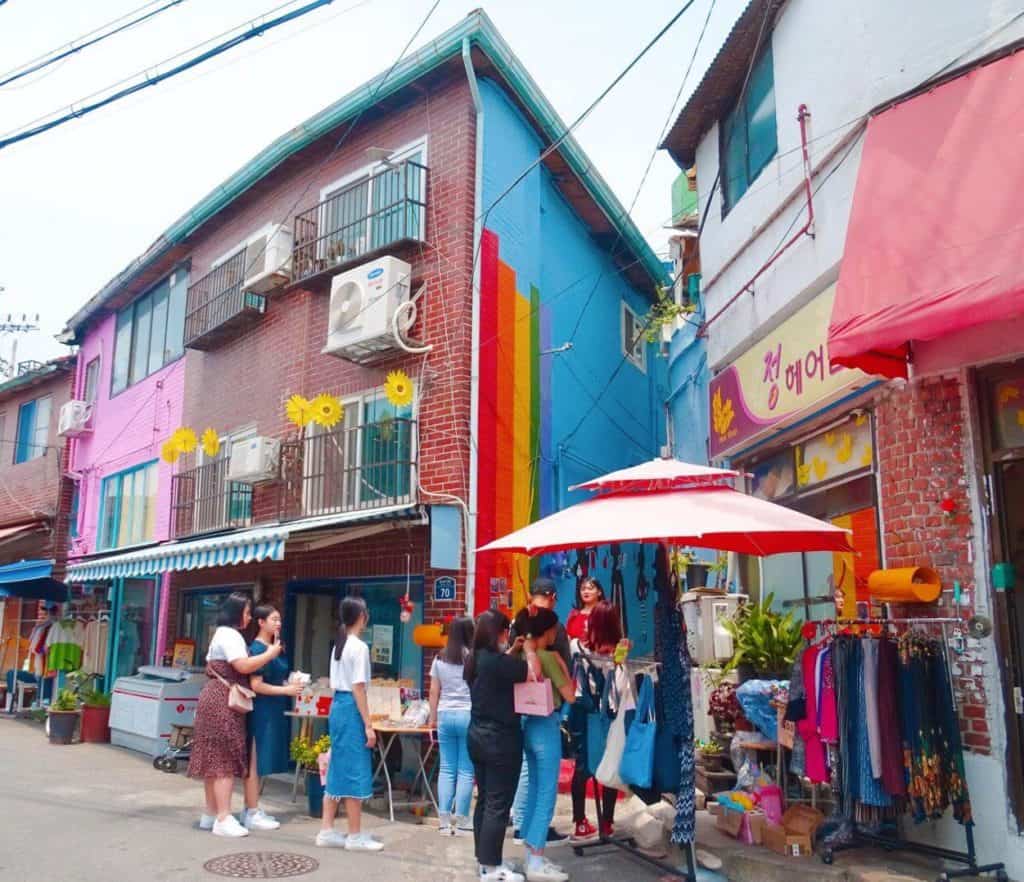
Morning: Fans of street art , or simply cool and colourful places, should pay a visit to Ihwa Mural Village . Like many mural villages in South Korea, this was once a rundown area that didn’t benefit from the flow of tourism to the city. The residents took fate into their own hands and gave their area a lick of paint… Or rather, thousands of licks of paint! Getting to Ihwa Mural Village: The nearest subway station is Hyehwa Station. Take Line 4 there and follow signs to exit 2. Tips for visiting Ihwa Mural Village: Wear comfy shoes and prepare for the steep steps leading to the village. Be respectful when taking photos: these are locals’ homes, not your selfie station!
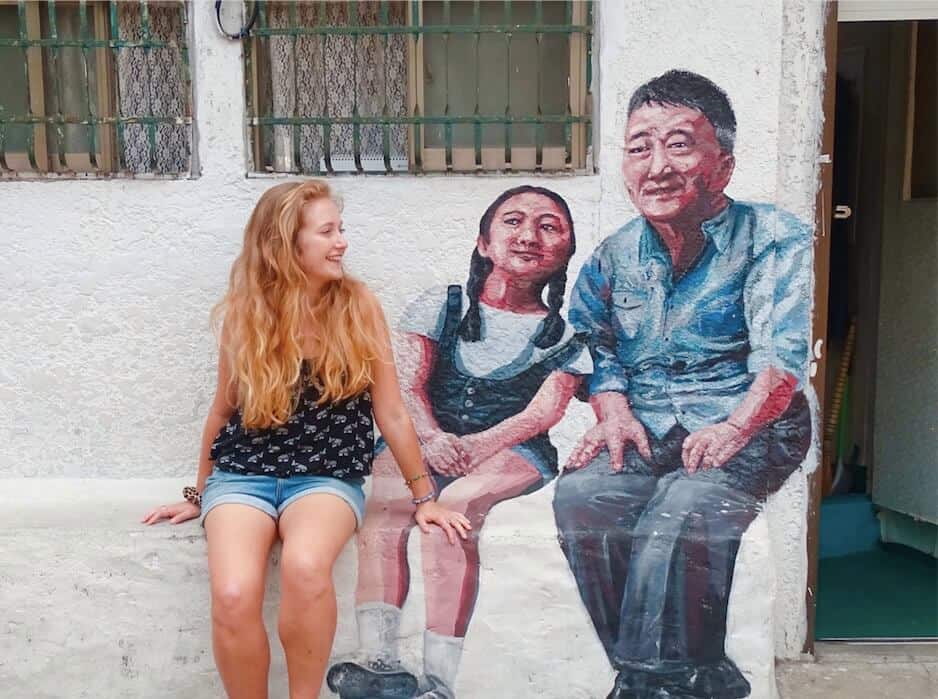
Gwangjang Market : For lunch, eat Seoul street food at this famous market not far from Ihwa Mural Village. Walk in 20 minutes or jump on a bus. Options include fried chicken, dumplings, bindae-tteok (mung bean pancakes) and more. If you’ve watched Netflix’s Street Food documentary, you may recognise chef, Cho Yonsoon, serving her famous knife-cut noodles. Eat them in soup with lashings of kimchi.
Afternoon: Journey to Seoul’s Insa-dong neighbourhood (just a 6-minute ride on subway Line 1 from Gwangjang Market), one of the oldest and most traditional neighbourhoods in Seoul (aside from Bukchon Hanok Village which you’ll have seen on day 1 of this Korea itinerary). Wander the traditional shops to get a feel for Insa-dong and sample flavoured tea and snacks at an authentic tea house. My favourite is Old Shin Tea House set inside a peaceful hanok. The plum tea is delicious.
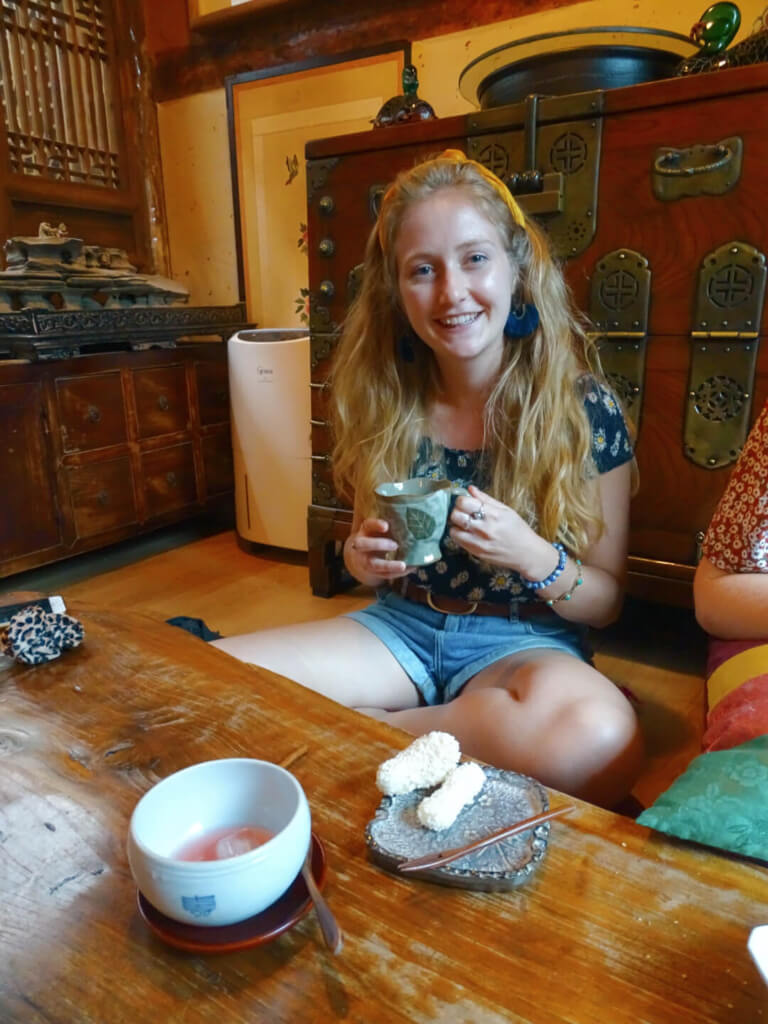
Getting to Insa-dong : Take Line 3 to Anguk Station (Exit 6) or Line 1 to Jonggak Station (Exit 3). Late afternoon: Jump on a 10-minute bus from Insa-dong to Myeongdong for a complete contrast. This bustling neighbourhood is flanked by skyscrapers and home to more beauty stores than you’ll have seen in your life. Head inside for free product samples. Despite being an upmarket area, there’s affordable street food at the open-air Myeongdong market . After gorging your heart out on tteokbokki, tornado potatoes and other Korean treats, you could finish your day by walking through Namsan Mountain Park to the Seoul Tower for sunset. Beware it gets crazy busy at weekends and there are long queues; book a skip-the-line ticket in advance or get free entry with the Discover Seoul Pass .
Day 3 – DMZ day trip
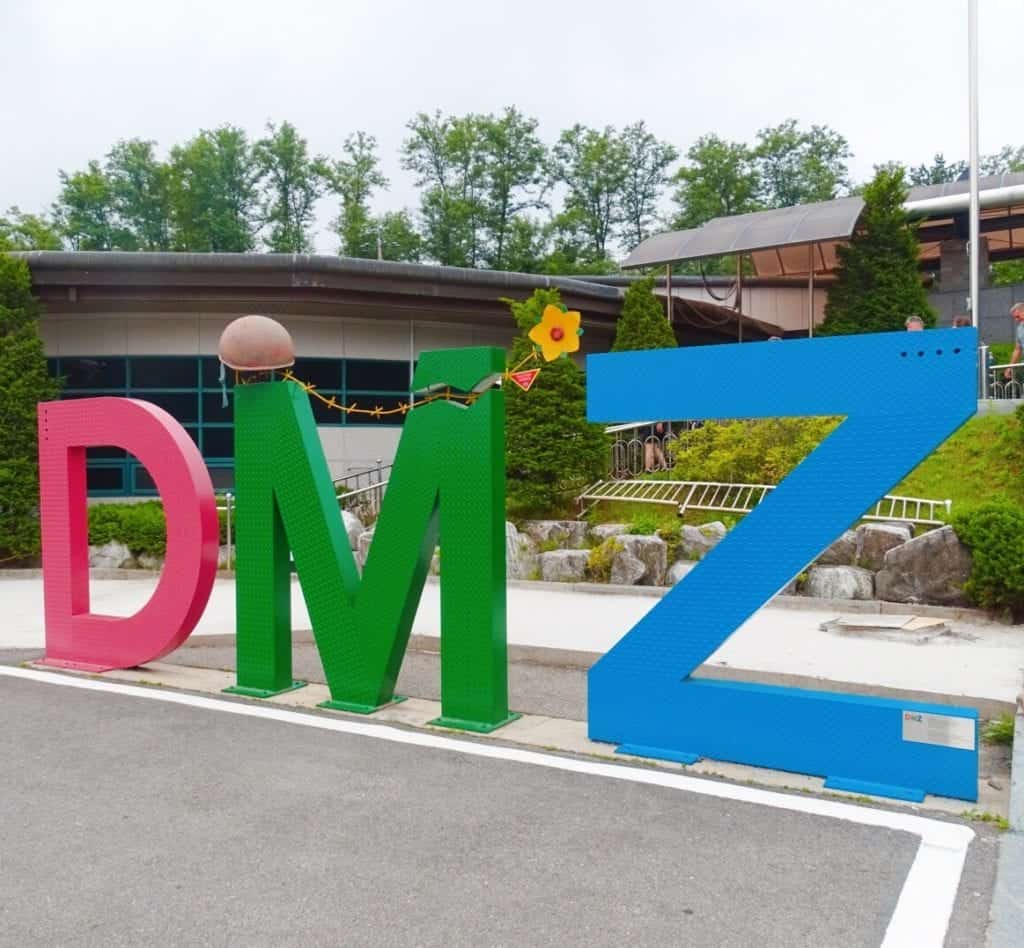
Take a day trip to the DMZ , a must for any South Korea 2 week itinerary. This buffer zone between South Korea and North Korea has a tragic history which you can learn about during a guided tour. Walk inside Third Tunnel, look through binoculars towards the Peace Village (a propaganda village built by NK to give the impression all is well in their country) from Dora Observatory, and visit Dorasan, the final train station before the border that will hopefully one day reunite families separated by the DMZ.
Recommended tour – since you can’t visit the DMZ independently, book a DMZ tour with Viator .
Note – as of 2023, tourists are now allowed to visit the Joint Security Area (JSA) after 2 years of closure. I haven’t noticed any popular tour companies add this back to their itineraries but I’ll keep checking. If you opt for a half-day trip, you’ll get back to the city early afternoon. Head to Hongdae for more weird & wonderful cafes, shopping and street performers. Have a street food dinner here or visit one of the many Korean BBQ restaurants. These go on well into the small hours, as do the many Hongdae bars and clubs.
Read next: Tips for visiting the DMZ from Seoul
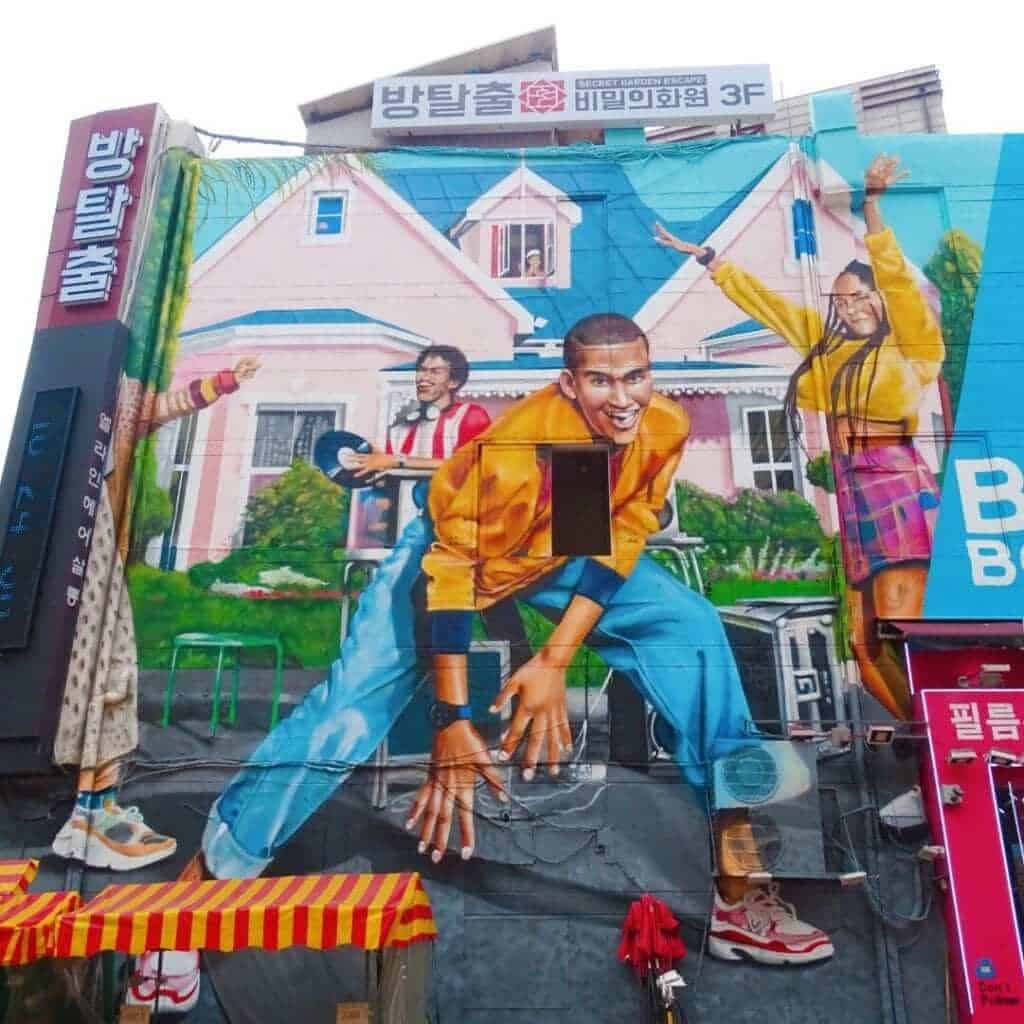
Day 4 – museum & culture day
No South Korea travel guide could miss the rich cultural heritage in Seoul. Visit the palaces, museums and galleries, breaking up the day by visiting Tongin Market for lunch. Here you can exchange tokens for a lunchbox of local food.
Gyeongbokgung Palace
Gyeongbokgung Palace is the oldest and most impressive of the five palaces in Seoul , built under the Joseon Dynasty. If you just have time for one, I’d recommend Gyeongbokgung because it’s the most beautiful, and easily accessible in central Seoul near Heungnyemun Gate. Built in 1395, this detailed and delicate palace could take half a day to explore. But if your time’s limited, make sure to visit at 10am or 2pm (apart from Tuesdays when the palace is closed) to witness the impressive changing of the guard ceremony.
More palaces in Seoul to add to your South Korea itinerary
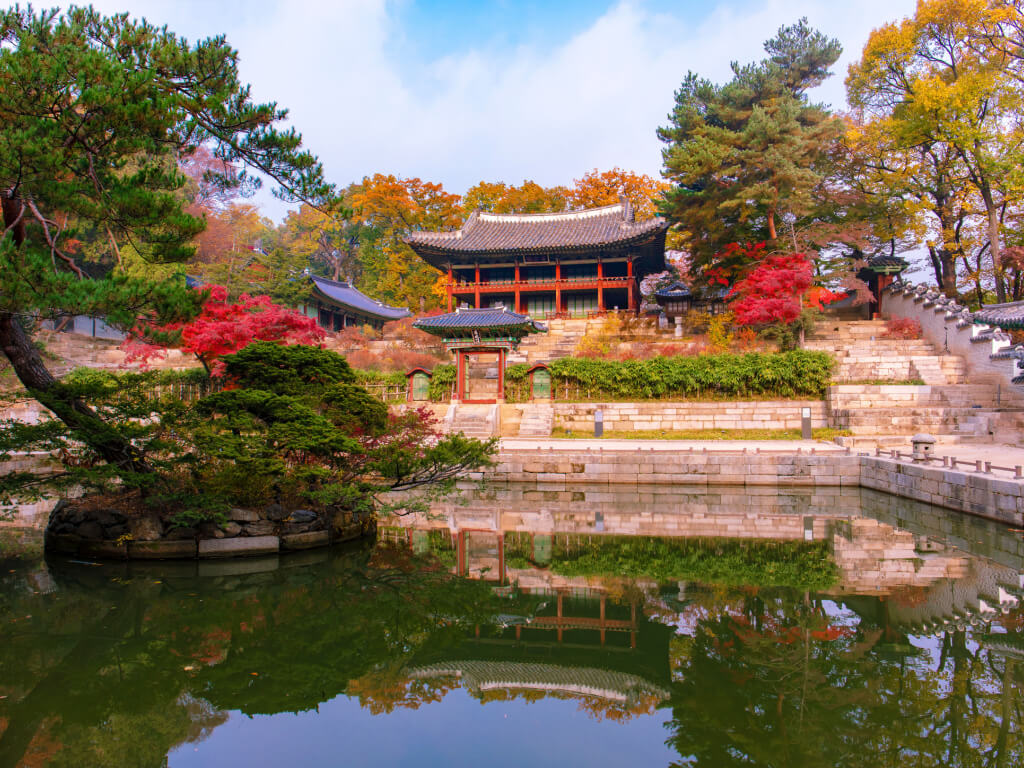
Changdeokgung Palace – surrounded by beautiful gardens measuring 78 acres, this is another serene palace to visit in South Korea’s capital with fewer crowds than Gyeongbokgung. With several pristine gates and temples, it’s little wonder it’s protected by UNESCO. Visit for a guided tour in English at 10.30am or 2.30pm. Closed Mondays. Deoksugung Palace – briefly Seoul’s main palace during an era when the others had burnt down. Find it near City Palace. Changgyeonggung Palace – like the others, this palace is bursting with history, having been destroyed several times during Japanese occupation. Luckily, it’s survived and is a lovely place to explore today. Gyeonghuigung Palace – the youngest and least-visited of the Seoul palaces is a hidden gem with more than 100 halls. It’s beside Heunghwamun Gate so makes for an easy add-on when visiting Gyeongbokgung.
Hanbok rental in Seoul
It’s a popular activity for tourists and locals alike to dress up in hanboks AKA traditional Korean clothing. As a White person, I initially felt uncomfortable at the idea of wearing clothing from another culture, in mind of cultural appropriation. However, Koreans will certainly encourage you to! If you feel comfortable, renting a hanbok will also get you into the Seoul palaces for free!
Seoul museums
- National Folk Museum of Korea – here you can learn about Korean life in the days gone by
- The National Museum of Modern and Contemporary Art – a vibrant contemporary art gallery
- National Museum of Korean Contemporary History – the place to understand recent history including Japanese rule and the split with North Korea.
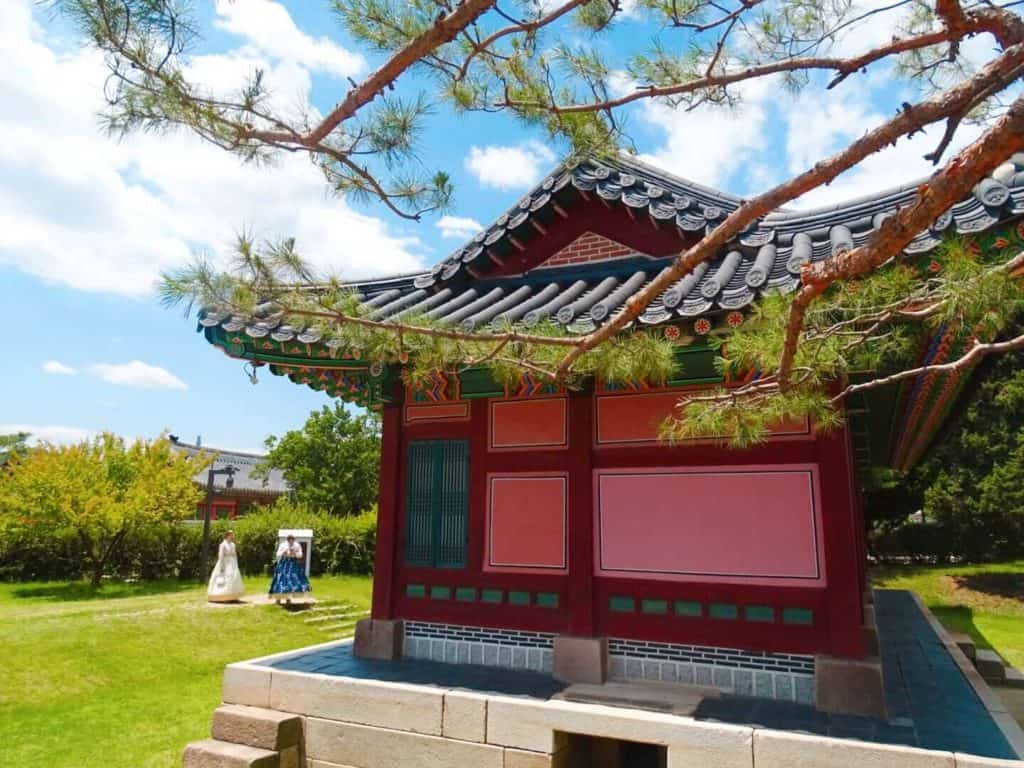
Day 5 – fun neighbourhoods
End this section of your South Korea itinerary by exploring Seoul’s modern side. Morning: Head to Gangnam to visit ‘ grammable Starfield Library and pose with the giant gold hand statue (inspired by a certain catchy pop song that brought Gangnam international fame). Although Gangnam is a modern neighbourhood these days, it has a long history. Visit historical Bongeunsa Temple founded in the year 794 by the highest-ranking monk of the Silla dynasty. Next, grab lunch in stylish Sinsa-dong neighbourhood. There are countless cool cafes packed with fashionable young Koreans. Afternoon: visit Itaewon district for hipster hangouts and the world’s best sandwich at Casablanca , or instead take a leisurely river stroll along Cheonggyecheon Stream. This is a peaceful place in Seoul where you’ll glimpse undisturbed wildlife.
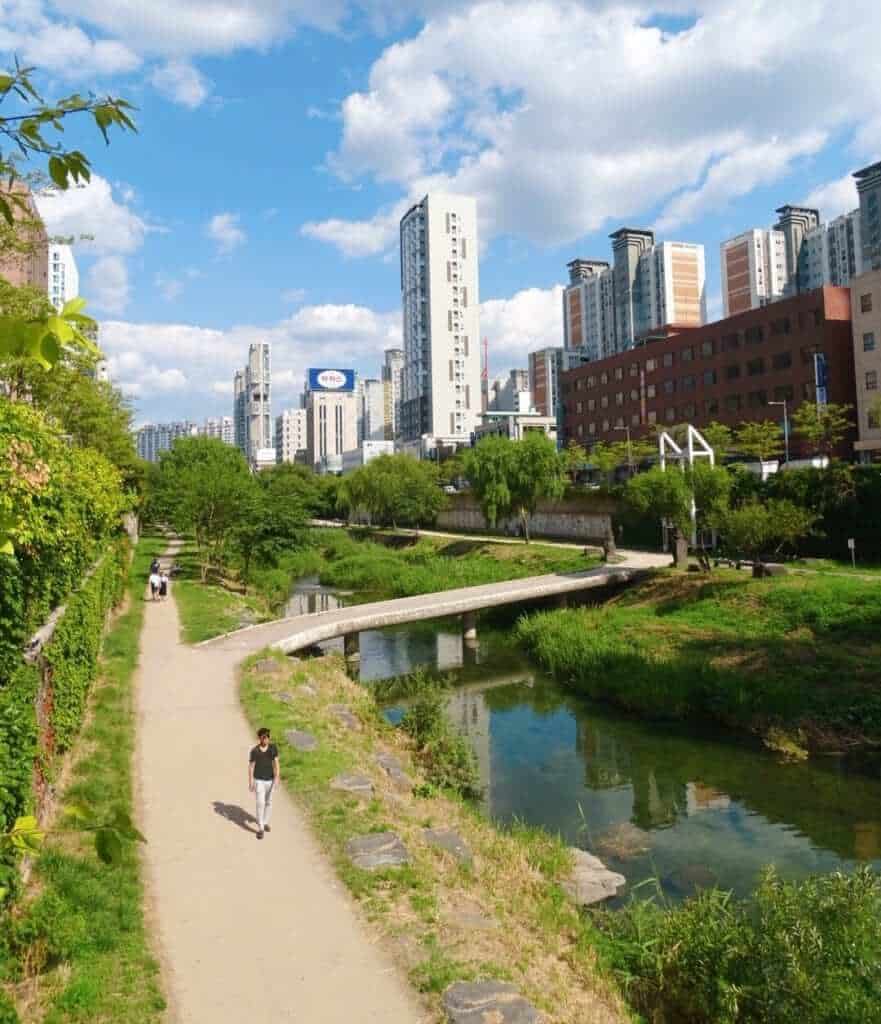
Where to stay in Seoul?
I would highly recommend Hongdae which is full of shops and cafes but isn’t as busy as the heart of the city. It’s easy to get everywhere from the metro station, plus there are many bus connections. Check out:
- Hostel – You can’t do better than Bunk Guesthouse Hongdae , one of the best hostels I’ve stayed at in 10 years of backpacking. The friendly owner remembers everyone’s name, there was complimentary breakfast, and my dorm room had a private lounge with sofas and TV. It was like a home from home. Check availability from US$22 per night .
- Budget hotel – Just 5 minutes from the subway and less than 900 metres to Jongmyo Shrine and Changdeokgung Palace, Hi Guesthouse Insadong is a clean and friendly base with breakfast and excellent shared facilities, including a sun terrace with BBQ, kitchen, laundry, and living area. Check availability from US$40 .
- Mid-range – With an unbeatable location, clean, modern rooms, and the friendliest staff around, it’s no wonder that Daeyoung Hotel Myeongdong is one of Seoul’s top-rated hotels. Check rates from US$60 .
- Splash-out – with gorgeous double rooms, a panoramic skyline view of the city and an indulgent breakfast buffet served in a stylish restaurant area, 9 Brick Hotel is where you can really splash out. Check rates from US$120 .
- Apartment – for the convenience of a private apartment not far from Hongdae, check out the comfortable studios at Dada Stay . Check rates from US$90 .
For more Seoul accommodation, check out Booking.com and Hostelworld .
Where to eat in Seoul
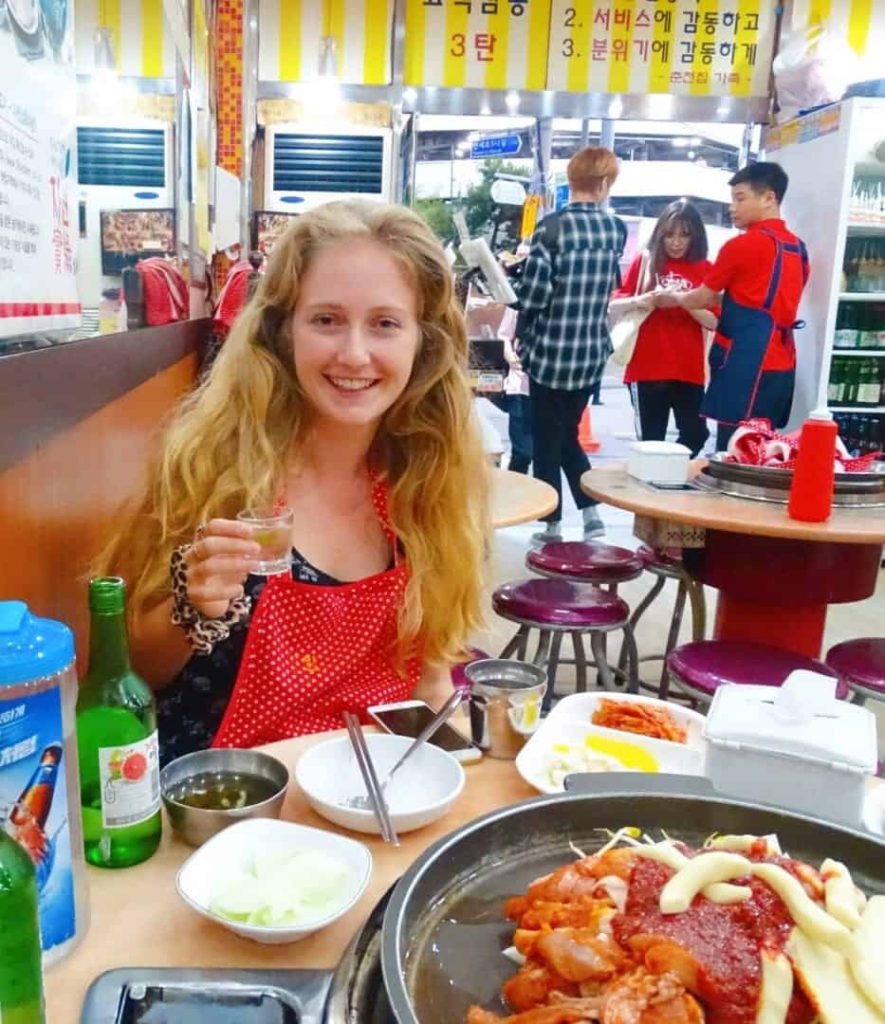
Well, where to even begin! There are so many places to eat in Seoul from fine dining to street food. Since I was travelling alone in South Korea , I’ll focus on the latter by telling you about some best food markets in Seoul… Myeongdong Market – in the heart of the thriving beauty district, this is a great place to nurture your body by shopping for skincare essentials… While also indulging your stomach with typical Seoul street foods sold at open-air stalls!
Namdaemun Market – this is one of the city’s most authentic night markets with a large indoor section with butchers stalls and fresh produce, and many stands outside. This market begins to wind down at 6pm so visit for lunch or an early dinner. Tongin Market – a vibrant daytime market near the main palaces and museums. Buy a ‘lunchbox’ and tokens to exchange for yummy local dishes.
Gwangjang Market – probably my favourite market, packed with every Korean delicacy under the sun! Better yet, it’s home to Cho Yonsoon’s knife-cut noodles that featured on the Netflix Street Food series. Also, a Korean BBQ meal and a dak galbi meal (rice cakes, chicken, cheese and gochujang sauce cooked on a hot plate) is a must for any South Korea itinerary! Annoyingly, they don’t usually serve them for one person but I managed to find a restaurant that would, for a slight surcharge. If you’re on a budget, make sure to eat bibimbap , one of the cheapeast and best Korean dishes !
What to do in Seoul at night?
Well, how long have you got? From crazy clubs to boujee bars and everything in between, this city truly never sleeps. But it’s not all about alcohol: you’ll see friends and couples drinking coffee at 2am and groups crowded around tables at buffet restaurants ’til sunrise.
Then, there are talented buskers who perform free K-pop concerts in the streets of Hongdae. There’s always something fun going on, not limited to the activities below:
- Take a pub crawl – join a guide and group of fellow partygoers visiting 4 bars in lively parts of town.
- Ghost stories walking tour – hear dark tales and learn about legends and true crime during this unique evening walking tour!
- Take an evening boat cruise or dinner cruise down the Han River
- Hike or take the cable car (then ride the elevator) to the top of the Seoul Tower for sunrise or night views
- Catch a NANTA show using traditional Korean music and performance to tell the hilarious tale of chefs throwing a chaotic wedding banquet
- Karaoke! Noraebang is the local name for karaoke, usually located in private booths you can rent out with your friends. As someone with a terrible singing voice, I much preferred this to having a bunch of strangers watch!
Days 6-7: Sokcho & Seoraksan National Park
Just 2 hours from Seoul is a stunning part of South Korea that many tourists miss. The main reason to visit Sokcho city is to hike in Seoraksan National Park , a beautiful area full of stunning cliffs and endless forest. If you love hiking and nature, don’t miss this stop from your 2 week South Korea itinerary .
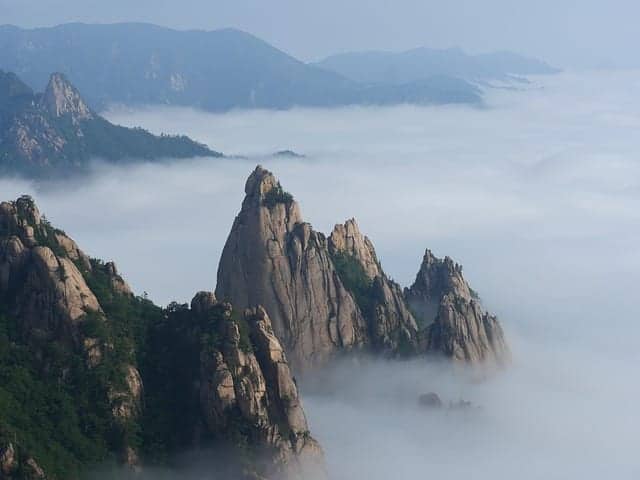
Getting to Sokcho: Buses run from Seoul Express Bus Terminal, taking 2.5 hours to reach Sokcho and costing 18,000 KRW. Day 6: Travel by bus to Sokcho. Check out Sokcho Beach. Day 7: Spend a day hiking in Seoraksan . From your accommodation, catch a bus to the Outer Seorak entrance of the park near the Seoraksan cable car. Just 10-minutes by foot from the entrance is Sinheungsa Temple with a 62-foot gold Buddha statue. Rumour has it this is the oldest Zen Temple in the world, built in the year 653. Better yet, a FREE bowl of noodles is handed out to every guest!
Where to stay in Sokcho
- Hostel – At just 1km from Lighthouse Beach and 400m from Sokcho Culture Centre, Sokcho Hutte is a conveniently located and budget-friendly hostel. Guests can enjoy the onsite bar, common area and delicious breakfast, alongside staying in clean, modern dorms with AC and private rooms with city or mountain views. Check availability from US$24 .
- Budget hotel – Sokcho & Guesthouse is a top-rated accommodation near the beach. Don’t miss the daily American breakfast, and stop by the shared kitchen and lounge. The super-friendly hosts can help book tours and bus tickets. Check availability from US$55 .
- Mid-range – Just 80 metres from Lighthouse Beach, you’ll have fantastic city or ocean views from your room at Heavenmark in Sokcho. Well-equipped modern rooms include air-conditioning, a TV, a balcony, a fridge, a kettle and a washer-dryer. Check availability from US$80 .
- Splash-out – Make the most of the Sokcho scenery from every immaculate sea view room at Lotte Resort Sokcho . Facilities include a water park, arcade, mini golf, infinity pool, gym, restaurants, and rooftop pub. Check availability from US$200 .
Browse more Sokcho accommodation on Booking.com .
Alternative days 6-7: Jeonju
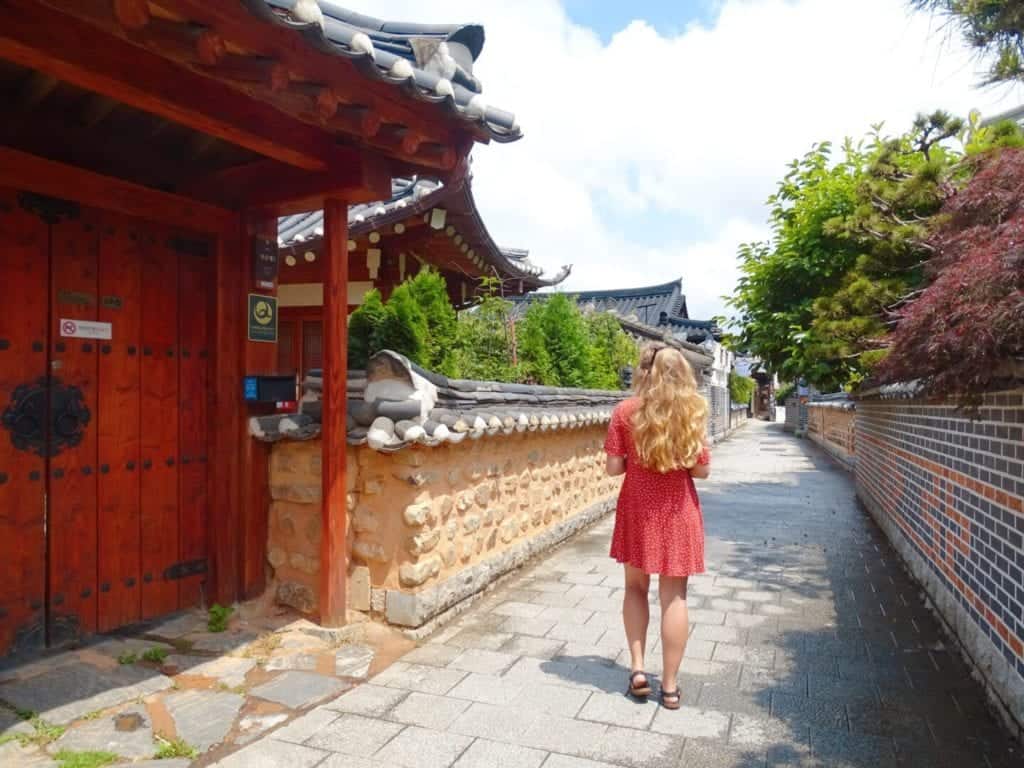
Prefer cities and culture to nature and hiking? Swap Sokcho for Jeonju to ensure this South Korea 2 week itinerary suits you. Getting to Jeonju: From Seoul, catch the train or bus in just under 3 hours. Book your train on Trip.com or simply turn up at the bus terminal if you’re catching a bus. The gorgeous little city of Jeonju is somewhere I’ve written about a lot since my visit. If you didn’t have time to visit Bukchon Hanok Village in Seoul, never fear because Jeonju is arguably even more charming. It’s a fantastic place to stay overnight in a perfectly preserved hanok house. If that doesn’t persuade you, Jeonju is a UNESCO City of Gastronomy and the birthplace of bibimbap. Foodies, drop what you’re doing and get over here!
Read next: Complete Jeonju travel guide
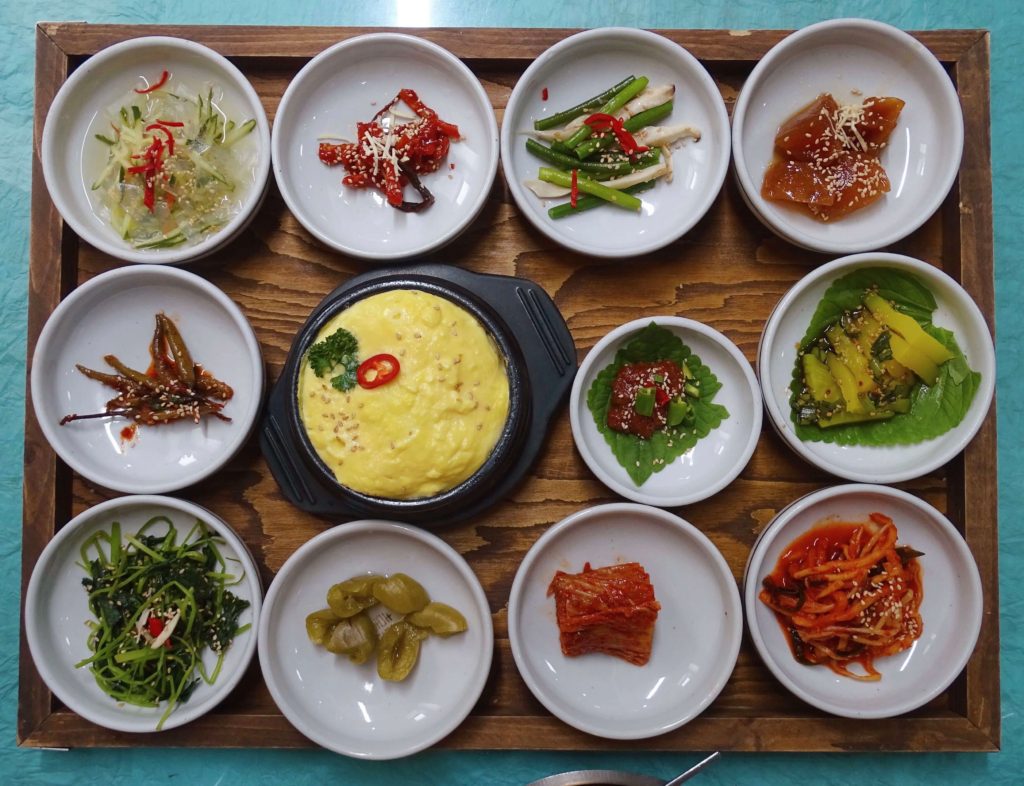
Day 6: Arrive in Jeonju and get your bearings. Head for dinner at Family House for a bibimbap feast (pictured above). Although I initially thought ordering a 20,000 KRW meal was pricey, I was stunned at the sheer amount of food that arrived. This is how Rose died and went to bibimbap heaven! Day 7: Explore Jeonju, visit the Hanok Village, eat at Nambu Market and spot street art Jaman Mural Village (a smaller version of Seoul’s Ihwa Mural Village). Honestly, you could see Jeonju in a day but I enjoyed staying 2 nights in order to relax during my busy 2 weeks in South Korea. If you try Jeonju’s famous makgeolli (Korean rice wine served in a teapot), you may need the extra day to nurse your sore head.
Where to stay in Jeonju
- Hostel – Happinessfull Hanok Guesthouse is a gem. This traditional hanok house is the real deal, with a modest floor bed and a TV showing K-pop and K-dramas. Although the owner could speak little English and I could speak even less Korean, she was so friendly and handed me maps and freshly-brewed tea. Check availability from US$35 .
- Budget hotel – Whoever put together the rooms at Kama Hotel thought of every modern amenity you might need, from a TV with Netflix to hair straighteners. It’s conveniently located near bus routes and includes a simple breakfast. Check availability from US$45 .
- Mid-range – With contemporary facilities, a great breakfast and city views, Hotel Arari is a clean and convenient base for exploring Jeonju. Check availability from US$57 .
- Splash-out – The well-located Best Western Plus Jeonju has an onsite restaurant, gym, outdoor pool, and cocktail lounge, so you’ll be well set to return and relax after a day of exploring the city. Check availability from US$85 .
Browse all Jeonju accommodation on Booking.com and Hostelworld .
Days 8-10: Busan
While some people describe Busan as just another big city, I liked it. No, it’s not as quirky or cool as Seoul but where is? Busan is still an excellent addition to any South Korea 2 week itinerary, as well as a launching point for reaching Jeju Island.
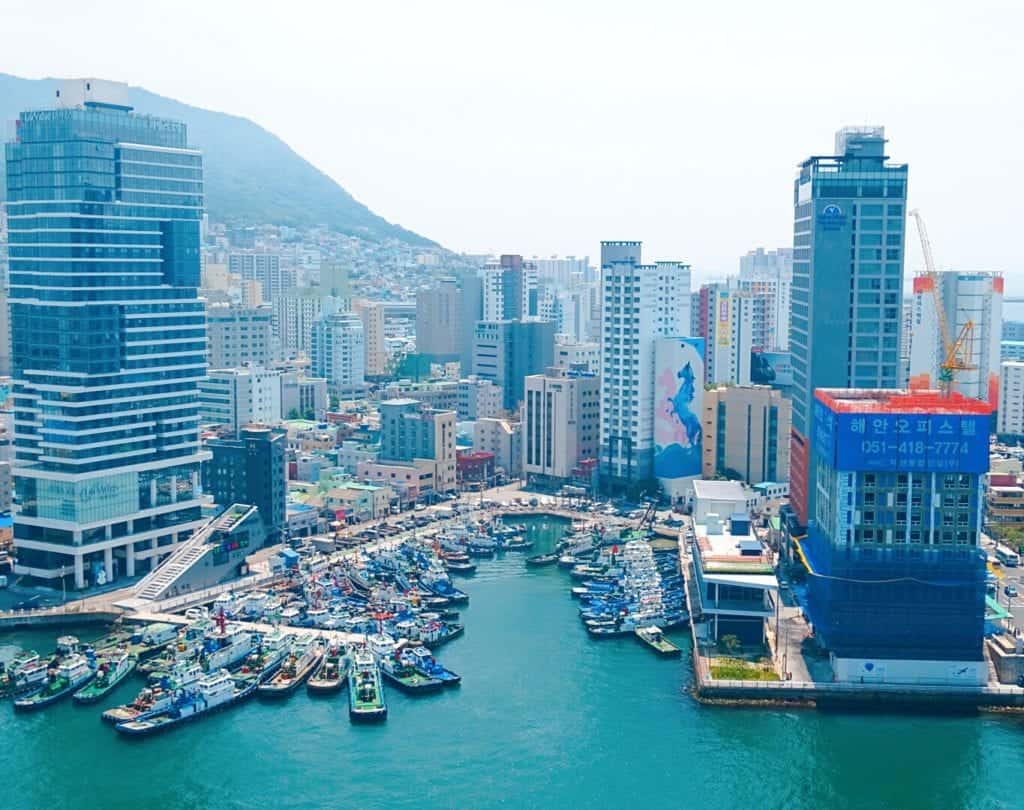
Getting to Busan: From Jeonju, you can catch a bus or train within 3 hours. If you were previously in Sokcho, you can take a 6-hour bus or alternatively a 2-hour bus to Seoul then a fast train to Busan in 2 hours 15 minutes.
Day 8 – arrive and sightsee
Depending on your arrival time, there are plenty of activities for your first day in Busan. One option is visiting the Temple by the Sea (Haedong Yonggung Temple). Alternatively, kick back and relax on famous Haeundae Beach. Chill out even further at Spa Land inside Shinsegae Centum City (shopping centre) in the evening. This is a traditional Korean jjimjilbang with a nude hot pool area. Visit after 8pm for a discounted ticket.
Read next: Busan 3 day itinerary
Day 9 – Gamcheon Culture Village & Nampo
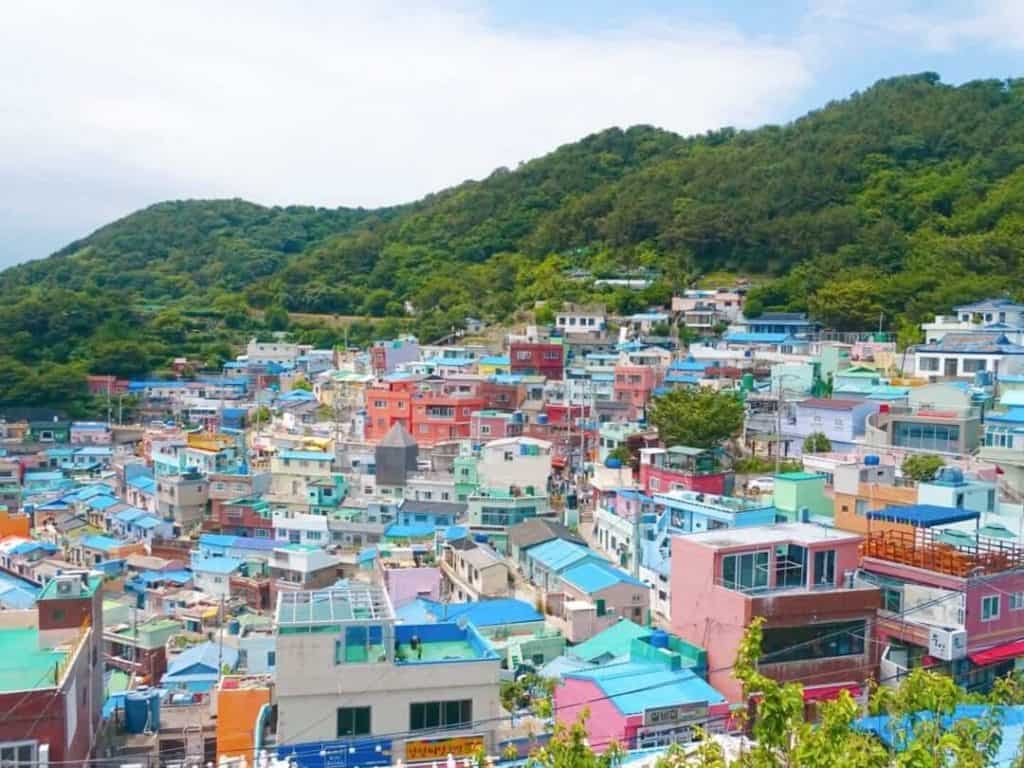
Morning: Visit colourful Gamcheon Culture Village . This once rundown neighbourhood is now a vibrant tourist attraction. As a street art fan, it was one of my favourite stops during 2 weeks in South Korea. As well as murals, there are cafes, cultural centres and arty statues. Afternoon: Head to Nampo district to climb Busan Tower, check out Jagalchi Fish Market, shop at Gukje Market and eat Korean street food in Biff Square.
Read next: The best day trips from Busan
Day 10 – hiking in Busan
Take a morning hike, add either Igidae Coastal Walk or in Taejongdae Park, across the bridge on a small island, to your South Korea itinerary. Relax in the afternoon at Gwangalli Beach then visit Seomyeon neighbourhood in the evening for street food, restaurants and nightlife.
More details about these hikes are listed in my guide to the best Busan day trips .
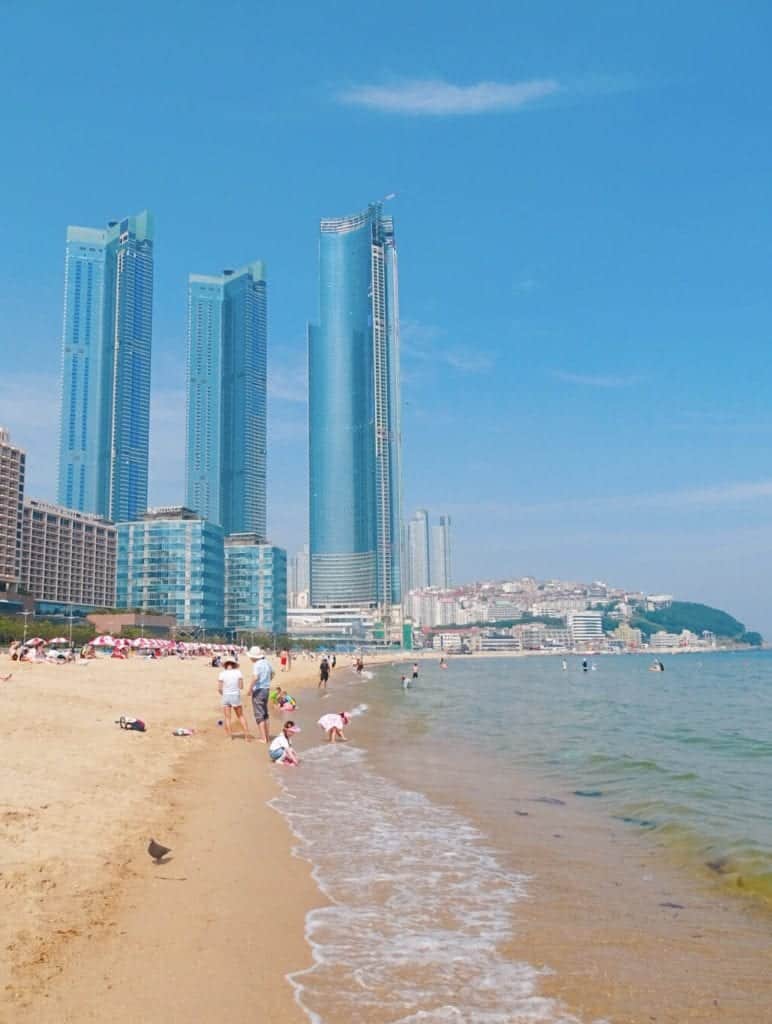
Where to stay in Busan
I would highly recommend Seomyeon neighbourhood because it’s full of cafes, restaurants and bars and it’s also the station where most of the subway lines connect, meaning it’s easy to get everywhere.
- Hostel: Book Blue Backpackers , run by a friendly family. This hostel down a sleepy side street makes it quiet at night, plus there’s complimentary breakfast and a comfy lounge area. Check availability from US$16 .
- Budget hotel: Stay at Seomyeon Brown-dot hotel gold for some of the area’s most affordable yet comfortable rooms, with TVs and en suite bathrooms. Breakfast included. Check availability from US$40 .
- Mid-range: Unwind at Nampo Ocean2heaven Hotel, which has an onsite fitness and spa centre with a sauna and baths. It’s conveniently located with city or sea views from each room. Check availability from US$75 .
- Splash out: For stylish rooms with mountain views and an excellent array of onsite facilities, including a gym, golf centre, spa, and sky bar, you can’t go wrong with a stay at Avani Central Busan . The breakfast spread is superb, too. Check availability from US$140 .
- Apartment: Close to Busan station and the port, Le Collective boasts stylish, spotless suites with city views and easy access to vibrant Chinatown. Check availability from US$100 .
Browse all Busan accommodation on Booking.com and Hostelworld .
Where to eat in Busan
Jagalchi Fish Market – for seafood in Busan, don’t go anywhere else! This is a thriving market where you’ll find fish, crab, oysters and so, SO much more. The way the market works is you pick a fish on the first floor, then head upstairs to eat it in a restaurant.
Gukje Market Street – Gukje is the largest market in Busan, serving every local dish under the sun. One of the famous is bibimdangmyeon AKA glass noodles.
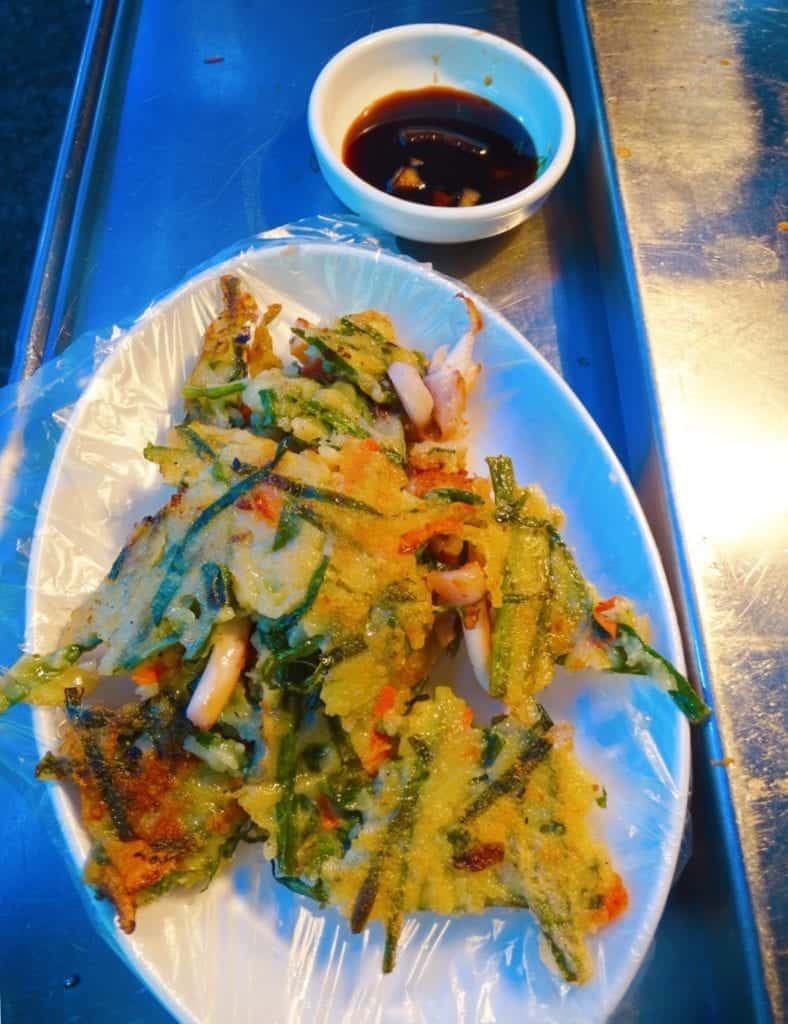
Top foods to try in Busan:
- Milmyeon – noodles in a meat-based broth topped with egg, veggies and gochujang sauce is the typical dish of Busan.
- Eomuk – fish cakes are a popular Busan dish, served in various shapes and flavours, including on sticks.
- Kimbap – yummy rice and veggies in sushi rolls. Unlike Japanese sushi, it usually doesn’t contain fish.
- Buchimgae – moreish seafood pancakes.
Days 11-14: Jeju Island
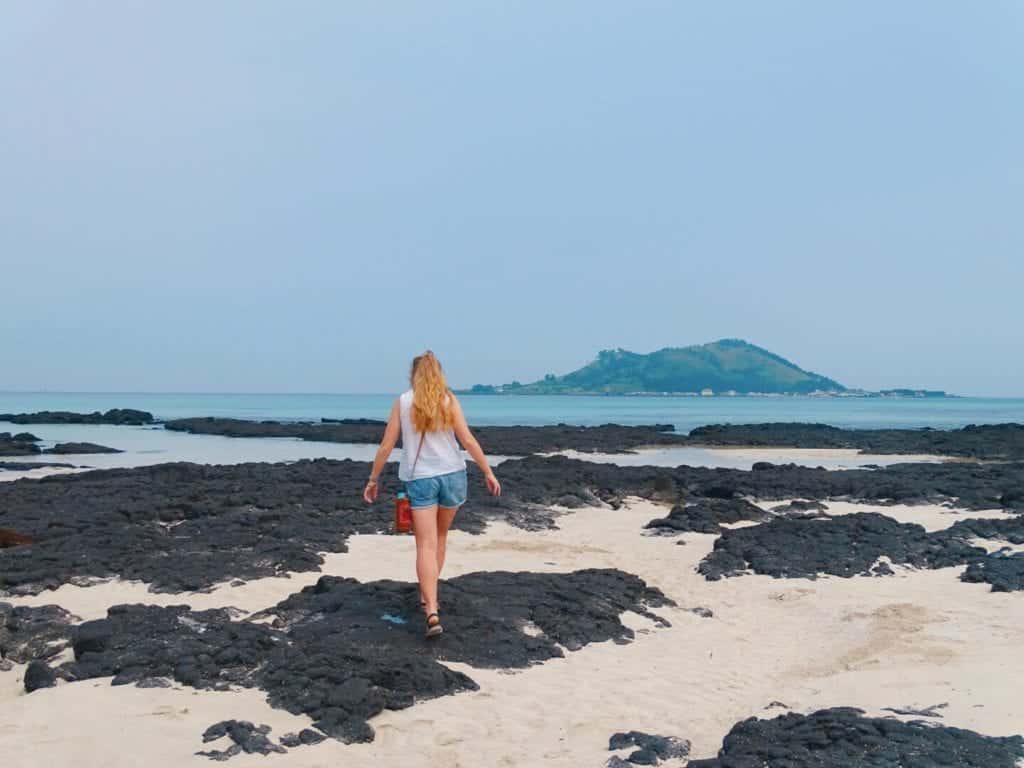
Jeju Island is a must for your 2 week South Korea itinerary. It’s been voted a New 7 Wonder of Nature alongside the Amazon and Cape Town’s Table Mountain. It’s so popular that Seoul to Jeju has officially been declared the world’s most popular flight route! The power of nature is what makes Jeju so special. Formed by ancient lava, you’ll feel it many places like the magnificent Manjanggul tunnels, Jusangjeolli Lava Cliffs and the beautiful ‘sunrise peak’ jutting off the coast, Seongsan Ilchulbong. Getting to Jeju: The best way to get to Jeju Island is by air. Many visitors fly Busan to Jeju but you could also consider flying from Seoul to Jeju and then into Busan. In this case, rejig this itinerary accordingly. You can also fly to Jeju Island from Daegu, Cheongju and Gwangju so check if any of those serve you better. How to get around Jeju Island: Hiring a car gives you the most freedom. Use Rentalcars.com to find a vehicle and pick it up in Jeju City. Otherwise, Viator offer a range of affordable day tours. While you can catch public buses on Jeju, these are infrequent so expect to see fewer attractions. Recommended tours:
- East Coast tour (Manjang Cave and haenyeo female divers)
- West Coast tour (Cheonjeyeon waterfalls, Hyupjae beach and tea plantations)
- South Coast tour (the Mysterious Road, Jusangjeolli Hexagon Lava Cliff and Mt Halla hiking)
Read next: A guide to visiting Jeju Island without a car
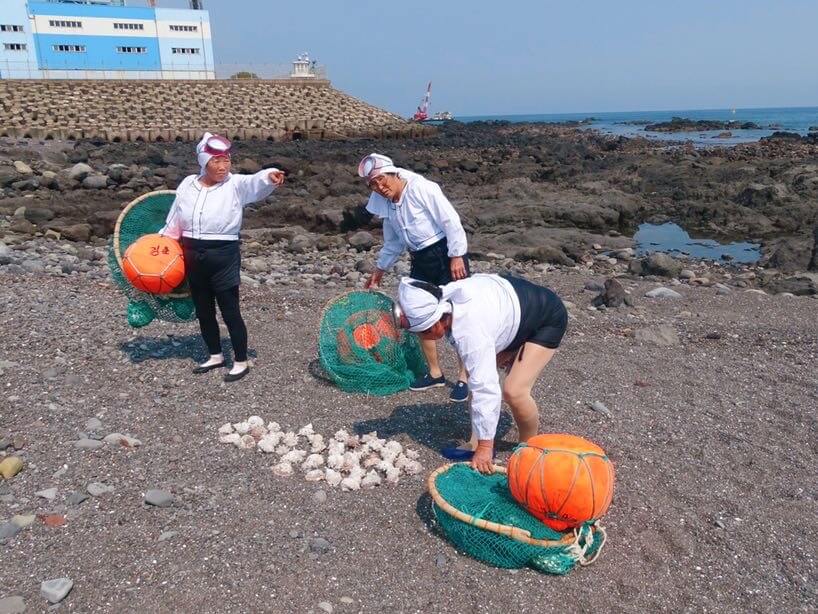
Day 11: Arrive in Jeju and settle into your surroundings. If you have time, visit a beach or the infamous Jeju Love Land (a risque theme park) in the afternoon. Day 12: Explore the West Coast of Jeju. Visit Hyupjae Beach, Hallim Park, O’sulloc Tea Museum and Cheonjeyeon Waterfall. If you don’t have a car, book a West Coast tour. Day 13: Travel the East Coast of Jeju Island stopping at Gwangchigi Black Sand Beach and Manjang Cave. Attend the fascinating UNESCO World Heritage women diver show to learn about these highly-skilled female divers (haenyeo) who dive down 10 metres without equipment to catch seafood. If you don’t have a car, book an East Coast tour . Day 14: Why not take a Mount Hallasan day hiking tour or have a beach day before flying back to the mainland in the evening? If your onwards destination is in Asia, you might even be able to finish your 2 weeks in South Korea by flying there directly from Jeju Island.
Where to stay in Jeju
- Hostel – Backpackers don’t have to sacrifice on sea views at the friendly Yesjun Guesthouse . It has a complimentary breakfast, a really friendly front desk, a kitchen, a restaurant, a games room, a simple breakfast, and a garden with bean bags next to the ocean. Check availability from US$17 .
- Budget hotel – Jeju Pureun Hotel has air-conditioned units with a fridge, microwave, kettle, TV, and complimentary toiletries. It’s also wheelchair accessible, and some rooms have visual aids. Check availability from US$30 .
- Mid-range – Located close to the beach and many attractions and restaurants, The Grang Seogwipo is an ideal base. Rooms are spacious with a city view, and an a la carte or American breakfast is included. Check availability from US$90 .
- Splash-out – After a day exploring, what’s better than unwinding by the outdoor pool with a cocktail, booking a massage, or tucking into a delicious meal at Toscana Hotel ’s onsite restaurant? Rooms include a balcony, bathtub, and floor-to-ceiling windows so you can order room service and enjoy the view. Check availability from US$190 .
Browse all Jeju accommodation on Booking.com and Hostelworld .
Where & what to eat in Jeju Island
- Black pork – this is the island’s signature dish, made from a specific breed of pig. Served with all the yummy Korean sides like gochujang, kimchi and veggies, it’s a treat! Sukseongdo is a popular place to try it.
- Haemultang – this a yummy seafood hotpot popular on the island. Try it at Samseonghyeol Haemultang .
- Matcha – as it’s grown on the island, make sure to find a cafe serving the local Jeju blend!
3 week South Korea itinerary
Since most people spend 2 weeks in South Korea, I decided this was the most useful itinerary to put together. But I personally spent 3 weeks in South Korea which, in my opinion, is better . You can get past the big cities and explore more local destinations. Plus, it’s an extra 7 days of eating kimchi! If you have 3 weeks in South Korea, there are a couple of stops I’d suggest adding, Daegu and Gyeongju . This 3 week South Korea itinerary also means you can include both Sokcho and Jeonju so there’s no need to choose. I’ll breeze through the stops we already mentioned and elaborate on the new destinations: Days 1-5: Seoul. As per 2 week South Korea itinerary above. Days 6-7: Sokcho. As above. Days 8-9: Jeonju. As above.
Days 10-12: Daegu
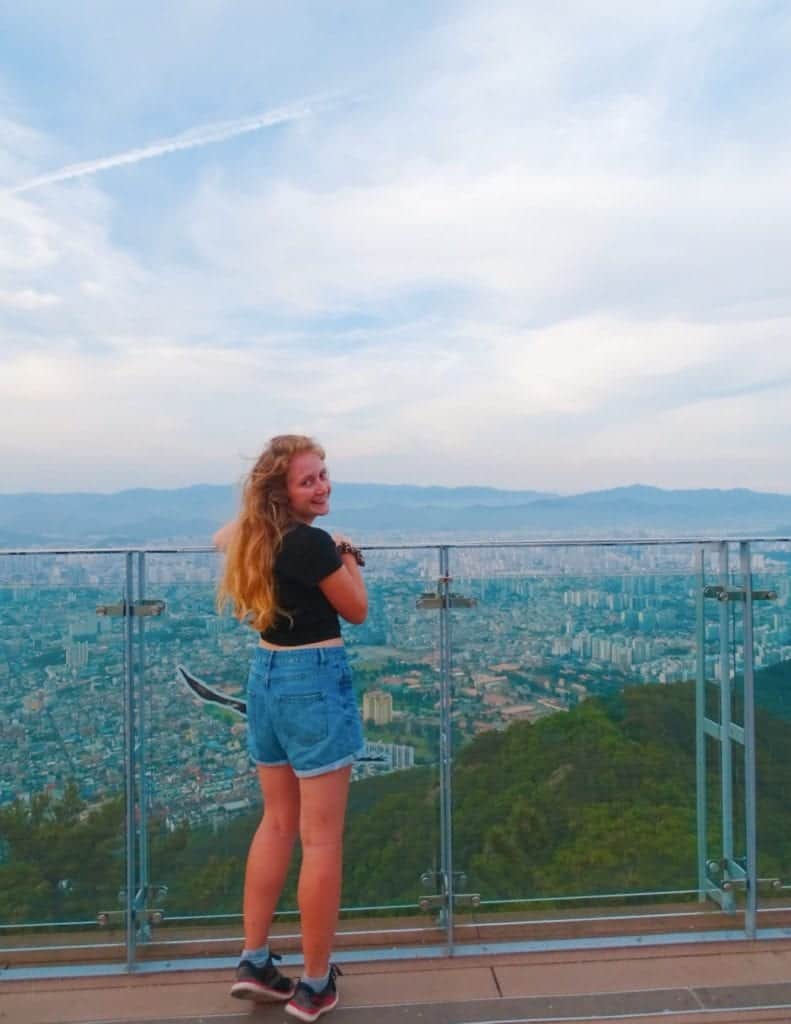
The fourth biggest city in South Korea is a sweet spot to spend a day or two especially if you like hiking. Day 10: Arrive in Daegu. Day 11: Catch a bus to Palgong Mountain for hiking and temples. Here you can find the Gatbawi Stone Buddha at Seonbonsa Temple and get immersed in the surrounding hiking trails. Day 12: Start your day with coffee and unlimited free pastries (yes seriously) at Schumann and Clara . Have a city day or hike up to Apsan Park where you’ll get spectacular sunset views over the city and countryside from the deck at the top.
Where to stay in Daegu
- Hostel – Located in downtown Daegu near the subway and bus routes, Empathy Guest House is a handy and comfy place to stay. Check availability from US$19 .
- Budget hotel – Blo by Blo is a quiet hotel with a hot tub and terrace. It’s conveniently located near the metro with minimal but clean rooms. Check availability from US$60 .
- Mid-range – For a cute and sustainable accommodation option, go for Aega Hanok Guesthouse. With aesthetic, Korean-style rooms and passionate hosts, it’s an excellent choice for anyone wanting to get a taste of traditional Hanok-style stays. Check availability from US$90 .
- Splash-out – If you want to truly relax in Daegu, then Susung Spa Resort is perfect. You have everything you need to unwind with two pools, a garden, a spa centre with hot tubs and a sauna, and a restaurant with a lake and mountain views. Check availability from US$150 .
Browse all Daegu accommodation on Booking.com and Hostelworld .
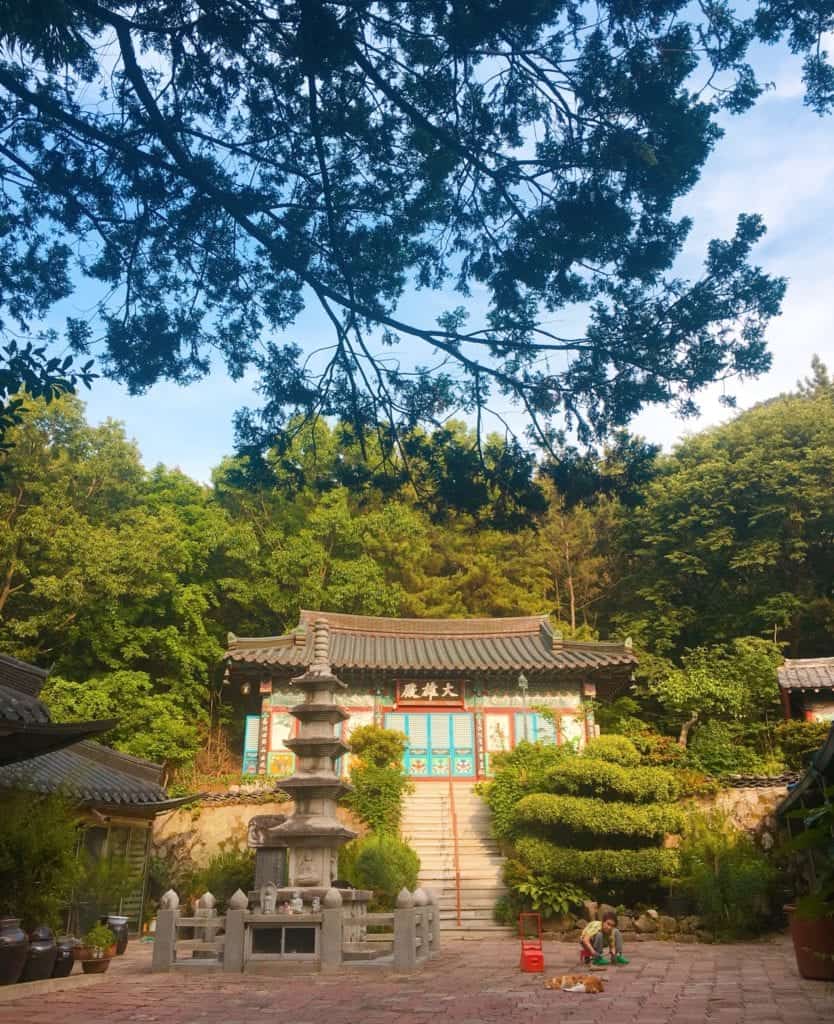
Tip – Check out Life of Brit’s Daegu hiking guide . Brit lived in Daegu while teaching English so she is your girl for tips (and always replies on Instagram).
Days 13-14: Gyeongju
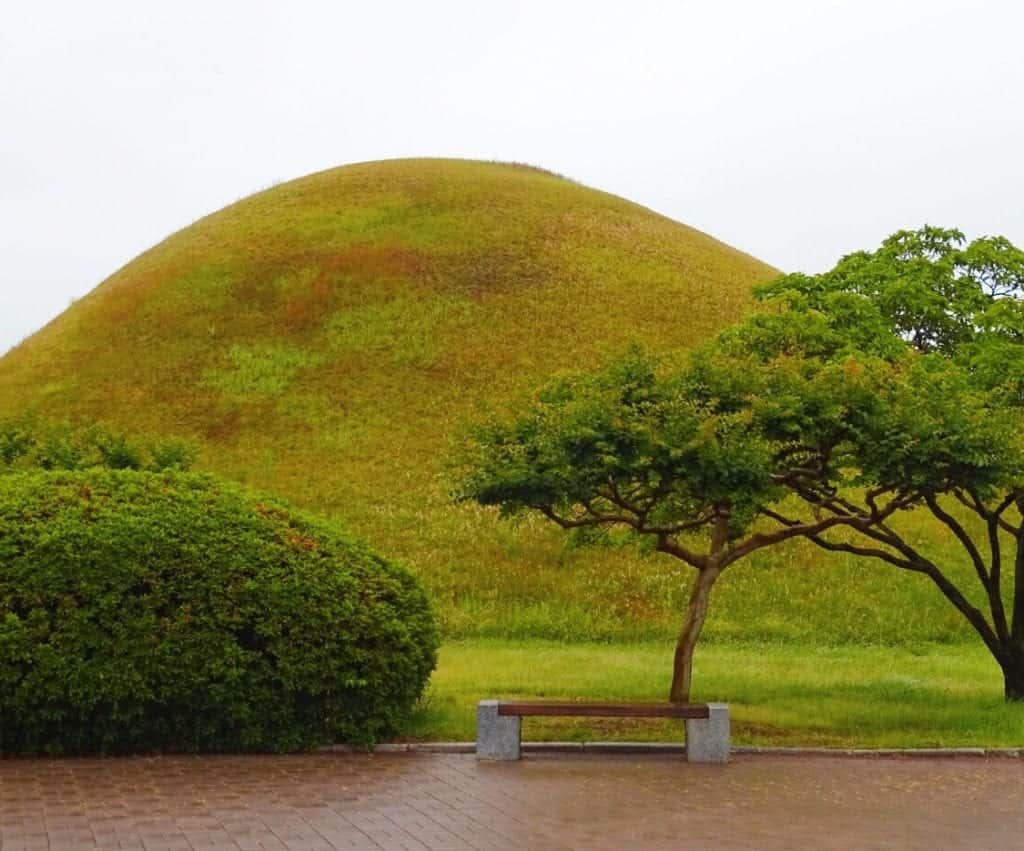
History lovers spending 3 weeks in South Korea shouldn’t miss Gyeongju, home to the Silla Dynasty from the 1st to 7th centuries. It’s also an excellent stop for foodies. I didn’t find anywhere else quite like Gyeongju which is why I liked it. Day 13: Explore Daereungwon Tumuli Park (ancient manmade hill tombs filled with gold and jewels), Wolji Pond and Cheomseongdae Tower. Tuck into a traditional ssambap meal: small bitesize portions of food wrapped in leaves. For dessert, sample Hwangnam (sweet bread filled with red bean paste).
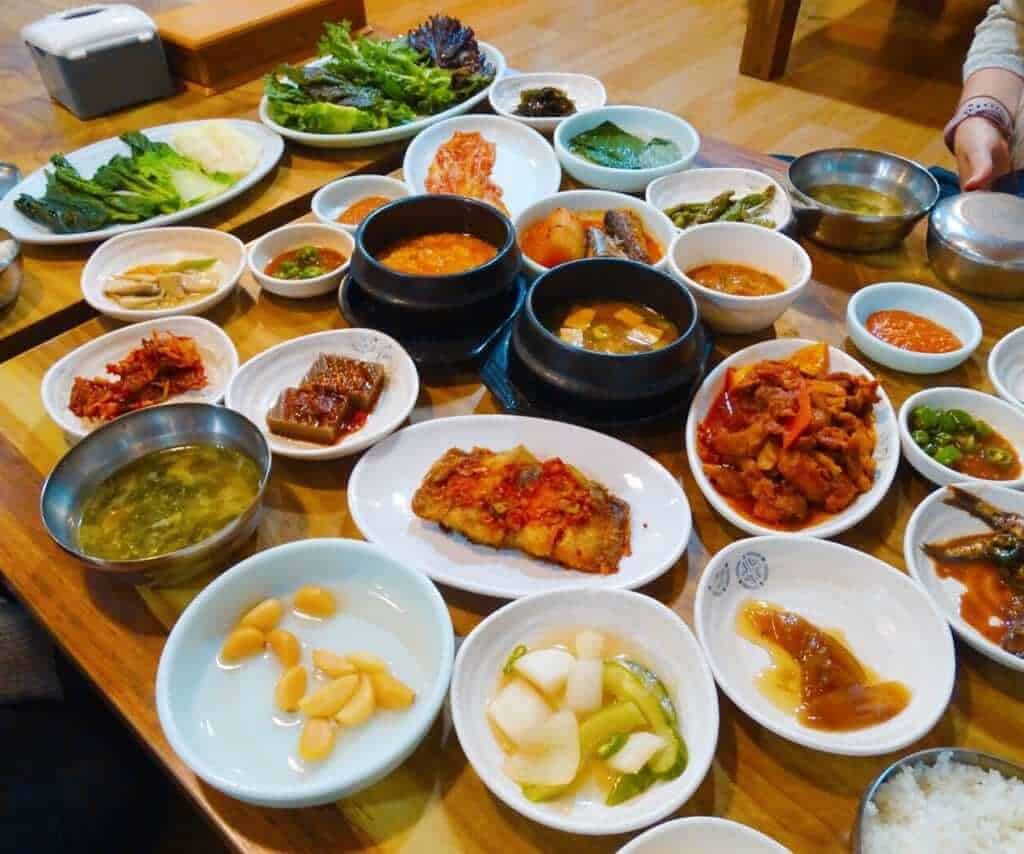
Foodie visiting Korea? Don’t miss my South Korea food guide !
Day 14: Catch a bus to Bulguksa Temple and hike up to Seokguram Grotto at the top (comfy footwear necessary). On the way home, stop at Gyeongju National Museum to learn about the ancient Silla Dynasty.
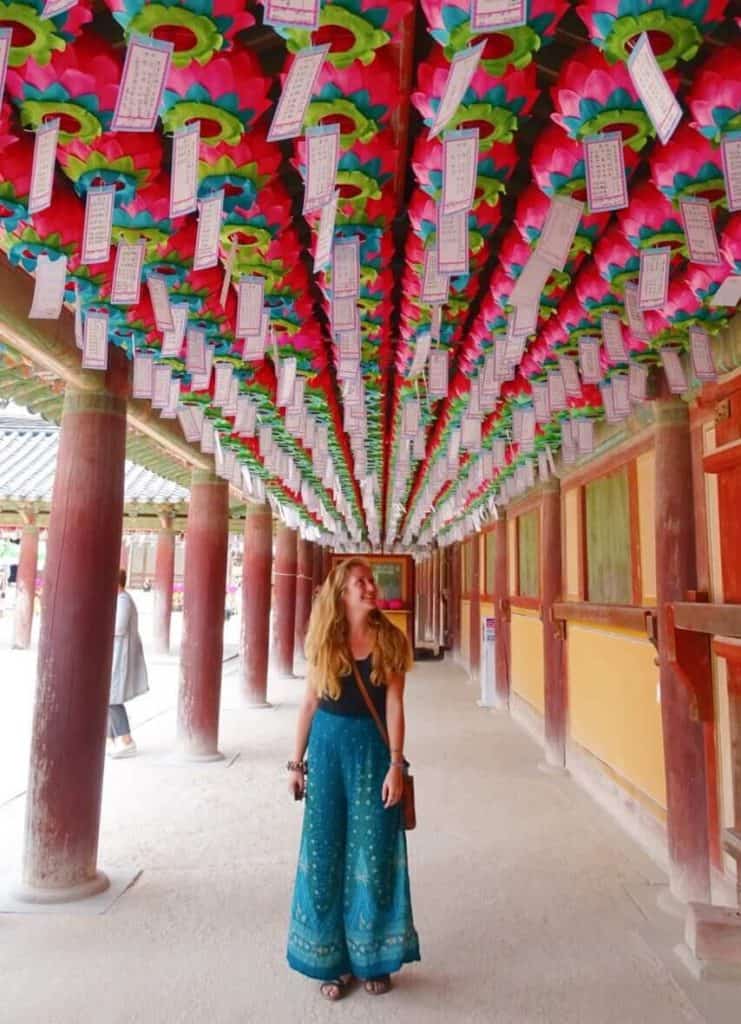
Another fun addition to your South Korea trip itinerary, should you have time, is a templestay experience at Golgulsa Temple near Gyeongju. Surrounded by stunning Hamwolsan Mountain scenery, Golgulsa is somewhere you can practice Sunmudo, a Korean-Buddhist blend between meditation and martial arts. Stay a night, several nights, or even up to a month!
On a tight schedule? It’s possible to visit Gyeongju as a day trip from Busan rather than stay overnight.
Where to stay in Gyeongju
- Hostel – I stayed at Blueboat Hostel , which is a cosy hostel run by a friendly local who will give you tips and local advice. It’s a great place to meet other backpackers. Check availability from US$18 .
- Budget hotel – For a comfy and clean room close to the centre, G HOUSE Mini Hotel & Guesthouse has you covered. Breakfast included. Check availability from US$45 .
- Mid-range – Rivertain Hotel has spacious rooms with spa baths and complimentary breakfast in the heart of town. Check availability from US$100 .
- Splash-out – Overlooking beautiful Lake Bomun, Lahan Select Gyeongju is a tasteful and welcoming resort with a gym, two swimming pools, indoor golf, and various dining options. Check availability from US$140 .
Browse all Gyeongju accommodation on Booking.com and Hostelworld . Days 15-17: Busan. As above. Days 18-21: Jeju Island. As above.
Useful info for 2 weeks in Korea
What is the best season to visit south korea.
March to May and September to November are optimum as the weather is pleasant. In the spring season, you may see cherry blossom and in the later season, you’ll see the country become beautifully autumnal. Saying that, I visited in June (summer) and although it was hot and sticky at times, it was bearable. This is also a good season for hiking as temperatures are cooler in the mountains. December to February are freezing cold so only visit if you’re really prepared. Note – make sure you know when Korean holidays fall as many businesses will be closed. Korean New Year is the first day of the Korean calendar. Chuseok falls on day 15th of the 8th lunar month.
Is Korea safe?
As a solo female traveller, I found South Korea to be very safe. I felt comfortable walking at night as well as during the day. Petty crime is not a big problem and violent crime is near non-existent. See my solo travel archives for safety tips for women. Here’s a guide for Black travellers in South Korea and LGBT+ travellers in South Korea .
What language is spoken in South Korea?
That would be Korean. Although the language is complex, the alphabet is actually quite simple. Some travellers told me they’d learnt it in a day! Doing so would definitely help you recognise dishes on menus. Failing that, have Google Translate close to hand and be prepared to do a little miming from time to time.
What plug do you need for South Korea?
South Korea uses plug type F with two round pins, like many other Asian countries. The standard voltage is 220 V with a frequency of 60 Hz.
Do you need a visa for South Korea?
More than 100 nationalities – including US, UK, Canada, EU, Australia and New Zealand – can enter South Korea visa-free. Check if your nationality is on this list and how many days you can stay for. If not, you’ll need to apply for a visa.
South Korea travel tips
- Unlike some countries, tipping isn’t necessary in South Korea
- For city travel, pick up a Tmoney card . They cost 500 KRW (you get back 3,500 of the 4,000 deposit) but save you money in the long run, plus you never have to queue at ticket machines. Buy yours now or get it with a SIM card combo
- Korea is a difficult place to travel for veggies. Download the HappyCow app.
Read my top 30 Korea travel tips here.
Best apps for a South Korea trip
- Seoul subway app – there are several apps to help you navigate the subway system.
- Kakao Talk – the Korean version of Whatsapp, should you make local friends (always a good idea).
- Google Translate – naturally!
- Naver Maps – since Google Maps gives you very limited information in South Korea, I recommend this local alternative for navigation.
South Korea essentials
- Copy of Lonely Planet Korea .
- A Korean phrasebook & dictionary .
- To stay connected, a 4g SIM to collect at Seoul airport or a rental pocket Wi-Fi device
- A handy bum bag with secure zip to keep your belongings secure.
- Reusable coffee cup (collapsable) for hot takeaway drinks.
- A reusable water bottle that you can fill up with filtered water (your accommodation will have this).
- Alternatively, a filtering water bottle that allows you to safely drink tap water.
- Metal straw and cloth bag set to reduce the use of plastic straws.
- Travel luggage – I use I recommend the Osprey Farpoint ( men’s ) ( women’s ).
- A camera – I use the Sony DSC-HX350 Digital Compact Bridge Camera which I think is one of the most affordable options based on the zoom and quality of photos.
- A GoPro if you’re into making videos – I use the HERO8 Black .
- Solo travel pick: a tripod or mini GorillaPod to get yourself in the shot – I use the Manfrotto tripod and Joby GorillaPod .
Thanks for reading my South Korea 2 week itinerary!
For more travel content, follow me on Instagram , Facebook , Twitter and YouTube .
See you next time for more adventures,
Ps. Liked this 2 week South Korea itinerary? Pin it for later!
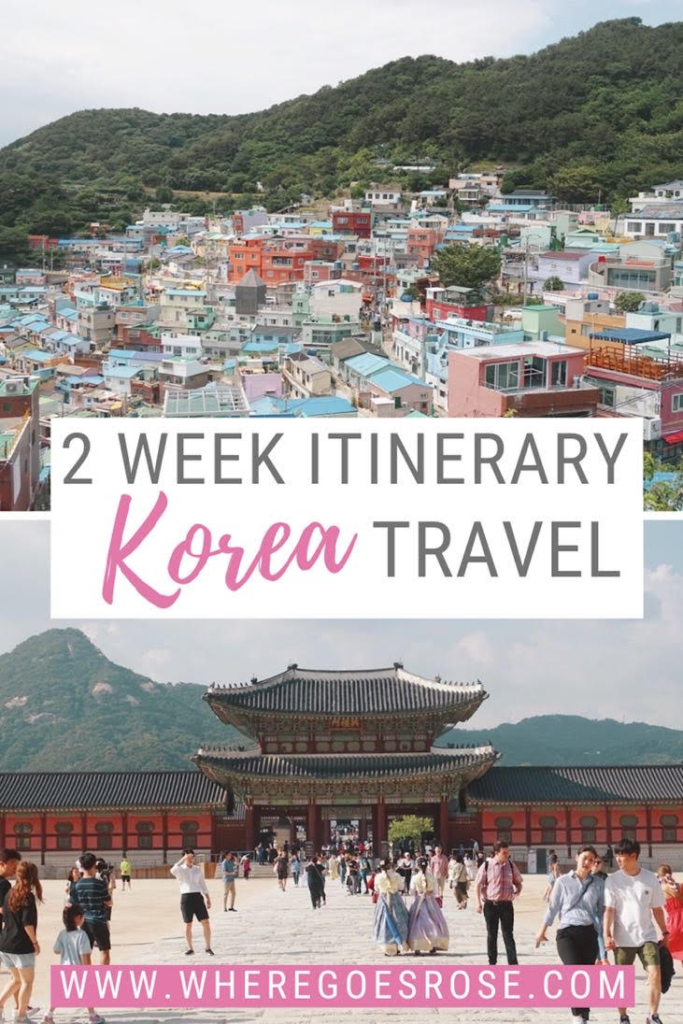
VISITING SOUTH KOREA? These are my trusted resources: Getting around by air – I use Skyscanner to find the best-value flights, using the ‘search by month’ tool to find the cheapest dates. You can also use the ‘to anywhere’ feature if you’re flexible on where you’re going. Buses – buses are comfy and efficient. It’s tricky for foreigners to book online so it’s best to turn up on the day. Trains – use Trip.com , partner of Korail (the official railway network of Korea) to book your tickets in advance. The website accepts international payment options, unlike Korean rail websites. Click the three stripes in the top right corner then the flag to change it to English. Driving in Korea – use Rentalcars.com to compare car rentals. Hiring a car will be especially useful on Jeju Island. For hotels in Korea, I use Booking.com – they also have self-catering apartments. You can filter by review score and price to find the best-rated budget places. For hostels, I use Hostelworld . To save money on accommodation, I use Trusted Housesitters , a website that connects homeowners going away and travellers who can sit their homes & pets. Browse South Korea tours and activities on GetYourGuide . I also check Viator and Klook in case they have a better price. For food tours with passionate local chefs and foodies, check out EatWith . Check out my resources page for more travel discounts and tips!
Rose is a solo traveller from the UK who has been on the road since 2015. She wants to show other women that solo travel isn't scary and doesn't have to be expensive! Rose has lived in Mexico, Canada and all over Asia, seeking out food, bubble tea and street art wherever she goes!
4 thoughts on “ Perfect South Korea Itinerary For 2 Weeks: Best Stops + Tips! ”
Hi! If you don’t mind me asking, how much did you spend for 3 weeks in Soith Korea? I plan to set aside a budget for my dream vacation there. ☺️ Thank you!
Hey Hannah! I spent about £900 in 3 weeks on a backpackers budget. Quite costly! I actually have a budget guide scheduled for next week if you check back on my homepage then!
Hi, I was just wondering if your last stay was on the jeju island, from which Airport did you fly back home? I want to make the similar route that you recommendet. But I’m unsure about from where i should fly back. Because going back to seoul from the jeju island would be elaborate. Even if my last stay would be in busan, would you recommend to fly back from there or take the train back to seoul – to fly back home from there.
I would be glad if you could help me out here 🙂
Hello! I flew return from Seoul then after a couple more days in Seoul, took my exit flight. If doing it again, I might do Jeju in between Seoul and Busan to save travel time. 🙂
Leave a Reply Cancel reply
Your email address will not be published. Required fields are marked *
You can see how this popup was set up in our step-by-step guide: https://wppopupmaker.com/guides/auto-opening-announcement-popups/

- Visa Application Helpline
Subscribe to our newsletter
Learn how to live a sustainable long-term travel lifestyle.
By signing up, you agree to the our terms and our Privacy Policy agreement.
Top 27 Places to visit in Darjeeling, Explore the Beautiful Hills of Darjeeling
Top 10 things to do when traveling to shimla: shimla travel guide, the ultimate paris travel guidelines for first timers | top attractions & things to do.

The Best 10-Day South Korea Itinerary: Budget and how to plan
If you’re looking for a travel destination that offers a rich cultural experience and a glimpse into history, South Korea is the perfect choice. Despite its small size, this country is packed with diverse attractions and a unique charm that will captivate any traveler.
Whether you’re interested in exploring ancient palaces, indulging in delicious street food, or immersing yourself in the vibrant K-pop culture, South Korea has something for everyone. With this ultimate 10-day South Korea itinerary , you’ll be able to make the most of your time in this fascinating country.
South Korea will give you the perfect opportunity to create a storming itinerary to explore the bustling cities quiet mountains and countryside. South Korea has a synchronized harmony of traditional culture and modern history.
Tourists can enjoy the cultural heritage through the UNESCO sites and can enjoy the variety of food, local culture, and lifestyles. Along with Korea’s Buddhist temples, and UNESCO sites you will find beautiful mountains, hiking trails, and port cities will let you experience the full range of diversity in the country.
WHAT IS COVERED IN THIS ARTICLE?
Planning a Trip to Korea Preparations

Planning a trip to Korea involves a lot of steps, especially when you have a 10-day itinerary in mind. Here are some details to make your preparation easier:
Visa or ETA: First, check if you need a visa or an Electronic Travel Authorization (ETA) to enter Korea. If you require a visa, you can refer to my visa application guidelines for assistance.
Weather Considerations: Understand the weather conditions during your visit to Korea. Pack your clothes, accordingly, considering the weather or season prevalent during your travel dates.
Flight Booking: Start looking for flights as early as possible. Flight tickets tend to be more expensive if purchased just before your travel dates. Aim to purchase tickets a few months in advance to get the best prices. You can use flight search engines like trip.com or set up alerts on Google Flights for deals.
Travel Insurance: Consider getting travel insurance. It can be immensely helpful in case of flight delays or baggage losses, providing you with financial protection and peace of mind during your trip.
To have a hassle-free trip to South Korea there are few more things you can do to prepare. Few of them are using a language translator app, using specialized local maps, downloading cab app, and getting cashless money transfer systems. Here are the top apps for planning South Korea itinerary 10-days you can use to make your journey easy.
By following these steps and tips, you can streamline your trip planning process and ensure a smoother travel experience to Korea.
10-Day South Korea Itinerary:
Starting your 10-day adventure in Korea by arriving at Incheon, Seoul is a fantastic choice. Incheon Airport is well-connected globally, making it convenient for travelers. Once you’re in Seoul, you’ll dive into the captivating royal history and indulge in the delicious world of Korean cuisine. With so much to see and do, Seoul can easily fill your entire itinerary. However, if you’re landing in Busan or another city first, feel free to customize your schedule accordingly. Flexibility is key to ensuring you make the most of your Korean journey!
Day 1 to 2 in Seoul: 2 Days
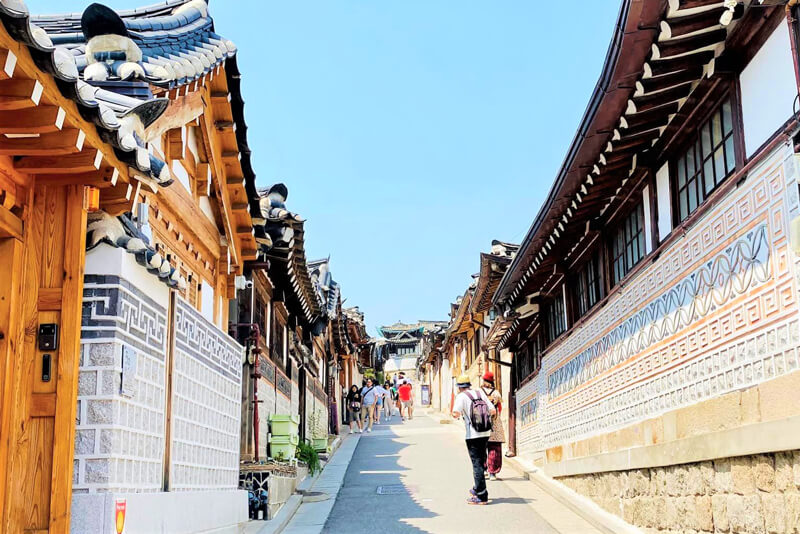
Seoul offering a modern yet traditional lifestyle should be the first place in your south Korea itinerary for 10-days. The Seoul trip for two days will be your first step in familiarizing yourself with the city’s cultural, historical, and traditional sides. Take the first day slow and visit the royal palaces and UNESCO sites. You can start your trip with Gyeongbokgung Palace, and then continue to visit Cheonggyecheon Stream, Gwangju Traditional Market, and Insadong Shopping Street.
Gyeongbokgung is one of the most popular and oldest palaces in Seoul . This served as the main official palace during the Joseon dynasty. The entrance fee to the palace is $2.50 and you can also rent hanboks if you want great pictures in the traditional dresses. After the tour head over to the Cheonggyecheon Stream where you can enjoy a nice walk and enjoy the art murals, greenery, and scenic beauty.
Make your way to Gwangju Market, where you will be enjoying a whole array of foods. Some of the famous foods there as one of the oldest markets in Seoul are bindaetteok, mandu-guk, and bibimbap. From there you can go to visit the traditional Bunchon Hanok village.
For Day 2 in Seoul , start your day with a delicious breakfast in Hongdae. Hongdae is a vibrant area where young people hang out and Hongdae shopping street is also a great area to hang out. From there you can go to museums of the city and during the sunset hike up the N Seoul tower where you will enjoy the beautiful city’s nighttime landscape view. You can also have an amazing dinner on the restaurants of N Seoul tower.
Other places that you can visit in Seoul
Changdeokgung palace:.
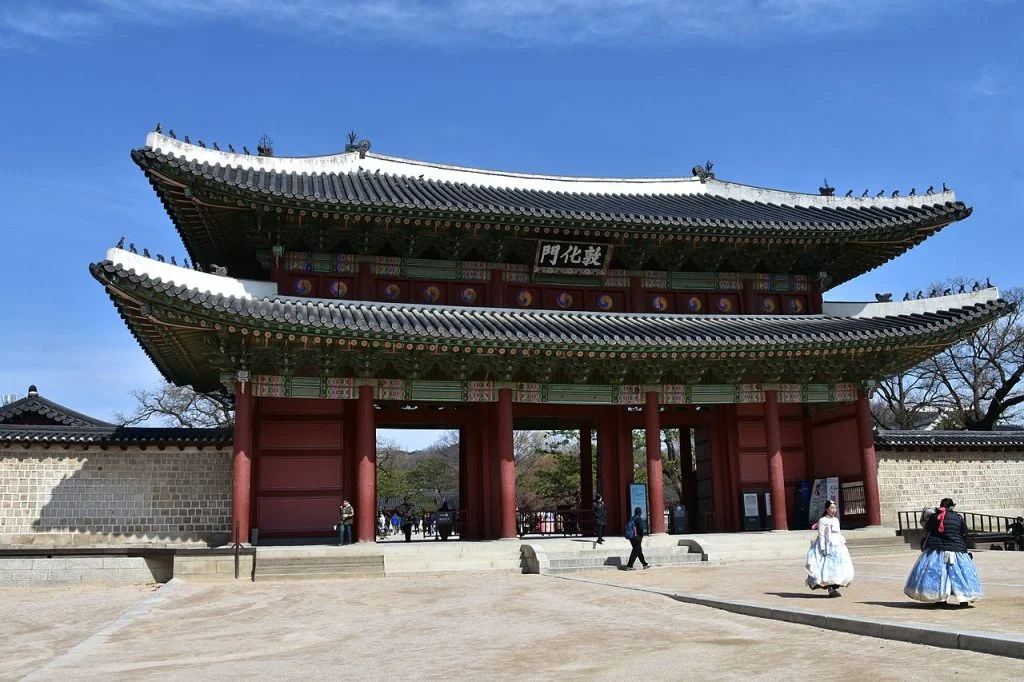
One of the most popular UNESCO sites in Seoul is the Changdeokgung Palace. Changdeokng Palace is an official residential building built in the Joseon dynasty. This complex was built as a secondary palace from Gyeongbokgung Palace to have the administrative work done.
Gyeongbokgung Palace:
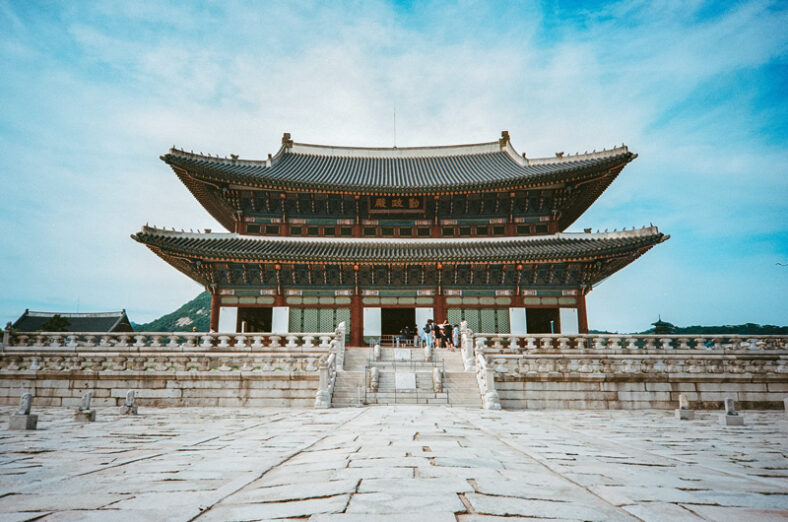
The Gyeongbokgung palace is a South Korean first palaces for administrative work. It was built in 1935 in Hanyang, currently the heart of Seoul. This is quite famous for taking pictures in hanbok, traditional korean dress and visiting the historical settings, and artefacts. At the entrance, you will also find the historical Gwanghwamun gate located at the three-way intersection.
Namsan Tower:
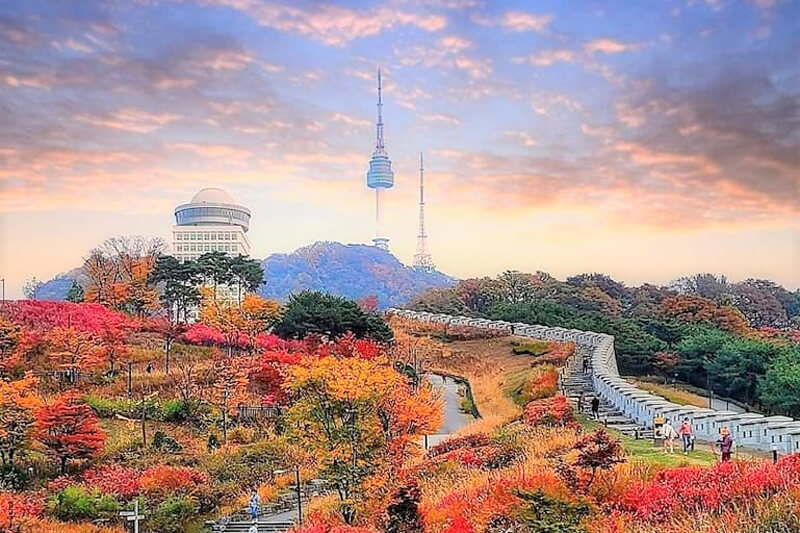
Namsan tower located in Seoul is an observatory tower on the highest hill in Yongsan-gu district of Seoul. It gives undeniably the best view in the city and is worth a visit. The lovelocks there for couples are also quite famous. You can also enjoy the views from the cafe or the restaurant on the N Seoul tower.
Lotte World:

Lotte World is a major theme park in Seoul with indoor and outdoor rides, shows and parades, and an aquarium. If you have come here with children, taking a day to go to Lotte world will really make the trip a lot of fun. The aquariums, ice rink and parades are a true treat to kids.
Nami Island:

Nami Island has gained popularity as a scenic and romantic spot, and you can go there to enjoy cherry blossoms and the tree-lined pathways are quite romantic during Autumn and Spring. You can also enjoy different types of activities like cycling, zip lining and boating in Han River.
Day 3: Trip to DMZ
The DMZ tour from Seoul takes a whole day. You must keep aside a one-full day for this historic area. You can only have guided tours of the DMZ area. The Demilitarized Zone portrays the rich history of the Korean Wars. The DMZ tour packages are available from $25. Visit the freedom bridge, DMZ exhibition hall, and other monuments. You will get a brief recap of the historical moments throughout the trip to DMZ.
Day 4 & Day 5: 2 Days in Andong
By Korean standards, it’s a long journey between Seoul and Gyeongju . For this itinerary, there’s no better place to break up the trip than Andong. Long known for its traditionalism, Andong is a center of culture and folklore. It’s one of the best places to visit in South Korea for a glimpse of its ancient past.
For Day 1: Explore the impressive grounds of the historic Neo-Confucian Academy with a trip to the historic Dosan Seowon and for Day 2: Admire a stunning view of the surrounding natural landscapes from the top of the Buyongdae Observatory.
Also, the Woryeonggyo Bridge, a wooden footbridge crossing the Nakdong River, provides breathtaking views of the surrounding mountains and is a popular spot for photographers and nature enthusiasts.
Day 6: 1 Day in Gyeongju
No place during your 10 days in South Korea will live up to expectation better than Gyeongju. This fascinating city is nothing short of the cultural and spiritual heart of Korea. Gyeongju checks off all the boxes that drove you to visit South Korea in the first place.
Compared to the hubbub of Seoul and brash Busan, Gyeongju is a relaxing respite. And it’s as fulfilling as either. The top attractions in Gyeongju are spread far & wide. They encompass some of Korea’s finest cultural moments. Tumuli Park is one of the few Gyeongju tourist attractions smack dabs in the middle of town. The park is an ancient burial site. About two dozen Korean royal tombs sprout from the earth here.
Day 7 & Day 8: 2 Days in Jeju Do
Jeju is South Korea’s one of the most vibrant islands to experience beautiful braces, local markets, and more. On the first day arriving in Jeju, you can visit the Jeju Folklore and Natural Music and Halla Arboretum. And you can then visit the Jeju five-day folk market and Dongmun Traditional Market.
The next day you can catch the sunrise at Hallasan or at Sarabong Peak early in the morning. Then you can go visit the Hamdeok beach and Manjangul cave. There are a lot of places to explore in the south of Jeju-do and you will have a refreshing experience while travelling here.
Day 9: Busan
Busan is one of those take-it-or-leave-it places. Apparently, suggests that anyone should fall in love with, or even like, this brash Korean port city. And that’s usually where the story ends. When you are in Busan, don’t leave out the bustling J agalchi Fish Market.
It’s one of the city’s top cultural attractions, and an absolute must-see and must-do. This is not just the port city’s most significant market; it’s the biggest fish market in South Korea. All types of seafood caught around the Korean peninsula find their way to the market stalls of Jagalchi Fish Market .

With your trip coming to close soon, make time to fit one more temple into your Korea itinerary : Beomeosa Temple. This ancient temple is Busan’s top tourist attraction. The original temple was founded in AD 678 by Ui Sang, a monk in the Jogye Order of Korean Buddhism. It has since been rebuilt multiple times. Most of the current buildings hail from the 16th and 17th centuries.
From stone pagodas to ornate wooden gates, the beauty of the city entrances you. The temple also benefits from a spectacular location. It sits at the foot of Mount Geumjeongsan. Visiting Beomeosa Temple, it’s easy to forget you’re in Korea’s second-biggest city.
Day 10: Departure
On Day 10, you can either return to Seoul or fly back home from Busan. Make sure to pack your things. The last day is perfect for some last-minute shopping or enjoying a final meal with friends or family. If you have extra time, you can also visit a few more places of your choice.
Most Popular Tourist Attractions in South Korea
There are a lot of beautiful places across South Korea where you can experience a diversity of landscapes, culture and food. Taking a trip to South Korea is a phenomenal way to experience the joys of life. Here are the top few tourist attractions and landmarks of South Korea that any first-time traveler must cover. Also, you may read Places to visit in Korea here.
DMZ is a zone between South Korea and North Korea near the 38th parallel north. And the demilitarized zone is a walk through the history for tourists where you can understand the value of the war history of the country. This area works as a buffer zone between two countries and is a place for maintaining political peace.
Hwaseong Fortress:
Hwaseong fortress is a one-of-a-kind brick and pilestone fortress made in Joseon dynasty. It’s located in the centre of Suwon, a few kms away from Seoul. It was built by King Jeongjo to honour his father, Prince Sado.
Jeju Island:
Jeju Island is one of the most peaceful and pleasant natural spaces that you can visit. It is one of the most beautiful volcanic islands on the planet Earth. Top attractions in Jeju-do are the lava tunnels, Hallasan, Cheonjiyon waterfall, and the hiking trails.
Traditional Villages:
There are a beautiful Korean village like Bukchon Hanok, Yongin-si in Seoul where you can get roam around the beautiful streets, visit artisans and traditional arts.If you travel to Andong during your trip, you must visit Andong folk village to visit the Andong folk museum, thatched house. You can also visit the Jeonju-si for old shrines, Boseon-gun in South Jeolla province for the entrancing beauty.
Dodohaehaesang National Park:
Dodohaehaesang National Park is the largest natural park in South Korea and if you are a nature lover you will have a great time as there are 1500+ plant species and 1200+ animal species. The scenic beauty of the island the park is located on is all the is also an attraction.
National Museum of Korea:
National Museum of Korea has collections of Korean traditional products, and you will find a lot of art exhibitions going on every day worth visiting. You will see the collection of art, artifacts, and crafts from Korean and international artists at the National Museum.
South Korea Food Markets
South Korea has a lot of vibrant food markets which are worth visiting for tasting local foods and get immersed in the local lifestyle. A few of the top South Korean food markets are Gwangjang Market, Namdaemun, and Dongdaemun Design Plaza in Seoul for tasting the most famous traditional foods. You may also visit the jagalchi fish market in Busan for fresh fish and seafood and tasty foods.
Budget for South Korea 10-Day Itinerary
Your travel tastes, style, and the time of year you intend to travel all affect how much money you allocate for a 10-day itinerary in South Korea. I can give you a general idea of the expenditures related to a traveler on a medium budget, though. Please be aware that these projections were created using pricing as of my January 2024 update and may have altered since then.
Flight: Cost: $700 – $1,200 (depending on origin and time of booking)
- Best Deals: Malaysia, Singapore, and the Philippines often have the best cheaper tickets.
- Example: I got a round-trip ticket from Kuala Lumpur to Seoul for around $150.
Accommodation: The price of lodging can change based on the area and the type of lodging you select (hotels, hostels, guesthouses, etc.). Budget travelers should budget $70 to $100 per night for a mid-range hotel or guesthouse, on average.
Food: South Korea offers a wide variety of food options to fit any budget. For about $10 to $15 per meal, budget-conscious travelers can enjoy delicious street food and local dishes. If you prefer dining at mid-range restaurants, expect to spend between $15 and $30 per meal.
Transportation: South Korea has a great public transit system, including buses and subways. For ten days, plan to spend around $100 to $150 on transportation within cities and for traveling to different locations. The KTX train from Seoul to Busan costs $60 to $80 one way, or $120 to $160 for a round trip.
Activities and Sightseeing: Different attractions and activities have different entrance prices. Budget, on average, $5 to $20 per attraction. You can budget between $100 and $150 for this category if you’re going to numerous paid attractions.
Shopping and souvenirs: Depending on your shopping tastes, this expenditure can vary greatly. Budget travelers should set up $100 to $200 for shopping and souvenirs.
Miscellaneous: It’s smart to keep some extra cash for unexpected expenses like tips, extra snacks or drinks, or emergencies. Set aside $100 to $200 for these additional costs. Also, plan to spend $50 to $100 on travel insurance.
Without including international flights to and from South Korea, a rough estimate for a 10-day moderately priced vacation in South Korea is between $800 and $1,000. Keep in mind that this is just an estimate, and the actual cost may vary based on your choices. It’s a good idea to research prices and expenses for your specific route and travel dates to get a more accurate budget. Happy planning and enjoy your trip to South Korea!
Related Posts
Unforgettable honeymoon in new zealand: a complete guide for newlyweds, 20 unforgettable day trips from seoul that you absolutely must experience | exploring the korean lifestyle, the best maldives itinerary: cost-breakdown of maldives vacation packages (4 to 7 days), new zealand itinerary & tour packages to design the perfect vacation.
Save my name, email, and website in this browser for the next time I comment.
This site uses Akismet to reduce spam. Learn how your comment data is processed .
Type above and press Enter to search. Press Esc to cancel.
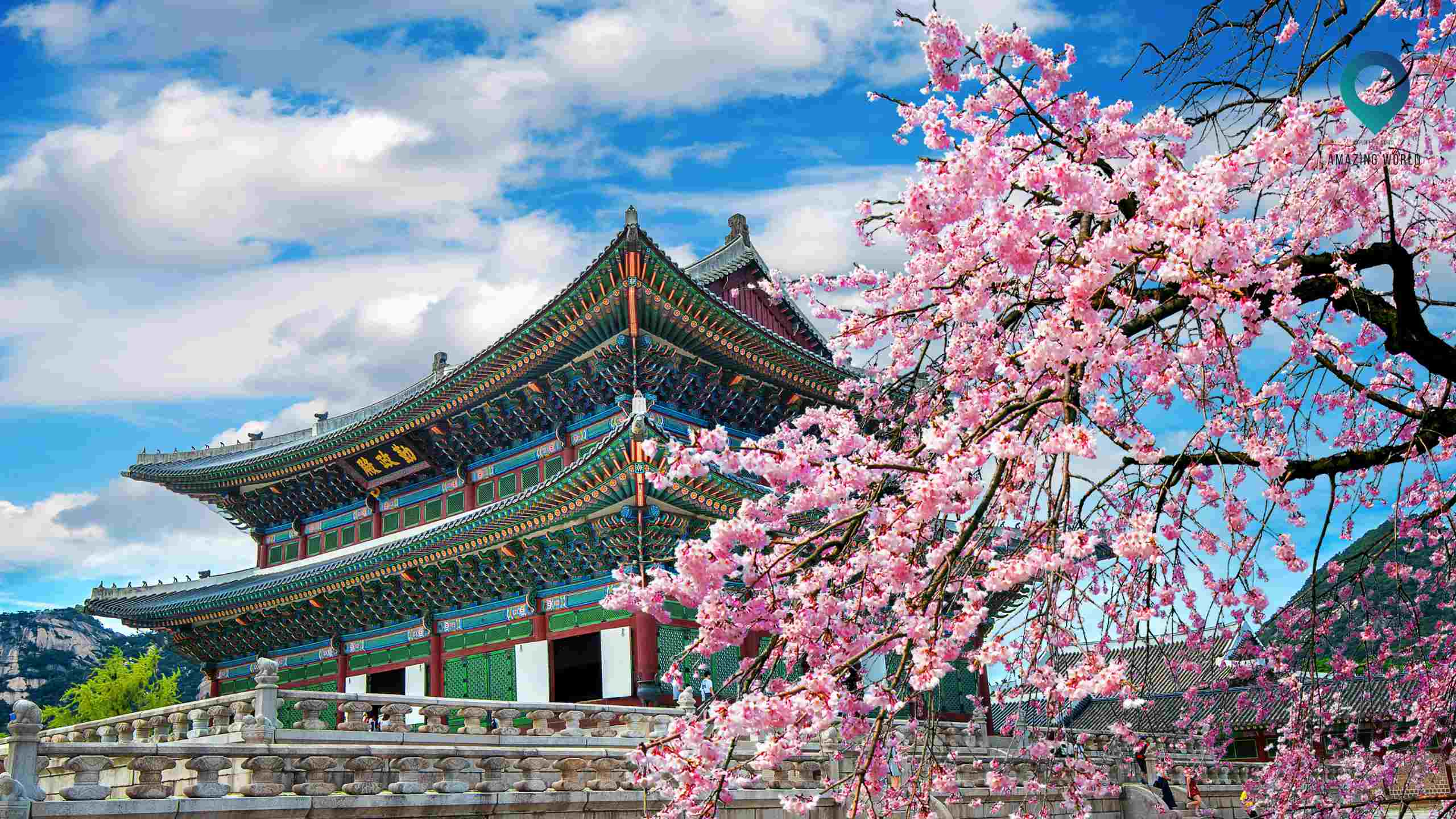
EPIC 7 Days Korea Travel itinerary for first-timers (2024)
- 9 minute read
- September 11, 2023
1-Week South Korea Travel Itinerary | Place to Explore, Safety Tips, Currency or Payment Types
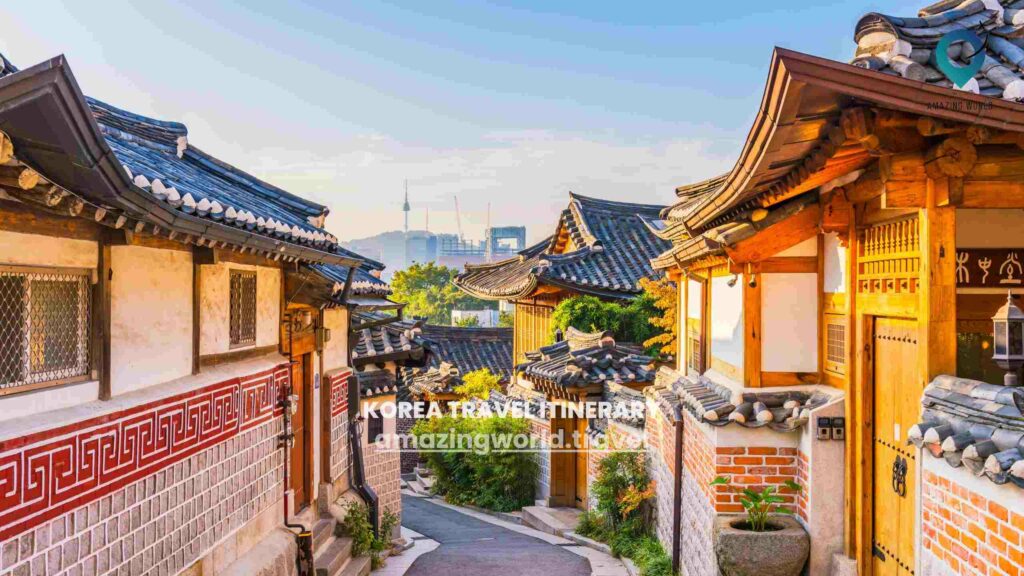
Are you planning a fantastic 1-week journey to South Korea? You’re in the right place! In this travel guide, we’ll help you map out an unforgettable trip to South Korea in just 7 days. We’ll provide you with a detailed itinerary, so you can explore the best of South Korea while staying within your budget and schedule. From exploring vibrant markets to enjoying delicious Korean cuisine, we’ve got your travel plans covered. So, let’s get started on your exciting adventure from India to South Korea!
Visa and Entry Requirements:
Check Visa Requirements: Determine whether you need a visa to enter South Korea. Visa requirements vary depending on your nationality and the purpose of your visit. Visit the official website of the South Korean embassy or consulate in your country to find out the specific requirements.
Prepare Required Documents: Gather the necessary documents for your visa application. Typical documents may include a valid passport, visa application form, passport-sized photos, proof of financial means, and a letter of invitation if applicable.
Submit Your Application: Submit your visa application to the nearest South Korean embassy or consulate in your country. Be sure to follow the specific instructions and pay the required visa fee.
Wait for Processing: Visa processing times can vary, so it’s essential to apply well in advance of your intended travel date. Check the processing times with the embassy or consulate.
Receive Your Visa: Once your visa is approved, you will receive it in your passport. Make sure to check the visa’s validity and any specific conditions.
Booking International Flights:
Research and Compare: Use online travel websites or consult with travel agencies to research and compare international flight options to Seoul. Consider factors like cost, airline preferences, travel dates, and layovers.
Book Your Flight: Once you’ve chosen your flight, book your tickets online through the airline’s website or a trusted online travel agency. Be sure to provide accurate passenger information and pay for your tickets using a secure payment method.
Check Passport Validity: Ensure that your passport is valid for at least six months beyond your planned departure date to avoid any issues with immigration.
Also, if you are looking best Fights at Discounted Rates we recommend booking your Fights with Singapore Airlines
Other Airports Serving Seoul:
Aside from Incheon International Airport (ICN) and Gimpo International Airport (GMP), there are also:
Gimhae International Airport (PUS): Located in Busan, South Korea’s second-largest city, this airport serves as an alternative international gateway to Seoul. You can reach Seoul from Gimhae Airport by taking a domestic flight to Gimpo Airport or using the KTX train service. Reaching Seoul by Flight:
Upon arriving at Incheon International Airport or Gimpo International Airport, you can reach Seoul’s city center by:
Airport Railroad Express (AREX): The AREX train connects both airports to Seoul Station, where you can transfer to the Seoul Metro or other transportation options to reach your hotel.
Airport Limousine Buses: These buses provide convenient transportation to various parts of Seoul, including major hotels and neighborhoods. They operate from both airports.
Transportation Services from the Airport to Hotels:
Taxi: Taxis are readily available at both Incheon and Gimpo airports. Ensure the taxi has a functioning meter, and you can communicate your hotel’s name and address to the driver in Korean or have it written in Korean script.
Airport Limousine Buses: Airport limousine buses operate routes to many hotels and neighborhoods in Seoul. You can purchase tickets at the airport and board the designated bus for your destination.
Private Airport Transfer: Some travelers prefer the convenience of pre-arranged private airport transfers. You can book these services in advance, and a driver will meet you at the airport and take you directly to your hotel.
Public Transportation: If you’re comfortable navigating public transportation, you can take the Seoul Metro or buses from the airport to your hotel or destination in the city.
Remember to check your specific airport and transportation options to your hotel before your trip, as details and services may change over time.
Also, if you are looking best hotels and Homestay deals then we recommend booking your hotels and homestay with priceline.com
Day 1: Arrival in Seoul, South Korea

Welcome to Seoul, the capital city of South Korea! Start your trip by checking into your hotel and taking some time to rest after your journey. In the morning, visit Gyeongbokgung Palace, the largest and most beautiful palace in Seoul, to immerse yourself in Korean history and culture. In the afternoon, explore the vibrant streets of Myeongdong, known for its shopping and street food. As the evening sets in, head to N Seoul Tower for breathtaking panoramic views of the city.
- Gyeongbokgung Palace : Check prices
- Myeongdong : Check prices
- N Seoul Tower : Check prices
Day-2: Seoul
Start your day by visiting Bukchon Hanok Village, a traditional Korean village with preserved hanok houses. In the afternoon, explore the lively district of Insadong, known for its art galleries, traditional tea houses, and souvenir shops. In the evening, enjoy a Han River cruise and admire the beautiful cityscape.
- Bukchon Hanok Village : Check prices
- Insadong : Check prices
- Han River Cruise : Check prices
Day 3: Busan
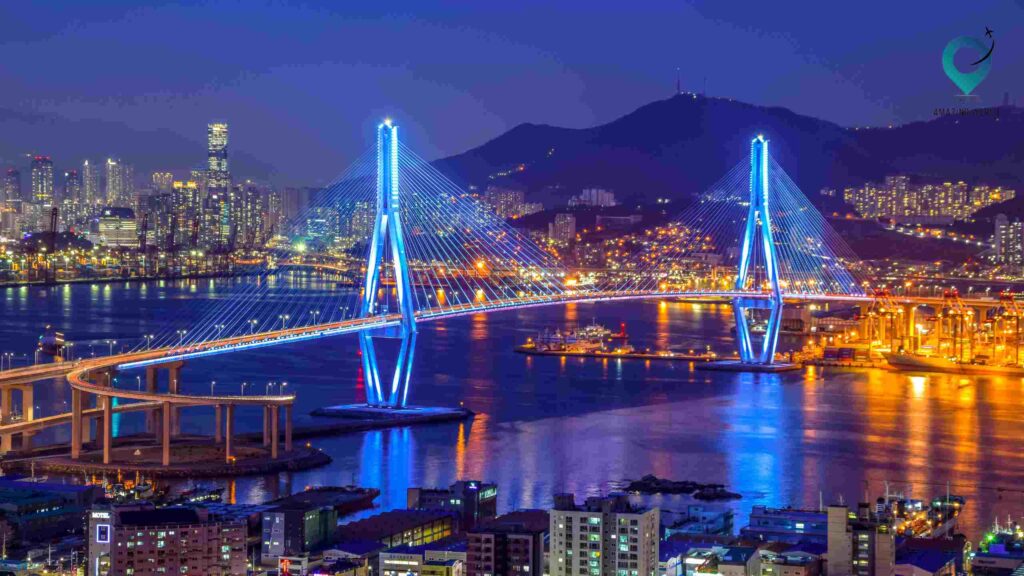
Take a day trip to Busan, South Korea’s second-largest city. Start your morning by visiting the iconic Gamcheon Culture Village, known for its colorful houses and art installations. In the afternoon, relax at Haeundae Beach and enjoy the vibrant beach atmosphere. In the evening, explore the bustling street of Gwangalli and enjoy dinner with a beautiful view of Gwangandaegyo Bridge.
- Gamcheon Culture Village : Check prices
- Haeundae Beach : Free
- Gwangall i: Free
Day-4: Seoul
Explore the modern side of Seoul by visiting COEX Mall, one of the largest underground shopping malls in Asia. In the afternoon, visit Lotte World, an indoor theme park with thrilling rides and entertainment for the whole family. In the evening, wander around the trendy district of Gangnam and enjoy some delicious Korean BBQ.
- COEX Mall: Free
- Lotte World: Check prices
- Gangnam: Free
Day-5: Jeju Island

Take a flight to Jeju Island, a beautiful volcanic island known for its stunning landscapes and natural wonders. Start your day by exploring Seongsan Ilchulbong, a UNESCO World Heritage site with a breathtaking crater. In the afternoon, visit Cheonjiyeon Waterfall and take a leisurely walk along the Olle Trails. In the evening, relax at one of Jeju’s beautiful beaches and enjoy the sunset.
- Seongsan Ilchulbong: Check prices
- Cheonjiyeon Waterfall: Free
- Jeju Beaches: Free
Day 6: Jeju Island
Continue exploring the wonders of Jeju Island by visiting the iconic Jeju Loveland, an outdoor sculpture park showcasing erotic art. In the afternoon, hike up Hallasan, South Korea’s highest mountain, for panoramic views of the island. In the evening, relax and unwind at one of Jeju’s famous hot springs.
- Jeju Loveland: Check prices
- Hallasan: Free
- Jeju Hot Springs: Check prices
Day 7: Departure from Seoul
Say goodbye to South Korea as you depart from Seoul. If time allows, explore the vibrant neighborhood of Hongdae, known for its street performances and nightlife, before heading to the airport.
- Hongdae : Free
Additional Mut Know Information

What To Pack + Weather
When traveling to South Korea in September, it is recommended to pack lightweight and breathable clothing as the average temperatures range from 17°C (63°F) to 25°C (77°F). However, it is important to note that South Korea experiences some rainfall during this season, so it is advisable to bring a lightweight raincoat or umbrella. It is also advisable to pack comfortable walking shoes as there will be a lot of exploring on foot.
Don’t forget to bring a power adapter for your electronic devices, as South Korea uses a 220V electricity system. Lastly, make sure to carry some Korean won for your daily expenses, as not all places accept credit cards. Enjoy your trip to South Korea!
Nearby Shopping
Transportation tips.
When traveling in South Korea, there are several transportation options to consider. In Seoul, the most convenient and efficient way to get around is by using the local public transportation system, which includes an extensive subway network and bus services.
Taxis and ride-sharing services such as Uber are also readily available and can be hailed from the streets or through mobile apps.
For day trips or exploring outside of the city, renting a car is a popular option, but make sure to have an international driving permit. It is recommended to plan your itinerary in advance and check the transportation routes and schedules to make the most of your time.
Safety Tips
- South Korea is generally a safe destination with a low crime rate.
- Take basic precautions and be aware of your surroundings.
- Keep an eye on your belongings, especially in crowded areas, to prevent pickpocketing.
- Respect local customs and etiquette, such as removing your shoes when entering homes or traditional Korean restaurants.
- Avoid discussions or activities that may be seen as disrespectful or offensive to local culture.
- Stick to well-lit and populated areas, especially at night.
- Avoid areas with a reputation for higher crime rates.
- Use licensed taxis and reputable transportation services.
- In areas like Itaewon and Hongdae known for nightlife, stay alert and cautious.
Overall, South Korea is safe, but being prepared and using common sense enhances your trip’s safety and enjoyment.
Travel Requirements
For traveling from India to South Korea, it is important to have a valid passport with at least six months of validity. Indian nationals are generally required to obtain a visa before entering South Korea. Visa applications can be submitted to the Embassy or Consulate of South Korea in India.
Additionally, it is advisable to check the travel advisories and entry restrictions for foreign visitors by contacting the Embassy or Consulate. Regarding vaccinations, it is recommended to consult a healthcare professional or a travel clinic for any specific requirements or recommendations for South Korea.
Cultural Norms + Etiquette
When visiting South Korea, it is important to be aware of and respectful of local customs and etiquette. South Koreans place a strong emphasis on politeness and respect, so it is customary to bow when greeting someone, especially when meeting someone older or of higher social status.
It is also important to remove your shoes when entering someone’s home or certain establishments, such as temples or traditional tea houses.
When dining, wait for the eldest person to start eating before beginning your meal, and use chopsticks instead of your hands. Tipping is not common in South Korea, as service charges are often included in the bill.
However, it is appreciated to leave a small token of appreciation, such as a small gift or a sincere thank-you. Overall, being respectful, polite, and mindful of local customs will make your visit to South Korea more enjoyable and memorable.
Some Local Daily Common Use Words
Health + medical facilities.
South Korea has a well-developed healthcare system with a wide range of medical facilities available. Hospitals in major cities like Seoul and Busan are generally of high quality and provide advanced medical treatments. Some recommended hospitals in Seoul include Asan Medical Center, Seoul National University Hospital, and Samsung Medical Center.
Pharmacies are easily found throughout the country, and they usually offer a variety of over-the-counter medications. It’s important to note that most pharmacies in South Korea close early, so it’s advisable to purchase any necessary medications during the day.
For travelers visiting South Korea, it is recommended to have travel insurance that covers medical expenses. This ensures that you are financially protected in case of any unforeseen medical emergencies or accidents during your trip.
Accepted Currency + Payment Types
Conclusion ..
crafting a memorable 1-week South Korea travel itinerary involves a blend of exciting places to explore, essential safety tips, and insights into currency and payment types. By following this guide, you’re not only well-prepared to navigate the wonders of South Korea but also ensure a safe and convenient journey. So, pack your bags, embrace the adventure, and let the beauty of South Korea unfold on your 7-day expedition.
How much did you like Our detailed EPIC 7 Days Korea Travel itinerary for first-timers (2023) ? Review Also, please share these Blogs with your friends on social media.
Related Article –
- Road Trips Ideas | 12 Tips to Prepare Your Car for a Long Road Trip?
- 150 Best Places to Visit in the United States In 2023
- Road Trip With Kids
- How to Stay Awake While Driving Long Distances
- Audiobooks to Listen to On Your Road Trip
- How to Create an Epic Itinerary Road Trip
- Best Rental Cars For Travel Adventures

Meet David Hoper, a passionate travel Blog writer with 7+ years of experience in travel content. Through his exemplary storytelling and engaging narratives, he shares his experiences and brings destinations to life. With a keen eye for detail and a love for exploration, he has cultivated a diverse portfolio of travel blogs that inspire and inform readers worldwide.
In this article:

Post written by: David Hoper
Leave a reply.
Your email address will not be published. Required fields are marked *
Save my name, email, and website in this browser for the next time I comment.
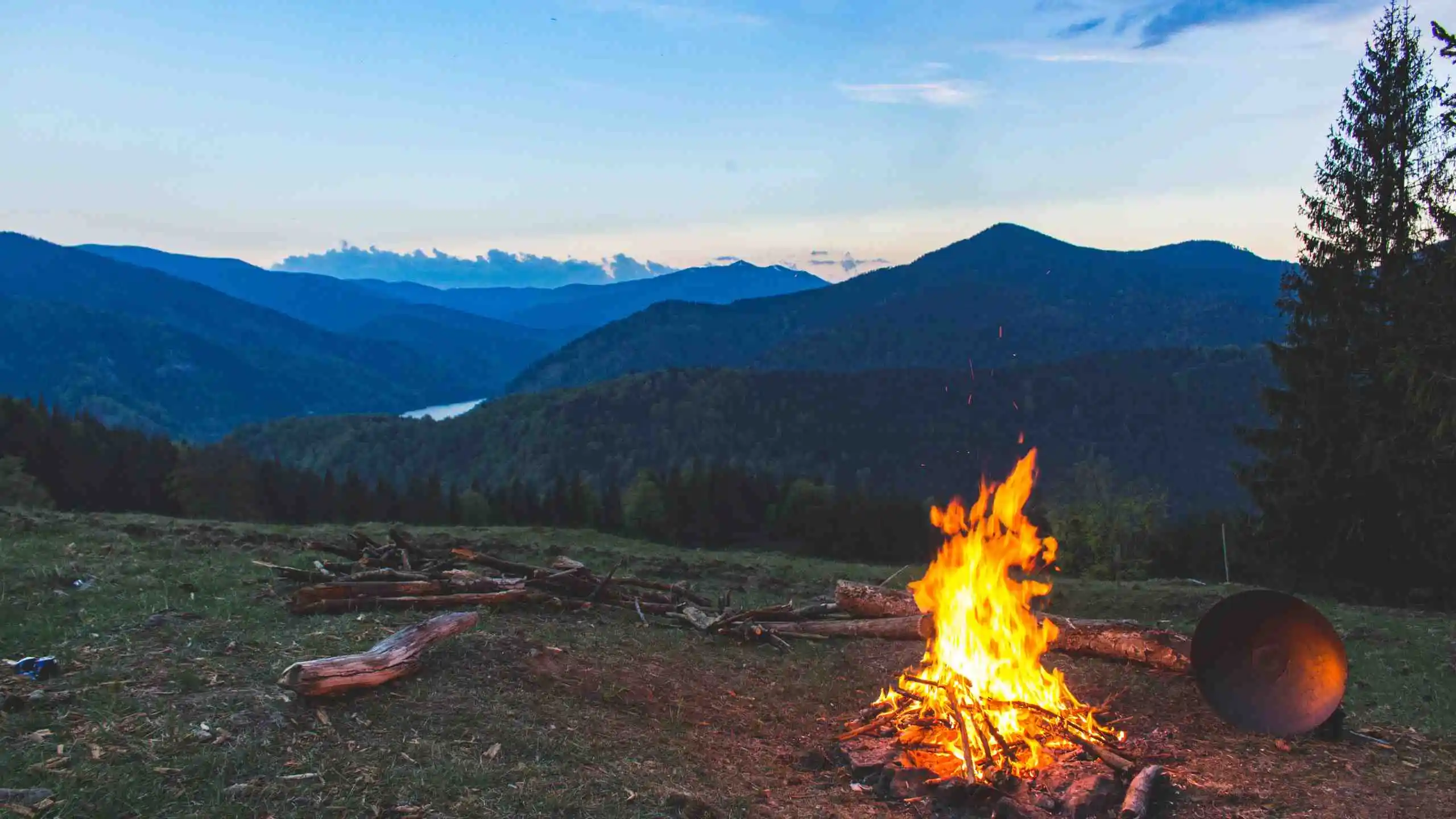
Camping Camping vs Glamping: Which is Best for You?

- September 12, 2023
Camping Luxury Glamping 101: Your Ultimate Guide to Luxurious Outdoor Adventures
You may also like.
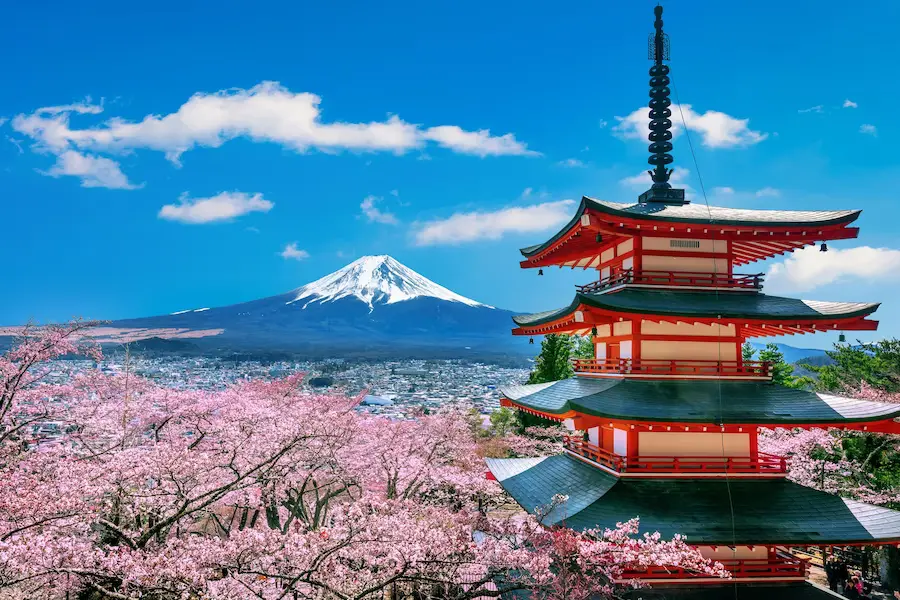
The best 5-day Japan itinerary suggestions for first-timers

Pattaya Itinerary: Best Places to Visit in Pattaya
- 2 minute read

Uncover the Southwest Road Trip Itinerary: A 7-Day Epic Road Trip itinerary
- 12 minute read
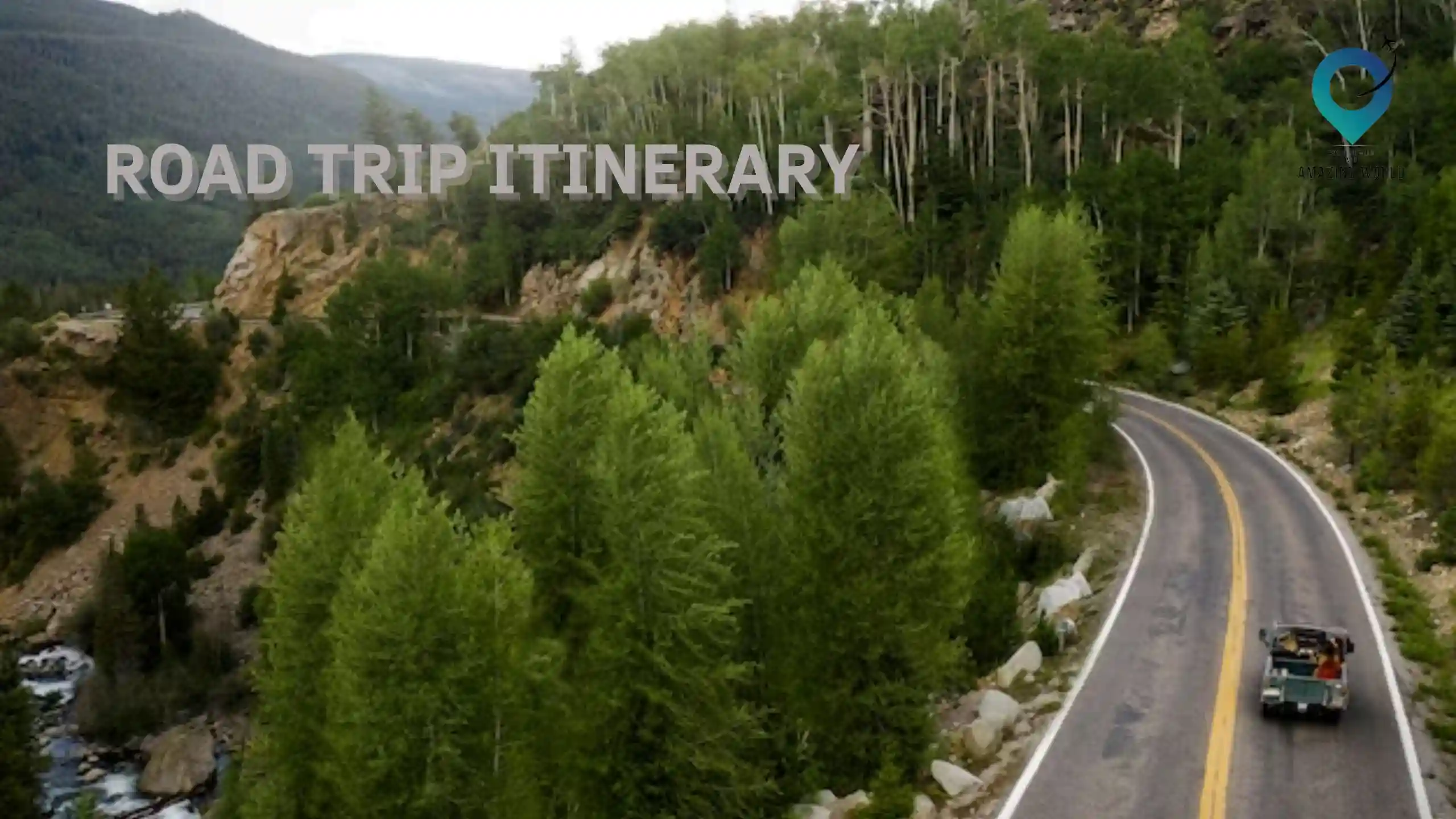
7-Day Road Trip from Delhi to Manali | Full Itinerary
- 7 minute read

Explore Morocco: A 7-Day Family Travel Itinerary (Updated 2024)
- 5 minute read

7 Day Phuket Itinerary (2024) | The Best Things to Do in 7 days in Phuket
- 6 minute read
Our Latest Instagram Posts
@amazingworld.travel8.
- Skip to primary navigation
- Skip to main content
- Skip to primary sidebar
Travel & Food, Itineraries & Guides, Hotel Reviews
The Perfect Korea Itinerary With Seoul, Busan & Gyeongju (2024) – One Week Travel Guide
September 4, 2023 by Bino 14 Comments
South Korea has become somewhat of a rising star in the tourism scene in recent years owing in part to the proliferation of Korean TV shows and pop music. The cities of Seoul and Busan undoubtedly appeal to folks who like seeing pretty and cute things and it’s probably not surprising that the visitor demographics here dis-proportionally lean towards females. If you are thinking of visiting South Korea and would like to have a practical itinerary to cover both Seoul and Busan, allot at least 5 or 6 days. If you are also visiting Jeju, you’ll need to add 2 or 3 more.
The two major cities of Seoul and Busan are the most intuitive places to explore during a trip to South Korea – Seoul for its cosmopolitan vibe and traditional culture and Busan for its seaside chic. This travel guide aims to show you how these cities can be done in as little as a week.
Table of Contents
Day 1 – Seoul City Center
Tip: Google Maps does not work well in South Korea especially in navigating walking directions and public transport route. Instead, download Naver Maps which even shows you the bus timings and fares. This is especially helpful since most of the public buses around South Korea don’t come with English signs.
If this is your first time exploring the tourist attractions in Seoul , start the day with a tour of the palaces. Seoul has 5 palaces but the ones really worth exploring are Changdeokgung, Gyeongbokgung and Deoksugong.
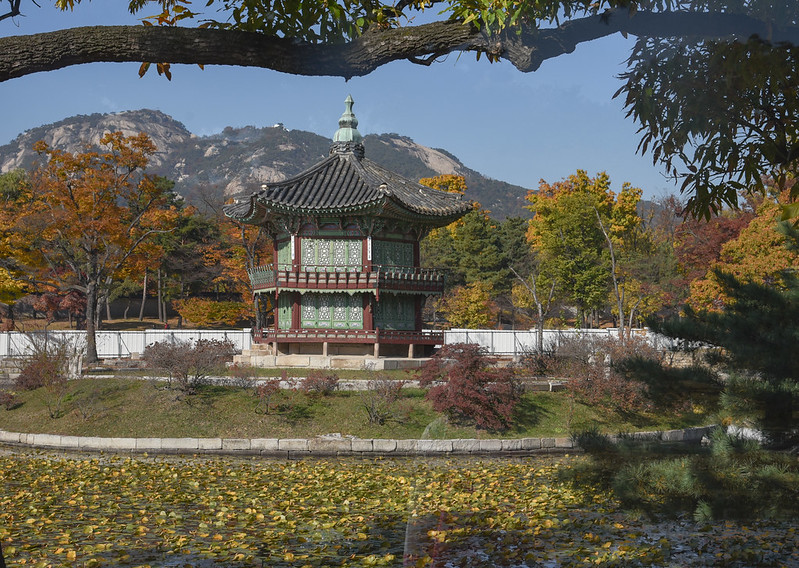
gyeongbokgung
A recommended path to take is one that starts at Gyeongbokgung . If you visit wearing a hanbok (Korea’s traditional costume – you can check out here for hanbok rentals ), the admission fee is waived. While here, make sure to go to the far back where the Hyangwonjeong Pavilion, which is built on an artificial island, is located. Many visitors miss it due to the distance but it is well worth a photo stop especially during autumn when the surrounding foliage turn bright red and yellow. Other highlights in the palace complex include the Geunjeongjeon Hall and Gyeonghoeru.

bukchon hanok village
From here, you can make an exit at the side gate and walk around ten minutes to reach Bukchon Hanok Village . Back in the day, almost the entirety of Seoul was made up of these traditional single-storey housing. Nowadays, you can only find them in small pockets with the main area being here. It’s a nice place for a stroll especially if you come here with a rented hanbok with the age-old buildings serving as perfect backdrops for selfies.
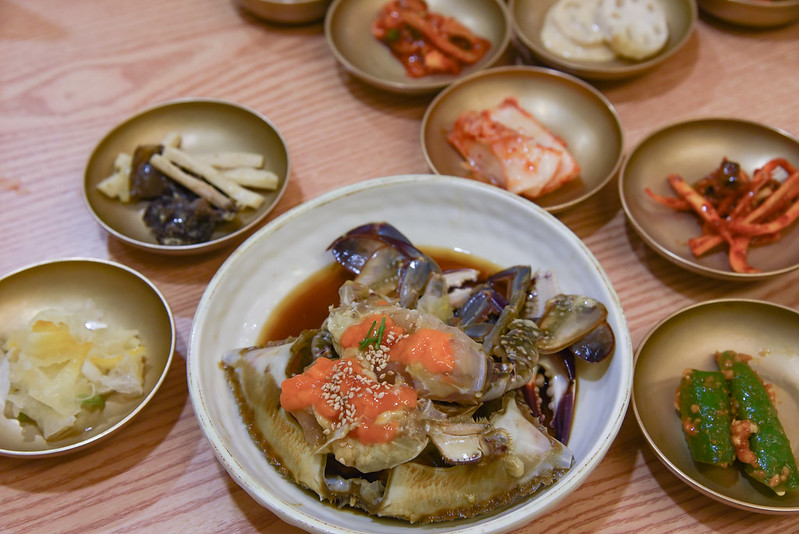
marinated raw crab at keunkiwajip
One of the highly recommended places for lunch nearby is the Michelin-starred Keunkiwajip (62 Bukchon-ro 5 Gil, Open daily except Monday 11AM to 3:30PM, 5PM to 10PM) for its marinated raw crab. This place is usually very busy and my recommendation is to come here early otherwise it may take you around 30 minutes to get a table.
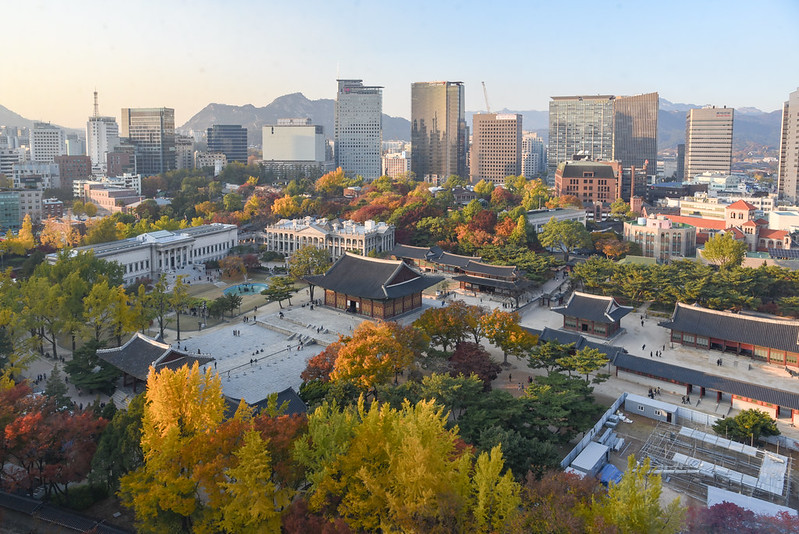
the view from jeongdong observatory
After lunch, head to Changdeokgung , the largest of Seoul’s five palaces. The highlight here is the sublime secret garden – another popular autumn viewing spot. Admission is free during the last Wednesday of the month or if you are wearing a hanbok. Alternatively, you can also check out Deoksugung which is near Seoul’s city hall. Make sure to drop by Jeongdong Observatory (free, 9AM to 9PM during weekdays, until 6PM during weekends) for a nice bird’s eye view of the city – with both traditional and modern buildings complimenting that view.
Devote the evenings for shopping. Many of Seoul’s shopping districts are open relatively late especially during weekends. Popular night haunts include Myeongdong with its range of street fashion and toiletries, Hongdae with its youth-oriented clothing brands as well as Dongdaemun for wholesale/bazaar-type apparel stores that open until way past midnight.
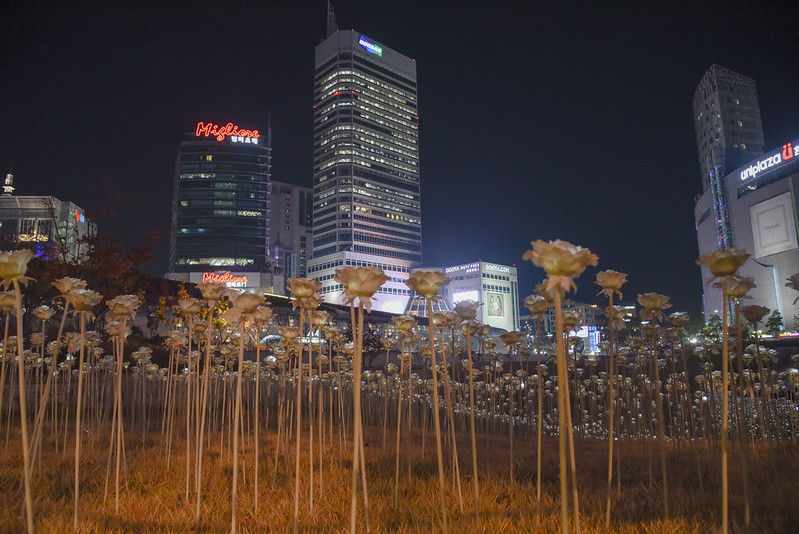
dongdaemun design plaza
If you do decide to go to Dongdaemun, a stop right by the Dongdaemun Design Plaza (open daily except Mondays, 10AM to 7PM, til 9PM on Fridays and Saturdays) is a must. Tours of the interiors are offered but the place is just as worth visiting for its imposing steel exterior. It is especially atmospheric at night when the structure is floodlit and the grass fields adjacent to it have these electronic flowers that are also lit up.
Day 2 – Southern Seoul & Gangnam
Tip: If you plan to visit multiple palaces, museums and the N Seoul Tower, you may wish to consider getting the Discover Seoul Pass. In total, there are 36 attractions that you can visit free of charge. You can buy here for a 15% discount.
Start the day at Seoul’s upscale Gangnam – a district filled with high-end boutiques, plastic surgery clinics and well-heeled city folk. It is known in some circles as the Beverly Hills of South Korea. A popular cafe to check out in this area is Cafe Dior (464 Apgujeong-ro, Open from 11AM to 8PM daily). Cafe culture meets fashion in this well-appointed cafe.
From the cafe, Garosugil is just a short ride away. The shopping street is filled with plenty of luxury brands as well as big-name stores such as a dedicated Apple Store and more. The street is especially attractive in autumn when the gingko trees by the pavements turn yellow.
After having your fill at Garosugil, head further east to Galleria , a luxury shopping mall in Gangnam. The highlight here is the basement deli and food court which is filled with plenty of traditional Korean eats. The place is a well-curated affair with many of Korea’s best independent snacks / food places brought together. Even the food court here is recommended for its kimchi soup, bibimbap as well as seafood stews.
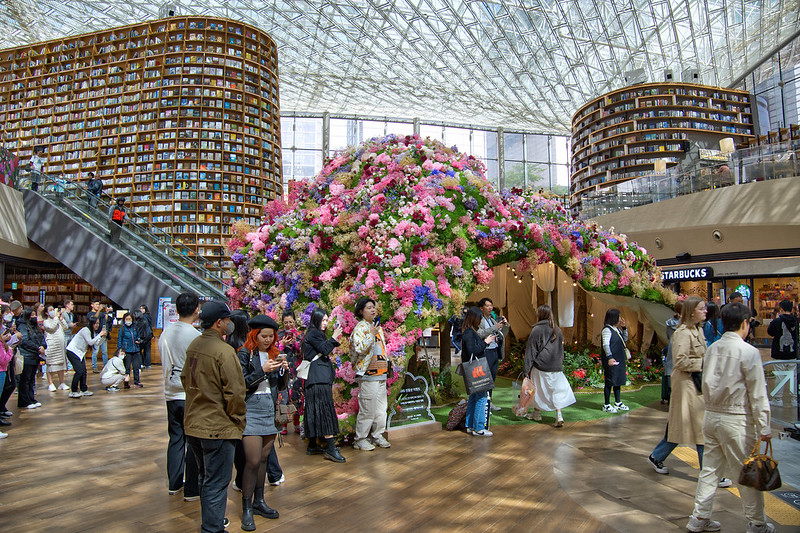
starfield library by geoff henson
After a short lunch at Galleria, head to Starfield Library (free, open daily from 10AM to 10PM) at Starfield Coex Mall. The venue is known for its humongous 2-storey tall bookshelf which has been featured aplenty in social media. There are over 50,000 books and magazines here but I doubt if most people who come here are actually bookworms.
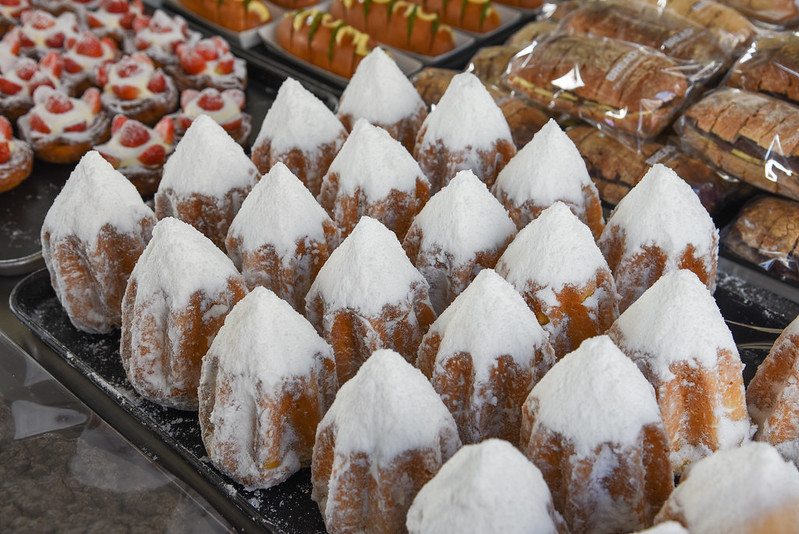
pandoro from cafe onion
If you have time to head to just one cafe during your time in Seoul, let that place be Cafe Onion (open daily from 8AM to 10PM, from 10AM on Saturdays and Sundays). Housed in a seemingly rundown industrial building, the place has attracted visitors from far and wide for its instagram-worthy aesthetic and delicious pastries. While here, don’t miss the Pandoro, a towering Italian bread filled with powdered sugar.
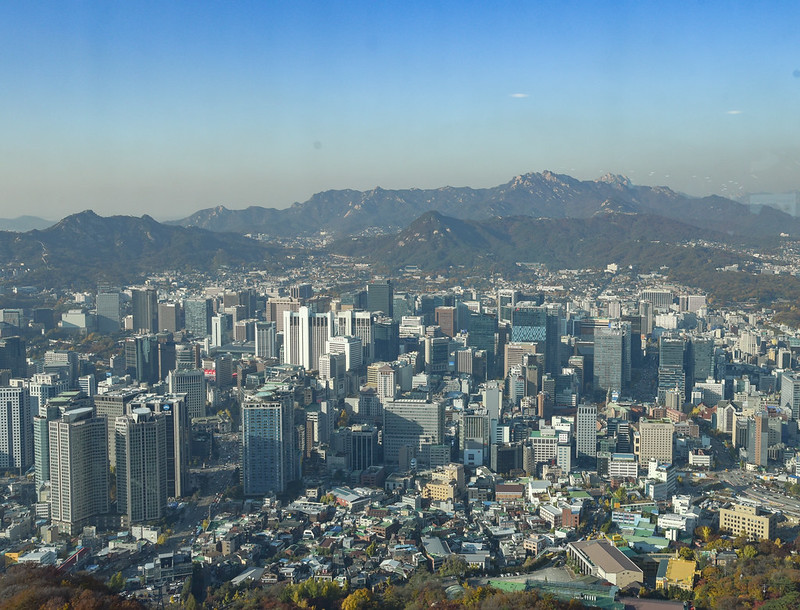
view from n seoul tower
Late afternoon is a great time to check out Namsan Seoul Tower (daily 10AM to 11PM, til midnight on Saturdays). Located in a forested area in the middle of the city, it’s a great place from where you can appreciate Seoul’s skyline. If you are wondering if it’s worth going up the tower versus just appreciating the view from the parking lot, my take is yes – the higher view is certainly much more photogenic. During spring and autumn, the higher view also allows you to appreciate the colorful foliage around Namsan itself. The admission fee to the tower is 16,000 Won but you can get a 22% discount by booking N Seoul Tower tickets here .
Day 3 – DMZ Tour
One of the most intriguing activities you can do during your trip to Korea is to join a tour of the demilitarized zone (DMZ). Korea is officially the only divided country in the world with both North Korea and South Korea as separate member states of the United Nations. The Korean War was one of the biggest military conflicts of the 1950s and it was concluded through an armistice agreement signed in 1953. However, it never progressed beyond that with no peace treaty signed despite multiple efforts. Technically, hostilities have not ended and there are occasional periods when access to the demilitarized zone is closed whenever there are tensions in relations between the 2 Koreas.
The Korean Demilitarized Zone is the 250 kilometer border between North and South Korea plus a buffer measuring about 4 kilometers wide. During peace time, it is possible to visit the Korean DMZ from both North Korea and South Korea and I have had the pleasure of visiting from both sides. Since this guide is about visiting South Korea, I will instead present my perspective of visiting the DMZ from South Korea. But if you are curious to see what it was like to visit the DMZ from the North Korean side, check out my North Korea DMZ experience here .
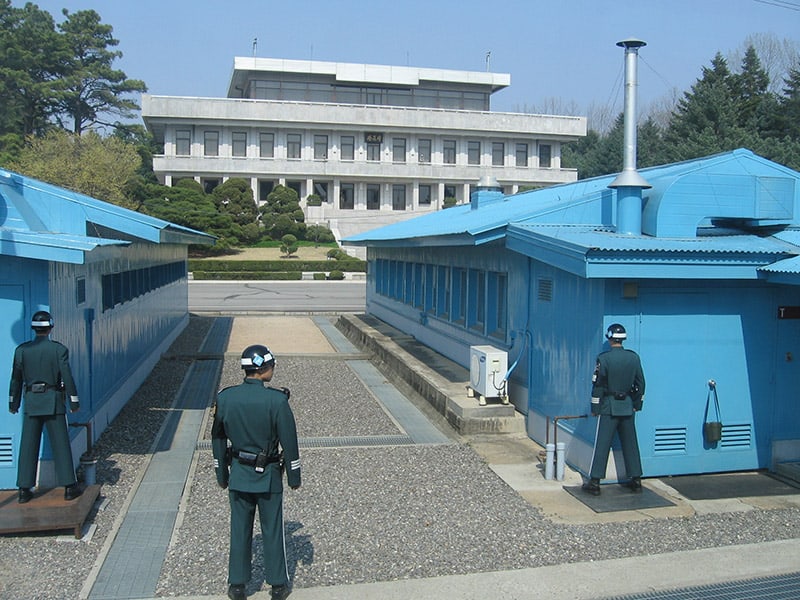
the joint security area of the dmz
There are many DMZ tours being offered but the most exciting kind, in my view, is the tour that includes stepping into the JSA or the Joint Security Area (you can book here ). Do note that tours that include this facility are often more expensive than other DMZ tours but it’s all worth it because you’ll get to step into North Korean soil , albeit for a few seconds. Whenever there are heightened tensions between the 2 Koreas, access to this facility becomes restricted so it’s best to check for the situation before booking. Alternatively, you can book those DMZ tours that don’t come with access to the JSA.

korean soldiers in the dmz
A typical tour of the DMZ that includes the JSA takes about a day. Along the way, there are stops such as the Third Tunnel of Aggression and Dora Observatory – a viewpoint from where you can see North Korea through binoculars. There’s also a customary Korean lunch followed by a visit to the JSA itself. One of the reasons why this tour takes longer is because security is tighter and you’ll be subject to inspections when entering the Panmunjom facility. Expect to be back in Seoul by around 5 to 6PM.
Day 4 – Excursions From Seoul / Seoul’s Neighborhoods
If you are thinking of visiting Nami Island , allocate a full day for the excursion. You can choose to do it yourself but for convenience, you may want to take a direct bus which can do Nami Island combined with Petite France . They will also handle the day’s itinerary for you. Whichever option you choose, you’ll find that taking a shuttle bus there is indeed a lot easier than the DIY route.
If a day trip to Nami Island does not appeal, you can also venture to some of Seoul’s other interesting neighborhoods. Here’s a rundown of districts worth checking out:
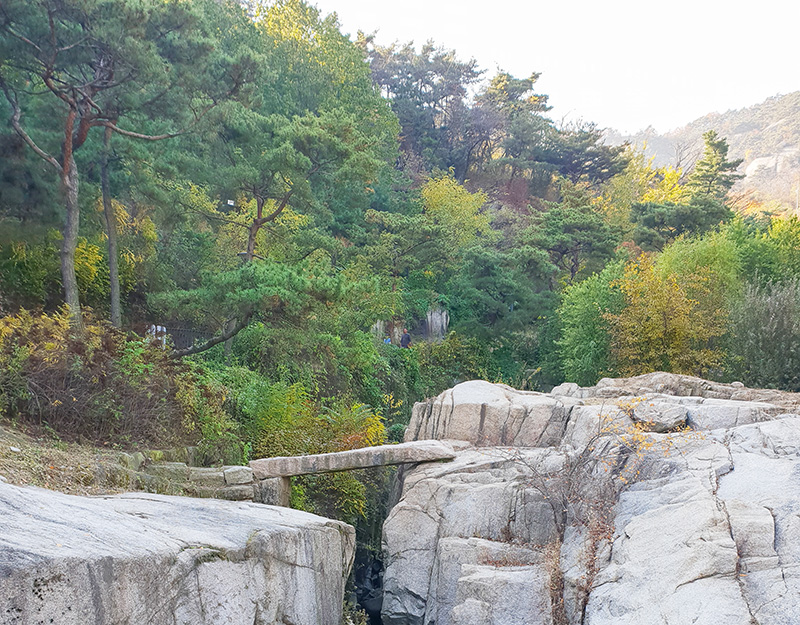
hiking in suseong dong valley
- Buam-dong – Still relatively unexplored by foreign visitors but Buam-dong is quickly gaining ground for its art and design hubs and independent cafes interspersed with natural areas. Highlights here include Changuimun (the original city gate), the cafes Club Espresso and Lumberjack as well as Whanki and Seoul Museums . Nearest metro: Jahamun-gogae
- Seochon – Personally, my favorite among Seoul’s less known districts, Seochon was where the nobles used to live back in the Joseon Dynasty. You will find a lot of clothing boutiques here as well as the Sejong Village Food Street but the real gem is the Suseong-dong Valley where locals typically go for nature walks. Nearest metro: Gyeongbokgung
- Itaewon – A very foreign-centric district as American soldiers typically come here during their leisure time. Today, it’s home to plenty of international restaurants, cafes and boutiques.
Day 5 – Busan
Take a morning train ride to Busan (you can purchase train passes here ) – South Korea’s second largest city. Depending on which train you take, the overall journey ride will require 2.25 to 2.50 hours so it’s definitely possible to do Busan as a day trip if you’re pressed for time, albeit a rushed one.
Many of Busan’s main tourist attractions are located not too far from Busan Station (where trains from Seoul stop). A few blocks south is 40 Steps , a 450 meter street lined with statues and other photo opps, including a 40-step stairway. The area has been refurbished recently and is supposed to reflect life in Korea in the 1950s and 1960s.
Tip: While many of Busan’s attractions are in the city center, the bulk of the good hotels are located farther out. This is especially true for seaside hotels. The good news is that there are left luggage lockers inside Busan Station for you to leave large bags while you go exploring in town.
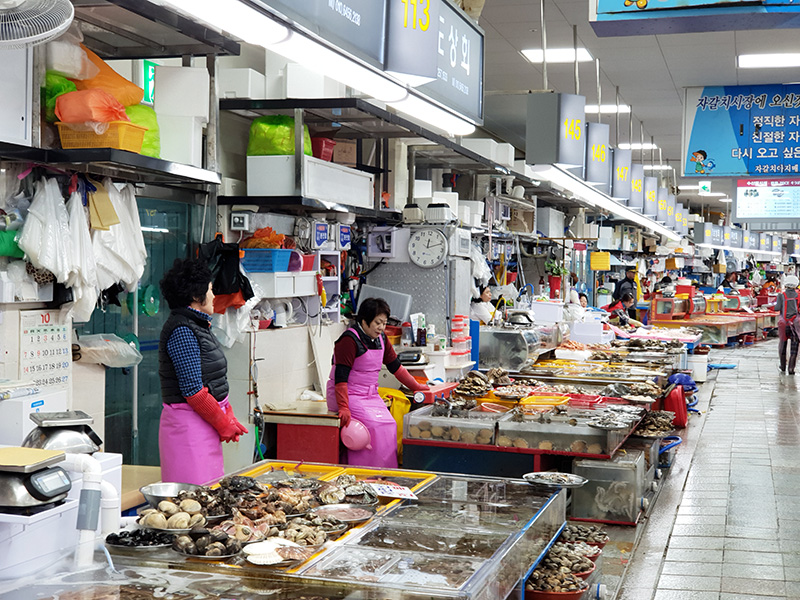
inside jagalchi market
From here, Jagalchi Market (nearest metro: Jagalchi Station) is a short hop away. The thought of eating freshly cut octopus with their tentacles still wriggling probably stands as one of the most iconic travel images concerning South Korea and that is exactly what this bustling seafood market is known for. Less adventurous eaters have other options as well. There’s a wide array of fish, crab and other shellfish available which can be chosen for cooking and served to be eaten at the dining tables upstairs.
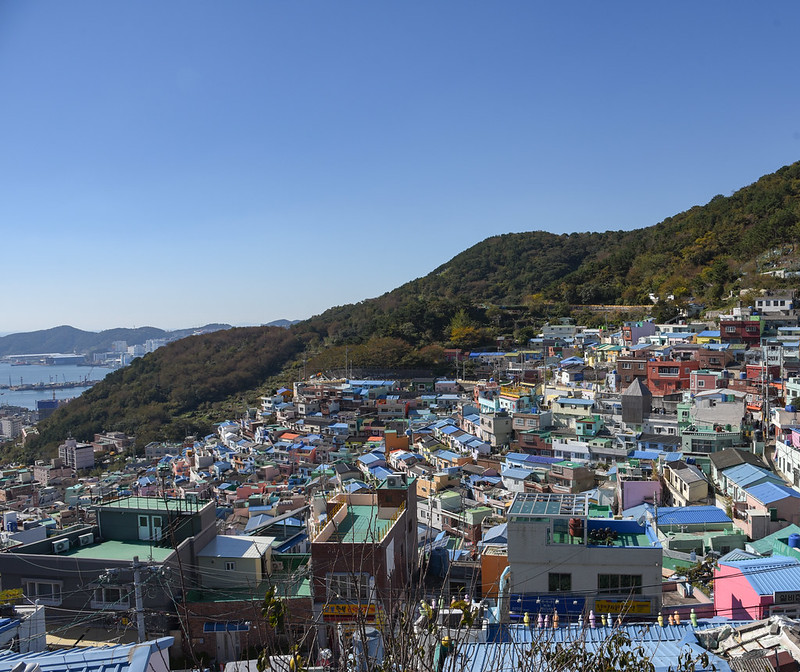
gamcheon cultural village
Next up on one’s Busan checklist is Gamcheon Culture Village . Some call it Korea’s Santorini which I think is a bit of a stretch. It shares more similarities with the blue city of Jodhpur however as many of the houses are painted in similar shades of light blue. You can spend around 1 to 2 hours here depending on interest level. You’ll find shops and murals scattered around the village as well as cafes and museums. There is also an elevated view point here which is a popular spot for wedding shoots and panoramic photos of the village.
If you are in Busan only for a day trip, you can end here and return to Seoul. Otherwise, head to the below.
Day 6 – Busan Outskirts

seokbulsa temple
If you are up for some hiking, check out Seokbulsa Temple located around Geumjeongsan, a mountain range not far from the city center. If you are coming as a group, it might make sense to take a taxi up and ask the driver to wait for you. Admission to the temple grounds is free of charge and visitors come here for the Buddha niches carved on the rocks. It is not considered a major temple in Korea but I have to say these carvings are among the most impressive I’ve seen in the country.
Tip: Within the general vicinity of Haeundae is Dalmaji-gil which has plenty of art galleries, cafes and restaurants. If you are in Busan during the weekend, check out the Dalmaji Art Flea Market from 2PM to 9PM. You can find handicrafts, teapots, bags and other creations by local artists.
After a morning hike, it’s time to cool off by the coast. Busan’s appeal to Koreans lies in its relatively milder weather and beaches. If you are in Busan during the summer months, you might find Haeundae Beach (nearest metro: Haeundae Station) relatively packed with weekenders from Seoul. While it’s definitely a popular tourist spot in Busan, I would not say Haeundae Beach is a must-see especially if you come from a tropical country. If you are in the area, I would instead suggest checking out the Busan SEA LIFE Aquarium near the beach or Busan Cinema Center (nearest metro: Centum City Station) with its metallic exterior and wave-like roof and mini-light show. It is an especially wonderful spectacle at night.
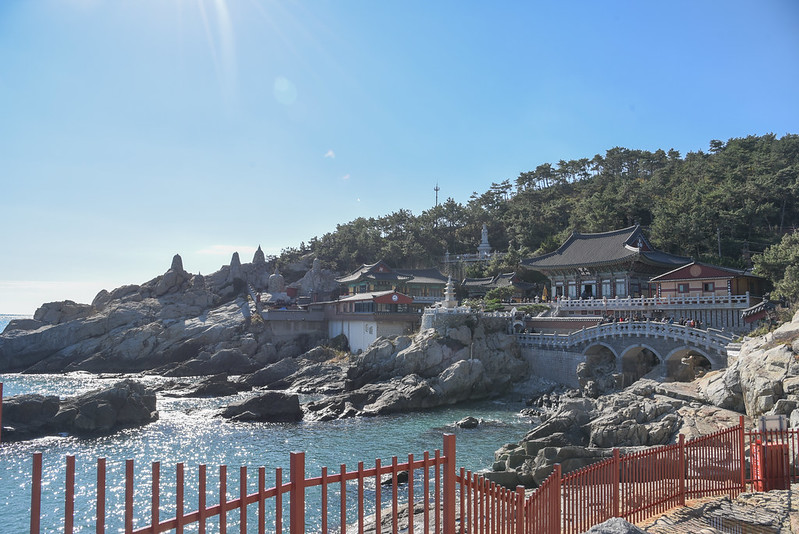
yonggungsa temple
Another place to visit in the eastern part of the city is the Yonggungsa Temple . While Korea has no shortage of temples, what makes this place stand out is its scenic seaside location. The temple is literally perched on a rocky outcrop overlooking the coast which makes it one of Busan’s most photogenic spots. To get here, take the metro to Haeundae Station then transfer to bus 181.
Day 7 – Gyeongju
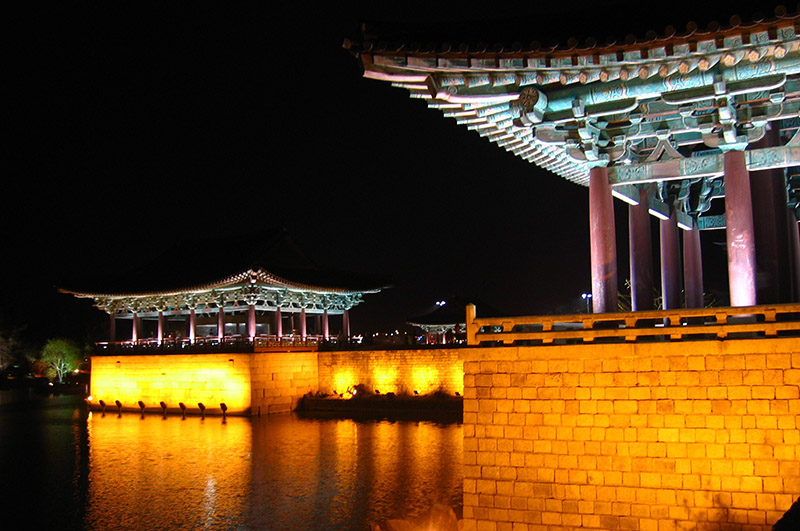
anapji pond in gyeongju
Another reason to visit Busan is that it serves as an excellent base from which to explore Gyeongju , the capital of the ancient kingdom of Silla and a UNESCO World Heritage Site. The town has a plethora of historical sites that can easily take up one whole day of exploring. Highlights in Gyeongju include:
- Bulguksa Temple – Considered one of the main temples of Korea, this UNESCO World Heritage Site is considered a masterpiece of Buddhist Art. The Dabotap pagoda which is found in the temple grounds is featured in the 10 Won coin.
- Seokguram Grotto – Probably the closest Korea has to an “Indiana Jones” type of archeological site, visitors go inside a cavern to witness a large stone sculpture of the Buddha. Of all the places in Gyeongju, it is probably the Seokgruam Grotto that impressed me the most. It’s too bad photography is not allowed inside.
- Cheomseongdae Observatory – An ancient astronomical observatory built during the Silla period in the 7th century.
- Tumuli Park – A large area filled with mounds representing the tombs of the former kings of the Silla period. This was how Korea’s royalty was buried back in the day and you can find other burial mounds scattered all over Korea (including North Korea).
- Anapji Pond (Donggung Palace and Wolji Pond) – Particularly photogenic when visited in the evening while the structures are floodlit, today Anapji Pond exists in a garden-like state with cherry blossoms in the spring and pavilions that are immaculately reflected by the still waters from the pond.
To get to Gyeongju from Busan, you can either take the bus (around a 40 minutes ride) from the bus terminal or alternatively, you can book a guided day tour to Gyeongju that takes you through the tourist attractions listed above.
Getting to Seoul From Incheon International Airport
The Airport Express (AREX) train is my preferred way of getting from Incheon International Airport to the city as it’s relatively fast, inexpensive and there are frequent departures. Do note that if you are flying with Korean Air, you get a discount on train tickets so it’s wise to keep your boarding pass. Alternatively, you can also book online here to get a 25% discount for the AREX ticket to Seoul.
Another way to get to the city is by one of the airport buses which take almost 1.5 hours but the plus point is that it drops you off at varying locations around Seoul. If your hotel is near one of the airport bus stations, then it may make better sense to travel by bus.
Getting to Busan From Incheon International Airport
There used to be a direct KORAIL train from Incheon International Airport to Busan but it has been discontinued. If you can’t fly in/out of Busan to your home city directly, your best bet is to take the AREX to Seoul Station (~ 1 hour) then take a direct train from Seoul Station to Busan Station (~2.5 hours).
Getting to Busan From Seoul (City Area)
From Seoul to Busan (and vice versa), you have a couple of options including train, plane, bus or car rental. These are the pros and cons of each of these options:
- Best overall: South Korea’s KTX trains are best overall in getting between Seoul and Busan . The trains are fast, with the shortest ride being around 2 hour 15 mins. Economy class tickets cost about 59,800 Korean Won. Busan’s main station is in the city itself, not far from Jagalchi Market. You can purchase rail passes here .
- Fastest: Flying is theoretically the fastest. The plane ride lasts just less than an hour but you’ll need to factor in getting to the airport an hour before. Once you reach Busan, you’ll also need to factor in that Busan’s Gimhae Airport is in the outskirts and you’ll again need some form of transport to get to the city center.
- Cheapest: If you are on a budget and don’t mind being on the road for a couple more hours, you can take the bus. A bus ride between Seoul to Busan takes just over 4 hours and costs about 30,000 Korean Won. Buses will drop you off at Busan’s Central Bus Terminal which is at the northern edge of the city. There is a metro station here – Nopo – which can take you to the city center for a cheap price. However, if you plan on avoiding the metro due to heavy bags, etc; you’ll have to note that it’s quite a long cab ride to the city and you may end up paying an extra 20,000 Korean won or more for the taxi trip.
- Car rentals: Car rentals have gained in popularity in the pandemic era as some folks prefer to minimize interactions with strangers during their trip. South Korea is a relatively easy place for driving. Just make sure you have your international license. You can check out car rentals in Korea here .
Travel Tips for Seoul and Busan, South Korea
- Travel Insurance: In this age of uncertainty, it may be prudent to get travel insurance for your trip. If you reside in Singapore, check out this aggregator for the cheapest travel insurance. There is also a promotion running until 1st July that comes with 4x KrisFlyer miles per S$1 , lucky draw for 125,000 miles and even free lounge access in the event of flight delay.
- Navigation: As mentioned previously, I can’t stress the help that Naver Maps provides in navigation and even bus schedules. Make sure to download the English version of this app.
- Changing Money: In Seoul, one of the best places to change money is this money changer in Myeongdong near the Chinese Embassy. The full address is: 26 Myeongdong 2-gil, Chungmuro 1(il)-ga, Jung-gu, Seoul, South Korea and they are open daily from 9AM to 9PM. Otherwise, you can also get pretty good rates from the branches of the big banks. In Busan, you can similarly exchange foreign currency at the big banks or in the area around Jagalchi Market.
Where to Stay in Seoul and Busan
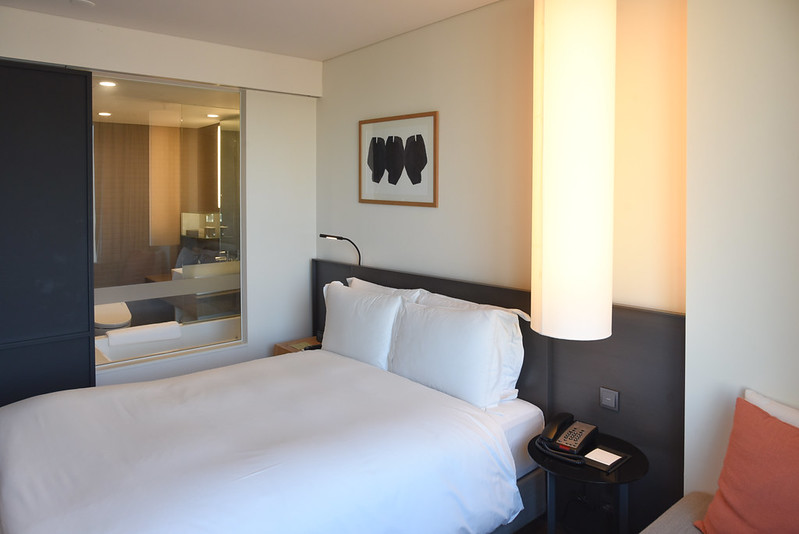
shilla stay gwanghwamun
Seoul – If you prefer to stay somewhere closer to the shopping district, you can check out the Stanford Hotel Myeongdong . The hotel is located just next to Euljiro-1 station. Rooms are clean and value-for-money. The property is also relatively new. For somewhere closer to sightseeing spots, I can’t recommend mid-priced Shilla Stay Gwanghwamun enough. The hotel is within walking distance to Gyeongbokgung and Bukchon Hanok Village. I absolutely loved being able to conveniently return to the hotel in the afternoons for some siesta time as I took breaks between sightseeing. Rooms are of modest size with understated chic decor, taking inspiration from the iconic The Shilla Hotel. You can also check the best prices for other Seoul hotels here .
Busan – The southern city is generally considered by locals as a resort destination and that is likewise apt for visitors in order to serve as a bit of contrast to the hustle and bustle of Seoul. While in Busan, I recommend the highly instagrammable Hilton Busan located in the city outskirts. The curve-y interiors reflect the seaside location of the hotel. Just a word to note – you might get too comfortable here that you wouldn’t want to leave the hotel anymore. For a cheaper option, you can check out Baymond Hotel located a short walk from Haeundae Beach. You can also check the best prices for other hotels in Busan here .
You May Also Like

Hi, my name is Bino and I started I Wander around 15 years ago with the aim of sharing about some of my personal journeys and experiences, hoping that the information may benefit readers like yourselves. Let me know your thoughts by leaving a comment below. Alternatively, you can also email me at b i n o (at) iwandered.net. You can follow I Wander on Facebook , Telegram , or Instagram . Also, if you liked this article, please feel free to SHARE or RETWEET
More Posts - Website
Reader Interactions
Older posts.
July 12, 2019 at 11:27 am
Great and very informative post. I visited South Korea earlier this year around May 2019. But i only ventured through the capital city Seoul. However, I am more keen to explore the ancient side of the country during my next visit Busan and Gyeongju. I am thinking of starting my visit in Busan, to Gyeongju and then back to Seoul for few days before flying out, but am confused if that’s possible because my port of entry will definitely be Incheon airport from Kuala Lumpur and so as my port of exit. Is there anyway i can fly directly into Busan from Kuala Lumpur and make Seoul as my port exit? Or I have to arrive at Incheon airport go through the immigration and then make my way to Busan?
July 12, 2019 at 11:33 am
Yes, if you are coming from KL, believe AirAsia flies to Busan direct.
May 10, 2022 at 2:38 pm
This is an excellent itinerary! Thanks for sharing! am heading to Seoul in late June & will be spending 2 weeks there. I would like to include 2 days stay in both Busan & Sokcho & will likely travel to these two places on weekdays, to avoid any weekend crowd. Can you advise whether it is best to travel from Seoul-Sokcho-Busan-Seoul or visi versa? I noted travelling time between Busan & Sokcho by express bus is 6 hours?? Is it safe to purchase any bus tickets etc only when we fly into Seoul? Do you have any inputs or recommendation? Thank you so much!
May 10, 2022 at 2:42 pm
Thanks for your kind words. Sorry haven’t been to Sokcho itself but regarding buses – I usually only buy on the spot.
November 17, 2021 at 2:58 pm
Hi, I will be flying to Seoul with family for 15 days in late December thanks to Singapore-South Kores VTL. Would like to get your advise on the following: 1) Are we able to visit Jeju or is quarantine still required? 2) We were thinking of renting a car to visit some outskirts of Seoul. a) Is it possible to drive to Busan? b) Are there any areas which we should avoid by car? c) Is it easy to drive in South Korea & find parking too? Hope to hear from you soon! 3) Any good recommendations for authentic Korean food?
November 17, 2021 at 3:09 pm
Hi, Thanks for dropping by. I am not sure about Jeju. It’s best to check with relevant authorities.
On driving to Busan – yes it’s possible but it will be a few hours’ drive.
Driving in South Korea is quite easy – but note they drive on the opposite side of the road as compared to SG.
For parking, most tourist attractions will have parking areas so no issues. If you are in the city center, might be a bit tougher but you can find those indoor parking lots or shopping mall parking spaces. Don’t park on the street unless it’s clearly marked for parking.
For food, you can check out the ones I listed in this article 🙂
December 19, 2021 at 11:35 pm
Hi! It is possible to drive from Seoul to Busan but it will take roughly 6 hours to get there, mostly because of the traffic, but also because the speed limit is set at 110 km/hour. As far as parking is concerned, most hotels and restaurants have their own parking, but within the city going by public transportation is much easier. Coming from Eastern Europe and having lived in Hong Kong for a while, and after 1 year of living in South Korea I would say driving is easy, just a bit crazy crowded, especially as you get closer to Seoul (no matter the direction). Hope this helps!
April 8, 2022 at 11:28 am
Hi B, thankyou so much for sharing your trip, such an amazing journey. reading your post makes me also want to visit there 🙂 hope i can visit there too for next vacation
January 28, 2023 at 8:57 pm
I spent a week in Busan and a week and Seoul and can just recommend it. I really enjoyed Busan a little more than Seoul. I love the sea and the coastline and beaches there are so beautiful.
January 31, 2023 at 11:36 pm
I came across your website. I found it most interesting. I wish to travel to South Korea in April. I want to visit Seoul, Busan, Gyeongju Pohang, Itaewon, and Jeju island. I wish to be brave and travel on my own. Female in her sixties but young at heart. are there lots of accommodation for the single traveller.
May 7, 2023 at 5:55 pm
Thank you, this is really great! I have a question about Busan – in your itinerary its just 2 nights which makes sense to me, but you suggested hotels that seem quite far from the station. Was it not stressful to get all your luggage to the hotel, then back to the sightseeing etc?
May 7, 2023 at 7:38 pm
That’s a great question! As Busan’s hotels are quite spread out, to save time, I would suggest leaving your luggage at the lockers inside Busan station while exploring the sights.
September 9, 2023 at 10:57 am
Hi, You itinerary is great. I wanted to ask why didn’t you add the DMZ tour to this. What are your thoughts
September 9, 2023 at 7:51 pm
Thanks for the idea. Just added my experience of the DMZ tour 🙂
Leave a Reply Cancel reply
Your email address will not be published. Required fields are marked *
Save my name, email, and website in this browser for the next time I comment.

Korea 10 days itinerary: the very best of a trip to South Korea
Understanding Korea is like trying to understand your crazy ex; one second you’re placidly sipping tea beside palace grounds, the next you’re slamming soju in a BBQ smokehouse. Bounding straight from the serene mountains of Bukhansan into the frenetic street-dance battles of Hongdae, it’s hard to keep up with the capital’s split personality but it’s certainly a thrill ride while it lasts. Though Seoul captures around half of the national population within its sprawling borders, there’s much more to uncover outside of its embrace. Take the high-speed train to Busan (no zombies, just sleek convenience), stopping off at Joseon Dynasty kingdoms, Hanok villages and grand national parks before resting up along the laidback southern coast for top seafood, spotless beaches and UNESCO-listed volcanic isles.
Tailor-Made Japan: Shrines & Skyscrapers
Experience the best of Japan, exploring vibrant Tokyo from its glittering skyscrapers to its fascinating temples, and tradition-steeped Hakone, where you stay at an exclusive ryokan (traditional inn); and then, travel by bullet train to discover the delicate beauty of timeless Kyoto.
from $12,995 /8 days

Seoul | Photo: Sunyu Kim
South Korea
Connected to Eastern China through the Korean Peninsula yet separated from the North by the DMZ, South Korea couldn’t be more different or its insular Northern kin. Since splitting from North Korea in 1953 after the Korean war, South Korea developed as a key player in the global economy, embracing democracy and modernity to become a high-tech hub of commerce, laden with incredible natural beauty and intact cultural traditions. For its unique Confucian history and ornate Chinese-influenced architectural styles, Korea is a pure joy to explore. And though you can certainly find neon nights, pumping nightclubs and untempered consumerism, the nation may also surprise you with unexpected grace and a distinctive food scene like nowhere else on earth.
LGBTQ+ Travellers in South Korea
The subject of gay rights in South Korea is somewhat taboo, particularly among older Koreans from beyond the capital. While there have never been laws incriminating homosexuality, Korean society is not overly accepting or tolerant of that which they don’t understand, closed off as it was for centuries. Though the current progressive democratic party has pushed for the inclusion of sexual orientation in anti-discrimination laws, far-right conservative groups push back. You’ll see a similar tension play out if attending Seoul’s annual pride parade when gay rights campaigners face a picket line of religious conservatives. Gladly, however, the nature of Korean society is pretty placid and therefore issues such as these rarely lead to outright confrontation or violence.
Interestingly, despite denial of queer culture among some older Koreans, in celebrity culture, you’ll find openly gay K-pop stars, transgender TV personalities (such as Ha Ri-Su) and even national K-pop treasures BTS openly advocating for LGBT rights. And while younger people are more and more open on the subject, many remain ‘in-the-closet’ in avoidance of family and cultural stigma. Regardless of traditional values, queer culture is very much alive and well in the nation if you know where to look. Along with the recent success of Seoul’s first gay drag parade and the growing popularity of Hongdae and Itaewon’s gay clubs and bars, the South Korea gay scene gets bigger and better each year. For downbeat fun, Haebangchon district near Itaewon is where you’ll find the liberal expat scene, but for something a little more age-appropriate, try the fancy gay bars around Jongno. Outside of gay Seoul meanwhile, you’ll also find fun gay neighbourhoods in the cities of Busan and Daegu.

Photo: Harry Cunningham

Photo: Maxx Gong
When to go to South Korea
Split neatly into four seasons, with winter and summer getting increasingly longer and more intense each year, South Korea is best visited in spring and fall when the humidity is low yet the sky remarkably blue. While locals will complain about the fine dust that veils the city during low rainfall in spring, the perfect temperatures and the allure of the cherry blossom season makes April the best month to visit Korea. Mother nature also puts on a show for visitors in fall (around October) when the leaves go rusty and set the rocky mountains aflame with colour.
At all other times of the year, Korea is a harsh mistress, but that doesn’t mean you should avoid her! In summer, temperatures average around 27°C but often soar above 30°C with high humidity. In winter meanwhile, high snowfall and dry winds run alongside average temperatures of -3°C (with brittle lows of -15°C!), making for remarkable landscapes and optimal skiing conditions.
Korea 10 days itinerary
In just ten days it’s possible to see many of South Korea’s best bits, concentrating on the two main metropolitan cities of Seoul and Busan. In addition to the shopping hubs of Seoul and the seafood markets of Busan however, this South Korea travel itinerary will take you to the historic villages of Jeonju and aboard the ferry to Korea’s very own version of Hawaii. This 2020, bear in mind that COVID-19 travel restrictions require anyone entering South Korea from abroad to undergo a 14-day self-isolation before beginning any travel adventure.

Soondae | Photo: Harry Cunningham
Known as Namsan, this small central mountain is a favourite among Seoulites, featuring accessible trails and bike paths leading towards the city’s most romantic spot for panoramic sunset views across the city
Seoul - 3 Days
A key first step on every South Korea travel itinerary is to the international city of Seoul, a place so convenient and vibrant you might never want to leave. If time is limited, however, we’d recommend allocating three days in Seoul, condensing all its many palaces, tea shops and city hikes into one manageable bite. Home of approximately 10 million people, Seoul seems to stretch without limit, crossing the banks of the Hanggang River in the south and creeping into the foothills of Bukhansan Mountains in the north. The city’s labyrinthine subway system makes every neighbourhood reachable but can leave newcomers a little overwhelmed by the sheer selection of train lines and colours.
To gain perspective on Seoul it’s necessary to climb a little. Though there are guided bus tours serving the serene hills around the President’s residential ‘Blue House’, we recommend navigating the buses or hailing a taxi to reach the trailhead of any of Seoul’s best mountains – from Bukhansan to Gwanaksan – where the ‘Land of the Morning Calm’ finally delivers. Read up on all the best bits of South Korea’s capital with our dedicated Seoul travel guide , or follow our three-day plan below…

Photo: Ivan Babydov

Photo: Bundo Kim
Day one in Seoul centres us among the biggest and best palaces within the heart of the city. Gyeongbokgung Palace may get all the glory as the one-time King’s residence but Deoksugung beside the futuristic City Hall offers an equally worthy Changing of the Guard performance with stunning – if smaller – royal gardens within. Strolling out from the palace, you’ll soon reach the quaint Hanok village of Bukchon, one of the city’s most popular districts for its photogenic slate houses and heritage tea shops among cobblestone streets. If you fancy playing dress up in traditional garb, rent a Hanbok from any of the stores here and re-enter the palaces for free.
Within walking distance of Bukchon, Insadong is the perfect place to catch a bite to eat among the cafés and artsy souvenir stores running through to Ikseondong, another historic village. At night, Insadong will morph into a night market hotspot but for more options and a slightly more frenetic pace, brave Myeongdong for high street fashion and beauty stores, each fronted by street food vendors plying everything from Strawberry Mochi to BBQ squid.
The second day of our Seoul itinerary takes us north, first to the shopping district of Namdaemun for discounted cosmetics and fashion, before passing the US military base of Yongsan on the way to Seoul’s War Memorial Museum. Though hard-hitting, the museum is a sure-fire way to gain some insight on the nation’s turbulent history, along with details on countless wars and dynastical takeovers, spanning Japanese colonial times and the Korean War.
After a heavy morning, clear your head with the freshest air in the city, on the hills surrounding Seoul N Tower. Known as Namsan, this small central mountain is a favourite among Seoulites, featuring accessible trails and bike paths leading towards the city’s most romantic spot for panoramic sunset views across the city. Nearby Itaewon hosts the city’s most active nightlife (also the centre of gay Seoul), but, alternatively, the upmarket bars of Gangnam or the youthful clubs and private karaoke rooms in Hongdae may hold appeal.
On day three, we journey beyond the city limits to find the much talked about DMZ (‘Demilitarized Zone’), a popular dark tourism attraction from Seoul, offering an up-close look at the border between North and South Korea. Both half-day and full-day trips leave from the city centre, allowing for observatory views of the ‘no-man’s land’ between north and south, with an optional visit to an abandoned tunnel and suspension bridge. If the DMZ leaves you cold, other interesting and easy to reach Seoul day trips include Incheon’s Chinatown and harbourside, the historic fortifications of Suwon or the beautiful fall foliage of Nami Island, accessible by boat or zip wire.

Photo: Jenny Kim
Jeonju - 2 Days
Moving down south towards the Jeollabuk-do region via KTX high-speed rail, we settle ourselves in Jeonju, the birthplace of both the Joseon Dynasty and the bibimbap, Korea’s staple dish of rice, egg, vegetables and hot sauce. While Seoul is not short of Hanok villages, Jeonju’s Hanok Maeul brings a rather more authentic example, where traditional wooden houses line wonky alleys clustered within the city’s historic centre. Less crowded than the capital’s offerings, Jeonju also has the added appeal of being the nation’s foodie capital, once named a UNESCO city of gastronomy, with museums dedicated to the craft of soju and rice wine as well as other traditional handicrafts. From there, hunt down the city’s Gyeonggijeon Shrine and rate some art within the Royal Portrait Museum, with a second chance of dressing up in traditional Hanbok for the best vacation photos. Other highlights in the city include the Omadae Viewpoint and the Jaman mural village for local street art and small town vibes.

Jeonju | Photo: Rawkkim
Jeju Island - 3 days
Before kicking it to the southeast coast, consider heading west to the small fishing village of Mokpo, an understated spot mostly forgotten as a transit port to Jeju Island. Instead of rushing off to the ferry port, however, spend a few hours soaking up the authentic atmosphere along the rugged coastline, picking up a few words of Korean from enthusiastic seafood vendors along the way. Alternatively, fly direct to Jeju Island from Seoul, Busan or Jeonju city, booking in advance for the cheapest fares.
Requiring a flight or a ferry to reach, Jeju Island ducks the crowds and excitements of the mainland to remain a blissfully calm island retreat on the south coast. One of the most popular domestic vacations among Koreans, Jeju is famed for its clean air and sustainable vision, demonstrated by its carbon-neutral mission and ecotourism attractions. Though public transport is available across the island, buses can get crowded and renting an electric vehicle to get around is definitely the better option! With your own two or four wheels, you can circumnavigate Jeju with ease, stopping off at any of the island’s best attractions – from volcanic peaks to Hello Kitty theme parks – at your own pace.
With as many as three UNESCO World Heritage Sites in reach of a lively capital city, Jeju Island is sure to keep you entertained for at least a weekend. Choose to tackle Mt. Hallasan (Korea’s highest peak) on a full-day round trip before taking to the underground caves and lava tunnels hidden beneath the landscape on day two. If seeking a challenge other than Mt Hallasan, consider the Olle Trail, a coastal path which loops the entire island passing by waterfalls, rock formations and tea fields.

Jeju | Photo: Ashim D. Silva

Jeju | Photo: Dave Kim
With as many as three UNESCO World Heritage Sites in reach of a lively capital city, Jeju Island is sure to keep you entertained for at least a weekend
In addition to outdoor adventure, our Jeju Island itinerary also gives us the chance to unwind in style at any of its luxury spa hotels, many offering volcanic treatments and locally-sourced beauty products from Innisfree. Alongside volcanic wellness, the city centre can also provide shopping and café culture, in reach of the Jeju National Museum, Chocolate Museum and the slightly more risqué Museum of Sex and Health. For street eats and souvenirs, however, Dongmun Market is sure to satisfy as the largest indoor market on Jeju.

Jeju | Photo: Kawai So
Busan - 2 Days
And on to Busan, either by flight or ferry and train, to spend our last few days along the metropolitan coast of Korea’s second capital. A world away from the fast-paced tempos of Seoul, our Busan itinerary offers a rather more down-to-earth version of South Korean life. An old school port town turned dynamic global city, Busan is the place to be for casual beach days amid cliff-side temples, bustling markets and inviting hot springs.
Things to Do in Busan
Though not as conveniently laid out as Seoul, Busan has its own humble subway system serving all the top urban attractions, with buses running regularly into the mountains for hiking and temple excursions. Tour the city’s eclectic markets – circling out from Jagalchi Fish Market – finding everything from raw octopus delicacies to second-hand fashion, besides any number of chic cafés and no-fuss restaurants. The hip commercial district of Seomyeon with its video games arcades and neon-lit restaurant scene is also an option to while away an afternoon.
Outside of deep winter and high summer, the weather in Busan is often perfect for a beach day. Head to the ex-pat district of Haeundae for California-style coastline fronted by glittering hotels and cedar-lined walking trails, moving inland come sundown for quality seafood restaurants and a spot of local nightlife at nearby Gwangan Beach where gay Busan is centred.
If you have another full day to fill in your Korea itinerary and still have the energy, gain some perspective with one final hike within the region. There are a number of paths running along the coast – such as Moontan Road to Songjeong Beach, Igidae viewpoint walk or the more challenging Geumjeong-san hike – but other more rural options include the breath-taking temple hike around Seokbul-sa.

Photo: Yi Liu

Photo: Insung Yoon
Last day in Busan
No Korea trip is complete without a temple visit and if Seokbul-sa wasn’t for you then our last day in Busan can surely provide. Rise early to see the region’s most famous attraction of Haedong Yonggung Temple set into the rugged cliffs of the south coast. Built in 1376 and still operating as a Buddhist site, Haedong is a good way to spend a few hours before returning to the city for a pre-departure lunch. If your flight doesn’t depart before evening, however, rest your head at a jimjilbang (traditional spa) for an affordable sauna and hot spring experience complete with napping room!
Want to simplify luxury travel planning?
Whether you want a resort vacation, wildlife safari, city break, luxury cruise, wellness retreat, honeymoon, once-in-a-lifetime adventure or weekend escape, the trip curation experts at Mr Hudson make travel planning a breeze. Find out how we can handle the finer details of vacationing in style.

Photo: Thomas Kinto

Gyeongju-si | Photo: Karl JK Hedin

Photo: David Mark

Busan | Photo: Thomas Roger Lux

Photo: Jahan Hussain

Dobong-gu, Seoul | Photo: Ramesh Kumar Saini

Photo: Hanyeol Hwang

Photo: Hong Kim

Photo: Alexandre Trouve

Jeoldusan Martyrs' Shrine, Seoul | Photo: Robby McCullough

Jusangjeollidae, Jeju-do | Photo: Lightscape

Seongsan Ilchulbong, Jeju Island | Photo: Arrigo Lupori

Busan | Photo: Markus Leo

Photo: Todd Brogowski

Photo: Mathew Schwartz

Photo: Tom Hill

Photo: Timothy Ries
Did you enjoy this article? Then sign up for our newsletter
Did you enjoy this article the same team that curates our content designs your perfect trip, explore more.

The best beaches of South Africa and where to stay
Whether you want to mingle with South Africans at the city beaches of Cape Town and Durban or escape to the secluded bays in the Eastern Cape or along the Wild Coast, the vast coastline of South Africa has the perfect beach for you.
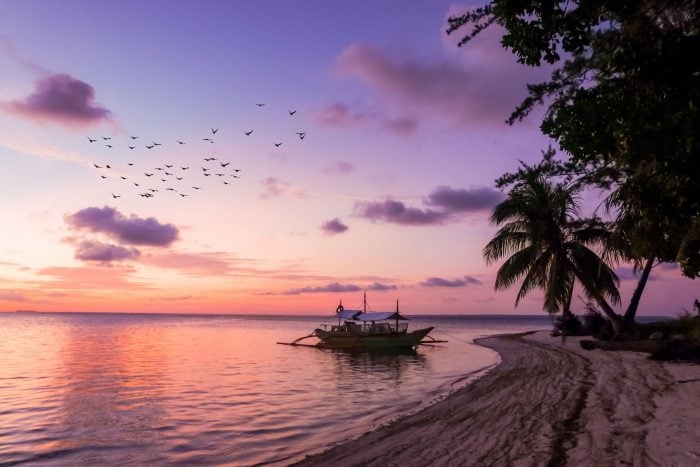
Things to do in the Philippines
A snapshot of this boisterous country might include its famed rice terraces, often described as the Eighth Wonder of the World; the thrust of life in the capital, Manila; sparkling, secluded lagoons; or misty mountains just waiting to be explored.
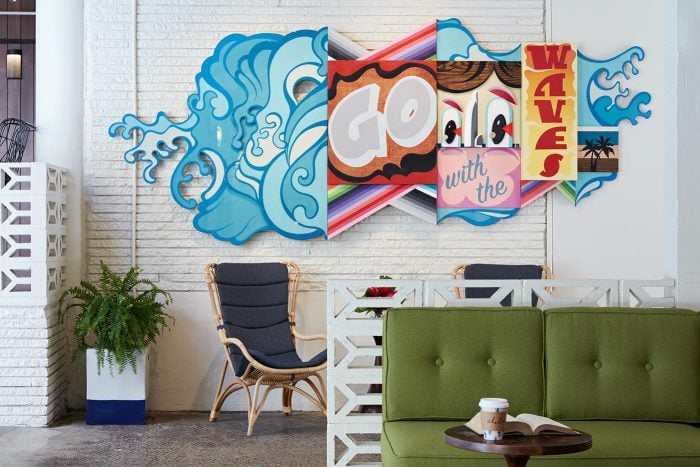
The Surfjack Hotel & Swim Club - paying homage to the true soul of Waikiki
Forget tiki kitsch; the Surfjack in Waikiki succeeds in seamlessly blending nostalgic surf culture with modern and fresh Honolulu design.
Subscribe to our newsletter
You can unsubscribe at any time by clicking the link in the footer of our emails. We use Mailchimp as our marketing platform. By clicking below to subscribe, you acknowledge that your information will be transferred to Mailchimp for processing.
Sign up for exclusive insider promotions

5 Days South Korea: Complete Travel Guide & Seoul Itinerary

Posted by Mikaela
55 Comments
This post may contain affiliate links. If you go through them and make a purchase, I may earn a penny. Don’t worry, it won’t cost you any extra, but will surely light up our travel journey!
This is a comprehensive Seoul itinerary and travel guide. It includes a pre-departure guide, places to visit, and a summary of expenses and itinerary.
South Korea has made its name famous for history and technology all over the world—no doubt many people love this country for their rich culture, technological advancements, and creative pursuits such as the mukbang, Dalgona coffee , and the entertainment industry. But the admiration doesn’t stop there as many people dream of an authentic Korean experience.

Visiting this country was the most spontaneous, yet life-changing decision I made! I had a spectacular travel experience, thanks to the awesome city of Seoul. As I write this travel guide and itinerary, I remembered the days when I used to go nuts about this country.
Pre-teen years is the time of self-discovery, emotional rollercoaster, and expression of interests. In my case, it was listening to Kpop songs, watching K-dramas on local television, memorizing lyrics, and singing the songs–as if I can relate to it (ack, flashbacks!).
Although this phase didn’t last long, it’s funny to think that ten-year-old Mikaela would be so happy that this country was my first international travel experience.
If you’re reading this post, it might be because of the Hallyu or Korean wave. Their domination has been overwhelming—in the most pleasant way.
I know you’re excited about this travel guide, so let’s jump right to it!
Seoul, South Korea
Seoul is the capital of South Korea or Hanguk (as the locals refer to their motherland). It is in the southern part of East Asia with its neighboring country: Japan and China. Historically, the city was used as a strategic center point of several ruling kingdoms such as Baekje, Joseon, and now the present Republic.
Now, it’s widely known for different reasons like culture, urban architecture, technology, artistic attractions, and food.
Besides, it’s comprise vast mountains and hills that flaunts alongside the skyscrapers of Seoul today. This wondrous view has left satisfaction among its people and foreign visitors. There’s also the Han river — which separates Seoul into two major areas: Gangbuk and Gangnam.
Gangbuk and Gangnam

To better appreciate the city, one must understand the difference between the two main areas. Gangbuk houses the five palaces and mainly historical sites in Seoul (Gwanghamun Gate as its border). The northern part is the old city because of its traditional state that many people visit for a cultural and historical experience.
On the other side, the southern part is Gangnam or the new city . The first thing I can associate with this is the Gangnam Style of PSY. The song is a good example of how the two main areas differ from each other. The flashy, complex, and edgy style of Gangnam is evident to its people, shopping malls, high-rise buildings, and other modern structures.

Both Gangbuk and Gangnam showcase distinct classes of pride: one is the pride of culture, history, and tradition, while the other is prominence, sophistication, and innovation. With the two areas, you can observe strong traditions, yet modernity and a mix of nature in an urban city. The perfect balance between old and new that brings out the charm of Seoul.
Pre-Departure Guide
The following are important to settle and be familiar with for convenience and pleasant flow of your Seoul itinerary.
Plane Tickets
Online booking is very easy because of the availability of mobile apps and websites. If you’re from the Philippines, Philippine Airlines , Cebu Pacific , and Air Asia are your top choices. Another option is to contact a travel agency or visit their local offices.
If you’re not a Philippine passport holder, you may skip the next part (Visa processing).
Philippine passport holders must apply for a Korea visa. New travelers become discouraged about this part, but there’s a high possibility you’ll get it if you comply with the requirements.
The Korean Embassy has implemented an online application (you can download the form here) and the processing of visa through travel agencies. Meaning, you need not to do it manually except if you’re:
- Spouse or a child of a Korean National
- Government employee traveling for a business trip
- A person with immediate humanitarian reasons
- Someone with visa issuance number from Korea
Note: No one can guarantee your visa grant (travel agencies are limited to processing only). The proper mindset is to comply and increase your chances of getting it.
Travel agencies have different processing fees ranging from ₱500 up to ₱1,500. You’ll pay more if you opt to stay longer (60-90 days).
I went to Travel Pros Inc. , a travel agency in Mandaluyong, Philippines. I recommend their services because of their excellent customer support and fast transactions (convenient and hassle-free). As a first-timer, I had a pleasant experience with them.
- Regular processing days – ₱700
- Express visa processing – additional ₱1,000
The set of requirements vary per case (employee, student, married to a Korean national, etc.) I was a university student when I applied and here are the documents I provided.
- Passport (at least 6 months of validity)
- Printed application form
- Passport-size photo
- Photocopy of your passport
- School Certificate (for students)
- Copy of birth certificate
- Parents’ documents
Click this link for the complete list of the requirements based on your situation.
Online Ticketing
If you haven’t heard about Klook, you’re missing out on great discounts. They provide top activities, day trips, tours, and other services at a discounted price. As a low-maintenance traveler , I recommend using it, especially for convenience. Many travel bloggers recommend it also for the same reason.
We used Klook for the following activities and attractions in Seoul. You can click the links to get great deals and discounts for your next visit in Seoul.
- Day trip to Nami Island and Petite France –₱1, 293 ($26)
- Namsan Seoul Tower–₱241 ($5)
- Hanbok Experience –₱328 ($7)
- Discover Seoul Pass –₱1,933 ($39)
Note: Activate your Discover Seoul Pass on Wednesday onwards (preferably) because many attractions are closed on Mondays and Tuesdays. Don’t forget to cross-check the schedules with their official websites.
Discover Seoul Pass
The Discover Seoul Pass will allow you to visit many landmarks. They offer 105 attractions and activities (they increased it from 63 to 105 last October 2019) that you can choose from based on your liking. It’s easy to use, plus you can use it as a T-money (you will save 3,000 won) and have a free AREX one single-journey train ride from Incheon airport to Seoul. Another part of its feature is discounts and benefits for activities and destinations from participating parties.
Transportation
AREX one single journey train ride from Incheon Airport to Seoul, Seoul Bike (one day, one bike), Seoul City Tour Bus, and Yellow Balloon Tour Bus.
Free Admissions
N Seoul Tower Observatory, Sodaemun Prison and History Hall, MBC World, 63 Building, Trickeye Museum, COEX Aquarium, SMTOWN Museum, Lotte World, and more!
Runningman Thematic Experience, Namsan Tower Hanbok Experience, Skylift (Seoul Grand Park), some cooking class, and more!
Sim Card and Internet Access
Whether you’re traveling solo or with companions, it’s important to have internet access. Gaining an international sim card will allow you to message, call, and stay online in a foreign country. You can avail of this inside the airport or buy it before.
To avoid mishaps, contact your local mobile carrier regarding the international sim card. This happened to me when I ASSUMED that my phone is eligible for such use. Luckily, my friend brought an extra mobile phone to use.
Another thing, Seoul has public WiFi. It’s always available and fast! Just in case you have consumed your data caps, you can still access the internet in public places.
Renting WiFi devices is also an option, although I find it inconvenient and stressful since you are responsible for damages and in case it got lost.
The currency in South Korea is Korean Won (₩ ) . It’s recommended to exchange your money before going to South Korea.
Tip: Exchange only a portion of your money on the airport and exchange the rest in Myeongdong (best place for money exchange).
Learn Basic Hangul
You can learn basic Hangul (Korean language) before your visit. It’s easy and will become handy during your trip. With this, you’ll also get to see the beautiful smiles of the locals once you interact with them. For our trip, whenever we greet them in Hangul , they gave us a warm smile and starts a conversation (in English).
These phrases will be helpful:
Where to Stay
There are five famous neighborhoods to choose from in deciding where to stay. It’s best to consider your travel preferences first, then settle on a location.
Myeongdong –for shoppers, foodies, and those who want to stay in the center of Seoul. There are many hotels that you can stay in.
Jongno –for culture and history junkies; old souls. Hanok guesthouses are available. This location is perfect if you’ll only spend a few days and wish to visit famous landmarks on foot. You can read more about the Jongno District on the following links below.
Hongdae –for those who love nightlife and parties; mostly famous among young adults. Guesthouses, dorms, and Airbnb are available here.
Gangnam –for tourists and business trip attendees. Known for its high-rise buildings, parties, malls, and luxurious lifestyle.
Itaewon –for global trotters, Westerners, or those who want to stay in a multi-cultural environment.
READ MORE: WHERE TO STAY IN SEOUL? 5 BEST NEIGHBORHOODS FOR FIRST-TIME VISITORS
We stayed in an Airbnb in Hongdae—perfect for students and young adults. We made the best decision as we walk the streets past midnight and everything is still open! A true neighborhood that never sleeps!
How long should you stay in Seoul?
Your trip duration will depend on your travel concept. You can visit the top attractions in Seoul within three days of stay, but four to seven days is ideal if you’re looking for an in-depth experience. The city is alluring; every day we find extra activities to add in our itinerary; the main reason we swore to go back soon.
2-3 days : top attractions & shopping districts
4-7 days : day trips, shopping districts, hiking, cultural exploration and lots of time for neighborhood discovery
7 days or more : includes living experience and a visit to other provinces
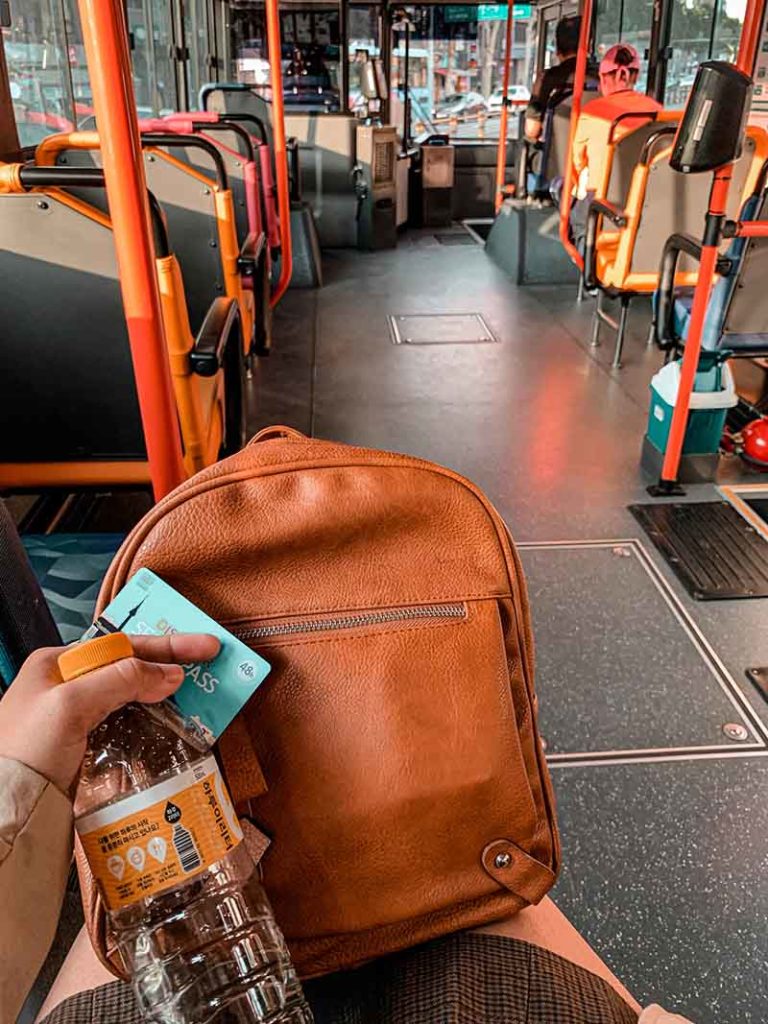
Seoul’s notable feature is its advanced transportation system. The metropolis is very accessible to any transportation methods like subways, bus stations, taxis, or walking!
You need a T-money card to pay for the subway and bus fares. It’s an excellent investment since you can use it for subway networks, metros, buses, and even as lieu of cash in convenience stores and other businesses.
The card has no expiry. You can use it for countless times and only need to recharge it on convenience stores or designated recharging machines. The remaining balance will remain untouched, and you can refund your unused balanced in convenience stores too.
Where to buy?
You can purchase and recharge a T money card at the Incheon airport, CU stores, and convenience stores. There are self-service recharge machines in Seoul metro stations, too.
Note: If you avail the Discover Seoul Pass, you can use it as your T-money card (you’ll save 3,000 won because of this)
Navigation apps are important when traveling. If you’re thinking of Google maps, hate to break it, but it’s not functioning well in South Korea. Try using Naver Maps and Kakao Maps for directions around the metropolis.
We used Google maps for subways and bus stations, BUT it doesn’t provide an accurate direction for our inquiries all the time. We used the GPS feature for walking and short-distance navigation.
For subways, we also used Kakao Metro and free subway maps available in Android and iOS.
Google Translate will make your life easy if you’re not familiar with Hangul. We used it for restaurant menus and other materials without English translations. Most local restaurants and public places have their menus written in English and they use pictures and signages often.
Note: Don’t forget to download the Discover Seoul Pass on your mobile phone.
Places to Visit
The following are the famous attractions in Seoul with their nearest subway station.
Gyeongbokgung Palace
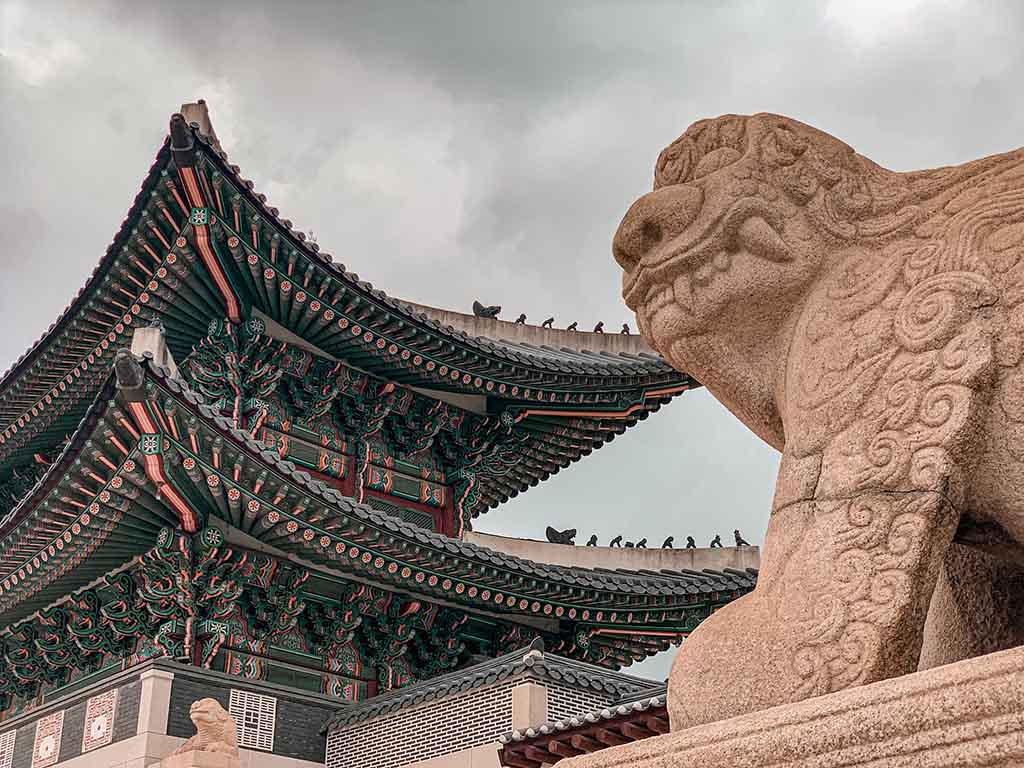
Gyeongbokgung Palace (main palace) is the largest out of the five palaces in Seoul.
Nearest subway station: Gyeongbokgung Station (subway line 3) exit 5
Note: Palaces and other cultural sites offer free admission if you’re wearing a traditional Hanbok.
Changdeokgung Palace

The well-preserved palace served as the favorite residence of many kings during the Joseon dynasty. It’s made for recreational use of the royal figures—housing a Huwon or Secret garden that features the natural beauty of Korean gardens back in the old days. I was completely enamored with the architecture, details, and elegance of this place.
Nearest subway station : Jongno 3-ga station, (Line 1, 3 or 5, exit 6)
Dongdaemun Design Plaza

DDP is an epitome of future architecture. The great landmark reveals itself in the heart of Dongdaemun.
Nearest subway station : Seoul Subway Line 2, 4, 5, Exit 1
N Seoul Tower

It is considered as the second-highest point in Seoul where tourists can enjoy a stunning view of the Seoul skyline. And not to forget the Namsan Park (perfect for people who want to unwind.)
Nearest subway station : Myeongdong Station (Seoul Subway Line 4), Exit 3
READ MORE: ALL YOU NEED TO KNOW BEFORE YOU VISIT THE N SEOUL TOWER (NAMSAN TOWER)
Nami Island
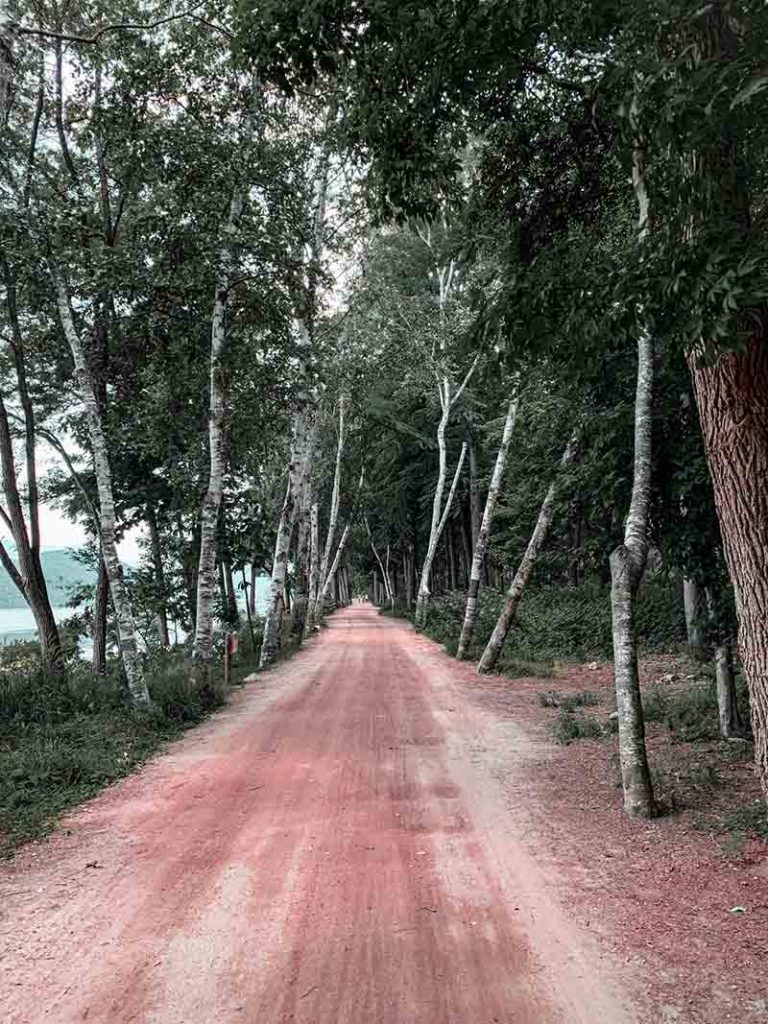
Nami Island (Namiseom) is well-known for its enchanting features that will surely comfort your wanderlust.
Read more: Nami Island (Naminara Republic) Travel Guide
Petite France

Petite France is a French culture village (theme park) that will let you experience Europe while in the countryside of South Korea. Visit The Little Prince inspired village when you’re in Chuncheon and Gangwon Province, or when you’re visiting the Nami Island.
READ MORE: PETITE FRANCE IN KOREA TRAVEL GUIDE
Other Attractions
Han river park.
When visiting the Hanggang (Han River), choose the nearest park around your location. There are 11 parks that you can choose from, but the famous one is the Yeouido park. For us, we went to Ttukseom park before visiting the Namsan Seoul Tower.
Nearest subway station : Yeouido Station (Seoul Subway Line 5), Exit 3
Seoul Grand Park

Visit Gyeonggi-do and have fun with the Seoul Skylift and Seoul Zoo.
Nearest subway station : Seoul Grand Park Station (subway line 4) exit 2
READ MORE: SEOUL GRANDPARK: ECOLOGICAL PARK IN GWACHEON CITY, GYEONGGI-DO
Ewha University
Walk around the campus of a famous women’s university and discover unique coffee shops nearby.
Nearest subway station : Ewha Women University Station Subway Line 2, exit 3
Running Man Thematic Experience
Let’s rejoice, Running Man fans! This place is for you to enjoy a Running Man experience. Let’s hope they’ll have a surprise visit during your travel.
Nearest subway station : Jonggak Station (Line 1), Exit 3
Insadong – Perfect for traditional souvenirs, arts, and cheap art pieces.
Myeongdong – Shop til you drop in Myeongdong shopping street.
Dongdaemun and Namdaemun – Wholesales, retails, and many products at an affordable price.
Seoul Itinerary
There is no definite way to explore the city. Seoul is widely stretched-out, so it’s better to plan your Seoul itinerary by district or neighborhood. It’s better to maximize your time by choosing a location with many nearby attractions.
Disclaimer: Ours was so jam-packed (we wanted to make the most out of our trip) and involves LOTS of walking (we love lengthy walks too!)
Tweak and use the alternative activities and itinerary below and match it with your preference or travel style.
Day 1: Han River and Seoul City Skyline
Alternative activity: Itaewon District
Day 2: Seoul Day Trips and Urban Seoul
Alternative Itinerary:
Day 3: Culture, History, and Shopping
Alternative Activity: Bukchon Hanok Village, Gwanghwamun Plaza
We used our Discover Seoul Pass (48 H) for days four and five. We planned to visit museums, Yeouido, and the Gangnam area initially, but we went back to Hongdae earlier because of unforeseen circumstances. Luckily, the Stranger Things Pop-up in Hongdae opened that day and we went there instead. We had a memorable experience and explored the streets of Hongdae til past midnight.

Day 4: Museums and Recreational Experience
Alternative Activities: Seoul Forest, Starfield Library, SM Coex Museum, Yeouido Park, 63 Building
Day 5: Recreational and Nightlife
Alternative Activities: Seoul Forest and Seoul bike, Gangnam, COEX Aquarium, 63 Building, Lotte World, Everland
Day 6: Last Day
Summary of expenses.
We traveled as a group (6) giving us an edge to spend less on our Airbnb, food, and tickets. This summary applies if you’ll follow our itinerary and travel style. This is just to give you an idea of how to budget your money.
*Not included: Flight ticket, food, and pocket money
Airbnb (6 days)–₱3,200 ($65)
Klook & Discover Seoul pass–₱3,795 ($78)
- Daytrip to Nami Island and Petite France–₱1, 293
- Namsan Seoul Tower–₱241
- Hanbok Experience–₱328
- Discover Seoul Pass–₱1,933
Secret Garden (Huwon) – Young adults (ages 19-24) ₩5,000 (₱220/$5)
T-money (recharge)–approximately ₩30,000 (₱1,320/$28)
TOTAL : ₱8,535 ($175)
*₩60,000 is my maximum budget per day, BUT it’s way too much for me.
Last Reminders
- Try to limit your food expenses by eating street foods and eating like a local. We only spend money on food thrice to experience Korean cuisines, but overall, we rely on hawkers, small local restaurants, and convenience store goodies.
- Bring an adapter. South Korea has Type C and F power plugs and sockets with 220 V standard voltage.
- It’s better to visit the attractions close to each other. The urban city is so large, and you’ll spend more time traveling from one place to another instead of enjoying the locations if not planned accordingly.
- Take advantage of Seoul’s walkability. Explore the streets and night markets.
- Interact with the locals and ask them for recommendations.
- Be a responsible traveler and respect their culture. Be aware of their customs and avoid taboos.
- Make the most out of your trip! Treat yourself with a memorable experience and enjoy South Korea.
- Don’t forget to cross-check the information to their official websites.
There’s no perfect way to visit South Korea. This Seoul itinerary and travel guide have in-depth general information regarding Seoul to help you plan that suits your style.
Are you planning your trip to Seoul, South Korea? I hope this will answer your questions and eliminates your concerns. If you have any suggestions or things I missed including here, comment below. I look forward to your travel stories soon!
Enjoyed reading? Subscribe to my newsletter for updates and more travel content. See you in my next post about Seoul!
Email address
RELATED ARTICLES:
Jongno district.
DISTRICTS OF SEOUL: JONGNO-GU AS THE HEART OF SEOU L MUST-VISIT CULTURAL LANDMARKS IN JONGNO-GU (PART 2) MUST-VISIT SITES AND POINTS OF INTERESTS IN JONGNO-GU (PART 3) 11 BEST THINGS TO DO IN JONGNO-GU, SEOUL, SOUTH KOREA
JUNG DISTRICT
DISTRICTS OF SEOUL: JUNG DISTRICT (MYEONGDONG) IN CENTRAL SEOUL ALL THINGS YOU NEED TO KNOW BEFORE YOU VISIT THE N SEOUL TOWER
55 responses to “5 Days South Korea: Complete Travel Guide & Seoul Itinerary”
Love your post as always! This especially hits close to home because you were one of my travel buddies during this trip. Reading this immediately made me reminiscent of our beautiful trip! See you in the next. 🙂
Thank you, Mae! Let’s travel again soon 🙂
So much detail in here, looks like 4 plus days is a good idea so you can do day trips too?
totally! although you can also do it in 3 days if that’s the only time you got 🙂
Love this insightful and detailed post. South Korea is high on my list. I am slowly ticking off the countries within Asia, having travelled Thailand, Japan and Bali, next is South Korea. I will definitely be returning to this great guide. Especially love the itinerary.
Same here! altho you’ve been to many places than me (I’m planning to go to Bali or Japan next). If you want more places to cover in South Korea, hit me up and I’ll be glad to help! 🙂 Or you could follow the next post, I’ll be writing about it too 😊
Thanks for sharing such a detailed plan. It gives me an idea of how much ground could be covered in the amount of time I have.
Thank you, Beth! so glad I could help
Oh my goodness! What a fabulous, in-depth guide to Seoul. This will definitely be useful when we go! I can’t believe how cheap your Airbnb was!? Spending $175 for 5 days even as a group of 6 is just UNREAL. I need to go!!! Oh, and maybe find some friends 😂
We can’t believe it either! It’s a jackpot for us 😂 Can’t wait to hear your travel story soon! Oh by the way, we can be friends!! 😊
I loved South Korea! It was seriously such a fun country to visit. I loved visiting the different palaces, especially Gyeongbokgung Palace. The Cheonggyecheon Stream was a fun place to take a stroll as well. Myeondong was the best for food!
I agree! We spent our night walking alongside the Cheonggyecheon Stream and it’s one of the highlights of our trip.
Wow, what a detailed guide to Seoul and South Korea. I’ve been fascinated by SK since the olympics! I’d love to see Dongdaemun plaza – incredible architecture!
I love how detailed this post is. I remembered our Korea trip and I seriously got goosebumps. while reading this post, I felt a lot of emotions starting with frustration to sadness and joy. I felt quite frustrated because I want to go to Korea right now do this all over again. reminiscing our Korea trip gave me another chills with how fun it was and I remember it so vividly with your post!!! MORE PLEASEEE
Great guide, very detailed. I see you spent a lot of time and thank you for that!
That’s a comprehensive guide to south korea..covers pretty much all the required info is here. Thanks for sharing
I love that you included the ‘How long should you stay’ section. I’ve been to Seoul twice. The first time, I stayed only for a week. I discovered mostly places within the city and went on a day trip to the DMZ. It was great. The next time, I stayed in Seoul for a month and I cried when I had to leave. I stayed there to study the language and have the living experience and I couldn’t recommend it more. I totally enjoyed becoming a ‘regular customer’ at certain markets and convenience stores and then cooking for my landlord in a small communal kitchen. I also got to go on a weekend trip to Osaka and Jeju-do during that time. I’d really wish to recreate this experience!
Wow! I hope I could stay that long too. We only had 6 days and sobbed when we had to go back. Maybe for my next visit, I could try the living experience and travel to Jeju-do. Thanks for sharing your travel story and inspiring me. Also for igniting my wanderlust!
Super comprehensive, this is a great Seoul itinerary and travel guide even for second and third time visitors! There’s so much to see there, and I would love to go back to check out some of your recommendations.
Thank you for such an extensive post on Seoul. You cover pretty much everything someone needs to know, and more, like Seoul having fast WiFi – that is something everyone wants and needs nowadays.
I love all the info you gave! I really want to visit South Korea and Seoul one day and you gave me a great taste of it!
This is so detailed and comprehensive, I especially love the basic Hangul phrases! Definitely keeping this handy for my next trip to Seoul 🙂 Thanks for sharing this!
That’s a detailed article on South Korea. I haven’t been there, but this post will be my go to guide when I travel. Pinning it for my future use.
thank you, Anuradha! Looking forward to your travel story and safe travels!
South Korea has always been on the list for me, so I am definitely pinning this one 🙂 Special thanks for basic phrases, that will be useful for sure.
[…] you haven’t read my article about the complete travel guide and Seoul itinerary, click […]
Thanks for this super comprehensive guide! I have always wanted to visit Korea, but wasn’t sure what there really was to do in Seoul. This has me itching to visit when we are able to travel again 🙂
Thanks for dropping by, Kelly! Can’t wait to hear your travel stories soon 🙂
I’m almost ashamed to say I haven’t been to Asia yet, but I definitely want to travel there! Seoul is definitely on my list and this post was extremely helpful. I’ll come back here once we can travel again!
What a very detailed comprehensive guide. Loved it! Pinned it so as to not forget this. The idea of going to Korea has been growing on me. This gives it an extra nudge.
Very thorough details of visiting Seoul, hoping to go there in March 2021, will be leaning on this post
Wow, what an extensive post. I’ve always wanted to visited S. Korea and Japan at the same time. Your guide is so detailed, I love it! Thanks so much. I’m going to pin it for future reference.
I have always wanted to visit Seoul. Slowly making my way across Asia. I love how you included some helpful phrases. It’s always polite to attempt the language wherever you are. Great post. Pinning so I have this for when I visit.
What an excellent and comprehensive guide on visiting Seoul! I’ve always wanted to visit and even more so now. Although I’d want to see all areas of the city, I think I’d enjoy the old parts more as I’m fascinated with history and how things used to be. So many helpful tips that I’ll be sure to use when I get the chance to go one day!
I bet you’ll love it there, Vanessa! I hope you get to travel to Seoul soon 🙂
I’ve never been to Korea but it’s on my travel bucket list! :] It looks like you managed to squeeze in a lot! Will be saving this for when I plan my itinerary in the future!
Thank you, Farrah! 🙂
This is such a great, well organized guide!
Korea was an incredible trip and I didn’t think I would love it as much as I did. Reding this made me want to travel there again.
Great guide! I love your detail, and that you included some basic phrases!
Love this user-friendly guide to visiting South Korea for the first time! I hope to visit this amazing country one day!
Thank you, Lisa! I hope you get to see Seoul soon 🙂
I hope I can travel to South Korea one day! This country looks fascinating and I am sure Seoul is really awesome!
Seoul has been so high on my list for a very long time! This guide is very comprehensive and helpful. Definitely pinning for when I’m able to visit!
Thanks for dropping by, Devin! 🙂
This is super detailed! I love how you covered everything. This makes me wanna go back to Seoul!
Thank you, Karla! I hope we both could visit Seoul again 🙂
I love this post. It felt like a mini tour of Seoul just reading it and makes me want to go so badly! Thank you for sharing
Love all the detail in this post! Especially love that you shared the prices so we can have an idea of the budget needed to travel!
I like how much information you managed to compile in this post. It’s great that you even added basic hangul phrases, too. Thanks for sharing!
South Korea literally fascinates me as an outsider. I’m ready for the culture shock that I’m about to experience!
One of my friends has moved to South Korea to work as an English teacher and she loves it! I’m hopefully going to be planning at trip to visit her in the next year or so, and your post will really come in handy for when I visit Seoul!
South Korea has been on our “post covid” travel list and this post is SUCH a great resource with tons of details. Thank you for breaking down the trip by day and giving an idea of how much you can cover based on the days we plan on spending in the city.
I know this post is a few years old, but still incredibly helpful! Thank you so much for taking us through many options, I plan to visit for the first time next Autumn!
Hi, Tara! I’m glad you find this blog helpful. I am planning to update some information later on. Hope you get to enjoy Korea in autumn and I look forward to your travel stories as well! 🙂
Leave a Reply Cancel reply
Your email address will not be published. Required fields are marked *
Save my name, email, and website in this browser for the next time I comment.
- Destinations
- Travel Packing
- Travel Tips
- Uncategorised
- February 2021
- January 2021
- December 2020
- November 2020
- October 2020
- September 2020
- August 2020
Sign up for our newsletter
Popular posts.
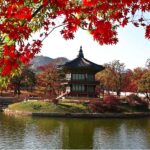
Featured Articles
This is itaewon: culture, attractions, and things to do (seoul), 06 feb 2021, 15 amazing things to do in myeongdong and jung-gu, seoul (day and night), 19 dec 2020, all you need to know before you visit the n seoul tower (namsan tower), 14 nov 2020, districts of seoul: jung district (myeongdong) in central seoul, 07 nov 2020.

Error: API requests are being delayed for this account. New posts will not be retrieved.
Log in as an administrator and view the Instagram Feed settings page for more details.

The Low Maintenance Traveler is a site dedicated to share simple, wise, and experience-focused travel content for aspiring travelers.
- Privacy & Cookie Policy
- Terms and Conditions
© Copyright 2020 - The Low Maintenance Traveler
Developed and designed by Cseline Dela Rosa
672 Wine Club
- Motorcycles
- Car of the Month
- Destinations
- Men’s Fashion
- Watch Collector
- Art & Collectibles
- Vacation Homes
- Celebrity Homes
- New Construction
- Home Design
- Electronics
- Fine Dining
- Benchmark Wines
- Brian Fox Art
- Chase United
- Disneyland Resort
- Gateway Bronco
- Royal Salute
- Sports & Leisure
- Health & Wellness
- Best of the Best
- The Ultimate Gift Guide
North Korea Is Reopening Its Doors to Tourists
Visitors will be allowed to travel to the city of samjiyon, while other parts of the country will remain restricted. , abby montanez, abby montanez's most recent stories.
- A Rare First Edition of the ‘Fantastic Four’ Comic Could Set a New Auction Record
- Wealthy Floridians Are Buying Up All of N.Y.C.’s Luxury Homes, a New Report Says
- Comedian Buddy Hackett’s Former Beverly Hills Home Hits the Market for $18 Million
- Share This Article

North Korea is slowly beginning to reopen its borders.
Related Stories
Six senses are suddenly everywhere. inside the luxury resort’s growing global empire..
- 7 Hotels Where You Can Set Sail on a Private Yacht
Ask Robb: What the Hell Is Happening to First-Class Seats?
Separately, Shenyang’s KTG Tours announced the news in a post on its Facebook page . “So far just Samjiyon has been officially confirmed but we think that Pyongyang and other places will open too!!!”
Interested travelers will have to stay tuned for itinerary dates, which will reportedly be released in the coming weeks. Samjiyon is located in North Korea’s Ryanggang Province, positioned near Mount Paektu—the highest peak on the Korean peninsula. The resort town gets its name from the three lakes in the area and is home to Samjiyon Grand Monument. In addition, it hosts an annual ice sculpture festival every winter.
Abigail Montanez is a staff writer at Robb Report. She has worked in both print and digital publishing for over half a decade, covering everything from real estate, entertainment, dining, travel to…
Read More On:
More destinations.

Utah’s Powder Mountain Will Soon Double as a Skiable Outdoor Art Museum

Remote Lands and Aman Unveil New Private-Jet Trips Around the Globe, From Morocco to Bhutan

Meet the Wine Club That Thinks Differently.
Receive editor-curated reds from boutique California producers four times a year.
Give the Gift of Luxury
Latest Galleries in Destinations

7 Super-Luxe Trips for the Traveler Who Has Seen Everything

Orient Express La Dolce Vita Train in Photos
More from our brands, what was kamala harris trying to relay with her chloé designer suit at the dnc, diamond sports group reaches deals with nba, nhl, chappell roan blasts stalkers and entitled fans for harassment: ‘i’m allowed to say no to creepy behavior’, christie’s first sale at new asia headquarters led by $35 m. monet, the best yoga mats for any practice, according to instructors.
North Korea to restart international tourism in December. Should you go?
North Korea will resume international tourism to its northeastern city of Samjiyon in December, and possibly the rest of the country, tour companies said.
The move is a sign that the reclusive country is preparing to reopen borders to bigger groups of foreign tourists after years of strict COVID-19 border controls.
"We have received confirmation from our local partner that tourism to Samjiyon and likely the rest of the country will officially resume in December 2024," the Beijing-based Koryo Tours said on its website.
International flights in and out of North Korea resumed last year and a small group of Russian tourists flew to North Korea for a private tour in February. Top foreign officials, including Russian President Vladimir Putin in June, have been visiting the country.
But North Korea has not been fully open to international tourists since 2020.
"Having waited for over four years to make this announcement, Koryo Tours is very excited for the opening of North Korean tourism once again," the firm said, adding its local partner would confirm itineraries and dates in coming weeks.
The State Department still has a Level 4 "do not travel" advisory for U.S. citizens considering a visit to North Korea, saying there is a "serious risk of arrest and long-term detention of U.S. nationals."
North Korea has been building what it called a "socialist utopia" in Samjiyon, a city near the Chinese border, and "a model of highly civilized mountain city" with new apartments, hotels, a ski resort and commercial, cultural and medical facilities.
Leader Kim Jong Un in July fired or demoted some senior officials for their "irresponsible" handling of his flagship Samjiyon project.
Another travel agency, KTG Tours, also announced that tourists would be able to go to Samjiyon this winter.
Contributing: Zach Wichter
North Korea to begin admitting foreign tourists (again)
For the first time in five years, the isolated dictatorship is inviting large groups to visit the city of Samjiyon — and possibly beyond
- Newsletter sign up Newsletter
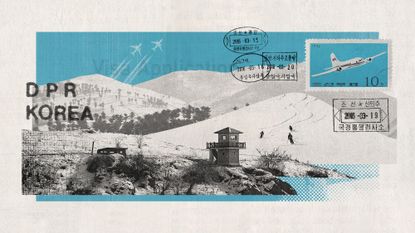
Disney World? A Viking cruise down the Danube? A drive from coast to coast with stops at every roadside attraction? When getting out of the house and going on vacation, the options are virtually limitless. Virtually, but not absolutely — particularly for adventurous travelers interested in visiting one of the most isolated countries on Earth, North Korea. The country closed its borders entirely five years ago during the onset of the Covid-19 pandemic.
That may be about to change.
For the first time in half a decade, the avowedly communist enclave is preparing to welcome tourist groups back into parts of the country as early as this coming December, according to China-based tour operators Koryo Tours. "We have received confirmation from our local partner that tourism to Samjiyon and potentially the rest of the country will officially resume in December 2024," the group said in a press release . Described as "the most famous region in North Korea in the winter for tourism," Samjiyon is "the most significant and sacred place" for the entire Korean peninsula, Koryo said. The agency predicts it will have a "finalized itinerary for the area and more information as well as dates and prices in the coming days and weeks."
Subscribe to The Week
Escape your echo chamber. Get the facts behind the news, plus analysis from multiple perspectives.

Sign up for The Week's Free Newsletters
From our morning news briefing to a weekly Good News Newsletter, get the best of The Week delivered directly to your inbox.
As the infamously secretive and insular North Korea begins once again accepting foreigners into its midst, what does this mean for the region — and the world?
'Not a full reopening'
The decision to make Samjiyon the first spot open to foreign tourism is "significant" Semafor said. The tourism-associated area has been a popular destination for Chinese visitors coming across the two countries' shared border in the past, helping North Korea generate "vital revenue amid international sanctions."
North Korea has dubbed Samjiyon its "'model of a highly-civilized mountain city' with new apartments, hotels, a ski resort and commercial, cultural and medical facilities," Reuters said. Earlier this summer, North Korean leader Kim Jong Un reprimanded a group of senior officials overseeing construction in the region for their "irresponsibility," declaring the city would become an "oasis of our people and the world people and make tourism a major driving force of regional development" while he personally inspected the project, The Korea Times said.
This winter's planned tourism opportunity is "not a full reopening of the country back to what it was, or more than what it was," Koryo Tours' Simon Cockerell cautioned during a podcast taping at The Independent . "It's a specific opening of one, relatively obscure-up-till-now area."
Moreover, this coming December will not be the first opportunity for tour groups to enter the country since the Covid lockdown. Last year, "small tour groups from Russia" were granted entry to North Korea "amid Kim's deepening partnership with Russian strongman Vladimir Putin," CNN said. That exchange is more "associated with the North Korean support for the Russian war effort," said Cockerell. Just this month, Russia sent North Korea more than 400 goats as part of a "wide-ranging deal covering sectors including education, agriculture and tourism," Politico said.
'We can only have peace when this travel ban is lifted'
For as much as North Korea's impending tourism opening may seem like the sort of opportunity an adventurous traveler should jump on, do not expect to be able to hop on a flight to Pyongyang just yet. It will likely be "only Russian tourists and possibly Chinese visiting in any real numbers at first" if North Korea does not offer "direct Samjiyon flights to a neutral connection country like Mongolia," Chad O'Carroll, CEO of US-based analysis firm Korea Risk Group, said at BBC . Even if such countries do, American passport holders are banned from visiting the communist country: The U.S. State Department announced the renewal of its prohibition on travel "to, in or through the Democratic People's Republic of Korea" earlier this month.
"We can only have peace when this travel ban is lifted," Cathi Choi, co-director of Women Cross DMZ, said at The Hill . "In addition to divided family members, everyday people in North Korea, South Korea and the United States will all suffer from these consequences."
Allowing tourism "can only bring positives," said Cockerell. "The cure for isolation is not more isolation."
Sign up for Today's Best Articles in your inbox
A free daily email with the biggest news stories of the day – and the best features from TheWeek.com
Rafi Schwartz has worked as a politics writer at The Week since 2022, where he covers elections, Congress and the White House. He was previously a contributing writer with Mic focusing largely on politics, a senior writer with Splinter News, a staff writer for Fusion's news lab, and the managing editor of Heeb Magazine, a Jewish life and culture publication. Rafi's work has appeared in Rolling Stone, GOOD and The Forward, among others.

Cartoons Artists take on campaign contrasts, Biden's popularity, and more
By The Week US Published 24 August 24
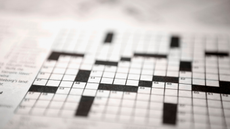
The Week's daily crossword puzzle
By The Week Staff Published 24 August 24
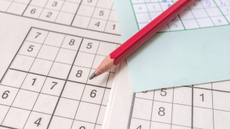
The Week's daily hard sudoku puzzle

Instant Opinion Opinion, comment and editorials of the day
By Justin Klawans, The Week US Published 23 August 24
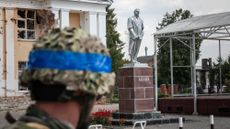
By Justin Klawans, The Week US Published 22 August 24

By Justin Klawans, The Week US Published 21 August 24

Today's Big Question She's been slow to release concrete policy platforms, but there are plenty of hints as to what a potential Harris administration would look like
By Rafi Schwartz, The Week US Published 21 August 24

In the Spotlight A recent study shows that celebrities may have more of a tangible impact on elections than you realize

By Justin Klawans, The Week US Published 20 August 24
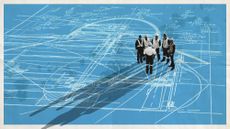
Under the Radar Reports indicate that China's shipbuilding capacity is over 200 times that of the US
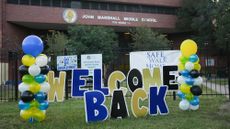
By Justin Klawans, The Week US Published 19 August 24
- Contact Future's experts
- Terms and Conditions
- Privacy Policy
- Cookie Policy
- Advertise With Us
The Week is part of Future plc, an international media group and leading digital publisher. Visit our corporate site . © Future US, Inc. Full 7th Floor, 130 West 42nd Street, New York, NY 10036.

COMMENTS
Day-by-Day trip itinerary guide that covers all key details for first timers (& busy travellers) to Seoul. Include stay recommendations, airport to city, transport guides to attractions, shopping and best restaurants. Have an easy, stress-free and memorable holiday in Korea.
So in true DIY spirit, here are some route examples for a 2 weeks in Korea itinerary or less, for each of the following lengths. South Korea Itinerary 14 Days. Seoul (Days 1-4) Jeju (Days 5-7) Busan (Days 8-9) Suncheon area (Days 10-12) Jeonju (Days 13-14) See below for more information on each city. South Korea Itinerary 10 Days. Seoul (Days 1 ...
Squeeze in an extra day in Seoul for a tension-filled day trip to the DMZ at Panmunjon on South Korea's border with North Korea. Craving more urban South Korea? Add in couple days to your itinerary to spend some time in Korea's third largest city, Daegu. Daegu is home to the country's most famous traditional medicine market.
Itinerary 1: Classic South Korea. This 10-day itinerary is excellent for a first visit to South Korea. It covers the must-see attractions in Seoul, Busan, Gyeongju, and Jeju Island, as well as a variety of authentic activities to enrich your trip. 3 nights in Seoul.
Day 1: Arrive in South Korea. Day 2: Gorgeous Gyeongju. Day 3: Visit Bulguksa and Seokguram Grotto. Day 4: Explore Hongdae, Seoul's Most Vibrant Neighborhood. Day 5: Historic Seoul. Day 6: Cultural Seoul (and Market Madness) Day 7: Gangnam Style. Day 8 and 9: Stunning Seoraksan National Park.
South Korea Itinerary: Seoul - 4 Days. Below are the most important tourist attractions in Seoul, the ones I recommend visiting. From breathtaking panoramic views, shopping opportunities, history and culture, this itinerary covers it all. Take A Trip To The North Korean Border
Here we share our South Korea itinerary overview. If you don't have time to read through the full 7-day Korea itinerary, use this overview to get an idea of the things to do each day and save it for later. Day 1-2 Seoul: Palaces, Insadong, traditional Hanok houses, Gwangjang market, Myeongdong, DMZ.
Other F.A.Q. Seoul Itinerary Guide. DAY 1: Explore and enjoy Korean culture in a hanbok! DAY 2: "Discover" more of Seoul! DAY 3: A chill kind of day. DAY 4: All About JSA. DAY 5: Day tour to Gapyeong County. Explore other TOP destinations in South Korea.
How to Get to Beopjusa Temple, Mount Songnisan. South Korea itinerary. It is easy to get to Beopjusa Temple from Seoul. Simply take the bus to Songnisan from Seoul bus station and get off at the last stop. The temple is situated within Songnisan National Park, approximately a 20 minute walk away from the bus terminal.
South Korea itinerary for one week. Your one-week journey begins in Seoul, the bustling capital city where tradition meets modernity. Visit hip neighborhoods like Hongdae or Gangnam, and savor mouthwatering Korean BBQ at local eateries. The second half of your week could include a day trip to Gyeongju - often referred as "the museum without ...
Option 1: 3 days in Seoul & 2 days in Busan. The first option for your South Korea 5-day itinerary will explore the country's major cities. Seoul and Busan are South Korea's most important towns, offering plenty of tourist attractions to easily fill up your 5 days. Even though one is set in the north of the peninsula, while the other is at ...
Haedong Yonggungsa Temple. Take the Blue Train or Sky Capsule from Cheongsapo Station (청사포정거장) Haeundae Beach. Gwangalli Beach. Day 6 - Gangnam (Lotte World) Day 7: day trip outside of Seoul (DMZ, Suwon, etc) Other things to know when planning for one week in South Korea.
South Korea itinerary 14 days: Best Travel Route Is 2 weeks in South Korea enough? Yes! 2 weeks in South Korea is the perfect amount of time to see the best places to visit in the country. We've created our 2 week South Korea itinerary at a good pace, so you don't have to rush around every 2 days. We wanted to minimize our flights at the ...
The Ultimate 10 day South Korea itinerary: Seoul, Jeju, Busan. Helena Bradbury March 1, 2024. I initially thought that a 10 day South Korea itinerary would be plenty of time. But before our trip was finished, I was already planning return trips in the spring and summer to see the cherry blossom in Korea and experience the hiking trails and ...
Quick Korea Travel Guide. Getting in: Assuming you're flying into Incheon, expect it to take around an hour to get to where you're staying in Seoul. DON'T spend a ton of money on a taxi! The subway is very user-friendly and easy to use. If you do need a private transfer, just book ahead. Stay in Touch: Korea has the best thing ever - eSIMs!No need to worry about losing your physical ...
Explore South Korea's cultural highlights and natural wonders on this 10-day itinerary. The adventure begins in Seoul, where you'll explore the urban culture and street food scene. Visit the Korean Demilitarized Zone (DMZ) next before continuing to historic temples in Andong. Discover the beautiful coastline of Busan, then fly to Jeju Island to marvel at the spectacular scenery and take in ...
The cost of a 7-day trip to South Korea can vary depending on your travel style and preferences. On average, you can spend around $1,500-$2,000 for a budget trip, $2,500-$3,500 for a mid-range trip, and $5,000 or more for a luxury trip. This includes accommodation, food, transportation, and activities.
Day 3: Everland or Lotte World Seoul. Day 4: Day Trip to Nami Island - Full Day. Day 5: Explore Beyond Seoul - Full Day. Day 6: Bukchon Hanok Village, Insadong, and Dongdaemun. Day 7: Deoksugung Seoul, Gwangjang Market and Cheonggyecheon Stream. Seoul Itinerary 7 Days Map. The Best Area to Stay in Seoul.
5 days in Iceland: The Best Winter in Iceland Itinerary. 25+ Best South Korea Travel Tips: What to Know. Incredible 10 Day South Coast Sri Lanka Itinerary. Ultimate 2 week Japan Itinerary (2024) The Best Places. The Best 3 Week Backpacking Route in Europe - using Interrail! Top 25 Best Things to do in Vancouver, Canada
Getting from Seoul airports to the city. Budget for 2 weeks in South Korea. 2 week South Korea itinerary overview. Days 1-5: Seoul. How to get around Seoul. Day 1 - Bukchon Hanok Village OR Bukhansan National Park. Day 2 - Ihwa Mural Village, Gwangjang Market, Insa-dong & Myeongdong. Day 3 - DMZ day trip. Day 4 - museum & culture day.
Transportation: South Korea has a great public transit system, including buses and subways. For ten days, plan to spend around $100 to $150 on transportation within cities and for traveling to different locations. The KTX train from Seoul to Busan costs $60 to $80 one way, or $120 to $160 for a round trip.
In this travel guide, we'll help you map out an unforgettable trip to South Korea in just 7 days. We'll provide you with a detailed itinerary, so you can explore the best of South Korea while staying within your budget and schedule. From exploring vibrant markets to enjoying delicious Korean cuisine, we've got your travel plans covered.
Table of Contents. Day 1 - Seoul City Center. Day 2 - Southern Seoul & Gangnam. Day 3 - DMZ Tour. Day 4 - Excursions From Seoul / Seoul's Neighborhoods. Day 5 - Busan. Day 6 - Busan Outskirts. Day 7 - Gyeongju. Getting to Seoul From Incheon International Airport.
Korea 10 days itinerary. In just ten days it's possible to see many of South Korea's best bits, concentrating on the two main metropolitan cities of Seoul and Busan. In addition to the shopping hubs of Seoul and the seafood markets of Busan however, this South Korea travel itinerary will take you to the historic villages of Jeonju and ...
Namsan Seoul Tower-₱241 ($5) Hanbok Experience -₱328 ($7) Discover Seoul Pass -₱1,933 ($39) Note: Activate your Discover Seoul Pass on Wednesday onwards (preferably) because many attractions are closed on Mondays and Tuesdays. Don't forget to cross-check the schedules with their official websites.
After you get your travel must-haves booked and ready, now's the time to discover Seoul. This five-day itinerary is made to explore Seoul's best attractions, must-try restaurants, and must-see spots! Day 1: Historical Korea. Start your trip by taking in Korea's culture and traditions! Check out these cultural sites in Seoul. Morning
North Korea will partially reopen its borders to international visitors in December 2024 following five years ... Interested travelers will have to stay tuned for itinerary dates, which will ...
Most travelers will never go to North Korea. But by traveling to Seoul and meeting the defectors who have built new lives in the South Korean capital, it's possible to learn about the "hermit ...
The State Department still has a Level 4 "do not travel" advisory for U.S. citizens considering a visit to North Korea, saying there is a "serious risk of arrest and long-term detention of U.S ...
North Korea has dubbed Samjiyon its "'model of a highly-civilized mountain city' with new apartments, hotels, a ski resort and commercial, cultural and medical facilities," Reuters said. Earlier ...